meta-analysis
description: statistical method that summarizes data from multiple sources
479 results
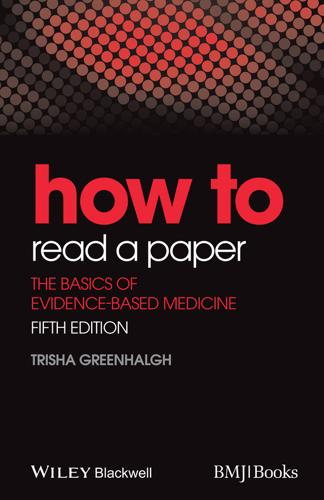
How to Read a Paper: The Basics of Evidence-Based Medicine
by
Trisha Greenhalgh
Published 18 Nov 2010
Dean Fergusson and colleagues of the Ottawa Health Research Institute published a cumulative meta-analysis of all randomised controlled trials carried out on the drug aprotinin in peri-operative bleeding during cardiac surgery [16]. They lined up the trials in the order they had been published, and worked out what a meta-analysis of ‘all trials done so far’ would have shown (had it been performed at the time). The resulting cumulative meta-analysis had shocking news for the research communities. The beneficial effect of aprotinin reached statistical significance after only 12 trials—that is, back in 1992. But because nobody did a meta-analysis at the time, a further 52 clinical trials were undertaken (and more may be ongoing).
…
A trial may be of high methodological quality and have a precise and numerically impressive result, but it may, for example, have been conducted on participants under the age of 60, and hence may not apply at all to people over 75 for good physiological reasons. The inclusion in systematic reviews of irrelevant studies is guaranteed to lead to absurdities and reduce the credibility of secondary research. Meta-analysis for the non-statistician If I had to pick one term that exemplifies the fear and loathing felt by so many students, clinicians and consumers towards EBM, that word would be ‘meta-analysis’. The meta-analysis, defined as a statistical synthesis of the numerical results of several trials that all addressed the same question, is the statisticians' chance to pull a double whammy on you. First, they frighten you with all the statistical tests in the individual papers, and then they use a whole new battery of tests to produce a new set of odds ratios, confidence intervals and values for significance.
…
As I confessed in Chapter 5, I too tend to go into panic mode at the sight of ratios, square root signs and half-forgotten Greek letters. But before you consign meta-analysis to the set of specialised techniques that you will never understand, remember two things. First, the meta-analyst may wear an anorak but he or she is on your side. A good meta-analysis is often easier for the non-statistician to understand than the stack of primary research papers from which it was derived, for reasons I am about to explain. Second, the underlying statistical principles used for meta-analysis are the same as the ones for any other data analysis—it's just that some of the numbers are bigger.
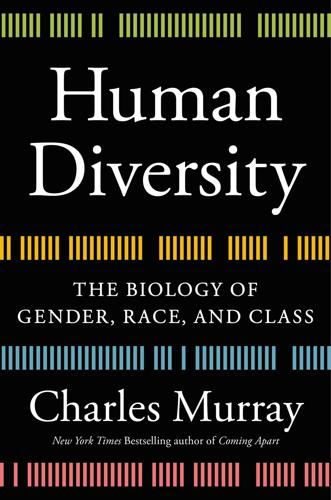
Human Diversity: The Biology of Gender, Race, and Class
by
Charles Murray
Published 28 Jan 2020
The exhaustive analysis of this question, presented alongside a comprehensive review of prior studies, was published in 2009 in the Psychological Bulletin by a team of psychologists at the University of Minnesota (first author was Paul Sackett). The authors presented results for a meta-analysis of College Board data, a meta-analysis of other studies using a composite measure of parental SES, and a reanalysis of major longitudinal datasets. A table summarizing the results is given in the note.[36] Boiling it down: After controlling for the admissions test score, the correlation of parental SES and college grades dropped from +.22 to –.01 in the SAT meta-analysis, from .09 to .00 in the meta-analysis of studies with composite SES measures, and from a mean of .06 to .01 among the longitudinal studies.
…
In “Gender Effects in Decoding Nonverbal Cues,” published in Psychological Bulletin in 1978, Hall reported mean effect sizes favoring females of +0.32 for visual cues, +0.18 for auditory cues, and a large effect of +1.02 for the seven studies that combined visual and auditory cues.47 Six years later, Hall extended her meta-analysis to include nine countries around the world. Subsequent work has yielded similar results.48 In 2014, psychologists Ashley Thompson and Daniel Voyer undertook a new meta-analysis. Hall’s reviews had included studies of accuracy in interpersonal perception of any kind. Thompson and Voyer focused on the ability to detect specific discrete emotions. As in other studies, the results showed a female advantage, but with a smaller effect size that had a lower bound effect size of +0.19 and an upper bound of +0.27.49 The Thompson meta-analysis also corroborated Hall’s findings that effect sizes are substantially increased when the subjects in the studies have access to a combination of visual and audio information—that is, when they could see both face and body language and also hear tone of voice.
…
SEX DIFFERENCES (D) IN VOCATIONAL INTERESTS AND OCCUPATIONS ACROSS DIFFERENT MEASURES AND SAMPLES RIASEC dimension: Realistic Meta-analysis of 503,188 scores on interest inventories: –0.84 Adult scores of SMPY cohorts 1, 2, 3, and 4: –0.92 Ratings of occupations held by Americans ages 25–54: –0.77 RIASEC dimension: Investigative Meta-analysis of 503,188 scores on interest inventories: –0.26 Adult scores of SMPY cohorts 1, 2, 3, and 4: –0.28 Ratings of occupations held by Americans ages 25–54: –0.08 RIASEC dimension: Conventional Meta-analysis of 503,188 scores on interest inventories: +0.33 Adult scores of SMPY cohorts 1, 2, 3, and 4: –0.47 Ratings of occupations held by Americans ages 25–54: +0.27 RIASEC dimension: Enterprising Meta-analysis of 503,188 scores on interest inventories: –0.04 Adult scores of SMPY cohorts 1, 2, 3, and 4: –0.50 Ratings of occupations held by Americans ages 25–54: +0.09 RIASEC dimension: Artistic Meta-analysis of 503,188 scores on interest inventories: +0.35 Adult scores of SMPY cohorts 1, 2, 3, and 4: +1.06 Ratings of occupations held by Americans ages 25–54: +0.22 RIASEC dimension: Social Meta-analysis of 503,188 scores on interest inventories: +0.68 Adult scores of SMPY cohorts 1, 2, 3, and 4: +0.88 Ratings of occupations held by Americans ages 25–54: +0.84 Source: Su, Rounds, and Armstrong (2009); Author’s analysis, combined ACS, 2011–15; Lubinski and Benbow (2006): Table 5.
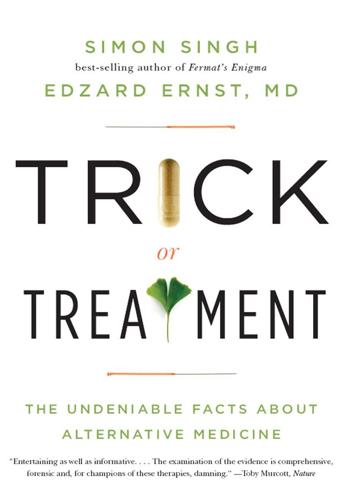
Trick or Treatment: The Undeniable Facts About Alternative Medicine
by
Edzard Ernst
and
Simon Singh
Published 17 Aug 2008
The uncertainty associated with Shang’s estimate on the efficacy of homeopathy was such that his conclusion was wholly compatible with the judgement that homeopathy acted as nothing more than a placebo. In fact, the most sensible interpretation of the meta-analysis was that homeopathy was indeed nothing more than a placebo. This interpretation becomes more convincing if we bear in mind another aspect of his research. While conducting his meta-analysis on homeopathy, he also conducted a meta-analysis for a whole variety of new, conventional pharmaceuticals. These pharmaceuticals had been tested on the same illnesses that had been considered for the homeopathy meta-analysis. In this secondary meta-analysis, Shang scrupulously applied exactly the same selection criteria to these conventional drug trials as he had done in his homeopathy meta-analysis.
…
He and his colleagues decided to examine the considerable body of research into homeopathy in order to develop an over-arching conclusion that took into consideration each and every trial. This is known as a meta-analysis, which means an analysis of various analyses. In other words, each individual trial into homeopathy concluded with an analysis of its own data, and Linde was proposing to pool all these separate analyses in order to generate a new, more reliable, overall result. Meta-analysis can be considered as a particular type of systematic review, a concept that was introduced in the previous chapter. Like a systematic review, a meta-analysis attempts to draw an overall conclusion from several separate trials, except that a meta-analysis tends to involve a more mathematical approach.
…
Indeed, the majority of experiments (three out of five) imply a higher than expected hit rate, so one way to interpret these sets of data would be to conclude that, in general, the experiments support astrology. However, a meta-analysis would come to a different conclusion. The meta-analysis would start by pointing out that the number of attempts made by the astrologer in any one of the experiments was relatively small, and therefore the result of any single experiment could be explained by mere chance. In other words, the result of any one of these experiments is effectively meaningless. Next, the researcher doing the meta-analysis would combine all the data from the individual experiments as though they were part of one giant experiment.
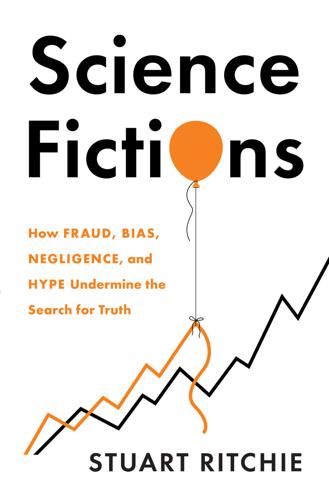
Science Fictions: How Fraud, Bias, Negligence, and Hype Undermine the Search for Truth
by
Stuart Ritchie
Published 20 Jul 2020
The impact a vaccine has on reducing mortality from a disease was the subject of the first ever medical meta-analysis, carried out by the statistician Karl Pearson in 1904 (the disease being typhoid) – though the technique hadn’t yet been named ‘meta-analysis’. Karl Pearson, ‘Report on Certain Enteric Fever Inoculation Statistics’, BMJ 2, no. 2288 (5 Nov. 1904): pp. 1243–46; https://doi.org/10.1136/bmj.2.2288.1243. A useful history and summary of meta-analysis is provided in: Jessica Gurevitch et al., ‘Meta-Analysis and the Science of Research Synthesis’, Nature 555, no. 7695 (Mar. 2018): pp. 175–82; https://doi.org/10.1038/nature25753.
…
Boldt’s faked results made it look as if hydroxyethyl starch was safe for this purpose, a verdict bolstered by the fact that a ‘meta-analysis’ – a review study that pools together all the previous papers on the subject – reached the same conclusion. This was only true, however, because Boldt’s fraud hadn’t yet been revealed; the meta-analysis included his fake results as part of its review. When Boldt’s deception became known, and his papers were excluded from the meta-analysis, the results changed dramatically: patients who’d been given hydroxyethyl starch were, in fact, more likely to die.121 Boldt’s fraud had distorted the entire field of research, endangering patients whose surgeons, perfectly understandably, took the results at face value.122 Among the very worst scientific fraud cases was one that not only misled scientists and doctors, but also had an enormous impact on the public perception of a vitally important medical treatment.
…
Funnel plots from an imaginary meta-analysis, in two different scenarios. In scenario A, the distribution of the thirty studies is about what you’d expect if every study ever done on the topic had been published. In scenario B, the six studies from the bottom-left section (studies with small samples and small effects) are missing – a pattern that might signal publication bias. The vertical line in the middle of each graph is the overall effect size calculated by each meta-analysis. In the case of scenario B, it’s been shifted to the right, meaning that the meta-analysis is coming up with a bigger effect than it should.
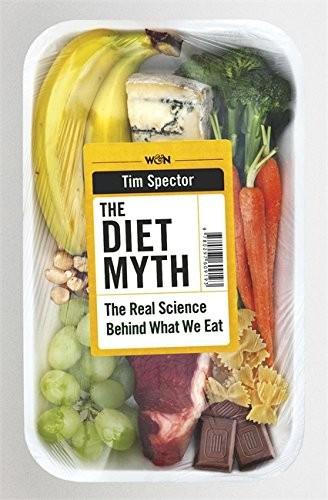
The Diet Myth: The Real Science Behind What We Eat
by
Tim Spector
Published 13 May 2015
v=134aMOQwyhY 4 David, L.A., Nature (23 Jan 2014); 505(7484): 559–63. 5 Teicholz, N., The Big Fat Surprise (Simon & Schuster, 2014) 6 Goldacre, B., BMJ (2014); 349 doi: http://dx.doi.org/10.1136/bmj.g4745. Mass treatment with statins. 7 Harborne, Z., Open Heart (2015); 2: doi:10.1136/openhrt-2014-000196. Evidence from randomised controlled trials did not support the introduction of dietary fat guidelines in 1977 and 1983: a systematic review and meta-analysis. 8 Siri-Tarino, P.W., Am J Clin Nutr (2010); 91: 535–46. Meta-analysis of prospective cohort studies evaluating the association of saturated fat with cardiovascular disease. 9 Hjerpsted, J., Am J Clin Nutr (2011); 94: 1479–84. Cheese intake in large amounts lowers LDL-cholesterol concentrations compared with butter intake of equal fat content. 10 Rice, B.H., Curr Nutr Rep (15 Mar 2014); 3: 130–38.
…
Dietary sugars and body weight: systematic review and meta-analyses of randomised controlled trials and cohort studies. 31 Sievenpiper, J.L., Ann Intern Med (21 Feb 2012); 156: 291–304. Effect of fructose on body weight in controlled feeding trials: a systematic review and meta-analysis. 32 Kelishadi, R., Nutrition (May 2014); 30: 503–10. Association of fructose consumption and components of metabolic syndrome in human studies: a systematic review and meta-analysis. 11 Carbohydrates: Non-sugars 1 Claesson, M.J., Nature (9 Aug 2012); 488(7410): 178–84. Gut microbiota composition correlates with diet and health in the elderly. 2 van Tongeren, S., Appl. Environ.
…
Food neophobia shows heritable variation in humans. 12 Fibre 1 Anderson, J.C., Am J Gastroenterol (Oct 2014); 109(10): 1650–2. Editorial: constipation and colorectal cancer risk: a continuing conundrum. 2 Threapleton, D.E., BMJ (19 Dec 2013); 347: f6879. Dietary fibre intake and risk of cardiovascular disease: systematic review and meta-analysis. 3 Kim, Y., Am J Epidemiol (15 Sep 2014);180(6): 565–73. Dietary fiber intake and total mortality: a meta-analysis of prospective cohort studies. 4 Thies, F., Br J Nutr (Oct 2014); 112 Suppl 2: S19–30. Oats and CVD risk markers: a systematic literature review. 5 Musilova, S., Benef Microbes (Sep 2014); 5(3): 273–83. Beneficial effects of human milk oligosaccharides on gut microbiota. 6 Ukhanova, M., Br J Nutr (28 Jun 2014); 111(12): 2146–52.
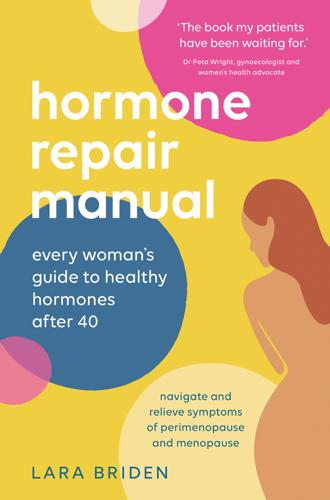
Hormone Repair Manual
by
Lara Briden
Published 14 Apr 2021
.: H Cramer, W Peng & R Lauche, ‘Yoga for menopausal symptoms: a systematic review and meta-analysis’, Maturitas, 109, March 2018, pp13–25. 165: A 2010 meta-analysis concluded . . .: T Shams, MS Setia, R Hemmings et al, ‘Efficacy of black cohosh-containing preparations on menopausal symptoms: a meta-analysis’, Alternative Therapies in Health and Medicine, 16(1), January–February 2010, pp36–44. 165: There were early reports of liver toxicity . . .: B Naser, J Schnitker, MJ Minkin et al, ‘Suspected black cohosh hepatotoxicity: no evidence by meta-analysis of randomized controlled clinical trials for isopropanolic black cohosh extract’, Menopause, 18(4), April 2011, pp366–75. 168: The other mechanism by which progesterone improves sleep . . .: P Schüssler, M Kluge, A Yassouridis et al, ‘Progesterone reduces wakefulness in sleep EEG and has no effect on cognition in healthy postmenopausal women’, Psychoneuroendocrinology, 33(8), September 2008, pp1124–31; A Caufriez, R Leproult, M L’Hermite-Balériaux et al 2011, op. cit. 168: Medicinal cannabis contains cannabidiol . . .: S Shannon, N Lewis, H Lee & S Hughes, ‘Cannabidiol in anxiety and sleep: a large case series’, Permanente Journal, 23, 2019, article 18-041. 170: In a small clinical trial, older adults who took magnesium . . .: B Abbasi, M Kimiagar, K Sadeghniiat et al, ‘The effect of magnesium supplementation on primary insomnia in elderly: a double-blind placebo-controlled clinical trial’, Journal of Research in Medical Sciences, 17(12), December 2012, pp1161–9. 171: As a supplement, it can shorten . . .: W Yamadera, K Inagawa, S Chiba et al, ‘Glycine ingestion improves subjective sleep quality in human volunteers, correlating with polysomnographic changes’, Sleep and Biological Rhythms, 5, July 2016, pp126–31. 171: Glycine promotes sleep by . . .: N Kawai, N Sakai, M Okuro et al, ‘The sleep-promoting and hypothermic effects of glycine are mediated by NMDA receptors in the suprachiasmatic nucleus’, Neuropsychopharmacology, 40(6), May 2015, pp1405–16. 172: According to University of North California neurologist Dr Heidi Roth . . .
…
.: J Sarris, GI Papakostas, O Vitolo et al, ‘S-adenosyl methionine (SAMe) versus escitalopram and placebo in major depression RCT: efficacy and effects of histamine and carnitine as moderators of response’, Journal of Affective Disorders, 164, August 2014, pp76–81. 192: A recent meta-analysis concluded that . . .: YR Liu, YL Jiang, RQ Huang et al, ‘Hypericum perforatum L. preparations for menopause: a meta-analysis of efficacy and safety’, Climacteric, 17(4) August 2014, pp325–35. 193: Supplementation with EPA (eicosapentaenoic acid) . . .: Y Liao, B Xie, H Zhang et al, ‘Efficacy of omega-3 PUFAs in depression: a meta-analysis’, Translational Psychiatry, 9(1), August 2019, article 190. 195: In fact, there’s growing evidence that abdominal weight gain . . .: H Kolb, M Stumvoll, W Kramer et al, ‘Insulin translates unfavourable lifestyle into obesity’, BMC Medicine, 16(1), December 2018, article 232. 196: Estrogen plus progesterone therapy can also help to . . .: I Bitoska, B Krstevska, T Milenkovic et al, ‘Effects of hormone replacement therapy on insulin resistance in postmenopausal diabetic women’, Open Access Macedonian Journal of Medical Sciences, 4(1), March 2016, pp83–8. 197: When you restrict food, even for a relatively short time . . .: R de Cabo & MP Mattson, ‘Effects of intermittent fasting on health, aging, and disease’, New England Journal of Medicine, 381(26), December 2019, pp2541–51. 200: At a high dose, fructose promotes insulin resistance by . . .: C Jang, S Hui, W Lu et al, ‘The small intestine converts dietary fructose into glucose and organic acids’, Cell Metabolism, 27(2), February 2018, pp351–61, article e3. 200: According to Princeton researcher Joshua D.
…
Fish oil According to an authoritative new meta-analysis study, supplementation with EPA (eicosapentaenoic acid) and DHA (docosahexaenoic acid) omega-3 is effective for reducing the risk of coronary heart disease. ‘Whatever patients are getting through the diet,’ said one of the lead authors, ‘they likely need more.’ How it works: Omega-3 helps to lower inflammation, blood pressure and triglcyerides. What else you need to know: I recommend a fish oil supplement that provides at least 720 mg of EPA, which usually equates to 2000 mg of total fish oil. Some of the studies in the meta-analysis used up to 5500 mg of fish oil.
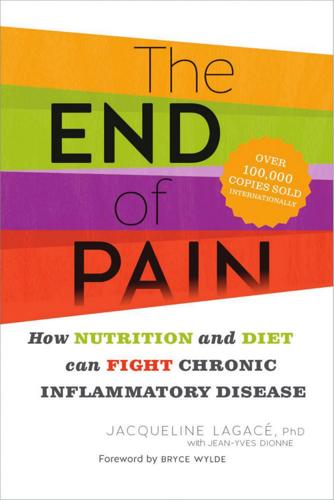
The End of Pain: How Nutrition and Diet Can Fight Chronic Inflammatory Disease
by
Jacqueline Lagace
Published 7 Mar 2014
Earlier studies had shown that chondroitin sulfate could be absorbed orally and then identified in synovial fluid and cartilage.60 Studies on the efficacy of chondroitin sulfate in relieving arthrosis symptoms have provided contradictory results. Among others, one meta-analysis based on five meta-analyses with controls indicates that chondroitin sulfate shows a weak-to-moderate efficiency in the symptomatic treatment of arthrosis and that it has an excellent safety profile and is therefore not harmful to health.61 Another meta-analysis was based on six studies involving 1,502 patients; two of these studies aimed at determining the effects of glucosamine sulfate, and the other four, the effects of chondroitin sulfate. This meta-analysis concluded that glucosamine sulfate was not more efficient than the control after the first year of treatment; meanwhile, after three years of treatment, it provided a weak or moderate protective effect for the knees (an analogous result was obtained after two years of treatment with chondroitin sulfate).62 It was suggested that chondroitin sulfate preparations from various M a i n t a i n i n g a P r o p e r P h y s i o l o g i c a l B a l a n c e < 1 2 9 producers and animal sources (that is, pigs and cows) could differ greatly and presented different modes of action.
…
A systematic review by A. Hróbjartsson and P. Gøtzsche of thirty-two clinical trials in a study including 3,795 patients, during which patients were randomly given either a placebo or no treatment, did not show any significant clinical effects of the placebo. In the second part of this review, a meta-analysis was also carried out involving eighty-two clinical trials and continuous followup of 4,730 patients. Placebos had some benefits, but these benefits diminished when the number of patients involved was much higher.2 The difference between placebo and no treatment at all was very significant when the issue being measured was subjective in nature (for example, self-reported pain, which is difficult to quantify) and was insignificant when the issue was objective (for example, the quantitative analysis of the presence of a certain substance in the blood).
…
In an analysis by Vase, Riley and Price of thirty-seven studies (a group of twenty-three studies using only placebo as a control condition, and another fourteen studies investigating placebo analgesic mechanisms), it was found that placebos had minimal benefits, corresponding to a reduction in pain intensity of 6.5 millimeters on 2 8 > t h e e n d o f pa i n a scale of 100 millimeters. (That is, researchers show patients a scale in millimeters calibrated from 0 mm to 100 mm and ask the patients to rate the intensity of their pain on this scale.) The authors concluded that there was little evidence that, in general, placebos have a significant clinical effect.3 In another meta-analysis based on fifty-two new studies on the placebo effect, Hróbjartsson and Gøtzsche4 once again concluded that they did not find any evidence of a significant, generalized clinical effect due to placebos. They did, however, agree that there could be a very small effect on certain patients, especially as far as pain is concerned.
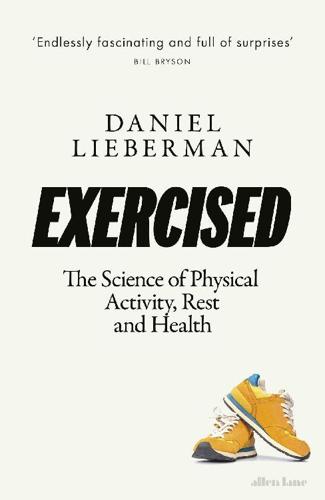
Exercised: The Science of Physical Activity, Rest and Health
by
Daniel Lieberman
Published 2 Sep 2020
D., et al. (2019), Aerobic exercise for adult patients with major depressive disorder in mental health services: A systematic review and meta-analysis, Depression and Anxiety 36:39–53; Stubbs, B., et al. (2017), An examination of the anxiolytic effects of exercise for people with anxiety and stress-related disorders: A meta-analysis, Psychiatry Research 249:102–8; Schuch, F. B., et al. (2016), Exercise as a treatment for depression: A meta-analysis adjusting for publication bias, Journal of Psychiatric Research 77:42–51; Josefsson, T., Lindwall, M., and Archer, T. (2014), Physical exercise intervention in depressive disorders: Meta-analysis and systematic review, Scandinavian Journal of Medicine and Science in Sports 24:259–72; Wegner, M., et al. (2014), Effects of exercise on anxiety and depression disorders: Review of meta-analyses and neurobiological mechanisms, CNS and Neurological Disorders—Drug Targets 13:1002–14; Asmundson, G.
…
S., et al. (2011), Overuse injuries in high school runners: Lifetime prevalence and prevention strategies, Physical Medicine and Rehabilitation 3:125–31; Videbæk, S., et al. (2015), Incidence of running-related injuries per 1000 h of running in different types of runners: A systematic review and meta-analysis, Sports Medicine 45:1017–26. 41 Kluitenberg, B., et al. (2015), What are the differences in injury proportions between different populations of runners? A systematic review and meta-analysis, Sports Medicine 45:1143–61. 42 Daoud, A. I., et al. (2012), Foot strike and injury rates in endurance runners: A retrospective study, Medicine and Science in Sports and Exercise 44:1325–34. 43 Buist, I., et al. (2010), Predictors of running-related injuries in novice runners enrolled in a systematic training program: A prospective cohort study, American Journal of Sports Medicine 38:273–80. 44 Alentorn-Geli, E., et al. (2017), The association of recreational and competitive running with hip and knee osteoarthritis: A systematic review and meta-analysis, Journal of Orthopaedic and Sports Physical Therapy 47:373–90; Miller, R.
…
J., et al. (2018), Increased insulin-stimulated glucose uptake in both leg and arm muscles after sprint interval and moderate intensity training in subjects with type 2 diabetes or prediabetes, Scandinavian Journal of Medicine and Science in Sports 28:77–87. 26 Strasser, B., Siebert, U., and Schobersberger, W. (2010), Resistance training in the treatment of the metabolic syndrome: A systematic review and meta-analysis of the effect of resistance training on metabolic clustering in patients with abnormal glucose metabolism, Sports Medicine 40:397–415; Yang, Z., et al. (2014), Resistance exercise versus aerobic exercise for type 2 diabetes: A systematic review and meta-analysis, Sports Medicine 44:487–99. 27 Church, T. S., et al. (2010), Effects of aerobic and resistance training on hemoglobin A1c levels in patients with type 2 diabetes: A randomized controlled trial, Journal of the American Medical Association 304:2253–62. 28 Smith, G.
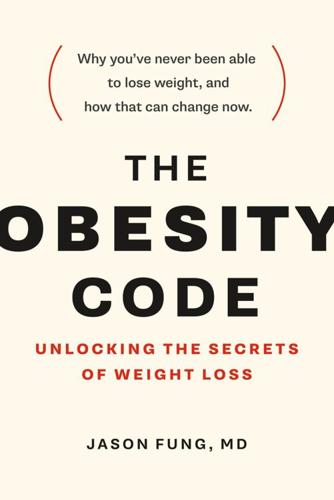
The Obesity Code: Unlocking the Secrets of Weight Loss
by
Jason Fung
Published 3 Mar 2016
Caffeine intake and dementia: systematic review and meta-analysis. J Alzheimers Dis. 2010; 20 Suppl 1:S187–204. doi: 10.3233/JAD-2010-091387. Accessed 2015 Apr 6. 30. Hernan MA et al. A meta-analysis of coffee drinking, cigarette smoking, and the risk of Parkinson’s disease. Ann Neurol. 2002 Sep; 52(3):276–84. 31. Ross GW et al. Association of coffee and caffeine intake with the risk of Parkinson disease. JAMA. 2000 May; 283(20):2674–9. 32. Klatsky AL et al. Coffee, cirrhosis, and transaminase enzymes. Arch Intern Med. 2006 Jun 12; 166(11):1190–5. 33. Larrson SC, Wolk A. Coffee consumption and risk of liver cancer: a meta-analysis. Gastroenterology. 2007 May; 132 (5):1740–5. 34.
…
Dietary fat intake and early mortality patterns: data from the Malmo Diet and Cancer Study. J Intern Med. 2005 Aug; 258(2):153–65. 20. Chowdhury R et al. Association of dietary, circulating, and supplement fatty acids with coronary risk: a systematic review and meta-analysis. Ann Intern Med. 2014 Mar 18; 160(6):398–406. 21. Siri-Tarino PW et al. Meta-analysis of prospective cohort studies evaluating the association of saturated fat with cardiovascular disease. Am J Clin Nutr. 2010 Mar; 91(3):535–46. 22. Yamagishi K et al. Dietary intake of saturated fatty acids and mortality from cardiovascular disease in Japanese.
…
J Nutr Biochem. 2010 Apr; 21(4):261–7. doi: 10.1016/j.jnutbio.2008.12.011. Epub 2009 Apr 14. 14. Shin JY, Xun P, Nakamura Y, He K. Egg consumption in relation to risk of cardiovascular disease and diabetes: a systematic review and meta-analysis. Am J Clin Nutr. 2013 Jul; 98(1):146–59. 15. Rong Y et al. Egg consumption and risk of coronary heart disease and stroke: dose-response meta-analysis of prospective cohort studies. BMJ. 2013; 346:e8539. doi: 10.1136/bmj.e8539. Accessed 2015 Apr 6. 16. Cordain L et al. Influence of moderate chronic wine consumption on insulin sensitivity and other correlates of syndrome X in moderately obese women.
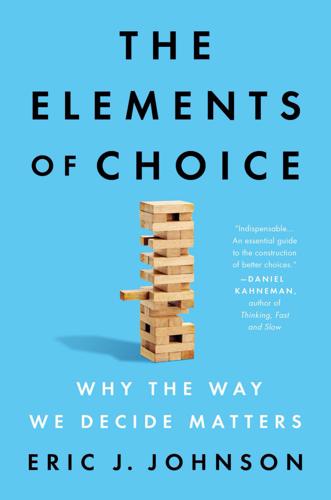
The Elements of Choice: Why the Way We Decide Matters
by
Eric J. Johnson
Published 12 Oct 2021
Jon Jachimowicz, now a faculty member at Harvard; Shannon Duncan, now a graduate student at Wharton; Elke Weber, who teaches at Princeton (and, as you know, is my spouse); and I pulled together every study that has used defaults, both published and unpublished, so we could see how well defaults work in different settings. We used meta-analysis, a statistical tool that summarizes what we know about a topic. Meta-analysis is often used in medicine to give doctors quick summaries of dozens, sometimes hundreds, of studies. This way they can see how well an intervention, such as a new drug or a new surgical procedure, works on average. In the last ten years, meta-analysis has become much more important in psychology and policy. Just like in medicine, it helps us understand how well an attempt to change behavior will work.
…
If you are a designer thinking about using defaults, you can expect more of an effect in a consumer application than in a health application. In other words, all other things being equal, we would expect a study like the green energy study to have a larger default effect than a health study like the organ donation paper.30 Meta-analysis can help us understand why default effects are stronger in some cases than in others. Our meta-analysis looked to see if each study changed the ease, endorsement, or endowment aspects of the choice. We found that, in general, default effects were strongest when the default changed all three effects and weaker when they changed only one or two. Picking the Right Default Let’s say you’re about to buy a car—a really fabulous car—and are visiting the website of a certain well-known German auto manufacturer.
…
The potential savings of providing effective choice architecture for health care plan selection is, in total, more than $9 billion. Inspired by this, we decided to do our own meta-analysis. This differed from the prior two analyses because it asked a different question: not how people feel about their choices, but whether increasing the number of options affects accuracy. We concentrated on studies that used a decision simulator, studies where the researchers knew the right answer. This work with Shannon Duncan, now a graduate student at the Wharton School, and Ulf Böckenholt, an expert at meta-analysis at the Kellogg School, looked at how accuracy changed as more options were added. While we found that more options could hurt accuracy, that was only when decisions were made without choice architecture.
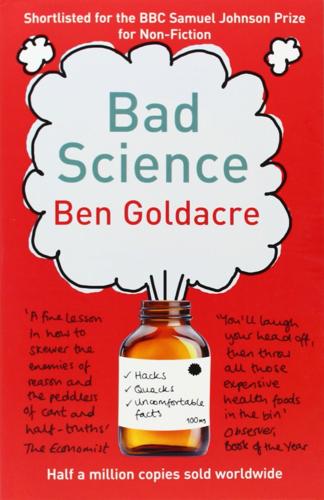
Bad Science
by
Ben Goldacre
Published 1 Jan 2008
They died, even when there was enough information available to know what would save them, because that information had not been synthesised together, and analysed systematically, in a meta-analysis. Back to homeopathy (you can see why I find it trivial now). A landmark meta-analysis was published recently in the Lancet. It was accompanied by an editorial titled: ‘The End of Homeopathy?’ Shang et al. did a very thorough meta-analysis of a vast number of homeopathy trials, and they found, overall, adding them all up, that homeopathy performs no better than placebo. The homeopaths were up in arms. If you mention this meta-analysis, they will try to tell you that it was a stitch-up. What Shang et al. did, essentially, like all the previous negative meta-analyses of homeopathy, was to exclude the poorer-quality trials from their analysis.
…
In 1989 he published a famous meta-analysis of trials in a dermatology journal which found that his lead product, evening primrose oil, was effective in eczema. This meta-analysis excluded the one available large published trial (which was negative), but included the two oldest studies, and seven small positive studies sponsored by his own company (these were still unavailable at the last review I could find, in 2003). In 1990 two academics had their review of the data binned by the journal after Horrobin’s lawyers got involved. In 1995 the Department of Health commissioned a meta-analysis from a renowned epidemiologist.
…
But this is a curiosity and an aside. In the bigger picture it doesn’t matter, because overall, even including these suspicious studies, the ‘meta-analyses’ still show, overall, that homeopathy is no better than placebo. Meta-analyses? Meta-analysis This will be our last big idea for a while, and this is one that has saved the lives of more people than you will ever meet. A meta-analysis is a very simple thing to do, in some respects: you just collect all the results from all the trials on a given subject, bung them into one big spreadsheet, and do the maths on that, instead of relying on your own gestalt intuition about all the results from each of your little trials.
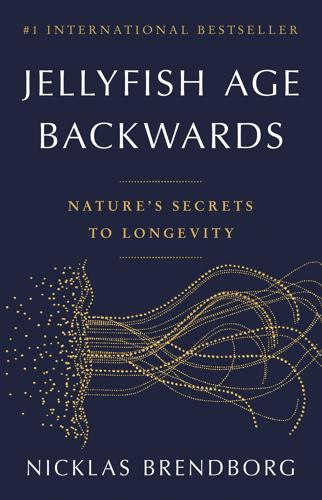
Jellyfish Age Backwards: Nature's Secrets to Longevity
by
Nicklas Brendborg
Published 17 Jan 2023
‘The influence of subjective aging on health and longevity: A meta-analysis of longitudinal data’, Psychology and Aging, vol. 29, no. 4, 2014, pp. 793–802. John, A., Patel, U., Rusted, J., Richards, M., Gaysina, D. ‘Affective problems and decline in cognitive state in older adults: A systematic review and meta-analysis’, Psychological Medicine, vol. 49, no. 3, 2019, pp. 353–365. Turnwald, B. et al. ‘Learning one’s genetic risk changes physiology independent of actual genetic risk’, Nature Human Behaviour, vol. 3, 2019, pp. 48–56. Kramer, C., Mehmood, S., Suen, R. ‘Dog ownership and survival: A systematic review and meta-analysis’, Circulation: Cardiovascular Quality and Outcomes, vol. 12, no. 10, 2019.
…
But fortunately, the theory also comes with an easy solution: use antioxidants to tame the rampaging bull. This idea is many decades old now, and it has been thoroughly tested in clinical trials. In fact, it’s been tested so much that researchers can do what is known as a meta-analysis: a huge study that analyses the data from several separate studies as one. In one such meta-analysis – composed of sixty-eight studies and 230,000 subjects – researchers investigated whether dietary supplements with antioxidants help people live longer. Their conclusion: people who take antioxidant supplements die earlier. They aren’t protected against age-related diseases either.
…
Ramos, J., Dalleck, L., Tjonna, A., Beetham, K., Coombes, J. ‘The Impact of High-Intensity Interval Training Versus Moderate-Intensity Continuous Training on Vascular Function: a Systematic Review and Meta-Analysis’, Sports Medicine, vol. 45, 2015, pp. 679–692. Viana, R., Naves, J., Coswig, V., De Lira, C., Steele, J., Fisher, J., Gentil, P. ‘Is interval training the magic bullet for fat loss? A systematic review and meta-analysis comparing moderate-intensity continuous training with high-intensity interval training (HIIT)’, British Journal of Sports Medicine, vol. 53, no. 10, 2018. Boudoulas, K., Borer, J., Boudoulas, H.
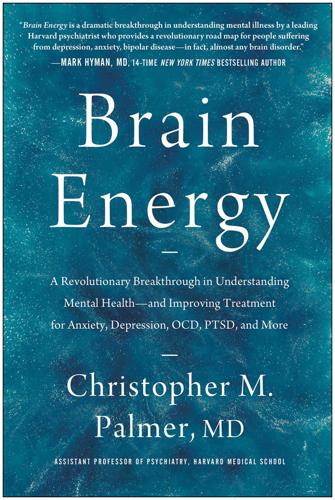
Brain Energy: A Revolutionary Breakthrough in Understanding Mental Health--And Improving Treatment for Anxiety, Depression, OCD, PTSD, and More
by
Christopher M. Palmer Md
Published 15 Nov 2022
“Association of Delirium with Long-Term Cognitive Decline: A Meta-analysis.” JAMA Neurol. Published online July 13, 2020. doi: 10.1001/jamaneurol.2020.2273. 37G. Naeije, I. Bachir, N. Gaspard, B. Legros, and T. Pepersack. “Epileptic Activities and Older People Delirium.” Geriatr Gerontol Int 14(2) (2014): 447–451. doi: 10.1111/ggi.12128. 38Jorge I. F. Salluh, Han Wang, Eric B. Schneider, Neeraja Nagaraja, Gayane Yenokyan, Abdulla Damluji, Rodrigo B. Serafim, and Robert D. Stevens. “Outcome of Delirium in Critically Ill Patients: Systematic Review and Meta-Analysis.” BMJ 350 (2015). doi: 10.1136/bmj.h2538. 39Sharon K.
…
Twenty years later, 62 percent of those with schizophrenia and 50 percent of those with bipolar disorder were obese.5 The obesity rate at the time for all adults in New York State, where the study was conducted, was 27 percent. Children with autism are 40 percent more likely to be obese.6 One meta-analysis of 120 studies found that people with serious mental illness were three times more likely to be obese than people without a mental illness.7 Many people assume that our treatments are causing this obesity. While there’s no doubt that psychiatric medications are associated with weight gain—in fact it’s a common side effect of antidepressants and antipsychotics—treatments alone don’t provide the entire explanation.
…
These ongoing studies have looked at stressors early in life, such as physical and sexual abuse, neglect, household substance abuse, household mental illness, exposure to domestic violence, and parental divorce, and then determined if these early experiences were associated with later health outcomes. A 2017 meta-analysis of thirty-seven such studies looking at twenty-three health outcomes in more than 250,000 people found that they are.2 The more ACEs a child has, the more likely he or she will have poor health outcomes. ACEs increase the probability for physical inactivity, obesity, and diabetes by 25 to 52 percent.

How Emotions Are Made: The New Science of the Mind and Brain
by
Lisa Feldman Barrett
Published 6 Mar 2017
In other words, when studies distinguished anger from sadness from fear, they did not always replicate one another, implying that the instances of anger, sadness, and fear cultivated in one study were different from those cultivated in another.25 When faced with a large collection of diverse experiments like this, it’s hard to extract a consistent story. Fortunately, scientists have a technique to analyze all the data together and reach a unified conclusion. It’s called a “meta-analysis.” Scientists comb through large numbers of experiments conducted by different researchers, combining their results statistically. As a simple example, suppose you wanted to check if increased heart rate is part of the bodily fingerprint of happiness. Rather than run your own experiment, you could do a meta-analysis of other experiments that measured heart rate during happiness, even incidentally (e.g., the study could be about the relationship between sex and heart attacks and have nothing centrally to do with emotion).
…
When we peer into the brains of people who are experiencing emotion, or perceiving emotion in blinks, furrowed brows, muscle twitches, and the lilting voices of others, we see pretty clearly that key parts of these networks are hard at work. For starters, you might remember my lab’s meta-analysis that examined every published neuroimaging study of emotion, which we saw in chapter 1. We divided the entire brain into tiny cubes called “voxels” (akin to “pixels” of the brain), and then identified voxels that consistently showed a significant increase in activity for any of the emotion categories we studied. We could not localize a single emotion category to any brain region. This same meta-analysis also provided evidence for the theory of constructed emotion. We identified groups of voxels that activated together with high probability, like a network would.
…
These groups of voxels consistently fell within the interoceptive and control networks.11 When you consider that our meta-analysis, at the time it was conducted, covered over 150 diverse, independent studies by hundreds of scientists, in which subjects viewed faces, smelled scents, listened to music, watched movies, remembered past events, and performed many other emotion-evoking tasks, the emergence of these networks is particularly compelling. These findings are even more remarkable to me because the studies covered by the meta-analysis weren’t designed to test the theory of constructed emotion. Most were inspired by classical view theories and designed to localize each emotion to a different region of the brain.
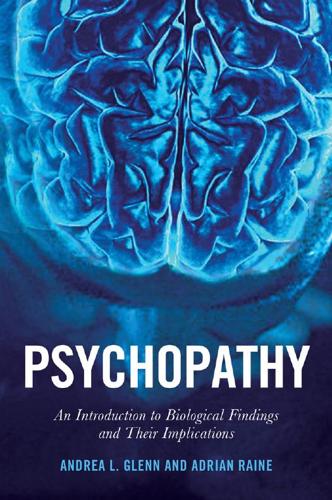
Psychopathy: An Introduction to Biological Findings and Their Implications
by
Andrea L. Glenn
and
Adrian Raine
Published 7 Mar 2014
In response to the onset of a stimulus, the heart normally slows down for a brief period. This slowing is followed by a speeding of heart rate, termed an acceleratory response. Such responses are particularly common to aversive stimuli. Heart rate acceleration is thought to be a marker of affective arousal. In a meta-analysis of 17 studies, Lorber (2004) found no evidence of a relationship between psychopathy and resting heart rate or heart rate reactivity in adults, although lower resting heart rate was related to aggression more generally. However, in a later study of psychopathy, Serafim et al. (2009) found that, unlike controls and nonpsychopathic murderers, psychopathic murderers failed to show an increase in heart rate when viewing unpleasant, pleasant, or neutral pictures.
…
Variables such as age, sex, race, and stage of menstrual cycle, as well as environmental factors including temperature, humidity, time of day, day of week, and season, are found to affect skin conductance (Boucsein 1992) and therefore need to be considered as potential covariates in skin conductance data analyses. Skin conductance recordings have excellent temporal resolution. Resting The most basic skin conductance measure is resting levels of electrodermal activity. In a meta-analysis of studies, Lorber (2004) found that psychopathy was significantly associated with lower resting electrodermal activity across 18 studies, although the effect was small. Psychopathic adults have also been found to demonstrate fewer skin conductance fluctuations (Raine, Venables, and Williams 1996), or spontaneous changes in skin conductance, which are also thought to reflect arousal.
…
Psychopathic 70 << Psychophysiology individuals have been found to demonstrate reduced skin conductance responses to facial expressions of sadness and fear (Blair 1999, Blair et al. 1997), imagined threat scenes (Patrick, Cuthbert, and Lang 1994), anticipated threat (Hare 1965, 1982, Hare, Frazelle, and Cox 1978, Ogloff and Wong 1990), and emotionally evocative sounds (Verona et al. 2004). Overall, in a meta-analysis of 28 studies, Lorber (2004) found psychopathy to be associated with reduced skin conductance activity during tasks. Age was a significant moderator, with studies of adults yielding larger effects than studies of children and adolescents. The effect for negative stimuli was also larger than the effect for nonnegative stimuli.
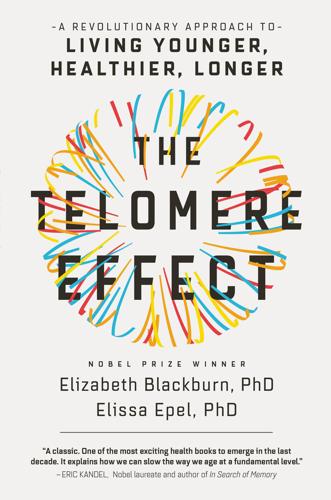
The Telomere Effect: A Revolutionary Approach to Living Younger, Healthier, Longer
by
Dr. Elizabeth Blackburn
and
Dr. Elissa Epel
Published 3 Jan 2017
Willeit, P., et al., “Leucocyte Telomere Length and Risk of Type 2 Diabetes Mellitus: New Prospective Cohort Study and Literature-Based Meta-analysis,” PLOS ONE 9, no. 11 (2014): e112483, doi:10.1371/journal.pone.0112483; D’Mello, M. J., et al., “Association Between Shortened Leukocyte Telomere Length and Cardiometabolic Outcomes: Systematic Review and Meta-analysis,” Circulation: Cardiovascular Genetics 8, no. 1 (February 2015): 82–90, doi:10.1161/CIRCGENET ICS.113.000485; Haycock, P. C., et al., “Leucocyte Telomere Length and Risk of Cardiovascular Disease: Systematic Review and Meta-Analysis,” BMJ 349 (2014): g4227, doi:10.1136/bmj.g4227; Zhang, C., et al., “The Association Between Telomere Length and Cancer Prognosis: Evidence from a Meta-Analysis,” PLOS ONE 10, no. 7 (2015): e0133174, doi:10.1371/journal.pone.0133174; and Adnot, S., et al., “Telomere Dysfunction and Cell Senescence in Chronic Lung Diseases: Therapeutic Potential,” Pharmacology & Therapeutics 153 (September 2015): 125–34, doi:10.1016/j.pharmthera.2015.06.007. 6.
…
Bai, Z., et al., “Investigating the Effect of Transcendental Meditation on Blood Pressure: A Systematic Review and Meta-analysis,” Journal of Human Hypertension 29, no. 11 (November 2015): 653–62. doi:10.1038/jhh.2015.6; and Cernes, R., and R. Zimlichman, “RESPeRATE: The Role of Paced Breathing in Hypertension Treatment,” Journal of the American Society of Hypertension 9, no. 1 (January 2015): 38–47, doi:10.1016/j.jash.2014.10.002. Master Tips for Renewal: Stress-Reducing Techniques Shown to Boost Telomere Maintenance 1. Morgan, N., M. R. Irwin, M. Chung, and C. Wang, “The Effects of Mind-Body Therapies on the Immune System: Meta-analysis,” PLOS ONE 9, no. 7 (2014): e100903, doi:10.1371/journal.pone.0100903. 2.
…
Brooks, “Yoga in the Management of Chronic Disease: A Systematic Review and Meta-analysis,” Medical Care 53, no. 7 (July 2015): 653–61, doi:10.1097/MLR.0000000000000372. 10. Hartley, L., et al., “Yoga for the Primary Prevention of Cardiovascular Disease,” Cochrane Database of Systematic Reviews 5 (May 13, 2014): CD010072, doi:10.1002/14651858.CD010072.pub2. 11. Lu, Y. H., B. Rosner, G. Chang, and L. M. Fishman, “Twelve-Minute Daily Yoga Regimen Reverses Osteoporotic Bone Loss,” Topics in Geriatric Rehabilitation 32, no. 2 (April 2016): 81–87. 12. Liu, X., et al., “A Systematic Review and Meta-analysis of the Effects of Qigong and Tai Chi for Depressive Symptoms,” Complementary Therapies in Medicine 23, no. 4 (August 2015): 516–34, doi:10.1016/j.ctim.2015.05.001. 13.

The Barbell Prescription: Strength Training for Life After 40
by
Jonathon Sullivan
and
Andy Baker
Published 2 Dec 2016
Cochrane Database Syst Rev 2013; doi: 10.1002/14651858.CD004366.pub6 Cornelissen VA, Fagard RH, Coeckelberghs E, Vanhees L. Impact of resistance training on blood pressure and other cardiovascular risk factors: a meta-analysis of randomized controlled trials. Hypertension 2011;58:950-958. Cornellisen VA, Fagard RH. Effect of resistance training on resting blood pressure: a meta-analysis of randomized controlled trials. J Hypertension 2005;23(2):251-259. Cotman CW, Berchtold NC, Christie LA. Exercise builds brain health: key roles of growth factor cascades and inflammation. Trends Neurosci 2007;30(9):464-472.
…
Insulin activates the PI3K-Akt survival pathway in vulnerable neurons following global brain ischemia. Neurol Res 2009;31(9):947-58. Sattar N, Preiss D, Murray HM, et al. Statins and risk of incident diabetes: a collaborative meta-analysis of randomized statin trials. Lancet 2010; 375(9716):735-742. Sattelmair J, Pertman J, Ding EL, et al. Dose-response between physical activity and risk of coronary heart disease: a meta-analysis. Circulation 2011;124:789-795. Savage P, Shaw AO, Miller MS, et al. Effect of resistance training on physical disability in chronic heart failure. Med Sci Sports Exerc 2011;43(8):1379-1386. Sawka MN, Burke LM, Eichner ER, et al.
…
Effect of vitamin supplementation on muscle strength: a systematic review and meta-analysis. Osteoporosis 2011;22:859-871. Storen O, Helgerud J, Stoa EM, Hoff J. Maximal strength training improves running economy in distance runners. Med Sci Sports Exerc 2008;40(6):1089-1094. Strasser B, Arvandi M, Siebert U. Resistance training, visceral obesity and inflammatory response: a review of the evidence. Obesity Rev 2012;13:578-591. Strasser B, Siebert U, Schobersberger W. Resistance training in the treatment of metabolic syndrome. A systematic review and meta-analysis of the effect of resistance training on metabolic clustering in patients with abnormal glucose metabolism.
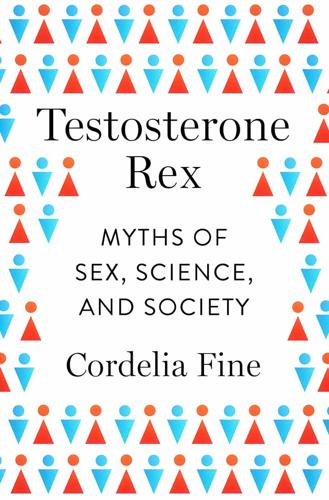
Testosterone Rex: Myths of Sex, Science, and Society
by
Cordelia Fine
Published 13 Jan 2017
Kyklos, 61(3), 364–384. 51. Nelson (2014a), ibid. Quoted on p. 225. 52. Hönekopp, J., & Watson, S. (2010). Meta-analysis of digit ratio 2D:4D shows greater sex difference in the right hand. American Journal of Human Biology, 22, 619–630. 53. Voracek, M., Tran, U. S., & Dressler, S. G. (2010). Digit ratio (2D:4D) and sensation seeking: New data and meta-analysis. Personality and Individual Differences, 48(1), 72–77. Quoted on p. 76. 54. Herbert (2015), ibid. Quoted on p. 52. 55. Hönekopp, J., & Watson, S. (2011). Meta-analysis of the relationship between digit-ratio 2D:4D and aggression. Personality and Individual Differences, 51(4), 381–386.
…
A good starting point is a large meta-analysis that collated studies of female/male differences in risk taking across a variety of domains (like hypothetical choices, drinking, drugs, sexual activity, and driving), and across five different age groups from middle childhood to adulthood.22 This analysis did indeed lead to the conclusion that males are more risk taking than females, on average. But about half of the differences were very modest, and in 20 percent of cases they were even in the “wrong” direction (that is, there was greater female risk taking). The meta-analysis also revealed changeable patterns of difference depending on the age group and the kind of risk.
…
M. (2005). An integrated review of indirect, relational, and social aggression. Personality and Social Psychology Review 9(3), 212–230. Quoted on p. 212. 83. See, for example, the meta-analysis by Archer, J. (2004). Sex differences in aggression in real-world settings: A meta-analytic review. Review of General Psychology, 8(4), 291–322. 84. Su, R., Rounds, J., & Armstrong, P. I. (2009). Men and things, women and people: A meta-analysis of sex differences in interests. Psychological Bulletin, 135(6), 859–884. 85. Lippa, R. A., Preston, K., & Penner, J. (2014). Women’s representation in 60 occupations from 1972 to 2010: More women in high-status jobs, few women in things-oriented jobs.
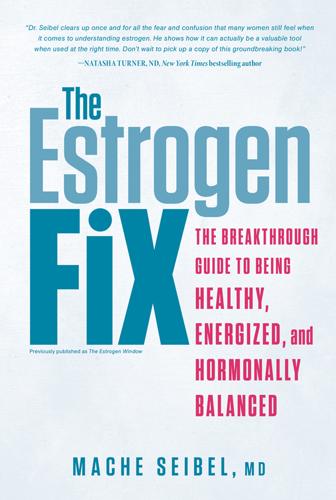
The Estrogen Fix: The Breakthrough Guide to Being Healthy, Energized, and Hormonally Balanced
by
Mache Seibel
Published 18 Sep 2017
Cecchin et al., “Body Mass Index and the Risk for Developing Invasive Breast Cancer among High-Risk Women in NSABP P-1 and STAR Breast Cancer Prevention Trials,” Cancer Prevention Research 5, no. 4 (April 2012): 583–92. 38W. Somboonporn, S. Panna, T. Temtanakitpaisan, et al., “Effects of the Levonorgestrel-Releasing Intrauterine System Plus Estrogen Therapy in Perimenopausal and Postmenopausal Women: Systematic Review and Meta-Analysis,” Menopause 18, no. 10 (October 2011): 1060—66. 39M. M. Gaudet et al., “Active Smoking and Breast Cancer Risk: Original Cohort Data and Meta-Analysis,” Journal of the National Cancer Institute 105, no. 8 (April 17, 2013): 515–25. 40C. M. Friedenreich et al., “Effects of a High vs Moderate Volume of Aerobic Exercise on Adiposity Outcomes in Postmenopausal Women: A Randomized Clinical Trial,” JAMA Oncology 1, no. 6 (September 2015): 766–76. 41“Exercise,” Breastcancer.org, last modified January 30, 2015, breastcancer.org/tips/exercise. 42“Breast Cancer Prevention and Early Detection,” American Cancer Society, last modified October 20, 2015, cancer.org/cancer/breastcancer/moreinformation/breastcancerearlydetection/index.
…
Id=2019. 18S. Gandini et al., “Meta-Analysis of Observational Studies of Serum 25-Hydroxyvitamin D Levels and Colorectal, Breast and Prostate Cancer and Colorectal Adenoma,” International Journal of Cancer 128, no. 6 (2011): 1414–24. 19“Vitamin D and Cancer Prevention,” National Cancer Institute, last modified October 21, 2013, cancer.gov/about-cancer/causes-prevention/risk/diet/vitamin-d-fact-sheet. 20A. R. Martineau, D. A. Jolliffe, R. L. Hooper, et al., “Vitamin D supplementation to Prevent Acute Respiratory Tract Infections: Systematic Review And Meta-Analysis of Individual Participant Data,” BMJ 356 (February 15, 2017): i6583; M.
…
Rocca et al., “Increased Risk of Cognitive Impairment or Dementia in Women Who Underwent Oophorectomy before Menopause,” Neurology 69, no. 11 (September 11, 2007): 1074–83. 13P. P. Zandi et al., “Hormone Replacement Therapy and Incidence of Alzheimer Disease in Older Women,” JAMA 288, no. 17 (2002): 2123–29. 14W. Xu et al., “Meta-Analysis of Modifiable Risk Factors for Alzheimer’s Disease,” Journal of Neurology, Neurosurgery & Psychiatry (2015). 15M. A. Fischer et al., “Primary Medication Non-Adherence: Analysis of 195,930 Electronic Prescriptions,” Journal of General Internal Medicine 25 (2010): 284–90. 16V. A. Ravnikar, “Compliance with Hormone Therapy,” American Journal of Obstetrics and Gynecology 156, no. 5 (May 1987): 1332–34. 17“Female Sexual Dysfunction,” WebMD, accessed September 24, 2015, webmd.com/women/guide/sexual-dysfunction-women. 18E.
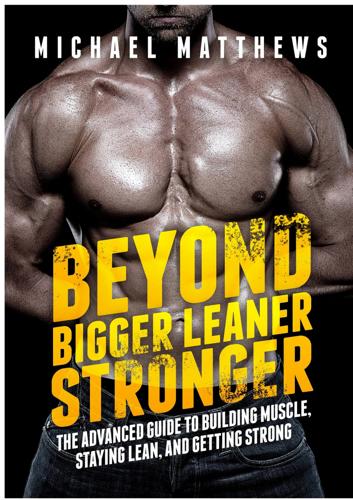
Beyond Bigger Leaner Stronger: The Advanced Guide to Building Muscle, Staying Lean, and Getting Strong
by
Michael Matthews
Published 15 Jun 2014
“Increased consumption of fruit and vegetables is related to a reduced risk of coronary heart disease: meta-analysis of cohort studies.” Journal of human hypertension21, no. 9 (2007): 717-728. 234. He, Feng J., Caryl A. Nowson, and Graham A. MacGregor. “Fruit and vegetable consumption and stroke: meta-analysis of cohort studies.” The Lancet 367, no. 9507 (2006): 320-326. 235. Hamer, Mark, and Yoichi Chida. “Intake of fruit, vegetables, and antioxidants and risk of type 2 diabetes: systematic review and meta-analysis.” Journal of hypertension 25, no. 12 (2007): 2361-2369. 236. Ramel, Alfons, J. Alfredo Martinez, Mairead Kiely, Narcisa M.
…
“Whole-grain intake and cancer: An expanded review and meta-analysis.”Nutrition and cancer 30, no. 2 (1998): 85-96. 257. http://www.health.harvard.edu/newsweek/The_nutrients_that_are_lost_when_grain_is_refined.htm 258. Masters, Rachel C., Angela D. Liese, Steven M. Haffner, Lynne E. Wagenknecht, and Anthony J. Hanley. “Whole and refined grain intakes are related to inflammatory protein concentrations in human plasma.” The Journal of nutrition 140, no. 3 (2010): 587-594. 259. Bazzano, Lydia A., Angela M. Thompson, Michael T. Tees, Cuong H. Nguyen, and Donna M. Winham. “Non-soy legume consumption lowers cholesterol levels: a meta-analysis of randomized controlled trials.”
…
“Insulin resistance accelerates muscle protein degradation: Activation of the ubiquitin-proteasome pathway by defects in muscle cell signaling.” Endocrinology 147, no. 9 (2006): 4160-4168. 46. Wilson, Jacob M., Pedro J. Marin, Matthew R. Rhea, Stephanie MC Wilson, Jeremy P. Loenneke, and Jody C. Anderson. “Concurrent training: a meta-analysis examining interference of aerobic and resistance exercises.” The Journal of Strength & Conditioning Research 26, no. 8 (2012): 2293-2307. 47. Marshall, Paul WM, Daniel A. Robbins, Anthony W. Wrightson, and Jason C. Siegler. “Acute neuromuscular and fatigue responses to the rest-pause method.” Journal of Science and Medicine in Sport 15, no. 2 (2012): 153-158. 48.

Magic Pill: The Extraordinary Benefits and Disturbing Risks of the New Weight-Loss Drugs
by
Johann Hari
Published 7 May 2024
GO TO NOTE REFERENCE IN TEXT greater probability of an ischemic stroke compared with normal-weight subjects: P. Strazzullo et al., “Excess Body Weight and Incidence of Stroke: Meta-Analysis of Prospective Studies with 2 Million Participants,” Stroke (2010), 41, 5, e418-e426, https://doi.org/10:1161/STROKEAHA.109:576967 [inactive]. A different recent meta-analysis, using different statistical techniques, found associations between obesity and type 2 diabetes and obesity and coronary artery disease, but not with stroke. H. Riaz et al., “Association Between Obesity and Cardiovascular Outcomes: A Systematic Review and Meta-analysis of Mendelian Randomization Studies,” JAMA Network Open (2018), 1(7), e183788, doi:10:1001/jamanetworkopen.2018:3788.
…
Guh et al., “The incidence of co-morbidities related to obesity and overweight: a systematic review and meta-analysis,” BMC Public Health (2009), 9, 88, https://bmcpublichealth.biomedcentral.com/articles/10:1186/1471-2458-9-88 [inactive]. I first learned about this study in Nadja Hermann, Conquering Fat Logic (Scribe, 2019), p. 101. GO TO NOTE REFERENCE IN TEXT A scientific overview looking at 2.3 million individuals with type 2 diabetes: A. Jayedi et al., “Anthropometric and adiposity indicators and risk of type 2 diabetes: systematic review and dose-response meta-analysis of cohort studies,” BMJ (2022), 376, https://www.bmj.com/content/376/bmj-2021-067516.
…
Schvey et al., “The Impact of Weight Stigma on Caloric Consumption,” Obesity (Silver Spring) (2011), 19, 10, 1957–1962, https://pubmed.ncbi.nlm.nih.gov/21760636/ as accessed October 10, 2023. GO TO NOTE REFERENCE IN TEXT stigmatizing overweight people is in fact counterproductive: This meta-analysis shows the wider evidence for this: X. Zhu et al., “A Meta-Analysis of Weight Stigma and Health Behaviors,” Stigma and Health (2022), 7, 1, pp. 1–13, https://doi.org/10:1037/sah0000352; see also A. Tomiyama et al., “How and Why Weight Stigma Drives the Obesity ‘Epidemic’ and Harms Health,” BMC Medicine (2018), 16, p. 123, https://doi.org/10:1186/s12916-018-1116-5.
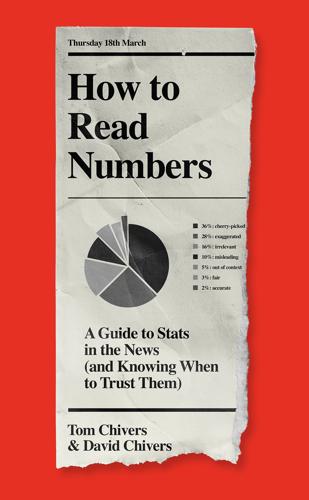
How to Read Numbers: A Guide to Statistics in the News (And Knowing When to Trust Them)
by
Tom Chivers
and
David Chivers
Published 18 Mar 2021
In the end, the study did find a home, in the open-access journal PLOS One.9 But if it hadn’t, then someone trying to do a meta-analysis would have found one paper, Bem’s, which found a result, and no others. The journal’s demand for novelty would have led to an apparent scientific consensus that psychic powers are real. The Bem study, in fact, caused a huge ruction in psychology, because researchers realised that they had to accept one of two unpalatable truths: either psychic powers were real, or the experimental and statistical methods that underpin psychological science were capable of churning out meaningless nonsense. (It’s worth noting that Bem later did do a meta-analysis, which included Ritchie et al’s paper and several others, and apparently still found that psychic abilities are real.10 With checks for publication bias and everything.
…
And in 2019, it was reported that children who smoke e-cigarettes are more likely to use marijuana.1 The claim was based on a paper in the journal JAMA Pediatrics, which looked at twenty-one other papers and synthesised their results.2 Papers like this, which aggregate other research, are known as ‘meta-analyses’. This meta-analysis found that twelve- to seventeen-year-olds who vaped were about three times as likely to smoke cannabis. We were just discussing effect sizes, and that sounds like a pretty big one. We’ll talk in the next chapter about the difficulties of establishing causality, but it definitely sounds like something worth worrying about here.
…
This is important when you’re discussing effect sizes. It can look like one variable is strongly linked with another – for instance, vaping and marijuana use. But finding out whether this effect is real, or whether it’s really caused by some other variable – some ‘confounder’ – is difficult. The studies that the vaping meta-analysis looked at did control for possible confounders – age, sex, race, parental education, tobacco-smoking, drug use; it differed by paper. And some papers found stronger links than others. For instance, one – which controlled for sex, race and school grade – found a huge correlation: vapers were about ten times as likely to smoke weed as non-vapers.4 But there’s one possible confounder that most of the studies did not look at.
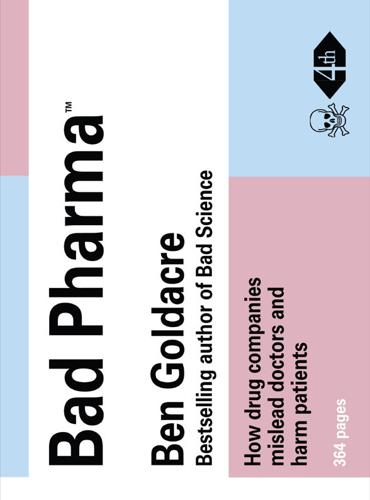
Bad Pharma: How Medicine Is Broken, and How We Can Fix It
by
Ben Goldacre
Published 1 Jan 2012
And you can see very clearly that overall, streptokinase saves lives. So what’s that on the right? It’s something called a cumulative meta-analysis. If you look at the list of studies on the left of the diagram, you can see that they are arranged in order of date. The cumulative meta-analysis on the right adds in each new trial’s results, as they arrived over history, to the previous trials’ results. This gives the best possible running estimate, each year, of how the evidence would have looked at that time, if anyone had bothered to do a meta-analysis on all the data available to them. From this cumulative blobbogram you can see that the horizontal lines, the ‘summary effects’, narrow over time as more and more data is collected, and the estimate of the overall benefit of this treatment becomes more accurate.
…
It would also allow cautious ‘subgroup analyses’, to see if a drug is particularly useful, or particularly useless, in particular types of patients. The biggest immediate benefit from data sharing is that combining individual patient data into a meta-analysis gives more accurate results than working with the crude summary results at the end of a paper. Let’s imagine that one paper reports survival at three years as the main outcome for a cancer drug, and another reports survival at seven years. To combine these two in a meta-analysis, you’d have a problem. But if you were doing the meta-analysis with access to individual patient data, with treatment details and death dates for all of them, you could do a clean combined calculation for three-year survival.
…
We will now see how deep this problem goes. Why we summarise data Missing data has been studied extensively in medicine. But before I lay out that evidence, we need to understand exactly why it matters, from a scientific perspective. And for that we need to understand systematic reviews and ‘meta-analysis’. Between them, these are two of the most powerful ideas in modern medicine. They are incredibly simple, but they were invented shockingly late. When we want to find out if something works or not, we do a trial. This is a very simple process, and the first recorded attempt at some kind of trial was in the Bible (Daniel 1:12, if you’re interested).
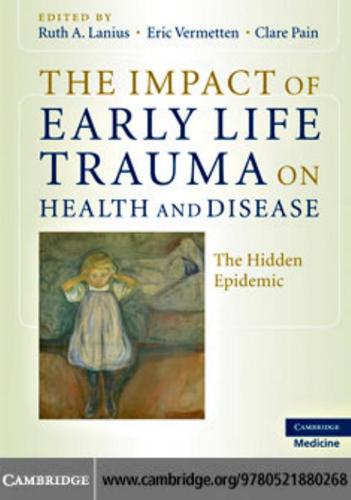
The Impact of Early Life Trauma on Health and Disease
by
Lanius, Ruth A.; Vermetten, Eric; Pain, Clare
Published 11 Jan 2011
Chicago, IL:€University of Chicago Press. 20. Madigan, S., Bakers-Kranenburg, M., van Ijzendoorn,€M. et al. (2006). Unresolved states of mind, anomalous parent behaviour, and disorganized attachment:€A review and meta-analysis of a transmission gap. Attachment and Human Development, 8, 89–111. 21. van Ijzendoorn, M., Schuengel, C. and BakermansKranenburg, M. (1999). Disorganized attachment in early childhood:€Meta-analysis of precursors, concomitants, and sequelae. Development and Psychopathology, 11, 225–249. 22. Fish, E. W., Shahrock, D., Bagot, R. et al. (2004). Epigenetic programming of stress responses through variations in maternal care.
…
We also found that smaller left hippocampal volume was observed in women with depression and a history of childhood abuse, but not in depressed women without childhood abuse [64]. In a 2005 meta-analysis study [65], data were pooled from all the published studies on hippocampal volume. There were smaller hippocampal volumes for both the left and the right sides, equally in adult men and women with chronic PTSD, and no change in children. Another meta-analysis published the same year had similar findings [66]. One study showed that women with abuserelated PTSD had deficits in hippocampal activation while performing a verbal declarative memory task [63].
…
American Journal of Psychiatry, 159, 2072–2080. 65. Kitayama, N., Vaccarino, V., Kutner, M., Weiss, P. and Bremner, J. D. (2005). Magnetic resonance imaging (MRI) measurement of hippocampal volume in posttraumatic stress disorder:€A meta-analysis. Journal of Affective Disorders, 88, 79–86. 66. Smith, M. E. (2005). Bilateral hippocampal volume reduction in adults with post-traumatic stress disorder:€A meta-analysis of structural MRI studies. Hippocampus, 15(6), 798–807. 67. Vermetten, E., Vythilingam, M., Southwick, S. M., Charney, D. S. and Bremner, J. D. (2003). Long-term treatment with paroxetine increases verbal declarative memory and hippocampal volume in posttraumatic stress disorder.
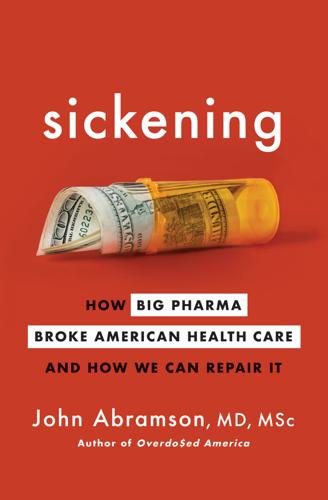
Sickening: How Big Pharma Broke American Health Care and How We Can Repair It
by
John Abramson
Published 15 Dec 2022
The guidelines already recommended statins for people above this level of risk, and mixing them in with a lower-risk population artificially inflates the benefit of statins in low-risk people. In 2012, the CTT published a meta-analysis designed specifically to determine the net effect of cholesterol-lowering “with statin therapy in people at low risk of vascular disease.” (Remember, only the CTT had access to patient-level data from most clinical trials, so only the CTT could calculate the effect of statin therapy among people whose ten-year risk was less than 20 percent.) But the CTT meta-analysis did a bait and switch, concluding statin therapy reduced the risk of death for people who did not already have cardiovascular disease.
…
Three years later, in the midst of the 2009 swine-flu pandemic, a Japanese pediatrician, Dr. Keiji Hayashi, questioned the Cochrane Review’s conclusion. Dr. Hayashi had noticed eight of the ten studies in the 2003 meta-analysis — all sponsored by the drug’s manufacturer, Roche — had never been published and the results could not be verified, not even to the limited extent that peer review can verify results. The authors of the 2003 meta-analysis had had access to those unpublished results because four of the six were Roche employees. Faced with this new information Dr. Tom Jefferson, lead author of the 2006 Cochrane Review, wrote to Roche requesting full CSRs for all ten trials.
…
rely on industry support: “American Heart Association Financial Information,” American Heart Association, https://www.heart.org/en/about-us/aha-financial-information, and “Principles for Relationships with Industry,” American College of Cardiology, https://www.acc.org/about-acc/industry-relations/principles-for-relationships-with-industry. CTT meta-analysis of 2012: CTT Collaborators, “The Effects of Lowering LDL Cholesterol with Statin Therapy in People at Low Risk of Vascular Disease: Meta-Analysis of Individual Data from 27 Randomised Trials,” Lancet 380 (2012): 581–90. 20 percent ten-year risk: CTT Collaborators, “The Effects.” “with statin therapy in people”: CTT Collaborators, “The Effects.” very little or no net benefit: John D.
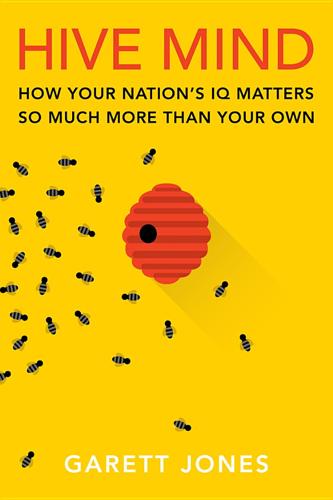
Hive Mind: How Your Nation’s IQ Matters So Much More Than Your Own
by
Garett Jones
Published 15 Feb 2015
The vast literature is too large to summarize here, but Hunt’s textbook (Human Intelligence) and Nisbett’s coauthored paper (Nisbett and others, “Intelligence: New Findings and Theoretical Developments”) both attempt to do so. The latter paper notes that a then-new meta-analysis reports “a conservative estimate that women’s math performance and Black students’ verbal performance are suppressed by about 0.2 [standard deviations]” although in some studies the effect is five times larger. Most would consider 0.2 standard deviations a small to moderate effect. A newer meta-analysis by Flore and Wicherts of studies of stereotype threat for females finds about the same effect size; see “Does Stereotype Threat Influence Performance of Girls in Stereotyped Domains?”
…
“Cooperation and Competition Between Twins: Findings from a Prisoner’s Dilemma Game.” Evolution and Human Behavior 20, no. 1 (1999): 29–51. Shamosh, Noah A., and Jeremy R. Gray. “Delay Discounting and Intelligence: A Meta-Analysis.” Intelligence 36, no. 4 (2008): 289–305. Sharma, Sudeep, William Bottom, and Hillary Anger Elfenbein. “On the Role of Personality, Cognitive Ability, and Emotional Intelligence in Predicting Negotiation Outcomes: A Meta-Analysis.” Organizational Psychology Review 3, no. 4 (2013): 293–336. Solon, Orville, Travis J. Riddell, Stella A. Quimbo, Elizabeth Butrick, Glen P. Aylward, Marife Lou Bacate, and John W.
…
There’s some evidence overall that higher-scoring individual players get a bigger slice of a fixed pie, but the more interesting and more robust evidence is that higher-scoring pairs bake a bigger pie in the first place. There have been enough of these studies—both the formal prisoner’s-dilemma-style games and the informal negotiation games—that one group of authors were able to perform a meta-analysis.17 They checked to see if, taken as whole, looking across many studies, IQ-type tests were good predictors of cooperative behavior. The answer: yes, higher standardized test scores tend to predict win-win behavior. Machiavelli and the Mind Such cooperative tendencies [among early humans] probably evolved in two main ways.

SEDATED: How Modern Capitalism Created Our Mental Health Crisis
by
James. Davies
Published 15 Nov 2021
BMJ Evidence-Based Medicine 25:130. 32 Cipriani, A., et al. (2018), ‘Comparative efficacy and acceptability of 21 antidepressant drugs for the acute treatment of adults with major depressive disorder: a systematic review and network meta-analysis’, The Lancet. 33 Kirsch, I. (2009), The Emperor’s New Drugs: exploding the antidepressant myth, London: Bodley Head, p.54. 34 Timimi, S., et al. (2018), ‘Network meta-analysis of antidepressants’, The Lancet, doi.org/10.1016/S0140-6736(18)31784-7. 35 Putting it in technical terms, the difference was a mere 1.6 on the HAM-D scale – which measures the severity of depression – far below the 3.0 difference needed to be classed as ‘clinically significant’.
…
Antidepressants should not be used for adults with major depressive disorder before valid evidence has shown that the potential beneficial effects outweigh the harmful effects.’31 While research over the last fifteen years has therefore brought down with a crash the antidepressant optimism of the late 1990s and 2000s, there have nevertheless been some periodic attempts to resuscitate the flagging reputation of psychiatry’s bestselling drug. One of the more recent high-profile efforts followed the publication of a large meta-analysis in February 2018 that captured headlines across the globe. This was undertaken by Andrea Cipriani and colleagues and was published in the prestigious medical journal The Lancet.32 This study assessed the largest number of antidepressant clinical trials yet assembled to try to settle the debate, once and for all, as to whether antidepressants worked better than placebos (sugar pills).
…
While we already knew that for mild to moderate depression they worked, on average, no better than placebos (despite millions of mildly and moderately depressed people being prescribed them each year),33 Cipriani’s study concluded that, for the minority of patients classed as severely depressed, they did in fact work a little better than placebos. This led many senior psychiatrists, in the study’s press release, to hype the results in the most positive way, which shaped the global media coverage. The press release comments that drove the headlines included: ‘This meta-analysis finally puts to bed the controversy on antidepressants’; ‘Antidepressants do work and, for most people, the side-effects are worth it’; and ‘For the millions of individuals with depression who are taking antidepressants at present … it confirms that these drugs are safe and effective.’ What most people reading these statements almost certainly did not know was that, firstly, they were all issued by psychiatrists with strong financial ties to the pharmaceutical industry, and, secondly, these comments entirely glossed over the serious limitations of Cipriani’s work.

Good to Go: What the Athlete in All of Us Can Learn From the Strange Science of Recovery
by
Christie Aschwanden
Published 5 Feb 2019
In August of 2018, Shona Halson left the Australian Institute of Sport to become an associate professor in the School of Behavioural and Health Sciences at Australian Catholic University. 16. J. Leeder, C. Gissane, K. van Someren, W. Gregson, and G. Howatson, “Cold Water Immersion and Recovery from Strenuous Exercise: A Meta-Analysis,” British Journal of Sports Medicine 46 (2012): 233–40, https://doi.10.1136/bjsports-2011-090061. 17. François Bieuzen, Chris M. Bleakley, and Joseph Thomas Costello, “Contrast Water Therapy and Exercise Induced Muscle Damage: A Systematic Review and Meta-Analysis,” PLoS ONE 8, no. 4 (2013), https://doi.10.1371/journal.pone.0062356. 18. James R. Broatch, Aaron Petersen, and David J. Bishop, “Postexercise Cold Water Immersion Benefits Are Not Greater Than the Placebo Effect,” Medicine and Science in Sports and Exercise 46, no. 11 (2014): 2139–47, https://doi.10.1249/MSS.0000000000000348. 19.
…
Dorfman, and Deborah Riebe, “The Effects of Myofascial Release with Foam Rolling on Performance,” Journal of Strength and Conditioning Research 20, no. 1 (2014), https://doi.10.1519/JSC.0b013e3182956569. 9. Jessica Hill, Glyn Howatson, Ken van Someren, Jonathan Leeder, and Charles Pedlar, “Compression Garments and Recovery from Exercise-Induced Muscle Damage: A Meta-Analysis,” British Journal of Sports Medicine 48, no. 18 (2014): 1340–46, https://doi.10.1136/bjsports-2013-092456. 10. Freddy Brown, Conor Gissane, and Glyn Howatson, “Compression Garments and Recovery from Exercise: A Meta-Analysis,” Sports Medicine 47, no. 11 (2017): 2245–67, https://doi.10.1007/s40279-017-0728-9. 11. Monèm Jemni, William A. Sands, Françoise Friemel, and Paul Delamarche, “Effect of Active and Passive Recovery on Blood Lactate and Performance during Simulated Competition in High Level Gymnasts,” Canadian Journal of Applied Physiology 28, no. 2 (2003): 240–56, https://doi.10.1139/h03-019; Egla-Irina D.
…
The Ultra Sports Science Foundation has published a set of guiding principles for hydration, directed at athletes who compete in long-distance events like ultramarathons or Ironman triathlons.33 Written by Martin Hoffman, an ultramarathoner and researcher at the University of California, Davis, the guidelines instruct athletes to drink to thirst and to expect some weight loss during exercise. “We did a meta-analysis of studies that have looked at drinking to thirst versus programmed drinking and the findings are that drinking to thirst does not impair performance relative to drinking more than that,” Hoffman told me. Losing some weight during a prolonged event like a 100-mile run or other ultra event is to be expected, he says.

T: The Story of Testosterone, the Hormone That Dominates and Divides Us
by
Carole Hooven
Published 12 Jul 2021
Handelsman and his collaborators surveyed the scientific literature and compiled a list of studies on testosterone levels in adults, all of which relied on mass spectrometry. This kind of study, a “meta-analysis,” is vital for understanding a body of scientific literature, and what science as a whole has to say about a particular question. Rather than providing one set of data from one study, which could be unreliable for a host of reasons, a meta-analysis consolidates, compares, and evaluates data from many different studies. Results that are consistent across studies provide strong evidence for support of a particular hypothesis.
…
Siebert, and Kim Wallen, “Sex Differences in Rhesus Monkey Toy Preferences Parallel Those of Children,” Hormones and Behavior 54, no. 3 (2008): 359–64; Beatrice Whiting and Carolyn Pope Edwards, “A Cross-Cultural Analysis of Sex Differences in the Behavior of Children Aged Three Through 11,” Journal of Social Psychology 91, no. 2 (1973): 171–88; and Jac T. M. Davis and Melissa Hines, “How Large Are Gender Differences in Toy Preferences? A Systematic Review and Meta-Analysis of Toy Preference Research,” Archives of Sexual Behavior 49, no. 2 (2020): 373–94. aggression, parenting, social hierarchies, and preferences: Rong Su, James Rounds, and Patrick Ian Armstrong, “Men and Things, Women and People: A Meta-Analysis of Sex Differences in Interests,” Psychological Bulletin 135, no. 6 (2009): 859–84. The “girls’ toys” included a cosmetics kit: Vickie L. Pasterski, Mitchell E. Geffner, Caroline Brain, Peter Hindmarsh, Charles Brook, and Melissa Hines, “Prenatal Hormones and Postnatal Socialization by Parents as Determinants of Male-Typical Toy Play in Girls with Congenital Adrenal Hyperplasia,” Child Development 76, no. 1 (2005): 264–78.
…
Unlike Jenny, Taman has testicles, testosterone, and working androgen receptors, but lacks the crucial enzyme, 5-alpha reductase, needed to convert testosterone into the more potent DHT (dihydrotestosterone). A substantial proportion of people with 5-ARD continue to live as women through and after puberty (and in some cases, their testicles never descend). And among elite athletes with DSDs who compete as women and have XY sex chromosomes and high testosterone, 5-ARD is common. Handelsman’s meta-analysis that confirmed the gender-binary in T levels was based on large numbers of typical and healthy adult males and females. But perhaps that binary would disappear when people with DSDs or common medical disorders were included in the analyses. To answer that question, another research team, led by Richard Clark, a member of the board of directors for the U.S.
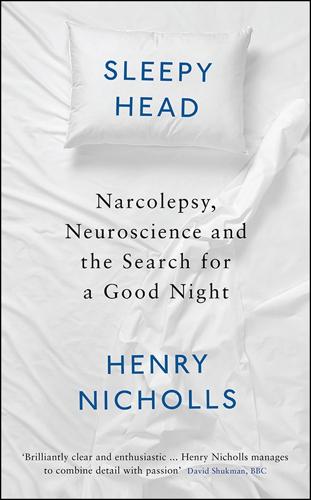
Sleepyhead: Narcolepsy, Neuroscience and the Search for a Good Night
by
Henry Nicholls
Published 1 Mar 2018
Beall, ‘Confronting a Traumatic Event: Toward an Understanding of Inhibition and Disease’, Journal of Abnormal Psychology, 95.3 (1986), 274–81 <https://doi.org/10.1037//0021-843X.95.3.274>. p. 219 physical and psychological health Pasquale G. Frisna, Joan C. Borod, and Stephen J. Lepore, ‘A Meta-Analysis of the Effects of Written Emotional Disclosure on the Health Outcomes of Clinical Populations’, Journal of Nervous and Mental Disease, 192.9 (2004), 629–34 <http://journals.lww.com/jonmd/Fulltext/2004/09000/A_Meta_Analysis_of_the_Effects_of_Written.8.aspx> [accessed 28 January 2017]. p. 219 onset of slumber Allison G. Harvey and Clare Farrell, ‘The Efficacy of a Pennebaker-Like Writing Intervention for Poor Sleepers’, Behavioral Sleep Medicine, 1.2 (2003), 115–24 <https://doi.org/10.1207/S15402010BSM0102_4>.
…
Bootzin prescribed that insomniacs should only go to bed when they are sleepy and if sleep doesn’t come in 15 minutes or so, they should get up and leave the bedroom. ‘This is one of the most powerful techniques to combat insomnia,’ says O’Regan. The evidence that stimulus control works comes mainly from studies in the 1980s and 1990s. Combining almost 60 of these into a meta-analysis published in 1994, researchers found stimulus control is effective, reducing the time taken to fall asleep by tens of minutes and how long people subsequently lie awake. As the desperation intensifies, the insomniac will often begin to chase sleep, going to bed a little earlier and staying in bed a touch longer, hoping beyond hope that they will get some rest.
…
Pennebaker also found that although the act of writing about these painful experiences caused an immediate elevation in blood pressure and brought on negative moods, it was also associated with fewer visits to the doctor. Since then, Pennebaker’s idea has been put through and passed more rigorous testing, and a meta-analysis published in 2004 concluded that putting emotional concerns onto paper improved both physical and psychological health. With respect to sleep in particular, there’s evidence that it speeds up the onset of slumber. My favourite method for getting back to sleep though is the ‘THE’ method, also known as ‘articulatory suppression’.
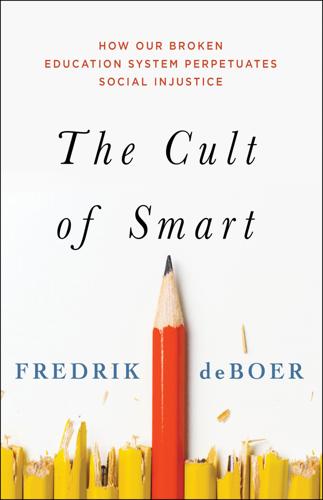
The Cult of Smart: How Our Broken Education System Perpetuates Social Injustice
by
Fredrik Deboer
Published 3 Aug 2020
Jens Dietrichson, Martin Bøg, Trine Filges, and Anne-Marie Klint Jørgensen, “Academic Interventions for Elementary and Middle School Students with Low Socioeconomic Status: A Systematic Review and Meta-Analysis,” Review of Educational Research 87, no. 2 (2017): 243–282. 26. Kate Knibbs, “The LA School System’s $1.3 Billion iPad Fiasco Comes to a Sad End,” Gizmodo, September 29, 2015. SIX: THE WHIMS OF NATURE 1. Tinca J. C. Polderman, Beben Benyamin, Christiaan A. De Leeuw, Patrick F. Sullivan, Arjen Van Bochoven, Peter M. Visscher, and Danielle Posthuma, “Meta-Analysis of the Heritability of Human Traits Based on Fifty Years of Twin Studies,” Nature Genetics 47, no. 7 (2015): 702. 2.
…
To succeed academically, a child should be born to college-educated parents.19 Those parents should be from the middle class or, preferably, the upper class.20 The child should be brought to full term and be born at a healthy weight.21 The child should be free from developmental or cognitive disabilities.22 The child should be raised in a lead-free environment.23 The child should not be abused or neglected, particularly early in life.24 As you may have noticed, all of these conditions are ones that educators and policymakers have little or no control over. I would not say, though, that we should be completely nihilistic about the available academic interventions. I think that we should instead be realistic about what we control and who is responsible for outcomes. A high-quality meta-analysis (a type of study that aggregates the statistics of past studies for greater validity) was published in 2017 that compared various interventions and their impacts on students from poorer homes.25 Synthesizing data from more than a hundred studies published over a 15-year period, the authors attempted to ascertain the benefits of interventions such as afterschool programs, behavioral interventions, computer-assisted teaching, and more.
…
In this way the environment comes to match the genetic potential; we gravitate toward mental environments consistent with our underlying predispositions. Another interesting dynamic lies in the Flynn effect. Named for the pioneering intelligence researcher James Flynn, the Flynn effect refers to the striking growth in IQ across essentially every tested cohort in the twentieth century. A recent meta-analysis found that IQs grew at a rate of about 3 points per decade since at least the 1930s, both a statistically and practically significant figure.6 Both the causes and the consequences of the Flynn effect have been hotly debated for decades. Many believe that the increase stems from more cognitively demanding environments—that as we progress through modernity, the challenges and stimulation our brains experience cause us to become more intellectually nimble.
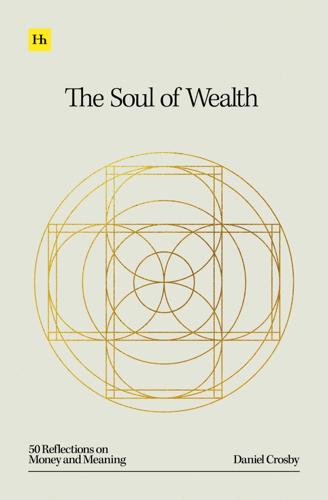
The Soul of Wealth
by
Daniel Crosby
Published 19 Sep 2024
Belk, “Three Scales to Measure Constructs Related to Materialism: Reliability, Validity, and Relationships to Measures of Happiness,” Advances in Consumer Research, Vol. 11 (1984), 291–297. 133 Helga Dittmar, Rod Bond, Megan Hurst, and Tim Kasser, “The relationship between materialism and personal well-being: A meta-analysis,” Journal of Personality and Social Psychology, Vol. 107:5 (2014), 879–924. 134 Emma L. Bradshaw, James H. Conigrave, Ben A. Steward, Kelly A. Ferber, Philip D. Parker, and Richard M. Ryan, “A meta-analysis of the dark side of the American dream: Evidence for the universal wellness costs of prioritizing extrinsic over intrinsic goals,” Journal of Personality and Social Psychology, Vol. 124:4 (2023), 873–899. 135 Tim Kasser and Richard M.
…
On the other hand, individuals on the extreme ends of the income spectrum either perceive a world stacked against them, or feel that their financial aspirations are unattainable, resulting in sweeping comparisons that erode contentment. Broader research also asserts that how we see ourselves measuring up to others—not our absolute level of prosperity—drives our happiness or discontent. A meta-analysis published in Psychological Bulletin explored the relationship between wealth inequality, social comparison, and happiness. The research, which collected data on more than 2.3 million participants globally, revealed that people’s subjective socioeconomic status, which reflects their perception of income, education, and occupation relative to others, is more strongly associated with happiness than their objective socioeconomic status measured by income and education levels.
…
Research has shown that practicing gratitude can increase happiness and overall well-being—one study found that people who wrote gratitude letters alongside receiving counseling reported better mental health outcomes compared to those who received counseling alone.24 Limit social media exposure: Scientific evidence shows that excessive use of social media contributes to feelings of sadness and discontent. A 2022 meta-analysis analyzing the link between time spent on social media and depression risk revealed that the risk of depression increased by 13% for each additional hour of social media use in adolescents.25 Consider setting boundaries on the amount of time you spend on social platforms and be mindful of how it affects your emotions.

Behave: The Biology of Humans at Our Best and Worst
by
Robert M. Sapolsky
Published 1 May 2017
Under those conditions, sustained intergroup contact generally decreases prejudices, often to a large extent and in a generalized, persistent manner. This was the conclusion of a 2006 meta-analysis of some five hundred studies comprising over 250,000 subjects from thirty-eight countries; beneficial effects were roughly equal for group differences in race, religion, ethnicity, or sexual orientation. As examples, a 1957 study concerning desegregation of the Merchant Marines showed that the more trips white seamen took with African Americans, the more positive their racial attitudes. Same for white cops as a function of time spent with African American partners.19 A more recent meta-analysis provides additional insights: (a) The beneficial effects typically involve both more knowledge about and more empathy for the Thems.
…
Meyer-Lindenberg, “MAOA and the Neurogenetic Architecture of Human Aggression,” TINS 31 (2008): 120. 46. J. Kim-Cohen et al., “MAOA, Maltreatment, and Gene Environment Interaction Predicting Children’s Mental Health: New Evidence and a Meta-analysis,” Mol Psychiatry 11 (2006): 903; A. Byrd and S. Manuck, “MAOA, Childhood Maltreatment and Antisocial Behavior: Meta-analysis of a Gene-Environment Interaction,” BP 75 (2013): 9; G. Frazzetto et al., “Early Trauma and Increased Risk for Physical Aggression During Adulthood: The Moderating Role of MAOA Genotype,” PLoS ONE 2 (2007): e486; C. Widom and L. Brzustowicz, “MAOA and the ‘Cycle of Violence’: Childhood Abuse and Neglect, MAOA Genotype, and Risk for Violent and Antisocial Behavior,” BP 60 (2006): 684; R.
…
Munafò et al., “Association of the Dopamine D4 Receptor (DRD4) Gene and Approach-Related Personality Traits: Meta-analysis and New Data,” BP 63 (2007): 197; R. Ebstein et al., “Dopamine D4 Receptor (D4DR) Exon III Polymorphism Associated with the Human Personality Trait of Novelty Seeking,” Nat Genetics 12 (1996): 78; J. Carpenter et al., “Dopamine Receptor Genes Predict Risk Preferences, Time Preferences, and Related Economic Choices,” J Risk and Uncertainty 42 (2011): 233; J. Garcia et al., “Associations Between Dopamine D4 Receptor Gene Variation with Both Infidelity and Sexual Promiscuity,” PLoS ONE 5 (2010): e14162; D. Li et al., “Meta-analysis Shows Significant Association Between Dopamine System Genes and Attention Deficit Hyperactivity Disorder (ADHD),” Human Mol Genetics 15 (2006): 2276; L.
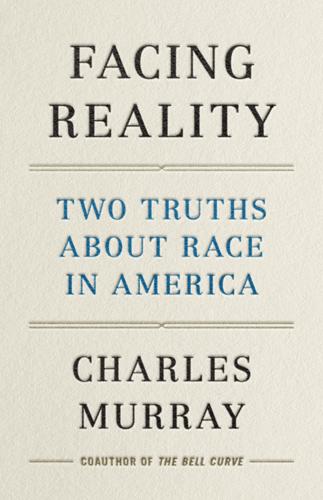
Facing Reality: Two Truths About Race in America
by
Charles Murray
Published 14 Jun 2021
Wicherts, “Does Stereotype Threat Influence Performance of Girls in Stereotyped Domains? A Meta-Analysis,” Journal of School Psychology (2015); and Oren Shewach, Paul R. Sackett, and Sander Quint, “Stereotype Threat Effects in Settings with Features Likely Versus Unlikely in Operational Test Settings: A Meta-Analysis,” Journal of Applied Psychology (2019). The former, coauthored by one the world’s most highly regarded quantitative social science methodologists (Jelte Wicherts), concluded that “based on the small average effect size in our meta-analysis, which is most likely inflated due to publication bias, we would not feel confident to proclaim that stereotype manipulations will harm mathematic performance of girls in a systematic way.”
…
Not surprisingly, recognition of that fact has led to an enormous amount of research about the relationship of cognitive ability to job productivity. The technical literature is so extensive that the chapter on cognitive abilities in the most recent edition of The Oxford Handbook of Personnel Assessment and Selection (2014) is not a meta-analysis of existing studies; it is a review of many meta-analyses. The consistent findings about cognitive ability and job performance that apply most directly to group differences in cognitive ability are these: Measures of cognitive ability and job performance are always positively correlated. The size of the correlation goes up as the job becomes more cognitively complex.
…
Given those two knowns, it is reasonable to expect that the literature on race and job performance will consistently show that race differences exist, and in fact this has been the case. The two most comprehensive meta-analyses are by Philip L. Roth, Allen Huffcutt, and Philip Bobko, “Ethnic Group Differences in Measures of Job Performance: A New Meta-Analysis,” published in the Journal of Applied Psychology (2003); and by Patrick F. McKay and Michael A. McDaniel, “A Reexamination of Black-White Mean Differences in Work Performance: More Data, More Moderators,” published in the Journal of Applied Psychology (2006). Their findings build on early synthetic analyses from the 1980s and 1990s and are consistent with each other.
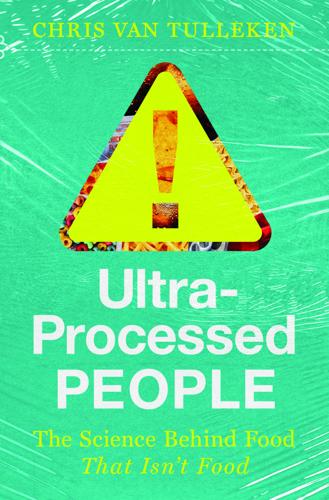
Ultra-Processed People: The Science Behind Food That Isn't Food
by
Chris van Tulleken
Published 26 Jun 2023
London: Pinter & Martin, 2019. 29 Sankar MJ, Sinha B, Chowdhury R, et al. Optimal breastfeeding practices and infant and child mortality: a systematic review and meta-analysis. Acta Paediatrica 2015; 104: 3–13. 30 Horta BL, Loret de Mola C, Victora CG. Long-term consequences of breastfeeding on cholesterol, obesity, systolic blood pressure and type 2 diabetes: a systematic review and meta-analysis. Acta Paediatrica 2015; 104: 30–37. 31 Bowatte G, Tham R, Allen KJ, et al. Breastfeeding and childhood acute otitis media: a systematic review and meta-analysis. Acta Paediatrica 2015; 104: 85–95. 32 Victora CG, Bahl R, Barros AJD, et al. Breastfeeding in the 21st century: epidemiology, mechanisms, and lifelong effect.
…
Breastfeeding in the 21st century: epidemiology, mechanisms, and lifelong effect. Lancet 2017; 387: 475–90. 33 Lodge CJ, Tan DJ, Lau MXZ, et al. Breastfeeding and asthma and allergies: a systematic review and meta-analysis. Acta Paediatrica 2015; 104: 38–53. 34 Thompson JMD, Tanabe K, Moon RY, et al. Duration of breastfeeding and risk of SIDS: an individual participant data meta-analysis. Pediatrics 2017; 140: e20171324. 35 Horta BL, Loret de Mola C, Victora CG. Breastfeeding and intelligence: a systematic review and meta-analysis. Acta Paediatrica 2015; 104: 14–29. 36 Baker et al, 2016. 37 British Nutrition Foundation. What we do. 2022. Available from: https://www.nutrition.org.uk/our-work/what-we-do/. 38 British Nutrition Foundation.
…
Obesity 2013; 21: 957–59. 3 Hall KD, Ayuketah A, Brychta R, et al. Ultra-processed diets cause excess calorie intake and weight gain: an inpatient randomized controlled trial of ad libitum food intake. Cellular Metabolism 2019; 30: 67–77. 4 Martini D, Godos J, Bonaccio M, et al. Ultra-processed foods and nutritional dietary profile: a meta-analysis of nationally representative samples. Nutrients 2021; 13: 3390. 5 October 28. Health inequalities and obesity. 2020. Available from: https://www.rcplondon.ac.uk/news/health-inequalities-and-obesity. 6 Fiolet T, Srour B, Sellem L, et al. Consumption of ultra-processed foods and cancer risk: results from NutriNet-Santé prospective cohort.
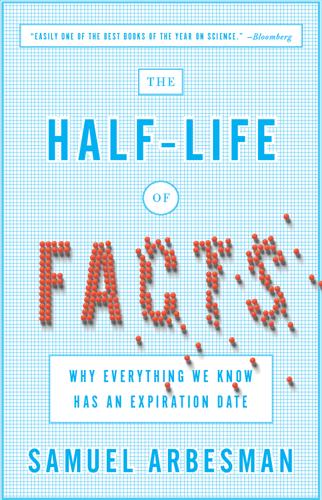
The Half-Life of Facts: Why Everything We Know Has an Expiration Date
by
Samuel Arbesman
Published 31 Aug 2012
But how to decide which papers are relevant and which ones aren’t? Rather than be accused of subjectivity, or have to gain expertise in countless specific areas, Robinson and Goodman sidestepped these problems by doing something clever: They looked at meta-analyses. Meta-analysis is a well-known technique that can be used to extract more meaning from specific papers than could be gained from looking at each one alone. A meta-analysis combines the results of papers in a specific area in order to see if there is a consensus or if more precise results can be found. They are like the analyses of thermal conductivity for different elements mentioned in chapter 3, which use the results from lots of different articles to get a better picture of the shape of what we know about how these elements conduct heat.
…
While Don Swanson combined papers from scientific areas that should have overlapped but didn’t, Lau and his colleagues combined papers from very similar areas that had never been combined, looking at them more carefully than they had been examined up until then. By using cumulative meta-analysis, hidden knowledge could have been revealed fifteen years earlier than it actually was and helped improve the health of countless individuals. Modern technology is beginning to aid cumulative meta-analysis and its development, and we can even now use computational techniques to employ Swanson’s methods on a grand scale. . . . WE are not yet at the stage where we can loose computers upon the stores of human knowledge only to return a week later with discoveries that would supplant those of Einstein or Newton in our scientific pantheon.
…
They are like the analyses of thermal conductivity for different elements mentioned in chapter 3, which use the results from lots of different articles to get a better picture of the shape of what we know about how these elements conduct heat. Assuming the meta-analyses bring together all the relevant trials, Robinson and Goodman simply looked through all the studies examined in each meta-analysis to see how many of the studies cited in the meta-analyses were also mentioned in each of the newer studies being examined. What they found shouldn’t be surprising. Scientists cite fewer than 25 percent of the relevant trials when writing about their own research. The more papers in the field, the smaller the fraction of previous papers that were quoted in a new study.
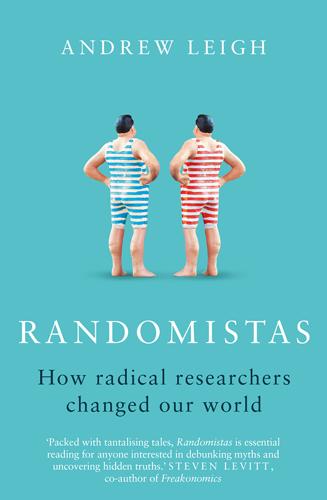
Randomistas: How Radical Researchers Changed Our World
by
Andrew Leigh
Published 14 Sep 2018
Study participants from France joined later than other nations, so their results were not included in the thirteen-year follow up. 52Goran Bjelakovic, Dimitrinka Nikolova, Lise Lotte Gluud, et al., ‘Mortality in randomized trials of antioxidant supplements for primary and secondary prevention: Systematic review and meta-analysis’, Journal of the American Medical Association, vol. 297, no. 8, 2007, pp. 842–57. For an informal discussion of the issue, see Norman Swan, ‘The health report’, ABC Radio National, 5 March 2007. The researchers were at pains to point out that their findings should not be extrapolated to foods that are rich in vitamins, such as fresh fruit and vegetables. 53H.C. Bucher, P. Hengstler, C. Schindler & G.Meier, ‘N-3 polyunsaturated fatty acids in coronary heart disease: A meta-analysis of randomized controlled trials’, American Journal of Medicine, vol. 112, no. 4, 2002, pp. 298–304. 54E.C.
…
Some kinds of cases – such as family violence or fraud – aren’t suitable for restorative justice, but the experiments covered a wide range of other crimes, including assault, robbery and car theft. Combining the results of ten restorative justice experiments from around the world – a process known as meta-analysis – researchers concluded that it does cut crime.2 In the two years afterwards, offenders who went through the restorative justice process were significantly less likely to commit another crime. For society, the benefits more than covered the costs. In the London experiment, the gains from crime reduction were worth fourteen times more than the cost of running the restorative justice process.
…
A follow-up found death rates of 26 per cent for the treatment group and 22 per cent for the control group: CRASH Trial Collaborators, ‘Final results of MRC CRASH, a randomised placebo-controlled trial of intravenous corticosteroid in adults with head injury—outcomes at 6 months’, The Lancet, vol. 365, no. 9475, 2005, pp. 1957–9. 48Roger Chou, Rongwei Fu, John A. Carrino & Richard A. Deyo, ‘Imaging strategies for low-back pain: Systematic review and meta-analysis’, The Lancet, vol. 373, no. 9662, 2009, pp. 463–72; G. Michael Allan, G. Richard Spooner & Noah Ivers, ‘X-Ray scans for nonspecific low back pain: A nonspecific pain?’ Canadian Family Physician, vol. 58, no. 3, 2012, p. 275. 49Allan, Spooner & Ivers, ‘X-Ray scans’, p. 275. 50Peter C. Gøtzsche & Karsten Juhl Jørgensen, ‘Screening for breast cancer with mammography’, Cochrane Database of Systematic Reviews 2013, Issue 6, 2013, article no.
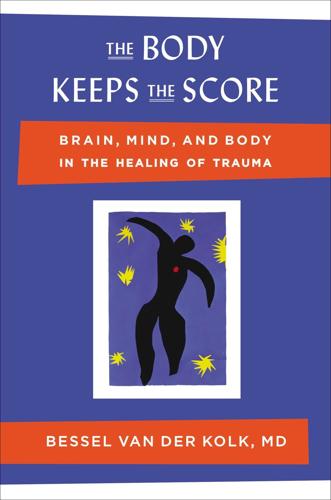
The Body Keeps the Score: Brain, Mind, and Body in the Healing of Trauma
by
Bessel van Der Kolk M. D.
Published 7 Sep 2015
Lowell, et al., “A Randomized Controlled Trial of Child FIRST: A Comprehensive Home-Based Intervention Translating Research into Early Childhood Practice,” Child Development 82, no. 1 (January/February 2011): 193–208; S. T. Harvey and J. E. Taylor, “A Meta-Analysis of the Effects of Psychotherapy with Sexually Abused Children and Adolescents, Clinical Psychology Review 30, no. 5 (July 2010): 517–35; J. E. Taylor and S. T. Harvey, “A Meta-Analysis of the Effects of Psychotherapy with Adults Sexually Abused in Childhood,” Clinical Psychology Review 30, no. 6 (August 2010): 749–67; Olds, Henderson, Chamberlin, & Tatelbaum, 1986; B. C. Stolbach, et al., “Complex Trauma Exposure and Symptoms in Urban Traumatized Children: A Preliminary Test of Proposed Criteria for Developmental Trauma Disorder,” Journal of Traumatic Stress 26, no. 4 (August 2013): 483–91.
…
McDonagh-Coyle, et al., “Randomized Trial of Cognitive-Behavioral Therapy for Chronic Posttraumatic Stress Disorder in Adult Female Survivors of Childhood Sexual Abuse,” Journal of Consulting and Clinical Psychology 73, no. 3 (2005): 515–24; Institute of Medicine of the National Academies, Treatment of Posttraumatic Stress Disorder: An Assessment of the Evidence (Washington: National Academies Press, 2008); and R. Bradley, et al., “A Multidimensional Meta-Analysis of Psychotherapy for PTSD,” American Journal of Psychiatry 162, no. 2 (2005): 214–27. 39. J. Bisson, et al., “Psychological Treatments for Chronic Posttraumatic Stress Disorder: Systematic Review and Meta-Analysis,” British Journal of Psychiatry 190 (2007): 97–104. See also L. H. Jaycox, E. B. Foa, and A. R. Morrall, “Influence of Emotional Engagement and Habituation on Exposure Therapy for PTSD,” Journal of Consulting and Clinical Psychology 66 (1998): 185–92. 40.
…
B. Sterman, L. R. Macdonald, and R. K. Stone, “Biofeedback Training of the Sensorimotor Electroencephalogram Rhythm in Man: Effects on Epilepsy,” Epilepsia 15, no. 3 (1974): 395–416. A recent meta-analysis of eighty-seven studies showed that neurofeedback led to a significant reduction in seizure frequency in approximately 80 percent of epileptics who received the training. Gabriel Tan, et al., “Meta-Analysis of EEG Biofeedback in Treating Epilepsy,” Clinical EEG and Neuroscience 40, no. 3 (2009): 173–79. 7. This is part of the same circuit of self-awareness that I described in chapter 5. Alvaro Pascual-Leone has shown how, when one temporarily knocks out the area above the medial prefrontal cortex with transcranial magnetic stimulation (TMS), people can temporarily not identify whom they are looking at when they stare into the mirror.
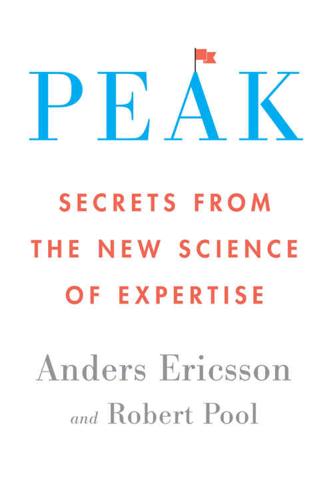
Peak: Secrets From the New Science of Expertise
by
Anders Ericsson
and
Robert Pool
Published 4 Apr 2016
As I was working on this book, a group of researchers published a meta-analysis—that is, an analysis of a large number of previously published studies—that concluded that structured practice (although they called it “deliberate practice”) explained relatively little of the difference in performance among individuals in various fields, including music, sports, education, and other professions. See Brooke N. Macnamara, David Z. Hambrick, and Frederick L. Oswald, “Deliberate practice and performance in music, games, sports, education, and professions: A meta-analysis,” Psychological Science 25 (2014): 1608–1618. The major problem with this meta-analysis was that few of the studies the researchers examined were actually looking at the effects of the type of practice on performance that we had referred to as deliberate practice; instead, the researchers used very loose criteria to decide which studies to include in their meta-analysis, so they ended up examining a collection of studies that dealt mainly with various types of practice and training that did not meet the criteria of deliberate practice as we described it earlier in this chapter.
…
The major problem with this meta-analysis was that few of the studies the researchers examined were actually looking at the effects of the type of practice on performance that we had referred to as deliberate practice; instead, the researchers used very loose criteria to decide which studies to include in their meta-analysis, so they ended up examining a collection of studies that dealt mainly with various types of practice and training that did not meet the criteria of deliberate practice as we described it earlier in this chapter. I offer a detailed critique of their work in K. Anders Ericsson, “Challenges for the estimation of an upper-bound on relations between accumulated deliberate practice and the associated performance in domains of expertise: Comments on Macnamara, Hambrick, and Oswald’s (2014) published meta-analysis,” available on my website, https://psy.fsu.edu/faculty/ericsson/ericsson.hp.html.
…
Soumerai, “Systematic review: The relationship between clinical experience and quality of health care,” Annals of Internal Medicine 142 (2005): 260–273. See also Paul M. Spengler and Lois A. Pilipis, “A comprehensive meta-analysis of the robustness of the experience-accuracy effect in clinical judgment,” Journal of Counseling Psychology 62, no. 3 (2015): 360–378. [>] Another study of decision-making accuracy: Paul M. Spengler, Michael J. White, Stefanía Ægisdóttir, Alan S. Maugherman, Linda A. Anderson, Robert S. Cook, Cassandra N. Nichols, Georgios K. Lampropoulos, Blain S. Walker, Genna R. Cohen, and Jeffrey D. Rush, “The meta-analysis of clinical judgment project: Effects of experience on judgment accuracy,” Counseling Psychology 20 (2009): 350–399. [>] experienced nurses do not: K.
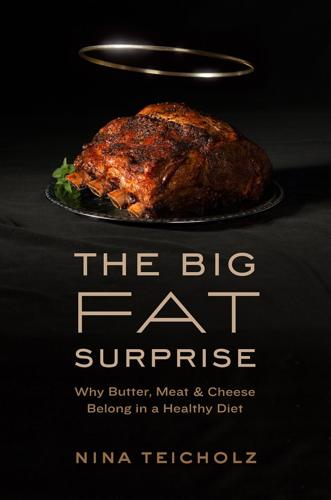
The Big Fat Surprise: Why Butter, Meat and Cheese Belong in a Healthy Diet
by
Nina Teicholz
Published 12 May 2014
“Association of Dietary Intake of Fat and Fatty Acids with Risk of Breast Cancer.” Journal of the American Medical Association 281, no. 10 (March 10, 1999): 914–920. Hooper, Lee, Paul A. Kroon, Eric B. Rimm, et al. “Flavonoids, Flavonoid-Rich Foods, and Cardiovascular Risk: a Meta-Analysis of Randomized Controlled Trials.” American Journal of Clinical Nutrition 88, no. 1 (July 2008): 38–50. Hopkins, Paul N. “Effects of Dietary Cholesterol on Serum Cholesterol: A Meta-Analysis and Review.” American Journal of Clinical Nutrition 55, no. 6 (June 1992): 1060–1070. Hornstra, Gerard, and Anna Vendelmans-Starrenburg. “Induction of Experimental Arterial Occlusive Thrombi in Rats.”
…
Davis. “N-6 Fatty Acid-Specific and Mixed Polyunsaturate Dietary Interventions Have Different Effects on CHD Risk: A Meta-Analysis of Randomised Controlled Trials.” British Journal of Nutrition 104, no. 11 (December 2010): 1586–1600. Ramsden, Christopher E., Daisy Zamora, Boonseng Leelarthaepin, et al. “Use of Dietary Linoleic Acid for Secondary Prevention of Coronary Heart Disease and Death: Evaluation of Recovered Data from the Sydney Diet Heart Study and Updated Meta-Analysis.” British Medical Journal 346 (February 4, 2013): doi:10.1136/bmj.e8707. Rand, Margaret L., Adje A. Hennissen, and Gerard Hornstra.
…
Ahrens, Jr., “Effects of Dietary Cholesterol on the Regulation of Total Body Cholesterol in Man,” Journal of Lipid Research 12, no. 2 (1971): 233–247; Paul J. Nestel and Andrea Poyser, “Changes in Cholesterol Synthesis and Excretion When Cholesterol Intake Is Increased,” Metabolism 25, no. 12 (1976): 1591–1599. one of the most comprehensive analyses: Paul N. Hopkins, “Effects of Dietary Cholesterol on Serum Cholesterol: A Meta-Analysis and Review,” American Journal of Clinical Nutrition 55, no. 6 (1992): 1060–1070. authorities in Britain and most other European nations: A. Stewart Truswell, “Evolution of Dietary Recommendations, Goals, and Guidelines,” American Journal of Clinical Nutrition 45, no. 5, suppl. (1987): 1068. The United States, however, has continued recommending: Dietary Guidelines Advisory Committee, prepared for the Agricultural Research Service, US Department of Agriculture and US Department of Health and Human Services, Report of the Dietary Guidelines Advisory Committee on the Dietary Guidelines for Americans, 2010.
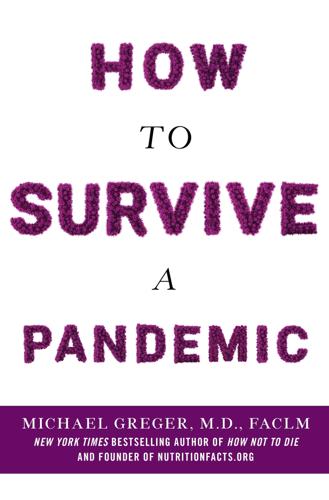
How to Survive a Pandemic
by
Michael Greger, M.D., FACLM
Prevalence of comorbidities in the novel Wuhan coronavirus (COVID-19) infection: a systematic review and meta-analysis. Int J Infect Dis. [Epub ahead of print 2020 Mar 12; accessed 2020 Mar 31]. https://doi.org/10.1016/j.ijid.2020.03.017. 2714. Jain V, Yuan J-M. 2020 Mar 16. Systematic review and meta-analysis of predictive symptoms and comorbidities for severe COVID-19 infection. medRxiv.org. [accessed 2020 Mar 31]. https://doi.org/10.1101/2020.03.15.20035360. 2715. Jain V, Yuan J-M. 2020 Mar 16. Systematic review and meta-analysis of predictive symptoms and comorbidities for severe COVID-19 infection. medRxiv.org.
…
The effectiveness of high dose zinc acetate lozenges on various common cold symptoms: a meta-analysis. BMC Fam Pract. 16:24. https://doi.org/10.1186/s12875-015-0237-6. 2786. Hemilä H. 2017. Zinc lozenges and the common cold: a meta-analysis comparing zinc acetate and zinc gluconate, and the role of zinc dosage. JRSM Open. 8(5):2054270417694291. https://doi.org/10.1177/2054270417694291. 2787. Singh M, Das RR. 2011. Zinc for the common cold. Cochrane Database Syst Rev. 2:CD001364. https://doi.org/10.1002/14651858.CD001364.pub3. 2788. Hemilä H. 2017. Zinc lozenges and the common cold: a meta-analysis comparing zinc acetate and zinc gluconate, and the role of zinc dosage.
…
Antimicrob Agents Chemother. 25(1):20–24. https://doi.org/10.1128/aac.25.1.20. 2782. Hemilä H. 2017. Zinc lozenges and the common cold: a meta-analysis comparing zinc acetate and zinc gluconate, and the role of zinc dosage. JRSM Open. 8(5):2054270417694291. https://doi.org/10.1177/2054270417694291. 2783. Singh M, Das RR. 2011. Zinc for the common cold. Cochrane Database Syst Rev. 2:CD001364. https://doi.org/10.1002/14651858.CD001364.pub3. 2784. Hemilä H, Petrus EJ, Fitzgerald JT, Prasad A. 2016. Zinc acetate lozenges for treating the common cold: an individual patient data meta-analysis. Br J Clin Pharmacol. 82(5):1393–1398. https://doi.org/10.1111/bcp.13057. 2785.
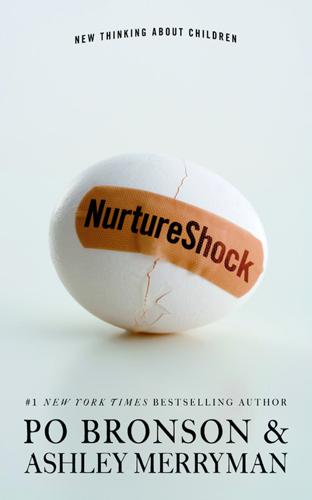
NurtureShock: New Thinking About Children
by
Po Bronson
and
Ashley Merryman
Published 2 Sep 2008
Once children hear praise they interpret as meritless, they discount not just the insincere praise, but sincere praise as well. Excessive praise also distorts children’s motivation; they begin doing things merely to hear the praise, losing sight of intrinsic enjoyment. Scholars from Reed College and Stanford reviewed over 150 praise studies. Their meta-analysis determined that praised students become risk-averse and lack perceived autonomy. The scholars found consistent correlations between a liberal use of praise and students’ “shorter task persistence, more eye-checking with the teacher, and inflected speech such that answers have the intonation of questions.”
…
Those admitted at kindergarten to private schools will stay through eighth grade. While the publishers of the tests aren’t trying to determine how well early intelligence tests predict later achievement, the academic researchers are. In 2003, Dr. Hoi Suen, Professor of Educational Psychology at Pennsylvania State University, published a meta-analysis of 44 studies, each of which looked at how well tests given in pre-K or in kindergarten predicted achievement test scores two years later. Most of the underlying 44 studies had been published in the mid-1970s to mid-1990s, and most looked at a single school or school district. Analyzing them together, Suen found that intelligence test scores before children start school, on average, had only a 40% correlation with later achievement test results.
…
One test, the MSCEIT, comes from the team that originally coined the term “emotional intelligence”—including Dr. Peter Salovey, Dean of Yale College. The other test, the EQ-i, comes from Dr. Reuven Bar-On, who coined the term “Emotional Quotient.” Researchers around the world have been using these scales, and the results have been a shock. In a meta-analysis of these studies, scholars concluded that the correlation between emotional intelligence and academic achievement was only 10 percent. Those studies were all done on adolescents and college students—not on kids—but one study of a prison population showed that inmates have high EQ. So much for the theory that emotionally intelligent people make better life choices.

The Unpersuadables: Adventures With the Enemies of Science
by
Will Storr
Published 1 Jan 2013
A typical example is a 2004 paper in the British Journal of Psychiatry that found the rate of childhood abuse in adults suffering psychosis to be fifteen times greater than expected. He is currently preparing to submit a meta-analysis to ‘one of the world’s top medical journals’ which will compile ten years of large-scale studies into the environmental causes of psychosis. ‘Just to tell you what the meta-analysis will say – the odds ratio is three. That means that somebody who has been sexually abused has a three times greater chance of becoming psychotic than somebody who has had a healthy childhood.’ I ask Bentall what he thinks of Ron Coleman’s contention that there is no such thing as schizophrenia.
…
We had already shown he did not do that in the 30 trials, comparing long, medium and short, and there is no suggestion he was doing that in the randomised trials. But the control data show clearly that there was no such pattern. Wiseman simply ignores these data. You can see these in Fig. 5 of this paper: http://www.sheldrake.org/Articles&Papers/papers/animals/pdf/dog_video.pdf.’ 265 adding a meta-analysis that confirms his view: Dean Radin, ‘The Sense of Being Stared At: A Preliminary Meta-Analysis’, Journal of Consciousness Studies 12, no.6 (2005), pp. 95–100. 266 Computer pioneer Alan Turing once said: John Horgan, ‘Brilliant Scientists are Open-Minded about Paranormal Stuff, So Why Not You?’, Scientific American, 20 July 2012. 266 New Scientist has reported: Robert Matthews, ‘Opposites Detract’, New Scientist, 13 March 2004. 266 As far back as 1951, pioneering neuroscientist Donald Hebb admitted: Montague Ullman, The Comprehensive Textbook of Psychiatry, Vol. 3, 3rd edition, Chapter 56, Section 15, pp. 3235–45, 1980.
…
Some of these may well conclude that homeopathy works, but are they any good? This is exactly what ‘Shang et al.’, the famous paper that Tournier referenced, sought to discover. When different scientists tackle the same problem and produce conflicting results, one way of making sense of them all is to conduct a meta-analysis. You take the trials, use complex mathematical formulae to blend their data and end up with what you hope is an ultimate conclusion. That is what Professor Aijing Shang’s team, at the University of Berne in Switzerland, sought to do for homeopathy. It was an ambitious project and inevitably controversial.
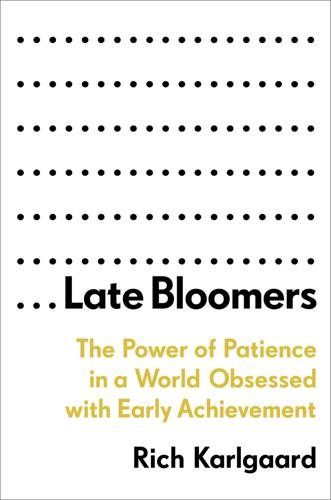
Late Bloomers: The Power of Patience in a World Obsessed With Early Achievement
by
Rich Karlgaard
Published 15 Apr 2019
first experience symptoms at age fourteen: Ibid. “The deaths are but the tip”: Bichell, “Suicide Rates Climb.” “It’s not an exaggeration”: Jean M. Twenge et al., “It’s Beyond My Control: A Cross-Temporal Meta-Analysis of Increasing Externality in Locus of Control, 1960–2002,” Personality and Social Psychology Review 8 (2004): 308–19; J. Twenge et al., “Birth Cohort Increases in Psychopathology Among Young Americans, 1938–2007: A Cross-Temporal Meta-Analysis of the MMPI,” Clinical Psychology Review 30 (2010): 145–54. For historical data on intrinsic and extrinsic values, see J. H. Pryor et al., The American Freshman: Forty-Year Trends, 1966–2006 (Los Angeles: Higher Education Research Institute, 2007).
…
Among college students: Sasha Zarins and Sara Konrath, “Changes over Time in Compassion-Related Variables in the United States,” in The Oxford Handbook of Compassion Science, ed. Emma M. Seppälä et al. (New York: Oxford University Press, 2016); Sara H. Konrath, Edward H. O’Brien, and Courtney Hsing, “Changes in Dispositional Empathy in American College Students over Time: A Meta-Analysis,” Personality and Social Psychology Review 15, no. 2 (2011): 180–98. They show greater reflective thinking: Mihaly Csikszentmihalyi and Kevin Rathunde, “The Psychology of Wisdom: An Evolutionary Interpretation,” in Wisdom: Its Nature, Origins, and Development, ed. Robert J. Sternberg (Cambridge: Cambridge University Press, 1990); V.
…
Van Vonderen and William Kinnally, “Media Effects on Body Image: Examining Media Exposure in the Broader Context of Internal and Other Social Factors,” American Communication Journal 14, no. 2 (2012): 41–57; Rebecca Coleman, “The Becoming of Bodies: Girls, Media Effects, and Body Image,” Feminist Media Studies 8, no. 2 (2008): 163–79; Shelly Grabe, L. Monique Ward, and Janet Shibley Hyde, “The Role of the Media in Body Image Concerns Among Women: A Meta-Analysis of Experimental and Correlational Studies,” Psychological Bulletin 134, no. 3 (2008): 460; Patti M. Valkenburg, Jochen Peter, and Joseph B. Walther, “Media Effects: Theory and Research,” Annual Review of Psychology 67 (2016): 315–38; Christopher P. Barlett, Christopher L. Vowels, and Donald A.
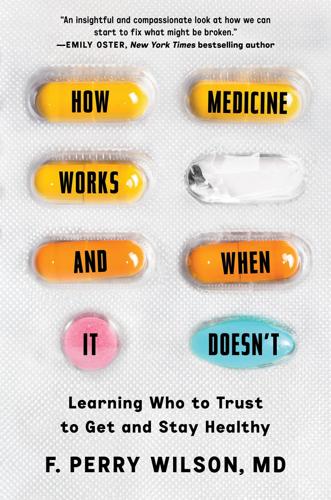
How Medicine Works and When It Doesn't: Learning Who to Trust to Get and Stay Healthy
by
F. Perry Wilson
Published 24 Jan 2023
CHAPTER 2: CHANGING OUR MINDS 1 critical care specialist Emanuel Rivers: Emanuel Rivers et al., “Early Goal-Directed Therapy in the Treatment of Severe Sepsis and Septic Shock,” New England Journal of Medicine 345, no. 19 (November 8, 2001): 1368–77, https://doi.org/10.1056/NEJMoa010307. 2 In 2017, sixteen years after the Rivers: Protocolized Resuscitation in Sepsis Meta-analysis (PRISM) Investigators, “Early, Goal-Directed Therapy for Septic Shock—a Patient-Level Meta-Analysis,” New England Journal of Medicine 376, no. 23 (June 8, 2017): 2223–34, https://doi.org/10.1056/NEJMoa1701380. 3 In 2018, psychology professor Kristin Laurin published: Kristin Laurin, “Inaugurating Rationalization: Three Field Studies Find Increased Rationalization When Anticipated Realities Become Current,” Psychological Science 29, no. 4 (April 1, 2018): 483–95, https://doi.org/10.1177/0956797617738814. 4 First described in 1977, the effect: Lynn Hasher, David Goldstein, and Thomas Toppino, “Frequency and the Conference of Referential Validity,” Journal of Verbal Learning and Verbal Behavior 16, no. 1 (February 1, 1977): 107–12, https://doi.org/10.1016/S0022-5371(77)80012-1. 5 From April 2016 to October 2020: Search on Trump Twitter Archive, accessed June 14, 2022, www.thetrumparchive.com. 6 In the Institute of Medicine’s seminal: Institute of Medicine (US) Committee on Quality of Health Care in America, To Err Is Human: Building a Safer Health System, ed.
…
I suspect that every single person reading this book understands how scrolling through pictures of your friends on a small phone in a dark room could make you feel completely, utterly lonely. Loneliness has a powerful effect on health. Research demonstrates that social isolation and feelings of loneliness lead to impaired executive function, worse sleep, and declines in mental and physical well-being. A large meta-analysis, combining results from seventy studies and three million participants, found that individuals who felt lonely died at a rate roughly 30 percent higher than those who did not. This makes social isolation and loneliness significant risk factors for death. What’s worse, the healthy way to cope with loneliness—reaching out to others—is not the most common way Americans deal with it.
…
Lowe, “Garlic and Cardiovascular Disease: A Critical Review,” Journal of Nutrition 136, no. 3 (March 1, 2006): 736S–740S, https://doi.org/10.1093/jn/136.3.736S. 3 But even putting ethics aside: Monica Dinu et al., “Vegetarian, Vegan Diets and Multiple Health Outcomes: A Systematic Review with Meta-Analysis of Observational Studies,” Critical Reviews in Food Science and Nutrition 57, no. 17 (November 22, 2017): 3640–49, https://doi.org/10.1080/10408398.2016.1138447. 4 One of my favorite quantitative: Peter H. Ditto and David F. Lopez, “Motivated Skepticism: Use of Differential Decision Criteria for Preferred and Nonpreferred Conclusions,” Journal of Personality and Social Psychology 63, no. 4 (1992): 568–84, https://doi.org/10.1037/0022-3514.63.4.568. 5 And interpretation, if you let it: Arthur L.
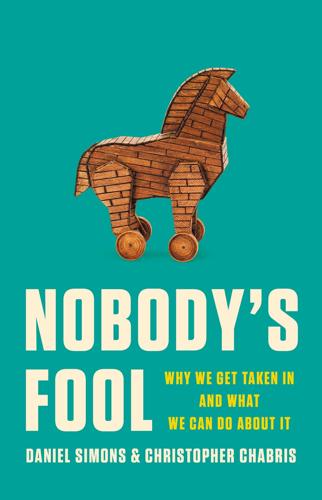
Nobody's Fool: Why We Get Taken in and What We Can Do About It
by
Daniel Simons
and
Christopher Chabris
Published 10 Jul 2023
Ivermectin studies were analyzed in detail on the blog Astral Codex Ten: “Ivermectin: Much More Than You Wanted to Know,” November 16, 2021 [https://astralcodexten.substack.com/p/ivermectin-much-more-than-you-wanted]. Although “real-time meta-analysis” isn’t a thing, traditional meta-analyses combine all of the relevant work in a literature to give a quantitative estimate of the overall size of an effect. If all of the studies entering into that estimate are legitimate, the meta-analysis can serve as a basis for planning future research. If misleading or fraudulent studies are included, they can mislead other researchers into thinking effects are larger than they actually are.
…
Brainard, “‘Zombie Papers’ Just Won’t Die: Retracted Papers by Notorious Fraudster Still Cited Years Later,” Science, June 27, 2022 [https://www.science.org/content/article/zombie-papers-wont-die-retracted-papers-notorious-fraudster-still-cited-years-later], and a meta-analysis on the effectiveness of nudging included many of Brian Wansink’s faulty studies and thereby came to an incorrect conclusion; see S. Mertens, M. Herberz, U. J. J. Hahnel, and T. Brosch, “The Effectiveness of Nudging: A Meta-Analysis of Choice Architecture Interventions Across Behavioral Domains,” Proceedings of the National Academy of Sciences 119 (2022): e2107346118 [https://doi.org/10.1073/pnas.2107346118]; note that this paper has incorporated significant corrections since its initial publication. 20.
…
Ritchie, “How Growth Mindset Shrank,” Science Fictions, October 11, 2022 [https://stuartritchie.substack.com/p/growth-mindset-decline]; S. Ritchie, Science Fictions: How Fraud, Bias, Negligence, and Hype Undermine the Search for Truth (New York: Metropolitan Books, 2020). Meta-analysis: B. N. Macnamara and A. P. Burgoyne, “Do Growth Mindset Interventions Impact Students’ Academic Achievement? A Systematic Review and Meta-Analysis with Recommendations for Best Practices,” Psychological Bulletin (2022), advance online publication [https://doi.org/10.1037/bul0000352]. 30. For an analysis of the differences between evaluating options separately or comparatively, see M.
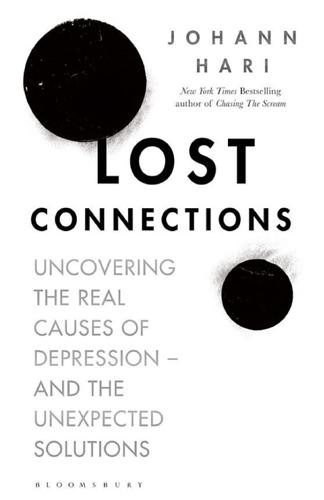
Lost Connections: Uncovering the Real Causes of Depression – and the Unexpected Solutions
by
Johann Hari
Published 1 Jan 2018
For this and the next chapter, I also drew on (amongst many other studies): Irving Kirsch and Guy Sapirstein, “Listening to Prozac but Hearing Placebo: A Meta-Analysis of Antidepressant Medication,” Prevention & Treatment 1, no. 2 (June 1998); Kirsch, “Anti-depressants and the Placebo Effect,” Z Psychol 222, no 3 (2014): 128–134, doi: 10.1027/2151-2604/a000176; Kirsch, “Challenging Received Wisdom: Antidepressants and the Placebo Effect,” MJM 11, no. 2 (2008): 219–222, PMCID: PMC2582668; Kirsch et al., “Initial Severity and Antidepressant Benefits: A Meta-Analysis of Data Submitted to the Food and Drug Administration,” http://dx.doi.org/10.1371/journal.pmed.0050045; Kirsch et al., “The emperor’s new drugs: An analysis of antidepressant medication data submitted to the U.S.
…
There’s a good graph of antidepressant prescriptions in relation to ACE scores too in Vincent Felitti, Chadwick’s Child Maltreatment, 208. In the years that followed, the study has been replicated many times For some meta-analyses, see for example: A. Danese and M. Tan, “Childhood maltreatment and obesity: systematic review and meta-analysis,” Molecular Psychiatry 19 (May 2014): 544–554; Nanni et al., “Childhood Maltreatment Predicts Unfavorable Course of Illness and Treatment Outcome in Depression: A Meta-Analysis,” American Journal of Psychiatry 169, no. 2 (Feb. 2012): 141–151. There’s a house fire inside many of us George Brown and Tirril Harris did some interesting research with similar—but not identical—findings.
…
sid=86b4a57d-2323-41a5-ae9e-e6cbf406b142; http://www.nature.com/nature/journal/v429/n6992/full/429589a.html; all as accessed January 3, 2017; Wayne Kondro and Barb Sibbald, “Drug company experts advised staff to withhold data about SSRI use in children,” Canadian Medical Association Journal 170, no. 5 (March 2004): 783. The journal concluded they shouldn’t be prescribed to teenagers any more. Andrea Cipriani et al., “Comparative efficacy and tolerability of antidepressants for major depressive disorder in children and adolescents: a network meta-analysis,” The Lancet 338, no. 10047 (Aug. 2016): 881–890, doi: http://dx.doi.org/10.1016/S0140-6736(16)30385-3, as accessed November 1, 2016. but they were going to carry on promoting it anyway To understand the wider context for how this could have happened, I’d recommend three really terrific books: Ben Goldacre, Bad Pharma: How Drug Companies Mislead Doctors and Harm Patients (London: Fourth Estate, 2012); Marcia Angell, The Truth About Drug Companies: How They Deceive Us and What We Can Do About It (New York: Random House, 2004); Harriet A.

Deep Medicine: How Artificial Intelligence Can Make Healthcare Human Again
by
Eric Topol
Published 1 Jan 2019
Chief among these is to change patterns of maladaptive thinking or behavior—to “help people to identify and change negative, self-destructive thought patterns.”45 The digital version of CBT is more simply defined: talk therapy. It appears to have similar efficacy for treating depression (at least mild to moderate types) as the labor-intensive face-to-face visits with a mental health professional. There are plenty of CBT mobile apps including Lantern, Joyable, MoodGYM, and Ginger.io. A meta-analysis of eighteen randomized control trials of more than 3,400 patients using twenty-two smartphone apps for treating depression showed significant improvement, and those apps based on CBT were particularly effective.46 All those apps studied involve interactions with human beings, but not all apps rely on human interaction.
…
JAMA Surg, 2017. 152(12): pp. 1169–1170. 9. Brody, B., “Why I Almost Fired My Doctor,” New York Times. October 12, 2017. 10. Oaklander, M., “Doctors on Life Support,” Time. 2015. 11. Panagioti, M., et al., “Association Between Physician Burnout and Patient Safety, Professionalism, and Patient Satisfaction: A Systematic Review and Meta-Analysis,” JAMA Intern Med, 2018. 12. Wang, M. D., R. Khanna, and N. Najafi, “Characterizing the Source of Text in Electronic Health Record Progress Notes.” JAMA Intern Med, 2017. 177(8): pp. 1212–1213. 13. Jha, S., “To put this in perspective. Your ATM card works in Outer Mongolia, but your EHR can’t be used in a different hospital across the street.”
…
JAMA Intern Med, 2017. 177(8): pp. 1212–1213. 3. Bach, B., “Stanford-Google Digital-Scribe Pilot Study to Be Launched,” in Scope. 2017, Stanford Medicine. 4. Moja, L., et al., “Effectiveness of Computerized Decision Support Systems Linked to Electronic Health Records: A Systematic Review and Meta-Analysis.” Am J Public Health, 2014. 104(12): pp. e12–22. 5. Horwitz, R. I., et al., “From Evidence Based Medicine to Medicine Based Evidence.” Am J Med, 2017. 130(11): pp. 1246–1250. 6. Lacy, M. E., et al., “Association of Sickle Cell Trait with Hemoglobin A1c in African Americans.” JAMA, 2017. 317(5): pp. 507–515. 7.

Ageless: The New Science of Getting Older Without Getting Old
by
Andrew Steele
Published 24 Dec 2020
DOI: 10.1378/chest.08-2288 ageless.link/hdjg9s Getting a balanced diet … lifespan Lukas Schwingshackl et al., ‘Food groups and risk of all-cause mortality: A systematic review and meta-analysis of prospective studies’, Am. J. Clin. Nutr. 105, 1462–73 (2017). DOI: 10.3945/ajcn.117.153148 ageless.link/4bfurj The observational … of vegetarianism … Monica Dinu et al., ‘Vegetarian, vegan diets and multiple health outcomes: A systematic review with meta-analysis of observational studies’, Crit. Rev. Food Sci. Nutr. 57, 3640–49 (2017). DOI: 10.1080/10408398.2016.1138447 ageless.link/6htpi3 … fruit and vegetables … diversity of your microbiome Society for Applied Microbiology, 2019 ageless.link/enkq6q … our bodies overcompensate … making us healthier … Tae Gen Son, Simonetta Camandola and Mark P.
…
Dennis et al., ‘Sunburns and risk of cutaneous melanoma: does age matter? A comprehensive meta-analysis’, Ann. Epidemiol. 18, 614–27 (2008). DOI: 10.1016/j.annepidem.2008.04.006 ageless.link/yd4jxa 8. Monitor your heart rate and blood pressure Globally, around 40 per cent of people over the age of 25 suffer from it … ‘Raised blood pressure’ (World Health Organization Global Health Observatory, 2015) ageless.link/bzteab … every additional 20/10 roughly doubles the risk … Sarah Lewington et al., ‘Age-specific relevance of usual blood pressure to vascular mortality: a meta-analysis of individual data for one million adults in 61 prospective studies’, Lancet 360, 1903–13 (2002).
…
DOI: 10.1016/s0735-1097(97)00246-5 ageless.link/q34kh7 The Public Science Lab at NC State University is collating a database of heartbeat and lifespan data which currently includes over 300 animals: The Heart Project, The Public Science Lab, NC State University ageless.link/degeqy See also this excellent video on the topic: Rohin Francis, ‘Why do so many living things get the same number of heartbeats?’ (MedLife Crisis, YouTube, 2018) ageless.link/prbvyx … a higher resting heart rate … increased risk of death D. Aune et al., ‘Resting heart rate and the risk of cardiovascular disease, total cancer, and all-cause mortality – a systematic review and dose-response meta-analysis of prospective studies’, Nutr. Metab. Cardiovasc. Dis. 27, 504–17 (2017). DOI: 10.1016/j.numecd.2017.04.004 ageless.link/eb3fr9 … it’s not clear how … a treatment … Though ultimately it concludes that the best approach to lower heart rate at present is diet and exercise, this paper makes an interesting case for thinking about reducing it medically: Gus Q.
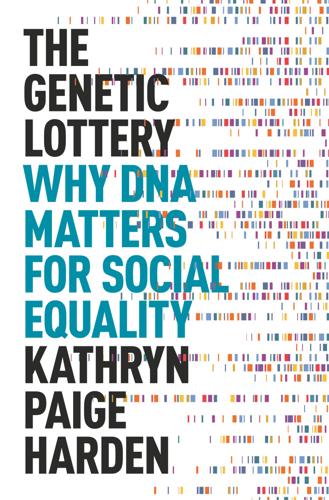
The Genetic Lottery: Why DNA Matters for Social Equality
by
Kathryn Paige Harden
Published 20 Sep 2021
The more different fraternal twins are in a particular trait, like height, in comparison to identical twins, the higher the heritability of that trait. FIGURE 6.3. Identical and fraternal twin correlations for seven domains of inequality. Author’s analysis of data from Tinca J. C. Polderman et al., “Meta-Analysis of the Heritability of Human Traits Based on Fifty Years of Twin Studies,” Nature Genetics 47, no. 7 (July 2015): 702–9, https://doi.org/10.1038/ng.3285. In 2015, a paper in the journal Nature Genetics summarized fifty years of twin research—over 2,000 scientific papers on over 17,000 traits measured in over 2 million twin pairs.4 From their paper, I pulled data on seven different life domains, which I’ve plotted in figure 6.3.
…
Young et al., “Relatedness Disequilibrium Regression Estimates Heritability without Environmental Bias,” Nature Genetics 50, no. 9 (September 2018): 1304–10, https://doi.org/10.1038/s41588-018-0178-9, except for twin estimate of heritability for educational attainment, which is drawn from Amelia R. Branigan, Kenneth J. McCallum, and Jeremy Freese, “Variation in the Heritability of Educational Attainment: An International Meta-Analysis,” Social Forces 92, no. 1 (2013): 109–140; and twin estimate of heritability for age at first birth in women, which is drawn from Felix C. Tropf et al., “Genetic Influence on Age at First Birth of Female Twins Born in the UK, 1919–68,” Population Studies 69, no. 2 (May 4, 2015): 129–45, https://doi.org/10.1080/00324728.2015.1056823.
…
The Question of Who: Genetic Effects Involve Interactions Among People As I described in point #2, genetic effects are apparent very early in life: genes identified in a GWAS of educational attainment are expressed as early as the prenatal period and are associated with performance on IQ tests as early as age 5. At the same time, we also observe a pattern that might seem unintuitive: genetic effects on cognitive abilities, in particular, only get stronger over time. One meta-analysis (a type of study that pulls together and summarizes data from lots of different individual studies) found that genetic effects on cognitive ability rapidly get stronger from birth until the end of childhood, around age 10.27 A similar increase in the strength of genetic effects on personality traits like orderliness and openness to new experiences is also evident, but over a longer period of time, with genetic effects increasing until people are around age 30.
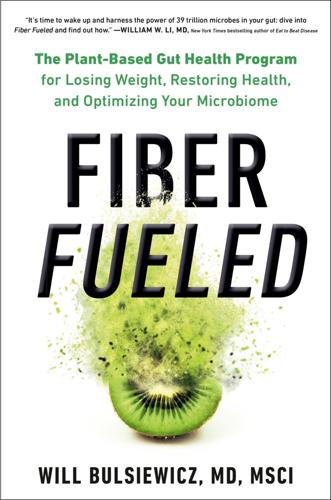
Fiber Fueled: The Plant-Based Gut Health Program for Losing Weight, Restoring Your Health, and Optimizing Your Microbiome
by
Will Bulsiewicz
Published 15 Dec 2020
I’ll give you more: In a meta-analysis of the Nurses’ Health Study and the Health Professionals Follow-Up Study they found that every daily serving of whole grains reduces your risk of death by 5 percent and your risk of death by cardiovascular cause by 9 percent. In another meta-analysis including nearly 250,000 people, those eating the most whole grains had a 14 percent lower risk of stroke than those eating the fewest. A 2011 meta-analysis of prospective studies found that there was a 20 percent reduction in the risk of colorectal cancer for every three servings of whole grains consumed per day, and the risk was even lower with higher intakes. Another meta-analysis, this time with fifteen studies and almost 120,000 people, found that eating three servings of whole grains daily was linked to lower body mass index and less belly fat.
…
And just to put the cherry on top, three major studies—a large 2017 meta-analysis, the prospective EPIC-Oxford study, and the Adventist Health Study—all reached the same conclusion when it comes to diet and cancer risk. A plant-centered, fiber fueled diet lowers your risk of developing cancer. Mic drop. Heart Disease, Stroke, Diabetes, and Weight Loss So SCFAs and fiber offer protection from cancer, the number two cause of death in the United States. How about heart disease and stroke—the number one and number five causes of death? In the same mega meta-analysis on dietary fiber published in The Lancet, Dr.
…
If you’re skeptical, allow me to share some of the research. In a systematic review and meta-analysis of forty-five studies, increasing your daily whole-grain consumption by just two pieces of whole-grain bread rewarded the participants with a reduced risk of coronary heart disease, cardiovascular disease, and total cancer as well as a lower likelihood of death from all causes, respiratory diseases, infectious diseases, diabetes, and all non-cardiovascular, non-cancer causes. Convinced yet? I’ll give you more: In a meta-analysis of the Nurses’ Health Study and the Health Professionals Follow-Up Study they found that every daily serving of whole grains reduces your risk of death by 5 percent and your risk of death by cardiovascular cause by 9 percent.
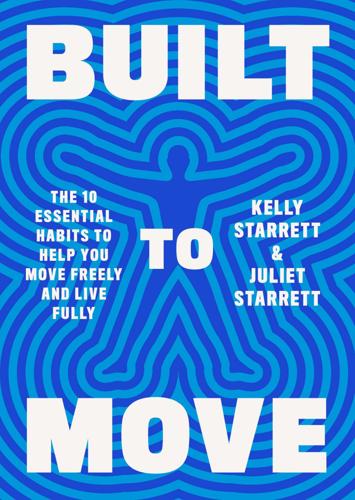
Built to Move: The Ten Essential Habits to Help You Move Freely and Live Fully
by
Kelly Starrett
and
Juliet Starrett
Published 3 Apr 2023
There is, for one thing, the fact that the more hours you’re up, the more likely you are to get hungry and eat. In studies, sleep-deprived subjects often eat more at night than their well-rested counterparts. They also simply consume more calories overall: about 204 more calories a day, according to a 2021 meta-analysis of fifty-four sleep studies. This might not sound like much, but multiply it over weeks and months, and that’s a lot of extra calories. There’s some biochemistry at work here. As part of a fifteen-year sleep study in Wisconsin, researchers found that short sleepers (five hours a night) had different levels of appetite-related hormones than long sleepers (eight hours a night).
…
DOI: 10.1186/s12889-017-4422-5. DiSalvo, David. “Using a Standing Desk Could Give Your Brain a Boost.” Forbes, January 18, 2016. Ekelund, Ulf, Jakob Tarp, Morten Fagerland, et al. “Joint Associations of Accelerometer-Measured Physical Activity and Sedentary Time with All-Cause Mortality: A Harmonised Meta-Analysis in More Than 44,000 Middle-Aged and Older Individuals.” British Journal of Sports Medicine 54 (December 2020): 1499–1506. DOI: 10.1136/bjsports-2020-103270. GORUCK. “About GORUCK.” www.goruck.com. Heesch, Kristiann C., Yolanda R. van Gellecum, Nicola W. Burton, et al. “Physical Activity, Walking, and Quality of Life in Women with Depressive Symptoms.”
…
“Physical Activity, Walking, and Quality of Life in Women with Depressive Symptoms.” American Journal of Preventive Medicine 48, no. 3 (March 2015): 281–91. DOI: 10.1016/j.amepre.2014.09.030. Jayedi, Ahmad, Ali Gohari, and Sakineh Shab-Bidar. “Daily Step Count and All-Cause Mortality: A Dose-Response Meta-Analysis of Prospective Cohort Studies.” Sports Medicine 52, no. 1 (2022): 89–99. DOI: 10.1007/s40279-021-01536-4. McDowell, C. P., B. R. Gordon, K. L. Andrews, et al. “Associations of Physical Activity with Anxiety Symptoms and Status: Results from the Irish Longitudinal Study on Ageing.” Epidemiology and Psychiatric Sciences 28, no. 4 (2019): 436–45.
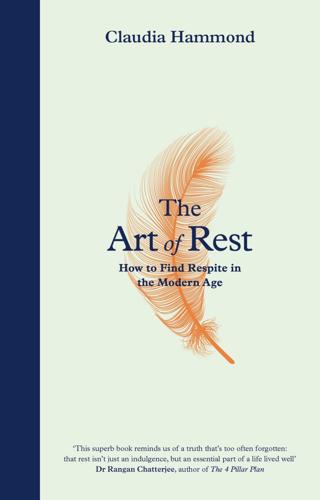
The Art of Rest: How to Find Respite in the Modern Age
by
Claudia Hammond
Published 5 Dec 2019
Over the years further research has followed and a meta-analysis gathering together and re-analysing sixteen more studies has confirmed that listening to Mozart does lead to a temporary improvement in the ability to mentally manipulate shapes.4 So listening to Mozart can enhance one very specific and – let’s face it – not very useful task, but if you like listening to Mozart anyway, then I guess an improvement in your skills at mental shape manipulation is a bonus. But what if you don’t like listening to Mozart? Well, don’t fret. A few years after the meta-analysis was published, it began to emerge that there was nothing special about Mozart’s music per se.
…
Once again music did improve the children’s ability to predict unfolded paper shapes, but this time it wasn’t a Mozart effect so much as a Blur boost. The children who listened to Mozart did well, but with the medley of pop music they did even better, perhaps because they preferred it.5 In 2010 a larger meta-analysis confirmed that listening to music only results in a small improvement in spatial skills, and that other types of music work just as well as Mozart. The authors of this study even named their paper ‘Mozart effect–Schmozart effect’.6 One study found that hearing a passage from a Stephen King novel read out loud improved your spatial skills just as much, provided you enjoyed it.
…
. & Davidson, R.J. (2017) The Science of Meditation: How to Change Your Brain, Mind and Body. London: Penguin 8 Baer, R.A. et al (2004). ‘Assessment of Mindfulness by Self-report: The Kentucky Inventory of Mindfulness Skills’. Assessment, 11 (3), 191–206 9 Giluk, T.L. (2015) ‘Mindfulness, Big Five Personality, and Affect: A Meta-analysis’. Personality and Individual Differences, 47, 805–81 10 Gawrysiak, M.J. et al (2018) ‘The Many Facets of Mindfulness & the Prediction of Change Following MBSR’. Journal of Clinical Psychology, 74 (4), 523–35 11 Shapiro, S.L. et al (2011) ‘The Moderation of Mindfulness-based Stress Reduction Effects by Trait Mindfulness: Results from a Randomised Controlled Trial’.
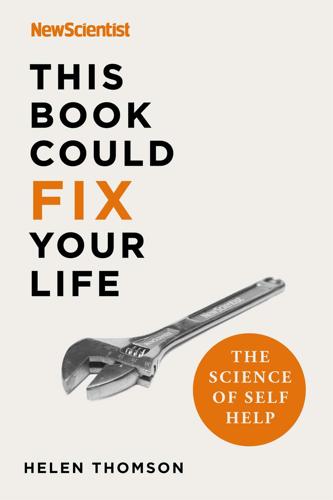
This Book Could Fix Your Life: The Science of Self Help
by
New Scientist
and
Helen Thomson
Published 7 Jan 2021
F. et al. (2012), ‘Uncorking the Muse: Alcohol Intoxication Facilitates Creative Problem Solving’, Consciousness and Cognition 21, 1, 487–93. Chapter 12: How to Avoid Being Too Perfect 1. Curran, T. and Hill, A. P. (2019), ‘Perfectionism is Increasing Over Time: A Meta-Analysis of Birth Cohort Differences From 1989 to 2016’, American Psychological Association 145, 4, 410–29. 2. Limburg, K. et al. (2016), ‘The Relationship Between Perfectionism and Psychopathology: A Meta-Analysis’, Journal of Clinical Psychology 73, 10, 1301–26. 3. Corson, A. T. et al. (2018), ‘Perfectionism in Relation to Stress and Cardiovascular Disease Among Gifted Individuals and the Need for Affective Interventions’, Roeper Review 40, 1, 46–55. 4.
…
During the 1960s, the Norwegian government added two extra years of compulsory education to its curriculum and rolled out the change gradually, allowing comparisons between different regions. When researchers investigated IQ scores from tests taken by all Norwegian men as part of their compulsory military service, they concluded that the additional schooling added 3.7 IQ points per year. This pattern has been seen elsewhere. One meta-analysis concluded that each additional year of schooling boosted IQ by between 1 and 5 points.4 Why that should be so is up for debate. It might simply be that reading, studying arithmetic, and accruing general knowledge are good training for the kind of abstract thinking you need to perform well in IQ tests, or that schooling teaches children to maintain their concentration, or something else entirely.
…
Frings, D. et al. (2020), ‘Comparison of Allen Carr’s Easy Way Programme With a Specialist Behavioural and Pharmacological Smoking Cessation Support Service: A Randomized Controlled Trial’, Addiction 115, 5, 977–85. 11. Ma, Y. et al. (2015), ‘The Significant Association of Taq1A Genotypes in DRD2/ANKK1 with Smoking Cessation in a Large-Scale Meta-Analysis of Caucasian Populations’, Translational Psychiatry 5, e686. 12. Johnson, K. E. and Voight, B. F. (2018), ‘Patterns of Shared Signatures of Recent Positive Election Across Human Populations’, Nature Ecology and Evolution 2, 4, 713–20. Chapter 9: How to be Smarter 1. Deary, I. J. et al. (2007), ‘Intelligence and Educational Achievement’, Intelligence 35, 1, 13–21. 2.
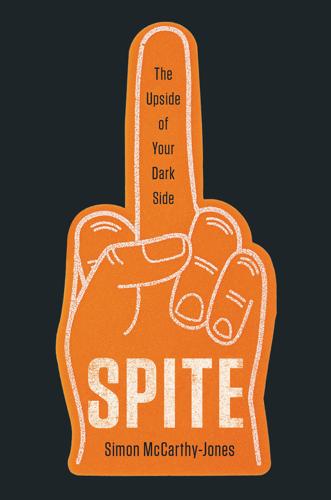
Spite: The Upside of Your Dark Side
by
Simon McCarthy-Jones
Published 12 Apr 2021
Zettler, “The Dark Core of Personality,” Psychological Review 125, no. 5 (2018): 656–688. 63. M. Ridley, The Rational Optimist: How Prosperity Evolves (London: Fourth Estate, 2010), 86. 64. H. Oosterbeek, R. Sloof, and G. Van De Kuilen, “Cultural Differences in Ultimatum Game Experiments: Evidence from a Meta-analysis,” Experimental Economics 7, no. 2 (2004): 171–188. 2. Counterdominant Spite 1. C. Boehm, Moral Origins: The Evolution of Virtue, Altruism, and Shame (New York: Soft Skull Press, 2012). 2. Boehm, Moral Origins. 3. Again, more correctly, they will not tolerate men trying to dominate other men. 4.
…
,” Psychology Today, May 23, 2014, www.psychologytoday.com/ie/blog/the-dark-side-personality/201405/how-spiteful-are-you#comments_bottom. 31. E. Fehr and U. Fischbacher, “The Nature of Human Altruism,” Nature 425, no. 6960 (2003): 785–791. 32. D. Balliet, L. B. Mulder, and P. A. van Lange, “Reward, Punishment and Cooperation: A Meta-analysis,” Psychological Bulletin 137, no. 4 (2011): 594–615. 33. E. Fehr, U. Fischbacher, and S. Gächter, “Strong Reciprocity, Human Cooperation and the Enforcement of Social Norms,” Human Nature 13, no. 1 (2002): 1–25. 34. Guala, “Reciprocity: Weak or Strong?” 35. H. Gintis, “Strong Reciprocity and Human Sociality,” Journal of Theoretical Biology 206, no. 2 (2000): 169–179. 36.
…
Perc, “Probabilistic Sharing Solves the Problem of Costly Punishment,” New Journal of Physics 16, no. 8 (2014): 083016. 24. N. J. Raihani and R. Bshary, “Punishment: One Tool, Many Uses,” Evolutionary Human Sciences 1 (2019): e12. 25. Raihani and McAuliffe, “Human Punishment Is Motivated by Inequity Aversion.” 26. D. Balliet, L. B. Mulder, and P. A. van Lange, “Reward, Punishment and Cooperation: A Meta-analysis,” Psychological Bulletin 137, no. 4 (2011): 594–615. 27. Raihani and Bshary, “Punishment.” 28. A. Dreber et al., “Winners Don’t Punish,” Nature 452, no. 7185 (2008): 348–351. 29. D. G. Rand and M. A. Nowak, “The Evolution of Antisocial Punishment in Optional Public Goods Games,” Nature Communications 2, no. 1 (2011): 1–7. 30.
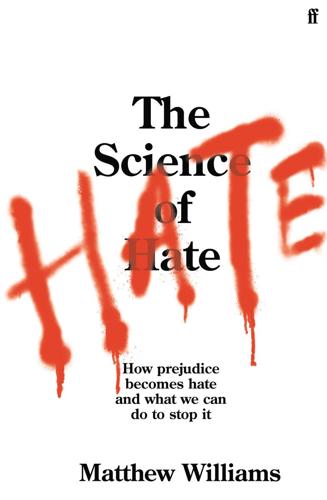
The Science of Hate: How Prejudice Becomes Hate and What We Can Do to Stop It
by
Matthew Williams
Published 23 Mar 2021
They represent the state of the art on the subject at the time they were published and many have been replicated and verified in later work on new samples of participants using better analytical procedures. Those areas of study that have accumulated a large body of research, such as the Implicit Association Test of prejudice (IAT), Integrated Threat Theory of prejudice (ITT), Terror Management Theory (TMT), and the role of contact in reducing prejudice, have been subject to powerful meta-analysis. Meta-analysis brings together all the highest-quality studies from across the globe and comes to an overall conclusion – a form of cumulative science. Where available, these meta-analyses have been included in this book to provide a close to definitive answer on the utility of a theory for understanding hate.
…
.¶¶22 To grossly oversimply the brain process, when faced with a black suspect holding a phone, the fast-but-dumb ‘autopilot’ response to shoot is left uncontrolled by the weak prefrontal cortex signal, and it is allowed to rapidly engage the motor cortex – the officer’s finger squeezes the trigger. When faced with a white suspect holding a phone, the stronger prefrontal cortex signal forces ‘autopilot’ to stand down, resulting in the motor cortex being released from its command – the officer’s finger eases off the trigger. A meta-analysis of forty-two studies on decisions to shoot, involving just under 3,500 shooters, found all the evidence pointed in the same direction. Shooters were more likely and faster to pull the trigger on armed and unarmed black targets relative to white targets. Depressingly, shooters required less certainty that a black target was holding a gun to shoot them, compared to white targets.
…
Urland and T. A. Ito, ‘Event-Related Potentials and the Decision to Shoot: The Role of Threat Perception and Cognitive Control’, Journal of Experimental Social Psychology 42 (2006), 120–8. 23. Y. Mekawi and K. Bresin, ‘Is the Evidence from Racial Bias Shooting Task Studies a Smoking Gun? Results from a Meta-Analysis’, Journal of Experimental Social Psychology 61 (2015), 120–30. 24. J. Correll et al., ‘The Police Officer’s Dilemma: Using Ethnicity to Disambiguate Potentially Threatening Individuals’, Journal of Personality and Social Psychology 83 (2002), 1314–29. 25. C. Forbes et al., ‘Negative Stereotype Activation Alters Interaction between Neural Correlates of Arousal, Inhibition and Cognitive Control’, Social Cognitive and Affective Neuroscience 7 (2011), 771. 26.
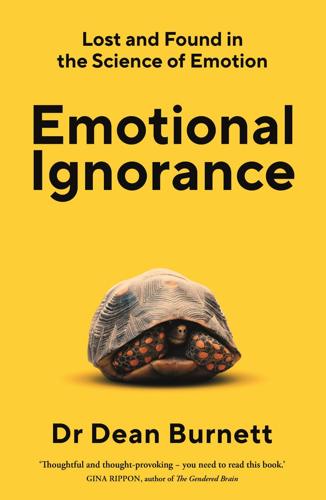
Emotional Ignorance: Lost and Found in the Science of Emotion
by
Dean Burnett
Published 10 Jan 2023
McNay, ‘Mental work requires physical energy: self-control is neither exception nor exceptional’, Frontiers in Psychology, 2018, 9: p. 1005. 139 Schwartz, B., ‘The social psychology of privacy’, American Journal of Sociology, 1968, 73(6): pp. 741–752. 140 Giles, D.C., ‘Parasocial interaction: a review of the literature and a model for future research’, Media Psychology, 2002, 4(3): pp. 279–305. 141 Schiappa, E., M. Allen, and P.B. Gregg, ‘Parasocial relationships and television: a meta-analysis of the effects’, in Mass Media Effects Research: Advances Through Meta-analysis, R.W. Preiss et al. (eds) (Routledge, 2007), pp. 301–314. 142 Allen, P., et al., ‘The hallucinating brain: a review of structural and functional neuroimaging studies of hallucinations’, Neuroscience & Biobehavioral Reviews, 2008, 32(1): pp. 175–191. 143 Blakemore, S.
…
Neuroscience & Biobehavioral Reviews, 2006, 30(2): pp. 239–271. 50 Damasio, A.R., ‘The somatic marker hypothesis and the possible functions of the prefrontal cortex’, Philosophical Transactions of the Royal Society of London, Series B: Biological Sciences, 1996, 351(1346): pp. 1413–1420. 51 Dunn et al., ‘The somatic marker hypothesis’. 52 Lomas, T., The Positive Lexicography, 2019. Available from: https://www.drtimlomas.com/lexicography. 53 McCarthy, G., et al., ‘Face-specific processing in the human fusiform gyrus’, Journal of Cognitive Neuroscience, 1997, 9(5): pp. 605–610. 54 Gunnery, S.D. and M.A. Ruben, ‘Perceptions of Duchenne and non-Duchenne smiles: a meta-analysis’, Cognition and Emotion, 2016, 30(3): pp. 501–515. 55 Kleinke, C.L., ‘Gaze and eye contact: a research review’, Psychological Bulletin, 1986, 100(1): p. 78. 56 Liu, J., et al., ‘Seeing Jesus in toast: neural and behavioral correlates of face pareidolia’, Cortex, 2014, 53: pp. 60–77. 57 Darwin and Prodger, The Expression of the Emotions. 58 Ekman, P., ‘Biological and cultural contributions to body and facial movement’, in The Anthropology of the Body, J.
…
Ocklenburg, ‘Ontogenesis of lateralization’, Neuron, 2017, 94(2): pp. 249–263. 73 Luders, E., et al., ‘Positive correlations between corpus callosum thickness and intelligence’, NeuroImage, 2007, 37(4): pp. 1457–1464. 74 Frost, J.A., et al., ‘Language processing is strongly left lateralized in both sexes: evidence from functional MRI’, Brain, 1999, 122(2): pp. 199–208. 75 Mento, G., et al., ‘Functional hemispheric asymmetries in humans: electrophysiological evidence from preterm infants’, European Journal of Neuroscience, 2010, 31(3): pp. 565–574. 76 Christie, J., et al., ‘Global versus local processing: seeing the left side of the forest and the right side of the trees’, Frontiers in Human Neuroscience, 2012, 6: p. 28. 77 Perry, R., et al., ‘Hemispheric dominance for emotions, empathy and social behaviour: evidence from right and left handers with frontotemporal dementia’, Neurocase, 2001, 7(2): pp. 145–160. 78 Davidson, R.J., ‘Hemispheric asymmetry and emotion’, Approaches to Emotion, 1984, 2: pp. 39–57. 79 Murphy, F.C., I. Nimmo-Smith, and A.D. Lawrence, ‘Functional neuroanatomy of emotions: a meta-analysis’, Cognitive, Affective, & Behavioral Neuroscience, 2003, 3(3): pp. 207–233. 80 Isaacson, R., The Limbic System (Springer Science & Business Media, 2013). 81 MacLean, P.D., The Triune Brain in Evolution: Role in Paleocerebral Functions (Springer Science & Business Media, 1990). 82 Nieuwenhuys, R., ‘The neocortex’, Anatomy and Embryology, 1994, 190(4): pp. 307–337. 83 Isaacson, The Limbic System. 84 MacLean, P.D., ‘The limbic system (visceral brain) and emotional behavior’, AMA Archives of Neurology & Psychiatry, 1955, 73(2): pp. 130–134. 85 Isaacson, The Limbic System. 86 Iturria-Medina, Y., et al., ‘Brain hemispheric structural efficiency and interconnectivity rightward asymmetry in human and nonhuman primates’, Cerebral Cortex, 2011, 21(1): pp. 56–67. 87 Morgane, P.J., J.R.
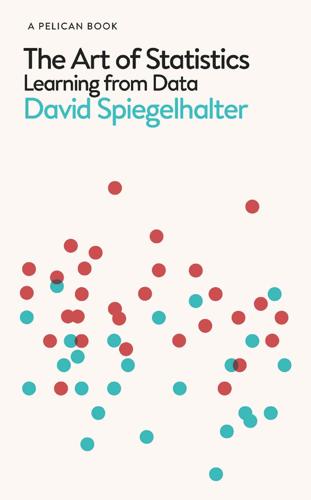
The Art of Statistics: Learning From Data
by
David Spiegelhalter
Published 14 Oct 2019
Two final key points: Don’t rely on a single study: A single statin trial may tell us that the drug worked in a particular group in a particular place, but robust conclusions require multiple studies. Review the evidence systematically: When looking at multiple trials, make sure to include every study that has been done, and so create what is known as a systematic review. The results may then be formally combined in a meta-analysis. For example, a recent systematic review put together evidence from twenty-seven randomized trials of statins, which included more than 170,000 people at lower risk of cardiovascular disease.4 But rather than focusing on the difference between the groups allocated to taking statins and controls, they instead estimated the effect of reducing LDL.
…
We have ignored the possibility that any observed relationship is not causal at all, but simply the result of chance. Most drugs on the market have only moderate effects, and only help a minority of people who take them, and their overall benefit can only be reliably detected by large, meticulous, randomized trials. Statin trials are huge, especially when put together in a meta-analysis, which means that the results discussed here cannot be put down to chance variation. (We shall see how to check this in Chapter 10.) Is prayer effective? The list of principles for RCTs is not new: they were nearly all introduced in 1948 in what is generally considered the first proper clinical trial.
…
Think about cherry-picked results, missing information that would conflict with the story, and lack of independent comment. HOW TRUSTWORTHY IS THE INTERPRETATION? How does the claim fit with what else is known? Consider the context, appropriate comparators, including historical data, and what other studies have shown, ideally in a meta-analysis. What’s the claimed explanation for whatever has been seen? Vital issues are correlation v. causation, regression to the mean, inappropriate claim that a non-significant result means ‘no effect’, confounding, attribution, prosecutor’s fallacy. How relevant is the story to the audience? Think about generalizability, whether the people being studied are a special case, has there been an extrapolation from mice to people.

SuperBetter: The Power of Living Gamefully
by
Jane McGonigal
Published 14 Sep 2015
Jayne Gackenbach and Johnathan Bown, “Mindfulness and Video Game Play: A Preliminary Inquiry,” Mindfulness 2, no. 2 (2011): 114–22. 26. Paul Grossman et al., “Mindfulness-Based Stress Reduction and Health Benefits: A Meta-Analysis,” Journal of Psychosomatic Research 57, no. 1 (2004): 35–43; Stefan G. Hofmann et al., “The Effect of Mindfulness-Based Therapy on Anxiety and Depression: A Meta-Analytic Review,” Journal of Consulting and Clinical Psychology 78, no. 2 (2010): 169; and Alberto Chiesa and Alessandro Serretti, “Mindfulness-Based Stress Reduction for Stress Management in Healthy People: A Review and Meta-Analysis,” Journal of Alternative and Complementary Medicine 15, no. 5 (2009): 593–600. 27. Jonathan R.
…
Someday soon it’s quite likely that psychologists or doctors will commonly write prescriptions for Angry Birds to reduce anxiety, or Peggle to treat depression, or Call of Duty for anger management. Indeed, I already frequently hear from therapists and counselors who do just that! And the science is increasingly on their side. A 2012 meta-analysis of thirty-eight randomized, controlled trials of video games published in the American Journal of Preventive Medicine found significant promise for video games to improve psychological health outcomes. (The article also encouraged researchers and the game industry to conduct trials of longer duration as a necessary next step for this emerging field of research.)24 Keep in mind that gameful prescriptions are not necessarily an alternative to traditional forms of therapy or medication.
…
It lets them discover concrete ways to give you support that will actually make a difference. This is especially important if you’re facing a huge obstacle or going through a really tough time. Your loved ones can feel powerless to help in the face of your challenge—even though they desperately want to. But it doesn’t have to be that way. A meta-analysis of seventy different psychology and medical studies revealed that when the friends and family members of someone going through an illness, injury, or tough crisis are given suggestions for improving communication and support with their loved one, the friends and family experience less stress and less anxiety, report happier moods, and have more physical energy.10 One SuperBetter player, Joe, a senior advertising executive who lives near Tampa, saw this benefit himself when he started a familywide SuperBetter game.
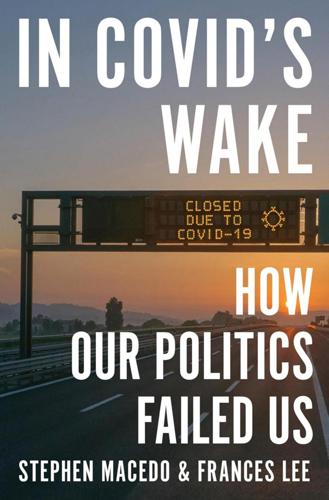
In Covid's Wake: How Our Politics Failed Us
by
Stephen Macedo
and
Frances Lee
Published 10 Mar 2025
SARS-CoV-2 was the fifth known coronavirus in human circulation, so none of that should have been a surprise. Studies of Covid infection and recovery confirm those expectations.77 A 2022 meta-analysis of extant studies concludes that “natural immunity acquired a fter SARS-CoV-2 infections appears to be highly effective in terms of protection against reinfections and, more importantly, against COVID-19 serious outcomes. Efficacy seems to be equal or superior to N ob l e L i e s? 279 individuals receiving two mRNA doses.”78 A slightly later meta-analysis reaches a similar conclusion: “Natural immunity and two vaccination doses provided similar protection against symptomatic infection.”79 So natural infection and recovery protect from severe illness and death, just as vaccines do.
…
Mahdi Abounoori, Ali Aghajani, Samira Chaibakhsh, Masoudeh Babakhanian, Mohsen Pourazizi, and Alireza Peyman, “Paediatric Myopia Shift during the COVID-19 Pandemic Home Quarantine: A Systematic Review and Meta-analysis,” BMJ Paediatrics 6 (1, 2022): e001755. 108. Laura N. Anderson, Yulika Yoshida-Montezuma, Nora Dewart, Ezza Jalil, Jayati Khattar, Vanessa De Rubeis, Sarah Carsley et al., “Obesity and Weight Change during the COVID-19 Pandemic in Children and Adults: A Systematic Review and Meta-analysis,” Obesity Reviews 24 (5, 2023): e13550. 109. Corinna Koebnick, Margo A. Sidell, Xia Li, Ken Resnicow, Poornima Kunani, Deborah R. Young, and Susan J.
…
Children appear to have experienced more weight gain and rises in obesity than adults,108 with disproportionate effects on low-income, Black, and Hispanic youth.109 Effects on m ental health are equally important. The pandemic itself and the disruptions associated with pandemic policy were major stressors for millions of p eople. A 2022 meta-analysis of the available research concluded that the m ental health burden associated with the Covid pandemic and pandemic response will be comparable to “major disasters and armed conflicts.”110 Studies have repeatedly documented increases in anxiety, depression, and eating disorders, particularly among children and adolescents.111 Numerous studies also showed rises in Pa y A n y P r i c e 193 pediatric emergency department visits for self-harm, suicidal ideation, and attempted suicide.112Research shows that mandatory social distancing policies (stay-at-home o rders and school closures) drove measurably higher demand on mental health facilities, separate from the stresses caused by the pandemic alone.
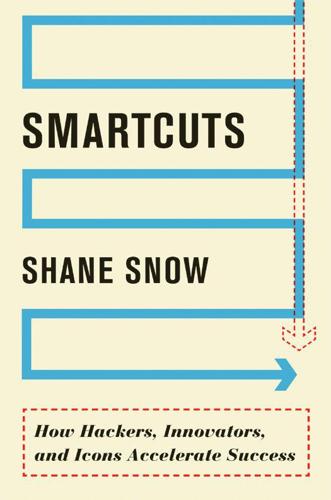
Smartcuts: How Hackers, Innovators, and Icons Accelerate Success
by
Shane Snow
Published 8 Sep 2014
“The Protege’s Perspective Regarding Negative Mentoring Experiences: The Development of a Taxonomy.” Journal of Vocational Behavior 57, no. 1 (2000): 1–21. Eby, Lillian T., Tammy D. Allen, Sarah C. Evans, Thomas Ng, and David L. DuBois. “Does Mentoring Matter? A Multidisciplinary Meta-Analysis Comparing Mentored and Non-Mentored Individuals.” Journal of Vocational Behavior 72, no. 2 (2008): 254–67. Ellington, Aimee J. “A Meta-Analysis of the Effects of Calculators on Students’ Achievement and Attitude Levels in Precollege Mathematics Classes.” Journal for Research in Mathematics Education 34, no. 5 (2003): 433–63. English, T. J. Havana Nocturne: How the Mob Owned Cuba and Then Lost It to the Revolution.
…
Underhill, “The Effectiveness of Mentoring Programs in Corporate Settings: A Meta-analytical Review of the Literature,” Journal of Vocational Behavior 68 (2006): 292–307, shows that informal mentoring has a greater effect than formal mentoring. A later study found that formal and informal mentorship results in various activities (work, youth, academic) were small, but generally positive: Lillian T. Eby, Tammy D. Allen, Sarah C. Evans, Thomas Ng, and David L. DuBois, “Does Mentoring Matter? A Multidisciplinary Meta-Analysis Comparing Mentored and Non-mentored Individuals,” Journal of Vocational Behavior 72, no. 2 (2008): 254–67. 44 “Searching for a mentor has become the professional equivalent”: Sheryl Sandberg, Lean In: Women, Work, and the Will to Lead (Alfred A. Knopf, 2013). 46 journey-focused mentorship and not just a focus on practice: Further research shows that when protégés open up to their mentors—what my friend and NextJump.com founder Charlie Kim calls “vulnerability”—they tend to achieve more positive results: Connie R.
…
Staats, KC Diwas, and Francesca Gino, “Learning from My Success and from Others’ Failure: Evidence from Minimally Invasive Cardiac Surgery,” Management Science 59, no. 11 (2013): 2435–49. 68 a hundred years of these studies: Kluger and DeNisi examine the “contradictory and seldom straight-forward” outcomes of feedback intervention studies over the decades in Avraham N. Kluger and Angelo DeNisi, “The Effects of Feedback Interventions on Performance: A Historical Review, a Meta-Analysis, and a Preliminary Feedback Intervention Theory,” Psychological Bulletin 119, no. 2 (1996): 254–84, and find that more than one-third of feedback decreases performance. “The results suggest that FI [feedback intervention] effectiveness decreases as attention moves up the hierarchy closer to the self and away from the task,” they write. 68 vastly preferred negative feedback: As people gain expertise, they shift from desiring positive feedback to desiring negative, write Stacey R.
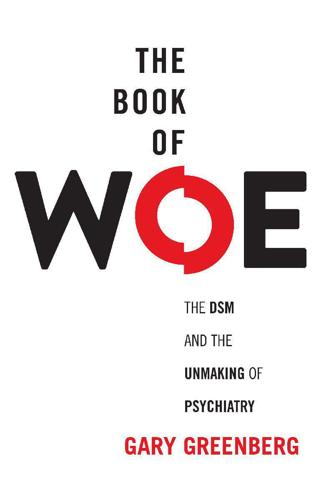
The Book of Woe: The DSM and the Unmaking of Psychiatry
by
Gary Greenberg
Published 1 May 2013
” “We put a lot of faith in meta-analysis,” Frances told me. Not that he expected to use meta-analysis to sort out the arguments, at least not very often. “You need lots of data from lots of sources for a meta-analysis,” he said. “And I knew that the literature didn’t have the data. I knew we couldn’t do a real meta-analysis of most of what would come up.” If someone brought up one of those off-the-cuff ideas in a meeting, or collared him with a pet proposal at dinner, Frances would just tell him to bring him the data, which he was pretty sure didn’t exist. Meta-analysis would protect the DSM-IV (not to mention Frances) from the pontificators, the profession from confusion, the common language from its own tenuousness.
…
Frances thought there was a way to protect the system from both instability and pontificating: meta-analysis, a statistical method that, thanks to advances in computer technology and statistical modeling, had recently allowed statisticians to compile results from large numbers of studies by combining disparate data into common terms. The result was a statistical synthesis by which many different research projects could be treated as one large study. “We needed something that would leave it up to the tables rather than the people,” he told me, and meta-analysis was perfect for the job. “The idea was you would have to present evidence in tabular form that would be so convincing it would jump up and grab people by the throats.”
…
“The strident debate and attacks have obfuscated the negative impact of eliminating industry from our offices,” he complained. As unjust as it might have been, however, the drug company purge seemed irreversible. The APA was going to have to make up that $10 million deficit somehow. The organization won’t say how much revenue it anticipates from a new DSM, but you don’t have to run a meta-analysis to figure out that a new book would be worth far more at its outset than the $6 million the DSM-IV generated in 2010. Leaders of the APA would not confirm the old suspicion that money was a driving force behind the revision (although one trustee did tell me that “it would be disastrous not to get that income”), but that looming bonanza had to be looking pretty good—if only they could get their hands on it.

Super Thinking: The Big Book of Mental Models
by
Gabriel Weinberg
and
Lauren McCann
Published 17 Jun 2019
As with fixed and growth mindsets, there is an ongoing debate on the strength of these effects across different circumstances. The original studies in classroom settings have also been criticized, but stronger effects have been shown in other settings, such as organizational leadership. For example, a meta-analysis in the October 2009 issue of Leadership Quarterly found the Pygmalion leadership style to be the most effective of the methods studied. This meta-analysis of two hundred different studies on leadership methods was sponsored by the U.S. Department of Defense and compared Pygmalion leadership interventions with traditional methods (popular ideas from the 1970s and earlier) as well as newer techniques described variously as charismatic, inspirational, transformational, or visionary methods.
…
Any isolated experiment can result in a false positive or a false negative and can also be biased by myriad factors, most commonly selection bias, response bias, and survivorship bias. Replication increases confidence in results, so start by looking for a systematic review and/or meta-analysis when researching an area. Always keep in mind that when dealing with uncertainty, the values you see reported or calculate yourself are uncertain themselves, and that you should seek out and report values with error bars! 6 Decisions, Decisions IF YOU COULD KNOW HOW your decisions would turn out, decision making would be so easy!
…
They were then asked to give increasingly high electric shocks to “the learner” when they made a mistake. The shocks were fake, but the participant wasn’t told that at the time; the learner was really an actor who pretended to feel pain when the “shocks” were sent. This study has been replicated many times, and a meta-analysis (see Chapter 5) found that participants were willing to administer fatal voltages 28 percent to 91 percent of the time! In less dramatic settings, authority can still be powerful. Authority explains why celebrity endorsements work, though which types of celebrity endorsements are the most effective changes over time.
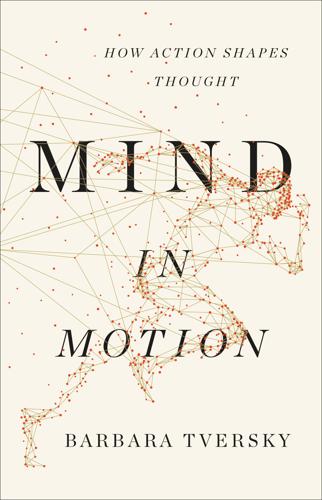
Mind in Motion: How Action Shapes Thought
by
Barbara Tversky
Published 20 May 2019
New York, NY: Psychology Press. Linn, M. C., & Petersen, A. C. (1985). Emergence and characterization of sex differences in spatial ability: A meta-analysis. Child Development, 56(6), 1479–1498. Voyer, D. (2011). Time limits and gender differences on paper-and-pencil tests of mental rotation: A meta-analysis. Psychonomic Bulletin and Review, 18(2), 267–277. Voyer, D., Voyer, S., & Bryden, M. P. (1995). Magnitude of sex differences in spatial abilities: A meta-analysis and consideration of critical variables. Psychological Bulletin, 117, 250–270. Gender and object recognition Herlitz, A., & Lovén, J. (2013).
…
Psychiatry Research, 220, 803–810. New York Times. (2013, October 3). Can you read people’s emotions [blog post]. Retrieved from https://well.blogs.nytimes.com/2013/10/03/well-quiz-the-mind-behind-the-eyes/ Warrier, V., Grasby, K. L., Uzefovsky, F., Toro, R., Smith, P., Chakrabarti, B.,… Baron-Cohen, S. (2018). Genome-wide meta-analysis of cognitive empathy: Heritability, and correlates with sex, neuropsychiatric conditions and cognition. Molecular Psychiatry, 23(6), 1402–1409. doi:10.1038/mp.2017.122 Eyes dominate mouths in interpreting emotion Lee, D. H., & Anderson, A. K. (2017). Reading what the mind thinks from what the eye sees.
…
Spontaneous gestures during mental rotation tasks: Insights into the microdevelopment of the motor strategy. Journal of Experimental Psychology: General, 137(4), 706. Wexler, M., Kosslyn, S. M., & Berthoz, A. (1998). Motor processes in mental rotation. Cognition, 68(1), 77–94. Mental rotation activates motor cortex Zacks, J. M. (2008). Neuroimaging studies of mental rotation: A meta-analysis and review. Journal of Cognitive Neuroscience, 20(1), 1–19. Mental rotation of one’s body Parsons, L. M. (1987). Imagined spatial transformation of one’s body. Journal of Experimental Psychology: General, 116(2), 172. Parsons, L. M. (1987). Imagined spatial transformations of one’s hands and feet.
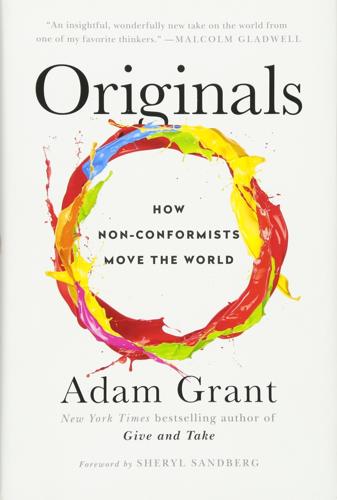
Originals: How Non-Conformists Move the World
by
Adam Grant
Published 2 Feb 2016
Kotter, Leading Change (Boston: Harvard Business School Press, 1996). The mere exposure effect: Robert B. Zajonc, “Attitudinal Effects of Mere Exposure,” Journal of Personality and Social Psychology Monographs 9 (1968): 1–27. the more familiar a face: Robert F. Bornstein, “Exposure and Affect: Overview and Meta-Analysis of Research, 1968–1987,” Psychological Bulletin 106 (1989): 265–89; Robert B. Zajonc, “Mere Exposure: A Gateway to the Subliminal,” Current Directions in Psychological Science 10 (2001): 224–28; Eddie Harmon-Jones and John J. B. Allen, “The Role of Affect in the Mere Exposure Effect: Evidence from Psychophysiological and Individual Differences Approaches,” Personality and Social Psychology Bulletin 27 (2001): 889–98.
…
Goncalo, “Squeezed in the Middle: The Middle Status Trade Creativity for Focus,” Journal of Personality and Social Psychology 109, no. 4 (2015), 589–603. strong gender-role stereotypes: Anne M. Koenig, Alice H. Eagly, Abigail A. Mitchell, and Tiina Ristikari, “Are Leader Stereotypes Masculine? A Meta-Analysis of Three Research Paradigms,” Psychological Bulletin 127 (2011): 616–42. “labeled bossy”: Sheryl Sandberg, Lean In: Women, Work, and the Will to Lead (New York: Knopf, 2013). voicing new revenue-generating ideas: Sheryl Sandberg and Adam Grant, “Speaking While Female,” New York Times, January 12, 2015, www.nytimes.com/2015/01/11/opinion/sunday/speaking-while-female.html; Adam M.
…
Demographic and Structural Status Cues in Voice Recognition,” Journal of Applied Psychology, forthcoming (2015). Sexual harassment, she concludes: Jennifer L. Berdahl, “The Sexual Harassment of Uppity Women,” Journal of Applied Psychology 92 (2007): 425–37. they’re being communal: Jens Mazei, Joachim Hüffmeier, Philipp Alexander Freund, Alice F. Stuhlmacher, Lena Bilke, and Guido Hertel, “A Meta-Analysis on Gender Differences in Negotiation Outcomes and Their Moderators,” Psychological Bulletin 141 (2015): 85–104; Emily T. Amanatullah and Michael W. Morris, “Negotiating Gender Roles: Gender Differences in Assertive Negotiating Are Mediated by Women’s Fear of Backlash and Attenuated When Negotiating on Behalf of Others,” Journal of Personality and Social Psychology 98 (2010): 256–67; Hannah Riley Bowles, Linda Babcock, and Kathleen L.

The Nocturnal Brain: Nightmares, Neuroscience, and the Secret World of Sleep
by
Dr. Guy Leschziner
Published 22 Jul 2019
A., ‘The Association Between Obstructive Sleep Apnea and Alzheimer’s Disease: A Meta-Analysis Perspective’, Front Aging Neurosci, 12 April 2016, 8(78). Yu, J., Zhou, Z., McEvoy, R. D., Anderson, C. S., Rodgers, A., Perkovic, V., Neal, B., ‘Association of Positive Airway Pressure With Cardiovascular Events and Death in Adults With Sleep Apnea: A Systematic Review and Meta-analysis’, JAMA, 11 July 2017, 318(2): 156—66. Abuzaid, A. S., Al Ashry, H. S., Elbadawi, A., Ld, H., Saad, M., Elgendy, I. Y., Elgendy, A., Mahmoud, A. N., Mentias, A., Barakat, A., Lal, C., ‘Meta-Analysis of Cardiovascular Outcomes With Continuous Positive Airway Pressure Therapy in Patients With Obstructive Sleep Apnea’, Am J Cardiol, 15 August 2017, 120(4): 693—9.
…
Touitou, Y., Reinberg, A., Touitou, D., ‘Association between light at night, melatonin secretion, sleep deprivation, and the internal clock: Health impacts and mechanisms of circadian disruption’, Life Sci, 15 March 2017, 173: 94—106. doi: 10.1016/j.lfs.2017.02.008. Travis, R. C., Balkwill, A., Fensom, G. K., Appleby, P. N., Reeves, G. K., Wang, X. S., Roddam, A. W., Gathani, T., Peto, R., Green, J., Key, T. J., Beral, V., ‘Night Shift Work and Breast Cancer Incidence: Three Prospective Studies and Meta-analysis of Published Studies’, J Natl Cancer Inst, 6 October 2016, 108(12). Chapter 2: In the Still of the Night Bargiotas, P., Arnet, I., Frei, M., Baumann, C. R., Schindler, K., Bassetti, C. L., ‘Demographic, Clinical and Polysomnographic Characteristics of Childhood-and Adult-Onset Sleepwalking in Adults’, Eur Neurol, 2017, 78(5—6): 307—11.
…
G., Xiong, L., Montplaisir, J., Gan-Or, Z., Perola, M., Vodicka, P., Dina, C., Franke, A., Tittmann, L., Stewart, A. F. R., Shah, S. H., Gieger, C., Peters, A., Rouleau, G. A., Berger, K., Oexle, K., Di Angelantonio, E., Hinds, D. A., Müller-Myhsok, B., Winkelmann, J., ‘Identification of novel risk loci for restless legs syndrome in genome-wide association studies in individuals of European ancestry: a meta-analysis’, 23andMe Research Team, DESIR study group, Lancet Neurol, November 2017, 16(11): 898—907. doi: 10.1016/S1474-4422(17)30327-7. Review. Winkelmann, J., Allen, R. P., Högl, B., Inoue, Y., Oertel, W., Salminen, A. V., Winkelman, J. W., Trenkwalder, C., Sampaio, C., ‘Treatment of restless legs syndrome: Evidence-based review and implications for clinical practice (Revised 2017)’, Mov Disord, 14 May 2018. doi: 10.1002/ mds.27260.
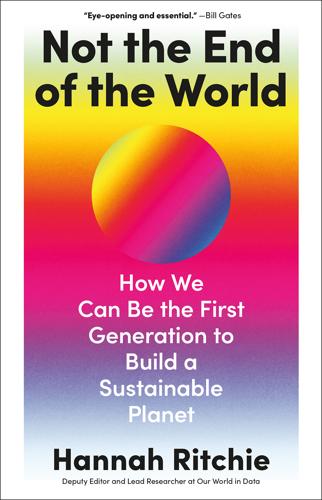
Not the End of the World
by
Hannah Ritchie
Published 9 Jan 2024
That then introduces a trade-off and creates a divide in opinion of how best to preserve biodiversity: should we farm intensively over a smaller area, or should we farm organically, impacting biodiversity over a much larger area.42 The jury is still out. What’s better for the climate though: organic farming or conventional? Turns out, there’s no clear winner. One meta-analysis brought the results together from 164 published studies and 742 agricultural systems to compare their environmental impacts. On greenhouse gas emissions, it was a mixed bag. In some studies, organic won; in others, conventional farming did. The same meta-analysis showed the unanimous result that organic farming was worse for land use, and also found that organic farming was worse for the pollution of rivers and lakes. We often worry about the damage that putting synthetic fertilisers on our crops does to the surrounding ecosystems, but it’s wrong to imagine that this doesn’t happen in organic farming.
…
The basic argument for why seed oils are bad is that they contain a lot of omega-6s, which people argue are linked to inflammation.ii But many studies point to the opposite: that higher consumption of omega-6s is associated with a lower risk of disease. Researchers at Harvard University have loudly pushed against this backlash.29 A meta-analysis covering 30 studies found that omega-6s lowered the risk of heart disease: those with more in their bloodstream were 7% less likely to develop it.30 Another study followed around 2,500 men for an average of 22 years, and found that those with the highest blood levels of omega-6s had a much lower risk of dying from any disease.
…
These studies are informative, but we should be careful about extrapolating too much. The findings from a single species of beetle at a site in Cheltenham does not tell us how insects are doing across the world. When we look at a wider range of studies, the picture is more complex. The largest meta-analysis on insect populations to date comes from the scientist Roel van Klink and his colleagues, published in Science.20 They brought together the results of 165 studies, spread over 1,676 different sites, and which took place between 1925 and 2018. The studies varied in length – but the average was 20 years.
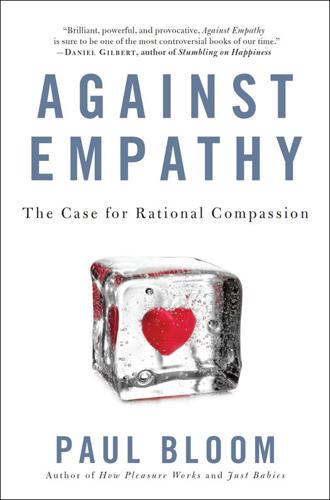
Against Empathy: The Case for Rational Compassion
by
Paul Bloom
Cleckley, The Mask of Sanity: An Attempt to Clarify Some Issues About the So-Called Psychopathic Personality (Augusta, GA: Emily S. Cleckley, 1988), cited by Prinz, “Is Empathy Necessary.” A different concern is raised Skeem et al., “Psychopathic Personality.” 201 a meta-analysis summarized David D. Vachon, Donald R. Lynam, and Jarrod A. Johnson, “The (Non) Relation Between Empathy and Aggression: Surprising Results from a Meta-Analysis,” Psychological Bulletin 140 (2014): 751–73. People with Asperger’s syndrome Ruth C. M. Philip et al., “A Systematic Review and Meta-Analysis of the fMRI Investigation of Autism Spectrum Disorders,” Neuroscience and Biobehavioral Reviews 36 (2012): 901–42. See also Simon Baron-Cohen, The Science of Evil: On Empathy and the Origins of Cruelty (New York: Basic Books, 2012).
…
Individuals with low empathy don’t have such a force inhibiting them, so there should be some correlation between being low in empathy and being badly behaved. But here, at least, I’m giving empathy too much credit. A recent paper reviewed the findings from all available studies of the relationship between empathy and aggression. The results are summarized in the title: “The (Non)Relation between Empathy and Aggression: Surprising Results from a Meta-Analysis.” They report that only about 1 percent of the variation in aggression is accounted for by lack of empathy. This means that if you want to predict how aggressive a person is, and you have access to an enormous amount of information about that person, including psychiatric interviews, pen-and-paper tests, criminal records, and brain scans, the last thing you would bother to look at would be measures of the person’s empathy.
…
The Psychopathy Checklist is predictive of future bad behavior not because it assesses empathy and related sentiments but because, first, it contains items that assess criminal history and current antisocial behavior—questions about juvenile delinquency, criminal versatility, parasitic lifestyle—and, second, it contains items that have to do with lack of inhibition and poor impulse control. This conclusion about psychopaths fits well with what we know about aggressive behavior in nonpsychopaths. As we discussed in an earlier chapter, a meta-analysis summarized the data from all studies that looked at the relationship between empathy and aggression, including verbal aggression, physical aggression, and sexual aggression. It turns out that the relationship is surprisingly low. So here’s what we can say about psychopaths and empathy: They do tend to be low in empathy.
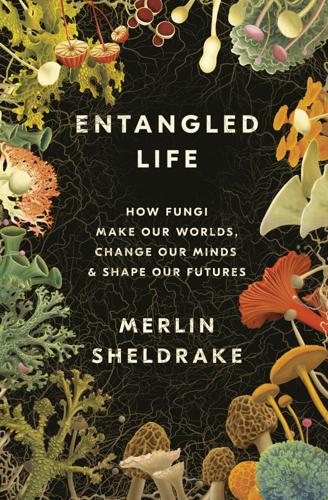
Entangled Life: How Fungi Make Our Worlds, Change Our Minds & Shape Our Futures
by
Merlin Sheldrake
Published 11 May 2020
There is a long tradition of Native American communities using the psychedelic cactus peyote as a treatment for alcoholism. Between the 1950s and the 1970s, a number of studies investigated the possibility that psilocybin and LSD could be used to treat drug addiction. Several reported positive effects. In 2012, a meta-analysis pooled the data from the most rigorously controlled trials. It reported that a single dose of LSD had a beneficial effect on alcohol misuse that lasted up to six months (Krebs and Johansen [2012]). In an online survey designed to investigate the “natural ecology” of the phenomenon, Matthew Johnson and his colleagues analyzed accounts from more than three hundred people who reported that they had reduced their tobacco intake or stopped entirely following an experience with psilocybin or LSD (Johnson et al. [2017]).
…
Delaux PM, Radhakrishnan GV, Jayaraman D, Cheema J, Malbreil M, Volkening JD, Sekimoto H, Nishiyama T, Melkonian M, Pokorny L, et al. 2015. Algal ancestor of land plants was preadapted for symbiosis. Proceedings of the National Academy of Sciences 112: 13390–395. Delavaux CS, Smith-Ramesh L, Kuebbing SE. 2017. Beyond nutrients: a meta-analysis of the diverse effects of arbuscular mycorrhizal fungi on plants and soils. Ecology 98: 2111–119. Deleuze G, Guattari F. 2005. A Thousand Plateaus: Capitalism and Schizophrenia. Minneapolis, MN: University of Minnesota Press. de los Ríos A, Sancho L, Grube M, Wierzchos J, Ascaso C. 2005.
…
“Experimentally Testing Effects of Mycorrhizal Networks on Plant-Plant Interactions and Distinguishing Among Mechanisms.” In Mycorrhizal Networks. Horton T, ed. Springer International Publishing, pp. 255–77. Hoeksema JD, Chaudhary VB, Gehring CA, Johnson NC, Karst J, Koide RT, Pringle A, Zabinski C, Bever JD, Moore JC, et al. 2010. A meta-analysis of context-dependency in plant response to inoculation with mycorrhizal fungi. Ecology Letters 13: 394–407. Hom EF, Murray AW. 2014. Niche engineering demonstrates a latent capacity for fungal-algal mutualism. Science 345: 94–98. Honegger R. 2000. Simon Schwendener (1829–1919) and the dual hypothesis of lichens.
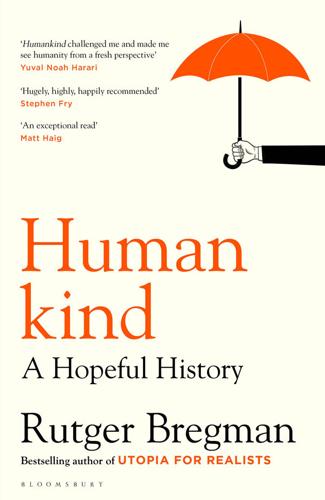
Humankind: A Hopeful History
by
Rutger Bregman
Published 1 Jun 2020
Or maybe there’s something special about the Dutch culture, or this neighbourhood in Amsterdam, or even these four men, that accounts for the anomaly? On the contrary. Though the bystander effect may still be taught in many textbooks, a meta-analysis published in 2011 has shed new light on what bystanders do in emergencies. Meta-analysis is research about research, meaning it analyses a large group of other studies. This meta-analysis reviewed the 105 most important studies on the bystander effect from the past fifty years, including that first experiment by Latané and Darley (with students in a room).18 Two insights came out of this study-of-studies.
…
Kiley Hamlin et al., ‘Not Like Me = Bad: Infants Prefer Those Who Harm Dissimilar Others’, Psychological Science, Vol. 24, Issue 4 (2013). 22Karen Wynn said this on the CNN show Anderson Cooper 360 on 15 February 2014. 23Bloom, Just Babies, pp. 104–5. 24The first meta-analysis, which included twenty-six studies, concluded that babies’ preference for good guys is ‘a well-established empirical finding’. But not everyone is convinced. Some scientists who repeated Hamlin’s experiment saw the same effect, but others found no significant correlation. See Francesco Margoni and Luca Surian, ‘Infants’ Evaluation of Prosocial and Antisocial Agents: A Meta-Analysis’, Developmental Psychology, Vol. 54, Issue 8 (2018). 25Susan Seligson, ‘Felix Warneken Is Overturning Assumptions about the Nature of Altruism’, Radcliffe Magazine (Winter 2015). 26In Warneken’s TEDx Talk (titled: ‘Need Help?
…
We know, for instance, that the ‘innovative’ policing of William Bratton and his Brattonistas was not responsible for the drop in New York City’s crime rates at all. The decline set in earlier, and in other cities, too. Cities like San Diego, where the police left minor troublemakers alone. In 2015, a meta-analysis of thirty studies on broken windows theory revealed that there’s no evidence Bratton’s aggressive policing strategies did anything to reduce crime.33 Zip, zero, zilch. Neighbourhoods aren’t made safer by issuing parking tickets, just as you couldn’t have saved the Titanic by scrubbing the deck.
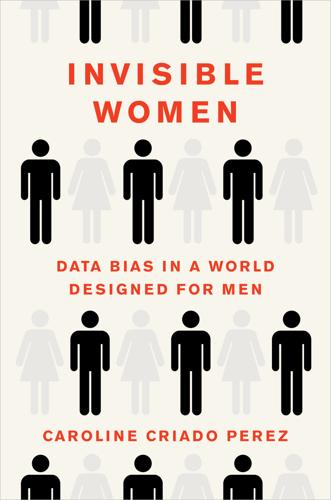
Invisible Women
by
Caroline Criado Perez
Published 12 Mar 2019
In 2011 the World Cancer Research Fund complained that only 50% of studies into the impact of diet on cancer that included both men and women disaggregated their data by sex, making it hard to establish dietary guidelines for cancer prevention that are valid for both sexes.82 Women, for example, should probably eat more protein than men as they age (because of muscle mass loss), but ‘the optimal dose per meal to support muscle protein synthesis in older women has not been determined’.83 The failure to sex-disaggregate when you’ve actually gone to the effort of including both sexes is baffling, not to mention, as Londa Schiebinger at Stanford University puts it, ‘money wasted [and] research that is lost to future meta-analysis’.84 And when female representation in trials is so low, the ability to conduct meta-analysis can mean the difference between life and death. In 2014 a review of the FDA database of a cardiac resynchronisation therapy device (CRT-D – essentially a more complicated kind of pacemaker) trials found that women made up about 20% of participants.85 The number of women included in each individual study was so low that separating out the data for men and women didn’t reveal anything statistically significant.
…
They aren’t a cure, but they prevent many early deaths, and if your heart takes 150 milliseconds or longer to complete a full electrical wave, you should have one implanted. If your heart completes a full circuit in under that time, you wouldn’t benefit from one. Unless, the meta-analysis found, you happened to be female. While the 150 milliseconds threshold worked for men, it was twenty milliseconds too high for women. This may not sound like much, but the meta-analysis found that women with an electrical wave of between 130-49 milliseconds had a 76% reduction in heart failure or death and a 76% reduction in death alone from having the advanced pacemaker implanted. But these women would not be given the device under the guidelines.
…
No wonder that by the time they’re filling out university evaluation forms, students are primed to see their female teachers as less qualified. Schools are also teaching brilliance bias to boys. As we saw in the introduction, following decades of ‘draw a scientist’ studies where children overwhelmingly drew men, a recent ‘draw a scientist’ meta-analysis was celebrated across the media as showing that finally we were becoming less sexist.44 Where in the 1960s only 1% of children drew female scientists, 28% do now. This is of course an improvement, but it is still far off reality. In the UK, women actually outnumber men in a huge range of science degrees: 86% of those studying polymers, 57% of those studying genetics, and 56% of those studying microbiology are female.45 And in any case, the results are actually more complicated than the headlines suggest and still provide damning evidence that data gaps in school curriculums are teaching children biases.
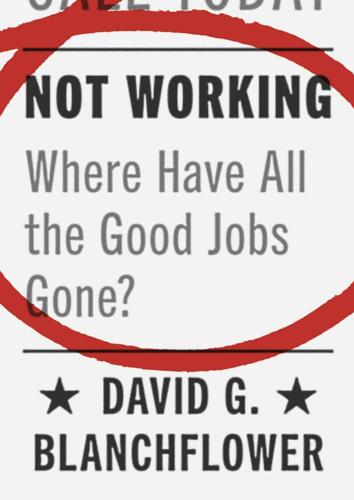
Not Working: Where Have All the Good Jobs Gone?
by
David G. Blanchflower
Published 12 Apr 2021
Subsequent mortality was inversely correlated with the number of occasions on which participants reported high enjoyment of life. Chida and Steptoe (2008) conducted a meta-analysis and found that positive psychological well-being was related to lower mortality. Joy, happiness, and energy, as well as life satisfaction, hopefulness, optimism, and a sense of humor, lowered the risk of mortality. Obesity is also correlated with depression, but the direction of causation is not obvious.21 Obesity makes people depressed, or depression makes people eat, which causes depression or possibly both in a downward spiral. Luppino et al. (2010) addressed this issue with a meta-analysis of studies using longitudinal data and examined whether depression is predictive of the development of overweight and obesity and, in turn, whether overweight and obesity are predictive of the development of depression.
…
Fourth, any local impact is likely to be diluted by adjustment processes, for example changes in the industrial composition and production technologies as well as capital flows” (109).29 A recent meta-analysis updated the list of papers estimating the effect of immigration on wages.30 Of the 28 countries and studies reviewed, 13 find no significant effect, 7 find a small positive effect, and 8 find a small negative effect. A similar meta-analysis for employment has shown that a 1-percentage-point increase in the share of immigrants has an almost negligible impact on native employment, reducing it by 0.024 percent.31 Overall, only about half of studies found a downward effect on wages or employment that is statistically significant at the 10 percent level.
…
The impact of prolonged time spent in unemployment on depression symptoms appears to be explained by individual demographic factors in the sampled countries. 3) Unemployment increases susceptibility to malnutrition, illness, mental stress, and loss of self-esteem, leading to depression.32 There is evidence for the United States that being jobless injures self-esteem and fosters feelings of externality and helplessness among youths.33 The psychological imprint of joblessness persists. Paul and Moser (2009) in a meta-analysis of 237 cross-sectional and 87 longitudinal studies concluded that the unemployed exhibit more distress than the employed. A significant difference was found for several indicator variables of mental health including symptoms of distress, depression, anxiety, psychosomatic symptoms, subjective well-being, and self-esteem.

Enlightenment Now: The Case for Reason, Science, Humanism, and Progress
by
Steven Pinker
Published 13 Feb 2018
Psychological Science, 25, 1914–23. Twenge, J. M., Gentile, B., DeWall, C. N., Ma, D., Lacefield, K., et al. 2010. Birth cohort increases in psychopathology among young Americans, 1938–2007: A cross-temporal meta-analysis of the MMPI. Clinical Psychology Review, 30, 145–54. Twenge, J. M., & Nolen-Hoeksema, S. 2002. Age, gender, race, socioeconomic status, and birth cohort differences on the children’s depression inventory: A meta-analysis. Journal of Abnormal Psychology, 111, 578–88. Twenge, J. M., Sherman, R. A., & Lyubomirsky, S. 2016. More happiness for young people and less for mature adults: Time period differences in subjective well-being in the United States, 1972–2014.
…
We certainly find incremental improvements to celebrate, such as a decline in the death rate from cancer over the past twenty-five years of around a percentage point a year, saving a million lives in the United States alone.20 But we also are regularly disappointed by miracle drugs that work no better than the placebo, treatments with side effects worse than the disease, and trumpeted benefits that wash out in the meta-analysis. Medical progress today is more Sisyphus than Singularity. Lacking the gift of prophecy, no one can say whether scientists will ever find a cure for mortality. But evolution and entropy make it unlikely. Senescence is baked into our genome at every level of organization, because natural selection favors genes that make us vigorous when we are young over those that make us live as long as possible.
…
Eisner, together with the historian Randolph Roth, notes that crime often shoots up in decades in which people question their society and government, including the American Civil War, the 1960s, and post-Soviet Russia.33 Recent reviews of what does and doesn’t work in crime prevention back up Eisner’s advisory, particularly a massive meta-analysis by the sociologists Thomas Abt and Christopher Winship of 2,300 studies evaluating just about every policy, plan, program, project, initiative, intervention, nostrum, and gimmick that has been tried in recent decades.34 They concluded that the single most effective tactic for reducing violent crime is focused deterrence.
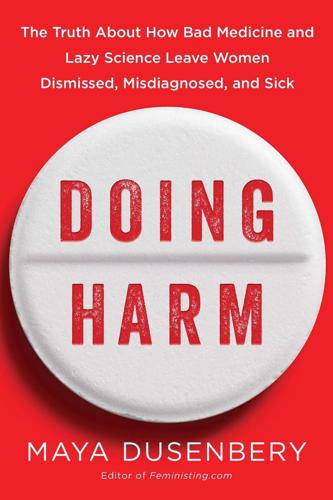
Doing Harm: The Truth About How Bad Medicine and Lazy Science Leave Women Dismissed, Misdiagnosed, and Sick
by
Maya Dusenbery
Published 6 Mar 2018
Noel Bairey Merz et al., “Knowledge, Attitudes, and Beliefs Regarding Cardiovascular Disease in Women,” Journal of the American College of Cardiology 70, no. 2 (July 2017), doi:10.1016/j.jacc.2017.05.024. Meanwhile, a 2015 meta-analysis . . . Aimee Galick, Elizabeth D’Arrigo-Patrick, and Carmen Knudson-Martin, “Can Anyone Hear Me? Does Anyone See Me? A Qualitative Meta-Analysis of Women’s Experiences of Heart Disease,” Qualitative Health Research 25, no. 8 (August 2015), doi:10.1177/1049732315584743. In a 2008 experiment . . . M. Bönte et al., “Women and Men with Coronary Heart Disease in Three Countries: Are They Treated Differently?”
…
Elizabeth N. Chapman, Anna Kaatz, and Molly Carnes, “Physicians and Implicit Bias: How Doctors May Unwittingly Perpetuate Health Care Disparities,” Journal of General Internal Medicine 28, no. 11 (November 2013), doi:10.1007/s11606-013-2441-1. A 2012 meta-analysis . . . Salimah H. Meghani, Eeeseung Byun, and Rollin M. Gallagher, “Time to Take Stock: A Meta-Analysis and Systematic Review of Analgesic Treatment Disparities for Pain in the United States,” Pain Medicine 13, no. 2 (February 2012), doi:10.1111/j.1526-4637.2011.01310.x. A 2015 study found that white children . . . Monika K. Goyal et al., “Racial Disparities in Pain Management of Children with Appendicitis in Emergency Departments,” JAMA Pediatrics 169, no. 11 (November 2015), doi:10.1001/jamapediatrics.2015.1915.
…
Of course, the same counterargument to the exclusion of women applies here: if the results of the study do vary significantly due to fluctuations in ovarian hormones, that’s just all the more reason females need to be studied, no matter the cost. Interestingly, however, it seems that the long-standing assumption that their hormonal cycle makes female animals inherently more variable than males is just that: an assumption. A 2014 meta-analysis of nearly three hundred articles found that female mice weren’t more variable than their male counterparts on a range of behavioral, morphological, physiological, and molecular traits. And for several traits, it was the males that were more variable, perhaps, according to the researchers, largely because when male mice are housed together, they tend to fight among themselves for status, leading to differences in their levels of stress hormones and testosterone.
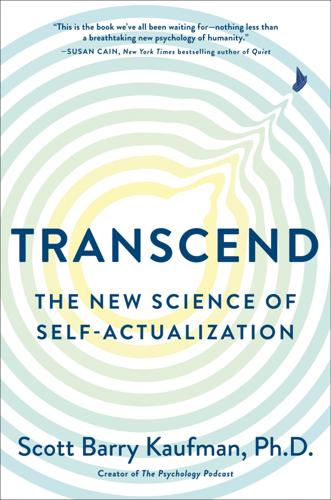
Transcend: The New Science of Self-Actualization
by
Scott Barry Kaufman
Published 6 Apr 2020
Severe obesity as a habituation syndrome: Evidence during a starvation study. Archives of General Psychiatry, 22(2), 120–127. 24. Swanson & Dinello, Severe obesity as a habituation syndrome, p. 124. 25. Orquin, J. L., & Kurzban, R. (2016). A meta-analysis of blood glucose effects on human decision making. Psychological Bulletin, 142(5), 546–567. 26. Nettle, Does hunger contribute to socioeconomic gradients in behavior?; Orquin & Kurzban, A meta-analysis of blood glucose effects on human decision making. 27. Nettle, Does hunger contribute to socioeconomic gradients in behavior? 28. Fessler, Pseudoparadoxical impulsivity in restrictive anorexia nervosa. 29.
…
From Vulnerability to Growth Vulnerable narcissism need not be a barrier to growth. Any of us, regardless of our levels of these characteristics, can take charge of our lives and start to build a coherent and stable sense of self. A key way of overcoming severe self-esteem uncertainty is to shed the perfectionistic self-presentation. As one meta-analysis of the literature found, vulnerable narcissism is significantly linked to an obsessive concern over whether one is coming across as imperfect to others, as well as perceiving others as demanding perfection of oneself.51 Worrying less about what everyone thinks of you, taking more risks (even if they may make you look bad), and really testing whether everyone demands such a high level of perfection from you can stabilize self-esteem.
…
We found that grandiose narcissism is also related to a black-and-white view of others, seen in the endorsement of statements such as “As far as I’m concerned, people are either good or bad,” as well as an extreme view of themselves, seeing themselves as fearless and bold. For example, we found a strong correlation between grandiose narcissism and the statement “I ignore danger as if I were Superman.” These overly inflated views of the self are linked to the high levels of perfectionism found among those who score high in grandiose narcissism.63 One meta-analysis found that those scoring high in grandiose narcissism are more likely to impose harshly perfectionistic demands on others, showing perpetual dissatisfaction with their perceived flaws.64 Grandiose narcissism was also correlated with perfectionistic self-promotion and fantasies of achieving perfection.

The End of Illness
by
David B. Agus
Published 15 Oct 2012
Thankfully, sound research from some of our most trusted purveyors of medical wisdom has tried to put this uncertainty to rest. Today, the growing body of evidence—and scientific opinion held—is changing the landscape for these molecules. For starters, researchers at the Cleveland Clinic attempted to clear up the confusion about supplement use by doing a meta-analysis—an overview study of the best-designed, largest studies of antioxidants. A meta-analysis is an excellent way to explore an idea because it allows investigators to combine the results of many studies, thereby allowing small benefits or harm to be seen that may not have been appreciated in any one study. The Cleveland group’s findings were published in 2003 in the British medical journal the Lancet.
…
The researchers analyzed results from seven large, randomized trials of vitamin E, alone or in combination with other antioxidants, and eight of beta-carotene, which is a precursor of vitamin A. The doses of vitamin E ranged from 50–800 international units (IU); for beta-carotene, the doses were 15–50 milligrams (mg). Overall, 81,788 patients were included in the vitamin E portion of the meta-analysis and 138,113 in the beta-carotene portion. The researchers looked for the effect of these antioxidant vitamins on death rates, either from cardiovascular disease or from any other cause, what’s referred to in scientific circles as “all-cause mortality.” Much to the their surprise, vitamin E did not provide any benefit in lowering mortality compared to control treatments, and it did not significantly decrease the risk of cardiovascular death or stroke (“cerebrovascular accident”).
…
The effects of travel on team performance in the Australian national netball competition. Journal of Sports Science and Medicine 7, no. 1 (March 2004): 118–22. Bjelakovic, G., D. Nikolova, L.L. Gluud, R.G. Simonetti, and C. Gluud. Mortality in randomized trials of antioxidant supplements for primary and secondary prevention: systematic review and meta-analysis. Journal of the American Medical Association 297, no. 8 (February 28, 2007): 842–57. Blair, S.N. Physical inactivity: the biggest public health problem of the 21st century. British Journal of Sports Medicine 43, no. 1 (January 2009): 1–2. Blair, S.N., et al. A tribute to Professor Jeremiah Morris: the man who invented the field of physical activity epidemiology.
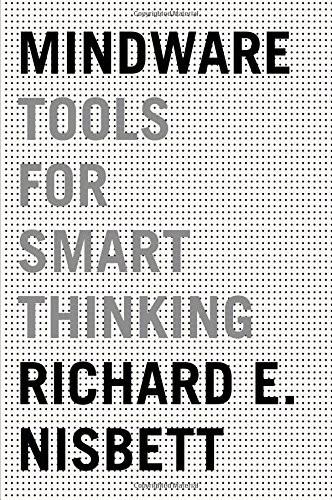
Mindware: Tools for Smart Thinking
by
Richard E. Nisbett
Published 17 Aug 2015
; Dijksterhuis, “Think Different: The Merits of Unconscious Thought in Preference Development and Decision Making”; Dijksterhuis and Nordgren, “A Theory of Unconscious Thought”; A. Dijksterhuis et al., “On Making the Right Choice: The Deliberation-Without-Attention Effect”; Gonzalo et al., “‘Save Angels Perhaps’: A Critical Examination of Unconscious Thought Theory and the Deliberation-Without-Attention Effect”; Strick et al., “A Meta-Analysis on Unconscious Thought Effects.” 11. Lewicki et al., “Nonconscious Acquisition of Information.” 12. Klarreich, “Unheralded Mathematician Bridges the Prime Gap.” 13. Ghiselin, ed. The Creative Process. 14. Maier, “Reasoning in Humans II: The Solution of a Problem and Its Appearance in Consciousness.” 15.
…
Lepper, Greene, and Nisbett, “Undermining Children’s Intrinsic Interest with Extrinsic Reward: A Test of the Overjustification Hypothesis.” PART III: CODING, COUNTING, CORRELATION, AND CAUSALITY 1. Lehman, Lempert, and Nisbett, “The Effects of Graduate Training on Reasoning: Formal Discipline and Thinking About Everyday Life Events.” 7. ODDS AND NS 1. Kuncel, Hezlett, and Ones, “A Comprehensive Meta-Analysis of the Predictive Validity of the Graduate Record Examinations: Implications for Graduate Student Selection and Performance.” 2. Kunda and Nisbett, “The Psychometrics of Everyday Life.” 3. Rein and Rainwater, “How Large Is the Welfare Class?” 4. Kahneman, Thinking, Fast and Slow. 8. LINKED UP 1.
…
LINKED UP 1. Smedslund, “The Concept of Correlation in Adults”; Ward and Jenkins, “The Display of Information and the Judgment of Contingency.” 2. Zagorsky, “Do You Have to Be Smart to Be Rich? The Impact of IQ on Wealth, Income and Financial Distress.” 3. Kuncel, Hezlett, and Ones, “A Comprehensive Meta-Analysis of the Predictive Validity of the Graduate Record Examinations: Implications for Graduate Student Selection and Performance.” 4. Schnall et al., “The Relationship Between Religion and Cardiovascular Outcomes and All-Cause Mortality: The Women’s Health Initiative Observational Study (Electronic Version).” 5.
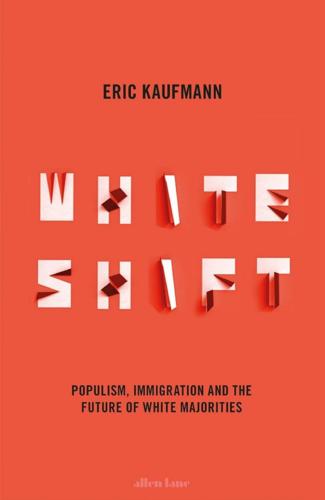
Whiteshift: Populism, Immigration and the Future of White Majorities
by
Eric Kaufmann
Published 24 Oct 2018
Conservatism involves maintaining continuity with the past and resisting change.26 If the West was diverse and became more homogeneous – as occurred in Poland or Vienna after 1939 – the conservative instinct would be to wax nostalgic about past diversity. Ethnic change is the irritant, not levels of diversity, which is why a meta-analysis of the academic literature I helped conduct shows ethnic change nearly always predicts increased anti-immigration sentiment and populist-right voting.27 Psychological authoritarianism, by contrast, concerns the quest for order and security. Diversity, whether ethnic or ideological, however long its provenance, is problematic because it disrupts a sense of harmony and cohesion.
…
For instance, it is conceivable that the rate of ethnic change may taper but assimilation proceeds too slowly to prevent the stock of non-whites from continuing to rise. In this case, we should expect reduced conservative opposition to immigration in tandem with heightening authoritarian concern. In a meta-analysis of all academic articles published between 1995 and 2016 on the relationship between diversity and either opposition to immigration or support for populist-right parties in the West, Matthew Goodwin and I found that both ethnic change and raw minority levels counted at the national level – though minority change was a somewhat stronger predictor of white hostility than minority share.13 Needless to say, the survey and election data we have, much of which dates from the 1990s, makes it very difficult to disentangle the effect of levels from changes.
…
In addition, the effect size of anti-immigration attitudes was twice that of dissatisfaction with democracy in predicting whether an individual in a European country voted for the populist right.19 The same was true in the early 2000s, with cultural threats many times stronger than economic threats in some models.20 In a meta-analysis of the literature on the populist right between 1995 and 2016 that I conducted with Matthew Goodwin of the University of Kent, the effects of minority share on attitudes to immigration and on populist-right support were virtually identical, suggesting the two outcomes are closely linked. Populist-right support in a city, region or country was positively correlated with the share of minorities or immigrants in twenty-seven of thirty-five studies where a significant relationship was found.
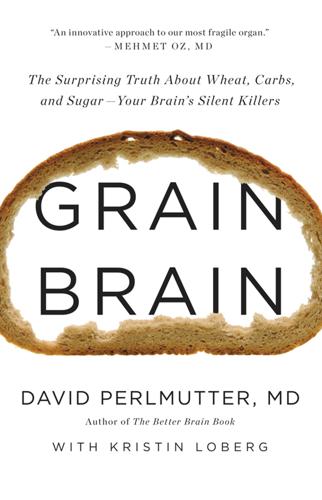
Grain Brain: The Surprising Truth About Wheat, Carbs, and Sugar--Your Brain's Silent Killers
by
David Perlmutter
and
Kristin Loberg
Published 17 Sep 2013
Smoller, et al., “Antidepressant Use and Risk of Incident Cardiovascular Morbidity and Mortality Among Postmenopausal Women in the Women’s Health Initiative Study,” Archives of Internal Medicine 169, no. 22 (December 14, 2009): 2128–39. 21. J. C. Fournier, et al., “Antidepressant Drug Effects and Depression Severity: A Patient-level Meta-analysis,” JAMA 303, no. 1 (January 6, 2010): 47–53. 22. J. Y. Shin, et al., “Are Cholesterol and Depression Inversely Related? A Meta-analysis of the Association Between Two Cardiac Risk Factors,” Annals of Behavioral Medicine 36, no. 1 (August 2008): 33–43. 23. http://www.naturalnews.com/032125_statins_memory_loss.html. 24. James Greenblatt, MD, “Low Cholesterol and Its Psychological Effects: Low Cholesterol Is Linked to Depression, Suicide, and Violence,” The Breakthrough Depression Solution (blog), Psychology Today, June 10, 2011, http://www.psychologytoday.com/blog/the-breakthrough-depression-solution/201106/low-cholesterol-and-its-psychological-effects. 25.
…
Weverling-Rijnsburger, et al., “Total Cholesterol and Risk of Mortality in the Oldest Old,” Lancet 350, no. 9085 (October 18, 1997): 1119–23. 13. L. Dupuis, et al., “Dyslipidemia Is a Protective Factor in Amyotrophic Lateral Sclerosis,” Neurology 70, no. 13 (March 25, 2008): 1004–09. 14. P. W. Siri-Tarino, et al., “Meta-analysis of Prospective Cohort Studies Evaluating the Association of Saturated Fat with Cardiovascular Disease,” American Journal of Clinical Nutrition 91, no. 3 (March 2010): 535–46. 15. Michael I. Gurr, et al., Lipid Biochemistry: An Introduction, Fifth Edition (New York: Wiley-Blackwell, 2010). 16.
…
Geroldi, et al., “Insulin Resistance in Cognitive Impairment: The InCHIANTI Study,” Archives of Neurology 62, no. 7 (2005): 1067–72. 18. M. Adamczak and A. Wiecek, “The Adipose Tissue as an Endocrine Organ,” Seminars in Nephrology 33, no. 1 (January 2013): 2–13. 19. E. L. de Hollander, et al., “The Association Between Waist Circumference and Risk of Mortality Considering Body Mass Index in 65-to 74-year-olds: A Meta-analysis of 29 Cohorts Involving More Than 58,000 Elderly Persons,” International Journal of Epidemiology 41, no. 3 (June 2012): 805–17. 20. F. Item and D. Konrad, “Visceral Fat and Metabolic Inflammation: The Portal Theory Revisited,” pt. 2, Obesity Reviews 13 (December 2012): S30–S39. 21. C. Geroldi, et al., “Insulin Resistance in Cognitive Impairment” (see chap. 4, n. 17). 22.
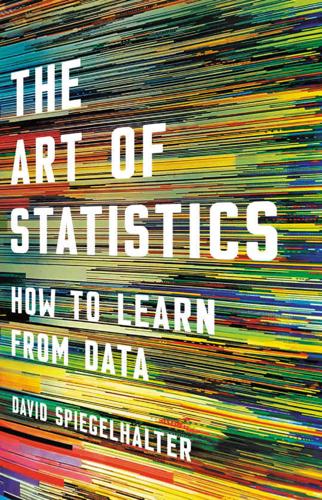
The Art of Statistics: How to Learn From Data
by
David Spiegelhalter
Published 2 Sep 2019
Don’t rely on a single study: A single statin trial may tell us that the drug worked in a particular group in a particular place, but robust conclusions require multiple studies. 9. Review the evidence systematically: When looking at multiple trials, make sure to include every study that has been done, and so create what is known as a systematic review. The results may then be formally combined in a meta-analysis. For example, a recent systematic review put together evidence from twenty-seven randomized trials of statins, which included more than 170,000 people at lower risk of cardiovascular disease.4 But rather than focusing on the difference between the groups allocated to taking statins and controls, they instead estimated the effect of reducing LDL.
…
We have ignored the possibility that any observed relationship is not causal at all, but simply the result of chance. Most drugs on the market have only moderate effects, and only help a minority of people who take them, and their overall benefit can only be reliably detected by large, meticulous, randomized trials. Statin trials are huge, especially when put together in a meta-analysis, which means that the results discussed here cannot be put down to chance variation. (We shall see how to check this in Chapter 10.) Is prayer effective? The list of principles for RCTs is not new: they were nearly all introduced in 1948 in what is generally considered the first proper clinical trial.
…
Think about cherry-picked results, missing information that would conflict with the story, and lack of independent comment. HOW TRUSTWORTHY IS THE INTERPRETATION? 7. How does the claim fit with what else is known? Consider the context, appropriate comparators, including historical data, and what other studies have shown, ideally in a meta-analysis. 8. What’s the claimed explanation for whatever has been seen? Vital issues are correlation v. causation, regression to the mean, inappropriate claim that a non-significant result means ‘no effect’, confounding, attribution, prosecutor’s fallacy. 9. How relevant is the story to the audience?
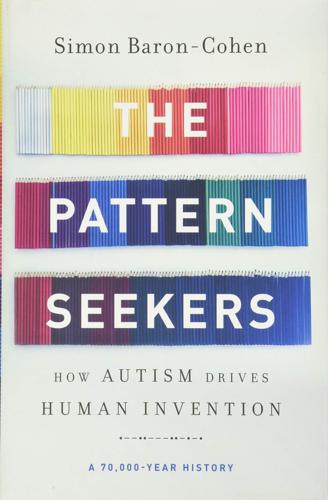
The Pattern Seekers: How Autism Drives Human Invention
by
Simon Baron-Cohen
Published 14 Aug 2020
Grice (1989), Studies in the way of words (Cambridge, MA: Harvard University Press); and J. L. Austin (1962), How to do things with words: The William James Lectures delivered at Harvard University in 1955, ed. J. O. Urmson and M. Sbisà (Oxford: Clarendon Press). 53. See C. Colonnesi et al. (2010), “The relation between pointing and language development: A meta-analysis,” Developmental Review 30(4), 352–366; M. Tomasello (2006), “Why don’t apes point?,” in Roots of human sociality: Culture, cognition, and interaction, ed. N. Enfield and S. Levinson (Oxford and New York: Berg); and A. Smet and R. Byrne (2013), “African elephants can use human pointing cues to find hidden food,” Current Biology 23(20), 2033–2037.
…
Baron-Cohen et al. (2001), “The ‘Reading the Mind in the Eyes’ test revised version: A study with normal adults, and adults with Asperger syndrome or high-functioning autism,” Journal of Child Psychology and Psychiatry 42, 241–252. 24. On the genetic association with the Eyes test, see V. Warrier et al. (2018), “Genome-wide meta-analysis of cognitive empathy: Heritability, and correlates with sex, neuropsychiatric conditions and cognition,” Molecular Psychiatry 23, 1402–1409. Genome-wide association studies are currently the most powerful way to identify if scores on any trait measure are correlated with any common genetic variants.
…
Johannesson (1994), “Sexual selection on female size in a marine snail, Littorina littorea (L.),” Journal of Experimental Marine Biology and Ecology 181, 145–157; A. Fargevieille et al. (2017), “Assortative mating by colored ornaments in blue tits: Space and time matter,” Ecology and Evolution 7(7), 2069–2078; G. Stulp et al. (2017), “Assortative mating for human height: A meta-analysis,” American Journal of Human Biology 29(1, January–February), e22917; K. Han, N. C. Weed, and J. N. Butcher (2003), “Butcher dyadic agreement on the MMPI-2,” Personality and Individual Differences 35, 603–615; and J. Glickson and H. Golan (2001), “Personality, cognitive style, and assortative mating,” Personality and Individual Differences 30, 1109–1209. 14.

Work Rules!: Insights From Inside Google That Will Transform How You Live and Lead
by
Laszlo Bock
Published 31 Mar 2015
E. Marler, “Change Driven by Nature: A Meta-Analytic Review of the Proactive Personality,” Journal of Vocational Behavior 75, no. 3 (2009): 329–345. (A meta-analysis of 107 studies.) Jeffrey P. Thomas, Daniel S. Whitman, and Chockalingam Viswesvaran, “Employee Proactivity in Organizations: A Comparative Meta-Analysis of Emergent Proactive Constructs,” Journal of Occupational and Organizational Psychology 83, no. 2 (2010): 275–300. (A meta-analysis of 103 samples.) 225. Wikipedia, “Poka-yoke,” last modified May 11, 2014, http://en.wikipedia.org/wiki/Poka-yoke. 226. Steven F. Venti and David A. Wise, “Choice, Chance, and Wealth Dispersion at Retirement,” in Aging Issues in the United States and Japan, eds.
…
Happily, the 2013 movie The Internship, about two washed-up watch salesmen who decide to become interns at Google, gave the answer to the blender question, so at least that one can’t be asked as an interview question anymore.xxii A century of science points the way to an answer In 1998, Frank Schmidt and John Hunter published a meta-analysis of eighty-five years of research on how well assessments predict performance.85 They looked at nineteen different assessment techniques and found that typical, unstructured job interviews were pretty bad at predicting how someone would perform once hired. Unstructured interviews have an r2 of 0.14, meaning that they can explain only 14 percent of an employee’s performance.xxiii This is somewhat ahead of reference checks (explaining 7 percent of performance), ahead of the number of years of work experience (3 percent), and well ahead of “graphology,” or handwriting analysis (0.04 percent), which I’m stunned that anyone actually uses.
…
Springbett of the University of Manitoba, published in 1958. Though using a very small sample of interviewers, he found that decisions were typically made within the first four minutes of an interview. Subsequent research includes: Nalini Ambady and Robert Rosenthal, “Thin Slices of Expressive Behavior as Predictors of Interpersonal Consequences: A Meta-Analysis,” Psychological Bulletin 111, no. 2 (1992): 256–274 ; M. R. Barrick, B. W. Swider, and G. L. Stewart, “Initial Evaluations in the Interview: Relationships with Subsequent Interviewer Evaluations and Employment Offers,” Journal of Applied Psychology 95, no. 6 (2010): 1163–1172 ; M. R. Barrick, S.
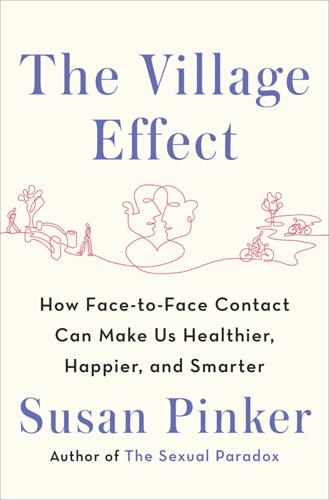
The Village Effect: How Face-To-Face Contact Can Make Us Healthier, Happier, and Smarter
by
Susan Pinker
Published 30 Sep 2013
For more on why we’re so bad at predicting what will make us happy, read Harvard’s Dan Gilbert: Daniel Gilbert, Stumbling on Happiness (New York: Knopf, 2006). 63. Finkel et al., “Online Dating: A Critical Analysis from the Perspective of Psychological Science.” 64. Matching personality traits do not predict the longevity of a relationship, according to a meta-analysis of 313 studies: R. Matthew Montoya, Robert S. Horton, and Jeffrey Kirchner, “Is Actual Similarity Necessary for Attraction? A Meta-analysis of Actual and Perceived Similarity,” Journal of Social and Personal Relationships 25, no. 6 (2008). 65. The following assertion appeared on eHarmony’s website in August 2012: “Our compatibility matching models are based on 35 years of clinical experience and rigorous scientific research into which characteristics between spouses are consistently associated with the most successful relationships.”
…
The twenty-strong team of international researchers who conducted this study found that the increased rate of early breastfeeding in the experimental group led to fewer digestive and skin ailments in the babies in the short term, and also to a boosted verbal IQ score in the long term, when these children were tested six years later.9 Presumably every parent wants clever children, and an average increase of 7.5 IQ points is nothing to sneeze at. So impressed were they with the data showing enhanced health and intelligence in breastfed babies that officials at the World Health Organization based its international breastfeeding strategy on a meta-analysis of these studies. This leads us to an uncomfortable question. If the majority of women in the West are giving up the practice before their infants can hold up their heads, what are they missing? I asked this question of Michael Kramer, the McGill-based pediatric epidemiologist who is the Belarusian study’s lead author.
…
Meanwhile, research shows that face-to-face contact with a skilled teacher for even one year of a child’s life has more impact on the child’s learning than any laptop program has had so far.22 If policymakers want to use resources wisely, it is clear that you get a lot more from parent and teacher training programs than you do from investing in expensive—and highly perishable—classroom technology.23 To be sure, there are wonderful pieces of educational software on the market, and well-trained teachers who know how to use them to advantage—mostly to target specific skills.24 But among the most vulnerable kids, the ones who most need a leg-up to succeed—primarily lower-income children, those with ADHD, and impulsive boys—what boosts achievement the most are initiatives that help them develop self-discipline and what psychologists call executive function, namely the ability to plan, to hold key bits of information in memory, and to be cognitively flexible, all while inhibiting their impulses. So, what helps school-age kids master those skills? Adele Diamond and Kathleen Lee, two Canadian psychologists, asked that question in a recent meta-analysis published in Science. They discovered that even the best computer programs, which build in increasing challenges as the child gains competence, succeeded at training kids one skill at a time. But that one skill didn’t transfer well to other areas. In other words, a program that trained kids on short-term memory didn’t help them with other types of tasks, including ones that included memory skills.
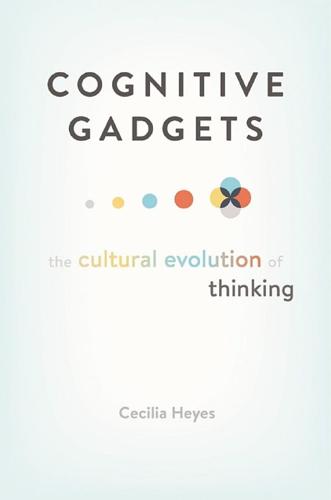
Cognitive Gadgets: The Cultural Evolution of Thinking
by
Cecilia Heyes
Published 15 Apr 2018
This section focuses on three topics—neural localization, sequence learning, and social shaping—which, although not wholly “new,” have been investigated with vigor in recent years, often with the intention of providing positive evidence in favor of the cultural account. Neural Localization In a meta-analysis of more than 450 functional magnetic resonance imaging (fMRI) studies, Anderson (2008) found that activity during language processing was more widely scattered across the brain than during any other type of task. The spatial distribution of neural activity was greater for language than for reasoning, memory, visual perception, mental imagery, emotion, action, and attention. In a complementary way, Poldrack (2006) found in another meta-analysis of fMRI data, that Broca’s area, a region of the brain long famous for being a “language center,” was active in more studies involving cognitive tasks unrelated to language (199) than in studies of language processing (166).
…
New York: Oxford University Press, 49–61. Caselli, L., and Chelazzi, L. (2011). Does the macaque monkey provide a good model for studying human executive control? A comparative behavioral study of task switching. PLoS One, 6(6), e21489. Caspers, S., Zilles, K., Laird, A. R., and Eickhoff, S. B. (2010). ALE meta-analysis of action observation and imitation in the human brain. NeuroImage, 50(3),1148–1167. Catmur, C., Mars, R. B., Rushworth, M. F., and Heyes, C. (2011). Making mirrors: Premotor cortex stimulation enhances mirror and counter-mirror motor facilitation. Journal of Cognitive Neuroscience, 23(9), 2352–2362.
…
Statistical learning and language: An individual differences study. Language Learning, 62(1), 302–331. Moerk, E. L. (1991). Positive evidence for negative evidence. First Language, 11(32), 219–251. Molenberghs, P., Cunnington, R., and Mattingley, J. B. (2012). Brain regions with mirror properties: A meta-analysis of 125 human fMRI studies. Neuroscience and Biobehavioral Reviews, 36(1), 341–349. Moon, C., Cooper, R. P., and Fifer, W. P. (1993). Two-day-olds prefer their native language. Infant Behavior and Development, 16(4), 495–500. Moore, C., and Corkum, V. (1994). Social understanding at the end of the first year of life.
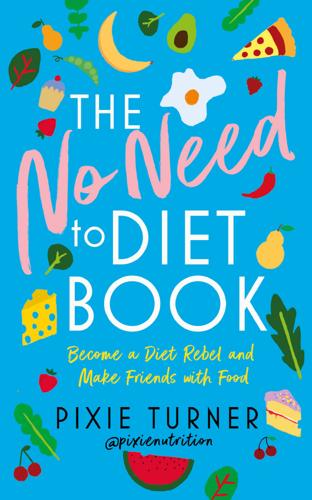
The No Need to Diet Book: Become a Diet Rebel and Make Friends With Food
by
Plantbased Pixie
Published 7 Mar 2019
Journal of Health Psychology, 31(4):521–524. 58. Havermans, R.C., Vancleef, L., Kalamatianos, A., Nederkoorn, C. (2015). ‘Eating and inflicting pain out of boredom’. Appetite, 85:52–57. 59. Cardi, V., Leppanen, J., Treasure, J. (2015). ‘The effects of negative and positive mood induction on eating behaviour: A meta-analysis of laboratory studies in the healthy population and eating and weight disorders’. Neuroscience & Biobehavioral Review, 57:299–309. 60. White, B.A., Horwath, C.C, Conner, T.S. (2013). ‘Many apples a day keep the blues away:Daily experiences of negative and positive affect and food consumption in young adults’.
…
Frederick, D.A., Daniels, E.A., Bates, M.E., Tylka, T.L. (2017). ‘Exposure to thin-ideal media affect most, but not all, women: Results from the perceived effects of media exposure scale and open-ended responses’. Body Image, 23:188–205. 111. Grabe, S., Ward, L.M., Hyde, J.S. (2008). ‘The role of the media in body image concerns among women: A meta-analysis of experimental and correlational studies’. Psychological Bulletin, 134(3):460–476. 112. Levine, M.P., Murnen, S.K. (2009). ‘“Everybody knows that mass media are/are not [pick one] a cause of eating disorders”: A critical review of evidence for a causal link between media, negative body image, and disordered eating in females’.
…
Harvey, S.B., Øverland, S., Hatch, S.L., Wessely, S., Mykletun, A., Hotopf, M. (2018). ‘Exercise and the prevention of depression: Results of the HUNT cohort study. American Journal of Psychiatry, 175(1):28–36. 130. Anglin, R.E.S., Samaan, Z., Walter, S.D., McDonald, S.D. (2013). ‘Vitamin D deficiency and depression in adults: systematic review and meta-analysis’. British Journal of Psychiatry, 202(02):100–107. 131. Spence, J.C., McGannon, K.R, Poon P. (2005). ‘The effect of exercise on global self-esteem: A quantitative review’. Journal of Sport and Exercise Psychology, 27(3):311–334. 132. Hamer, M., Stamatakis, E., Steptoe, A. (2009). ‘Dose-response relationship between physical activity and mental health: The Scottish health survey’.
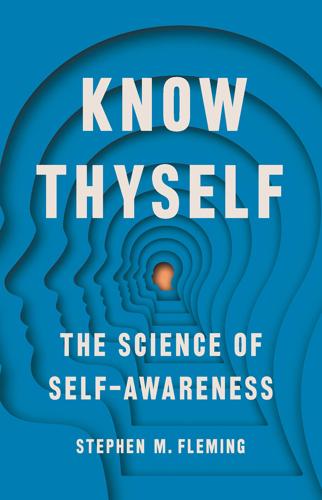
Know Thyself
by
Stephen M Fleming
Published 27 Apr 2021
Instead, to probe causality, we can use stimulation techniques such as transcranial magnetic stimulation (TMS), which uses strong magnetic pulses to temporarily disrupt normal neural activity in a particular region of cortex. When TMS is applied to the parietal midline, it selectively affects how quickly people can identify an adjective as being relevant to themselves, suggesting that the normal brain processes in this region are important for self-reflection.18 Medial surface activations obtained using the meta-analysis tool NeuroQuery in relation to the term “self-referential.” (https://neuroquery.org, accessed September 2020.) Damage to these networks can lead to isolated changes in self-awareness—we may literally lose the ability to know ourselves. The first hints that brain damage could lead to problems with metacognition came in the mid-1980s.
…
However, clear overlap between brain activations involved in metacognition and mindreading was observed in the ventral and anterior medial PFC. Thoughts about ourselves and others indeed seem to engage similar neural machinery, in line with a Rylean, second-order view of how we become self-aware.23 Brain activations obtained in a meta-analysis of metacognition compared to brain activations related to the term “mentalizing,” from Neurosynth. (Reproduced with permission from Vaccaro and Fleming, 2018.) Breakthrough Powers of Recursion We have already seen that animals share a range of precursors for self-awareness. The science of metacognition deals in shades of gray, rather than black or white.
…
“Why the Unskilled Are Unaware: Further Explorations of (Absent) Self-Insight Among the Incompetent.” Organizational Behavior and Human Decision Processes 105, no. 1 (2008): 98–121. Eichner, Carolin, and Fabrice Berna. “Acceptance and Efficacy of Metacognitive Training (MCT) on Positive Symptoms and Delusions in Patients with Schizophrenia: A Meta-Analysis Taking into Account Important Moderators.” Schizophrenia Bulletin 42, no. 4 (2016): 952–962. Ernst, Marc O., and Martin S. Banks. “Humans Integrate Visual and Haptic Information in a Statistically Optimal Fashion.” Nature 415, no. 6870 (2002): 429–433. Eskreis-Winkler, Lauren, Katherine L. Milkman, Dena M.

The End of Doom: Environmental Renewal in the Twenty-First Century
by
Ronald Bailey
Published 20 Jul 2015
The Environmental Kuznets Curve hypothesis posits that environmental conditions initially deteriorate as economic growth takes off, but later improve when citizens with rising incomes demand better quality environmental amenities. There is still considerable debate over the empirical reality of this hypothesis, but a 2011 meta-analysis based on 878 observations from 103 empirical EKC studies (1992 to 2009) reports that its results “indicate the presence of an EKC-type relationship for landscape degradation, water pollution, agricultural wastes, municipal-related wastes, and several air pollution measures.” The best evidence backs the notion that increasing wealth from economic growth correlates with a cleaner natural environment—that is to say, richer becomes cleaner.
…
For example, zebra mussels are very effective filter feeders that have helped clear up the polluted waters of the Great Lakes enough to permit native lake grasses and other plants to flourish. A 2012 review article in Trends in Ecology and Evolution surveying the literature on the effects of introduced species on ecosystem functioning reported that a “meta-analysis of over 1000 field studies showing that, although regional native species richness has often declined, primary production and several ecosystem processes were usually maintained or enhanced as a result of species introductions.” The researchers further conclude, “What is clear is that ecological theory does not automatically imply that a global decline in species richness will result in impaired functioning of the world’s ecosystems.”
…
“The influence of innovation”: Harry Bloch and David Sapsford, “Innovation, Real Primary Commodity Prices, and the Business Cycles,” paper presented at the International Schumpeter Society Conference 2010 on Innovation, Organisation, Sustainability and Crises, Aalborg, June 2010, 10. presence of an EKC-type relationship: Bishwa Koirala et al., “Further Investigation of Environmental Kuznets Curve Studies Using Meta-Analysis.” International Journal of Ecological Economics and Statistics 22.S11 (2011). www.ceserp.com/cp-jour/index.php?journal=ijees&page=article&op=view&path[]=1014. globally, pollution: edgar.jrc.ec.europa.eu/news_docs/July%2019_v2.pdf, Version v4.1of the Emission Database for Global Atmospheric Research (EDGAR), July 2010.

The Norm Chronicles
by
Michael Blastland
Published 14 Oct 2013
N. Engl. J. Med. 2012 May 17;366(20):1891–904. (h) Woodcock, J., Franco, O.H., Orsini, N., Roberts, I. Non-Vigorous Physical Activity and All-Cause Mortality: Systematic Review and Meta-Analysis of Cohort Studies. Int.J Epidemiol. 2011 Feb;40(1):121–38. (j) Ray, K.K., Seshasai, S.R.K., Erqou, S., Sever, P., Jukema, J.W., Ford, I., et al. Statins and All-Cause Mortality in High-Risk Primary Prevention: A Meta-Analysis of 11 Randomized Controlled Trials Involving 65,229 Participants. Arch. Intern. Med. 2010 Jun 28;170(12):1024–31. (k) Pope, C.A., Ezzati, M., Dockery, D.W. Fine-Particulate Air Pollution and Life Expectancy in the United States.
…
Although now he thought about it he didn’t recall anything about … ‘Nearly there,’ said the midwife. ‘You’re doing brilliant …’ Well, thought Norm, depends what metric she uses. Performance, P… P…. He should have used staples. Time-wise, his wife was about average, if truth be told. He was about to ask from under the instrument trolley what the midwife meant when a note caught his eye on a meta-analysis of randomised controlled trials of vitamin K injections for new-borns, he heard a gurgle, and the midwife tapped him on the back. ‘Norm… Norm… It’s a boy.’ And there he was. ‘A beautiful baby boy,’ she said. And Mrs N with a huge sappy smile, the baby in her arms, the midwife grinning like a slice of melon.
…
Figure 37: Average MicroLives (1/2 hour of life-expectancy) lost or gained per day of exposure to a specified hazard ratio for all-cause mortality, averaged over life after 35 Sources: (a) Doll, R. Mortality in Relation to Smoking: 50 Years’ Observations on Male British Doctors. BMJ. 2004 Jun 26;328:1519–20. (b) Di Castelnuovo, A., Costanzo, S., Bagnardi, V., Donati, M.B., Iacoviello, L., De Gaetano, G. Alcohol Dosing and Total Mortality in Men and Women: An Updated Meta-Analysis of 34 Prospective Studies. Arch. Intern. Med. 2006 Dec 11;166(22):2437–45. (c) Prospective Studies Collaboration. Body-Mass Index and Cause-Specific Mortality in 900,000 Adults: Collaborative Analyses of 57 Prospective Studies. The Lancet. 2009 Mar;373:1083–96. (d) Wijndaele, K., Brage, S., Besson, H., Khaw, K.
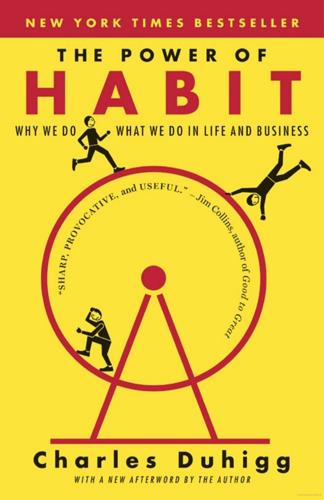
The Power of Habit: Why We Do What We Do in Life and Business
by
Charles Duhigg
Published 1 Jan 2011
Bebbington, “The Efficacy of Alcoholics Anonymous: The Elusiveness of Hard Data,” British Journal of Psychiatry 128 (1976): 572–80. 3.20 “It’s not obvious from the way they’re written” Emrick et al., “Alcoholics Anonymous: What Is Currently Known?”; J. S. Tonigan, R. Toscova, and W. R. Miller, “Meta-analysis of the Literature on Alcoholics Anonymous: Sample and Study Characteristics Moderate Findings,” Journal of Studies on Alcohol 57 (1995): 65–72; J. S. Tonigan, W. R. Miller, and G. J. Connors, “Project MATCH Client Impressions About Alcoholics Anonymous: Measurement Issues and Relationship to Treatment Outcome,” Alcoholism Treatment Quarterly 18 (2000): 25–41; J.
…
Klem et al., “A Descriptive Study of Individuals Successful at Long-Term Maintenance of Substantial Weight Loss,” American Journal of Clinical Nutrition 66 (1997): 239–46; M. J. Mahoney, N. G. Moura, and T. C. Wade, “Relative Efficacy of Self-Reward, Self-Punishment, and Self-Monitoring Techniques for Weight Loss,” Journal of Consulting and Clinical Psychology 40 (1973): 404–7; M. J. Franz et al., “Weight Loss Outcomes: A Systematic Review and Meta-Analysis of Weight-Loss Clinical Trials with a Minimum 1-Year Follow-up,” Journal of the American Dietetic Association 107 (2007): 1755–67; A. DelParigi et al., “Successful Dieters Have Increased Neural Activity in Cortical Areas Involved in the Control of Behavior,” International Journal of Obesity 31 (2007): 440–48. 4.26 researchers referred to as “grit” Jonah Lehrer, “The Truth About Grit,” The Boston Globe, August 2, 2009. 4.27 “despite failure, adversity, and plateaus in progress” A.
…
Tice, “Ego Depletion: A Resource Model of Volition, Self-Regulation, and Controlled Processing,” Social Cognition 74 (2000): 1252–65; Roy F. Baumeister and Mark Muraven, “Self-Regulation and Depletion of Limited Resources: Does Self-Control Resemble a Muscle?” Psychological Bulletin 126 (2000): 247–59; See also M. S. Hagger et al., “Ego Depletion and the Strength Model of Self-Control: A Meta-Analysis,” Psychological Bulletin 136 (2010): 495–25; R. G. Baumeister, K. D. Vohs, and D. M. Tice, “The Strength Model of Self-Control,” Current Directions in Psychological Science 16 (2007): 351–55; M. I. Posne and M. K. Rothbart, “Developing Mechanisms of Self-Regulation,” Development and Psychopathology 12 (2000): 427–41; Roy F.
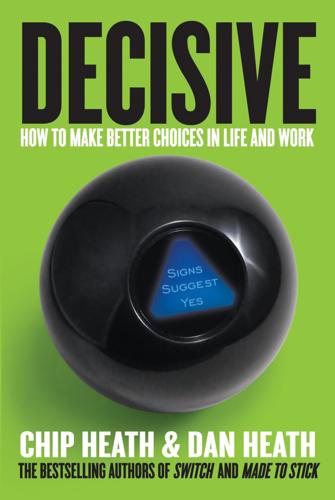
Decisive: How to Make Better Choices in Life and Work
by
Chip Heath
and
Dan Heath
Published 26 Mar 2013
Hayward and Hambrick also showed that when the CEOs paid a premium, they overpaid: Subsequent performance was measurably worse in situations where CEOs paid bigger premiums. 2 Alfred Sloan story. Peter F. Drucker (2006), The Effective Executive (New York: Harper Business), p. 148. 3 Meta-analysis of confirmation bias. William Hart, et al. (2009), “Feeling Validated Versus Being Correct: A Meta-analysis of Selected Exposure to Information,” Psychological Bulletin 135: 555–58. 4 Devil’s advocate. Discussion of the devil’s advocate and its role in the Catholic Church is from Paul B. Carroll and Chunka Mui (2008), Billion Dollar Lessons: What You Can Learn from the Most Inexcusable Business Failures of the Last Twenty-Five Years (New York: Portfolio Books).
…
You search the restaurant’s reviews online, and the results show a handful of good reviews (four out of five stars) and a handful of poor ones (two stars). Which reviews would you read? Almost certainly, you’d read more of the positive reviews. You really want this restaurant to be great. A recent meta-analysis of the psychology literature illustrated how dramatic this effect is. In reviewing more than 91 studies of over 8,000 participants, the researchers concluded that we are more than twice as likely to favor confirming information than disconfirming information. (So, scientifically speaking, you’d probably read twice as many four-star reviews as two-star reviews.)
…
But the typical study has implicitly assumed that paralysis kicks in somewhere between 6 options and 20. Recently some researchers have argued that choice paralysis is not a serious problem even with the larger assortments. The initial demonstrations of choice paralysis attracted a lot of interest, so by 2010 a group of researchers was able to conduct a meta-analysis of over 50 published papers with more than 5,000 participants. They found that in the studies they reviewed, increasing the number of options did not reliably reduce satisfaction or motivation to choose. Indeed, in situations where people had expertise or well-developed preferences (e.g., common food categories like coffee), more choices tended to increase satisfaction.
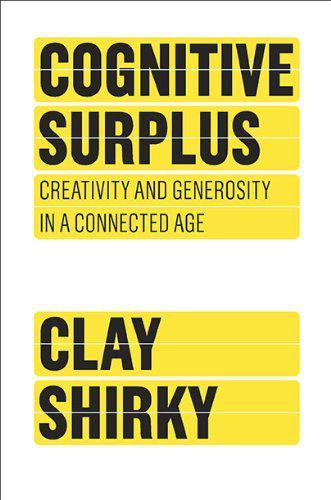
Cognitive Surplus: Creativity and Generosity in a Connected Age
by
Clay Shirky
Published 9 Jun 2010
In 1994, Judy Cameron and David Pierce of the University of Alberta analyzed the results of dozens of studies that had paid experimental subjects to perform various tasks. Their meta-analysis (as such studies of multiple experiments are called) denied the existence of any such crowding-out effect. Deci and research partner Richard Ryan responded in 1999, pointing out that Cameron and Pierce had included a large number of studies noting that people were more motivated to do uninteresting tasks if you paid them, a result no one disputed. What Deci had examined, rather, was intrinsic motivation for tasks a subject was interested in. Deci and Ryan’s own meta-analysis, which excluded boring tasks, again found a crowding-out effect.
…
Deci and Ryan’s own meta-analysis, which excluded boring tasks, again found a crowding-out effect. Cameron and Pierce’s second meta-analysis, in 2001, conceded that the crowding out of free choice can occur with the introduction of extrinsic motivations. Nevertheless, Cameron and Pierce remained skeptical that the crowding-out effect mattered much in the real world; their focus was on rewards offered in institutional settings, like schools and work-places. To them, the crowding-out effect seemed concentrated in areas where people had a high degree of freedom to choose their activity. Cameron and Pierce thus concluded that though the crowding-out effect was real, it was minor. After all, how many places are there where someone’s free choice of activities matters much to anyone but the individual?
…
(Zuerichbergstrasse, Zurich: Institute for Empirical Research in Economics, 1999), http://ideas.repec.org/s/zur/iewwpx.html. 73 this sort of crowding out can appear in children as young as fourteen months: Tomasello’s research on children and their view of how things should be, by some ethical compass (a trait called “normativity,” or the understanding and abiding by norms), was published as “The Sources of Normativity: Young Children’s Awareness of the Normative Structure of Games,” with his coauthors, H. Rakoczy and F. Wameken, in Developmental Psychology 44.3 (2008): 875-81. 74 dozens of studies that had paid experimental subjects: Judy Cameron and David Pierce, “Reinforcement, Reward, and Intrinsic Motivation: A Meta-Analysis,” Review of Educational Research 64.3 (1994): 363-423. 74 people were more motivated to do uninteresting tasks if you paid them: Edward L., Deci, Richard Koestner, and Richard Ryan, “A Meta-Analytic Review of Experiments Examining the Effects of Extrinsic Rewards on Intrinsic Motivation,” Psychological Bulletin 125.6 (1999): 627-68. 74 crowding out of free choice can occur with the introduction of extrinsic motivations: J.
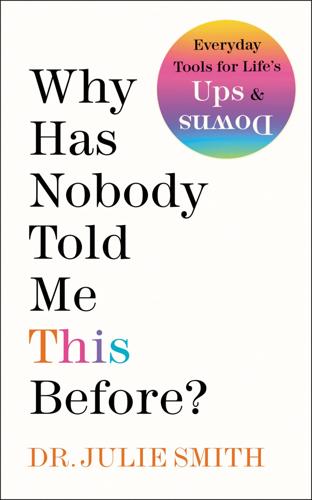
Why Has Nobody Told Me This Before?
by
Dr. Julie Smith
Published 11 Jan 2022
Clark, I., & Nicholls, H. (2017), Third Wave CBT Integration for individuals and teams: Comprehend, cope and connect, London: Routledge. Colcombe, S., & Kramer, A. F. (2003), ‘Fitness effects on the cognitive function of older adults. A meta-analytic study’, Psychological Science, 14 (2), 125–30. Cregg, D. R., & Cheavens, J. S., ‘Gratitude Interventions: Effective Self-help? A Meta-analysis of the Impact on Symptoms of Depression and Anxiety’, Journal of Happiness Studies (2020), https://doi.org/10.1007/s10902-020-00236-6 DiSalvo, D. (2013), Brain Changer: How Harnessing Your Brain’s Power to Adapt Can Change Your Life, Dallas: BenBella Books. Feldman Barrett, L. (2017), How Emotions Are Made.
…
N. (2019), Brain Changer, London: Yellow Kite. Jacka, F. N., et al. (2017), ‘A randomized controlled trial of dietary improvement for adults with major depression (the ‘SMILES’ trial)’, BMC Medicine, 15 (1), 23. Josefsson, T., Lindwall, M., & Archer, T. (2013), ‘Physical Exercise Intervention in Depressive Disorders: Meta Analysis and Systemic Review’, Medicine and Science in Sports, 24 (2), 259–72. Joseph, N. T., Myers, H. F., et al. (2011), ‘Support and undermining in interpersonal relationships are associated with symptom improvement in a trial of antidepressant medication’, Psychiatry, 74 (3), 240–54. Kim, W., Lim, S.
…
Nakahara, H., Furuya, S., et al. (2009), ‘Emotion-related changes in heart rate and its variability during performance and perception of music’, Annals of the New York Academy of Sciences, 1169, 359–62. Olsen, C. M. (2011), ‘Natural Rewards, Neuroplasticity, and Non-Drug Addictions’, Neuropharmacology, 61 (7), 1109–22. Petruzzello, S. J., Landers, D. M., et al. (1991), ‘A meta-analysis on the anxiety-reducing effects of acute and chronic exercise. Outcomes and mechanisms’, Sports Medicine, 11 (3), 143–82. Raichlen, D. A., Foster, A. D., Seillier, A., Giuffrida, A., & Gerdeman, G. L. (2013), ‘Exercise-Induced Endocannabinoid Signaling Is Modulated by Intensity’, European Journal of Applied Physiology, 113 (4), 869–75.

Don't Trust Your Gut: Using Data to Get What You Really Want in LIfe
by
Seth Stephens-Davidowitz
Published 9 May 2022
A careful randomized trial suggests that teaching kids cognitively demanding games, such as chess, doesn’t make them smarter in the long term. A careful meta-analysis of bilingual education finds that it only has small effects on various measures of a child’s cognitive performance, and the effects may be entirely due to a bias in favor of publishing positive results. Also, as it relates to the Emanuel/Fernsby debate about the merits of getting ballet lessons for boys, a meta-analysis found “limited evidence” that participation in dance programs may reduce anxiety; however, the authors suggest that this may be due to studies that are of “low methodological quality” and the results “should be treated with caution.”
…
teaching kids cognitively demanding games: John Jerrim et al., “Does teaching children how to play cognitively demanding games improve their educational attainment? Evidence from a randomized controlled trial of chess instruction in England,” Journal of Human Resources 53(4) (2018): 993–1021. careful meta-analysis of bilingual education: Hilde Lowell Gunnerud et al., “Is bilingualism related to a cognitive advantage in children? A systematic review and meta-analysis,” Psychological Bulletin 146(12) (2020): 1059. “limited evidence”: Jan Burkhardt and Cathy Brennan, “The effects of recreational dance interventions on the health and well-being of children and young people: A systematic review,” Arts & Health 4(2) (2012): 148–61.
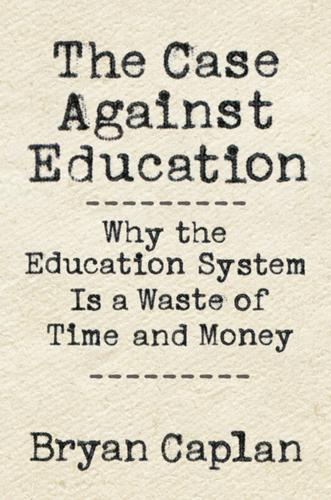
The Case Against Education: Why the Education System Is a Waste of Time and Money
by
Bryan Caplan
Published 16 Jan 2018
“Effectiveness of Early Educational Intervention.” Science 333 (6045): 975–78 Barnett, Susan, and Stephen Ceci. 2002. “When and Where Do We Apply What We Learn? A Taxonomy for Far Transfer.” Psychological Bulletin 128 (4): 612–37. Barrick, Murray, and Michael Mount. 1991. “The Big Five Personality Dimensions and Job Performance: A Meta-analysis.” Personality Psychology 44 (1): 1–26. Barro, Robert, and John-Wha Lee. 2001. “International Data on Educational Attainment: Updates and Implications.” Oxford Economic Papers 53 (3): 541–63. ———. 2013. “A New Data Set of Educational Attainment in the World, 1950–2010.” Journal of Development Economics 104: 184–98.
…
“How to Get Really Smart: Modeling Retest and Training Effects in Ability Testing Using Computer-Generated Figural Matrix Items.” Intelligence 39 (4): 233–43. Friedman, Milton. 1982. Capitalism and Freedom. Chicago: University of Chicago Press. ———. 2003. “Letter to Richard Vedder.” September 12. Unpublished. Furnée, Carin, Wim Groot, and Henriëtte Maassen van Den Brink. 2008. “The Health Effects of Education: A Meta-analysis.” European Journal of Public Health 18 (4): 417–21. Ganzach, Yoav. 2003. “Intelligence, Education, and Facets of Job Satisfaction.” Work and Occupations 30 (1): 97–122. Garber, Steven, and Steven Klepper. 1980. “Extending the Classical Normal Errors-in-Variables Model.” Econometrica 48 (6): 1541–46.
…
In Handbook of Labor Economics, vol. 3C, edited by Orley Ashenfelter and David Card, 3573–630. Amsterdam: Elsevier. Grogger, Jeff. 1998. “Market Wages and Youth Crime.” Journal of Labor Economics 16 (4): 756–91. Groot, Wim, and Henriètte Van den Brink. 2000. “Overeducation in the Labor Market: A Meta-analysis.” Economics of Education Review 19 (2): 149–58. Gross, Neil, and Solon Simmons. 2007. “The Social and Political Views of American Professors.” Working Paper, Harvard University. Accessed November 15, 2015. http://citeseerx.ist.psu.edu/viewdoc/download?doi=10.1.1.147.6141&rep=rep1&type=pdf. Groves, Melissa. 2005.

Grand Transitions: How the Modern World Was Made
by
Vaclav Smil
Published 2 Mar 2021
A comprehensive assessment of people aged 65–91 found the respective prevalence of these conditions to be about 10%, 39%, 21% 11%, and 16% but the prevalence of pre-frailty (with limitations in one or two of the five of the previously mentioned characteristics) was 52% (Yuki et al. 2016). These findings correspond to 2015 populations of about three million frail people requiring care and of nearly 18 million people in the pre-frailty stage. And a systematic meta-analysis of the prevalence of frailty in Japan uncovered the extent of its inexorable rise with aging, from only about 2% among those between 65 and 69 years old to 4% for those between 70 and 74, 10% for those between 75 and 79, 20% for people in their early 80s, and 35% for people older than 85 years (Kojima et al. 2017).
…
Again, a reversal of former conclusions but one that also recognizes the complex nature of the exposure: heptadecanoic acid appears to be CVD- and stroke-protective but its long-term presence carries a potentially higher risk of non-CVD death. And another, more specific link between fatty acids and CVD is now in doubt. Higher intakes of omega-3 polyunsaturated fatty acids from oily fish, as well as of alpha-linolenic acid from plants, were advocated to lower the risks of cardiovascular events. But the most extensive meta-analysis of relevant studies shows, with a high degree of confidence, that higher intakes of these acids have little or no effect on overall mortality as well as on cardiovascular events, and that they probably make little or no difference to cardiovascular death, coronary deaths, stroke, or heart irregularities (Abdelhamid et al. 2018).
…
A new dataset on infant mortality rates, 1816–2002. Journal of Peace Research 44:743–754. Abramovitz, M. 1956. Resource and output trends in the United States. American Economic Review Papers and Proceedings 46:5–23. Achten, W.M.J. and K. van Acker. 2015. EU-average impacts of wheat production: A meta-analysis of life cycle assessments. Journal of Industrial Ecology 20:132–144. Adams, J.M. and H. Faure. 1998. A new estimate of changing carbon storage on land since the last glacial maximum, based on global land ecosystem reconstruction. Global and Planetary Change 16–17:3–24. Adriaanse, A. et al. 1997.
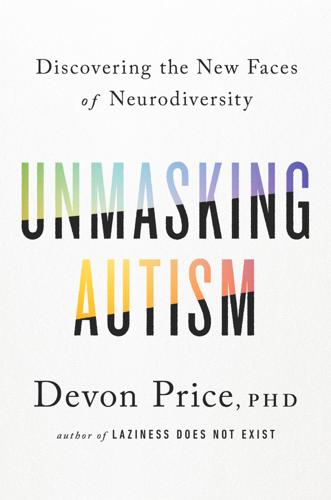
Unmasking Autism: Discovering the New Faces of Neurodiversity
by
Devon Price
Published 4 Apr 2022
L., Leadbitter, K., Poliakoff, E., & Gowen, E. (2020). “No way out except from external intervention”: First-hand accounts of autistic inertia. BACK TO NOTE REFERENCE 6 Demetriou, E. A., Lampit, A., Quintana, D. S., Naismith, S. L., Song, Y. J. C., Pye, J. E.,…& Guastella, A. J. (2018). Autism spectrum disorders: meta-analysis of executive function. Molecular Psychiatry, 23(5), 1198–1204. BACK TO NOTE REFERENCE 7 Some people who otherwise exhibit Autism spectrum traits and report Autistic cognitive challenges do not exhibit social or behavioral signs, due to camoflauging of symptoms: L. A. Livingston, B.
…
Autism and attachment difficulties: Overlap of symptoms, implications and innovative solutions. Clinical Child Psychology and Psychiatry, 22(4), 632–648. BACK TO NOTE REFERENCE 34 McElhanon, B. O., McCracken, C., Karpen, S., & Sharp, W. G. (2014). Gastrointestinal symptoms in autism spectrum disorder: A meta-analysis. Pediatrics, 133(5), 872–883. BACK TO NOTE REFERENCE 35 Baeza-Velasco, C., Cohen, D., Hamonet, C., Vlamynck, E., Diaz, L., Cravero, C.,…& Guinchat, V. (2018). Autism, joint hypermobility–related disorders and pain. Frontiers in Psychiatry, 9, 656. BACK TO NOTE REFERENCE 36 Bolton, P.
…
Big Five model and trait emotional intelligence in camouflaging behaviours in autism. Personality and Individual Differences, 152, 109565. BACK TO NOTE REFERENCE 61 Fournier, K. A., Hass, C. J., Naik, S. K., Lodha, N., & Cauraugh, J. H. (2010). Motor coordination in autism spectrum disorders: A synthesis and meta-analysis. Journal of Autism and Developmental Disorders, 40(10), 1227–1240. BACK TO NOTE REFERENCE 62 Lane, A. E., Dennis, S. J., & Geraghty, M. E. (2011). Brief report: Further evidence of sensory subtypes in autism. Journal of Autism and Developmental Disorders, 41(6), 826–831. BACK TO NOTE REFERENCE 63 Liu, Y., Cherkassky, V.
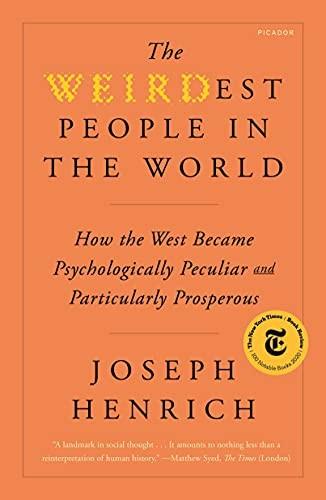
The WEIRDest People in the World: How the West Became Psychologically Peculiar and Particularly Prosperous
by
Joseph Henrich
Published 7 Sep 2020
Working paper. Bai, Y., and Kung, J. K. S. (2015). Diffusing knowledge while spreading God’s message: Protestantism and economic prosperity in China, 1840–1920. Journal of the European Economic Association 13 (4), 669–98. Baier, C. J., and Wright, B. R. E. (2001). “If you love me, keep my commandments”: A meta-analysis of the effect of religion on crime. Journal of Research in Crime and Delinquency 38 (1), 3–21. Bailey, D. H., Hill, K. R., and Walker, R. S. (2014). Fitness consequences of spousal relatedness in 46 small-scale societies. Biology Letters 10 (5), 20140160. Bailey, D. H., Walker, R. S., Blomquist, G.
…
Economic experimental game results from the Sursurunga of New Ireland, Papua New Guinea. In J. Ensminger and J. Henrich (eds.), Experimenting with Social Norms: Fairness and Punishment in Cross-Cultural Perspective (pp. 275–308). New York: Russell Sage Foundation. Bond, R., and Smith, P. B. (1996). Culture and conformity: A meta-analysis of studies using Asch’s (1952b, 1956) line judgment task. Psychological Bulletin 119 (1), 111–37. Bondarenko, D. M. (2014). On the nature and features of the (early) state: An anthropological reanalysis. Zeitschrift für Ethnologie 139 (2), 215–32. Bondarenko, D. M., and Korotayev, A. V. (2003).
…
Men in committed, romantic relationships have lower testosterone. Hormones and Behavior 44 (2), 119–22. Burton, R., and Whiting, J. (1961). The absent father and cross-sex identity. Merrill-Palmer Quarterly 7 (2), 85–95. Bus, A. G., Van Ijzendoorn, M. H., and Pellegrini, A. D. (1995). Joint book reading makes for success in learning to read: A meta-analysis on intergenerational transmission of literacy. Review of Educational Research 65 (1), 1–21. Bushman, B. J., Ridge, R. D., Das, E., Key, C. W., and Busath, G. L. (2007). When God sanctions killing: Effect of scriptural violence on aggression. Psychological Science 18 (3), 204–207. Buss, D. (2007).
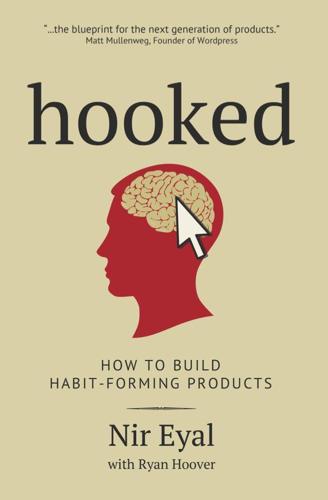
Hooked: How to Build Habit-Forming Products
by
Nir Eyal
Published 26 Dec 2013
As part of a French study, researchers wanted to know if they could influence how much money people handed to a total stranger asking for bus fare by using just a few specially encoded words. They discovered a technique so simple and effective it doubled the amount people gave. The turn of phrase has not only proven to increase how much bus fare people give, but has also been effective in boosting charitable donations and participation in voluntary surveys. In fact, a recent meta-analysis of forty-two studies involving over twenty-two thousand participants concluded that these few words, placed at the end of a request, are a highly effective way to gain compliance, doubling the likelihood of people saying yes.24 The magic words the researchers discovered? The phrase “But you are free to accept or refuse.”
…
Below the verse a large blue button reads “Share Verse of the Day.” One click and the daily scripture is blasted to Facebook or Twitter. The drivers behind recently read scripture have not been widely studied. However, one reason may be the reward of portraying oneself in a positive light, also known as the humblebrag.4 A Harvard meta-analysis, “Disclosing information about the self is intrinsically rewarding,” found the act “engages neural and cognitive mechanisms associated with reward.”5 In fact, sharing feels so good that one study found “individuals were willing to forgo money to disclose about the self.” There are many opportunities to share verse from within the Bible App, but one of Gruenewald’s most effective distribution channels is not online but in row—that is, the pews where churchgoers sit side by side every week.
…
Graham Cluley, “Creepy Quora Erodes Users’ Privacy, Reveals What You Have Read,” Naked Security (accessed Dec. 1, 2013), http://nakedsecurity.sophos.com/2012/08/09/creepy-quora-erodes-users-privacy-reveals-what-you-have-read. 23. Sandra Liu Huang, “Removing Feed Stories About Views,” Quora (accessed Nov. 12, 2013), http://www.quora.com/permalink/gG922bywy. 24. Christopher J. Carpenter, “A Meta-analysis of the Effectiveness of the ‘But You Are Free’ Compliance-Gaining Technique,” Communication Studies 64, no. 1 (2013): 6–17, doi:10.1080/10510974.2012.727941. 25. Juho Hamari, “Social Aspects Play an Important Role in Gamification,” Gamification Research Network (accessed Nov. 13, 2013), http://gamification-research.org/2013/07/social-aspects. 26.
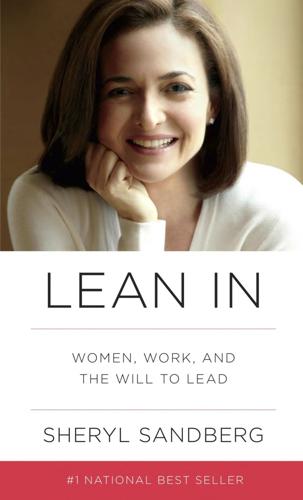
Lean In: Women, Work, and the Will to Lead
by
Sheryl Sandberg
Published 11 Mar 2013
For a discussion of these findings and issues, see Kathleen McCartney et al., “Testing a Series of Causal Propositions Relating Time in Child Care to Children’s Externalizing Behavior,” Development Psychology 46, no. 1 (2010): 1–17. For a meta-analysis of maternal employment and children’s achievement, see Wendy Goldberg et al., “Maternal Employment and Children’s Achievement in Context: A Meta-Analysis of Four Decades of Research,” Psychological Bulletin 134, no. 1 (2008): 77–108. Scholars have noted that while the preponderance of evidence shows that maternal employment has no adverse effect on young children’s development, maternal employment in the first year of life has been linked with lower cognitive development and behavior issues for some children.
…
For analysis of how structural position shapes aspirations, see Naomi Casserir and Barbara Reskin, “High Hopes: Organizational Position, Employment Experiences, and Women’s and Men’s Promotion Aspirations,” Work and Occupations 27, no. 4 (2000): 438–63; and Rosabeth Moss Kanter, Men and Women of the Corporation, 2nd ed. (New York: Basic Books, 1993). 7. Alison M. Konrad et al., “Sex Differences and Similarities in Job Attribute Preferences: A Meta-Analysis,” Psychological Bulletin 126, no. 4 (2000): 593–641; and Eccles, “Understanding Women’s Educational and Occupational Choices,” 585–609. A survey of highly qualified women found that only 15 percent of them selected “a powerful position” as an important career goal. See Sylvia Ann Hewlett and Carolyn Buck Luce, “Off-Ramps and On-Ramps: Keeping Talented Women on the Road to Success,” Harvard Business Review 83, no. 3 (2005): 48.
…
Studies have found that people who are mentored and sponsored report having more career success (such as higher compensation, a greater number of promotions, greater career and job satisfaction, and more career commitment). See Tammy D. Allen et al., “Career Benefits Associated with Mentoring for Protégés: A Meta-Analysis,” Journal of Applied Psychology 89, no. 1 (2004): 127–36. A study of several thousand white collar workers with at least a bachelor’s degree found that sponsorship seemed to encourage both men and women to ask for a stretch assignment and a pay increase. Among the men surveyed who had a sponsor, 56 percent were likely to ask for a stretch assignment and 49 percent were likely to ask for a pay raise.
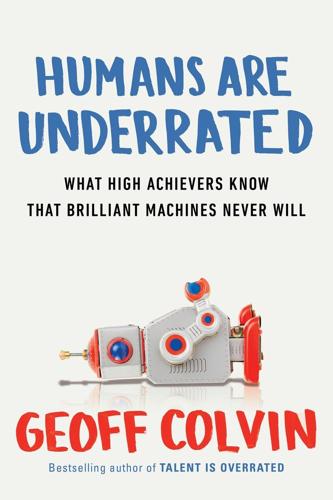
Humans Are Underrated: What High Achievers Know That Brilliant Machines Never Will
by
Geoff Colvin
Published 3 Aug 2015
In a company with a giver culture, Grant says . . . These quotations are from Grant, “Givers Take All: The Hidden Dimension of Corporate Culture,” McKinsey Quarterly, April 2013. A giant meta-analysis of studies involving 51,000 people . . . Nathan P. Podsakoff, Steven W. Whiting, Philip M. Podsakoff, Brian D. Blume, “Individual- and Organizational-Level Consequences of Organizational Citizenship Behaviors: A Meta-Analysis,” Journal of Applied Psychology 2009, vol. 94, no. 1, pp. 122–141, doi: 10.1037/a0013079. Grant reports how a firm called Appletree Answers . . . Grant, “Givers Take All.” In the aftermath of the 9/11 attacks . . .
…
Employees help only when they expect the personal benefits to exceed the costs.” And is that not the very definition of economic rationality? Yet which culture do you think produces better results? We all know the answer. Extensive research shows that the answer is even more impressive than we suspect. A giant meta-analysis of studies involving 51,000 people in companies found that giver behaviors were associated with higher productivity, efficiency, and profit; lower costs, employee turnover, and absenteeism; and greater customer satisfaction. The giver culture works even in environments where employees needn’t interact much, as discovered in that petri dish of organizational research, the call center.
…
We’re built to function best on ten hours of sleep a night . . . James B. Maas, Power Sleep: How to Prepare Your Mind for Peak Performance (Villard, 1998), p. 6. A massive study of empathy in U.S. college students . . . Sara H. Konrath, Edward H. O’Brien, Courtney Hsing, “Changes in Dispositional Empathy in American College Students Over Time: A Meta-Analysis,” Personal and Social Psychology Review 15(2), pp. 180–198, doi: 10.1177/1088868310377395. As you would expect, higher narcissism . . . Konrath et al., op. cit., p. 183. Over the past several decades people in developed countries . . . Robert D. Putnam, Bowling Alone: The Collapse and Revival of American Community (Simon and Schuster, 2000).
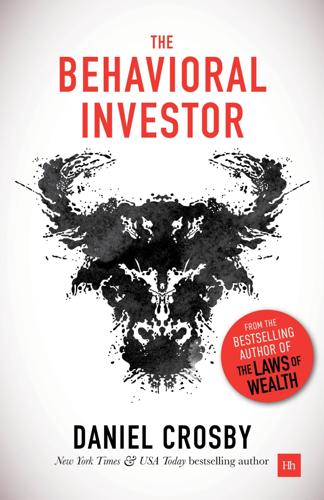
The Behavioral Investor
by
Daniel Crosby
Published 15 Feb 2018
Roy Baumeister, an admitted proponent of the theory, to meta-analyze the extant data on the subject. What followed was what Dr. Baumeister would go on to refer to as “the biggest disappointment of my career.” Of the 15,000 studies taken into consideration, a paltry .013% of them (that is, 200) met the rigorous standards for inclusion in the meta-analysis. To begin with, it became apparent that many of the theories about self-esteem that had impacted policy were simply junk science. What’s more, the studies that did pass muster didn’t have much good to say about the construct’s predictive power. Self-esteem did not predict academic or career achievement, nor did it predict drug usage or violent behavior.
…
The positive potential for applying such nuanced thinking to investment decision-making can hardly be overstated. Although it is a gross simplification, emotion in and around financial markets is often lumped into one of two categories: fear or greed. Meditation, it would seem, is well positioned to tame both. A meta-analysis of 47 trials and 3515 participants found that meditation decreased anxiety, lessened depression and decreased pain. Weaker, but still positive, evidence was found for reducing stress levels and improving overall quality of life.103 For those on the fear end of the fear and greed continuum, meditation is powerful medicine.
…
Not only did the simple model outperform the psychologists’ intuition head-to-head, but it also bested psychologists who were given access to the model.109 Models have also been shown to outperform human intuition in predicting the outcomes of Supreme Court decisions,110 Presidential elections (Nate Silver), movie preferences, prison recidivism, wine quality, marital satisfaction and military success, to name just a few of the over 45 domains in which they have demonstrated their superiority.111 A meta-analysis performed by William Grove, David Zald, Boyd Lebow, Beth Snitz and Chad Nelson found that models equal or beat expert decision-making a whopping 94.12% of the time, meaning that they are only defeated by human discretion 5.88% of the time.112 Moreover, many of the domains in which algorithms greatly outperformed had human behavior as a central component (as do financial markets).
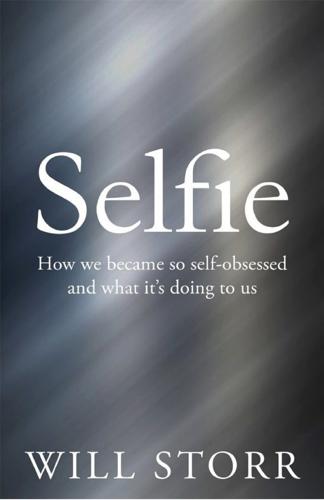
Selfie: How We Became So Self-Obsessed and What It's Doing to Us
by
Will Storr
Published 14 Jun 2017
Why not put their interests together? Why not see if narcissism in America had changed along with the culture? It would be a while until the all necessary data became available. But eventually, in 2008, they published the details of what they’d discovered in the Journal of Personality. They’d completed a meta-analysis of eighty-five studies that included the narcissism data from an impressive 16,475 college students, stretching back to the early 1980s. These students had taken the Narcissism Personality Index, or ‘NPI’, a test used widely by psychologists to measure narcissistic traits. Their paper, ‘Egos Inflating Over Time’, suggested that, between 1982 and 1989, average NPI scores actually went down, from 15.55 out of a possible 40 to 14.99.
…
Meanwhile, the principle of free speech seems to be venerated less than ever: a 2015 Pew survey found 40 per cent of US millennials agreeing that the government should be able to prevent speech that’s offensive to minorities. For Generation X, that figure was 27 per cent, whilst for the boomers it was 24 per cent. The rise in individualism that studies have found also seems to have brought with it a dramatic decline in empathy. A meta-analysis by Dr Sara Konrath at the University of Michigan indicated that today’s college students are 40 per cent less empathetic than students in the 1980s. They’re less likely to agree with statements such as, ‘I often have tender, concerned feelings for people less fortunate than me,’ and ‘I sometimes try to understand my friends better by imagining how things look from their perspective.’
…
They’re also thought to experience synaesthesia: ‘Synesthesia: A new approach to understanding the development of perception’, Ferrinne Spector, Daphne Maurer, Developmental Psychology (January 2009), 45(1), pp. 175–89. These connections start dying off at a rate of up to 100,000 per second: The Self Illusion, Bruce Hood (Constable, 2011), p. 15. In a major study, researchers in Queensland collated the results of 2,748 papers: ‘Meta-analysis of the heritability of human traits based on fifty years of twin studies’, Tinca J. C. Polderman et al., Nature Genetics (May 2015), 47, pp. 702–9. Co-author Beben Benyamin added: ‘Are we products of nature or nurture? Science answers age-old question’, 19 May 2015, https://www.theguardian.com/science/2015/may/19/are-we-products-of-nature-or-nuture-science-answers-age-old-question.
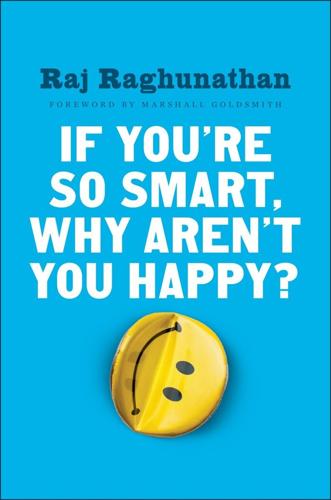
If You're So Smart, Why Aren't You Happy?
by
Raj Raghunathan
Published 25 Apr 2016
Happy employees earn more: See E. Diener and R. Biswas-Diener, “Will Money Increase Subjective Well-being?,” Social Indicators Research 57(2) (2002): 119–69; see also M. Pinquart and S. Sörensen, “Influences of Socioeconomic Status, Social Network, and Competence on Subjective Well-being in Later Life: A Meta-analysis,” Psychology and Aging 15(2) (2000): 187. Happier (optimistic) CEOs: J. B. Foster et al., “Setting the Tone for Organizational Success: The Impact of CEO Affect on Organizational Climate and Firm-Level Outcomes,” 17th Annual Meeting of the Society for Industrial and Organizational Psychology, Toronto, Ontario, Canada, 2004.
…
Edge, “‘They Are Happier and Having Better Lives than I Am’: The Impact of Using Facebook on Perceptions of Others’ Lives,” Cyberpsychology, Behavior, and Social Networking 15(2) (2012): 117–21. Facebook triggers more negative feelings: C. Huang, “Internet Use and Psychological Well-being: A Meta-analysis,” Cyberpsychology, Behavior, and Social Networking 13(3) (2010): 241–49. For a more reader-friendly review of the literature on the impact of exposure to social media on well-being, see www.newyorker.com/tech/elements/how-facebook-makes-us-unhappy. That said, however, social media may also have a positive impact on people’s moods.
…
Tesch-Römer, “The Role of Deliberate Practice in the Acquisition of Expert Performance,” Psychological Review 100(3) (1993): 363. Note, however, that there are exceptions to this general rule; see B. N. Macnamara, D. Z. Hambrick, and F. L. Oswald, “Deliberate Practice and Performance in Music, Games, Sports, Education, and Professions: A Meta-analysis,” Psychological Science 25(8) (2014): 1608–18. flow doesn’t . . . come at . . . cost of another’s: This reason was mentioned to me in the interview that I did with Professor Csikszentmihalyi, which can be accessed at https://www.coursera.org/learn/happiness/lecture/hMLNh/week-2-video-7-why-flow-en hances-happiness.
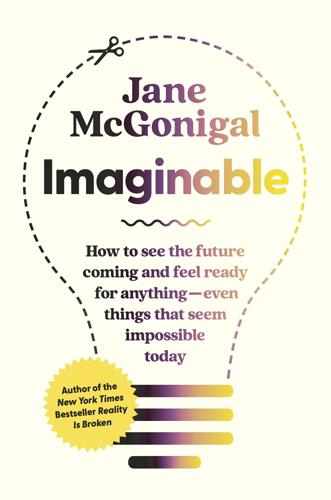
Imaginable: How to See the Future Coming and Feel Ready for Anything―Even Things That Seem Impossible Today
by
Jane McGonigal
Published 22 Mar 2022
The COVID-19 pandemic has arguably been the single largest collective simultaneous experience of trauma in human history—whether it was the trauma of frontline work, social isolation, economic loss and hardship, prolonged anxiety, severe illness, long COVID, the loss of a loved one, or the grief of being abandoned and left unprotected by your own government. How common is trauma during a pandemic? On average, 22.6 percent of people experience symptoms of PTSD after any pandemic. Health care workers are most affected at 27 percent, followed by infected individuals at 24 percent, and the general public at 19 percent. This is according to a 2021 meta-analysis that looked at the results of eighty-eight different studies of PTSD after pandemics in the twenty-first century, including SARS, Ebola, Zika, Middle Eastern respiratory syndrome coronavirus (MERS-CoV), and COVID-19.4 Even if we cut these percentages in half to allow for the disparity in individual and national experiences of the pandemic, that leaves nearly one billion people on earth experiencing post-pandemic trauma.
…
Bargh, “Incidental Haptic Sensations Influence Social Judgments and Decisions,” Science 328, no. 5986 (June 2010): 1712–15, https://doi.org/10.1126/science.1189993. 2 David Stawarczyk and Arnaud D’Argembeau, “Neural Correlates of Personal Goal Processing during Episodic Future Thinking and Mind-Wandering: An ALE Meta-Analysis,” Human Brain Mapping 36, no. 8 (August 2015): 2928–47, https://doi.org/10.1002/hbm.22818. 3 Brittany M. Christian et al., “The Shape of Things to Come: Exploring Goal-Directed Prospection,” Consciousness and Cognition 22, no. 2 (March 2013): 471–78, https://doi.org/10.1016/j.concog.2013.02.002; Pennington and Roese, “Regulatory Focus and Temporal Distance,” 563–76. 4 Emily A.
…
Holmes and Andrew Mathews, “Mental Imagery in Emotion and Emotional Disorders,” Clinical Psychology Review 30, no. 3 (April 2010): 349–62, https://doi.org/10.1016/j.cpr.2010.01.001; Janie Busby Grant and Neil Wilson, “Manipulating the Valence of Future Thought: The Effect on Affect,” Psychological Reports 124, no. 1 (February 2020): 227–39, https://doi.org/10.1177/0033294119900346; Torben Schubert et al., “How Imagining Personal Future Scenarios Influences Affect: Systematic Review and Meta-Analysis,” Clinical Psychology Review 75 (February 2020): 101811, https://doi.org/10.1016/j.cpr.2019.101811. 5 According to a timebound Google Scholar search for scientific papers with the terms “episode future thinking” (4,310) and “episodic foresight” (831), over the period 2000–21. 6 Andrew K. MacLeod, “Prospection, Well-Being and Memory,” Memory Studies 9, no. 3 (June 2016): 266–74, https://doi.org/10.1177/1750698016645233; Beyon Miloyan, Nancy A.
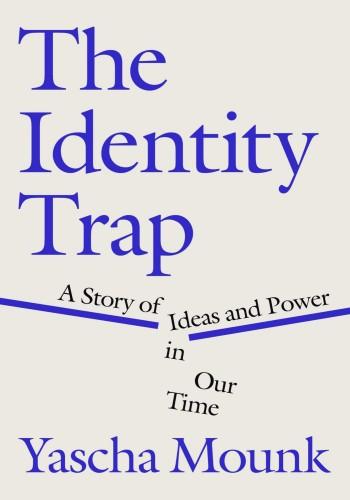
The Identity Trap: A Story of Ideas and Power in Our Time
by
Yascha Mounk
Published 26 Sep 2023
Nowicki and Robert Sandieson, “A Meta-analysis of School-Age Children’s Attitudes Towards Persons with Physical or Intellectual Disabilities,” International Journal of Disability, Development, and Education 49, no. 3 (2002): 243–65, doi.org/10.1080/1034912022000007270; Devah Pager and Hana Shepherd, “The Sociology of Discrimination: Racial Discrimination in Employment, Housing, Credit, and Consumer Markets,” Annual Review of Sociology 34, no. 1 (Jan. 2008): 181–209, doi.org/10.1146/annurev.soc.33.040406.131740; Wesley Myers et al., “The Victimization of LGBTQ Students at School: A Meta-analysis,” Journal of School Violence 19, no. 4 (July 2020): 421–32, doi.org/10.1080/15388220.2020.1725530.
…
As Asch put it, “It can be of decisive importance whether or not a group will, under certain conditions, submit to existing pressures” (Asch, “Effects of Group Pressure,” 177). Other psychologists have confirmed its main findings across a variety of different cultures. Rod Bond and Peter B. Smith, “Culture and Conformity: A Meta-analysis of Studies Using Asch’s (1952b, 1956) Line Judgment Task,” Psychological Bulletin 119, no. 1 (1996): 111–37, doi.org/10.1037/0033-2909.119.1.111. GO TO NOTE REFERENCE IN TEXT replicated by psychologists: Bond and Smith, “Culture and Conformity.” GO TO NOTE REFERENCE IN TEXT In the experiments: Cass R.
…
The empirical literature on transitional justice, for example, suggests that certain forms of amnesty for those responsible for political crimes in a previous nondemocratic regime can contribute to the stability of subsequent democratic systems because it reduces their incentive to militate against the new institutions. As one recent meta-analysis finds, “prosecutions increase physical integrity protections, while amnesties increase the protection of civil and political rights.” Geoff Dancy et al., “Behind Bars and Bargains: New Findings on Transitional Justice in Emerging Democracies,” International Studies Quarterly 63, no. 1 (March 2019): 99–110, academic.oup.com/isq/article/63/1/99/5308148.
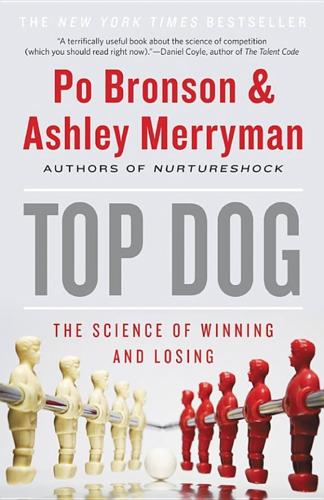
Top Dog: The Science of Winning and Losing
by
Po Bronson
and
Ashley Merryman
Published 19 Feb 2013
Ibáñez, Enrique Ortega, Nuno Leite, & Jaime Sampaio, “An Analysis of Defensive Strategies Used by Home and Away Basketball Teams,” Perceptual & Motor Skills, vol. 110(1), pp. 159–166 (2010) Han, Ru, Shu Li, & Jian-Nong Shi, “The Territorial Prior-Residence Effect and Children’s Behavior in Social Dilemmas,” Environment & Behavior, vol. 41(5), pp. 644–657 (2009) Hansen, Darah, “How the Right Seat Can Reduce Office Stress,” Staff Blog, Vancouver Sun, http://bit.ly/pnxrnn (9/19/2011) Hirst, Alison, “Settlers, Vagrants and Mutual Indifference: Unintended Consequences of Hot-Desking,” Journal of Organizational Change Management, vol. 24(6), pp. 767–788 (2011) Ibáñez, Sergio J., Javier García, Sebastian Feu, Alberto Lorenzo, & Jaime Sampaio, “Effects of Consecutive Basketball Games on the Game-Related Statistics that Discriminate Winner and Losing Teams,” Journal of Sports Science & Medicine, vol. 8(3), pp. 458–462 (2009) Jamieson, Jeremy P., “The Home Field Advantage in Athletics: A Meta-Analysis,” Journal of Applied Social Psychology, vol. 40(7), pp. 1819–1848 (2010) Jansen, Friederike, Rebecca S. Heiming, Vanessa Kloke, Sylvia Kaiser, Rupert Palme, Klaus-Peter Lesch, & Norbert Sachser, “Away Game or Home Match: The Influence of Venue and Serotonin Transporter Genotype on the Display of Offensive Aggression,” Behavioural Brain Research, vol. 219(2), pp. 291–301 (2011) Jones, Marshall B., “Home Advantage in the NBA as a Game-Long Process,” Journal of Quantitative Analysis in Sports, vol. 3(4), art. 2 (2007) Koning, Ruud H., “Home Advantage in Speed Skating: Evidence from Individual Data,” Journal of Sports Sciences, vol. 23(4), pp. 417–427 (2005) Koyama, Mark, & J.
…
Someone with two methionine (“met”) instructions—the slower enzyme—would be “met-met.” Having two valine (“val”), and thus the faster enzyme processing, would be “val-val.” And val-met is naturally someone with one of each. Barnett, J. H., P. B. Jones, T. W. Robbins, & U. Müller, “Effects of the Catechol-O-Methyltransferase Val 158Met Polymorphism on Executive Function: A Meta-Analysis of the Wisconsin Card Sort Test in Schizophrenia and Healthy Controls,” Molecular Psychiatry, vol. 12(5), pp. 502–509 (2007) Barnett, Jennifer H., Jon Heron, Susan M. Ring, Jean Golding, David Goldman, Ke Xu, & Peter B. Jones, “Gender-Specific Effects of the Catechol-O-Methyltransferase Val108/158Met Polymorphism on Cognitive Function in Children,” American Journal of Psychiatry, vol. 164(1), pp. 142–149 (2007) Blasi, Giuseppe, Venkata S.
…
Collier, Gene, “Too Many Cheaters and Not Enough Thieves,” Pittsburgh Post-Gazette, http://bit.ly/ODHyIU (3/15/2012) Finoli, David, & Bill Rainer, “Top 100 Pirates Players,” Pittsburgh Pirates Encyclopedia, ch. 3, USA: Sports Publishing, LLC (2003) Hageman, William, Honus: The Life and Times of a Baseball Hero, Champaign, IL: Sagamore Pub. (1996) Hittner, Arthur D., Honus Wagner: The Life of Baseball’s “Flying Dutchman,” Jefferson, NC: McFarland & Co. (1996) Mendelson, Abby, “Honus Wagner,” Pittsburgh Pirates, http://atmlb.com/PDax1p (2012) Society for American Baseball Research, The SABR Baseball List & Record Book: Baseball’s Most Fascinating Records, New York: Simon & Schuster (2007) “Statistics,” Major League Baseball, MLB.com, http://atmlb.com/Q65Z1w (2012) “Stealing Second → Stealing Third → Stealing Home,” Baseball Almanac, http://bit.ly/q2BoIm (2012) Sulloway, Frank J., Born to Rebel, New York: Vintage (1997) Sulloway, Frank, Interview with Author (2011) Sulloway, Frank J., & Richard L. Zweigenhaft, “Birth Order and Risk Taking in Athletics: A Meta-Analysis and Study of Major League Baseball,” Personality & Social Psychology Review, vol. 14(4), pp. 402–416 (2010) 4. Sibling Conflict: We dedicated an entire chapter of our book, NurtureShock, to sibling conflict. We invite you to look there for a fuller discussion of the nature of sibling arguments, research on how to respond to sibling quarreling, et cetera.
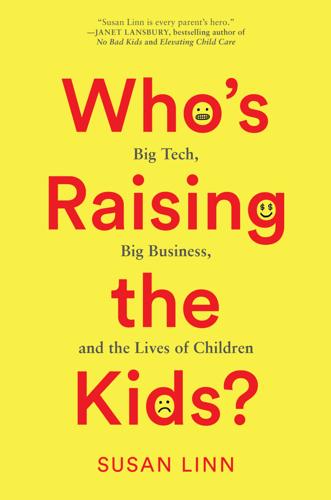
Who’s Raising the Kids?: Big Tech, Big Business, and the Lives of Children
by
Susan Linn
Published 12 Sep 2022
Roberts, “Linkages Between Materialism and Young People’s Television and Advertising Exposure in a US Sample,” Journal of Children and Media 5, no. 2 (April 15, 2011): 181–93, doi.org/10.1080/17482798.2011.558272. 8. For a meta-analysis on the links between materialism and environmental degradation see Megan Hurst et al., “The Relationship Between Materialistic Values and Environmental Attitudes and Behaviors: A Meta-Analysis,” Journal of Environmental Psychology 36 (2013): 257–69. 9. Judith Stephenson et al., “Population, Development, and Climate Change: Links and Effects on Human Health,” Lancet 382, no. 9905 (November 16, 2013): 1665–73, doi.org/10.1016/S0140−6736(13)61460-9. 10.
…
Bushman, “Effects of Violent Video Games on Aggressive Behavior, Aggressive Cognition, Aggressive Affect, Physiological Arousal, and Prosocial Behavior: A Meta-Analytic Review of the Scientific Literature,” Psychological Science 12, no. 5 (September 2001): 353–59; Anna T. Prescott, James D. Sargent, and Jay G. Hull, “Meta-Analysis of the Relationship Between Violent Video Game Play and Physical Aggression over Time,” Proceedings of the National Academy of Sciences 115, no. 40 (October 2018): 9882–988. 24. Both Consuming Kids and The Case for Make Believe have a chapter devoted to sexualization. Also see Diane Levin and Jean Kilbourne, So Sexy So Soon: The New Sexualized Childhood and What Parents Can Do About It (New York: Ballantine Books, 2009); Peggy Ornstein, Cinderella Ate My Daughter: Dispatches from the Front Lines of the New Girlie-Girl Culture (New York: HarperCollins, 2011); Sharon Lamb and Lynn Mikkel Brown, Packaging Girlhood: Rescuing Our Daughters from Marketers’ Schemes (New York: St.
…
Create a Healthy Technology Environment for Your Baby to Thrive,” American Speech-Language-Hearing Association and Campaign for a Commercial-Free Childhood, 2020, screentimenetwork.org/sites/default/files/resources/Be%20Tech%20Wise%20With%20Baby%20final%20Engish.pdf. 31. Jenny Radesky et al., “Maternal Mobile Device Use During a Structured Parent–Child Interaction Task,” Academic Pediatrics 15, no. 2 (March 1, 2015): 238–44. 32. Sherry Madigan et al., “Associations Between Screen Use and Child Language Skills: A Systematic Review and Meta-Analysis,” JAMA Pediatrics 174, no. 7 (March 23, 2020): 665-75, doi/10.1001/jamapediatrics.2020.0327. 33. Cortney A. Evans, Amy B. Jordan, and Jennifer Horner, “Only Two Hours? A Qualitative Study of the Challenges Parents Perceive in Restricting Child Television Time,” Journal of Family Issues 32, no. 9 (March 2011): 1223–44. 34.
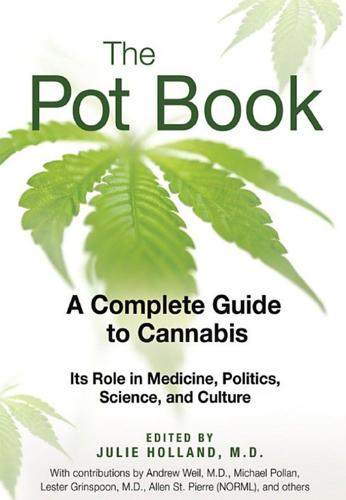
The Pot Book: A Complete Guide to Cannabis
by
Julie Holland
Published 22 Sep 2010
However, as we found in our review of acute effects, the most consistent chronic effects of cannabis on cognition relate to learning and memory. Grant and colleagues (2003) conducted a meta-analysis of eleven studies investigating the long-term effects of cannabis on cognition and found effect sizes suggesting decrements in participants’ ability to learn and remember information. However, the meta-analysis revealed no consistent effects in all other neuropsychological domains examined, including verbal/language, perceptual/ motor, abstraction/executive, and attention. It should be noted that the inclusion criteria used in this meta-analysis were relatively strict, requiring that studies included a group of “cannabis only” users as well as appropriate controls.
…
By contrast, prospective cohort studies do not support a role for cannabis use in causing anxiety disorders, as reviewed in a meta-analysis (Moore et al. 2007); only two of seven studies found an association of anxiety disorder with previous cannabis use when potential confounding factors were adjusted for. Also, several studies had high dropout rates. If healthier individuals are more likely to drop out, whereas the anxious individuals are more likely to return, this could lead to an apparent association of cannabis use with anxiety that would be false. CAN CANNABIS LEAD TO DEPRESSION? Ten cohort studies of cannabis use and depression diagnosis were identified in the Lancet meta-analysis and review (Moore et al. 2007).
…
We have obtained support for licensing Craker from forty-five congressional representatives and Senators Kerry and Kennedy, but that hasn’t been enough yet to pressure the DEA to approve the license.*26 MAPS is also sponsoring research into MDMA-assisted psychotherapy (Ecstasy-assisted psychotherapy) for subjects with treatment-resistant PTSD. We have concluded two pilot studies, one in the United States and one in Switzerland, with a meta-analysis generating statistically and clinically significant reductions in PTSD symptoms in our full-dose MDMA group. We have just obtained FDA approval for a new MDMA/PTSD pilot study entirely comprised of U.S. veterans with chronic PTSD. We also have started an MDMA/PTSD pilot study in Israel and are close to starting additional MDMA/PTSD pilot studies in Jordan, Canada, and Spain.

The Hidden Half: How the World Conceals Its Secrets
by
Michael Blastland
Published 3 Apr 2019
Supporters of the strategy say it took time to build up and was tweaked so that it began to bite precisely when the numbers began to fall sharply. Perhaps, though this would have been an extraordinarily powerful and well-calibrated tweak. But a meta-analysis of sex education across countries by a group of respected researchers known as the Cochrane Collaboration found that this element alone didn’t seem to make much difference.4 However, another meta-analysis by another group of Cochrane researchers found that a combination of education and contraceptive promotion did seem to make a difference.5 So maybe both, but not one. Or the right kind of each in the right combination.
…
The habit is careless at best, in the worst cases deceitful or incompetent, and it is miserably persistent. Probabilities (such as risks) that make big headlines frequently turn out to be the kind of ‘big’ knowledge I could easily have lived and died without, and often simply ignore. The most recent example I came across was a meta-analysis to suggest there was no safe level of alcohol consumption, and people should consider abstention. Again, the risk boiled down to a question of probabilities. But the study failed to add – contrary to the guidelines of the journal in which it was published – what unsafe meant for low levels of drinking in human terms.
…
There’s very seldom going to be the case that there is the one factor that you could remove and everything else would work pretty much as it does except that this causeway would be blocked and the outcome wouldn’t happen.’ In the end, the answer to what caused this extraordinary change in teenage sexual behaviour is that we can’t say. We don’t know. Big and sudden it may be, clear it isn’t. Every method used to try to find out (from logistic regression to meta-analysis and personal experience) has its potential flaws. Every piece of evidence is qualified or contradicted by others, or simply raises other questions. It’s a cautionary tale about the dangers of looking for the cause. First, this distracts us from problems of interaction, which can be monstrously complicated and unstable.
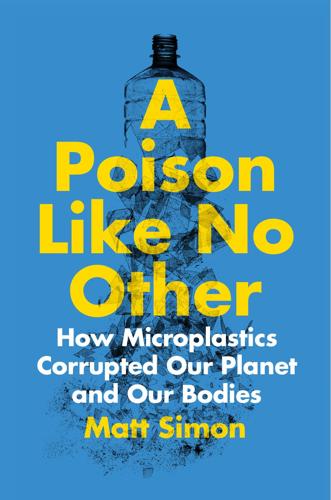
A Poison Like No Other: How Microplastics Corrupted Our Planet and Our Bodies
by
Matt Simon
Published 24 Jun 2022
“The M/V X-Press Pearl Nurdle Spill: Contamination of Burnt Plastic and Unburnt Nurdles along Sri Lanka’s Beaches.” ACS Environmental Au. https://doi.org/10.1021/acsenvironau.1c00031. Erni-Cassola, Gabriel, Vinko Zadjelovic, Matthew I. Gibson, and Joseph A. Christie-Oleza. 2019. “Distribution of Plastic Polymer Types in the Marine Environment: A Meta-Analysis.” Journal of Hazardous Materials 369:691–98. https://doi.org/10.1016/j.jhazmat.2019.02.067. 179 180 notes 55. The Great Nurdle Hunt. n.d. “The Problem.” https://www.nurdlehunt .org.uk/the-problem.html. 56. Lozano, Rebeca Lopez, and John Mouat. 2009. “Marine Litter in the North-East Atlantic Region: Assessment and Priorities for Response.”
…
“Synthetic and Semi-Synthetic Microplastic Ingestion by Mesopelagic Fishes from Tristan da Cunha and St Helena, South Atlantic.” Frontiers in Marine Science 8:78. https://doi.org/10.3389 /fmars.2021.633478. notes 51. Miller, Michaela E., Mark Hamann, and Frederieke J. Kroon. 2020.“Bioaccumulation and Biomagnification of Microplastics in Marine Organisms: A Review and Meta-Analysis of Current Data.” PLoS ONE 15 (10): e0240792. https://doi.org/10.1371/journal .pone.0240792. 52. University of Leicester. 2015. “Failing Phytoplankton, Failing Oxygen: Global Warming Disaster Could Suffocate Life on Planet Earth.” ScienceDaily. https://www.sciencedaily.com/releases/2015/12/151201 094120.htm. 53.
…
Miller, Marvin Rades, Patrick Schubert, Maren Ziegler, and Thomas Wilke. 2021. “Reef-Building Corals Act as Long-Term Sink for Microplastic.” Global Change Biology 28 (1): 33–45. https://doi.org/10.1111 /gcb.15920. 109. Foley, Carolyn J., Zachary S. Feiner, Timothy D. Malinich, and Tomas O. Höök. 2018. “A Meta-Analysis of the Effects of Exposure to Microplastics on Fish and Aquatic Invertebrates.” Science of the Total Environment 631–32:550–59. https://doi.org/10.1016/j.scitotenv.2018.03.046. 110. Hou, Loren, Caleb D. McMahan, Rae E. McNeish, Keenan Munno, Chelsea M. Rochman, and Timothy J. Hoellein. 2021. “A Fish Tale: A Century of Museum Specimens Reveal Increasing Microplastic Concentrations in Freshwater Fish.”
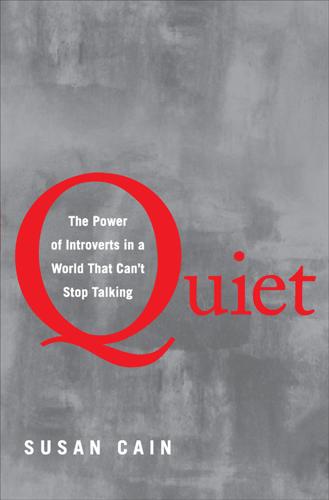
Quiet: The Power of Introverts in a World That Can't Stop Talking
by
Susan Cain
Published 24 Jan 2012
In fact, a wholly separate survey, this one using the Eysenck Personality Inventory and Eysenck Personality Questionnaire rather than the Myers-Briggs test, indicates that extraversion scores have increased over time (from 1966 to 1993) for both men and women: see Jean M. Twenge, “Birth Cohort Changes in Extraversion: A Cross-Temporal Meta-Analysis, 1966–1993,” Personality and Individual Differences 30 (2001): 735–48. 14. United States is among the most extroverted of nations: This has been noted in two studies: (1) Juri Allik and Robert R. McCrae, “Toward a Geography of Personality Traits: Patterns of Profiles Across 36 Cultures,” Journal of Cross-Cultural Psychology 35 (2004): 13–28; and (2) Robert R.
…
MacKinnon, “The Nature and Nurture of Creative Talent” (Walter Van Dyke Bingham Lecture given at Yale University, New Haven, Connecticut, April 11, 1962). See also MacKinnon, “Personality and the Realization of Creative Potential,” Presidential Address presented at Western Psychological Association, Portland, Oregon, April 1964. 4. One of the most interesting findings: See, for example, (1) Gregory J. Feist, “A Meta-Analysis of Personality in Scientific and Artistic Creativity,” Personality and Social Psychology Review 2, no. 4 (1998): 290–309; (2) Feist, “Autonomy and Independence,” Encyclopedia of Creativity, vol. 1 (San Diego, CA: Academic Press, 1999), 157–63; and (3) Mihaly Csikszentmihalyi, Creativity: Flow and the Psychology of Discovery and Invention (New York: Harper Perennial, 1996), 65–68.
…
(Note also that the link between the short allele of the SERT gene and depression in humans is well discussed but somewhat controversial.) 38. thought to be associated with high reactivity and introversion: Seth J. Gillihan et al., “Association Between Serotonin Transporter Genotype and Extraversion,” Psychiatric Genetics 17, no. 6 (2007): 351–54. See also M. R. Munafo et al., “Genetic Polymorphisms and Personality in Healthy Adults: A Systematic Review and Meta-Analysis,” Molecular Psychiatry 8 (2003): 471–84. And see Cecilie L. Licht et al., “Association Between Sensory Processing Sensitivity and the 5-HTTLPR Short/Short Genotype.” 39. has speculated that these high-reactive monkeys: Dobbs, “The Science of Success.” 40. adolescent girls with the short allele of the SERT gene … less anxiety on calm days: Belsky et al., “Vulnerability Genes or Plasticity Genes?”

Lifespan: Why We Age—and Why We Don't Have To
by
David A. Sinclair
and
Matthew D. Laplante
Published 9 Sep 2019
Guo, et al., “Effects of Individual Branched-Chain Amino Acids Ceprivation on Insulin Sensitivity and Glucose Metabolism in Mice,” Metabolism 63, no. 6 (June 2014): 841–50, https://www.ncbi.nlm.nih.gov/pubmed/24684822/. 30. There are certainly other lifestyle factors at play. But a meta-analysis of seven studies including nearly 125,000 participants, published in 2012 in Annals of Nutrition and Metabolism, is compelling evidence. Among vegetarians, the researchers who conducted the study observed a 16 percent lower mortality from circulatory diseases and a 12 percent lower mortality from cerebrovascular disease. T. Huang, B. Yang, J. Zheng, et al., “Cardiovascular Disease Mortality and Cancer Incidence in Vegetarians: A Meta-analysis and Systematic Review,” Annals of Nutrition & Metabolism 4, no. 60 (June 1, 2012): 233–40, https://www.karger.com/Article/FullText/337301. 31.
…
Sinclair, “MSN2 and MSN4 Link Calorie Restriction and TOR to Sirtuin-Mediated Lifespan Extension in Saccharomyces cerevisiae,” PLOS Biology, October 2, 2007, http://journals.plos.org/plosbiology/article?id=10.1371/journal.pbio.0050261. 39. The authors found convincing evidence linking FOXO3 and longevity in humans. L. Sun, C. Hu, C. Zheng, et al., “FOXO3 Variants Are Beneficial for Longevity in Southern Chinese Living in the Red River Basin: A Case-Control Study and Meta-analysis,” Nature Scientific Reports, April 27, 2015, https://www.nature.com/articles/srep09852. 40. H. Bae, A. Gurinovich, A. Malovini, et al., “Effects of FOXO3 Polymorphisms on Survival to Extreme Longevity in Four Centenarian Studies,” Journals of Gerontology, Series A: Biological Sciences and Medical Sciences 73, no. 11 (October 8, 2018): 1437–47, https://academic.oup.com/biomedgerontology/article/73/11/1439/3872296. 41.
…
Other results included less cancer and less cardiovascular disease in those being treated with metformin. J. M. Campbell, S. M. Bellman, M. D. Stephenson, and K. Lisy, “Metformin Reduces All-Cause Mortality and Diseases of Ageing Independent of Its Effect on Diabetes Control: A Systematic Review and Meta-analysis,” Ageing Research Reviews 40 (November 2017): 31–44, https://www.sciencedirect.com/science/article/pii/S1568163717301472. 17. R. A. DeFronzo, N. Barzilai, and D. C. Simonson, “Mechanism of Metformin Action in Obese and Lean Noninsulin-Dependent Diabetic Subjects,” Journal of Clinical Endocrinology & Metabolism 73, no. 6 (December 1991): 1294–301, https://www.ncbi.nlm.nih.gov/pubmed/1955512. 18.

Little Bets: How Breakthrough Ideas Emerge From Small Discoveries
by
Peter Sims
Published 18 Apr 2011
All of this implied that when students were valued for their intelligence, failures would be taken more personally, even as being disgraceful. Dweck’s findings about praise counter broadly held beliefs about developing self-esteem and confidence, but her work has received relatively little criticism. Followup studies, including a meta-analysis of 150 praise studies by scholars at Stanford and Reed College, supported the core findings: Praising ability alone reduces persistence, while praising effort or the processes a person goes through to learn leads to growth mind-set behaviors. Dweck has found this to apply regardless of age. Once again, Pixar is a great example; the company’s management philosophy is thoroughly premised on having a growth mind-set.
…
“Caution: Praise Can Be Dangerous,” American Educator, Spring 1999. “Children’s Implicit Personality Theories as Predictors of Their Social Judgments,” by Cynthia A. Erdley and Carol Dweck, Child Development, 1993, 64, 863–878. “The Effects of Praise on Children’s Intrinsic Motivation: A Review and Synthesis,” (a meta-analysis) by Jennifer Henderlong and Mark R. Lepper, Psychological Bulletin, 2002, vol. 128, 5, 774–795. “The Perils and Promises of Praise,” by Carol Dweck, Early Intervention at Every Age, vol. 65, 2, 34–39. For a good general overview of Dweck’s research and related reactions: “How Not to Talk to Your Kids,” by Po Bronson, New York Magazine, February 11, 2007, which can be found at: http://nymag.com/news/features/27840/.
…
Additional detail on Pixar creative process from interviews with Pixar employees, including Pete Docter, director of Monsters Inc. and Up, including John Lasseter quote about films not ever being finished, just released. Pixar website also has some good additional details at: http://www.pixar.com/artistscorner. Effects of humor and laughter: Selection of insights taken from meta-analysis of psychology research: “Humor and Group Effectiveness,” by Eric Romero and Anthony Pescosolido, Human Relations, March 2008, 395–418. Correlations between humor and trust: “The Relationship between Humor and Trust,” by W. P. Hampes, Humor, 1999, 12, 253–9. “Relation between Humor and Empathic Concern,” by W.

Futureproof: 9 Rules for Humans in the Age of Automation
by
Kevin Roose
Published 9 Mar 2021
And I’d like to believe that no matter how good a machine gets at a given task, there will always be some unquantifiable X factor that human experts can bring to the table. Unfortunately, it doesn’t appear to be true. In study after study, researchers have found that, after reaching a certain performance threshold, AI tends to outperform not only humans, but human-AI teams. One study, a 2019 preprint meta-analysis conducted by researchers at the University of Washington and Microsoft Research, looked at a number of previous studies in which decisions made by AI systems alone were assessed against “AI-assisted” decisions made by humans. In every case, they found that the AI operating on its own performed better than the AI-human team.
…
Gray and Siddharth Suri, Ghost Work: How to Stop Silicon Valley from Building a New Global Underclass (New York: Houghton Mifflin Harcourt, 2019). In China, “data labeling” companies Li Yuan, “How Cheap Labor Drives China’s A.I. Ambitions,” New York Times, November 25, 2018. One study, a 2019 preprint meta-analysis Gagan Bansal et al., “Does the Whole Exceed Its Parts? The Effect of AI Explanations on Complementary Team Performance,” ArXiv, June 2020. A 2014 study led by researchers at the University of Buffalo Kenneth W. Regan et al., “Human and Computer Preferences at Chess,” MPREF@AAAI, 2014. Accenture, the consulting firm, surveyed one thousand H.
…
Jones, Mark Greenberg, and Max Crowley, “Early Social-Emotional Functioning and Public Health: The Relationship Between Kindergarten Social Competence and Future Wellness,” American Journal of Public Health (2015). Another study in 2017 found that kids who participated Rebecca D. Taylor, Eva Oberle, Joseph A. Durlak, and Roger P. Weissberg, “Promoting Positive Youth Development Through School-Based Social and Emotional Learning Interventions: A Meta-Analysis of Follow-Up Effects,” Child Development (2017). Jack Dorsey, the chief executive of Twitter The Daily podcast, “Jack Dorsey on Twitter’s Mistakes,” New York Times, August 7, 2020. In Canada, when you graduate from engineering school Erin Hudson, “An Inside Look at the ‘Not Secretive but Modestly Discrete’ Iron Ring Ritual for Canadian Trained-Engineers,” The Sheaf, January 10, 2013.

Stealing Fire: How Silicon Valley, the Navy SEALs, and Maverick Scientists Are Revolutionizing the Way We Live and Work
by
Steven Kotler
and
Jamie Wheal
Published 21 Feb 2017
In 2013 we were invited to participate in the Red Bull Hacking Creativity project,35 a joint effort involving scientists at the MIT Media Lab, a group of TED Fellows, and the namesake energy drink company. Conceived by Dr. Andy Walshe, Red Bull’s director of high performance (and a member of Flow Genome Project’s advisory board), the project was the largest meta-analysis of creativity research ever conducted, reviewing more than thirty thousand research papers and interviewing hundreds of other subject-matter experts, from break dancers and circus performers to poets and rock stars. “It was an impossible goal,” Walshe explained, “but I figured if we could crack something as hard to pin down as creativity, we could figure out almost anything after that.”
…
For a solid overview see John Ratey and Eric Hagerman, Spark: The Revolutionary New Science of Exercise and the Brain (New York: Little, Brown, 2013). 26. get some natural sunshine: Michael Holick, “Vitamin D Deficiency,” New England Journal of Medicine 357 (2007): 266–81. 27. practice meditation for fifteen minutes: Jennifer Haythornthwaite et al., “Meditation Programs for Psychological Stress and Well-being: A Systematic Review and Meta-analysis,” JAMA Internal Medicine 174, no. 3 (2014): 357–68. 28. Tibetan monks can shut off: Judson Brewer et al., “Meditation Experience Is Associated with Difference in Default Mode Network Activity and Connectivity,” PNAS 108, no. 50 (December 13, 2011): 20254–59. 29. SEAL snipers tune their brainwaves to the alpha frequency: This comes from work done by Chris Berka and her team at Advanced Brain Monitoring.
…
At Harvard, Professor Tal Ben Shahar’s: Craig Lambert, ’The Science of Happiness,” Harvard Magazine, January–February 2007. 43. By college, many Millennials have reached: Pfaffenberger, ed., The Postconventional Personality, p. 60. 44. researchers began finding the practice did everything: N. P. Gothe and E. McAuley, “Yoga and Cognition: A Meta-Analysis of Chronic and Acute Effects,” Psychosomatic Medicine 77, no. 7 (September 2015): 784–97; N. R. Okonta, “Does Yoga Therapy Reduce Blood Pressure in Patients with Hypertension? An integrative Review,” Holistic Nursing Practitioner 26, no. 3 (May–June 2012): 137–41. 45. As of 2015, some 36 million Americans: Marlynn Wei, “New Survey Reveals the Rapid Rise of Yoga—and Why Some People Still Haven’t Tried It,” Harvard Health Publication, June 15, 2016. 46. more popular, in terms of participation, than football: 2016 Yoga in America Study, Yoga Journal and Yoga Alliance, http://www.yogajournal.com/yogainamericastudy/. 47.

Mindwise: Why We Misunderstand What Others Think, Believe, Feel, and Want
by
Nicholas Epley
Published 11 Feb 2014
One sample in Spain showed results in the same direction, but it was not statistically significant. Overall, the gender differences were large and consistent. None are in the opposite direction. 23. Hyde, J. S. (2005). The gender similarities hypothesis. American Psychologist 60: 581–92. Hyde’s main evidence is based on a meta-analysis of as many published reports of studies that tallied results by gender as she could find, assessing gender effects across several different categories: cognitive variables (math, memory, overall intelligence, spatial skills), verbal and nonverbal communication (talkativeness, language ability, smiling), social and personality variables (physical and verbal aggression, leadership style and skill, extroversion), psychological well-being (happiness, anxiety, self-esteem, depression), and motor skills (throwing velocity and distance, running speed, activity level).
…
Gilbert, D. T., B. W. Pelham, and D. S. Krull (1988). On cognitive busyness: When person perceivers meet persons perceived. Journal of Personality and Social Psychology 54: 733–40. 23. Steblay, N., et al. (2006). The impact on juror verdicts of judicial instruction to disregard inadmissible evidence: A meta-analysis. Law and Human Behavior 30: 469–92. 24. Kassin, S. M., and H. Sukel (1997). Coerced confessions and the jury: An experimental test of the “harmless error” rule. Law and Human Behavior 21: 27–46; Kassin, S. M., D. Bogart, and J. Kerner (2012). Confessions that corrupt: Evidence from the DNA exoneration case files.
…
Emotion 7: 438–46; Reinhard, M. A., et al. (2011). Listening, not watching: Situational familiarity and the ability to detect deception. Journal of Personality and Social Psychology 101: 467–84. 5. Blanch-Hartigan, D., S. A. Andrzejewski, and K. M. Hill (2012). The effectiveness of training to improve person perception: A meta-analysis. Basic and Applied Social Psychology 34: 483–98. 6. Lopata, C., et al. (2008). Effectiveness of a manualized summer social treatment program for high-functioning children with autism spectrum disorders. Journal of Autism and Developmental Disorders 38: 890–904; McKenzie, K., et al. (2000). Impact of group training on emotion recognition in individuals with a learning disability.

Laziness Does Not Exist
by
Devon Price
Published 5 Jan 2021
Carolin Mogk, Sebastian Otte, Bettina Reinhold-Hurley, and Birgit Kröner-Herwig, “Health Effects of Expressive Writing on Stressful or Traumatic Experiences: A Meta-Analysis,” Psycho-Social Medicine 3 (2006): Doc06. 40. Pennebaker, Writing to Heal. 41. Eva-Maria Gortner, Stephanie S. Rude, and James W. Pennebaker, “Benefits of Expressive Writing in Lowering Rumination and Depressive Symptoms,” Behavior Therapy 37, no. 3 (September 2006): 292–303. 42. James W. Anderson, Chunxu Liu, and Richard J. Kryscio, “Blood Pressure Response to Transcendental Meditation: A Meta-Analysis,” American Journal of Hypertension 21, no. 3 (March 2008): 310–16. 43. David S. Black and George M.
…
Auth, “Loneliness and Depression in Independent Living Retirement Communities: Risk and Resilience Factors,” Aging & Mental Health 8, no. 6 (November 2004): 475–85. 9. Nicole K. Valtorta, Mona Kanaan, Simon Gilbody, Sara Ronzi, and Barbara Hanratty, “Loneliness and Social Isolation as Risk Factors for Coronary Heart Disease and Stroke: Systematic Review and Meta-Analysis of Longitudinal Observational Studies,” BMJ Heart 102, no. 13 (2016): 1009–16. 10. Betty Onyura, John Bohnen, Don Wasylenki, Anna Jarvis, Barney Giblon, Robert Hyland, Ivan Silver, and Karen Leslie, “Reimagining the Self at Late-Career Transitions: How Identity Threat Influences Academic Physicians’ Retirement Considerations,” Academic Medicine 90, no. 6 (June 2015): 794–801. 11.
…
Jennifer L. Smith and Linda Hollinger-Smith, “Savoring, Resilience, and Psychological Well-Being in Older Adults,” Aging & Mental Health 19, no. 3 (2015): 192–200. 12. Paul Grossman, Ludger Niemann, Stefan Schmidt, and Harald Walach, “Mindfulness-Based Stress Reduction and Health Benefits: A Meta-Analysis,” Journal of Psychosomatic Research 57, no. 1 (July 2004): 35–43. 13. Anthony D. Ong, Daniel K. Mroczek, and Catherine Riffin, “The Health Significance of Positive Emotions in Adulthood and Later Life,” Social and Personality Psychology Compass 5, no. 8 (August 2011): 538–51. 14. Jordi Quoidbach, Elizabeth V.
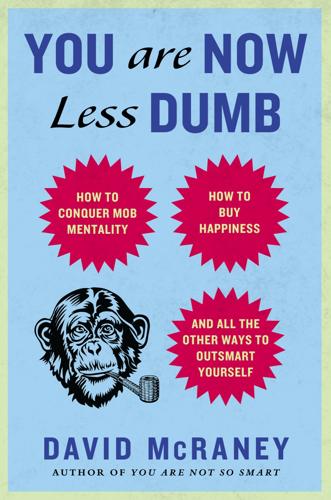
You Are Now Less Dumb: How to Conquer Mob Mentality, How to Buy Happiness, and All the Other Ways to Outsmart Yourself
by
David McRaney
Published 29 Jul 2013
You have a strange superpower—the ability to see the world closer to what it really is. Your more accurate representations of social reality make you feel bad and weird mainly because most people have a reality-distortion module implanted in their heads; sadly, yours is either missing or malfunctioning. The notion of depressed realism has its naysayers, but meta-analysis of the last few decades of research still favors the concept. It also shows that even if you are one of those people who seem to have misplaced their rose-tinted glasses, you can’t eliminate positive illusions entirely. They may shrink up to dehydrated specks and look tiny alongside their giant delusional counterparts inside your most optimistic peers, but they don’t completely disappear.
…
Maybe Not, Say Stanford Researchers.” Stanford News, Stanford University, Oct. 14, 2010. Web: Apr. 2012, news.stanford.edu/news/2010/october/willpower-resource-study-101410.html. Hagger, Martin S., Chantelle Wood, Chris Stiff, and Nikos L. D. Chatzisarantis. “Ego Depletion and the Strength Model of Self-control: A Meta-analysis.” Psychological Bulletin 136, no. 4 (2010): 495–525. Holmes, Oliver Wendell. Medical Essays, 1842–1882. Boston: Houghton Mifflin, 1891. Inzlicht, Michael, and Brandon J. Schmeichel. “What Is Ego Depletion? Toward a Mechanistic Revision of the Resource Model of Self-control.” Perspectives on Psychological Science 7, no. 5 (2012): 450–63.
…
Journal of Personality and Social Psychology 39, no. 3 (1980): 368–76. Sansone, Carol. “A Question of Competence: The Effects of Competence and Task Feedback on Intrinsic Interest.” Journal of Personality and Social Psychology 51, no. 5 (1986): 918–31. Tang, Shu-Hua, and Vernon C. Hall. “The Overjustification Effect: A Meta-analysis.” Applied Cognitive Psychology 9, no. 5 (1995): 365–404. Vargas, Julie S. “A Brief Biography of B. F. Skinner.”B. F. Skinner Foundation, 2005. Web: Dec. 2011, www.bfskinner .org/BFSkinner/AboutSkinner.html. Workman, Edward A., and Robert L. Williams. “Effects of Extrinsic Rewards on Intrinsic Motivation in the Classroom.”
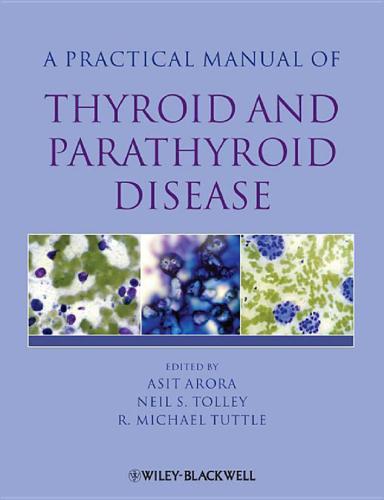
Practical Manual of Thyroid and Parathyroid Disease
by
Asit Arora
,
Neil Tolley
and
R. Michael Tuttle
Published 2 Jan 2009
Much of the evidence of this chapter has been taken from the most recent national guidelines. Where appropriate within the text, references have been classified into the definition of types of evidence based on Agency for Health Care Policy and Research (1992). MULTIPLE CHOICE QUESTIONS Level Type of evidence Ia Evidence obtained from meta-analysis of randomized controlled trials Evidence obtained from at least one randomized controlled trial Evidence obtained from at least one well-designed controlled study without randomization Evidence obtained from at least on other type of well-designed quasi-experimental study Evidence obtained from well designed nonexperimental descriptive studies Evidence obtained from expert committee reports or opinions and/or clinical experience of respected authorities Ib IIa IIb III IV REFERENCES 1.
…
However, in the treatment of hypothyroidism following surgery for differentiated thyroid carcinoma, the thyroxine dose is suppressive to ensure an undetectable TSH. There is anecdotal evidence that some hypothyroid patients have neuropsychological symptoms which persist despite a normalized TSH. Some of these patients appear to benefit from a combination of T3 replacement in addition to T4 replacement therapy. However, a recent 63 meta-analysis study showed that combined T4 and T3 therapy has no clear advantage over T4 monotherapy for improving thyroid function, quality of life, mood and psychometric parameters.10 T3 monotherapy is well established in the management of thyroid cancer to minimize the period of hypothyroidism prior to therapeutic radioiodine treatment.
…
A radiation absorbed dose to the thyroid remnant greater than 300 Gy did not result in a higher ablation rate.7 Successful ablation was achieved in 77% of thyroid remnants with the lower dose of 1.85 GBq. Maxon et al. used dosimetry to individualize administered activity to deliver a radiation dose of 300 Gy to the thyroid remnant.8 They reported an 81% successful ablation rate with no advantage associated with administration of a dose greater than 300 Gy. However, one meta-analysis found that a single administered activity of 1110 MBq was less likely to ablate thyroid remnants successfully compared with higher activities of 2775–3700 MBq.9 A recent comprehensive systematic review of all published literature concluded it was not possible to determine reliably whether ablation success rates using 1.1 GBq were similar to that using 3.7 GBq.10 The HiLo trial (Cancer Research UK) is the first prospective multicentre randomized trial of thyroid cancer to be conducted in the UK.
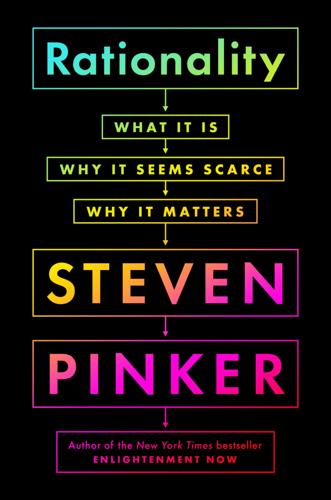
Rationality: What It Is, Why It Seems Scarce, Why It Matters
by
Steven Pinker
Published 14 Oct 2021
Nineteen file their null results in a drawer, and the one who is lucky (or unlucky) enough to make the Type I error publishes his “finding.”22 In an XKCD cartoon, a pair of scientists test for a correlation between jelly beans and acne separately for each of twenty colors, and become famous for linking green jellybeans to acne at p < .05.23 Scientists have finally gotten the joke, are getting into the habit of publishing null results, and have developed techniques to compensate for the file drawer problem when reviewing the literature in a meta-analysis, a study of studies. Null results are conspicuous by their absence, and the analyst can detect the nothing that is not there as well as the nothing that is.24 The scandalous misunderstanding of significance testing bespeaks a human yearning. Philosophers since Hume have noted that induction—drawing a generalization from observations—is an inherently uncertain kind of inference.25 An infinite number of curves can be drawn through any finite set of points; an unlimited number of theories are logically consistent with any body of data.
…
This time the numerate Republicans earned the dunce caps while the Democrats were the Einsteins. In a control condition, the team picked an issue that triggered neither Democrats nor Republicans: whether a skin cream was effective at treating a rash. With neither faction having a dog in the fight, the numerate Republicans and numerate Democrats performed the same. A recent meta-analysis of fifty studies by the psychologist Peter Ditto and his colleagues confirms the pattern. In study after study, liberals and conservatives accept or reject the same scientific conclusion depending on whether or not it supports their talking points, and they endorse or oppose the same policy depending on whether it was proposed by a Democratic or a Republican politician.26 Politically motivated numeracy and other forms of biased evaluation show that people reason their way into or out of a conclusion even when it offers them no personal advantage.
…
There is a Bayesian argument that one ought to weigh new evidence against the totality of one’s prior beliefs rather than taking every new study at face value. If liberalism has proven itself to be correct, then a study that appears to support a conservative position should not be allowed to overturn one’s beliefs. Not surprisingly, this was the response of several liberal academics to Ditto’s meta-analysis suggesting that political bias is bipartisan.35 Nothing guarantees that the favorite positions of the left and right at any historical moment will be aligned with the truth 50–50. Even if both sides interpret reality through their own beliefs, the side whose beliefs are warranted will be acting rationally.

Stolen Focus: Why You Can't Pay Attention--And How to Think Deeply Again
by
Johann Hari
Published 25 Jan 2022
GO TO NOTE REFERENCE IN TEXT a broad body of evidence showing that when people run around—or engage in any form of exercise—their ability to pay attention improves: L. Verburgh et al., “Physical Exercise and Executive Functions in Preadolescent Children, Adolescents and Young Adults: A Meta-Analysis,” British Journal of Sports Medicine 48 (2014): 973–79; Y. K. Chang et al., “The Effects of Acute Exercise on Cognitive Performance: A Meta-Analysis,” Brain Research 1453 (2012): 87–101; S. Colcombe and A. F. Kramer, “Fitness Effects on the Cognitive Function of Older Adults: A Meta-Analytic Study,” Psychological Science 14, no. 2 (2003): 125–30; and P. D. Tomporowski et al., “Exercise and Children’s Intelligence, Cognition, and Academic Achievement,” Educational Psychology Review 20, no. 2 (2008): 111–31.
…
GO TO NOTE REFERENCE IN TEXT He has analyzed what happens to a person’s focus if they engage in deliberately slow practices: G. Claxton, Intelligence in the Flesh (New Haven, Conn.: Yale University Press, 2016), 260–61; P. Wayne et al., “Effects of Tai Chi on Cognitive Performance in Older Adults: Systematic Review and Meta-Analysis,” Journal of the American Geriatric Society 62, no. 1 (2014): 25–39; N. Gothe et al., “The Effect of Acute Yoga on Executive Function,” Journal of Physical Activity and Health 10, no. 4 (2013): 488–95; P. Lovatt, “Dance Psychology,” Psychology Review 19, no. 1 (2013): 18–21; and C. Lewis and P.
…
Velay, “Comparing Comprehension of a Long Text Read in Print Book and on Kindle: Where in the Text and When in the Story?,” Frontiers in Psychology 10 (2019): 38. GO TO NOTE REFERENCE IN TEXT There’s broad scientific evidence for this now, emerging from fifty-four studies: P. Delgado et al., “Don’t Throw Away Your Printed Books: A Meta-Analysis on the Effects of Reading Media on Reading Comprehension,” Educational Research and Reviews 25 (2018): 23–38. GO TO NOTE REFERENCE IN TEXT in elementary-school children, it’s the equivalent of two-thirds of a year’s growth in reading comprehension: Ibid. GO TO NOTE REFERENCE IN TEXT one that was also mulled, in a different way, by Nicholas Carr in his book: N.
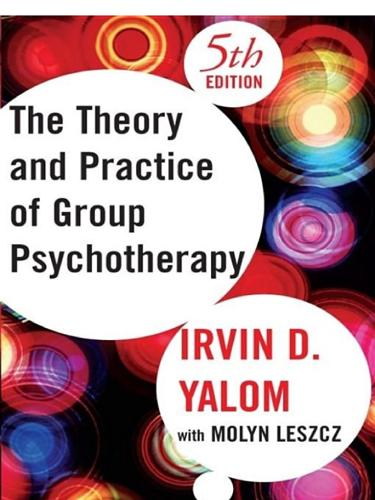
Theory and Practice of Group Psychotherapy
by
Irvin D. Yalom
and
Molyn Leszcz
Published 1 Jan 1967
Hoag, “Comparative Efficacy of Individual and Group Psychotherapy: A Meta-Analytic Perspective,” Group Dynamics: Theory, Research, and Practice 2 (1998): 101–117. M. Smith, G. Glass, and T. Miller, The Benefits of Psychotherapy (Baltimore: Johns Hopkins University Press, 1980). L. Tillitski, “A Meta-Analysis of Estimated Effect Sizes for Group Versus Individual Versus Control Treatments,” International Journal of Group Psychotherapy 40 (1990): 215–24. G. Burlingame, K. MacKenzie, and B. Strauss, “Small-Group Treatment: Evidence for Effectiveness and Mechanisms of Change,” in Bergin and Garfield’s Handbook of Psychotherapy and Behavior Change, 5th ed., ed.
…
CHAPTER 3 1 C. McRoberts, G. Burlingame, and M. Hoag, “Comparative Efficacy of Individual and Group Psychotherapy: A Meta-analytic Perspective,” Group Dynamics: Theory, Research, and Practice 2 (1998): 101–17. W. McDermut, I. Miller, and R. Brown, “The Efficacy of Group Psychotherapy for Depression: A Meta-Analysis and Review of Empirical Research,” Clinical Psychology: Science and Practice 8 (2001): 98–116. G. Burlingame, K. MacKenzie, and B. Strauss, “Small-Group Treatment: Evidence for Effectiveness and Mechanisms of Change,” in Bergin and Garfield’s Handbook of Psychotherapy and Behavior Change, 5th ed., ed.
…
Lambert, “The Evaluation of Therapeutic Outcomes,” in Handbook of Psychotherapy and Behavioral Change: An Empirical Analysis, 2nd ed., ed. S. Garfield and A. Bergin (New York: Wiley, 1978), 139–83. R. Bednar and T. Kaul, “Experiential Group Research: Can the Canon Fire?” in Garfield and Bergin, Handbook of Psychotherapy and Behavioral Change, 4th ed., 631–63. C. Tillitski, “A Meta-Analysis of Estimated Effect Sizes for Group Versus Individual Versus Control Treatments,” International Journal of Group Psychotherapy 40 (1990): 215–24. R. Toseland and M. Siporin, “When to Recommend Group Therapy: A Review of the Clinical and Research Literature,” International Journal of Group Psychotherapy 36 (1986): 171–201. 2 W.
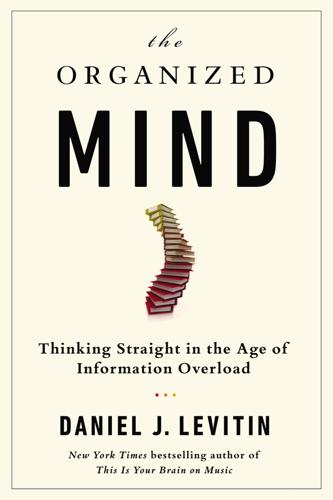
The Organized Mind: Thinking Straight in the Age of Information Overload
by
Daniel J. Levitin
Published 18 Aug 2014
Mechanisms by which childhood personality traits influence adult health status: Educational attainment and healthy behaviors. Health Psychology, 26(1), 121–125, p. 121. criteria related to career success Barrick, M. R., & Mount, M. K. (1991). The big five personality dimensions and job performance: A meta-analysis. Personnel Psychology, 44(1), 1–26. and, Roberts, B. W., Chernyshenko, O. S., Stark, S., & Goldberg, L. R. (2005). The structure of conscientiousness: An empirical investigation based on seven major personality questionnaires. Personnel Psychology, 58(1), 103–139. better recovery outcomes following surgery Kamran, F. (2013).
…
The Journal of Social Psychology, 5(1), 128–129. and, Smith, S. M. (1979). Remembering in and out of context. Journal of Experimental Psychology: Human Learning and Memory, 5(5), 460–471, p. 460. and, Smith, S. M., & Vela, E. (2001). Environmental context-dependent memory: A review and meta-analysis. Psychonomic Bulletin & Review, 8(2), 203–220. brain simply wasn’t designed I’m using the term designed loosely; the brain wasn’t designed, it evolved as a collection of special-purpose processing modules. 1941 by the Oxford Filing Supply Company Jonas, F. D. (1942). U.S. Patent No. 2305710 A.
…
Intimacy, love, and passion . . . belong to completely different, multidimensional constructs Acker, M., & Davis, M. H. (1992). Intimacy, passion and commitment in adult romantic relationships: A test of the triangular theory of love. Journal of Social and Personal Relationships, 9(1), 21–50. and, Graham, J. M. (2011). Measuring love in romantic relationships: A meta-analysis. Journal of Social and Personal Relationships, 28(6), 748–771. and, Sternberg, R. J. (1986). A triangular theory of love. Psychological Review, 93(2), 119. Just like our chimpanzee cousins Hare, B., Call, J., & Tomasello, M. (2006). Chimpanzees deceive a human competitor by hiding. Cognition, 101(3), 495–514.

Apocalypse Never: Why Environmental Alarmism Hurts Us All
by
Michael Shellenberger
Published 28 Jun 2020
Mi Ah Han, Dena Zeraatkar, Gordon H. Guyatt et al., “Reduction of Red and Processed Meat Intake and Cancer Mortality and Incidence: A Systematic Review and Meta-analysis of Cohort Studies,” Annals of Internal Medicine 171, no. 10 (October 2019): 711–20, https://doi.org/10.7326/M19-0699. Dena Zeraatkar, Mi Ah Han, Gordon H. Guyatt et al., “Red and Processed Meat Consumption and Risk for All-Cause Mortality and Cardiometabolic Outcomes: A Systematic Review and Meta-analysis of Cohort Studies,” Annals of Internal Medicine 171, no. 10 (October 2019): 703–10, https://doi.org/10.7326/M19-0655. 74. Aaron E. Carroll, “The Real Problem with Beef,” New York Times, October 1, 2019, https://www.nytimes.com. 75.
…
Mike Shellenberger (@ ShellenbergerMD), “No sooner had I landed in Germany, for 2017 U.N. climate talks, when I was confronted by airport ads paid for by Total, the French oil and gas company reading, ‘Committed to Solar’ and ‘Committed to Natural Gas,’ ” Twitter (text/image), March 28, 2019, 8:22 a.m., https://twitter.com/ShellenbergerMD/status/1111287183497789440. 26. Lisa Linowes (executive director, Wind Action Group) in conversation with the author, November 1, 2019. 27. Ibid. 28. Ibid. 29. John van Zalk and Paul Behrens, “The Spatial Extent of Renewable and Non-renewable Power Generation: A Review and Meta-analysis of Power Densities and Their Application in the U.S.,” Energy Policy 123 (December 2018): 83–91, https://doi.org/10.1016/j.enpol.2018.08.023. 30. Lisa Linowes (executive director, Wind Action Group) in conversation with the author, November 1, 2019. 31. Ibid. 32. Paul M. Cryan, “Wind Turbines as Landscape Impediments to the Migratory Connectivity of Bats,” Journal of Environmental Law 41 (May 2011): 355–70, https://www.lclark.edu/live/files/8520-412cryan. 33.
…
In 2017, U.S. cropland totaled 396 million acres. The amount of land needed to replace all gasoline with pure ethanol would be 653.3 million acres, an increase of 51 percent. 96. John van Zalk and Paul Behrens, “The spatial extent of renewable and non-renewable power generation: A review and meta-analysis of power densities and their application in the US,” Energy Policy 123 (2018): 83–91, https://doi.org/10.1016/j.enpol.2018.08.023. 97. Ibid., 83–91. 98. Jesse Jenkins, Mark Moro, Ted Nordhaus et al., Beyond Boom & Bust: Putting Clean Tech on a Path to Subsidy Independence, Breakthrough Institute, April 2012, https://s3.us-east-2.amazonaws.com/uploads.thebreakthrough.org/articles/beyond-boom-and-bust-report-overview/Beyond_Boom_and_Bust.pdf, 18. 99.

The Lonely Century: How Isolation Imperils Our Future
by
Noreena Hertz
Published 13 May 2020
Cacioppo, ‘Myeloid differentiation architecture of leukocyte transcriptome dynamics in perceived social isolation’, Proceedings of the National Academy of Sciences 112, no. 49 (December 2015), 15142–47, https://www.pnas.org/content/pnas/early/2015/11/18/1514249112.full.pdf; for a layman-friendly read, see ‘Loneliness triggers cellular changes that can cause illness, study shows’, University of Chicago, 23 November 2015, https://www.sciencedaily.com/releases/2015/11/151123201925.htm. 6 ‘Stress Weakens the Immune System’, American Psychological Association, 23 February 2006, https://www.apa.org/research/action/immune. 7 This is from a meta-analysis that looked at twenty-three different studies; ‘Measures of social relationships met inclusion criteria for loneliness if they were consistent with its definition as a subjective negative feeling associated with someone’s perception that their relationships with others are deficient’. Because it is a meta-study there are many different definitions of loneliness that were used in the sub-studies, some of which were chronic. N.K. Valtorta et al., ‘Loneliness and social isolation as risk factors for coronary heart disease and stroke: systematic review and meta-analysis of longitudinal observational studies’, BMJ Journals: Heart 102, no. 13 (2016), 1009–16, http://dx.doi.org/10.1136/heartjnl-2015-308790; J.H.
…
Tjalling et al., ‘Feelings of loneliness, but not social isolation, predict dementia onset: results from the Amsterdam Study of the Elderly (AMSTEL)’, Journal of Neurology Neurosurgery and Psychiatry (2012), doi: 10.1136/jnnp-2012-302755. 8 J. Holt-Lunstad et al., ‘Loneliness and social isolation as risk factors for mortality: a meta-analytic review’. This is also a meta-analysis, so loneliness is defined in different ways. One meta-analysis might look at the data and results from potentially hundreds of studies on the same or very similar subjects, seeking patterns and drawing broad conclusions – an immensely useful way of combining insights across thousands of data points. In summarising loneliness research, however, this poses a slight challenge because each of the hundreds of ‘source studies’ might have had a slightly different definition of loneliness, or measured loneliness over a certain period of time.
…
Whilst this study uses the language of insufficient social relationships or poor social relationships versus adequate ones, and finds that those with adequate social relationships have a 50% greater likelihood of survival compared to those with poor or insufficient social relationships, the studies incorporated in this analysis do not themselves all use this language; some look at social isolation, others loneliness, others lack of social support. In a follow-up 2015 study which included more than double the number of studies and ten times the number of participants compared with the previous meta-analysis, and also attempted to disaggregate the research on social isolation and that on loneliness, the authors found that social isolation and loneliness have a similarly negative impact on our risk of death. See Julianne Holt-Lunstad et al., ‘Loneliness and Social Isolation as Risk Factors for Mortality: A Meta-Analytic Review’, Perspectives on Psychological Science, 10, no. 2 (2015).
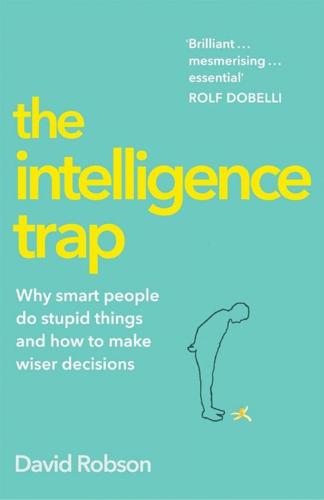
The Intelligence Trap: Revolutionise Your Thinking and Make Wiser Decisions
by
David Robson
Published 7 Mar 2019
See also Haimovitz, K. and Dweck, C.S. (2017), ‘The Origins of Children’s Growth and Fixed Mindsets: New Research and a New Proposal’, Child Development, 88(6), 1849–59. 33 Frank, R. (16 October 2013), ‘Billionare Sara Blakely Says Secret to Success Is Failure’, CNBC: https://www.cnbc.com/2013/10/16/billionaire-sara-blakely-says-secret-to-success-is-failure.html. 34 See, for instance, Paunesku, D., Walton, G.M., Romero, C., Smith, E.N., Yeager, D.S. and Dweck, C.S. (2015), ‘Mind-set Interventions Are a Scalable Treatment for Academic Underachievement’, Psychological Science, 26(6), 784?93. For further evidence of the power of interventions, see the following meta-analysis: Lazowski, R.A. and Hulleman, C.S. (2016), ‘Motivation Interventions in Education: A Meta-Analytic Review’, Review of Educational Research, 86(2), 602?40. 35 See, for instance, the following meta-analysis, which found a small but significant effect: Sisk, V.F., Burgoyne, A.P., Sun, J., Butler, J.L., Macnamara, B.N. (2018), ‘To What Extent and Under Which Circumstances Are Growth Mind-Sets Important to Academic Achievement?
…
See also Silva, R.R., Chrobot, N., Newman, E., Schwarz, N. and Topolinski, S. (2017), ‘Make It Short and Easy: Username Complexity Determines Trustworthiness Above and Beyond Objective Reputation’, Frontiers in Psychology, 8, 2200. 11 Wu, W., Moreno, A. M., Tangen, J. M., & Reinhard, J. (2013), ‘Honeybees can discriminate between Monet and Picasso paintings’, Journal of Comparative Physiology A, 199(1), 45–55. Carlström, M., & Larsson, S. C. (2018). ‘Coffee consumption and reduced risk of developing type 2 diabetes: a systematic review with meta-analysis’, Nutrition Reviews, 76(6), 395–417. Olszewski, M., & Ortolano, R. (2011). ‘Knuckle cracking and hand osteoarthritis’, The Journal of the American Board of Family Medicine, 24(2), 169–174. 12 Newman, E.J., Garry, M. and Bernstein, D.M., et al. (2012), ‘Nonprobative Words (or Photographs) Inflate Truthiness’, Psychonomic Bulletin and Review, 19(5), 969?
…
A Social Cognitive Neuroscience Model’, Social Cognitive and Affective Neuroscience, 1(2), 75?86. 27 Claro, S., Paunesku, D. and Dweck, C.S. (2016), ‘Growth Mindset Tempers the Effects of Poverty on Academic Achievement’, Proceedings of the National Academy of Sciences, 113(31), 8664?8. 28 For evidence of the benefits of mindset, see the following meta-analysis, examining 113 studies: Burnette, J.L., O’Boyle, E.H., VanEpps, E.M., Pollack, J.M. and Finkel, E.J. (2013), ‘Mind-sets Matter: A Meta-Analytic Review of Implicit Theories and Self-regulation’, Psychological Bulletin, 139(3), 655?701. 29 Quoted in Roberts, R. and Kreuz, R. (2015), Becoming Fluent: How Cognitive Science Can Help Adults Learn a Foreign Language, Cambridge, MA: MIT Press, pp. 26–7. 30 See, for example, Rustin, S. (10 May 2016), ‘New Test for “Growth Mindset”, the Theory That Anyone Who Tries Can Succeed’, Guardian, https://www.theguardian.com/education/2016/may/10/growth-mindset-research-uk-schools-sats. 31 Brummelman, E., Thomaes, S., Orobio de Castro, B., Overbeek, G. and Bushman, B.J. (2014), ‘ “That’s Not Just Beautiful ?

How Big Things Get Done: The Surprising Factors Behind Every Successful Project, From Home Renovations to Space Exploration
by
Bent Flyvbjerg
and
Dan Gardner
Published 16 Feb 2023
This typically spells disaster, or at least a result vastly inferior to what could have been achieved with a more thoughtful approach. Why people spiral downward this way is an immensely important question that psychologists, economists, political scientists, and sociologists have studied for decades. A 2012 meta-analysis of the literature included 120 citations even after excluding the many non-quantitative analyses.34 Not surprisingly, there is no simple explanation. But one element that is central to any account is the “sunk cost fallacy.” Money, time, and effort previously spent to advance a project are lost in the past.
…
Indeed, there’s reason to think that desperation may actually hinder the imaginative moments that elevate a project to glory. Psychologists have studied the effects of stress on creativity for decades, and there is now a substantial literature showing that it has a largely—though not entirely—negative effect. A 2010 meta-analysis of seventy-six studies found that stress is particularly corrosive in two circumstances: when we feel that the situation is mostly beyond our control and when we feel that others are judging our competence. Now imagine a project spiraling out of control. The very phrase “out of control” tells you that the first condition is probably present for those involved.
…
I’ve asked the question “Can you name a building other than the Sydney Opera House that Jørn Utzon designed?” of at least a thousand people in my lectures on the subject. Very few can, and they are almost always Danish or professional architects or both. 17. Kristin Byron, Deborah Nazarian, and Shalini Khazanchi, “The Relationships Between Stressors and Creativity: A Meta-Analysis Examining Competing Theoretical Models,” Journal of Applied Psychology 95, no. 1 (2010): 201–12. 8: A SINGLE, DETERMINED ORGANISM 1. Joseph E. Stevens, Hoover Dam: An American Adventure (Norman: University of Oklahoma Press, 1988); Michael Hiltzik, Colossus: Hoover Dam and the Making of the American Century (New York: Free Press, 2010). 2.
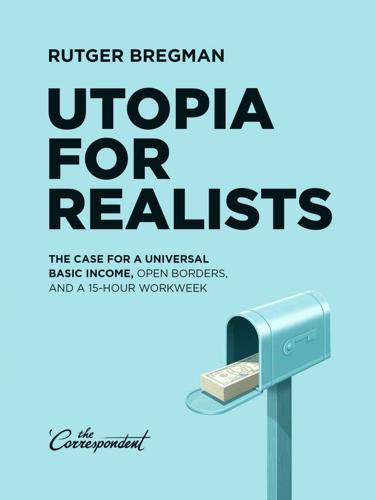
Utopia for Realists: The Case for a Universal Basic Income, Open Borders, and a 15-Hour Workweek
by
Rutger Bregman
Published 13 Sep 2014
Kids who grow up poor end up with two years’ less educational attainment, work 450 fewer hours per year, and run three times the risk of all-round bad health than those raised in families that are well off. Investments in education won’t really help these kids, the researchers say.16 They have to get above the poverty line first. A recent meta-analysis of 201 studies on the effectiveness of financial education came to a similar conclusion: Such education makes almost no difference at all.17 This is not to say no one learns anything – poor people can come out wiser, for sure. But it’s not enough. “It’s like teaching a person to swim and then throwing them in a stormy sea,” laments Professor Shafir.
…
Landrigan et al., “Effect of Reducing Interns’ Work Hours on Serious Medical Errors in Intensive Care Units.” The New England Journal of Medicine (October 2004). http://www.nejm.org/doi/full/10.1056/nejmoa041406 There is also a mountain of research attesting that working too hard is bad for health. See the meta-analysis: Kate Sparks et al., “The Effects of Hours of Work on Health: A Meta-Analytic Review,” Journal of Occupational and Organizational Psychology (August 2011). http://onlinelibrary.wiley.com/doi/10.1111/j.2044-8325.1997.tb00656.x/abstract 42. Jon C. Messenger and Naj Ghosheh, “Work Sharing during the Great Recession” (International Labour Organization). http://www.ilo.org/wcmsp5/groups/public/---dgreports/---dcomm/---publ/documents/publication/wcms_187627.pdf 43.
…
Daniel Patrick Moynihan, “Speech on Welfare Reform” (September 16, 1995) http://www.j-bradford-delong.net/politics/danielpatrickmoynihansspee.html 31. Beyond this, Nixon’s plan, once implemented, would have been difficult to repeal as it would have rapidly garnered widespread support. “New policies create new politics,” writes Steensland (p. 220). 32. Steensland, p. 226. 33. Steensland, p. x. 34. In a large meta-analysis of 93 European programs, no or negative effects were found in at least half. See: Frans den Butter and Emil Mihaylov, “Activerend arbeidsmarktbeleid is vaak niet effectief,” ESB (April 2008). http://personal.vu.nl/f.a.g.den.butter/activerendarbmarktbeleid2008.pdf 35. Stephen Kastoryano and Bas van der Klaauw, “Dynamic Evaluation of Job Search Assistance,” IZA Discussion Papers (June 15, 2011). http://www.roa.nl/seminars/pdf2012/BasvanderKlaauw.pdf 36.
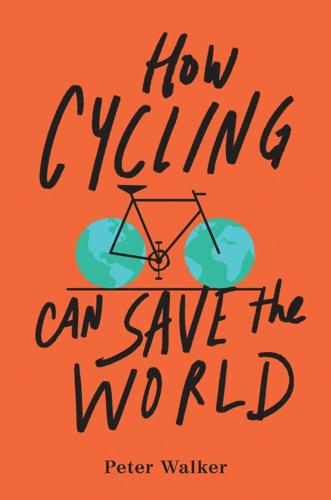
How Cycling Can Save the World
by
Peter Walker
Published 3 Apr 2017
CHAPTER 7 1 Michael Polhamus, “Bill Would Require Neon Clothes, Government ID for Cyclists,” Jackson Hole News and Guide, January 30, 2015, http://www.jhnewsandguide.com/jackson_hole_daily/local/bill-would-require-neon-clothes-government-id-for-cyclists/article_d53b9712-2e93-517d-9e33-8f13d693ba21.html. 2 Wes Johnson, “Missouri Bill Requires Bicyclists to Fly 15-Foot Flag on Country Roads,” Springfield News-Leader, January 14, 2016. 3 “School Pupils Encouraged to Wear Hi-Vis Vests in Road Safety Scheme,” Grimsby Telegraph, January 23, 2012, http://www.grimsbytelegraph.co.uk/school-pupils-encouraged-wear-hi-vis-vests-road/story-15010565-detail/story.html. 4 Chris Boardman, “Why I Didn’t Wear a Helmet on BBC Breakfast,” BritishCycling.org, November 3, 2014, https://www.britishcycling.org.uk/campaigning/article/20141103-campaigning-news-Boardman--Why-I-didn-t-wear-a-helmet-on-BBC-Breakfast-0. 5 Nick Hussey, “Why My Cycling Clothing Company Uses Models without Helmets,” The Guardian, February 4, 2016, https://www.theguardian.com/environment/bike-blog/2016/feb/04/vulpine-bike-clothing-company-models-without-helmets-dont-hate-us. 6 Peter Jacobsen and Harry Rutter, “Cycling Safety,” in Pucher and Buehler, City Cycling, ch. 7. 7 “Helmets for Pedal Cyclists and for Users of Skateboards and Roller Skates,” European Committee for Standardization, 1997, http://www.mrtn.ch/pdf/en_1078.pdf. 8 R.G. Attewell, K. Glase, and M. McFadden, “Bicycle Helmet Efficacy: A Meta-Analysis,” Accident Analysis and Prevention 33 (2001). 9 Rune Elvik, “Publication bias and time-trend bias in meta-analysis of bicycle helmet efficacy: A re-analysis of Attewell, Glase and McFadden,” Accident Analysis and Prevention 43 (2011):1245–51. 10 E-mail exchange with the author. 11 Davis, Death on the Streets. 12 1985 Durbin-Harvey report, commissioned by UK Department of Transport from two professors of statistics. 13 Ian Walker, “Drivers Overtaking Bicyclists: Objective Data on the Effects of Riding Position, Helmet Use, Vehicle Type and Apparent Gender,” Accident Analysis and Prevention 39 (2007):417–25. 14 “Wearing a Helmet Puts Cyclists at Risk, Suggests Research,” University of Bath, September 11, 2016, http://www.bath.ac.uk/news/articles/archive/overtaking110906.html. 15 Tim Gamble and Ian Walker, “Wearing a Bicycle Helmet Can Increase Risk Taking and Sensation Seeking in Adults,” Psychological Science, 2016. 16 “Helmet Wearing Increases Risk Taking and Sensation Seeking,” University of Bath, January 25, 2016, http://www.bath.ac.uk/news/2016/01/25/helmet-wearing-risk-taking. 17 Fishman et al., “Barriers and Facilitators to Public Bicycle Scheme Use: A Qualitative Approach,” Transportation Research Part F: Traffic Psychology and Behaviour 15, Vol. 6 (2012):686–98. 18 Interview with the author. 19 N.C.
…
NOTES INTRODUCTION 1 Department for Transport, National Travel Survey: England 2015, 2016, https://www.gov.uk/government/uploads/system/uploads/attachment_data/file/551437/national-travel-survey-2015.pdf. 2 Ministry of Transport, Public Works and Water Management, Cycling in the Netherlands, 2009, http://www.fietsberaad.nl/library/repository/bestanden/CyclingintheNetherlands2009.pdf. 3 United Nations, “World’s Population Increasingly Urban with More Than Half Living in Urban Areas,” July 10, 2014, http://www.un.org/en/development/desa/news/population/world-urbanization-prospects-2014.html. CHAPTER 1 1 Royal College of Physicians, “National Review of Asthma Deaths,” 2015, https://www.rcplondon.ac.uk/projects/national-review-asthma-deaths. 2 Daniela Schmid and Michael F. Leitzmann, “Television Viewing and Time Spent Sedentary in Relation to Cancer Risk: A Meta-Analysis,” Journal of the National Cancer Institute 106, Vol. 7 (2014), http://jnci.oxfordjournals.org/content/106/7/dju098.full.pdf+html. 3 Interview with the author. 4 John Pucher and Ralph Buehler, “At the Frontiers of Cycling: Policy Innovations in the Netherlands, Denmark, and Germany,” World Transport Policy and Practice (December 2007), https://ralphbu.files.wordpress.com/2015/03/frontiers.pdf. 5 Jeroen Johan de Hartog, Hanna Boogaard, Hans Nijland, and Gerard Hoek, “Do the Health Benefits of Cycling Outweigh the Risks?”

Rethinking Narcissism: The Bad---And Surprising Good---About Feeling Special
by
Dr. Craig Malkin
Published 6 Jul 2015
Marchisio. Narcissism in organizational contexts. Human Resource Management Review, 2011, vol. 21(4), pp. 268–84. DuBrin, A. J. Narcissism in the Workplace: Research, opinion, and practice. Edward Elgar, 2012. Grijalva, E., and D. A. Newman. Narcissism and Counterproductive Work Behavior (CWB): Meta-analysis and consideration of collectivist culture, Big Five personality, and narcissism’s facet structure. Applied Psychology, 2014, in press. Harvey, P., and M. J. Martinko. An empirical examination of the role of attributions in psychological entitlement and its outcomes. Journal of Organizational Behavior, 2009, vol. 30(4), pp. 459–76.
…
Sourcebooks, 2009. Nevicka, B., A. H. De Hoogh, A. E. Van Vianen, B. Beersma, and D. McIlwain. All I need is a stage to shine: Narcissists’ leader emergence and performance. The Leadership Quarterly, 2011, vol. 22(5), pp. 910–25. O’Boyle Jr., E. H., D. R. Forsyth, G. C. Banks, and M. A. McDaniel. A meta-analysis of the dark triad and work behavior: A social exchange perspective. Journal of Applied Psychology, 2012, vol. 97(3), p. 557. Padilla, A., R. Hogan and R. B. Kaiser. The toxic triangle: Destructive leaders, susceptible followers, and conducive environments. The Leadership Quarterly, 2007, vol. 18(3), pp. 176–94.
…
Mirror or megaphone?: How relationships between narcissism and social networking site use differ on Facebook and Twitter. Computers in Human Behavior, 2013, vol. 29(5), pp. 2004–12. Song, H., A. Zmyslinski-Seelig, J. Kim, A. Drent, A. Victor, K. Omori, and M. Allen. Does Facebook make you lonely?: A meta analysis. Computers in Human Behavior, 2014, vol. 36, pp. 446–52. Weiser, E. B. The functions of Internet use and their social and psychological consequences. CyberPsychology & Behavior, 2001, vol. 4(6), pp. 723–43. Wilson, R. E., S. D. Gosling, and L. T. Graham. A review of Facebook research in the social sciences.

If Anyone Builds It, Everyone Dies: Why Superhuman AI Would Kill Us All
by
Eliezer Yudkowsky
and
Nate Soares
Published 15 Sep 2025
Ethanol was perhaps the most promising alternative additive, but engines using lead alternatives needed hardened valves and valve-seats. 3. brain damage: Michael J. McFarland, Matt E. Hauer, and Aaron Reuben, “Half of US Population Exposed to Adverse Lead Levels in Early Childhood,” Proceedings of the National Academy of Sciences 119, no. 11 (March 7, 2022), doi.org/10.1073/pnas.2118631119. 4. meta-analysis: Anthony Higney, Nick Hanley, and Mirko Moro, “The Lead-Crime Hypothesis: A Meta-analysis,” Regional Science and Urban Economics 97 (2022), doi.org/10.1016/j.regsciurbeco.2022.103826. 5. industry propaganda: Alan P. Loeb, “Paradigms Lost: A Case Study Analysis of Models of Corporate Responsibility for the Environment,” Business and Economic History 28, no. 2, Winter 1999, jstor.org/stable/23703323; William Kovarik, “ETHYL: The 1920s Conflict over Leaded Gasoline and Alternative Fuels” (paper presented at the American Society for Environmental History Annual Conference, Providence, RI, March 26–30, 2003). 6. long vacation: Bill Kovarik, “Charles F.
…
The tetraethyl form in gasoline is far more dangerous. Growing up near cars running on leaded gasoline caused brain damage in young children—the loss of an estimated 7.4 points of measured IQ depending on dosage, and a harder-to-measure increase in criminality and violence. A whole generation was poisoned. A meta-analysis in 2022 concluded that lead abatement accounted for 7 to 28 percent of the U.S. drop in homicides in the late twentieth century as these fuels were phased out. The benefit of somewhat cheaper car engines was not nearly enough to justify the crime and brain damage that leaded fuels quietly inflicted on hundreds of millions of people worldwide.
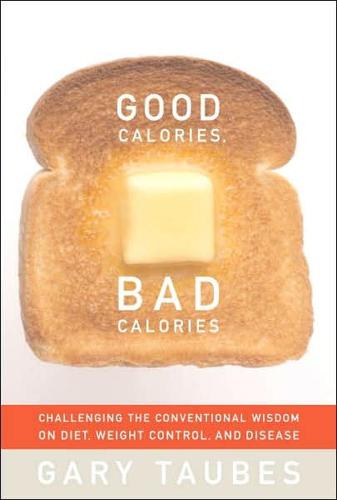
Good Calories, Bad Calories: Challenging the Conventional Wisdom on Diet, Weight Control, and Disease
by
Gary Taubes
Published 25 Sep 2007
One other method can be employed to judge the validity of the hypotheses that dietary fat or saturated fat causes heart disease, and that cholesterol-lowering diets prevent it. This is a technique known as meta-analysis, viewed as a kind of last epidemiological resort in these kinds of medical and public-health controversies: if the existing studies give ambiguous results, the true size of a benefit or harm may be assessed by pooling the data from all the studies in such a way as to gain what’s known as statistical power. Meta-analysis is controversial in its own right. Investigators can choose, for instance, which studies to include in their meta-analysis, either consciously or subconsciously, based on which ones are most likely to give them the desired result.
…
The founders, led by Iain Chalmers of Oxford University, believed that meta-analyses could be so easily biased by researchers’ prejudices that they needed a standardized methodology to minimize the influence of such prejudice, and they needed a venue that would allow for the publication of impartial reviews. The Cochrane Collaboration methodology makes it effectively impossible for researchers to influence a meta-analysis by the criteria they use to include or exclude studies. Cochrane Collaboration reviews must include all studies that fit a prespecified set of criteria, and they must exclude all that don’t. In 2001, the Cochrane Collaboration published a review of “reduced or modified dietary fat for preventing cardiovascular disease.”
…
Most striking result: Ibid. The NHLBI workshop: Jacobs et al. 1992. Footnote. Hulley et al. 1992. Rifkind’s interpretation: Interview, Basil Rifkind. Cf. Jacobs et al. 1992. “Questions should be pursued…”: Jacobs et al. 1992. Feynman’s lectures: Feynman 1967 (“…if your bias…” and “…absolutely sure…,” 147).83 Meta-analysis: Mann 1990 provides a good review. Cochrane Collaboration: Taubes 1996; the Cochrane Collaboration Web site (www.cochrane.org). “reduced or modified…”: Hooper et al. 2001. “A major lesson…”: Keys 1975. “The pooled effects suggest…”: Ebrahim et al. 2006. Evidence indeed suggested: Malmros 1950; Schornagel 1953; Vartiainen and Kanerva 1947.

Growth: From Microorganisms to Megacities
by
Vaclav Smil
Published 23 Sep 2019
Genetically modified soybeans, rapeseed (and cotton) had followed soon afterward, but the adoption of transgenic crops has encountered a great deal of consumer as well as regulatory resistance (particularly in the EU). As a result, there is still no large-scale cultivation of transgenic wheat or rice. But the opposition is not based on solid scientific foundations. Klümper and Qaim (2014) examined all principal factors that influence outcomes of genetically modified cropping and their meta-analysis provided robust evidence of benefits for producers in both affluent and low-income countries. On average, the adoption of transgenic crops has reduced pesticide use by 37% while it increased crop yields by 22% and profits by 68%, and yield gains were larger for insect-resistant than for herbicide-tolerant crops, and they have been higher in low-income countries.
…
Killen et al. (2010) found the full range of intraspecific allometries in teleost fishes between 0.38 and 1.29. Boukal et al. (2014) confirmed a wide variability of the exponent within various taxa. Additional meta-analyses will confirm the findings just cited, but at least ever since White et al. (2007) published a meta-analysis of 127 interspecific allometric exponents there should have been no doubts about the absence of any universal metabolic allometry. The effect of body mass on metabolic rate is significantly heterogeneous and in general it is stronger for endotherms than for ectotherms, with observed mean exponents of 0.804 for ectotherms and 0.704 for endotherms.
…
Improved nutrition—above all the increased supply of high-quality animal protein in general and of dairy products in particular—and a reduced burden of childhood and adolescent diseases have clearly been the two key drivers of the modern growth of average stature. The effect of dairy products on stature is evident from national comparisons and it has been quantified by meta-analysis of modern controlled trials (de Beer 2012). The most likely result of dairy product supplementation is 0.4 cm of additional growth per year per 245 mL (US cup is about 237 mL) of daily intake. The nationwide effect is clearly seen by diverging US and Dutch height trends. American milk consumption was stable during the first half of the 20th century and steadily declined afterwards, while Dutch consumption was increasing until the 1960s and, despite its subsequent decline, is still above the US level; Dutch males, smaller than Americans before WWII, surpassed their American peers after 1950.

The Cancer Chronicles: Unlocking Medicine's Deepest Mystery
by
George Johnson
Published 26 Aug 2013
Sanjoaquin et al., “Folate Intake and Colorectal Cancer Risk: A Meta-analytical Approach,” International Journal of Cancer 113, no. 5 (February 20, 2005): 825–28 [http://www.ncbi.nlm.nih.gov/pubmed/15499620]; Susanna C. Larsson, Edward Giovannucci, and Alicja Wolk, “Folate and Risk of Breast Cancer: A Meta-analysis,” Journal of the National Cancer Institute 99, no. 1 (January 3, 2007): 64–76 [http://jnci.oxfordjournals.org/content/99/1/64.abstract]; and Jane C. Figueiredo et al., “Folic Acid and Risk of Prostate Cancer: Results from a Randomized Clinical Trial,” Journal of the National Cancer Institute 101, no. 6 (March 18, 2009): 432–35.
…
[http://www.ncbi.nlm.nih.gov/pubmed/6351251] 23. eating a lot of red meat: The calculation is for a fifty-year-old. See Teresa Norat et al., “Meat, Fish, and Colorectal Cancer Risk,” Journal of the National Cancer Institute 97, no. 12 (June 15, 2005): 906–16; [http://www.ncbi.nlm.nih.gov/pubmed/15956652] and Doris S. M. Chan et al., “Red and Processed Meat and Colorectal Cancer Incidence: Meta-Analysis of Prospective Studies,” PLOS ONE 6, no. 6 (June 6, 2011). [http://www.ncbi.nlm.nih.gov/pmc/articles/PMC3108955] 24. from 1.28 percent to 1.7 percent: Norat et al., “Meat, Fish, and Colorectal Cancer Risk.” 25. fish, fish oils, and colon cancer prevention: For evidence that eating fish discourages cancer by encouraging apoptosis and impeding cellular proliferation, see Youngmi Cho et al., “A Chemoprotective Fish Oil- and Pectin-Containing Diet Temporally Alters Gene Expression Profiles in Exfoliated Rat Colonocytes Throughout Oncogenesis,” Journal of Nutrition 141, no. 6 (June 1, 2011): 1029–35.
…
[http://www.ncbi.nlm.nih.gov/pubmed/1622634] 41. oral contraceptives may slightly raise the odds: “Oral Contraceptives and Cancer Risk,” National Cancer Institute, reviewed March 21, 2012. 42. Alcohol … with digestive cancers: The evidence for esophageal, liver, and other cancers is examined in Vincenzo Bagnardi et al., “Alcohol Consumption and the Risk of Cancer: A Meta-Analysis,” Alcohol Research and Health: The Journal of the National Institute on Alcohol Abuse and Alcoholism 25, no. 4 (2001): 263–70. [http://pubs.niaaa.nih.gov/publications/arh25-4/263-270.htm] 43. the risk from hepatitis viruses: Heather M. Colvin and Abigail E. Mitchell, eds., Hepatitis and Liver Cancer (Washington, DC: The National Academies Press, 2010), 29–30.
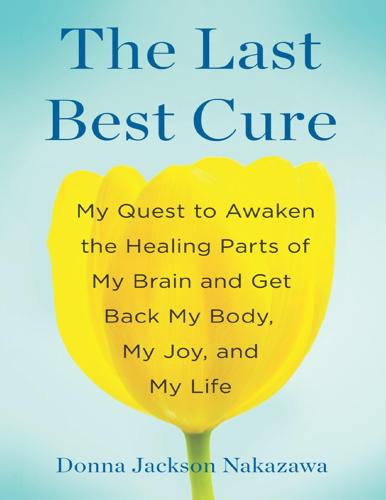
The Last Best Cure: My Quest to Awaken the Healing Parts of My Brain and Get Back My Body, My Joy, a Nd My Life
by
Donna Jackson Nakazawa
Published 21 Feb 2013
A few days earlier I had a conversation with Srijan Sen, MD, PhD, assistant professor of psychiatry at the University of Michigan Medical School, who recently analyzed over fifty studies to better understand the relationship between seratonin gene variants and increased or decreased risk of depression and illness as adults. “His meta-analysis showed that the orchid gene variant is correlated with higher rates of depression,” I explain to Rowland-Seymour. “But what’s really intriguing is that the orchid gene is more likely to be correlated with depression in adults when stressful circumstances occurred in childhood rather than when severe stress hits once they’re already adults.”
…
A few days earlier I had a conversation with Srijan Sen, MD, PhD: In this study, Srijan Sen, MD, PhD, assistant professor of psychiatry at the University of Michigan Medical School, and his colleagues examined fifty-four studies done between 2001 and 2010 looking at 41,000 individuals—the largest analysis ever done of the relationship between individuals’ serotonin genetic make-up and how well they were able to bounce back from adversity. Karg K, Burmeister M, Shedden K, et al. The serotonin transporter promoter variant (5-HTTLPR), stress, and depression meta-analysis revisited: Evidence of genetic moderation. Arch Gen Psych. 2011 May;68(5):444–54. In individuals with the short-short gene variant: Hariri AR, Mattay VS, Tessitore A, et al. Serotonin transporter genetic variation and the response of the human amygdala. Science. 2002 Jul 19;297(5580):400–403. We already know that children with a history of ACEs: Aguilera M, Arias B, Wichers M, et al.
…
The experience of persons with allergic respiratory symptoms: Practicing yoga as a self-healing modality. Holist Nurs Pract. 2011 Mar–Apr;25(2):63–70. Cancer patients who practice yoga report: Lin KY, Hu YT, Chang KJ,Lin HF, et al. Effects of yoga on psychological health, quality of life, and physical health of patients with cancer: A meta-analysis. Evid Based Complement Alternat Med. 2011;2011:659876. Epub 2011 Mar 9. And the thing that makes the brain decide one way or the other: Butler D, Moseley L. Explain pain (Adelaide, South Australia: Noigroup Publications, 2003). In this book, Butler and Moseley discuss new findings that our level of perceived pain is based on how much the brain perceives us to be under threat.
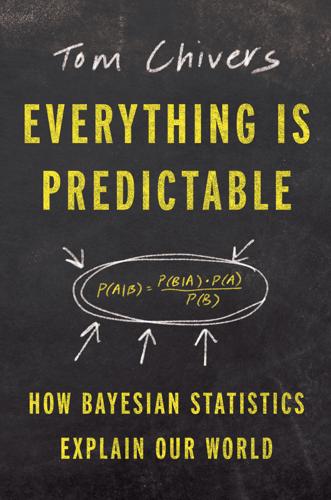
Everything Is Predictable: How Bayesian Statistics Explain Our World
by
Tom Chivers
Published 6 May 2024
Grieve, who did work in industry, says that’s what his pharmaceutical research did all the time. It’s just more efficient, he says. Normally, scientists pool all the studies on a subject and do a “meta-analysis”—they use all the data from all of the studies, combining their p-values and effect sizes and so on to create a consensus. For Bayesians, though, that’s just part of the daily work. You incorporate all the studies that were done before. “It allows us to leverage all the data we’ve collected in the past,” Grieve says. “It incorporates its own meta-analysis. The current standard way of creating a prior distribution from existing data, in fact, is called a meta-analytic prior.”
…
“There are some core principles that hold whatever system you use. Don’t cherry-pick, be honest. Garbage in, garbage out.” If scientists are hiding their unsurprising null results, or journals aren’t publishing them, then the scientific literature fills up disproportionately with “surprising” but false ones. That means when you try to do a meta-analysis to assess the overall state of the scientific consensus, you’ll get a false picture, and that’s true whether you analyze the data with Bayesian or frequentist methods. But one thing that a Bayesian approach would fix is the use of the p = 0.05 threshold. And that’s important, because—even though scientists often assume, or pretend, or imply, that a p = 0.05 result should be taken as real—p = 0.05 is sometimes actually evidence against your hypothesis.
…
Preventive Services Task Force Recommendation,” Annals of Internal Medicine 164, no. 4 (February 16, 2016): 256–67, doi: 10.7326/M15-0970. 10. “Breast Screening,” NICE, last updated May 2022, https://cks.nice.org.uk/topics/breast-screening/. 11. S. Taylor-Phillips et al., “Accuracy of Non-Invasive Prenatal Testing Using Cell-Free DNA for Detection of Down, Edwards and Patau Syndromes: A Systematic Review and Meta-Analysis,” BMJ Open 6 (2016): e010002, doi: 10.1136/bmjopen-2015-010002. 12. C. Jowett, “Lies, Damned Lies, and DNA Statistics: DNA Match Testing, Bayes’ Theorem, and the Criminal Courts,” Medicine, Science and the Law 41, no. 3 (2001): 194–205, doi: 10.1177/002580240104100302. 13. Steven Strogatz, “Chances Are,” New York Times, April 25, 2010, https://archive.nytimes.com/opinionator.blogs.nytimes.com/2010/04/25/chances-are/. 14.
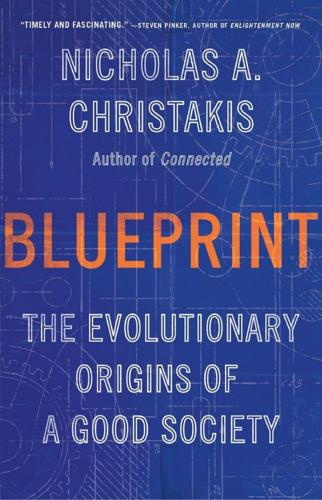
Blueprint: The Evolutionary Origins of a Good Society
by
Nicholas A. Christakis
Published 26 Mar 2019
Buss, “Sex Differences in Human Mate Preferences: Evolutionary Hypotheses Testing in 37 Cultures,” Behavioral and Brain Sciences 12 (1989): 1–49. 26. E. Turkheimer, “Three Laws of Behavior Genetics and What They Mean,” Current Directions in Psychological Science 9 (2000): 160–164. 27. T. J. C. Polderman et al., “Meta-Analysis of the Heritability of Human Traits Based on Fifty Years of Twin Studies,” Nature Genetics 47 (2015): 702–729. 28. J. Wu, H. Xiao, H. Sun, L. Zou, and L. Q. Zhu, “Role of Dopamine Receptors in ADHD: A Systematic Meta-Analysis,” Molecular Neurobiology 45 (2012): 605–620; C. Chen, M. Burton, E. Greenberger, and J. Dmitrieva, “Population Migration and the Variation of Dopamine D4 Receptor (DRD4) Allele Frequencies Around the Globe,” Evolution and Human Behavior 20 (1999): 309–324; R.
…
Hamer, “Population and Familial Association Between the D4 Dopamine Receptor Gene and Measures of Novelty Seeking,” Nature Genetics 12 (1996): 81–84; M. R. Munafo, B. Yalcin, S. A. Willis-Owen, and J. Flint, “Association of the Dopamine D4 Receptor (DRD4) Gene and Approach-Related Personality Traits: Meta-Analysis and New Data,” Biological Psychiatry 63 (2008): 197–206. 29. See, for example, J. N. Rosenquist, S. F. Lehrer, A. J. O’Malley, A. M. Zaslavsky, J. W. Smoller, and N. A. Christakis, “Cohort of Birth Modifies the Association Between FTO Genotype and BMI,” PNAS: Proceedings of the National Academy of Sciences 112 (2015): 354–359. 30.
…
Black, “HLA and Mate Selection: No Evidence in South Amerindians,” American Journal of Human Genetics 61 (1997): 505–511. 61. T. Bereczkei, P. Gyuris, and G. E. Weiseld, “Sexual Imprinting in Human Mate Choice,” Proceedings of the Royal Society B 271 (2004): 1129–1134. 62. T. J. C. Polderman et al., “Meta-Analysis of the Heritability of Human Traits Based on Fifty Years of Twin Studies,” Nature Genetics 47 (2015): 702–709. 63. R. S. Herz and M. Inzlicht, “Sex Differences in Response to Physical and Social Factors Involved in Human Mate Selection: The Importance of Smell for Women,” Evolution and Human Behavior 23 (2002): 359–364. 64.

Evil by Design: Interaction Design to Lead Us Into Temptation
by
Chris Nodder
Published 4 Jun 2013
Herbst, Lowell Gaertner, and Chester A. Insko. “My head says yes but my heart says no: Cognitive and affective attraction as a function of similarity to the ideal self.” Journal of Personality and Social Psychology 84.6 (2003): 1206. Dating meta-analysis: Alan Feingold. “Matching for attractiveness in romantic partners and same-sex friends: A meta-analysis and theoretical critique.” Psychological Bulletin 104.2 (1988): 226. OkCupid statistics on male reaction to beauty, described as game theory: Christian Rudder. “The mathematics of beauty.” OKTrends (blog.okcupid.com). January 10, 2011. Retrieved March 2013.
…
Retrieved January 2013. Real-time chats are more balanced: Antonios Garas, David Garcia, Marcin Skowron, and Frank Schweitzer. “Emotional persistence in online chatting communities.”Scientific Reports 2.402 (2012). Situational norms: Tom Postmes and Russell Spears. “Deindividuation and antinormative behavior: A meta-analysis.” Psychological Bulletin 123.3 (1998): 238–259. Give people permission Milgram’s experiment: Stanley Milgram. “Behavioral Study of Obedience.” Journal of Abnormal and Social Psychology 67.4 (1963): 371–378. Milgram quotes: Stanley Milgram. Obedience to Authority: An Experimental View. New York: HarperCollins, 1974. p. 6.

Visual Thinking: The Hidden Gifts of People Who Think in Pictures, Patterns, and Abstractions
by
Temple Grandin, Ph.d.
Published 11 Oct 2022
Singapore: Springer, 2020. doi.org/10.1007/978-981-15-4250-3_9. Mathewson, J. H. “Visual-Spatial Thinking: An Aspect of Science Overlooked by Educators.” Science Education 83, no. 1 (1999): 33–54. https://onlinelibrary.wiley.com/doi/10.1002/(SICI)1098-237X(199901)83:1%3C33::AID-SCE2%3E3.0.CO;2-Z. Mazard, A., et al. “A PET Meta-Analysis of Object and Spatial Mental Imagery.” Cognitive Psychology 16 (2004): 673–95. McFarland, M. “Why Shades of Asperger’s Syndrome Are the Secret to Building a Great Tech Company.” Washington Post, April 3, 2015. https://www.washingtonpost.com/news/innovations/wp/2015/04/03/why-shades-of-aspergers-syndrome-are-the-secret-to-building-a-great-tech-company/.
…
“Detection of Malignant Melanoma Using Artificial Intelligence: An Observational Study of Diagnostic Accuracy.” Dermatology Practical & Conceptual 10, no. 1 (2020): e2020011. doi.org/10.5826/dpc.1001a11. Pidgeon, L. M., et al. “Functional Neuroimaging of Visual Creativity: A Systematic Review and Meta-Analysis.” Brain and Behavior 6, no. 10 (2016). doi.org/10.1002/brb3.540. Pinker, S. The Language Instinct: How the Mind Creates Language. New York: William Morrow, 1994. Putt, S., et al. “The Role of Verbal Interaction during Experimental Bifacial Stone Tool Manufacture.” Lithic Technology 39, no. 2 (2014): 96–112.
…
Soares, J. M., et al. “A Hitchhiker’s Guide to Functional Magnetic Resonance Imaging.” Frontiers in Neuroscience (2016). https://www.frontiersin.org/articles/10.3389/fnins.2016.00515/full. Spagna, A., et al. “Visual Mental Imagery Engages the Left Fusiform Gyrus, but Not the Early Visual Cortex: A Meta-Analysis of Neuroimaging Evidence.” Neuroscience and Biobehavioral Reviews (2020). doi:10.1016/j.neubiorev.2020.12.029. Sperry, R. W. “Lateral Specialization of Cerebral Function in the Surgically Separated Hemispheres.” In The Psychophysiology of Thinking, ed. F. J. McGuigan and R. A. Schoonover, chap. 6.

Braving the Wilderness: The Quest for True Belonging and the Courage to Stand Alone
by
Brené Brown
Published 15 Mar 2017
Numerous studies confirm that it’s not the quantity of friends but the quality of a few relationships that actually matters. If you’re anything like me, and you find yourself questioning the idea that starvation and loneliness are equally life-threatening, let me share the study that really brought all of this together for me. In a meta-analysis of studies on loneliness, researchers Julianne Holt-Lunstad, Timothy B. Smith, and J. Bradley Layton found the following: Living with air pollution increases your odds of dying early by 5 percent. Living with obesity, 20 percent. Excessive drinking, 30 percent. And living with loneliness? It increases our odds of dying early by 45 percent.
…
the brain’s self-protection mode often ramps up the stories we tell ourselves: Brown, Rising Strong, p. 124. not the quantity of friends but the quality of a few relationships: Susan Pinker, The Village Effect: How Face-to-Face Contact Can Make Us Healthier and Happier (New York: Spiegel and Grau, 2014). a meta-analysis of studies on loneliness: J. Holt-Lunstad, M. Baker, T. Harris, D. Stephenson, and T. B. Smith, “Loneliness and Social Isolation as Risk Factors for Mortality: A Meta-Analytic Review,” Perspectives on Psychological Science 10(2), 2015, 227–37, doi:10.1177/1745691614568352. one of my favorite high lonesome songs: Townes Van Zandt, “If I Needed You,” on the album The Late Great Townes Van Zandt (New York: Tomato Records, 1972).
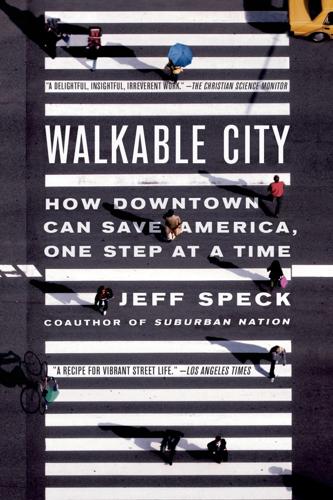
Walkable City: How Downtown Can Save America, One Step at a Time
by
Jeff Speck
Published 13 Nov 2012
We talked about this phenomenon at length in Suburban Nation in 2000, and the seminal text, The Elephant in the Bedroom: Automobile Dependence and Denial, was published by Hart and Spivak in 1993. For this reason, I will not take the time here to address its causes, which are multifold and fascinating. Since these books were published, however, there have been additional reports, all essentially confirming what we knew then. In 2004, a meta-analysis of dozens of previous studies found that “on average, a 10 percent increase in lane miles induces an immediate 4 percent increase in vehicle miles traveled, which climbs to 10 percent—the entire new capacity—in a few years.”14 The most comprehensive effort remains the one completed in 1998 by the Surface Transportation Policy Project, which looked at fully seventy different metropolitan areas over fifteen years.
…
USA Today, June 3, 2011. Erlanger, Steven, and Maïa de la Baume. “French Ideal of Bicycle-Sharing Meets Reality.” The New York Times, October 30, 2009. Eversley, Melanie. “Many Cities Changing One-Way Streets Back.” USA Today, December 20, 2006. Ewing, Reid, and Robert Cervero. “Travel and the Built Environment: A Meta-Analysis.” Journal of the American Planning Association 76, no. 3 (2010): 11. Ewing, Reid, and Eric Dumbaugh. “The Built Environment and Traffic Safety: A Review of Empirical Evidence.” Journal of Planning Literature 23, no. 4 (2009): 347–67. Fallows, James. “Fifty-Nine and a Half Minutes of Brilliance, Thirty Seconds of Hauteur.” theatlantic.com, July 3, 2009.
…
They found that “those living in more walkable neighborhoods trusted their neighbors more; participated in community projects, clubs and volunteering more; and described television as their major form of entertainment less than survey participants living in less walkable neighborhoods” (Rogers et al., “Examining Walkability,” 201–203). ●The Blue Zones, 220. It’s worth noting that Lesson Four is “buy a case of high-quality red wine,” which certainly adds to the book’s appeal (240). ■The Blue Zones, 223. According to The New York Times, “a recent meta-analysis of studies about exercise and mortality showed that, in general, a sedentary person’s risk of dying prematurely from any cause plummeted by nearly 20 percent if he or she began brisk walking (or the equivalent) for 30 minutes five times a week” (Gretchen Reynolds, “What’s the Single Best Exercise?”).
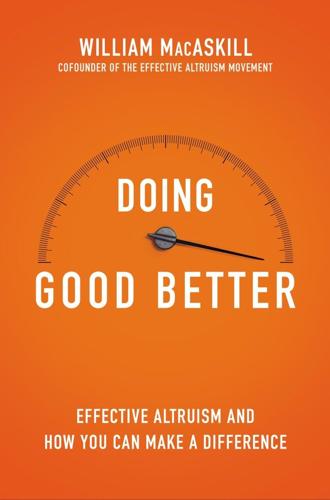
Doing Good Better: How Effective Altruism Can Help You Make a Difference
by
William MacAskill
Published 27 Jul 2015
(For a sanity check, remember that even the very poorest people in the world live on sixty cents per day; if it cost ten dollars to save a life, then we’d have to suppose that they or their family members couldn’t save up for a few weeks, or take out a loan, in order to pay for the lifesaving product.) Claims of a program’s effectiveness are more reliable when grounded in academic studies. If there’s been a meta-analysis—a study of the studies—that’s even better. Even then, there can be cause for concern because the program that a charity implements might be subtly different from the programs that were studied in the meta-analysis. Knowing that, it’s even better if the charity has done its own independently audited or peer-reviewed randomized controlled evaluations of its programs. Robustness of evidence is very important for the simple reason that many programs don’t work, and it’s hard to distinguish the programs that don’t work from the programs that do.
…
Economic Letters, 2013; Glewwe and Kremer, “Schools, Teachers, and Education Outcomes in Developing Countries,” in Eric A. Hanushek and F. Welch (eds.), Handbook of the Economics of Education, vol. 2, (New York: Elsevier, 2006), 945–1017; Patrick McEwan, “Improving Learning in Primary Schools of Developing Countries: A Meta-Analysis of Randomised Experiments,” unpublished paper. The American Cancer Society spends: American Cancer Society, “Stewardship Report,” 2013, 44, http://www.cancer.org/acs/groups/content/@corporatecommunications/documents/document/acspc-041227.pdf. The ALS Association (of ice-bucket-challenge fame) spends: ALS Association, “Annual Report,” 2014, 3, http://www.alsa.org/assets/pdfs/annual_report_fy2014.pdf.
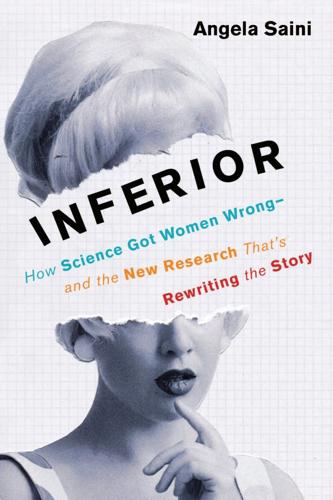
Inferior: How Science Got Women Wrong-And the New Research That's Rewriting the Story
by
Angela Saini
Published 29 May 2017
“Beyond Newborn Survival: The World You Are Born into Determines Your Risk of Disability-Free Survival.” Pediatric Research 74, no. S1 (2013): 1–3. Peacock, Janet L., et al. “Neonatal and Infant Outcome in Boys and Girls Born Very Prematurely.” Pediatric Research 71, no. 3 (2012): 305–10 Buckberry, Sam, et al. “Integrative Transcriptome Meta-Analysis Reveals Widespread Sex-Biased Gene Expression at the Human Fetal–Maternal Interface.” Molecular Human Reproduction 20, no. 8 (2014): 810–19. Austad, Steven N. “Why Women Live Longer Than Men: Sex Differences in Longevity.” Gender Medicine 3, no. 2 (2006): 79–92. Austad, Steven N., and Andrzej Bartke.
…
Cambridge, MA: Harvard University Press, 2010. Davis, Shannon N., and Barbara J. Risman. “Feminists Wrestle with Testosterone: Hormones, Socialization and Cultural Interactionism as Predictors of Women’s Gendered Selves.” Social Science Research 49 (2015): 110–25. Ruigroka, Amber N. V., et al. “A Meta-Analysis of Sex Differences in Human Brain Structure.” Neuroscience and Biobehavioral Reviews 39 (2014): 34–50. Chapter 4: The Missing Five Ounces of the Female Brain Gardener, Helen H. Facts and Fictions of Life, Boston: Arena, 1893. ——. “Sex and Brain Weight.” Letter to the editor. Popular Science Monthly 31, no. 10 (June 1887): 266–68.
…
“On the Mis-Presentation and Misinterpretation of Gender-Related Data: The Case of Ingalhalikar’s Human Connectome Study.” PNAS 111, no. 6 (February 11, 2014), https://www.pnas.org/content/111/6/E637.full?keytype2=tf_ipsecsha&ijkey=4183bcb77bcb8782c9324a9abf711223af7bbe9f. Tan, Anh, et al. “The Human Hippocampus Is Not Sexually-Dimorphic: Meta-Analysis of Structural MRI Volumes.” NeuroImage 124 (2016): 350–66. Cahill, Larry. “Equal ≠ The Same: Sex Differences in the Human Brain.” Cerebrum, April 2014. ——. “A Half-Truth Is a Whole Lie: On the Necessity of Investigating Sex Influences on the Brain.” Endocrinology 153, no. 6 (2012): 2541–43. Short, Nigel.
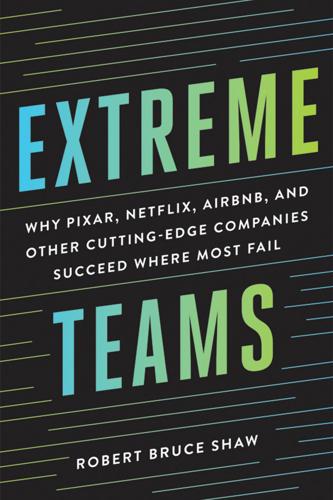
Extreme Teams: Why Pixar, Netflix, AirBnB, and Other Cutting-Edge Companies Succeed Where Most Fail
by
Robert Bruce Shaw
,
James Foster
and
Brilliance Audio
Published 14 Oct 2017
Fortune, March 8, 2013. 36Ian Parker, “How an Industrial Designer Became Apple’s Greatest Product,” February 23, 2015. 37Jay Yarow, “Jony Ive: This Is the Most Important Thing I Learned from Steve Jobs,” Business Insider, October 10, 2014. 38Robert Putnam, Bowling Alone: The Collapse and Revival of American Community (New York: Simon & Schuster, 2001). 39There is a great deal of research on the impact of social cohesion on performance. See D. J. Beal et al., “Cohesion and Performance in Groups: A Meta-Analytic Clarification of Construct Relation,” Journal of Applied Psychology 88 (2003), 989–1004; S. M. Gully, D. J. Devine, and D. J. Whitney, “A Meta-Analysis of Cohesion and Performance: Effects of Level of Analysis and Task Interdependence,” Small Group Research 26 (1995): 497–520; M. A. Hogg, The Social Psychology of Group Cohesiveness (New York: New York University Press, 1993). 40Dora L. Costa and Matthew E. Kahn, Heroes and Cowards: The Social Forces of War (Princeton: Princeton University Press, 2008). 41An important caveat: The authors found the camaraderie exerted this level of influence only when the soldiers saw others in their troop as similar to themselves—in their place of birth, ethnicity, social standing, and age.
…
Welles, “Lost in Patagonia: Yvon Chouinard’s Ambitious Social Mission,” Inc., August 1, 1992. 60Adam Waytz, “The Limits of Empathy,” Harvard Business Review January-February (2016). 61Rob Cross, Reb Rebele, and Adam Grant, “Collaborative Overload,” Harvard Business Review, January-February (2016); Radostina K. Purvanova and John P. Muros, “Gender Differences in Burnout: A Meta-Analysis,” Journal of Vocational Behavior 77 (2010), 168–85. Madeline E. Heilman and Julie J. Chen, “Same Behavior, Different Consequences: Reactions to Men’s and Women’s Altruistic Citizenship Behavior,” Journal of Applied Psychology 90 (2005), 431–41. 62The quote is from Adam Grant and Sheryl Sandberg, “Madam C.E.O., Get Me a Coffee,” New York Times, February 16, 2016. 63Barry Johnson, Polarity Management, HRD PRess; 2014. 64Robert Bruce Shaw interview. 65Ed Catmull, CEO of Pixar, notes the downside of moving too quickly on underperformers on those who remain: “It makes them think, ‘oh, if I screw up, they’re going to remove me.’
…
That said, fit is also important in the satisfaction of those who work in a company or group. Research indicates an employee’s fit with a firm’s culture is a strong predictor of organizational commitment, job satisfaction, and retention. See Amy L. Kristof-Brown and Erin C. Johnson, “Consequences of Individuals’ Fit at Work: A Meta-Analysis of Person-Job, Person-Organization, Person-Group and Person-Supervisor Fit,” Personnel Psychology 58 (2005), 281–342. 9Patagonia’s founder notes, “Not everyone wants to change the world, but we want a company to feel like home for those who do. Employees who are drawn to Chouinard Equipment, and later to Patagonia, either shared those values or did not mind working among those who held them.”
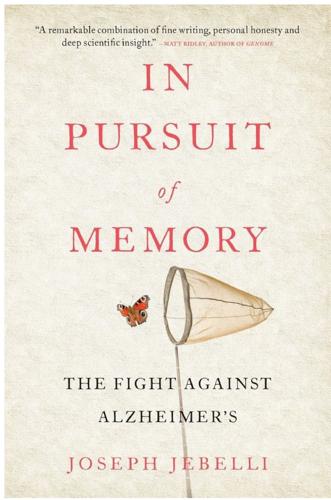
In Pursuit of Memory: The Fight Against Alzheimer's
by
Joseph Jebelli
Published 30 Oct 2017
At the time of writing, Alzheimer’s overtook heart disease in England and Wales; it is now the leading cause of death. Office for National Statistics, Statistical Bulletin. 3. Reagan, Handwritten letter courtesy of the Ronald Reagan Presidential Foundation and Library. 4. Mukherjee, The Emperor of All Maladies, p.39. 5. Lambert, Ibrahim-Verbaas, et al., ‘Meta-analysis of 74,046 individuals identifies 11 new susceptibility loci for Alzheimer’s disease’. 6. Fraser, Consulting report, July 2015. Chapter 1: The Psychiatrist with a Microscope 1. World Health Organization (WHO), ‘Dementia: Fact Sheet’. 2. Deuteronomy 28:28. 3. Jameson, Essays on the Changes of the Human Body, at its Different Ages, p.138. 4.
…
P.,… Långström, B., ‘Imaging brain amyloid in Alzheimer’s disease with Pittsburgh Compound-B’, Annals of Neurology, 55 (3), 2004, 306–19 Kondo, T., Asai, M., Tsukita, K., Kutoku, Y., Ohsawa, Y., Sunada, Y.,… Inoue, H., ‘Modeling Alzheimer’s disease with iPSCs reveals stress phenotypes associated with intracellular Abeta and differential drug responsiveness’, Cell Stem Cell, 12 (4), 2013, 487–96 Kuhn, T. S., The Structure of Scientific Revolutions, University of Chicago Press, 2012 Lambert, J. C., Ibrahim-Verbaas, C. A., Harold, D., Naj, A. C., Sims, R., Bellenguez, C.,… Amouyel, P., ‘Meta-analysis of 74,046 individuals identifies 11 new susceptibility loci for Alzheimer’s disease’, Nature Genetics, 45 (12), 2013, 1452–8 Lane, N., Power, Sex, Suicide: Mitochondria and the Meaning of Life, Oxford University Press, 2006 Lapillonne, H., Kobari, L., Mazurier, C., Tropel, P., Giarratana, M.
…
H., ‘Serum SNTF increases in concussed professional ice hockey players and relates to the severity of postconcussion symptoms’, Journal of Neurotrauma, 32 (17), 2015, 1294–300 Singh, B., Parsaik, A. K., Mielke, M. M., Erwin, P. J., Knopman, D. S., Petersen, R. C., Roberts, R. O., ‘Association of Mediterranean diet with mild cognitive impairment and Alzheimer’s disease: a systematic review and meta-analysis’, Journal of Alzheimer’s Disease, 39 (2), 2014, 271–82 Sinha, M., Jang, Y. C., Oh, J., Khong, D., Wu, E. Y., Manohar, R.,… Wagers, A. J., ‘Restoring systemic GDF11 levels reverses age-related dysfunction in mouse skeletal muscle’, Science, 344 (6184), 2014, 649–52 Small, G. W., Ercoli, L. M., Silverman, D.
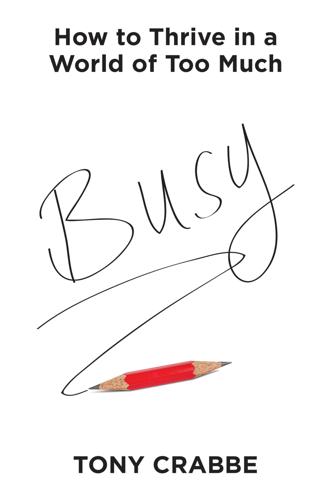
Busy
by
Tony Crabbe
Published 7 Jul 2015
A prevention focus is all about avoiding negative outcomes, and promotion focus is all about positive outcomes: striving to achieve goals that are important to us. In 2012, researchers at Michigan State University carried out a thorough review of all the studies into self-regulation.13 Using a clever statistical technique called meta-analysis, they analyzed studies involving over 25,000 people. Their interest lay in the relationship between regulatory focus and performance. What they found was that a promotion focus was strongly related to task and job performance. It was also positively related to other good things like openness, innovation, helpfulness, job satisfaction and organizational commitment.
…
Vohs, “Everyday Temptations: An Experience Sampling Study of Desire, Conflict, and Self-Control,” Journal of Personality and Social Psychology 102, no. 6 (2012): 1318–35. 5. D. T. de Ridder, G. Lensvelt-Mulders, C. Finkenauer, F. M. Stok, and R. F. Baumeister, “Taking Stock of Self-Control: A Meta-Analysis of How Trait Self-Control Relates to a Wide Range of Behaviors,” Personality and Social Psychology Review 16, no. 1 (2012): 76–99. 6. Brian Tracy, Eat That Frog!: 21 Great Ways to Stop Procrastinating and Get More Done in Less Time (San Francisco, CA: Berrett-Koehler Publishers, Inc., 2007). 7.
…
Amy Arnsten cited in David Rock, Your Brain at Work: Strategies for Overcoming Distraction, Regaining Focus, and Working Smarter All Day Long (New York: HarperBusiness, 2009). 12. Edward Tory Higgins, “Beyond Pleasure and Pain,” American Psychologist 52, no. 12 (December 1997): 1280–1300. 13. K. Lanaj, C. H. Chang, and R. E. Johnson, “Regulatory Focus and Work-Related Outcomes: A Review and Meta-Analysis,” Psychological Bulletin 138, no. 5 (September 2012): 998–1034. 14. Steve Peters, The Chimp Paradox: The Mind Management Program to Help You Achieve Success, Confidence, and Happiness (New York: Jeremy P. Tarcher/Penguin, 2011). 15. James Gross, “Emotion Regulation: Affective, Cognitive, and Social Consequences,” Psychophysiology 39, no. 3 (May 2002): 281–91. 16.

Conflicted: How Productive Disagreements Lead to Better Outcomes
by
Ian Leslie
Published 23 Feb 2021
Norton & Co., 1991 Croucher, Stephen M., et al., ‘Conflict Styles and High–Low Context Cultures, A Cross-Cultural Extension’, Communication Research Reports, 29 (1), 2012 Cusk, Rachel, Coventry: Essays, Faber & Faber, 2019 De Dreu, K. W., and Weingart, L. R., ‘Task Versus Relationship Conflict, Team Performance, and Team Member Satisfaction: A Meta-Analysis’, Journal of Applied Psychology, 88 (4), 2003 DeSteno, David, et al., ‘Prejudice from thin air: the effect of emotion on automatic intergroup attitudes’, Psychological Science, 15 (5), June 2004 De Wit, Frank R. C., et al., ‘The paradox of intragroup conflict: a meta-analysis’, Journal of Applied Psychology, 97 (2), 2012 Docherty, Jayne, Learning Lessons from Waco: When the Parties Bring Their Gods to the Negotiation Table, Syracuse University Press, 2001 ———, interview retrieved from https://www.beyondintractability.org/audiodisplay/docherty-j Donohue, W.
…
The conversation between Penny and her husband is recorded in Sillars et al., ‘Stepping into the stream of thought: Cognition during marital conflict’. My conversation with Alan Sillars was important to everything I say in this chapter, including the distinction between relationship and content. For the section on workplace conflict I drew on the meta-analysis by Carsten et al., as well as De Wit. ‘Both male and female senior execs were expected to conform to dominant norms’ is from Martin and Meyerson. 3. How Conflict Makes Us Smarter ‘Psychologists have now established beyond doubt that people are more likely to notice and consider evidence that confirms what they believe . . .’
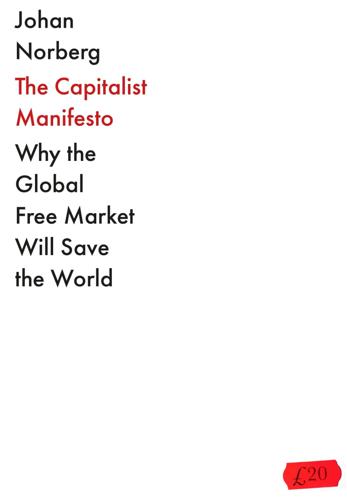
The Capitalist Manifesto
by
Johan Norberg
Published 14 Jun 2023
The State Secretary was Kjell-Olof Feldt, who said this at a seminar at Chalmers. 24. Hannah Ritchie, ‘Where does the plastic in our oceans come from?’, Our World in Data, 1 May 2021. 25. Wendling et al 2020, p.39. 26. Ibid. 27. Bishwa S. Koirala, Hui Li, Robert P. Berrens, ‘Further investigation of Environmental Kuznets Curve studies using meta-analysis’, International Journal of Ecological Economics and Statistics, no.S11, vol.22, 2011. 28. Thomas van Goethem & Jan Luiten van Zanden, ‘Biodiversity trends in a historical perspective’ How Was Life? Volume II: New Perspectives on Well-Being and Global Inequality Since 1820, OECD, 2021. 29. Hannah Ritchie, ‘You want to reduce the carbon footprint of your food?
…
Caspian Rehbinder, ‘Ensamheten är mindre där friheten är större’, Smedjan, 18 February 2020. 20. Hannah Ritchie, ‘Global mental health: Five key insights which emerge from the data’, Our World in Data, 16 May 2018. 21. Dirk Richter, Abbie Wall, Ashley Bruen & Richard Whittington, ‘Is the global prevalence rate of adult mental illness increasing? Systematic review and meta-analysis’, Acta Psychiatrica Scandinavica, vol.140, August 2019. 22. Mohsen Naghavi, ‘Global, regional, and national burden of suicide mortality 1990 to 2016: Systematic analysis for the Global Burden of Disease Study 2016’, BMJ, 2019. 23. Christian Rück, Olyckliga i paradiset: Varför mår vi så dåligt när allt är så bra?
…
Teague, Virgil Henry Storr & Rosemarie Fike, ‘Economic freedom and materialism: an empirical analysis’, Constitutional Political Economy, vol.31, 2020. 32. Mingliang Yuan, Giuliana Spadaro, Shuxian Jin, Junhui Wu, Yu Kou, Paul A. M. Van Lange, and Daniel Balliet, ‘Did cooperation among strangers decline in the United States? A cross-temporal meta-analysis of social dilemmas (1956–2017)’, Psychological Bulletin, vol.148, no.3–4, 2022. 33. Interview with Ruut Venhoven, 23 April 2007. 34. Daniel Kahneman, ‘The sad tale of the aspiration treadmill’, Edge, 2008. 35. Johan Norberg, Den eviga matchen om lyckan, Natur och Kultur, 2009. Esteban Ortiz-Ospina & Max Roser, Happiness and life satisfaction, Our World in Data, May 2017.
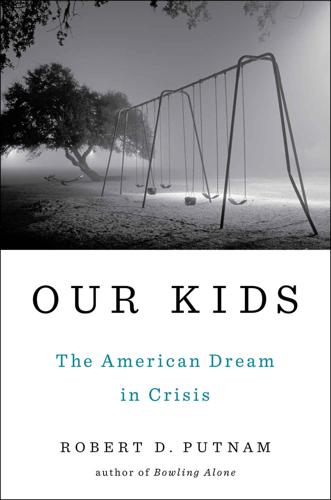
Our Kids: The American Dream in Crisis
by
Robert D. Putnam
Published 10 Mar 2015
Other recent overviews of the vast literature on the effects of parental engagement include William H. Jeynes, “The Relationship Between Parental Involvement and Urban Secondary School Student Academic Achievement: A Meta-Analysis,” Urban Education 42 (January 2007): 82–110; Nancy E. Hill and Diana F. Tyson, “Parental Involvement in Middle School: A Meta-Analytic Assessment of the Strategies That Promote Achievement,” Developmental Psychology 45 (May 2009): 740–63; William Jeynes, “A Meta-Analysis of the Efficacy of Different Types of Parental Involvement Programs for Urban Students,” Urban Education 47 (July 2004): 706–42; Frances L. Van Voorhis, Michelle F.
…
Logan, Elisabeta Minca, and Sinem Adar, “The Geography of Inequality: Why Separate Means Unequal in American Public Schools,” Sociology of Education 85 (July 2012): 287–301; and for a comprehensive recent overview, Gregory J. Palardy, “High School Socioeconomic Segregation and Student Attainment,” American Educational Research Journal 50 (August 2013): 714–54. Reyn van Ewijk and Peter Sleegers, “The Effect of Peer Socioeconomic Status on Student Achievement: A Meta-Analysis,” Educational Research Review 5 (June 2010): 134–50, found that the effect of the socioeconomic composition of a child’s classroom on his or her test scores is twice as large as the effect of the socioeconomic composition of his or her school. This entire line of research was stimulated in the 1960s by concerns about the effects of racial segregation, and in that era class segregation heavily overlapped with racial segregation.
…
Ferguson, “Pathways to Prosperity: Meeting the Challenge of Preparing Young Americans for the 21st Century” (report for the Pathways to Prosperity project, Harvard School of Graduate Education, 2011); Ben Olinsky and Sarah Ayres, “Training for Success: A Policy to Expand Apprenticeships in the United States” (report for the Center for American Progress, December 2013), accessed October 12, 2014, http://cdn.americanprogress.org/wp-content/uploads/2013/11/apprenticeship_report.pdf; Robert I. Lerman, “Expanding Apprenticeship Opportunities in the United States” (report for the Hamilton Project, Brookings Institution, 2014); David Card, Jochen Kluve and Andrea Weber, “Active Labour Market Policy Evaluations: A Meta-Analysis,” Economic Journal 120 (November 2010): F452–F477; Katherine S. Newman and Hella Winston, Learning to Labor in the 21st Century: Building the Next Generation of Skilled Workers (New York: Metropolitan, forthcoming 2015). YouthBuild has shown positive results in nonexperimental research; see, for example, Wally Abrazaldo et al., “Evaluation of the YouthBuild Youth Offender Grants: Final Report,” Social Policy Research Associates (May 2009).
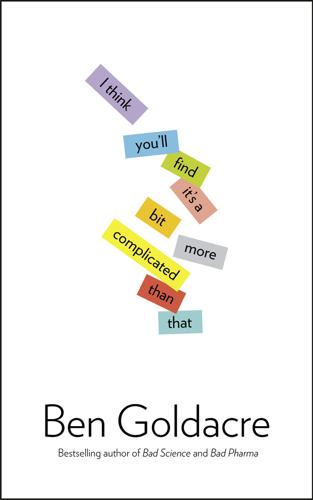
I Think You'll Find It's a Bit More Complicated Than That
by
Ben Goldacre
Published 22 Oct 2014
This is in many ways an updated version of Rolleston’s rationale from 1926. However, the policy of prescribing methadone may be criticised from many different angles, and to the best of my knowledge these criticisms have never been comprehensively considered in one article. Certainly there is no convenient meta-analysis of methadone programmes. I shall consider each criticism in detail, and later compare the use of methadone to the maintenance prescription of heroin, which still continues on a small scale in the UK, and has recently been reassessed in Switzerland and Australia. Firstly, it is important to recognise that methadone is not a pleasant drug to take, causing nausea and vomiting, weight gain, profuse sweating, dysphoria and tooth decay.
…
It’s not a perfect study – I don’t like subgroup analyses for a start, and it only followed up participants for seven days – but it’s not alone. An earlier study from 2009 randomly assigned a hundred students either to a control group or to a couple of forms of imagery, picturing themselves choosing a healthy snack over an unhealthy one. The imagery group went on to have more healthy snacks. Meanwhile, a meta-analysis from 2006 collectively analyses the results of ninety-four studies and finds that ‘implementation intentions’ (‘If I am in situation X, I will do Y’) had a positive effect overall on goal achievement. So there’s probably something there, and this research tells us some interesting things about science.
…
ned=uk&hl=en&ncl=d0-fIEkn R_72tGMiU0uORy7OgGBTM&cf=all Don’t talk about that: http://www.badscience.net/2007/04/this-ageing-breadhead-guy-is-totally-angry-with-me/ pharmaceutical companies before it: http://www.badscience.net/2008/04/cliff-richard-gloria-hunniford-carole-caplin-the-60bn-food-supplement-industry-and-the-quantum-xrroid-dude-refute-a-cochrane-meta-analysis/ example from its press release: http://www.soilassociation.org/News/NewsItem/tabid/91/smid/463/ArticleID/97/reftab/57/t/Soil-Association-response-to-the-Food-Standards-Agency-s-Organic-Review/Default.aspx www.qlif.org: http://www.qlif.org/ list of 120 papers: http://orgprints.org/view/projects/eu_qlif.html immune parameters in rat: http://orgprints.org/12653/ Salmonella Infection Level: http://orgprints.org/13728/ As Far as I Understand Thinktanks … As Far as I: http://www.badscience.net/2008/06/707/ Meaningful Debates Need Clear Information Meaningful Debates: http://www.badscience.net/2007/10/557/ in the Independent: http://news.independent.co.uk/uk/politics/article3084306.ece and the Telegraph: http://www.telegraph.co.uk/news/main.jhtml?
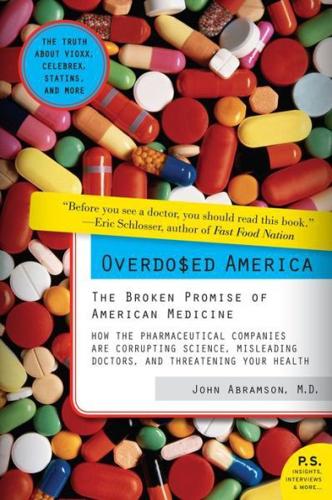
Overdosed America: The Broken Promise of American Medicine
by
John Abramson
Published 20 Sep 2004
The patients in these studies all had heart attacks, but ejection fraction or the incidence of congestive heart failure is not reported, precluding direct comparison with the defibrillator study. K. Wilson, N. Gibson, A. Willan, and D. Cook, “Effect of Smoking Cessation on Mortality After Myocardial Infarction: Meta-Analysis of Cohort Studies,” Archives of Internal Medicine 160:939–944, 2000. 101 the acid-blocking drug Prilosec: Organic molecules of identical chemical composition can occur in two forms that are mirror images of each other. Prilosec is a mix of both forms. Nexium is composed of only one form. 102 “head-to-head” studies between Prilosec and Nexium: J.
…
II-32. 140 The table mentioned cites nine references: NCEP Full Report, p. II-5. 141 average age was 51: The Upjohn study was the only one that was difficult to find, having been completed in 1978, nine years before the first statin came on the market. S. B. Manuck, A. B. Mendelsohn, J. R. Kaplan, and S. H. Belle, “Cholesterol Reduction and Non-Illness Mortality: Meta-Analysis of Randomized Clinical Trials,” British Medical Journal 322:11–15, 2001. 141 “The relationship between serum cholesterol: NCEP Full Report, p. II-34. 141 total cholesterol is not significantly related to mortality: Framingham Heart Study reported in 1993. See Kronmal, Cain, Ye, and Omenn, op. cit. 141 not even an increase in the risk of heart attack: B.
…
Murphy, et al., “Pravastatin in Elderly Individual at Risk of Vascular Disease (PROSPER): A Randomized Controlled Trial,” The Lancet 360:1623–1630, 2002. 145 “There is no evidence: NCEP Full Report p. I–44. 145 “Carcinogenicity of Lipid-Lowering Drugs”: Newman T. B., Hulley S. B., “Carcinogenicity of Lipid-Lowering Drugs,” Journal of the American Medical Association, 275:55-60, 1996. 146 could take many years: Bjerre L.M., LeLorier J., “Do Statins Cause Cancer? A Meta-Analysis of Large Randomized Clinical Trials,” American Journal of Medicine,: 110:716–723, 2001. 147 Dr. Scott Grundy: Quoted in Thomas M. Burton and Chris Adams, “New Government Cholesterol Standards Would Triple Number of Prescriptions,” Wall Street Journal, May 16, 2001. 147 Dr. Walter Willett: Naomi Aoki, “Drug Makers Influence Pondered Eye on U.S.
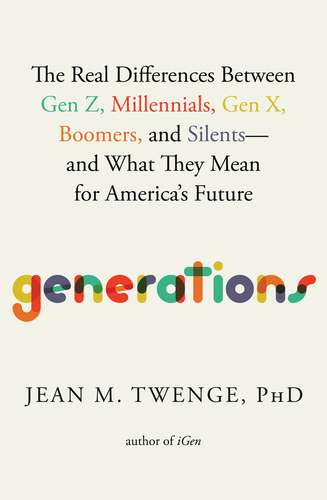
Generations: The Real Differences Between Gen Z, Millennials, Gen X, Boomers, and Silents—and What They Mean for America's Future
by
Jean M. Twenge
Published 25 Apr 2023
This was also useful because yearly data allowed a more precise look at exactly when narcissism peaked and when it fell. Both campuses had trends similar to the nationwide data: Narcissism rose until 2008, and then fell like Lehman Brothers afterward (see Figure 5.11). Figure 5.10: Narcissistic Personality Inventory scores of U.S. college students, 1982–2016 Source: National meta-analysis, Twenge et al. (2021) Notes: Millennials dominate the age group in the shaded years (particularly between 1999 and 2013). Scores range between 0 and 40. Figure 5.11: Narcissistic Personality Inventory scores of University of South Alabama and University of California, Davis, college students, 1994–2016 Source: Within-campus samples, Twenge et al. (2021) Notes: Millennials dominate the age group in the shaded years.
…
the first item that sold on the site was a broken laser pointer: Marco della Cava, “eBay’s 20th Made Possible by Canadian Retiree,” USA Today, September 11, 2015. for Gen Xers “There is only one question”: Susan Gregory Thomas, “The Divorce Generation,” Wall Street Journal, July 9, 2011. Boomers started having sex in college: Brooke E. Wells and Jean M. Twenge, “Changes in Young People’s Sexual Behavior and Attitudes, 1943–1999: A Cross-Temporal Meta-analysis,” Review of General Psychology 9, no. 3 (September 2005): 249–61. Women’s median age at reproductive milestones, 1960–2021: Lawrence B. Finer and Jesse M. Philbin, “Trends in Ages at Key Reproductive Transitions in the United States, 1951–2010,” Women’s Health Issues 24, no. 3 (May–June 2014): 271–79.
…
Manning and Bart Stykes, Twenty-Five Years of Change in Cohabitation in the U.S., 1987–2013 (Bowling Green, OH: National Center for Family & Marriage Research, 2015). As a graduate student, I gathered the scores of 65,965 college students: Jean M. Twenge and W. Keith Campbell, “Age and Birth Cohort Differences in Self-Esteem: A Cross-Temporal Meta-analysis,” Personality and Social Psychology Review 5, no. 4 (November 2001): 321–44. In the early 1950s, only 12% of teens agreed: Cassandra Rutledge Newsom, Robert P. Archer, Susan Trumbetta, and Irving I. Gottesman, “Changes in Adolescent Response Patterns on the MMPI/MMPI-A across Four Decades,” Journal of Personality Assessment 81, no. 1 (2003): 74–84.

The Survival of the City: Human Flourishing in an Age of Isolation
by
Edward Glaeser
and
David Cutler
Published 14 Sep 2021
However, the public cost of imprisoning a person is large, about $35,000 per person per year, and that’s not including the more onerous burden borne by the prisoner. As a result, when they compare costs and benefits, they find that every crime avoided costs almost $150,000 in additional jail spending. Other estimates suggest a social benefit of $34,000 per crime avoided. A meta-analysis of prison sentencing studies (funded by Open Philanthropy, a foundation dedicated to prison reform) “calls even those mild estimates into question.” The deterrence impact of longer sentences seems only moderately beneficial at best. The case is stronger for the connection between incapacitation and crime.
…
The police department claimed that Operation Impact was “integral” to their “unprecedented achievements.” In practice, stop and frisk meant millions of body searches of unarmed African Americans and Latinos. The scientific literature generally agrees that targeting police resources toward high-crime areas reduces crime. A recent meta-analysis concludes that “hot spots policing is an effective crime prevention strategy.” A study conducted by John MacDonald of the University of Pennsylvania, Jeffrey Fagan of Columbia, and Amanda Geller of NYU finds that “impact zones were significantly associated with reductions in total reported crimes, assaults, burglaries, drug violations, misdemeanor crimes, felony property crimes, robberies, and felony violent crimes,” as well as “increases in total reported arrests, arrests for burglary, arrests for weapons, arrests for misdemeanor crimes, and arrests for property felony crimes.”
…
Hispanics were at higher risk: US Centers for Disease Control and Prevention, “Risk for COVID-19 Infection, Hospitalization, and Death by Race/Ethnicity.” people of Asian and Caribbean heritage: Platt and Warwick, Are Some Ethnic Groups More Vulnerable to COVID-19 Than Others? not all of which: Sze et al., “Ethnicity and Clinical Outcomes in COVID-19: A Systematic Review and Meta-analysis.” in Massachusetts in 2020: Commonwealth of Massachusetts. “Weekly COVID-19 Public Health Report.” Close living quarters: “More Than One-Third of U.S. Coronavirus Deaths Are Linked to Nursing Homes,” The New York Times. Health-related choices: American Medical Association, Issue Brief: Reports of Increases in Opioid- and Other Drug-related Overdose and Other Concerns during COVID Pandemic.
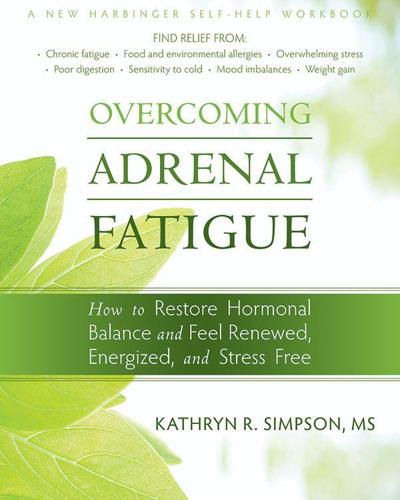
Overcoming Adrenal Fatigue: How to Restore Hormonal Balance and Feel Renewed, Energized, and Stress Free
by
Kathryn Simpson
Published 1 May 2011
Zalinkevicius, and A. J. Prange. 1999. Effects of thyroxine as compared with thyroxine plus triiodothyronine in patients with hypothyroidism. New England Journal of Medicine 340(6):424-429. Burke, H. M., M. C. Davis, C. Otte, and D. C. Mohr. 2005. Depression and cortisol responses to psychological stress: A meta-analysis. Psychoneuroendocrinology 30(9):846-856. Burton, J. M., S. Kimball, R. Vieth, et al. 2010. A phase I/II dose-escalation trial of vitamin D3 and calcium in multiple sclerosis. Neurology 74(23):1852-1859. Catena, C., G. Colussi, E. Nadalini, et al. 2008. Cardiovascular outcomes in patients with primary aldosteronism after treatment.
…
Journal of Clinical Chemistry and Clinical Biochemistry 22(11):717-721. Gordon, G. G., and A. L. Southren. 1977. Thyroid hormone effects on steroid hormone metabolism. Bulletin of the New York Academy of Medicine 53(3):241-259. Gorham, E. D., C. F. Garland, F. C. Garland, et al. 2007. Optimal vitamin D status for colorectal cancer prevention: A quantitative meta analysis. American Journal of Preventative Medicine 32(3):210-216. Gotoh, S., N. Nishimura, O. Takahashi, et al. 2008. Adrenal function in patients with community-acquired pneumonia. European Respiratory Journal 31(6):1268-1273. Grootveld, M., C. Silwood, P. Claxson, B. Serra, and M. Viana. 2001. Health effects of oxidized heated oils.

The Patient Will See You Now: The Future of Medicine Is in Your Hands
by
Eric Topol
Published 6 Jan 2015
Bloomfield et al., “Screening Pelvic Examinations in Asymptomatic, Average-Risk Adult Women: An Evidence Report for a Clinical Practice Guideline from the American College of Physicians,” Annals of Internal Medicine 161 (2014): 46–53. 56. L. T. Krogsbøll et al., “General Health Checks in Adults for Reducing Morbidity and Mortality from Disease: Cochrane Systematic Review and Meta-Analysis,” British Medical Journal 345 (2012): e7191. 57. C. Lane, “The NIMH Withdraws Support for DSM-5,” Psychology Today, May 4, 2013, http://www.psychologytoday.com/blog/side-effects/201305/the-nimh-withdraws-support-dsm-5. 58. D. W. Bianchi et al., “DNA Sequencing versus Standard Prenatal Aneuploidy Screening,” New England Journal of Medicine 370, no. 9 (2014): 799–808. 59.
…
M. Rao and D. C. Levin, “The Overuse of Diagnostic Imaging and the Choosing Wisely Initiative,” Annals of Internal Medicine 157, no. 8 (2012): 574–577. 71. L. T. Krogsbøll et al., “General Health Checks in Adults for Reducing Morbidity and Mortality from Disease: Cochrane Systematic Review and Meta-Analysis,” British Medical Journal 345 (2012): e7191. 72. S. R. Johnson, “Reducing Wasteful Care,” Modern Healthcare, August 24, 2013, http://www.modernhealthcare.com/article/20130824/MAGAZINE/308249974. 73. L. M. Schwartz and S. Woloshin, “Endless Screenings Don’t Bring Everlasting Health,” New York Times, April 17, 2012, http://www.nytimes.com/2012/04/17/health/views/endless-screenings-dont-bring-everlasting-health.html. 74.
…
Mannino, “Do You Really Need an Annual Physical?,” Fox Business, August 24, 2012, http://www.foxbusiness.com/personal-finance/2012/08/24/do-really-need-annual-physical/. 60. L. T. Krogsbøll et al., “General Health Checks in Adults for Reducing Morbidity and Mortality from Disease: Cochrane Systematic Review and Meta-analysis,” British Medical Journal 345 (2012): e7191. 61. E. Klein, “The Two Most Important Numbers in American Health Care,” Washington Post, September 19, 2013, http://www.washingtonpost.com/blogs/wonkblog/wp/2013/09/19/the-two-most-important-numbers-in-american-health-care/?print=1. 62. S. Lohr, “Salesforce Takes Its Cloud Model to Health Care,” New York Times, June 26, 2014, http://bits.blogs.nytimes.com/2014/06/26/salesforce-takes-its-cloud-model-to-health-care/. 63.
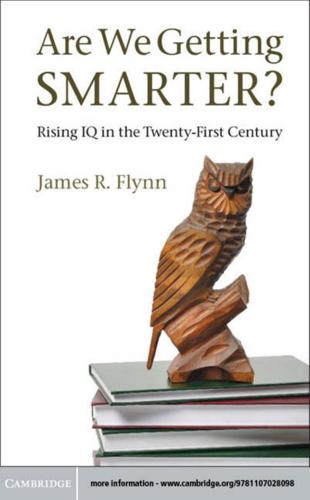
Are We Getting Smarter?: Rising IQ in the Twenty-First Century
by
James R. Flynn
Published 5 Sep 2012
School attendance from the Argentine census. Unpublished. In re Mathis, 483 F.3d 395 (5th Cir.) April 2, 2007. In re Salazar, 443 F.3d 430, 433 (5th Cir.) March 17, 2006. Irwing, P., & Lynn, R. (2005). Sex differences in means and variability on the Progressive Matrices in university students: A meta-analysis. British Journal of Psychology, 96: 505–524. Japan Reference (2011). The origins of the Japanese people. Accessed August 26, 2011. Jensen, A. R. (1973). Educability and Group Differences. London: Methuen. (1980). Bias in Mental Testing. London: Methuen. (1998). The g Factor: The Science of Mental Ability.
…
A study of intelligence in Estonia. Psychological Reports, 91: 1022–1026. 296 References (2002b). Sex differences on the Progressive Matrices among adolescents: Some data for Estonia. Personality and Individual Differences, 34: 669–679. Lynn, R., & Irwing, P. (2004). Sex differences on the Progressive Matrices: A meta-analysis. Intelligence, 32: 481–498. Lynn, R., & Kazlauskaite, V. (2002). A study of IQ in Lithuania. Psychological Reports, 95: 611–612. Lynn, R., & Vanhanen, T. (2002). IQ and the Wealth of Nations. Westport, CT: Praeger. (2006). IQ and Global Inequality. Augusta, GA: Washington Summit. Mackintosh, N.
…
Personality and Individual Differences, 13: 149–160. People v. Superior Court of Tulare County, 21 Cal.Rptr.3d 542 (Cal. Ct.App.) December 6, 2004. People v. Superior Court of Tulare County, 155 P.3d 259 (Cal.) April 12, 2007. Pietschnig, J., Voracek, M., & Formann, A. K. (2010). Pervasiveness of the IQ rise: A cross-temporal meta-analysis. PLoS ONE, 5: e14406. PISA (2006). Science Competencies for the Modern World. Paris: OECD – Programme for International Science Assessment. Raven, J. (1986). Manual for Raven’s Progressive Matrices and Vocabulary Scales (research supplement No. 3). London: H. K. Lewis. Raven, J., & Court, J. H. (1989).
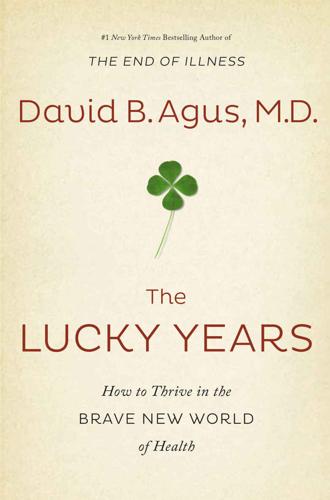
The Lucky Years: How to Thrive in the Brave New World of Health
by
David B. Agus
Published 29 Dec 2015
Benjamin Radford, “Forty Percent of Overweight Women Don’t Know It,” Discovery News, December 10, 2010, http://news.discovery.com/human/psychology/40-of-overweight-women-dont-know-it-101210.htm, accessed August 7, 2015. 5. A. Lundahl, K. M. Kidwell, and T. D. Nelson, “Parental Underestimates of Child Weight: A Meta-analysis,” Pediatrics 133, no. 3 (March 2014): E689–703, doi:10.1542/peds.2013-2690, Epub February 2, 2014. See also H. Y. Chen et al., “Personal and Parental Weight Misperception and Self-Reported Attempted Weight Loss in US Children and Adolescents, National Health and Nutrition Examination Survey, 2007–2008 and 2009–2010,” Preventing Chronic Disease 11 (July 31, 2014): E132, doi:10.5888/pcd11.140123.
…
Nagao et al., “Meat Consumption in Relation to Mortality from Cardiovascular Disease Among Japanese Men and Women,” European Journal of Clinical Nutrition 66, no. 6 (June 2012): 687–93. doi:10.1038/ejcn.2012.6, Epub February 15, 2012. 12. R. Micha, S. K. Wallace, and D. Mozaffarian, “Red and Processed Meat Consumption and Risk of Incident Coronary Heart Disease, Stroke, and Diabetes Mellitus: A Systematic Review and Meta-analysis,” Circulation 121, no. 21 (June 1, 2010): 2271–83, doi:10.1161/CIRCULATIONAHA.109.924977, Epub May 17, 2010. 13. The debate about the risk factors related to the consumption of red meat was well explained by Patrick J. Skerrett, “Study Urges Moderation in Red Meat Intake,” Harvard Health (blog), March 13, 2012, www.health.harvard.edu/blog/study-urges-moderation-in-red-meat-intake-201203134490. 14.
…
Jeffrey Beall, “List of Predatory Publishers,” Scholarly Open Access blog, last modified January 2, 2014, http://scholarlyoa.com/2014/01/02/list-of-predatory-publishers-2014/. 23. P. Autier, “Vitamin D Status and Ill Health: A Systematic Review,” Lancet Diabetes Endocrinology 2, no. 1 (January 2014): 76–89, doi:10.1016/S2213-8587(13)70165-7, Epub December 6, 2013. 24. I. R. Reid, “Effects of Vitamin D Supplements on Bone Mineral Density: A Systematic Review and Meta-Analysis,” Lancet 383, no. 9912 (January 11, 2014): 146–55, doi:10.1016/S0140-6736(13)61647-5, Epub October 11, 2013. 25. E. S. LeBlanc et al., “Screening for Vitamin D Deficiency: Systematic Review for the U.S. Preventive Services Task Force,” Annals of Internal Medicine 162, no. 2 (January 20, 2015): 109–22, doi:10.7326/M14-1659. 26.
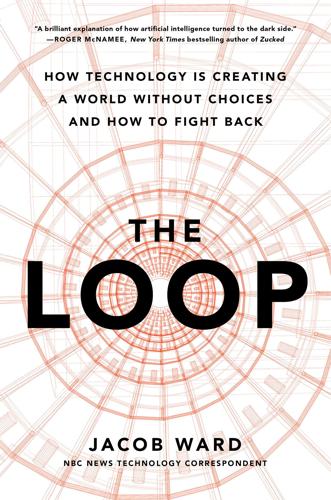
The Loop: How Technology Is Creating a World Without Choices and How to Fight Back
by
Jacob Ward
Published 25 Jan 2022
In the 1990s, the social psychologist Jonathan Haidt established the theory of “social intuition,” which posits that people develop their moral intuitions about the world almost automatically, and then essentially reverse engineer a system of reasoning that supports those moral intuitions. His theory is that any conscious weighing of morality we do usually winds up being used to justify the intuitions we already had. We’re also self-congratulatory. In 2004, a meta-analysis of more than 266 separate studies firmly established what researchers call the “self-serving bias.”1 When something goes my way, my brain tells me it’s because of who I am. When something doesn’t go my way, my brain tells me it’s because of some external factor beyond my control. (In people with depression and anxiety disorders, very often this sort of attribution is reversed—a terrible curse.)
…
Todorov, A., Mandisodza, A.N., Goren, A., Hall, C.C. (2005). Inferences of competence from faces predict election outcomes. Science, Jun 10; 308(5728):1623–1626. doi: 10.1126/science.1110589. PMID: 15947187. CHAPTER 4: CLUSTERS 1. Terrizzi, J.A., Jr., Shook, N.J., McDaniel, M.A. (2013). The behavioral immune system and social conservatism: A meta-analysis. Evolution and Human Behavior, 34(2):99–108, https://linkinghub.elsevier.com/retrieve/pii/S109051381200116X 2. Young, J.L., Hegarty, P. (2019). Reasonable men: Sexual harassment and norms of conduct in social psychology. Feminism & Psychology, 29(4):453–474. doi: 10.1177/0959353519855746 3. Gómez, Á., López-Rodríguez, L., Sheikh, H., et al. (2017).
…
Performative prediction. ArXiv, https://arxiv.org/abs/2002.06673 7. Baude, A., Pearson, J., Drapeau, S. (2016). Child adjustment in joint physical custody versus sole custody: A meta-analytic review. Journal of Divorce Remarriage, 57(5):338–360. doi: 10.1080/10502556.2016.1185203 8. Bauserman, R. (2012). A meta-analysis of parental satisfaction, adjustment, and conflict in joint custody and sole custody following divorce. Journal of Divorce Remarriage, 53:464–488. doi: 10.1080/105 02556.2012.682901 9. Hirsch, J. (2019, September 2). Your boss is going to start using AI to monitor you—and labor laws aren’t ready.
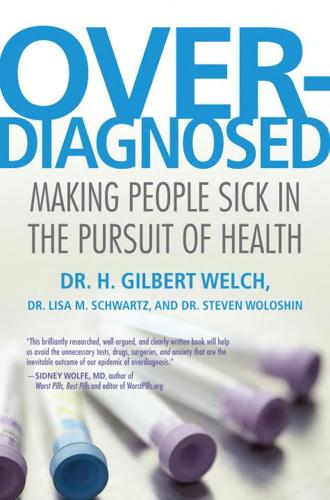
Overdiagnosed: Making People Sick in the Pursuit of Health
by
H. Gilbert Welch
,
Lisa M. Schwartz
and
Steven Woloshin
Published 18 Jan 2011
If I accounted for this it would only increase the estimate of overdiagnosis.)[back] A. Ghidini, “Amniocentesis: Technique and Complications,” in D. S. Basow, ed., UpToDate (Waltham, MA: UpToDate, 2009).[back] R. Smith-Bindman, W. Hosmer, V. A. Feldstein, et al., “Second-trimester Ultrasound to Detect Fetuses with Down Syndrome: A Meta-analysis,” Journal of the American Medical Association 285 (2001): 1044–55.[back] Natalie Angier, “Ultrasound and Fury: One Mother’s Ordeal,” New York Times, November 26, 1996, http://query.nytimes.com/gst/fullpage.html?res=E07E2D9103DF935A15752C1A960958260&sec=&spon=.[back] See http://www.cochrane.org/reviews/en/ab001451.html and http://www.cochrane.org/reviews/en/ab000182.html.
…
So while the penetrance of the so-called severe genotypes is virtually 100 percent for pancreatic insufficiency (which inhibits digestion), penetrance can be lower for other problems, such as meconium ileus (or intestinal obstruction), liver disease, and diabetes. See R. Dorfman and J. Zielenski, “Genotype-Phenotype Correlations in Cystic Fibrosis,” in A. Bush, E. W. F. W. Alton, J. C. Davies, et al., eds., Cystic Fibrosis in the 21st Century (Basel, Switzerland: S. Karger, AG, 2006), 61–68.[back] See S. Chen and G. Parmigiani, “Meta-analysis of BRCA1 and BRCA2 Penetrance,” Journal of Clinical Oncology 25 (2007): 1329–33. [back] See J. Peto, N. Collins, R. Barfoot, et al., “Prevalence of BRCA1 and BRCA2 Gene Mutations in Patients with Early-onset Breast Cancer,” Journal of the National Cancer Institute 91 (1999): 943–49.[back] There are a number of risk factors that have been associated with increased breast cancer risk, including older age, family history, early age of menarche, no children, and late age of first childbirth.
…
Conveying the underlying absolute risks is more complex: it requires more numbers (because there are two absolute risks underlying each relative risk); these numbers are often very small (decimals are often needed, or the numbers have to be expressed per 1,000 or per 10,000 people); and a complete statement requires a time frame (for example, per year or over ten years).[back] As you might imagine, I’m rounding here to make the math easy. The relative risk reduction estimated by the U.S. Preventive Services Task Force in its meta-analysis of all nine trials is 16 percent. See “Effectiveness of Mammography in Reducing Breast Cancer Mortality” at http://www.ahrq.gov/clinic/3rduspstf/breastcancer/bcscrnsum1.htm#results. [back] Again, I’m rounding. The actual estimate by the U.S. Preventive Services Task Force is that 1,224 women need to be screened for an average of fourteen years for one to benefit.
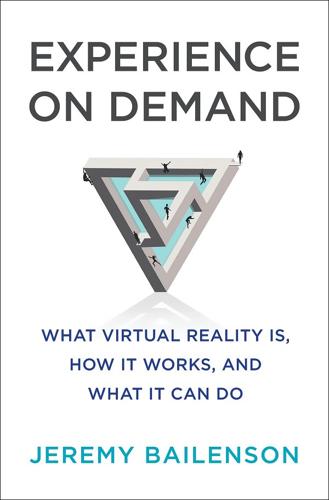
Experience on Demand: What Virtual Reality Is, How It Works, and What It Can Do
by
Jeremy Bailenson
Published 30 Jan 2018
In the earthquake demo, we were tracking body position in X, Y, Z space, and the subject’s head rotation. In other words, if he walked forward a step (positive on Z), we measured that displacement in his body position. If he looked left (negative on yaw), we measured this rotation. We recently published what is called a meta-analysis—a study that combines the summary data from every paper we could find that has ever been published (and many that haven’t) in an area. The meta-analysis was designed to understand the relationship to all of the features that make VR special—the affordances—and psychological presence. We wanted to understand what the relative benefits of technological immersion were on psychological engagement.
…
Josh Weinfuss, “Cardinals’ use of virtual reality technology yields record season,” ESPN, January 13, 2016, http://www.espn.com/blog/nflnation/post/_/id/195755/cardinals-use-of-virtual-reality-technology-yields-record-season. 5. M. Lombard and T. Ditton, “At the Heart of it All: The Concept of Presence,” Journal of Computer-Mediated Communication 3, no. 2 (1997). 6. James J. Cummings and Jeremy N. Bailenson, “How Immersive Is Enough? A Meta-Analysis of the Effect of Immersive Technology on User Presence,” Media Psychology 19 (2016): 1–38. 7. “Link, Edwin Albert,” The National Aviation Hall of Fame, http://www.nationalaviation.org/our-enshrinees/link-edwin/. 8. National Academy of Engineering, Memorial Tributes: National Academy of Engineering, Volume 2 (Washington, DC: National Academy Press, 1984), 174. 9.

Power, for All: How It Really Works and Why It's Everyone's Business
by
Julie Battilana
and
Tiziana Casciaro
Published 30 Aug 2021
Lee, “ ‘I’ Value Freedom, but ‘We’ Value Relationships: Self-Construal Priming Mirrors Cultural Differences in Judgement,” Psychological Science 10, no. 4 (1999): 321–6. 40 For an overview of influential psychological models of ego-development, from Jean Piaget’s to Lawrence Kolhberg’s and Robert Kegan’s, see Lene Rachel Anderson and Tomas Björkman, The Nordic Secret: A European Story of Beauty and Freedom (Stockholm: Fri Tanke, 2017). 41 Matthieu Ricard, Altruism: The Power of Compassion to Change Yourself and the World, translated ed. (New York: Little, Brown & Co., 2015); Thich Nhat Hanh, The Art of Power (New York: HarperCollins, 2009). 42 Analayo, Satipatthana Meditation: A Practice Guide (Cambridge, UK: Windhorse Publications, 2018). 43 See Peter Sedlmeier et al., “The Psychological Effects of Meditation: A Meta-Analysis,” Psychological Bulletin 138, no. 6 (2012): 1139–71. 44 Martin Luther King Jr., “A Christmas Sermon on Peace,” December 24, 1967. 45 Cem Çakmaklı, Selva Demiralp, Ṣebnem Kalemli-Özcan, Sevcan Yeşiltaş, and Muhammed A. Yıldırım, “The Economic Case for Global Vaccinations: An Epidemiological Model with International Production Networks,” w28395, National Bureau of Economic Research, January 2021. 46 John Vidal and Ensia, “Destroyed Habitat Creates the Perfect Conditions for Coronavirus to Emerge,” Scientific American, March 18, 2020, https://www.scientificamerican.com/article/destroyed-habitat-creates-the-perfect-conditions-for-coronavirus-to-emerge/. 47 Karin Brulliard, “The Next Pandemic Is Already Coming, Unless Humans Change How We Interact with Wildlife, Scientists Say,” Washington Post, April 3, 2020, https://www.washingtonpost.com/science/2020/04/03/coronavirus-wildlife-environment/. 48 Mary Beard, The Roman Triumph (Cambridge, MA: Belknap Press, 2009). 49 While this image has long been a staple in popular consciousness, the evidence for it is less clear, and contradictions between different sources and interpretations abound.
…
Antoine-Claire Thibaudeau, Mémoires sur le Consulat 1799 à 1804 (Paris: Chez Ponthieu et Cie, 1827), 83–84. 31 Aruna Ranganathan, “The Artisan and His Audience: Identification with Work and Price Setting in a Handicraft Cluster in Southern India,” Administrative Science Quarterly 63, no. 3 (2018): 637–67. 32 For an overview of the positive association between socioeconomic status and self-esteem, see Jean Twenge and W. Keith Campbell, “Self-Esteem and Socioeconomic Status: A Meta-Analytic Review,” Personality and Social Psychology Review 6, no. 1 (February 2002): 59–71. The meta-analysis shows that the positive correlation between socioeconomic status and self-esteem is stronger for occupation and education than for income. Social rank therefore feeds our sense of worth more than economic status. 33 While this theory on the relationship between foot-binding and suitability for marriage is popular, it is not without its skeptics.
…
Dawes, “The Robust Beauty of Improper Linear Models in Decision-Making,” American Psychologist 34, no. 7 (1979): 571–82. 23 Batya Friedman and Helen Nissenbaum, “Bias in Computer Systems,” ACM Transactions on Information Systems 14, no. 3 (1996): 330–47; also discussed in Agrawal, Gans, and Goldfarb, Prediction Machines, and in Marco Ianstiti and Karim Lakhani, Competing in the Age of AI: Strategy and Leadership When Algorithms and Networks Run the World (Boston: Harvard Business Review Press, 2020). 24 Tom Simonite, “The Best Algorithms Still Struggle to Recognize Black Faces,” Wired, Conde Nast, July 22, 2019, https://www.wired.com/story/best-algorithms-struggle-recognize-black-faces-equally/. For more on algorithmic recognition bias see Joy Buolamwini and Timnit Gebru, “Gender Shades: Intersectional Accuracy Disparities in Commercial Gender Classification,” in Conference on Fairness, Accountability and Transparency, PMLR (2018): 77–91; Yui Man Lui et al., “A Meta-Analysis of Face Recognition Covariates,” in 2009 IEEE 3rd International Conference on Biometrics: Theory, Applications, and Systems (2009): 1–8. 25 Joy Buolamwini, “How I’m Fighting Bias in Algorithms,” TEDxBeaconStreet, November 2016, https://www.ted.com/talks/joy_buolamwini_how_i_m_fighting_bias_in_algorithms. 26 Virginia Eubanks, Automating Inequality: How High-Tech Tools Profile, Police, and Punish the Poor (New York: Picador, 2019); Ruha Benjamin, Race After Technology: Abolitionist Tools for the New Jim Code (Cambridge, MA: Polity, 2019). 27 Cathy O’Neil, Weapons of Math Destruction: How Big Data Increases Inequality and Threatens Democracy (Westminster, UK: Penguin Books, 2017); Safiya Umoja Noble, Algorithms of Oppression: How Search Engines Reinforce Racism (New York: New York University Press, 2018). 28 Cathy O’Neil, “The Era of Blind Faith in Big Data Must End,” TED, April 2017, https://www.ted.com/talks/cathy_o_neil_the_era_of_blind_faith_in_big_data_must_end. 29 Emily Chang, Brotopia: Breaking up the Boys’ Club of Silicon Valley (New York: Portfolio/Penguin, 2019). 30 In the eighteenth century, English philosopher Jeremy Bentham designed an influential prison system, the “panopticon.”
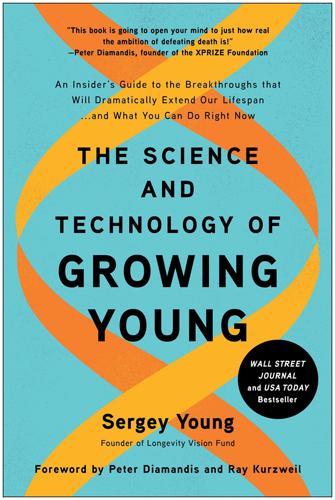
The Science and Technology of Growing Young: An Insider's Guide to the Breakthroughs That Will Dramatically Extend Our Lifespan . . . And What You Can Do Right Now
by
Sergey Young
Published 23 Aug 2021
Ayas et al., “A Prospective Study of Sleep Duration and Coronary Heart Disease in Women,” Archives of Internal Medicine 163, no. 2 (2003), https://doi.org/10.1001/archinte.163.2.205; European Society of Cardiology, “Sleeping 5 hours or less a night associated with doubled risk of cardiovascular disease,” EurekAlert, last modified August 26, 2018, https://www.eurekalert.org/pub_releases/2018-08/esoc-sfh082318.php; European Society of Cardiology, “Short and fragmented sleep linked to hardened arteries,” EurekAlert, last modified August 26, 2018, https://www.eurekalert.org/pub_releases/2018-08/esoc-saf082318.php; Francesco P. Cappuccio et al., “Meta-analysis of short sleep duration and obesity in children and adults,” Sleep 31, no. 5 (2008), https://doi.org/10.1093/sleep/31.5.619. 39Matt Walker, “Sleep is your superpower,” TED, last modified June 3, 2019, https://www.youtube.com/watch?v=5MuIMqhT8DM; Michael Irwin et al., “Partial sleep deprivation reduces natural killer cell activity in humans,” Psychosomatic medicine 56, no. 6 (1994), https://doi.org/10.1097/00006842-199411000-00004; Institut national de la santé et de la recherche médicale, “Night work may put women’s health at risk,” ScienceDaily, last modified June 19, 2012, https://www.sciencedaily.com/releases/2012/06/120619112907.htm; Walker, Why we sleep, 148. 40Francesco P.
…
v=5MuIMqhT8DM; Michael Irwin et al., “Partial sleep deprivation reduces natural killer cell activity in humans,” Psychosomatic medicine 56, no. 6 (1994), https://doi.org/10.1097/00006842-199411000-00004; Institut national de la santé et de la recherche médicale, “Night work may put women’s health at risk,” ScienceDaily, last modified June 19, 2012, https://www.sciencedaily.com/releases/2012/06/120619112907.htm; Walker, Why we sleep, 148. 40Francesco P. Cappuccio et al., “Sleep duration and all-cause mortality: a systematic review and meta-analysis of prospective studies,” Sleep 33, no. 5 (2010), https://doi.org/10.1093/sleep/33.5.585. 41Bob Morris, “Arianna Huffington’s Sleep Revolution Starts at Home,” The New York Times, last modified April 28, 2016, https://www.nytimes.com/2016/05/01/realestate/arianna-huffingtons-sleep-revolution-starts-at-home.html; Marie Kondo, “The Joy of Sleep, With Arianna Huffington,” KonMari, accessed July 28, 2020, https://konmari.com/arianna-huffington-sleep/. 42Erin Wigger, “The Whitehall Study,” Unhealthy Work, last modified June 22, 2011, https://unhealthywork.org/classic-studies/the-whitehall-study/; Vicki Brower, “Mind-body research moves towards the mainstream,” EMBO reports 7, no. 4 (2006), https://doi.org/10.1038/sj.embor.7400671. 43“What is Cortisol?
…
,” Harvard Health Publishing, last modified June, 2017, https://www.health.harvard.edu/mental-health/can-relationships-boost-longevity-and-well-being. 50Darcy Lewis, “What the health effects of loneliness say about illness and cell activity,” David Geffenn School of Medicine, last modified March 3, 2016, https://medschool.ucla.edu/body.cfm?id=1158&action=detail&ref=575. 51Nicole K. Valtorta et al., “Loneliness and social isolation as risk factors for coronary heart disease and stroke: systematic review and meta-analysis of longitudinal observational studies,” Heart 102, no. 13 (2016), https://doi.org/10.1136/heartjnl-2015-308790. 52Viktor Frankl, Man’s Search for Meaning (Boston: Beacon Press, 2006). 53Kozo Tanno et al., “Associations of ikigai as a positive psychological factor with all-cause mortality and cause-specific mortality among middle-aged and elderly Japanese people: findings from the Japan Collaborative Cohort Study,” Journal of psychosomatic research 67, no. 1 (2009), https://doi.org/10.1016/j.jpsychores.2008.10.018; Megumi Koizumi et al., “Effect of having a sense of purpose in life on the risk of death from cardiovascular diseases,” Journal of epidemiology 18, no. 5 (2008), https://doi.org/10.2188/jea.je2007388; Toshimasa Sone et al., “Sense of life worth living (ikigai) and mortality in Japan: Ohsaki Study,” Psychosomatic medicine 70, no. 6 (2008), https://doi.org/10.1097/PSY.0b013e31817e7e64; Aliya Alimujiang et al., “Association Between Life Purpose and Mortality Among US Adults Older Than 50 Years,” JAMA Network Open 2, no. 5 (2019), https://doi.org/10.1001/jamanetworkopen.2019.4270; Patricia A.
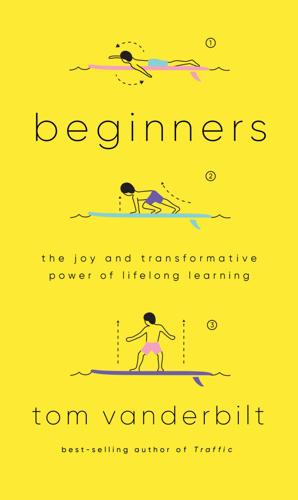
Beginners: The Joy and Transformative Power of Lifelong Learning
by
Tom Vanderbilt
Published 5 Jan 2021
tangible positives: Maybe chess was just a sort of placebo whose benefits could be obtained by other activities in which kids were spurred on by closely watching adults. Giovanni Sala and Fernand Gobet make this suggestion in their article “Do the Benefits of Chess Instruction Transfer to Academic and Cognitive Skills? A Meta-analysis,” Educational Research Review 18 (May 2016): 46–57. “as a way to teach thinking”: Dianne Horgan, “Chess as a Way to Teach Thinking,” Article No. 11 (1987), United States Chess Federation Scholastic Department. Male players’ ratings: See, for example, Lisa Zyga, “Why Men Rank Higher Than Women at Chess (It’s Not Biological),” PhysOrg.com, Jan. 12, 2009, phys.org.
…
Stebbins, “The Amateur: Two Sociological Definitions,” Pacific Sociological Review 20, no. 4 (1977): 582–606. “who loves the rituals”: See George Leonard, Mastery (New York: Plume, 1992), 19–20. self-reported perfectionism: See Thomas Curran and Andrew P. Hill, “Perfectionism Is Increasing over Time: A Meta-analysis of Birth Cohort Differences from 1989 to 2016,” Psychological Bulletin 145, no. 4 (2019): 410–29, dx.doi.org/10.1037/bul0000138. We “overvalue performance”: See D. E. Hamachek, “Psychodynamics of Normal and Neurotic Perfectionism,” Psychology 15, no. 1 (1978): 27–33. just okay at things: As the legal scholar and writer Tim Wu has argued, we have so internalized the endgame of results, in our “intensely public, performative age,” that our leisure pursuits “have become too serious, too demanding, too much an occasion to become anxious about whether you are really the person you claim to be.”
…
an analysis of high school choirs: The study notes, “The research literature has not settled on a commonly accepted cause for the ‘missing males’ in choral music.” See K. Elpus, “National Estimates of Male and Female Enrolment in American High School Choirs, Bands, and Orchestras,” Music Education Research 17, no. 1 (2015): 88–102. “Social facilitation”: For a good roundup, see Charles F. Bond et al., “Social Facilitation: A Meta-analysis of 241 Studies,” Psychological Bulletin 94, no. 2 (1983): 265–92. “Social loafing”: See S. J. Karau, “Social Loafing (and Facilitation),” in Encyclopedia of Human Behavior (Amsterdam: Elsevier, 2012), 486–92. “more Americans engage”: See Cindy Bell, “Update on Community Choirs and Singing in the United States,” International Journal of Research in Choral Singing 2, no. 1 (2004).
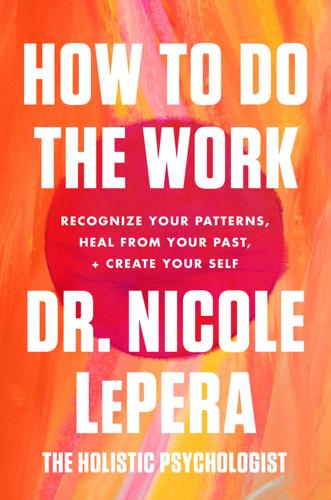
How to Do the Work: Recognize Your Patterns, Heal From Your Past, and Create Your Self
by
Nicole Lepera
Published 9 Mar 2021
Suicide among physicians and health-care workers: a systematic review and meta-analysis. PLOS ONE, 14(12), e0226361. https://doi.org/10.1371/journal.pone.0226361. 33.Krill, P. R., Johnson, R., Albert, L. The prevalence of substance use and other mental health concerns among American attorneys. Journal of Addiction Medicine 10(1), January/February 2016, 46–52, doi: 10.1097/ADM.0000000000000182. 34.Dutheil, F., Aubert, C., Pereira, B., Dambrun, M., Moustafa, F., Mermillod, M., Baker, J. S., Trousselard, M., Lesage, F. X., & Navel, V. (2019). Suicide among physicians and health-care workers: a systematic review and meta-analysis. PLOS ONE, 14(12), e0226361. https://doi.org/10.1371/journal.pone.0226361. 35.Lazarus, R.
…
Group identity, discrimination, and well-being: Confluence of psychosocial and neurobiological factors. Current Opinion in Psychology, 11, 35–39. 40.Paradies, Y., Ben, J., Denson, N., Elias, A., Priest, N., Pieterse, A., Gupta A., Kelaher, M., & Gee, G. (2015). Racism as a determinant of health: A systematic review and meta-analysis. PLOS ONE, Article 10.1371. https://journals.plos.org/plosone/article?id=10.1371/journal.pone.0138511. 41.Goldsmith, R. E., Martin, C. G., & Smith, C. P. (2014). Systemic trauma. Journal of Trauma & Dissociation, 15(2), 117–132. 42.Paradies et al. Racism as a determinant of health. 43.Williams, D.
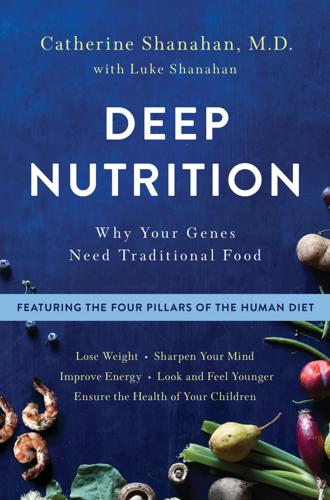
Deep Nutrition: Why Your Genes Need Traditional Food
by
Catherine Shanahan M. D.
Published 2 Jan 2017
Children born today, I’m afraid, may be so genomically compromised that, for many, reproduction will not be possible even with the benefit of high-tech medical prodding. This is why I call these children the Omega generation, referring to the last letter in the Greek alphabet. SIX WAYS NUTRITION CAN OPTIMIZE YOUR CHILD’S GROWTH 1. Height. Pour more milk. A meta analysis concluded that for each additional 100 milliliters of milk (roughly 3.3 ounces) consumed daily, children grew an extra 0.2 centimeters (roughly 1/8 inch) per year.181 Children in the study were aged two to twenty and the study duration ranged from a few months to two years. The study’s authors noted that the growth effect was especially powerful in teens.
…
Matern Child Nutr, July 2007, 3(3):151-73, a systematic literature review. 139. Association between birth interval and cardiovascular outcomes at thirty years of age: a prospective cohort study from Brazil, Devakumar D et al, PLoS One, 2016; 11(2). 140. Developmental dysplasia of the hip, Am Fam Physician, October 15, 2006, 74(8):1310-1316, Stephen K. Storer. 141. A meta-analysis of common risk factors associated with the diagnosis of developmental dysplasia of the hip in newborns, Eur J Radiol, March 2012, 81(3):e344-51. 142. Idiopathic scoliosis: genetic and environmental aspects, Frances V. De George, J. Med Genet, 1967, pp. 4, 251. 143. Risk factors for deformational plagiocephaly at birth and at seven weeks of age: a prospective cohort study, Van Vlimmeren, LA Pediatrics, February 2007, 119(2):e408-18. 144.
…
Lifetime risk for diabetes mellitus in the United States, Venkat Narayan, KM, JAMA, 2003, 290:1884-1890. 180. America’s children in brief: key national indicators of well-being, 2008, Federal Interagency Forum on Child and Family Statistics. 181. Dairy products and physical stature: a systematic review and meta-analysis of controlled trials, Hans de Beer, Economics and Human Biology, 10,3 (2012), pp. 229–309. 182. Do variations in normal nutrition play a role in the development of myopia? Marion Edwards et al, Optometry and Vision Science, 73, 10 (1996), pp. 638–643. 183. There are several but one example is K Chen et al, Antioxidant vitamin status during pregnancy in relation to cognitive development in the first two years of life, Early Hum Dev, 85, 7, 2009, pp. 421–27. 184.
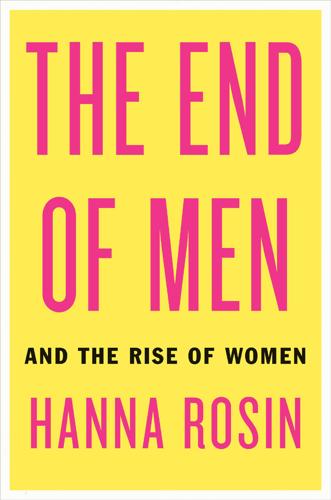
The End of Men: And the Rise of Women
by
Hanna Rosin
Published 31 Aug 2012
women “increasingly reported masculine-stereotyped personality traits”: Jean M. Twenge, “Changes in Masculine and Feminine Traits Over Time: A Meta-Analysis,” Sex Roles 36, no. 5/6 (1997): 305–325. In 2001, Twenge analyzed personality tests: Jean M. Twenge, “Changes in Women’s Assertiveness in Response to Status and Roles: A Cross-Temporal Meta-Analysis, 1931–1993,” Journal of Personality and Social Psychology 81, no. 1 (2001): 133–145. A 1999 analysis of 150 studies on risk-taking behaviors: James P. Byrnes, David C. Miller, and William D. Schafer, “Gender Differences in Risk Taking: A Meta-Analysis,” Psychological Bulletin 125, no. 3 (1999): 367–383. To measure rates of competitiveness: Uri Gneezy, Kenneth L.

Calling Bullshit: The Art of Scepticism in a Data-Driven World
by
Jevin D. West
and
Carl T. Bergstrom
Published 3 Aug 2020
A natural experiment took place in Japan when the MMR vaccine was replaced by monovalent (single-disease) vaccines in 1993. If Wakefield’s hypothesis—that the combined MMR vaccine can cause autism whereas giving three vaccines, one for each disease, should be safe—we would have seen a decrease in autism rates in Japan. That did not happen. More recently, a meta-analysis combining data from multiple studies looked at 1.3 million children and again found no relation between vaccination and autism. *4 Investigative work by journalist Brian Deer revealed that Wakefield was concealing massive conflicts of interest. At the time he was working on the 1998 paper, Wakefield’s research was being funded by a lawyer who was putting together a lawsuit against a vaccine manufacturer.
…
If there isn’t much below the waterline, we have strong support for whatever is being tested. But if there is considerable mass lurking below the surface, the impression one gathers from viewing only the surface can be highly misleading. Fortunately, there are ways to estimate the size of the submerged piece of the iceberg. One of the most powerful approaches involves meta-analysis: looking at multiple studies simultaneously. Doing so, we may be able to see when the published literature is likely to be representative of the set of all experiments conducted, and when, instead, the published literature reflects problematic practices such as p-hacking or publication bias. Figuring out how best to do this has become a hot area in statistics research.
…
Favot-Mayaud, J. Li, and P. A. Waight. “Autism and Measles, Mumps, and Rubella Vaccine: No Epidemiological Evidence for a Causal Association.” The Lancet 353 (1999): 2026–29. Taylor, L. E., A. L. Swerdfeger, and G. D. Eslick. “Vaccines Are Not Associated with Autism: An Evidence-Based Meta-analysis of Case-Control and Cohort Studies.” Vaccine 32 (2014): 3623–29. Wakefield, A. J., S. H. Murch, A. Anthony, J. Linnell, D. M. Casson, M. Malik, …and A. Valentine. “RETRACTED: Ileal-Lymphoid-Nodular Hyperplasia, Non-specific Colitis, and Pervasive Developmental Disorder in Children.” The Lancet 351 (1998): 637–41.
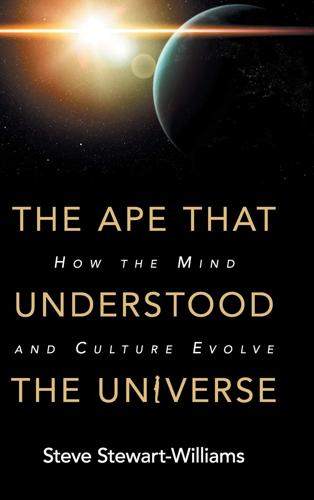
The Ape That Understood the Universe: How the Mind and Culture Evolve
by
Steve Stewart-Williams
Published 12 Sep 2018
New York: Harper & Brothers. Jablonski, N. G. (2006). Skin: A natural history. Berkeley, CA: University of California Press. Jaeggi, A. V., & Gurven, M. (2013). Reciprocity explains food sharing in humans and other primates independent of kin selection and tolerated scrounging: A phylogenetic meta-analysis. Proceedings of the Royal Society B, 280, 20131615. Jahr, C. (1976). Elton John: It’s lonely at the top. Rolling Stone, 223, 11, 16–17. James, W. (1880). Great men, great thoughts, and the environment. Atlantic Monthly, 66, 441–459. James, W. (1890). Principles of psychology. New York: Dover.
…
Tooby (Eds.), The adapted mind: Evolutionary psychology and the generation of culture (pp. 451–493). Oxford University Press. Pinker, Susan. (2008). The sexual paradox: Troubled boys, gifted girls, and the real difference between the sexes. New York: Scribner. Polderman, T. J. C., Benyamin, B., de Leeuw, C. A., et al. (2015). Meta-analysis of the heritability of human traits based on fifty years of twin studies. Nature Genetics, 47, 702–709. Pollan, M. (1990). The botany of desire: A plant’s-eye view of the world. New York: Random House. Popper, K. R. (1979). Objective knowledge: An evolutionary approach. Oxford, UK: Clarendon.
…
Primitive culture: Researches into the development of mythology, philosophy, religion, art and customs. New York: Henry Holt. van den Berghe, P. L. (1979). Human family systems: An evolutionary view. New York: Elsevier. Van Dongen, S., & Gangestad, S. W. (2011). Human fluctuating asymmetry in relation to health and quality: A meta-analysis. Evolution and Human Behavior, 32, 380–398. van Schaik, C. P., Ancrenaz, M., Borgen, G., et al. (2003). Orangutan cultures and the evolution of material culture. Science, 299, 102–105. van Veelen, M., García, J., Sabelis, M. W., & Egas, M. (2012). Group selection and inclusive fitness are not equivalent; the Price equation vs. models and statistics.
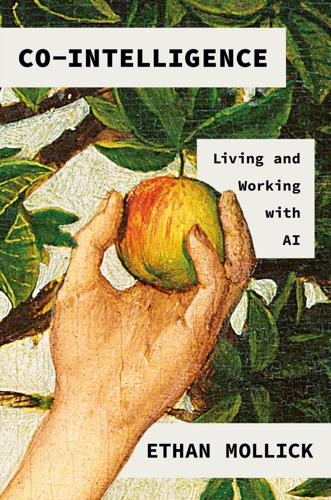
Co-Intelligence: Living and Working With AI
by
Ethan Mollick
Published 2 Apr 2024
GO TO NOTE REFERENCE IN TEXT explaining how a topic: Sal Khan, “How AI Could Save (Not Destroy) Education,” TED2023, April 2023, https://www.ted.com/talks/sal_khan_how_ai_could_save_not_destroy_education/transcript?language=en. GO TO NOTE REFERENCE IN TEXT increasing incomes and even intelligence: S. J. Ritchie and E. M. Tucker-Drob, “How Much Does Education Improve Intelligence? A Meta-Analysis,” Psychological Science 29, no. 8 (2018): 1358–69, https://doi.org/10.1177/0956797618774253. GO TO NOTE REFERENCE IN TEXT five times this year’s global GDP: S. Gust, E. A. Hanushek, and L. Woessmann, “Global Universal Basic Skills: Current Deficits and Implications for World Development,” National Bureau of Economic Research, NBER Working Paper 30566, October 2022, https://www.nber.org/system/files/working_papers/w30566/w30566.pdf.
…
Duckworth et al., “Deliberate Practice Spells Success: Why Grittier Competitors Triumph at the National Spelling Bee,” Social Psychological and Personality Science 2, no. 2 (2011): 174–81, https://doi.org/10.1177/1948550610385872. GO TO NOTE REFERENCE IN TEXT explains only 1 percent of their difference: B. N. Macnamara, D. Moreau, and D. Z. Hambrick, “The Relationship between Deliberate Practice and Performance in Sports: A Meta-Analysis,” Perspectives on Psychological Science 11, no. 3 (2016): 333–50, https://doi.org/10.1177/1745691616635591. GO TO NOTE REFERENCE IN TEXT The gap between the programmers: L. Prechelt, “An Empirical Comparison of Seven Programming Languages,” IEEE Computer 33, no. 10 (2000): 23–29, https://doi.org/10.1109/2.876288.
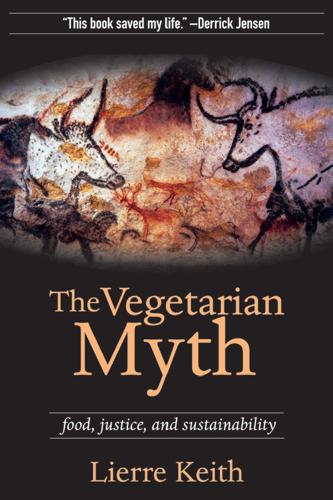
The Vegetarian Myth: Food, Justice, and Sustainability
by
Lierre Keith
Published 30 Apr 2009
After endorsing soy in 1999, the nutrition committee of the American Heart Association did a turnaround in 2006, announcing that soy confers no benefit and that the organization “therefore does not recommend isoflavone supplements in food or pills.”267 And while it’s true that the FDA has endorsed soy as “heart healthy,” that endorsement was based on a meta-analysis of studies on soy and heart disease—a meta-analysis paid for by PTI (Protein Technologies International, which is partly owned by Du-Pont).268 One soy researcher admitted publicly in 2001 that: Clinical work is driven by the idea that the isoflavone levels of Asians were extremely high and that low incidences of hormonal disease was due to high circulating levels of these compounds.
…
Remember that 80 percent of the cholesterol in your blood was made by your body. Only 20 percent was put there by your food choices. Your body knows where it wants that cholesterol level. It may have been misled—by insulin, for instance—but it will adjust its production based on what you ingest. If you eat more cholesterol, it will produce less. A meta-analysis of one hundred sixty seven—yes, that’s 167—cholesterol-feeding experiments found that raising dietary cholesterol had a negligible effect on blood cholesterol, and no link to CHD (coronary heart disease) risk.47 Before we go any further, do you even know what cholesterol is? This benign, maligned substance is needed by every cell in your body, and most of all by the ones that make you human.
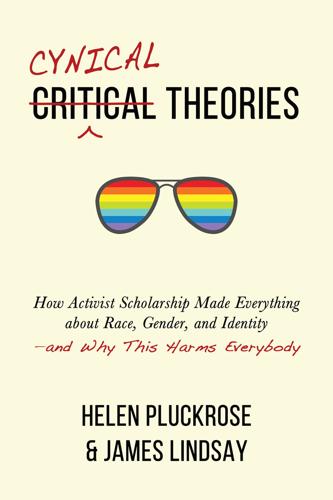
Cynical Theories: How Activist Scholarship Made Everything About Race, Gender, and Identity―and Why This Harms Everybody
by
Helen Pluckrose
and
James A. Lindsay
Published 14 Jul 2020
Linda Bacon, “Health at Every Size: Excerpts and Downloads,” LindaBacon.org, n.d., lindabacon.org/health-at-every-size-book/haes-excerpts-and-downloads/. 32.See these metastudies addressing the claims of HAES: Caroline K. Kramer, Bernard Zinman, and Ravi Retnakaran, “Are Metabolically Healthy Overweight and Obesity Benign Conditions?: A Systematic Review and Meta-analysis,” Annals of Internal Medicine 159 no. 11 (December 03, 2013), annals.org/aim/article-abstract/1784291/metabolically-healthy-overweight-obesity-benign-conditions-systematic-review-meta-analysis?doi=10.7326/0003-4819-159-11-201312030-00008; Lara L. Roberson et al., “Beyond BMI: The ‘Metabolically Healthy Obese’ Phenotype and Its Association with Clinical/Subclinical Cardiovascular Disease and All-Cause Mortality—A Systematic Review,” BMC Public Health 14, no. 1 (2014): article 14. 33.The ASDAH website states that its commitment to inclusion encompasses diversity based on ethnicity, race, nationality, immigration status, gender identity, sexual orientation, age, spirituality, abilities, education, economic class, social class, body shape and size, and others.
…
The Politics of Manhood: Profeminist Men Respond to the Mythopoetic Men’s Movement (and the Mythopoetic Leaders Answer). Philadelphia: Temple University Press, 1995. Kramer, Caroline K., Bernard Zinman, and Ravi Retnakaran. “Are Metabolically Healthy Overweight and Obesity Benign Conditions?: A Systematic Review and Meta-analysis.” Annals of Internal Medicine 159, no. 11 (December 03, 2013). annals.org/aim/article-abstract/1784291/metabolically-healthy-overweight-obesity-benign-conditions-systematic-review-meta-ana lysis?doi=10.7326/0003-4819-159-11-201312030-00008. Koehler, Daniel. “Violence and Terrorism from the Far-Right: Policy Options to Counter an Elusive Threat.”
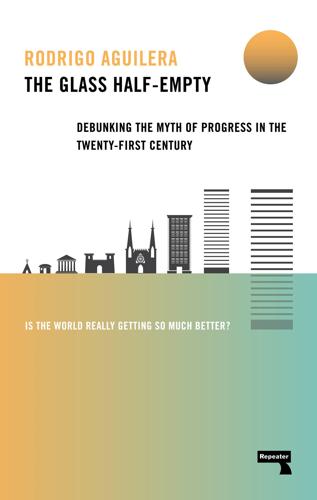
The Glass Half-Empty: Debunking the Myth of Progress in the Twenty-First Century
by
Rodrigo Aguilera
Published 10 Mar 2020
The Spring 2017 survey showed that only a net 35% of employees felt they were satisfied with the amount of influence they had over their jobs and a net 12% of employees felt that the organization that they worked for “inspired the very best in me in the way of job performance”.4 It should come as no surprise that workers don’t feel valued, since the modern corporation isn’t designed to promote job satisfaction but rather to generate profit for its owners — satisfaction is merely a byproduct for the lucky ones that work in a company that adequately rewards effort and provides meaning or purpose to the work being done. Unfortunately, the consequences of this are significant: the absence of job satisfaction is a strong predictor of mental health problems, including anxiety and depression, burnout, and self-esteem issues. One meta-analysis of the relationship between work life and mental health summarized the problem: There is growing evidence that current trends in employment conditions may be eroding levels of job satisfaction — and directly damaging the physical and mental health of employees. New working practices and rapid technological advances are changing the nature of many jobs.
…
H-1B visa program”, Pew Research, 27 Apr. 2017, https://www.pewresearch.org/fact-tank/2017/04/27/key-facts-about-the-u-s-h-1b-visa-program/ 26 State of the Union 1995, delivered 24 Jan. 1995 27 Pinker, S., Enlightenment Now, pg. 204 28 Ibid., pg. 206 29 Putnam, R.D., Bowling Alone: The Collapse and Revival of American Community (Simon & Schuster, 2000), pg. 177 30 Ortiz-Ospina, E., and Roser, M., “Happiness and Life Satisfaction”, Our World in Data, May 2017, https://ourworldindata.org/happiness-and-life-satisfaction 31 At least one meta-study conducted in 2012 does not fully endorse this view: Luhmann M. et al., “Subjective Well-Being and Adaptation to Life Events: A Meta-Analysis”, Journal of Personality and Social Psychology, 102(3), Mar. 2012, https://doi.org/10.1037/a0025948 32 ten Kate, J., de Koster, W. and van der Waal, J., “The Effect of Religiosity on Life Satisfaction in a Secularized Context: Assessing the Relevance of Believing and Belonging”, Review of Religious Research, 59(2), Jun. 2017, https://doi.org/10.1007%2Fs13644-016-0282-1 33 Stewart, F., “Against Happiness: Why Happiness is not a Good Measure of Progress”, Oxford Human Rights Hub, 17 Mar. 2014, http://ohrh.law.ox.ac.uk/against-happiness-why-happiness-is-not-a-good-measure-of-progress/ 34 Ward, G., “Happiness and Voting Behaviour”, in Helliwell, J.F., Layard, R., and Sachs, J.D.
…
, LSE Blogs - Latin America and Caribbean, 24 Oct. 2018, https://blogs.lse.ac.uk/latamcaribbean/2018/10/24/populism-in-mexico-and-brazil-why-are-voters-moving-in-opposite-directions/ 42 Krastev, I., “Eastern Europe’s Illiberal Revolution: The Long Road to Democratic Decline”, Foreign Affairs, 16 Apr. 2018, https://www.foreignaffairs.com/articles/hungary/2018-04-16/eastern-europes-illiberal-revolution 43 “Global Burden of Mental Disorders and the Need for a Comprehensive, Coordinated Response from Health and Social Sectors at the Country Level”, World Health Organization, 2011, A65/10, 16 Mar. 2012, https://apps.who.int/iris/handle/10665/78898 44 “Prime Minister Viktor Orbán’s Speech at the 25th Bálványos Summer Free University and Student Camp”, Website of the Hungarian Government, 26 Jul. 2014, http://www.kormany.hu/en/the-prime-minister/the-prime-minister-s-speeches/prime-minister-viktor-orban-s-speech-at-the-25th-balvanyos-summer-free-university-and-student-camp 45 “Putin: Russian President Says Liberalism ‘Obsolete’”, BBC News, 28 Jun. 2019, https://www.bbc.co.uk/news/world-europe-48795764 Chapter Five: The Big Money 1 “Poll: Job Satisfaction Climbs to Highest Level in Over Two Decades”, The Conference Board, 29 Aug. 2019 2 Okulicz-Kozaryn, A., “Europeans Work to Live and Americans Live to Work”, Journal of Happiness Studies, 12(2), Apr. 2011, http://doi.org/10.1007/s10902-010-9188-8 3 “UK Working Lives: The CIPD Job Index”, CIPD, 2018, https://www.cipd.co.uk/Images/UK-working-lives-2_tcm18-40225.pdf 4 “Employee Outlook: Views on Working Life”, CIPD, 2017, https://www.cipd.co.uk/Images/employee-outlook_2017-spring_tcm18-21163.pdf 5 Faragher, E.B., Cass, M. and Cooper, C.L. “The Relationship Between Job Satisfaction and Health: A Meta-Analysis”, Occupational and Environmental Medicine, 62(2), Feb. 2005, https://doi.org/10.1136/oem.2002.006734 6 “Which Countries in Europe Offer the Fairest Paid Leave and Unemployment Benefits?”, Glassdoor Economic Research, 17 Feb. 2016, https://www.glassdoor.com/research/studies/europe-fairest-paid-leave-unemployment-benefits/ 7 Reid, E. and Ramarajan, L., “Managing the High-Intensity Workplace”, Harvard Business Review, Jun. 2016, https://hbr.org/2016/06/managing-the-high-intensity-workplace 8 Otake, T., “1 in 4 Firms in Japan Say Workers Log Over 80 Overtime Hours a Month”, Japan Times, 7 Oct. 2016, https://www.japantimes.co.jp/news/2016/10/07/national/social-issues/1-in-4-firms-say-some-workers-log-80-hours-overtime-a-month-white-paper-on-karoshi/ 9 “Suicides Down in 2015 in Japan but Numbers Still Serious Among Young, Elderly”, Japan Times, 31 May 2016, https://www.japantimes.co.jp/news/2016/05/31/national/social-issues/suicides-2015-japan-numbers-still-serious-among-young-elderly 10 Roser, M., “Economic growth”, Our World in Data, https://ourworldindata.org/economic-growth 11 Zakaria, T., “Bush Defends Free Market System Ahead of G20”, Reuters, 13 Nov. 2008, https://uk.reuters.com/article/uk-financial-summit-bush-idUKTRE4AC7Z320081113 12 “State of the Union with Candy Crowley”, CNN, 14 Nov. 2010, http://edition.cnn.com/TRANSCRIPTS/1011/14/sotu.02.html 13 “Obama on the opportunities of capitalism”, Kellog School of Management, 2 Oct. 2014, https://www.youtube.com/watch?

Gene Eating: The Science of Obesity and the Truth About Dieting
by
Giles Yeo
Published 3 Jun 2019
Alcohol Res Health 30 (2007), 5–13. 17.Exodus 23:19. 18.Guo, J. et al., ‘Milk and dairy consumption and risk of cardiovascular diseases and all-cause mortality: dose-response meta-analysis of prospective cohort studies’. Eur J Epidemiol 32 (2017), 269–87, doi:10.1007/s10654-017-0243-1; and Tong, X. et al., ‘Cheese Consumption and Risk of All-Cause Mortality: A Meta-Analysis of Prospective Studies’. Nutrients 9 (2017), doi:10.3390/nu9010063. 19.Lu, L., Xun, P., Wan, Y., He, K. and Cai, W., ‘Long-term association between dairy consumption and risk of childhood obesity: a systematic review and meta-analysis of prospective cohort studies’. Eur J Clin Nutr 70 (2016), 414–23, doi:10.1038/ejcn. 2015.226. 20.Um, C.
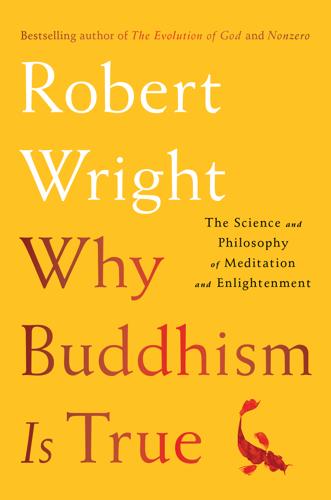
Why Buddhism is True
by
Robert Wright
For example, if you show people a short videotape of someone talking or engaging in social interaction and then ask them to assess something about the person—her professional competence, for example, or her status—the assessments match up pretty well with more objective measurements. That holds true even when there’s no audio, so that all the cues are nonverbal. And a judgment rendered after thirty seconds is almost as likely to be accurate as a judgment rendered after five minutes. Two Harvard psychologists conducted a meta-analysis of dozens of these “thin-slice” studies and concluded that, after a very brief observation, “some stable underlying essence is picked up by judges.” By “judges,” of course, they meant the people in the experiments who did the observing, but they might as well have been talking about all of us; judging is what we’re designed to do.
…
Note that these two kinds of arguments on behalf of the doctrine of emptiness—the classic Buddhist ontological argument and my psychological argument—are logically compatible. wine-tasting study: See Bloom 2010, p. 45. “a depth to pleasure”: Ibid., p. 53. “hedonic experience of flavor”: Plassmann et al. 2008. 12: A Weedless World meta-analysis of “thin slice” studies: Ambady and Rosenthal 1992. †more considerate or conscientious: See Eagly et al. 1991. Though attractiveness per se seems not to be an important cue in assessing moral fiber, other aspects of appearance may be. There is evidence, for example, that people are judged to be more trustworthy if they have high inner eyebrows and high cheekbones than if they don’t.
…
Allison, Scott, David Messick, and George Goethals. 1989. “On Being Better but not Smarter Than Others.” Social Cognition 7(3): 275–96. Amaro Bhikkhu. 2002. Small Boat, Great Mountain. Abhayagiri Monastery. Ambady, Nalini, and Robert Rosenthal. 1992. “Thin Slices of Expressive Behavior as Predictors of Interpersonal Consequences: A Meta-analysis.” Psychological Bulletin 111(2): 256–74. Andrews-Hanna, Jessica, Jay Reidler, Jorge Sepulcre, Renee Poulin, and Randy Buckner. 2010. “Functional-Anatomic Fractionation of the Brain’s Default Network.” Neuron 65: 550–62. Asma, Stephen. 2014. “Monsters on the Brain: An Evolutionary Epistemology of Horror.”
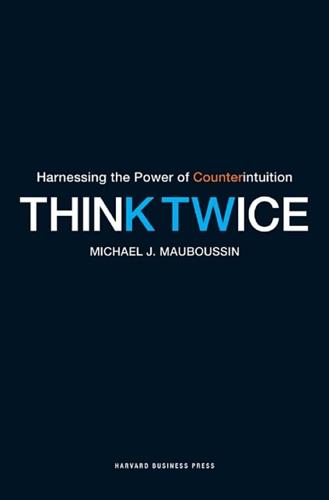
Think Twice: Harnessing the Power of Counterintuition
by
Michael J. Mauboussin
Published 6 Nov 2012
Thomas Gilovich, Dale Griffin, and Daniel Kahneman (Cambridge: Cambridge University Press, 2002), 716–729; Reid Hastie and Robyn M. Dawes, Rational Choice in an Uncertain World (Thousand Oaks, CA: Sage Publications, 2001), 55–72; and William M. Grove, David H. Zald, Boyd S. Lebow, Beth E. Snitz, and Chad Nelson, “Clinical Versus Mechanical Prediction: A Meta-Analysis,” Psychological Assessment 12, no. 1 (2000): 19–30. 17. Philip E. Tetlock, Expert Political Judgment: How Good Is It? How Can We Know? (Princeton, NJ: Princeton University Press, 2005), 54. 18. Scott E. Page, The Difference: How the Power of Diversity Creates Better Groups, Firms, Schools, and Societies (Princeton, NJ: Princeton University Press, 2007), 205–214.
…
Annals of Gullibility: Why We Get Duped and How to Avoid It. Westport, CT: Praeger, 2009. Groopman, Jerome. How Doctors Think. Boston: Houghton Mifflin Company, 2007. Grove, William M., David H. Zald, Boyd S. Lebow, Beth E. Snitz, and Chad Nelson. “Clinical Versus Mechanical Prediction: A Meta-Analysis.” Psychological Assessment 12, no. 1 (2000): 19–30. Groysberg, Boris, Ashish Nanda, and Nitin Nohria. “The Risky Business of Hiring Stars.” Harvard Business Review, May 2004: 92–100. Groysberg, Boris, Lex Sant, and Robin Abrams. “How to Minimize the Risks of Hiring Outside Stars.” Wall Street Journal, September 22, 2008.
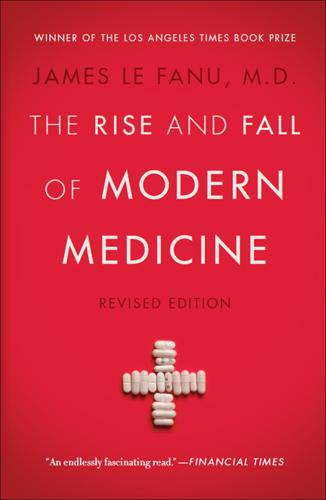
The Rise and Fall of Modern Medicine
by
M. D. James le Fanu M. D.
Published 1 Jan 1999
, BMJ, 2 April 1949, pp. 557–60. 4.Richard Horton, ‘A Manifesto for Reading Medicine’, The Lancet, 1997, Vol. 349, pp. 872–3. 5.Sandra J. Tanenbaum, ‘What Physicians Know’, NEJM, 1993, Vol. 329, pp. 1268–71. See also Gilbert M. Goldman, ‘The Tacit Dimension of Clinical Judgement’, Yale Journal of Biology and Medicine, 1993, Vol. 63, pp. 47–61. 6.Editorial, ‘Meta-analysis Under Scrutiny’, The Lancet, 1997, Vol. 350, p. 675. See also Samuel Shapiro, ‘Meta-analysis/Schmeta-analysis’, American Journal of Epidemiology, 1994, Vol. 140, pp. 771–8. 7.Editorial, ‘A Meeting Too Many’, The Lancet, 1998, Vol. 352, p. 1161. 8.James McCormick, ‘Death of the Personal Doctor’, The Lancet, 1996, Vol. 2, pp. 667–8. Introduction: Ten Years On REFERENCES 1.Office of Health Economics, Compendium of Health Statistics 20th Edition (Office of Health Economics, 2010). 2.H.
…
Dudley, ‘The Controlled Clinical Trial and the Advance of Reliable Knowledge: An Outsider Looks In’, BMJ, 1983, Vol. 287, pp. 957–60; correspondence, M. Baum et al., BMJ, 1983, Vol. 287, pp. 1216–18; Bruce G. Charlton, ‘The Future of Clinical Research: From Mega-trials Towards Methodological Rigour and Representative Sampling’, Journal of Evaluation in Clinical Practice, 1996, Vol. 2, pp. 159–69; John C. Bailar, ‘The Promise and Problems of Meta-analysis’, NEJM, 1997, Vol. 337, pp. 559–61; S. Blinkhorn, ‘Meta Better’, Nature, 1998, Vol. 392, pp. 671–2. 4: 1952: Chlorpromazine and the Revolution in Psychiatry GENERAL READING Arvid Carlsson, Annual Review of Neuroscience, 1978, Vol. 10, pp. 19–40. David Healy, ‘The History of British Psychopharmacology’, 150 Years of British Psychiatry, Vol. 2: The Aftermath, ed.
…
Results from the National Comorbility Survey’, Archives of General Psychiatry, 1994, Vol. 51, pp. 8–19. 16.Alisdair Santhouse, ‘The Person in the Patient’, BMJ, 428:a2262. 17.Quoted in Jackie Law, Big Pharma: How the World’s Biggest Drug Companies Control Illness (Constable, 2006). 18.Cheryll Barron, ‘Big Pharma Snared by Net’, Observer, 26 September 2004. 19.Jackie Law, Big Pharma: How the World’s Biggest Drug Companies Control Illness (Constable, 2006). 20.Irvine Kirsch, 2009, The Emperor’s New Drugs (Bodley Head, 2009). 21.Dr Malcolm Kendrick, The Great Cholesterol Con (John Blake, 2007). 22.C. T. T. Collaborators, ‘Efficacy and Safety of Cholesterol-Lowering Treatment: Prospective Meta-Analysis of Data from 90,056 Participants by the Incidents of Fourteen Randomised Trials of Statins’, The Lancet, 2005, Vol. 366, pp. 1267–72. 23.‘Expert Panel on Detection, Evaluation and Treatment of High Blood Cholesterol in Adults. Executive Summary of The Third Report of The National Cholesterol Education Programme’, JAMA, 2001, Vol. 285, pp. 2486–97. 24.D.
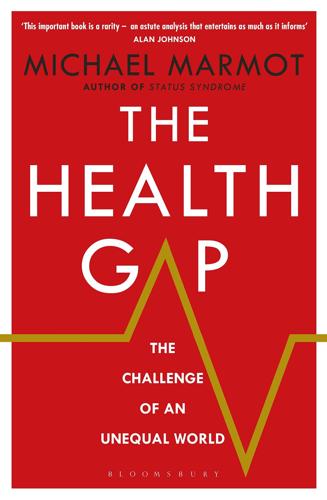
The Health Gap: The Challenge of an Unequal World
by
Michael Marmot
Published 9 Sep 2015
Linda Fried, geriatrician, gerontologist, epidemiologist Lack of social integration can be fatal. If Mr O. had the choice of giving up smoking or being more enmeshed socially, it is a close thing: both are potentially life-saving, but social integration is marginally better for his health. A ‘meta-analysis’ combined results from 148 studies of men and women with an average age of sixty-four at the start of the study. It found that over an average 7.5 years of follow-up, people who were socially engaged had a 50 per cent lower chance of dying. Being socially integrated in a variety of ways was more protective than simply being married or not living alone.24 The protective effect was similar in men and women.
…
Relationship of childhood abuse and household dysfunction to many of the leading causes of death in adults. The Adverse Childhood Experiences (ACE) Study. American Journal of Preventive Medicine. 1998; 14(4): 245–58. 9Norman RE, Byambaa M, De R, Butchart A, Scott J, Vos T. The long-term health consequences of child physical abuse, emotional abuse, and neglect: a systematic review and meta-analysis. PLoS Med. 2012;9(11):e1001349. 10Smith Z. NW. London: Hamish Hamilton, 2012, pp. 270–1. 11Plomin R. Genetics and children’s experiences in the family. Journal of Child Psychology and Psychiatry. 1995; 36: 33–67; Plomin R. Nature and Nurture: An Introduction to Human Behavioral Genetics. Pacific Grove, CA: Brooks-Cole, 1990. 12UCL Institute of Health Equity.
…
The Potential Impact; Bambra CL, Whitehead MM, Sowden AJ, Akers J, Petticrew MP. Shifting schedules: the health effects of reorganizing shift work. American Journal of Preventive Medicine. 2008; 34(5): 427–34; Vyas MV, Garg AX, Iansavichus AV, Costella J, Donner A, Laugsand LE, et al. Shift work and vascular events: systematic review and meta-analysis. British Medical Journal. 2012; 345: e4800. 17Steptoe and Kivimaki. Stress and cardiovascular disease. 18Beveridge W. Social Insurance and Allied Services. London: HMSO, 1942. 19New Policy Institute, MacInnes T, Aldridge H, Bushe S, Kenway P, Tinson A. Monitoring Poverty and Social Exclusion 2013.
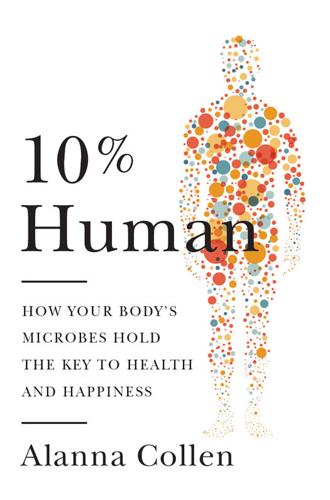
10% Human: How Your Body's Microbes Hold the Key to Health and Happiness
by
Alanna Collen
Published 4 May 2015
Probiotics for the prevention and treatment of antibiotic-associated diarrhea: A systematic review and meta-analysis. Journal of the American Medical Association 307: 1959–1969. 4. AlFaleh, K. et al. (2011). Probiotics for prevention of necrotizing enterocolitis in preterm infants. Cochrane Database of Systematic Reviews, Issue 3. 5. Ringel, Y. and Ringel-Kulka, T. (2011). The rationale and clinical effectiveness of probiotics in irritable bowel syndrome. Journal of Clinical Gastroenterology 45(S3): S145–S148. 6. Pelucchi, C. et al. (2012). Probiotics supplementation during pregnancy or infancy for the prevention of atopic dermatitis: A meta-analysis. Epidemiology 23: 402–414. 7.
…
Association or lack of association between tetracycline class antibiotics used for acne vulgaris and lupus erythematosus. British Journal of Dermatology 157: 540–546. 13. Tan, L. et al. (2002). Use of antimicrobial agents in consumer products. Archives of Dermatology 138: 1082–1086. 14. Aiello, A.E. et al. (2008). Effect of hand hygiene on infectious disease risk in the community setting: A meta-analysis. American Journal of Public Health 98: 1372–1381. 15. Bertelsen, R.J. et al. (2013). Triclosan exposure and allergic sensitization in Norwegian children. Allergy 68: 84–91. 16. Syed, A.K. et al. (2014). Triclosan promotes Staphylococcus aureus nasal colonization. mBio 5: e01015–13. 17. Dale, R.C. et al. (2004).
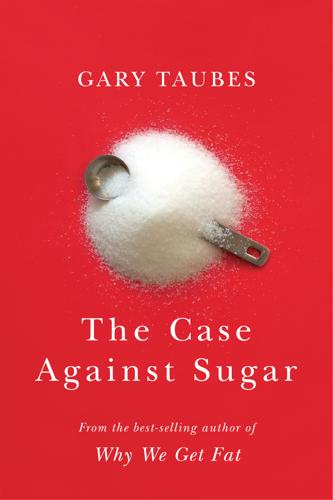
The Case Against Sugar
by
Gary Taubes
Published 27 Dec 2016
Letter to Roger Adams, April 29. Sugar Research Foundation, Inc. Papers of Roger Adams, University of Illinois Archives, University of Illinois at Urbana-Champaign. He, F. J., J. Li, and G. A. MacGregor. 2013. “Effect of Longer Term Modest Salt Reduction on Blood Pressure: Cochrane Systematic Review and Meta-Analysis of Randomised Trials.” Cochrane Database of Systematic Reviews no. 4 (April 30): CD004937. Heinbecker, P. 1928. “Studies on the Metabolism of Eskimos.” Journal of Biological Chemistry 80, no. 2 (Dec. 1): 461–75. Helmchen, L. A., and R. M. Henderson. 2004. “Changes in the Distribution of Body Mass Index of White US Men, 1890–2000.”
…
Trans. D. Spence. In Metabolism and Practical Medicine, Vol. 3: The Pathology of Metabolism, ed. C. von Noorden and I. W. Hall (Chicago: W. Keener, 1907), 693–715. Noto, H., A. Goto, T. Tsujimoto, and M. Noda. 2012. “Cancer Risk in Diabetic Patients Treated with Metformin: A Systematic Review and Meta-Analysis.” PLOS One 7, no. 3 (March): e33411. Nuccio, S. 1964. “Advertising: Sales Clicking for Dietetic Pop.” New York Times, May 20: 68. O’Connor, A. 2015. “Coca-Cola Funds Effort to Alter Obesity Battle.” New York Times, Aug. 10: A1. Ors, R., E. Ozek, G. Baysoy, et al. 1999. “Comparison of Sucrose and Human Milk on Pain Response in Newborns.”
…
“Food Habit and Cultural Changes Among the Pima Indians.” In Joe and Young, eds., 1994, 407–33. Smith, D. 1952. “Fight Continues Between Dentists, Sugar Industry.” Boston Globe, Sept. 1: 34. Snapper, I. 1960. Bedside Medicine. New York: Grune & Stratton. Sniderman, A. D., K. Williams, J. H. Contois, et al. 2011. “A Meta-Analysis of Low-Density Lipoprotein Cholesterol, Non-High-Density Lipoprotein Cholesterol, and Apolipoprotein B as Markers of Cardiovascular Risk.” Circulation: Cardiovascular Quality and Outcomes 4, no. 3 (May): 337–45. Snowden, C. 2015. “The Coca-Cola ‘Exposé’ Had All the Spin of a Classic Anti-Sugar Smear Piece.”

Yoga Nidra: The Art of Transformational Sleep
by
Kamini Desai
Published 7 Mar 2017
“Increased Dopamine Tone During MeditationInduced Change of Consciousness.” Cognitive Brain Research 13.2 (2002): 255-60. [12] 149 – Alexander, C.N., P. Robinson, OTR, and M. Rainforth. “Treating and Preventing Alcohol, Nicotine, and Drug Abuse Through Transcendental Meditation: A Review and Statistical Meta-Analysis.” Alcoholism Treatment Quarterly 11 (1994): 13-87. Gelderloos, P., K.G. Walton, D.W. Orme-Johnson, and C.N. Alexander. “Effectiveness of the Transcendental Meditation Program in Preventing and Treating Substance Misuse: A Review.” International Journal of the Addictions 26.3 (1991): 293-325. Benson, H., and R.K.
…
“Decreased drug abuse with Transcendental Meditation: A study of 1,862 subjects.” Drug abuse: Proceedings of the international conference. Philadelphia: Lee and Febiger, 1972. [13] 150 – Alexander, C.N., P. Robinson, OTR, and M. Rainforth. “Treating and Preventing Alcohol, Nicotine, and Drug Abuse Through Transcendental Meditation: A Review and Statistical Meta-Analysis.” Alcoholism Treatment Quarterly 11 (1994): 13-87. [14] 151 – Wynd, Christine A. “Guided Health Imagery for Smoking Cessation and Long-Term Abstinence.” Journal of Nursing Scholarship 37.3 (2005): 245-50. – CHAPTER NINETEEN – Yoga Nidra for Trauma and PTSD In the last chapter, we talked about how habits and addictions can begin as a means to manage the way we feel.
…
“How Stress Affects Your Brain Madhumita Murgia.” TED-Ed. Ed. Andrew Zimbelman. 9 Nov. 2015. Web. 06 Apr. 2016. [10] 161 – Murgia, Madhumita. “How Stress Affects Your Brain Madhumita Murgia.” TED-Ed. Ed. Andrew Zimbelman. 9 Nov. 2015. Web. 06 Apr. 2016. [11] 162 – Brewin, Chris R., Bernice Andrews, and John D. Valentine. “Meta-analysis of Risk Factors for Posttraumatic Stress Disorder in Trauma-exposed Adults.” Journal of Consulting and Clinical Psychology 68.5 (2000): 748-66. Web. 20 Apr. 2016. [12] 163 – Sapolsky, R.M., L.C. Krey, and B.S. McEwen. “Prolonged Glucocorticoid Exposure Reduces Hippocampal Neuron Number: Implications for Aging.”

Getting Past Your Past: Take Control of Your Life With Self-Help Techniques From EMDR Therapy
by
Francine Shapiro
Published 26 Mar 2013
Ohtani, T., Matsuo, K., Kasai, K., Kato, T., & Kato, N. (2009). Hemodynamic responses of eye movement desensitization and reprocessing in posttraumatic stress disorder. Neuroscience Research, 65, 375-83. Rodenburg, R., Benjamin, A., de Roos, C., Meijer, A. M., & Stams, G. J. (2009). Efficacy of EMDR in children: A meta-analysis. Clinical Psychology Review, 29, 599-606. Rothbaum, B. (1997). A controlled study of eye movement desensitization and reprocessing in the treatment of post-traumatic stress disordered sexual assault victims. Bulletin of the Menninger Clinic, 61, 317-34. Shapiro, F. (1989). Efficacy of the eye movement desensitization procedure in the treatment of traumatic memories.
…
First report of the Collaborative Outcome Data Project on the effectiveness of psychological treatment for sexual offenders. Sexual Abuse: A Journal of Research and Treatment, 14, 169-94. Jeperson, A. F., Lalumiere, M. L., & Seto, M. C. (2009). Sexual abuse history among adult sex offenders and non-sex offenders: A meta-analysis. Child Abuse and Neglect, 33, 179-92. Marques, J. K., Wiederanders, M., Day, D. M., Nelson, C., & van Ommeren, A. (2005). Effects of a relapse prevention program on sexual recidivism: Final results from California’s sex offender treatment and evaluation project (SOTEP). Sexual Abuse: A Journal of Research and Treatment, 17, 79-107.
…
J., Cumming, G., Burchard, B., Zeoli, S., & Ellerby, L. (2009). Current practices and trends in sexual abuse management. The safer society 2002 national survey. Brandon, VT: Safer Society Foundation. Pereda, N., Guilera, G., Forns, M., & Gómez-Benito, J. (2009). The prevalence of child sexual abuse in community and student samples: A meta-analysis. Clin Psychol Rev. 29, 328-38. Published online: March 5, 2009. Ricci, R. J. (2006). Trauma resolution using eye movement desensitization and reprocessing with an incestuous sex offender, Clinical Case Studies, 5, 248-65. Ricci, R. J., Clayton, C. A., & Shapiro, F. (2006). Some effects of EMDR on previously abused child molesters: Theoretical reviews and preliminary findings.
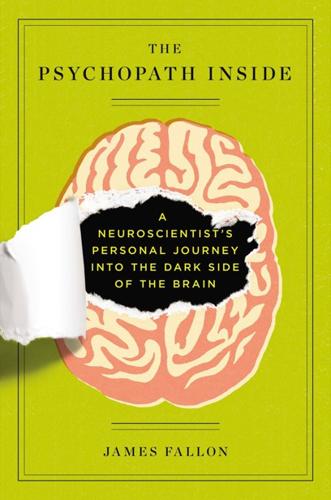
The Psychopath Inside: A Neuroscientist's Personal Journey Into the Dark Side of the Brain
by
James Fallon
Published 30 Oct 2013
Twelve percent of the guys had this combination of abuse and the warrior gene, but they were responsible for 44 percent of the men’s violent convictions, doing four times their share of the damage. Overall, 85 percent of the males with the warrior gene who were severely maltreated became antisocial. A similar pattern was seen in females, though they were less violent. A later meta-analysis Caspi and his colleagues conducted of similar studies showed that even without abuse, the warrior gene does increase aggression, but its effect on its own is much smaller. Those several months following birth are sometimes called the “fourth trimester,” and this extended period of what should have been prenatal development means that early environment for a human infant is particularly important.
…
“The challenge of translation in social neuroscience: a review of oxytocin, vasopressin, and affiliative behavior.” Neuron 65, no. 6 (2010): 768. Kim-Cohen, Julia, Avshalom Caspi, Alan Taylor, Benjamin Williams, Rhiannon Newcombe, Ian W. Craig, and Terrie E. Moffitt. “MAOA, maltreatment, and gene-environment interaction predicting children’s mental health: New evidence and a meta-analysis.” Molecular Psychiatry 11, no. 10 (2006): 903–913. Kirsch, Peter, Christine Esslinger, Qiang Chen, Daniela Mier, Stefanie Lis, Sarina Siddhanti, Harald Gruppe, Venkata S. Mattay, Bernd Gallhofer, and Andreas Meyer-Lindenberg. “Oxytocin modulates neural circuitry for social cognition and fear in humans.”

Progress: Ten Reasons to Look Forward to the Future
by
Johan Norberg
Published 31 Aug 2016
Oxford: Oxford University Press, 2015, p. 17f. 23 Environmental Performance Index 2006. 24 Indur M. Goklany, The Improving State of the World: Why We’re Living Longer, Healthier, More Comfortable Lives on a Cleaner Planet. Washington, DC: Cato Institute, 2007, p. 149f. 25 Bishwa S. Koirala, Hui Li and Robert P. Berrens, ‘Further investigation of environmental Kuznets curve studies using meta-analysis’, International Journal of Ecological Economics and Statistics, 22, S11 (2011). 26 Indur Goklany, ‘Deaths and death rates from extreme weather events: 1900–2008’. Journal of American Physicians and Surgeons, 14, 4 (2009), 102–9. 27 Todd Moss and Benjamin Leo, ‘Maximizing access to energy: estimates of access and generation for the overseas private investment corporation’s portfolio’, Center for Global Development, January 2014, www.cgdev.org/publication/maximizing-access-energy-estimates-access-and-generation-overseas-private-investment (accessed on 22 March 2016). 28 Bailey 2015, p. 200. 29 Lindstrand et al. 2006, p. 70.
…
Cambridge: Cambridge University Press, 2003, p. 488. 19 World Economic Forum, ‘Global gender gap report 2015’, http://www.weforum.org/reports/global-gender-gap-report-2015 (accessed on 22 March 2016). 20 UNDP, Human Development Report 2014. New York: UNDP, 2014. 21 Pinker 2011, p. 413. 22 United Nations Children’s Fund, Female Genital Mutilation/Cutting: What Might the Future Hold? New York: UNICEF, 2014. 23 Pew Research Center 2013. 24 Jean M. Twenge, ‘Attitudes toward women, 1970–1995: a meta-analysis’, Psychology of Women Quarterly, 21, 1 (1997), 35–51. 25 Pinker 2011, p. 408f. 26 Lillian Faderman, The Gay Revolution: The Story of the Struggle. New York: Simon and Schuster, 2015, p. 137. 27 Aaron Day: ‘The PinkNews guide to the history of England and Wales equal marriage’, PinkNews, 15 July 2013. 28 John D’Emilio, Sexual Politics, Sexual Communities, 2nd edn.
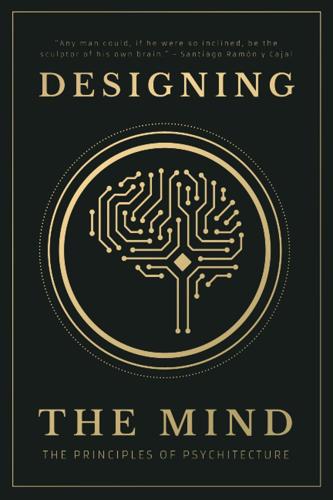
Designing the Mind: The Principles of Psychitecture
by
Designing The Mind
and
Ryan A Bush
Published 10 Jan 2021
Sam Harris, Waking Up: A Guide to Spirituality Without Religion. Chapter 1, n.d. “Meditation Trains Metacognition - LessWrong,” accessed November 25, 2020, https://www.lesswrong.com/posts/JMgffu9AzhYpTpHFJ/meditation-trains-metacognition. Peter Sedlmeier et al., “The Psychological Effects of Meditation: A Meta-Analysis,” Psychological Bulletin 138, no. 6 (November 2012): 1139–71, https://doi.org/10.1037/a0028168. “A Map of Bay Area Memespace - LessWrong,” accessed November 25, 2020, https://www.lesswrong.com/posts/WzPJRNYWhMXQTEj69/a-map-of-bay-area-memespace. Tim Buschmann et al., “The Relationship Between Automatic Thoughts and Irrational Beliefs Predicting Anxiety and Depression,” Journal of Rational-Emotive & Cognitive-Behavior Therapy 36 (July 1, 2017): 1–26, https://doi.org/10.1007/s10942-017-0278-y.
…
John, “Individual Differences in Two Emotion Regulation Processes: Implications for Affect, Relationships, and Well-Being,” Journal of Personality and Social Psychology 85, no. 2 (August 2003): 348–62, https://doi.org/10.1037/0022-3514.85.2.348. Tianqiang Hu et al., “Relation between Emotion Regulation and Mental Health: A Meta-Analysis Review,” Psychological Reports 114 (April 1, 2014): 341–62, https://doi.org/10.2466/03.20.PR0.114k22w4. James J. Gross, Handbook of Emotion Regulation, Second Edition. Chapter 1: Emotion, 2nd edition (The Guilford Press, 2013). Shengdong Chen et al., “Automatic Reappraisal-Based Implementation Intention Produces Early and Sustainable Emotion Regulation Effects: Event-Related Potential Evidence,” Frontiers in Behavioral Neuroscience 14 (July 1, 2020): 89, https://doi.org/10.3389/fnbeh.2020.00089.
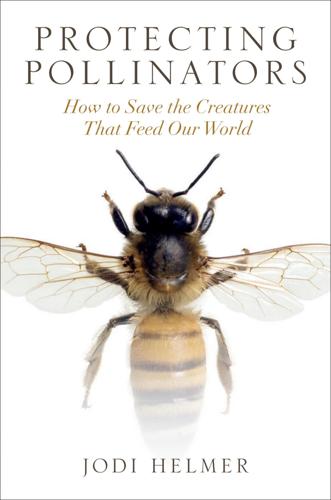
Protecting Pollinators
by
Jodi Helmer
Published 15 Nov 2019
While honeybees remain in the spotlight, they cannot do the job of pollination alone. Hummingbirds, bats, moths, flies, and thousands of other creatures make up the motley crew of pollinators that allow for effective and stable pollination. Diversity is more important than abundance of a single species, even a managed species like the honeybee. In fact, a 2016 meta-analysis reviewed thirty-nine studies and found that insects other than bees were also efficient pollinators, providing more than two-thirds of visits to crop flowers. Compared to honeybees, nonbee pollinators performed fewer than 50 percent of total flower visits but a higher number of flower visits and, as a result, their pollination services were on par with bees overall.
…
A growing number of researchers have suggested that, instead of treating honeybees like pollinators, beekeepers should see them as livestock, since managed colonies face issues similar to those faced by cows, pigs, and chickens raised in cramped conditions: overcrowding and homogenous diets depress their immune systems and increase the presence of pathogens. In one meta-analysis, more than half of studies found that competition for resources had negative effects on wild bees. (The research did not measure the direct effects of honeybees on wild bee fitness, abundance, or diversity; managed hives located in their native ranges had a lower impact on wild bees than those in hives situated in nonnative ranges.)
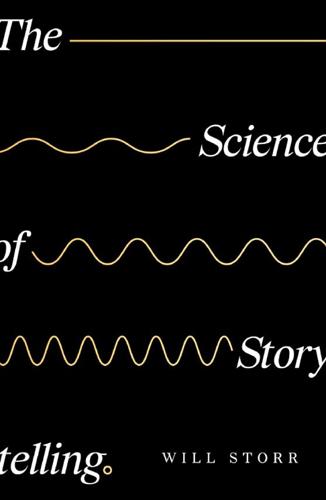
The Science of Storytelling: Why Stories Make Us Human, and How to Tell Them Better
by
Will Storr
Published 3 Apr 2019
Research suggests that, when we’re transported, our beliefs, attitudes and intentions are vulnerable to being altered, in accordance with the mores of the story, and that these alterations can stick. ‘Research has demonstrated that the transported “traveller” can return changed by the journey,’ write the authors of a meta-analysis of 132 studies of narrative transportation. ‘The transformation that narrative transportation achieves is persuasion of the story-receiver.’ In the 1960s, the novel One Day in the Life of Ivan Denisovich by Aleksandr Solzhenitsyn dragged its readers through the experiences of an ordinary prisoner in one of Stalin’s gulag camps, shocking the Communist citizens of the Soviet Union.
…
Roy Baumeister writes that: The Cultural Animal, Roy Baumeister (Oxford University Press, 2005) p. 102. 4.4 ‘the invisible actor’: Making up the Mind, Chris Frith (Blackwell Publishing, 2007) p. 109. ‘the transported “traveller” can return changed’: ‘The Extended Transportation-Imagery Model: A Meta-Analysis of the Antecedents and Consequences of Consumers’ Narrative Transportation’, Tom van Laer, Ko de Ruyter, Luca M. Visconti and Martin Wetzels; Journal of Consumer Research, Vol. 40, No. 5 (February 2014) pp. 797–817. 4.5 One study had a group of white Americans: ‘Entertainment-education effectively reduces prejudice’, Sohad Murrar, Markus Brauer; Group Processes & Intergroup Relation, 2018, Vol 21, Issue 7.

Leadership by Algorithm: Who Leads and Who Follows in the AI Era?
by
David de Cremer
Published 25 May 2020
Since the 1970s, scholars have been providing evidence that human experts do not perform as well as simple linear models in things like clinical diagnosis, forecasting graduate students’ success, and other prediction tasks.²¹,²² Findings like this have led to the idea that algorithmic judgment is superior to expert human judgment.²³ For example, research has shown that algorithms deliver more accurate medical diagnoses when detecting heart-rate diseases.²⁴,²⁵,²⁶ Furthermore, in the world of business, algorithms prove better at predicting employee performance, the products customers want to buy, and identifying fake news and information.²⁷,²⁸ An overall analysis of all these effects (what is called a meta-analysis) even reveals that algorithms outperform human forecasters by 10% on average.²⁹ Overall, the evidence suggests that it is (and will increasingly be) the case that algorithms outperform humans. This scientific evidence, combined with our tendency to think of humans and machines as us versus them, poses the question of whether AI will replace people’s jobs at center-stage.³⁰ This question is no longer a peripheral one.
…
‘Systematic analysis of breast cancer morphology uncovers stromal features associated with survival.’ Science translational medicine, 3(108), doi: 108ra113-108ra113 26 Grove, W. M., Zald, D. H., Lebow, B. S., Snitz, B. E., & Nelson, C. (2000). ‘Clinical versus mechanical prediction: A meta-analysis.’ Psychological Assessment, 12(1), 19-30. 27 Maidens, J., & Slamon, N.B. (2018). Abstract12591: ‘Artificial intelligence detects pediatric heart murmurs with cardiologist-level accuracy.’ Circulation, 138 (suppl_1). 28 Highhouse, S. (2008). ‘Stubborn Reliance on Intuition and Subjectivity in Employee Selection.’

McMindfulness: How Mindfulness Became the New Capitalist Spirituality
by
Ronald Purser
Published 8 Jul 2019
The US Agency for Healthcare Research and Quality also commissioned meta-analytic studies on the efficacy of mindfulness-based interventions (MBIs), first in 2007 and again in 2014. Both studies were critical of the lack of rigorous standards, noting that the majority of studies did not utilize randomized control groups. The more recent 2014 meta-analysis found that MBIs had lackluster efficacy, ranging from moderate to none whatsoever.18 What is especially noteworthy was the low reported efficacy of MBIs for reducing stress and improving people’s quality of life. One of the claims made by mindfulness advocates is that the practice in and of itself leads to pro-social conduct, enhancing compassion, altruism and empathy, while reducing aggression and prejudice.
…
Take that condition away, and the results disappeared. In addition, their study found no evidence that meditation had any significant effect on the reduction of aggression and prejudice. The widespread belief that there is compelling clinical proof that “mindfulness works” is simply not supported by the scientific evidence. Another recent meta-analysis found MBSR was not effective for people suffering from depression.20 Even using the more specific Mindfulness-Based Cognitive Therapy (MBCT), which is sanctioned for treating depression by the UK’s National Institute for Health and Clinical Excellence, the efficacy is only modestly helpful for reducing the likelihood of depression relapse.

San Fransicko: Why Progressives Ruin Cities
by
Michael Shellenberger
Published 11 Oct 2021
Sam Tsemberis, interview by the author, January 6, 2021. 45. Kertesz et al., “Housing first for homeless persons with active addiction.” 46. Rebecca A. Cherner et al., “Housing First for Adults with Problematic Substance Use,” Journal of Dual Diagnosis 13, no. 1 (2017), doi:10.1080/15504263.2017.1319586. 47. Joseph E. Schumacher et al., “Meta-Analysis of Day Treatment and Contingency-Management Dismantling Research: Birmingham Homeless Cocaine Studies (1990–2006),” Journal of Consulting and Clinical Psychology 75, no. 5 (2007): 823–28, doi:10.1037/0022–006X.75.5.823. 48. Kertesz et al., “Housing First for Homeless Persons with Active Addiction.” 49.
…
Ali, and Emily Rosenoff, “Individuals Experiencing Homelessness Are Likely to Have Medical Conditions Associated with Severe Illness from COVID-19,” ASPE Issue Brief, HHS Office of the Assistant Secretary for Planning and Evaluation, US Department of Health and Human Services, June 2020, www.aspe.hhs.gov; Robert W. Aldridge et al., “Morbidity and Mortality in Homeless Individuals, Prisoners, Sex Workers, and Individuals with Substance Use Disorders in High-Income Countries: A Systematic Review and Meta-Analysis,” Lancet 391, no. 10117 (2018): 241–50, doi:10.1016/S0140–6736(17)31869-X. 46. Severin Campbell et al., “Performance Audit of the Department of Homelessness and Supportive Housing, Prepared for the Board of Supervisors of the City and County of San Francisco,” Office of the San Francisco Budget and Legislative Analyst, August 6, 2020, www.sfbos.org. 47.
…
Stefan Pfattheicher and Johannes Keller, “The Watching Eyes Phenomenon: The Role of a Sense of Being Seen and Public Self‐Awareness,” European Journal of Social Psychology 45, no. 5 (2015): 560–66, doi:10.1002/ejsp.2122; Ryo Oda, Yuta Kato, and Kai Hiraishi, “The Watching-Eye Effect on Prosocial Lying,” Evolutionary Psychology 13, no. 3 (2015): 147470491559495, doi:10.1177/1474704915594959; Daniel Nettle, Kenneth Nott, and Melissa Bateson, “‘Cycle Thieves, We Are Watching You’: Impact of a Simple Signage Intervention against Bicycle Theft,” PLoS One 7, no. 12 (2012): e51738, doi:10.1371/journal.pone.0051738; Melissa Bateson et al., “Do Images of ‘Watching Eyes’ Induce Behaviour That Is More Pro-Social or More Normative? A Field Experiment on Littering,” PLoS One 8, no. 12 (2013): e82055, doi:10.1371/journal.pone.0082055; Keith Dear, Kevin Dutton, and Elaine Fox, “Do ‘Watching Eyes’ Influence Antisocial Behavior? A Systematic Review & Meta-Analysis,” Evolution and Human Behavior 40, no. 3 (2019): 269–80, doi:10.1016/j.evolhumbehav.2019.01.006. 16: Love Bombing 1. Tim Reiterman and John Jacobs, Raven: The Untold Story of Rev. Jim Jones and His People (New York: Penguin Books, 2008); Jonestown: The Life and Death of People’s Temple, produced and directed by Stanley Nelson, written by Marcia Smith and Noland Walker (2006; Firelight Media, aired April 9, 2007 on American Experience, PBS). 2.
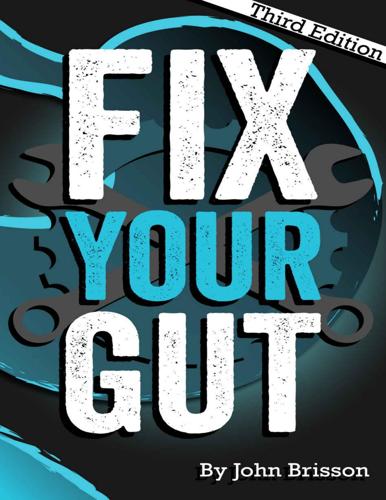
Fix Your Gut: The Definitive Guide to Digestive Disorders
by
John Brisson
Published 12 Apr 2014
This compartment, with both activator and regulatory T cells, could be involved in setting the agedependent threshold for allergic sensitization to environmental allergens” It would appear that a diffuse H. pylori colonization in the stomach helps to create robust low-grade mucosa-associated lymphoid tissue (MALT) which is the first line of defense against allergic proteins that we consume. There is one study, however, that does attempt to shed some doubt on H. pylori’s protection against asthma and allergies. The study is a meta-analysis based on 770 cases and 785 controls. The study did not find a huge link between H. pylori and asthma and allergies. There were issues with the study because they used serological ELISA tests for H. pylori that would show the body’s reaction to a prior infection but not if the H. pylori were flora.
…
FEBS J. 2007;274(14):3589-600. http://www.ncbi.nlm.nih.gov/pubmed/17627668 Inulin / FOS http://www.marksdailyapple.com/prebiotics/. Accessed April 27, 2014 http://www.breakingtheviciouscycle.info/knowledge_base/detail/inulin/ Accessed April 27, 2014 Lactulose Beers, Mark. The Merck Manual, Merck Research Laboratories, 2006. Shukla S, Shukla A, Mehboob S, Guha S. Meta-analysis: the effects of gut flora modulation using prebiotics, probiotics and synbiotics on minimal hepatic encephalopathy. Aliment Pharmacol Ther. 2011;33(6):662-71. http://www.ncbi.nlm.nih.gov/pubmed/21251030 XOS http://www.marksdailyapple.com/prebiotics/. Accessed April 27, 2014 Xylooligosaccharides (XOS) as an Emerging Prebiotic: Microbial Synthesis, Utilization, Structural Characterization, Bioactive Properties, and Applications.
…
Review of sangre de drago (Croton lechleri)--a South American tree sap in the treatment of diarrhea, inflammation, insect bites, viral infections, and wounds: traditional uses to clinical research. J Altern Complement Med. 2003;9(6):877-96. http://www.ncbi.nlm.nih.gov/pubmed/14736360 Iodice S, Gandini S, Maisonneuve P, Lowenfels AB. Tobacco and the risk of pancreatic cancer: a review and meta-analysis. Langenbecks Arch Surg. 2008;393(4):535-45. http://www.ncbi.nlm.nih.gov/pubmed/18193270 Parasites Parasite General Information Beers, Mark. The Merck Manual, Merck Research Laboratories, 2006. http://www.cdc.gov/parasites/water.html, Accessed April 28, 2014 http://www.cdc.gov/parasites/trichinellosis/gen_info/faqs.html, Accessed April 28, 2014 http://www.nbcnews.com/health/cat-poop-parasites-may-posepublic-health-hazard-study-suggests-6C10574506, Accessed April 28, 2014 http://www.cdc.gov/parasites/hookworm/, Accessed April 28, 2014 http://www.who.int/bulletin/volumes/87/2/07-047308/en/, Accessed April 28, 2014 https://fri.wisc.edu/files/Briefs_File/parasites.pdf, Accessed April 28, 2014 http://www.totalityofbeing.com/FramelessPages/Articles/organic_vs_nonorganic Accessed April 28, 2014 http://www.huffingtonpost.com/2012/07/05/toxoplasma-gondiibrain-parasite-suicide-cats_n_1651523.html, Accessed April 28, 2014 Piperine http://apps.who.int/medicinedocs/en/d/Jwhozip48e/6.5.html, Accessed April 28, 2014 http://www.ingentaconnect.com/content/govi/pharmaz/2008/00000063/00000005 crawler=true, Accessed April 28, 2014 http://www.sciencedaily.com/releases/2009/03/090311085151.htm, Accessed April 28, 2014 http://www.sciencedirect.com/science/article/pii/0005273695000558, Accessed April 28, 2014 http://www.sciencedirect.com/science/article/pii/S0960894X04005177 Accessed April 28, 2014 https://www.ncbi.nlm.nih.gov/pmc/articles/PMC3588050/, Accessed April 28, 2014 Veerareddy PR, Vobalaboina V, Nahid A.

Apollo's Arrow: The Profound and Enduring Impact of Coronavirus on the Way We Live
by
Nicholas A. Christakis
Published 27 Oct 2020
Journal of Paediatrics and Child Health 2020; 56: 978; X. Li et al., “The Role of Children in Transmission of SARS-CoV-2: A Rapid Review,” Journal of Global Health 2020; 10: 011101; R.M. Viner et al., “Susceptibility to and Transmission of COVID-19 amongst Children and Adolescents Compared with Adults: A Systematic Review and Meta-Analysis,” medRxiv, May 24, 2020. 40 K.M. Posfay-Barbe et al., “COVID-19 in Children and the Dynamics of Infection in Families,” Pediatrics 2020; 146: e20201576; A. Fontanet et al., “SARS-CoV-2 Infection in Primary Schools in Northern France: A Retrospective Cohort Study in an Area of High Transmission,” medRxiv, June 29, 2020. 41 G.
…
Richard Crawley, London: Longmans, Green & Co., 1874, 2.47.4. 44 J. de Venette, The Chronicle of Jean de Venette, in The Black Death, trans. and ed. R. Horrox, Manchester: Manchester University Press, 2013, pp. 55–56. 45 S. Kisely, “Occurrence, Prevention, and Management of the Psychological Effects of Emerging Virus Outbreaks on Healthcare Workers: Rapid Review and Meta-Analysis,” BMJ 2020; 369: m1642. 46 J. Hoffman, “‘I Can’t Turn My Brain Off’: PTSD and Burnout Threaten Medical Workers,” New York Times, May 16, 2020. 47 K. Weise, “Two Emergency Room Doctors Are in Critical Condition with Coronavirus,” New York Times, March 15, 2020. 48 C. Jewett et al., “Nearly 600—and Counting—US Health Care Workers Have Died of COVID-19,” The Guardian, June 6, 2020. 49 M.
…
Doyle-Burr, “Norwich Rallies Together to Grow Gardens as Part of COVID-19 Response,” Valley News (Lebanon, NH), May 18, 2020. 14 United Nations, Department of Economic and Social Affairs, Population Division, World Urbanization Prospects: The 2018 Revision (ST/ESA/SER.A/420), New York: United Nations, 2019. 15 Anonymous, “Men Pick Up (Some) of the Slack at Home: New National Survey on the Pandemic at Home,” Council on Contemporary Families, May 20, 2020. 16 Anonymous, “A Survey of Handwashing Behavior (Trended),” Harris Interactive, August 2010. 17 K.R. Moran and S.Y. Del Valle, “A Meta-Analysis of the Association between Gender and Protective Behaviors in Response to Respiratory Epidemics and Pandemics,” PLOS ONE 2016; 11: e0164541. 18 J. Scipioni, “White House Advisor Dr. Fauci Says Handshaking Needs to Stop Even When Pandemic Ends—Other Experts Agree,” CNBC, April 9, 2020. 19 E. Andrews, “The History of the Handshake,” History, August 9, 2016. 20 I.

Adaptive Markets: Financial Evolution at the Speed of Thought
by
Andrew W. Lo
Published 3 Apr 2017
Not only were the researchers able to pinpoint the region of the brain where the comparison was made—a specific area in the prefrontal cortex—but they were even able to calculate the subjects’ mental exchange rate of $4.31 per face. Since the rapid expansion of brain imaging technologies in the twenty-first century, there have been hundreds of fMRI studies on subjective value. There’s now so much science on the topic that papers analyzing groups of other papers—a method called meta-analysis—have been written to help interpret all the results. A 2013 meta-analysis made by Oscar Bartra, Joseph T. McGuire, and Joseph Kable concluded that subjective value is encoded the same way across all the tested categories, activating the same brain regions within the same systems.35 These findings are an excellent example of how quickly our knowledge of the brain is changing.
…
Journal of Financial Economics 98: 583–604. Baron-Cohen, Simon. 1989. “The Autistic Child’s Theory of Mind: A Case of Specific Developmental Delay.” Journal of Child Psychology and Psychiatry 30: 285–297. Bartra, Oscar, Joseph T. McGuire, and Joseph W. Kable. 2013. “The Valuation System: A Coordinate-Based Meta-Analysis of BOLD fMRI Experiments Examining Neural Correlates of Subjective Value.” NeuroImage 76: 412–427. Bass, Thomas A. 1985. The Eudaemonic Pie. Boston: Houghton Mifflin. ___. 2000. The Predictors. New York: Henry Holt. Baumeister, Roy F., Todd F. Heatherton, and Dianne M. Tice. 1994. Losing Control: How and Why People Fail at Self-Regulation.
…
See also leverage market capitalization, 252, 257, 259, 263, 264–267, 353, 397 marketing, 40, 41–43 market makers, 289–290, 327–328, 360 Markopolos, Harry, 350–351 Markowitz, Harry, 27, 48 Marshall, Alfred, 207 martingales, 17–19, 21, 27 Martin Marietta Corporation, 13, 14, 15 Marx, Karl, 211, 219 Marxism, 172, 219 Maslach, Christina, 347 mass extinction, 201, 233, 242 Matrix, The (film), 313 Mauritius, 149 maximum drawdown (MDD), 270 May, Robert M., 366 “May Day” (1975), 281–282 Maynard Smith, John, 169, 172 Mayr, Ernst, 141, 146, 152 Mazen, Henrietta, 127 MBIA, Inc., 300 McAuliffe, Christa, 12 McCulloch, Warren, 131 McDonald, Lawrence, 317 McClure, Samuel, 99 McCrea, Sean M., 65 McGuire, Joseph T., 100 McQuown, John A., 263 Mean Genes (Burnham), 337 mean reversion, 286, 292, 324–326 Medallion Fund, 6 “ME HURT YOU” narrative, 339–340, 341, 343, 345 Melanesia, 151–152 memory, 130 merger arbitrage, 267 Meriwether, John, 241 Merrill Lynch, 242–243, 306, 308, 309 Merton, Robert C., 27, 127, 266, 356–357; financial engineering innovations by, 211; housing crisis viewed by, 322–323; at Long-Term Capital Management, 241; network contagion viewed by, 376–377; Nobel Prize awarded to, 97. See also Black-Scholes/Merton option pricing formula mescaline, 79 meta-analysis, 100 Metallgesellschaft, 320, 321 method acting, 105 Microsoft Windows, 372 Milgram, Stanley, 346, 347 Mill, John Stuart, 211 Milner, Peter, 87 Minnesota Center for Twin and Family Research, 159 Minsky, Marvin, 132–133 mirror neuron, 110, 157 miscarriages, 152 Mischel, Walter, 120–121 mobile banking, 356 money market funds, 228, 300, 301, 409 Moffitt, Terrie, 160 Montague, Read, 97, 98 Moore, Gordon, 356 Moore, Jesse W., 12 Moore’s Law, 356, 358, 385 Morgan Stanley, 235–237, 240, 284, 286, 307, 308 Morgenbesser, Sidney, 46–47 morphine, 89, 90 Morse, Adair, 353–354 mortgages, 7, 290, 292, 293, 297–329, 376, 377, 410 Morton Thiokol Inc., 13–16 Mossin, Jan, 263 motor control, 153 MSCI World Index, 251 Mulherin, J.
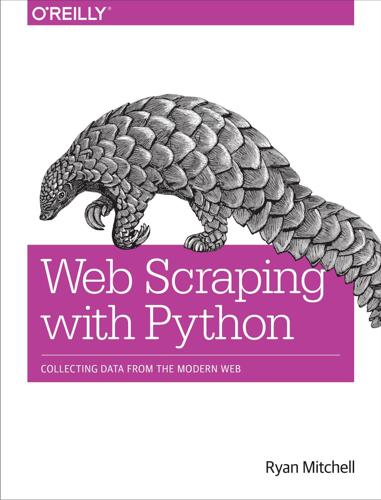
Web Scraping With Python: Collecting Data From the Modern Web
by
Ryan Mitchell
Published 14 Jun 2015
If you are storing copyrighted material that you have free access to in your own nonpublic database for the purposes of anal‐ ysis, that is fine. If you are publishing that database to your website for viewing or download, that is not fine. If you are analyzing that database and publishing statistics about word counts, a list of authors by prolificacy, or some other meta-analysis of the data, that is fine. If you are accompanying that meta-analysis with a few select quotes, or brief samples of data to make your point, that is likely also fine, but you might want to examine the “fair use” clause of the DMCA to make sure. Trespass to Chattels Trespass to chattels is fundamentally different from what we think of as “trespassing laws” in that it applies not to real estate or land but to moveable property (such as a server).
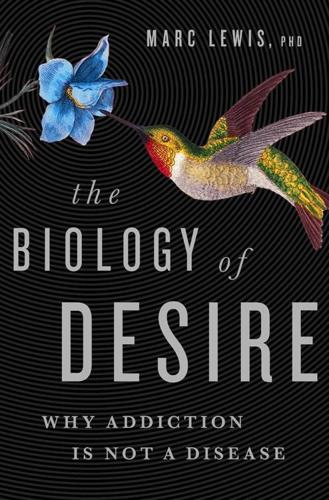
The Biology of Desire: Why Addiction Is Not a Disease
by
Marc Lewis Phd
Published 13 Jul 2015
From William James’s Habit (1887), quoted by Maria Popova at www.brainpickings.org/index.php/2012/09/25/william-james-on-habit. Chapter 3: When Craving Comes to Power (There are no notes for this chapter.) Chapter 4: The Tunnel of Attention 1. For a meta-analysis, see J. MacKillop, M. T. Amlung, L. R. Few, L. A. Ray, L. H. Sweet, and M. R. Munafo, “Delayed Reward Discounting and Addictive Behavior: A Meta-analysis,” Psychopharmacology 216 (2011): 305–321. Chapter 5: Donna’s Secret Identity (There are no notes for this chapter.) Chapter 6: Johnny Needs a Drink 1. Barry J. Everitt and Trevor W. Robbins, “From the Ventral to the Dorsal Striatum: Devolving Views of Their Role in Drug Addiction,” Neuroscience and Biobehavioral Reviews 37, no. 9, part A (2013): 1946–1954. 2.
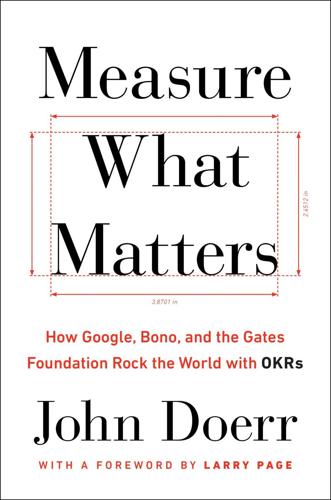
Measure What Matters: How Google, Bono, and the Gates Foundation Rock the World With OKRs
by
John Doerr
Published 23 Apr 2018
By the 1960s, management by objectives—or MBOs, as the process was known—had been adopted by a number of forward-thinking companies. The most prominent was Hewlett-Packard, where it was a part of the celebrated “H-P Way.” As these businesses trained their attention on a handful of top priorities, the results were impressive. In a meta-analysis of seventy studies, high commitment to MBOs led to productivity gains of 56 percent, versus 6 percent where commitment was low. Eventually, though, the limitations of MBOs caught up with them. At many companies, goals were centrally planned and sluggishly trickled down the hierarchy. At others, they became stagnant for lack of frequent updating; or trapped and obscured in silos; or reduced to key performance indicators (KPIs), numbers without soul or context.
…
Scientific management, Taylor wrote : Frederick Winslow Taylor, The Principles of Scientific Management (New York and London: Harper & Brothers, 1911). “crisp and hierarchical” : Andrew S. Grove, High Output Management (New York: Random House, 1983). “a principle of management” : Peter F. Drucker, The Practice of Management (New York: Harper & Row, 1954). In a meta-analysis : Robert Rodgers and John E. Hunter, “Impact of Management by Objectives on Organizational Productivity,” Journal of the American Psychological Association, April 1991. “just another tool” : “Management by Objectives,” The Economist , October 21, 2009. He sought to “create” : Grove, High Output Management .
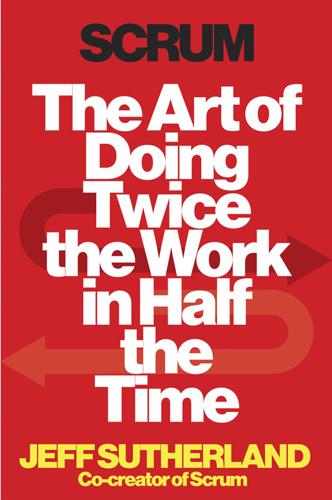
Scrum: The Art of Doing Twice the Work in Half the Time
by
Jeff Sutherland
and
Jj Sutherland
Published 29 Sep 2014
They make more money, they have better jobs, they graduate from college, and they live longer. It’s quite remarkable. Almost universally they’re just better at what they do. Happy people sell more stuff, make more money, cost less, are less likely to leave their jobs, are healthier, and live longer. Or as a 2005 paper that did a meta-analysis of some 225 papers with over 275,000 participants put it: Happiness leads to success in nearly every domain of our lives, including marriage, health, friendship, community involvement, creativity, and, in particular, our jobs, careers, and businesses.1 The meta-analysts showed that people who felt happy were more likely to secure job interviews, be evaluated more positively by supervisors, show superior performance and productivity, and be better managers.
…
Or as a 2005 paper that did a meta-analysis of some 225 papers with over 275,000 participants put it: Happiness leads to success in nearly every domain of our lives, including marriage, health, friendship, community involvement, creativity, and, in particular, our jobs, careers, and businesses.1 The meta-analysts showed that people who felt happy were more likely to secure job interviews, be evaluated more positively by supervisors, show superior performance and productivity, and be better managers. Here’s the really interesting part, though. It intuitively makes sense that happy people do better—it’s because of their success that they’re happy, right? Wrong. From that same meta-analysis: “Study after study shows that happiness precedes important outcomes and indicators of thriving.” That’s right. People aren’t happy because they’re successful; they’re successful because they’re happy. Happiness is a predictive measure. And performance improves even if people are only a little bit happier.
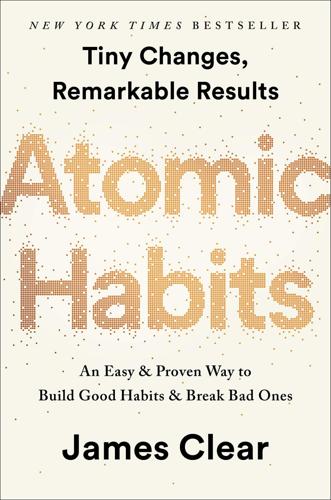
Atomic Habits: An Easy & Proven Way to Build Good Habits & Break Bad Ones
by
James Clear
Published 15 Oct 2018
CHAPTER 5 researchers in Great Britain began working: Sarah Milne, Sheina Orbell, and Paschal Sheeran, “Combining Motivational and Volitional Interventions to Promote Exercise Participation: Protection Motivation Theory and Implementation Intentions,” British Journal of Health Psychology 7 (May 2002): 163–184. implementation intentions are effective: Peter Gollwitzer and Paschal Sheeran, “Implementation Intentions and Goal Achievement: A Meta‐Analysis of Effects and Processes,” Advances in Experimental Social Psychology 38 (2006): 69–119. writing down the exact time and date of when you will get a flu shot: Katherine L. Milkman, John Beshears, James J. Choi, David Laibson, and Brigitte C. Madrian, “Using Implementation Intentions Prompts to Enhance Influenza Vaccination Rates,” Proceedings of the National Academy of Sciences 108, no. 26 (June 2011): 10415–10420.
…
Benjamin Franklin: Benjamin Franklin and Frank Woodworth Pine, Autobiography of Benjamin Franklin (New York: Holt, 1916), 148. Don’t break the chain of creating every day: Shout-out to my friend Nathan Barry, who originally inspired me with the mantra, “Create Every Day.” people who track their progress on goals like losing weight: Benjamin Harkin et al., “Does Monitoring Goal Progress Promote Goal Attainment? A Meta-analysis of the Experimental Evidence,” Psychological Bulletin 142, no. 2 (2016), doi:10.1037/bul0000025. those who kept a daily food log lost twice as much weight as those who did not: Miranda Hitti, “Keeping Food Diary Helps Lose Weight,” WebMD, July 8, 2008, http://www.webmd.com/diet/news/20080708/keeping-food-diary-helps-lose-weight; Kaiser Permanente, “Keeping a Food Diary Doubles Diet Weight Loss, Study Suggests,” Science Daily, July 8, 2008, https://www.sciencedaily.com/releases/2008/07/080708080738.htm; Jack F.
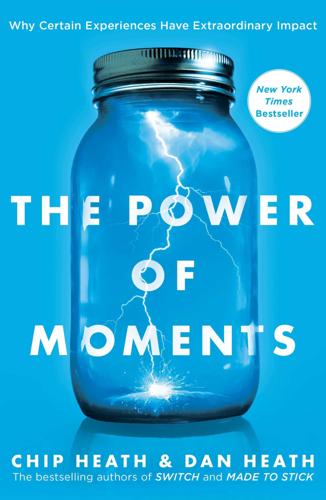
The Power of Moments: Why Certain Experiences Have Extraordinary Impact
by
Chip Heath
and
Dan Heath
Published 2 Oct 2017
(Drug Abuse Resistance Education), launched in 1983, which invites police officers into schools to inform students about the harms of drugs and to encourage a drug-free lifestyle. It’s an admirable and well-intentioned intervention, and it’s popular. It’s the most widely used drug prevention program in the United States. But the evidence from several studies is clear: It doesn’t work. One meta-analysis found that teens enrolled in D.A.R.E. were just as likely to use drugs as those who weren’t. Why doesn’t D.A.R.E. work? Clues about the program’s flaws can be found in the work of Pim Cuijpers, who studied what made antidrug programs successful. Cuijpers’s research had led to a simple conclusion: Programs that reduce drug use employ interactive methods, while ineffective programs don’t.
…
“Rabbis in Training Receive Lessons in Real-Life Trauma,” New York Times, http://www.nytimes.com/2010/02/10/nyregion/10acting.html, and Dan’s interview in February 2017 with Rabbi Menachem Penner. Thanks to Rabbi Naphtali Lavenda for calling our attention to the story. Failure of D.A.R.E. An accessible popular account of the Wei Pan meta-analysis is in http://www.scientificamerican.com/article/why-just-say-no-doesnt-work/. Pim Cuijpers’s review (2002) is “Effective Ingredients of School-Based Drug Prevention Programs: A Systematic Review,” Addictive Behaviors 27: 1012. Plant a tough question. A response to an author survey on November 2016. 85% of workers felt unable to raise issue.
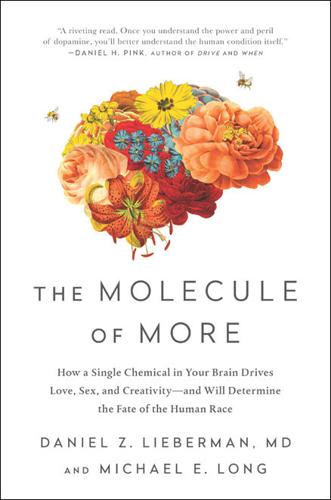
The Molecule of More: How a Single Chemical in Your Brain Drives Love, Sex, and Creativityand Will Det Ermine the Fate of the Human Race
by
Daniel Z. Lieberman
and
Michael E. Long
Published 13 Aug 2018
International Journal of Impotence Research, 17(3), 283–284. Fisher, H. (2004). Why we love: The nature and chemistry of romantic love. New York: Macmillan. Stoléru, S., Fonteille, V., Cornélis, C., Joyal, C., & Moulier, V. (2012). Functional neuroimaging studies of sexual arousal and orgasm in healthy men and women: A review and meta-analysis. Neuroscience & Biobehavioral Reviews, 36(6), 1481–1509. Georgiadis, J. R., Kringelbach, M. L., & Pfaus, J. G. (2012). Sex for fun: A synthesis of human and animal neurobiology. Nature Reviews Urology, 9(9), 486–498. Garcia, J. R., MacKillop, J., Aller, E. L., Merriwether, A. M., Wilson, D. S., & Lum, J.
…
Laskas, J. M. (2014, December 21). Buzz Aldrin: The dark side of the moon. GQ. Retrieved from http://www.gq.com/story/buzz-aldrin Cortese, S., Moreira-Maia, C. R., St. Fleur, D., Morcillo-Peñalver, C., Rohde, L. A., & Faraone, S. V. (2015). Association between ADHD and obesity: A systematic review and meta-analysis. American Journal of Psychiatry, 173(1), 34–43. Goldschmidt, A. B., Hipwell, A. E., Stepp, S. D., McTigue, K. M., & Keenan, K. (2015). Weight gain, executive functioning, and eating behaviors among girls. Pediatrics, 136(4), e856–e863. O’Neal, E. E., Plumert, J. M., McClure, L. A., & Schwebel, D.
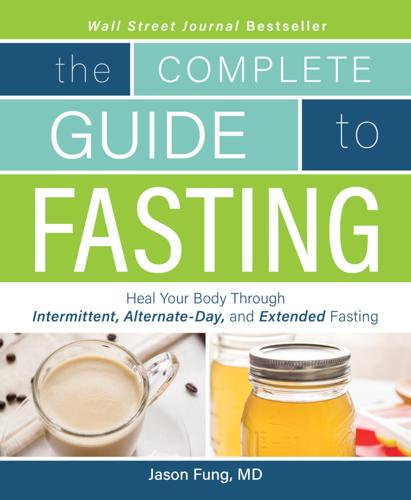
Complete Guide to Fasting: Heal Your Body Through Intermittent, Alternate-Day, and Extended Fasting
by
Jimmy Moore
and
Jason Fung
Published 18 Oct 2016
In one study, LDL did decrease marginally by 5 percent, but HDL also decreased by 6 percent—since both “bad” and “good” cholesterol dropped, the overall risk profile was not improved. Despite all the evidence to the contrary, national dietary guidelines in the United States and United Kingdom were introduced in 1977 and 1983 recommending adhering to a low-fat diet in order to reduce the risk of heart disease. A careful meta-analysis and systematic review by Zoe Harcombe confirmed that there was no evidence that these recommendations would be effective, either at the time of publication or today. Millions of people follow a low-fat, low-cholesterol diet because they think that it’s good for their heart, without realizing that these measures were long ago proven ineffective.
…
Varady, “Improvements in Coronary Heart Disease Risk Indicators by Alternate-Day Fasting Involve Adipose Tissue Modulations,” Obesity 18, no. 11 (2010): 2152–9. Zoë Harcombe, Julien S. Baker, Stephen Mark Cooper, Bruce Davies, Nicholas Sculthorpe, James J. DiNicolantonio, and Fergal Grace, “Evidence from Randomised Controlled Trials Did Not Support the Introduction of Dietary Fat Guidelines in 1977 and 1983: A Systematic Review and Meta-analysis,” Open Heart 2, no. 1 (2015): e00196, doi: 10.1136/openhrt-2014-000196. Chapter 9 WHAT YOU NEED TO KNOW ABOUT HUNGER I have discussed the therapeutic use of fasting for obesity and type 2 diabetes with hundreds of patients over the years. Most, if not all, people understand fundamentally why this treatment is undeniably effective: If you don’t eat, you will lose weight.
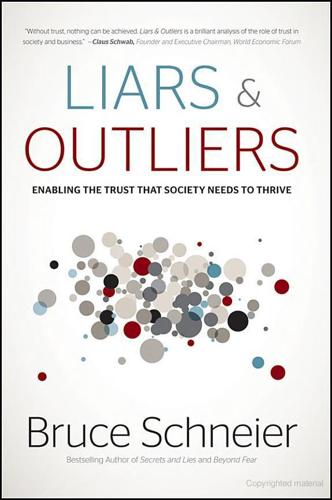
Liars and Outliers: How Security Holds Society Together
by
Bruce Schneier
Published 14 Feb 2012
Hessel Oosterbeek, Randolph Sloof, and Gijs van de Kuilen (2004), “Cultural Differences in Ultimatum Game Experiments: Evidence From a Meta-Analysis,” Experimental Economics, 7:171–88. how the game works Werner Güth, Rolf Schmittberger, and Bernd Schwarze (1982), “An Experimental Analysis of Ultimatum Bargaining,” Journal of Economic Behavior & Organization, 3:267–88. turn down offers Hessel Oosterbeek, Randolph Sloof, and Gijs van de Kuilen (2004), “Differences in Ultimatum Game Experiments: Evidence from a Meta-Analysis,” Experimental Economics, 7:171–88. cultural backgrounds Donna L. Bahry (2004), “Trust in Transitional Societies: Experimental Results from Russia,” Paper presented at the American Political Science Association Meeting, Chicago.
…
Public Relations Tactics, 9:7,22. A small complaint Daniel J. Solove (2007), The Future of Reputation: Gossip, Rumor, and Privacy on the Internet, Yale University Press. isn't an effective Daniel Balliet, Laetitia B. Mulder, and Paul A.M. Van Lange (2011), “Reward, Punishment, and Cooperation: A Meta-Analysis,” Psychological Bulletin, 137:594–615. Maine lobstermen James M. Acheson (Apr 1972), “Territories of the Lobstermen,” Natural History Magazine, 81 (4): 60–9. Shame is a common Thomas J. Scheff (2000), “Shame and the Social Bond: A Sociological Theory,” Sociological Theory, 18:84–99. excessive CEO pay Sandeep Gopalan (2007), “Shame Sanctions and Excessive CEO Pay,” Delaware Journal of Corporate Law, 32:757–97.

The God Delusion
by
Richard Dawkins
Published 12 Sep 2006
Sociologists studying British children have found that only about one in twelve break away from their parents’ religious beliefs. As you might expect, different researchers measure things in different ways, so it is hard to compare different studies. Meta-analysis is the technique whereby an investigator looks at all the research papers that have been published on a topic, and counts up the number of papers that have concluded one thing, versus the number that have concluded something else. On the subject of religion and IQ, the only meta-analysis known to me was published by Paul Bell in Mensa Magazine in 2002 (Mensa is the society of individuals with a high IQ, and their journal not surprisingly includes articles on the one thing that draws them together).57 Bell concluded: ‘Of 43 studies carried out since 1927 on the relationship between religious belief and one’s intelligence and/or educational level, all but four found an inverse connection.
…
On the subject of religion and IQ, the only meta-analysis known to me was published by Paul Bell in Mensa Magazine in 2002 (Mensa is the society of individuals with a high IQ, and their journal not surprisingly includes articles on the one thing that draws them together).57 Bell concluded: ‘Of 43 studies carried out since 1927 on the relationship between religious belief and one’s intelligence and/or educational level, all but four found an inverse connection. That is, the higher one’s intelligence or education level, the less one is likely to be religious or hold “beliefs” of any kind.’ A meta-analysis is almost bound to be less specific than any one of the studies that contributed to it. It would be nice to have more studies along these lines, as well as more studies of the members of elite bodies such as other national academies, and winners of major prizes and medals such as the Nobel, the Crafoord, the Fields, the Kyoto, the Cosmos and others.
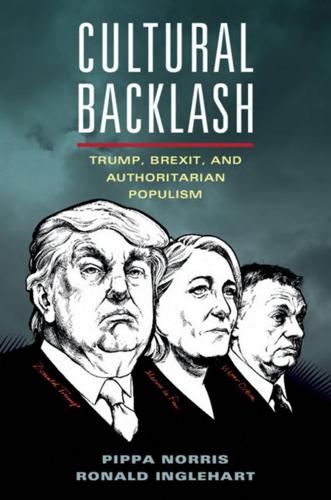
Cultural Backlash: Trump, Brexit, and Authoritarian Populism
by
Pippa Norris
and
Ronald Inglehart
Published 31 Dec 2018
President Trump speaking at the October 12, 2017 ‘Values Voters’ forum in Washington DC. www.realclearpolitics.com/video/2017/10/13/trump_how_ times_have_changed_but_now_theyre_changing_back_again.html. 51. Elizabeth Noelle-Neuman. 1984. The Spiral of Silence: Public Opinion – Our Social Skin. Chicago: University of Chicago Press; J.C. Glynn, F.A. Hayes, and J. Shanahan. 1997. ‘Perceived support for one’s opinions and willingness to speak out: A meta-analysis of survey studies on the “spiral of silence”.’ Public Opinion Quarterly 61 (3): 452–463. 52. Ronald Inglehart and Pippa Norris. 2003.Rising Tide: Gender Equality and Cultural Change around the World. New York: Cambridge University Press. 53. Michael Heaney. 2018. ‘Making protest great again.’ Contexts 17(1): 42–47. 54.
…
Although subjective financial insecurity is a significant predictor of lower turnout, having experienced unemployment was not important, and those less satisfied with the state of the national economy were more likely to vote. Overall, the model explained about one-fifth of the variation in the propensity to vote. Meta- analysis of the extensive research literature suggests that other factors reported in other studies may also play an important role, such as micro-level political interest, media attention, and the strength of partisan identification, as well as macro-level variations in electoral contexts, such as the type of Majoritarian or Proportional Representation electoral system, the closeness of the race, and the frequency of contests.53 Our analysis largely confirms the typical social profile of voters, but it indicates that the Interwar and Baby Boom generations are far, far more likely to participate in elections than the Millennials – to a considerably greater extent than previous research has indicated.
…
Gabriel Almond and Sidney Verba. 1963. The Civic Culture. Princeton, NJ: Princeton University Press. 52. Sidney Verba, Norman Nie, and Jae-on Kim. 1978. Participation and Political Equality. New York: Cambridge University Press. 53. Kaat Smets and Carolien van Ham. 2013. ‘The embarrassment of riches? A meta-analysis of individual-level research on voter turnout.’ Electoral Studies 32 (2): 344–359. 54. Terri E. Givens. 2004. ‘The radical right gender gap.’ Comparative Political Studies 37 (1): 30–54. 55. Pippa Norris. 2005. Radical Right: Voters and Parties in the Electoral Market. New York: Cambridge University Press. 9 Party Fortunes and Electoral Rules In 2016, after the Brexit decision in June and then Trump’s victory in November, widespread fears arose about an unstoppable authoritarian-populist surge at the polls, a domino effect disrupting European elections.
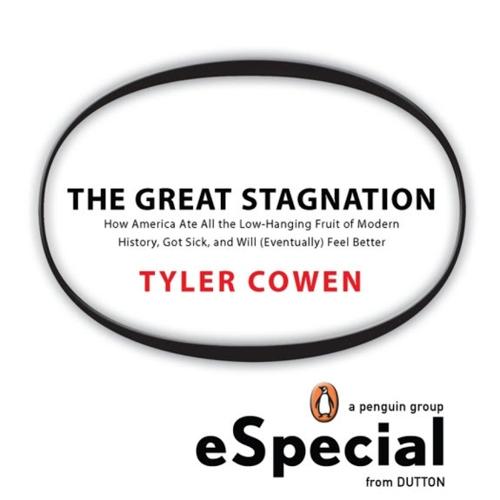
The Great Stagnation
by
Tyler Cowen
Published 24 Jan 2011
: The Effect of School Resources on Student Achievement and Adult Success, Washington, DC: Brookings Institution Press, 1996, although many of the papers in that volume still are skeptical about the money-results connection. For one defense of educational spending and its connection to outcomes, see Larry V. Hedges, Richard D. Laine, and Rob Greenwald, “An Exchange: Part I: Does Money Matter? A Meta-Analysis of Studies of the Effects of Differential School Inputs on Student Outcomes,” Educational Researcher, April 1994, 23, 3, pp. 5-14. A response to this perspective can be found in the recent Eric A. Hanushek and Alfred A. Lindseth, Schoolhouses, Courthouses, and Statehouses: Solving the Funding-Achievement Puzzle in America’s Public Schools, Princeton: Princeton University Press, 2009.
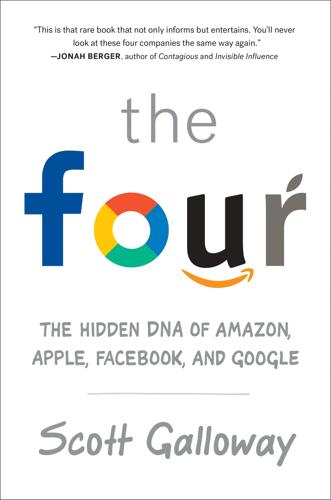
The Four: How Amazon, Apple, Facebook, and Google Divided and Conquered the World
by
Scott Galloway
Published 2 Oct 2017
September 7, 2009. http://www.telegraph.co.uk/journalists/richard-alleyne/6146411/Humans-evolved-to-believe-in-God.html. 5. Winseman, Albert L. “Does More Educated Really = Less Religious?” Gallup. February 4, 2003. http://www.gallup.com/poll/7729/does-more-educated-really-less-religious.aspx. 6. Rathi, Akshat. “New meta-analysis checks the correlation between intelligence and faith.” Ars Technica. August 11, 2013. https://arstechnica.com/science/2013/08/new-meta-analysis-checks-the-correlation-between-intelligence-and-faith/. 7. Carey, Benedict. “Can Prayers Heal? Critics Say Studies Go Past Science’s Reach.” New York Times. October 10, 2004. http://www.nytimes.com/2004/10/10/health/can-prayers-heal-critics-say-studies-go-past-sciences-reach.html. 8.

The Eureka Factor
by
John Kounios
Published 14 Apr 2015
It just means that incubation isn’t equally effective in all kinds of situations. More precision was needed, and two psychological scientists, Ut Na Sio and Thomas Ormerod, recently put the question to rest. They took the findings of all available prior studies of incubation and performed a statistical “meta-analysis” that essentially combined them all into one giant high-resolution study. Their central conclusion was that incubation is real—if a person takes a break from a problem and returns to it later, then the break can increase the likelihood that she will solve the problem (relative to uninterrupted work).
…
Recent research suggests that sleep can heighten opportunistic assimilation of clues. The effects of sleep on prospective memory are described in M. K. Scullin and M. A. McDaniel, “Remembering to Execute a Goal: Sleep on It!,” Psychological Science 21 (2010): 1028–35. Waking Incubation 1 Sio and Ormerod’s meta-analysis of past incubation research is described in U. N. Sio and T. C. Ormerod, “Does Incubation Enhance Problem Solving?: A Meta-Analytic Review,” Psychological Bulletin 135 (2009): 94–120. Fatigued Brains, Automatic Thinking, and the Real Unconscious Mind 1 Research on “attention restoration theory” backs up the idea that the brain’s executive functions can be rejuvenated by even relatively short periods of rest.
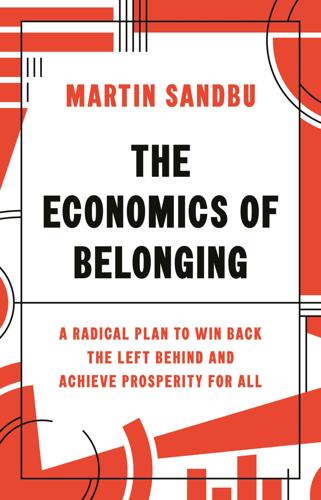
The Economics of Belonging: A Radical Plan to Win Back the Left Behind and Achieve Prosperity for All
by
Martin Sandbu
Published 15 Jun 2020
The evidence is reviewed by Elhanan Helpman, “Globalisation and Wage Inequality,” Journal of the British Academy 5 (July 2017): 125–62, https://doi.org/10.5871/jba/005.125. See also Philipp Heimberger, “Does Economic Globalisation Affect Income Inequality? A Meta-analysis” (Vienna Institute for International Economic Studies Working Paper 165, October 2019), https://wiiw.ac.at/does-economic-globalisation-affect-income-inequality-a-meta-analysis-p-5044.html. This metastudy summarises 123 peer-reviewed articles on globalisation’s effect on income inequality. It finds a small positive relationship—smaller with trade integration than with financial globalisation—in both poor and rich countries, which suggests that any inequality effect of trade integration is similar to that caused by technological advances pushing up the need for skilled labour. 15.
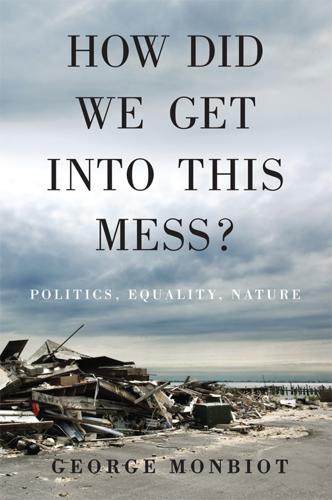
How Did We Get Into This Mess?: Politics, Equality, Nature
by
George Monbiot
Published 14 Apr 2016
One paper found, after fifteen variables had been taken into account, a fourfold increase in homicides in US counties with the highest lead pollution.7 Another discovered that lead levels appeared to explain 90 per cent of the difference in rates of aggravated assault between various American cities.8 A study in Cincinnati finds that young people prosecuted for delinquency are four times more likely than the general population to have high levels of lead in their bones.9 A meta-analysis (a study of studies) of nineteen papers found no evidence that other factors could explain the correlation between exposure to lead and conduct problems among young people.10 Is it really so surprising that a highly potent nerve toxin causes behavioural change? The devastating and permanent impacts of even very low levels of lead on IQ have been known for many decades.
…
Mielke and Sammy Zahran, 2012, ‘The Urban Rise and Fall of Air Lead (Pb) and the Latent Surge and Retreat of Societal Violence’, Environment International, vol. 43, sciencedirect.com. 6Bureau of Justice, no date given, ‘Homicide Trends in the US’, bjs.ojp. usdoj.gov. 7Lynch and Stretesky, ‘The Relationship between Lead and Crime’. 8Mielke and Zahran, ‘The Urban Rise and Fall of Air Lead (Pb) and the Latent Surge and Retreat of Societal Violence’. 9Herbert L. Needleman et al., 2002, ‘Bone Lead Levels in Adjudicated Delinquents: A Case Control Study’, Neurotoxicology and Teratology, vol. 24. 10David K. Marcus, Jessica J. Fulton and Erin J. Clarke, 2010, ‘Lead and Conduct Problems: A Meta-Analysis’, Journal of Clinical Child and Adolescent Psychology, vol.39, no. 2, tandfonline.com. 11R. K. Byers and E. E. Lord, 1943, ‘Late Effects of Lead Poisoning on Mental Development’, American Journal of Diseases of Children, vol. 66. 12Kim M. Cecil et al., 2008, ‘Decreased Brain Volume in Adults with Childhood Lead Exposure’, Public Library of Science (PLOS) Medicine, vol. 5, no. 5, journals.plos.org. 13Joel T.

The Wisdom of Psychopaths: What Saints, Spies, and Serial Killers Can Teach Us About Success
by
Kevin Dutton
Published 15 Oct 2012
Triumphed over it …” For coverage of this quote in the media, see Camille Mann, “Elizabeth Smart Was Not Severely Damaged by Kidnapping, Defense Lawyers Claim,” CBS News, May 19, 2011, www.cbsnews.com/8301-504083_162-20064372-504083.html. 11 In a recent study by the Crime and Justice Centre at King’s College, London … For an in-depth analysis of youth crime in the U.K., including prevalence, motivation, and risk factors, see Debbie Wilson, Clare Sharp, and Alison Patterson, “Young People and Crime: Findings from the 2005 Offending, Crime and Justice Survey” (London: Home Office, 2005). 12 If the results of a recent study by Sara Konrath … Sara Konrath, Edward H. O’Brien, and Courtney Hsing, “Changes in Dispositional Empathy in American College Students over Time: A Meta-Analysis,” Personality and Social Psychology Review 15, no. 2 (2011): 180–98, doi:10.1177/1088868310377395. 13 the Interpersonal Reactivity Index … For the background to, and development of, the IRI, see Mark H. Davis, “A Multidimensional Approach to Individual Differences in Empathy,” JSAS Catalog of Selected Documents in Psychology 10, no. 85 (1980); and M.
…
News (Health), May 28, 2010, http://health.usnews.com/health-news/family-health/brain-and-behavior/articles/2010/05/28/todays-college-students-more-likely-to-lack-empathy. 15 More worrying still, according to Jean Twenge … See Jean M. Twenge, Sara Konrath, Joshua D. Foster, W. Keith Campbell, and Brad J. Bushman, “Egos Inflating Over Time: A Cross-Temporal Meta-Analysis of the Narcissistic Personality Inventory,” Journal of Personality 76, no. 4 (2008a): 875–901, doi:10.1111/j.1467-6494.2008.00507.x; Twenge et al., “Further Evidence of an Increase in Narcissism Among College Students,” Journal of Personality 76 (2008b): 919–27, doi:10.1111/j.1467-6494.2008.00509.x. 16 Many people see the current group of college students … See U.S.
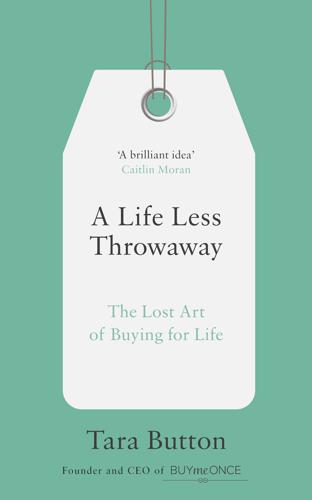
A Life Less Throwaway: The Lost Art of Buying for Life
by
Tara Button
Published 8 Feb 2018
Marketers Respond’, Kidscreen, 15 November 2000. 7.Brian L. Wilcox, et al., Report of the APA Task Force on Advertising and Children, American Psychological Association, 20 February 2004, https://www.apa.org/pi/families/resources/advertising-children.pdf. 8.Raymond W. Preiss (ed.), Mass Media Effects Research: Advances through meta-analysis (Routledge, 2013). 9.J. L. Weicha, K. E. Peterson, D. S. Ludwig, et al., ‘When Children Eat What They Watch: Impact of television viewing on dietary intake in youth’, Archives of Pediatric and Adolescent Medicine, 60 (2006), 436–42. 10.Marvin E. Goldberg and Gerald J. Gorn, ‘Some Unintended Consequences of TV Advertising to Children’, Journal of Consumer Research, 5: 1 (1978), 22–9. 11.Cai and Zhao, 2010, cited in ‘Advertising to Children and Teens: Current Practices’, Common Sense Media, spring 2014, https://www.commonsensemedia.org/file/csm-advertisingresearchbrief-20141pdf/download. 12.http://www.commercialfreechildhood.org/sites/default/files/babies.pdf. 13.http://marketinglaw.osborneclarke.com/retailing/colgates-80-of-dentists-recommend-claim-under-fire/. 14.Bain & Company, Diamond Industry Report for Antwerp World Diamond Centre (AWDC), 2011. 15.Haribo, Just Too Good, Quiet Storm, 27 January 2012. 16.Niels Van de Ven Marcel Zeelenberg and Rik Pieters, ‘The Envy Premium in Product Evaluation’, Journal of Consumer Research, 37: 6, 1 April 2011, 984–98, https://doi.org/10.1086/657239. 17.http://bgr.com/2015/06/17/samsung-advertising-fails-iphone/. 18.Tatiana Pilieva, First Kiss, 10 March 2014, https://www.youtube.com/watch?
…
Moran, Caitlin, How to Be a Woman (Ebury Press, 2012). Papanek, Victor, Design for the Real World: Human ecology and social change (Academy Chicago Publishers, 1971, 1985). Pine, Professor Karen J., Mind What You Wear: The psychology of fashion (Amazon Media, 2014). Preiss, Raymond W. (ed.), Mass Media Effects Research: Advances through meta-analysis (Routledge, 2013). Quant, Mary, Quant on Quant (Cassell, 1966; V&A Publishing, 2012). Rubin, Gretchen, The Happiness Project (HarperCollins, 2009). Schor, Juliet B., Born to Buy: The commercialized child and the new consumer culture (Schribner, 2004). Sheldon, Roy, and Arens, Egmont, Consumer Engineering: A new technique for prosperity (Harper & Bros., 1932).
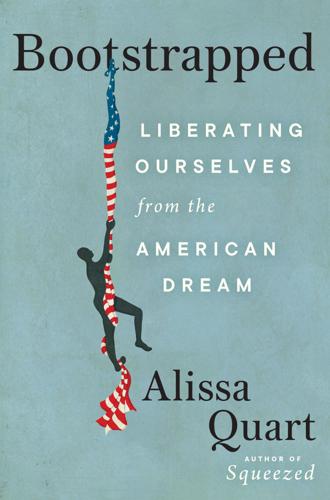
Bootstrapped: Liberating Ourselves From the American Dream
by
Alissa Quart
Published 14 Mar 2023
Cooper, “The Expanding Class Divide in Happiness in the United States, 1972–2016,” Emotion (2020, advance online publication), https://doi.org/10.1037/emo0000774. “statistically significant positive relationship between income inequality and risk of depression”: Vikram Patel, Jonathan K. Burns, Monisha Dhingra, Leslie Tarver, Brandon A. Kohrt, and Crick Lund, “Income Inequality and Depression: a Systematic Review and Meta-Analysis of the Association and a Scoping Review of Mechanisms,” World Psychiatry, February 17, 2018: 76–89, https://www.ncbi.nlm.nih.gov/pmc/articles/PMC5775138/. as if they were already in some way suspect: Thomas E. Trail and Benjamin R. Karney, “What’s (Not) Wrong with Low-Income Marriages,” Journal of Marriage and Family 73, no. 3 (May 24, 2012): 413–27, https://onlinelibrary.wiley.com/doi/abs/10.1111/j.1741-3737.2012.00977.x.
…
Cheek and Eldar Shafir, “The Thick Skin Bias in Judgments About People in Poverty,” Behavioural Public Policy, Cambridge University Press, August 14, 2020: 1–26, https://www.cambridge.org/core/journals/behavioural-public-policy/article/thick-skin-bias-in-judgments-about-people-in-poverty/2A8CCE13402F69C2B0D1145BE5270E1D. the American Sociological Association’s Journal of Health and Social Behavior: Vikram Patel et al., “Income Inequality and Depression: A Systematic Review and Meta-Analysis of the Association and a Scoping Review of Mechanisms,” World Psychiatry 17, no. 1 (February 2018): 76–89, https://www.ncbi.nlm.nih.gov/pmc/articles/PMC5775138/. Chapter 15: Volunteering Ourselves our volunteerism also has a dark side: Nina Eliasoph, Making Volunteers: Civic Life at Welfare’s End (Princeton, NJ: Princeton University Press, 2011).
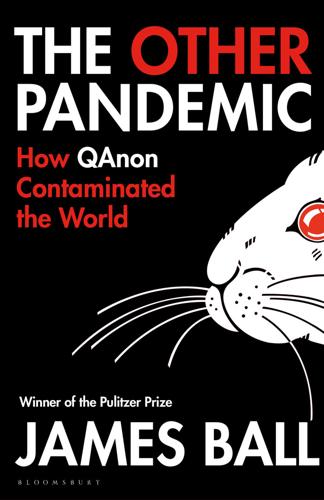
Other Pandemic: How QAnon Contaminated the World
by
James Ball
Published 19 Jul 2023
is a phrase so beloved of conspiracy movements that it’s become something of an affectionate cliché. 13. It really does: Stella Talic et al., ‘Effectiveness of public health measures in reducing the incidence of covid-19, SARS-CoV-2 transmission, and covid-19 mortality: systematic review and meta-analysis’, www.bmj.com, 18 November 2021. 14. Patrick Saunders-Hastings, ‘Effectiveness of personal protective measures in reducing pandemic influenza transmission: A systematic review and meta-analysis’, Epidemics, 20 (September 2017), www.sciencedirect.com. 15. Correct for the UK Amazon site as at April 2022. 16. Zachary Cohen, ‘China and Russia “weaponized” QAnon conspiracy around time of US Capitol attack, report says’, https://edition.cnn.com, 19 April 2021. 17.
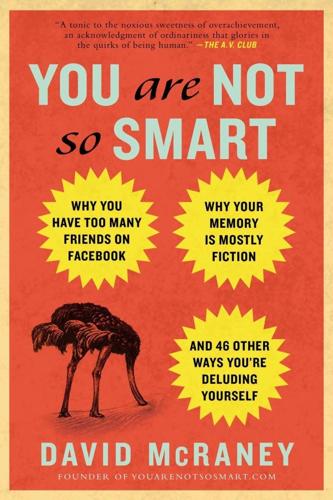
You Are Not So Smart
by
David McRaney
Published 20 Sep 2011
Furthermore, Davison saw such censorship as arising out of a belief that some messages might harm “more impressionable minds.” Perloff and Paul found that the third person effect is magnified when you already have a negative opinion of the source, or if you personally think the message is about something you aren’t interested in. In all, their meta-analysis showed the majority of people believe they aren’t like the majority of people. You don’t want to believe you can be persuaded, and one way of maintaining this belief is to assume that all the persuasion flying through the air must be landing on other targets. Otherwise how could it be successful?
…
H., & Savitsky, K. (2000). The spotlight effect in social judgment: An egocentric bias in estimates of the salience of one’s own actions and appearance. Journal of Personality and Social Psychology, 78(2), 211–222. The Third Person Effect Bryant P., Salwen, M. B., & Dupagne M. (2000). The third-person effect: A meta-analysis of the perceptual hypothesis. Mass Communication and Society 3(1), 57–85. Johansson, B. (2005). The third-person effect. Only a media perception? Nordicom Review 26(1), 81–94. Perloff, R. M. (1993). Third-person effect research 1983–1992: A review and synthesis. International Journal of Public Opinion Research 5(2), 167–184.

The Food Revolution: How Your Diet Can Help Save Your Life and Our World
by
John Robbins
Published 14 Sep 2010
Daily vegetable intake during pregnancy negatively associated to islet autoimmunity in the offspring-The ABIS study. Pediatr Diabetes. Advanced access published September 16, 2009. DOI: 10.1111 /j.1399-5448.2009.00563.x. xvii. Aune D, Ursin G, Veierod MB. Meat consumption and the risk of type 2 diabetes: a systematic review and meta-analysis of cohort studies. Diabetologia. 2009;52:2277-2287. xviii. Koh WP, Wu AH, Wang R, et al. Gender-specific associations between soy and risk of hip fracture in the Singapore Chinese Health Study. Ain J Epi- deiniol. 2009;170:901-909. xix. Kathy Freston, "Vegetarian is the new Prins," Huffington Post, Jan 18, 2007.
…
Phillips, R., et al., "Coronary Heart Disease Mortality among Seventh-Day Adventists with Differing Dietary Habits," American Journal of Clinical Nutrition 31 (1978):5191-8; Burr, M., et al., "Vegetarianism, Dietary Fiber, and Mortality," American Journal of Clinical Nutrition 36 (1982):873-7; Burr, M., et al., "Heart Disease in British Vegetarians," American Journal of Clinical Nutrition 48 (1988):830-2; Thorogood, M., et al., "Risk of Death from Cancer and Ischaemic Heart Disease in Meat and Non-meat Eaters," British Medical Journal 308 (1994):1666-71; Berkel, J., et al., "Mortality Pattern and Life Expectancy of Seventh-Day Adventists in the Netherlands," International Journal of Epidemiology 12 (1983):455-9; Chang-Claude, J., et al., "Mortality Pattern of German Vegetarians after 11 Years of Followup," Epidemiology 3 (1992):395-401. 13. Resnicow, et al., "Diet and Serum Lipids in Vegan Vegetarians." See also Messina and Messina, The Dietitian's Guide to Vegetarian Diets. 14. Anderson, J. W., et al., "Meta-Analysis of the Effects of Soy Protein Intake on Serum Lipids," New England Journal of Medicine 333 (1995):276-82. See also Carroll, K. K., "Dietary Protein in Relation to Plasma Cholesterol Levels and Atherosclerosis," Nutrition Review 36 (1978):1-5. 15. Ibid. 16. "Myths and Facts about Beef Production." 17.
…
Draper, A., et al., "The Energy and Nutrient Intakes of Different Types of Vegetarian ...," British Journal of Nutrition 69 (1993):3-19; Carlson, et al., "Vegan, Vegetarian and Omnivore Diets"; Hughes, et al., "Riboflavin Levels in the Diet and Breast Milk of Vegans and Omnivores," Proceedings of Nutritional Science 38 (1979):95A; Janelle, et al., "Nutrient Intakes and Eating Behavior Scores," 180-6. 36. Davis, et al., "Rebuttal." 37. Ibid. 38. Ibid. 39. Anderson J. W., et al., "Meta-Analysis of the Effects of Soy Protein Intake on Serum Lipids," New England Journal of Medicine 333 (1995):276-82; Sirtori, C. R., et al., "Double-Blind Study of the Addition of High-Protein Soya Milk vs. Cow's Milk to the Diet of Patients ... ," British Journal of Nutrition 82 (1999):91-6. 40. Jacobsen, B.
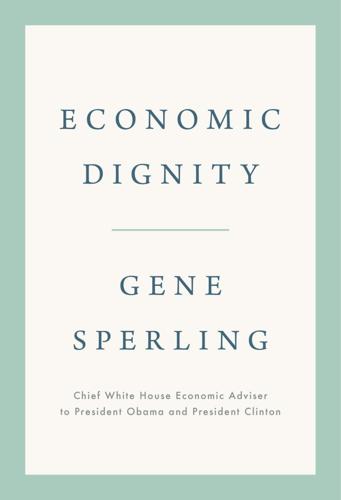
Economic Dignity
by
Gene Sperling
Published 14 Sep 2020
Beyond a higher minimum wage or unionization or even free college, we need comprehensive investment throughout the pipeline from birth through college to attack the disadvantage of the accident of birth for those born into poverty. Indeed, “direct investments in the health and education of low-income children” all the way into their mid-twenties have the highest return on investment of government programs, with those programs often paying for themselves over time, according to a meta-analysis conducted by Harvard economists Nathaniel Hendren and Ben Sprung-Keyser.67 EQUAL OPPORTUNITIES MUST START EARLY Equal opportunities start with universal quality early education. As Isabel Sawhill and Jens Ludwig summarize, “Findings from a number of rigorously conducted studies of early childhood and elementary school programs suggest that intervening early, often, and effectively in the lives of disadvantaged children from birth to age ten may substantially improve their life chances for higher educational attainment and greater success in the labor market, thereby helping impoverished children avoid poverty in adulthood.”68 Nobel Prize–winning economist James Heckman and his coauthors famously found that every $1 investment in quality early learning initiatives returns $8.60, with the greatest gains coming from the most intensive investments.69 Yet despite the strong evidence that early education provides major long-term benefits and that the achievement gap starts in early childhood, the United States spends less than half of the OECD average for the size of our economy on childcare and early childhood education—only 0.3 percent of GDP.70 The result?
…
Patrick Oakford, Cara Brumfield, Casey Goldvale, Laura Tatum, Margaret diZerega, and Fred Patrick, “Investing in Futures: Economic and Fiscal Benefits of Postsecondary Education in Prison,” Vera Institute of Justice, January 2019, https://storage.googleapis.com/vera-web-assets/downloads/Publications/investing-in-futures-education-in-prison/legacy_downloads/investing-in-futures.pdf. 51. Robert Bozick, Jennifer Steele, Lois Davis, and Susan Turner, “Does Providing Inmates with Education Improve Post-Release Outcomes? A Meta-Analysis of Correctional Education Programs in the United States,” Journal of Experimental Criminology 14, no. 3 (2018): 389–428, https://perma.cc/NKE4-KDFK. 52. E. Ann Carson, “Prisoners in 2014,” U.S. Department of Justice, September 2015, https://www.bjs.gov/content/pub/pdf/p14.pdf. 53. Mike McPhate, “California Today: Firefighters, at Less Than $2 an Hour,” New York Times, September 1, 2017, https://www.nytimes.com/2017/09/01/us/california-today-firefighters-at-less-than-2-an-hour.html. 54.
…
Krueger, “Minimum Wages and Employment: A Case Study of the Fast-Food Industry in New Jersey and Pennsylvania,” American Economic Review 84, no. 4 (September 1994): 772, http://davidcard.berkeley.edu/papers/njmin-aer.pdf. 16. Cooper, Raising the Federal Minimum Wage, 16. In addition, economists Paul Wolfson and Dale Belman, in a meta-analysis of thirty-seven published studies on the minimum wage and job growth, concluded there is “no support for the proposition that the minimum wage has had an important effect on U.S. employment.” Paul J. Wolfson and Dale Belman, “15 Years of Research on U.S. Employment and the Minimum Wage,” abstract (Tuck School of Business Working Paper no. 2705499, Tuck School of Business at Dartmouth, Hanover, NH, December 2016), https://papers.ssrn.com/sol3/papers.cfm?
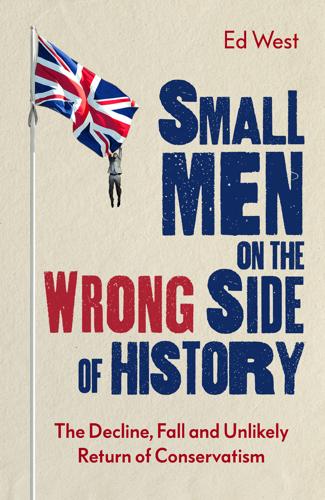
Small Men on the Wrong Side of History: The Decline, Fall and Unlikely Return of Conservatism
by
Ed West
Published 19 Mar 2020
Yet reason is an illusion, and most research tends to support David Hume’s idea that emotions are in charge of the brain when politics is concerned; we just use reason when we want to come up with good explanations for how we reached our prejudices.10 The idea that one side of the political divide is ‘rational’ goes at least back to Shelley, and yet there is overwhelming evidence that bias is pretty evenly split between Left and Right. According to one meta-analysis of fifty-one experimental studies using eighteen thousand volunteers, liberals and conservatives ‘were biased to very similar degrees’.11 Both groups had the same ‘tendency to evaluate otherwise identical information more favorably when it supports one’s political beliefs or allegiances’. This backs up the symmetry hypothesis, the idea that Left and Right ‘showed no difference in mean levels of bias across studies’.12 Likewise, while conservatives are more religious, Democrats are more likely than Republicans to believe in a number of irrational beliefs, such as that ‘thought can influence the physical world’, ‘houses can be haunted by spirits’, and that fortune telling and astrology are real.
…
It’s true that ‘education reduces individuals’ prejudices toward people who belong to different groups’ – when it comes to race.55 Analysis of American National Election Studies data from 1964 to 2012, however, also shows that education is related ‘to increases in ideological (liberal vs. conservative) prejudice’.56 Self-reported political anger among Americans is overall higher among Democrats but ‘the angrier Democrats are those who have higher education’ and the angrier Republicans are also the better schooled.57 They’re angry, but not necessarily because they’re right – since the highly educated can be just as biased. One meta-analysis suggested that while ‘misinformation about politics is harder to correct than misinformation about health’, it is ‘particularly hard’ among the better-educated political partisans.58 In an experiment, academics from Yale Law School took a thousand subjects and tested them for numeracy and political leanings, after which they gave them basic puzzles and then politically charged ones.
…
Meanwhile, the ‘evidence for innate sex-linked personality differences in humans is overwhelmingly strong’, something found in nearly every species studied, including all our closest relatives, ‘especially in traits like aggression, female choosiness, territoriality, grooming behaviour, and parental care’.28 Likewise our ability to exercise self-control is largely determined by genes and our parents have little influence on it, while even criminality has a genetic component.29 Perhaps those two boys I saw attacking the old Polish lady might not have been victims of circumstances any more than the awful parents whose nature they inherited; maybe Augustine was more realistic than Pelagius. Likewise with personality: a recent meta-analysis published in Nature Genetics looked at 2748 publications surveying 17,804 traits, and found that pretty much all the variation in personality traits is about 50 per cent genetic.30 Indeed, it turns out there is an association between parents’ child-raising behaviour and children’s authoritarianism, but it is based on nature, not nurture.31 So the Freudians were wrong, once again.
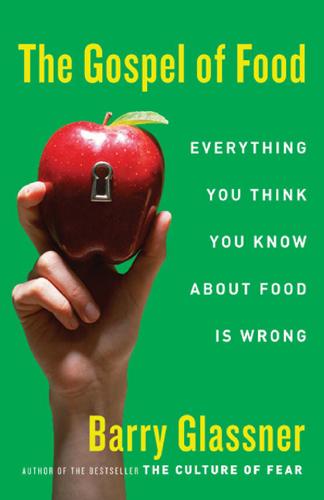
The Gospel of Food: Everything You Think You Know About Food Is Wrong
by
Barry Glassner
Published 15 Feb 2007
Food and Drug Administration, “Guidance on How to Understand and Use the Nutrition Facts Panel on Food Labels” (http://vm.cfsan. fda.gov/~dms/foodlab.html); David Kritchevsky, “Diet and Artherosclerosis,” Journal of Nutrition, Health, and Aging 5 (2001): 155–59; Pirjo Pietinen et al., “Intake of Fatty Acids and Risk of Coronary Heart Disease in a Cohort of Finnish Men,” American Journal of Epidemiology 145 (1997): 876–87; Uffe Ravnskov, “Diet–Heart Disease Hypothesis Is Wishful Thinking,” British Medical Journal 324 (2002): 238; Hester Vorster et al., “Egg Intake Does Not Change Plasma Lipoprotein and Coagulation Profiles,” American Journal of Clinical Nutrition 55 (1992): 400–410; Paul N. Hopkins, “Effects of Dietary Cholesterol on Serum Cholesterol: A Meta-Analysis and Review,” American Journal of Clinical Nutrition 55 (1992): 1060–70; Esther Lopez-Garcia, M. Schulze, et al., “Consumption of Trans Fatty Acids Is Related to Plasma Biomarkers of Inflammation and Endothelial Dysfunction,” Journal of Nutrition 135 (2005): 562–66. 21. Emily Green, “No—Less Is Less,” Los Angeles Times, May 10, 2000. 22.
…
On the PCRM, see, for example, Mary Carmichael, “Atkins Under Attack,” Newsweek, February 23, 2004; Joe Sharkey, “Perennial Foes Meet Again in a Battle of the Snack Bar,” New York Times, November 23, 2004; “Who’s Who in Animal Rights,” Observer (London), August 1, 2004. 10. See, for example, Nestle, Food Politics, part 4; “Vitamin A: ‘Magic Bullet’ That Can Backfire,” Tufts Nutrition Letter (February 2005); Edgar Miller, Roberto Pastor-Barriuso, et al., “Meta-Analysis: High-Dosage Vitamin E Supplementation May Increase All-Cause Mortality,” Annals of Internal Medicine 142 (2005): 37–46. 11. USDA Food Guidance System Public Comment Meeting, August 19, 2004: 101 (www.usda.gov/cnpp/pyramid-update/Comments/Oral%20Comm entsTranscript.pdf); Warren Belasco, “Futures Notes: The Meal-in-a-Pill,” Food and Foodways 8 (2000): 253–71.

Mistakes Were Made (But Not by Me): Why We Justify Foolish Beliefs, Bad Decisions, and Hurtful Acts
by
Carol Tavris
and
Elliot Aronson
Published 6 May 2007
Jensen (2003), "Hypnosis and Clinical Pain," Psychological Bulletin, 29, pp. 495–521. Hypnosis can also add to the effectiveness of cognitive-behavioral techniques for losing weight, quitting smoking, and other behavior problems; see Irving Kirsch, Guy Montgomery, and Guy Sapirstein (1995), "Hypnosis as an Adjunct to Cognitive-Behavioral Psychotherapy: A Meta-Analysis," Journal of Consulting and Clinical Psychology, 2, pp. 214–220. But the evidence is overwhelming that hypnosis is unreliable as a way of retrieving memories, which is why the American Psychological Association and the American Medical Association oppose the use of "hypnotically refreshed" testimony in courts of law.
…
Stephen Lindsay, Amina Memon, and Ray Bull (1995), "Psychotherapy and the Recovery of Memories of Childhood Sexual Abuse: U.S. and British Practitioners' Opinions, Practices, and Experiences," Journal of Consulting and Clinical Psychology, 63, pp. 426–437. More recent replications have found that the percentages have not changed appreciably. 34 The notion that childhood sexual abuse is a leading cause of eating disorders has not been supported by empirical evidence, according to a meta-analysis of the leading studies. See Eric Stice (2002), "Risk and Maintenance Factors for Eating Pathology: A Meta-Analytic Review," Psychological Bulletin, 128, pp. 825–848. 35 Richard J. McNally (2005), "Troubles in Traumatology," The Canadian Journal of Psychiatry, 50, pp. 815–816. His quote is on p. 815. 36 John Briere made this statement at the 12th International Congress on Child Abuse and Neglect in 1998, in Auckland, New Zealand.
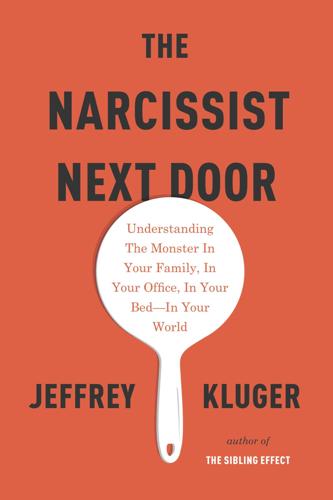
The Narcissist Next Door
by
Jeffrey Kluger
Published 25 Aug 2014
A whole lot of people are now moving up that scale, developing cases of subclinical, or lowercase-n, narcissism that may not shut down governments but may cause plenty of personal harm to the people around them. In 2008, a team of researchers published a study in the Journal of Personality looking at narcissism among college students over a twenty-seven-year period, from 1979 to 2006. Their paper was what’s known as a meta-analysis, a recrunching of the data from eighty-five separate narcissism studies covering a collective 16,475 subjects. All of the people surveyed had been administered the Narcissistic Personality Inventory (NPI), a forty-item questionnaire that requires subjects to choose between such essentially opposite statements as “I insist upon getting the respect that is due me” and “I usually get the respect that I deserve”; “Sometimes I tell good stories” and “Everybody likes to hear my stories”; “I can read people like a book” and “People are sometimes hard to understand”; “I am more capable than other people” and “There is a lot I can learn from other people.”
…
When children in the 1950s were administered the Minnesota Multiphasic Personality Inventory (MMPI)—an exceedingly detailed survey that requires subjects to answer hundreds of true-false questions measuring personality on multiple dimensions—only 12 percent agreed with the statement “I am a special person.” By the late 1980s, the figure had exploded to 80 percent. Other studies in the 1990s showed similar high numbers of kids agreeing with such statements as “I have often met people who are supposed to be experts who are no better than I.” A 2012 meta-analysis of results from the American Freshman Survey, a personality inventory that has been administered to a collective nine million incoming college students in the United States over the past forty-seven years, has found that in every one of five different personality dimensions tested—drive to achieve, intellectual self-confidence, belief in leadership ability, social self-confidence and belief in writing ability—scores have been steadily on the rise, with up to 75 percent of kids believing they are above average.

Street Smart: The Rise of Cities and the Fall of Cars
by
Samuel I. Schwartz
Published 17 Aug 2015
And, while I’m not sure this actually qualifies as active transportation, MAPS 3 upgraded the banks of the Oklahoma River to accommodate both rowing and kayaking facilities.j It also called for a state-of-the-art streetcar system running on five miles of rails through Oklahoma City’s downtown, which isn’t, strictly speaking, a form of active transportation. However, a meta-analysis—a research technique that combines multiple investigations, giving different statistical weights to each one depending on its findings—of fifty different studies found that one of the most important factors in walkability was connectivity: the ease with which walkers could get from one street to another.
…
Economy Started Waning in the 70s.” StreetsBlog USA, December 18, 2014. “ ———. The Koch Brothers’ War on Transit.” StreetsBlog USA, September 2014. Schwartz, Samuel I., and Shauna Tarshis Colasuonno. “VIM: Not Just Another Acronym.” ITE Journal (September 1982): 23–27. Seto, Karen C., et al. “A Meta-Analysis of Global Urban Land Expansion.” PLoS One 6, no. 8 (August 2011): e23777. Shoup, Donald C. “Free Parking or Free Markets.” Access: The Magazine of the University of California Transportation Center 38 (Spring 2011). ———. “The High Cost of Free Parking.” Journal of Planning Education and Research 17, no. 1 (Fall 1997): 201–216.
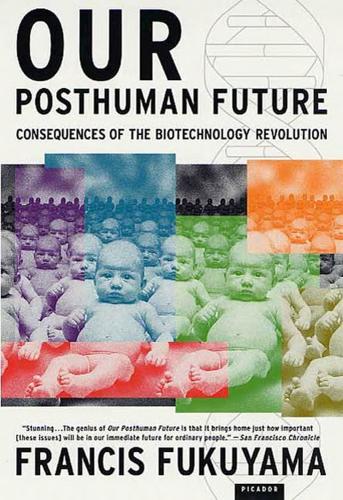
Our Posthuman Future: Consequences of the Biotechnology Revolution
by
Francis Fukuyama
Published 1 Jan 2002
.: Southern Illinois University Press, 1994). 3 Ibid., p. 10. 4 Kramer (1993); and Elizabeth Wurtzel, Prozac Nation: A Memoir (New York: Riverhead Books, 1994). 5 Kramer (1993), pp. 1–9. 6 Joseph Glenmullen, Prozac Backlash: Overcoming the Dangers of Prozac, Zoloft, Paxil, and Other Antidepressants with Safe, Effective Alternatives (New York: Simon and Schuster, 2000), p. 15. 7 Irving Kirsch and Guy Sapirstein, “Listening to Prozac but Hearing Placebo: A Meta-Analysis of Antidepressant Medication,” Prevention and Treatment 1 (1998); Larry E. Beutler, “Prozac and Placebo: There’s a Pony in There Somewhere,” Prevention and Treatment 1 (1998); and Seymour Fisher and Roger P. Greenberg, “Prescriptions for Happiness?,” Psychology Today 28 (1995): 32–38. 8 Peter R.
…
The Code of Codes: Scientific and Social Issues in the Human Genome Project. Cambridge, Mass.: Harvard University Press, 1992. Kirkwood, Tom. Time of Our Lives: Why Ageing Is Neither Inevitable nor Necessary. London: Phoenix, 1999. Kirsch, Irving, and Guy Sapirstein. “Listening to Prozac but Hearing Placebo: A Meta-Analysis of Antidepressant Medication.” Prevention and Treatment I (1998). Klam, Matthew. “Experiencing Ecstasy.” The New York Times Magazine, January 21, 2001. Kolata, Gina. Clone: The Road to Dolly and the Path Ahead. New York: William Morrow, 1998. ———. “Genetic Defects Detected In Embryos Just Days Old.”
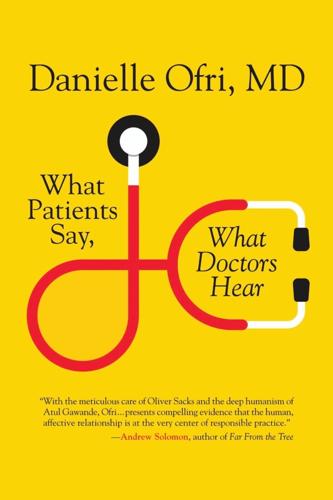
What Patients Say, What Doctors Hear
by
Danielle Ofri
Published 1 Feb 2017
Improved communication is certainly one of those things, but the devil for all of these interventions is in the magnitude of effect. The medical system needs to know how much bang there is for the buck before it chooses where to invest resources. So a team of scientists examined more than fifty years of research,11 using the technique of meta-analysis to combine the results of one hundred individual studies. (These studies encompassed a total of forty-five thousand patients.) If all of these data are taken together, patients of doctors with good communication skills are more than twice as likely to have good adherence to medical recommendations, compared with patients whose doctors had poor communication skills.
…
Bingel et al., “The Effect of Treatment Expectation on Drug Efficacy: Imaging the Analgesic Benefit of the Opioid Remifentanil,” Science Translational Medicine 3 (2011). 10. M. R. DiMatteo, “Variations in Patients’ Adherence to Medical Recommendations: A Quantitative Review of 50 Years of Research,” Medical Care 42 (2004): 200–209. 11. K. B. Haskard Zolnierek and M. R. Dimatteo, “Physician Communication and Patient Adherence to Treatment: A Meta-Analysis,” Medical Care 47 (2009) 826–34. 12. S. H. McDaniel et al., “Physician Self-Disclosure in Primary Care Visits: Enough About You, What About Me?,” Archives of Internal Medicine 167 (2007): 1321–26. 13. D. S. Morse et al., “Enough About Me, Let’s Get Back to You: Physician Self-Disclosure During Primary Care Encounters,” Annals of Internal Medicine 149, no. 11 (2008): 835–37. 14.
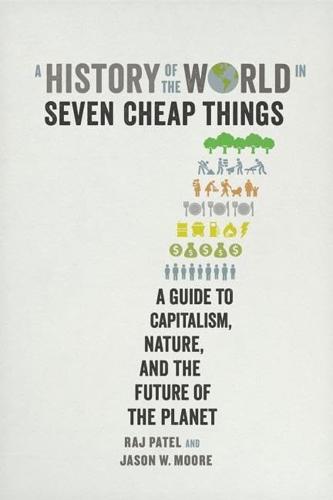
A History of the World in Seven Cheap Things: A Guide to Capitalism, Nature, and the Future of the Planet
by
Raj Patel
and
Jason W. Moore
Published 16 Oct 2017
Cerri, Carlos Eduardo P., Gerd Sparovek, Martial Bernoux, William E. Easterling, Jerry M. Melillo, and Carlos Clemente Cerri. 2007. “Tropical Agriculture and Global Warming: Impacts and Mitigation Options.” Scientia Agricola 64: 83–99. Challinor, A.J., J. Watson, D.B. Lobell, S.M. Howden, D.R. Smith, and N. Chhetri. 2014. “A Meta-analysis of Crop Yield under Climate Change and Adaptation.” Nature Climate Change 4, no. 4: 287–91. Channell, Rob, and Mark V. Lomolino. 2000. “Trajectories to Extinction: Spatial Dynamics of the Contraction of Geographical Ranges.” Journal of Biogeography 27, no. 1: 169–79. Chapman, Ian. 2014. “The End of Peak Oil?
…
Lappé, Frances Moore, Jennifer Clapp, Molly Anderson, Robin Broad, Ellen Messer, Thomas Pogge, and Timothy Wise. 2013. “How We Count Hunger Matters.” Ethics and International Affairs 27, no. 3: 251–59. Latimer, Jeff, Craig Dowden, and Danielle Muise. 2005. “The Effectiveness of Restorative Justice Practices: A Meta-analysis.” Prison Journal 85, no. 2: 127–44. La Vega, Garcilasso de. 1688. The Royal Commentaries of Peru, in Two Parts. . . . Translated by Paul Rycaut. London: Miles Flesher. La Via Campesina. 2009. “Via Campesina Campaign to End Violence against Women.” https://viacampesina.org/en/index.php/main-issues-mainmenu-27/women-mainmenu-39/643-via-campesina-campaign-to-end-violence-against-women.
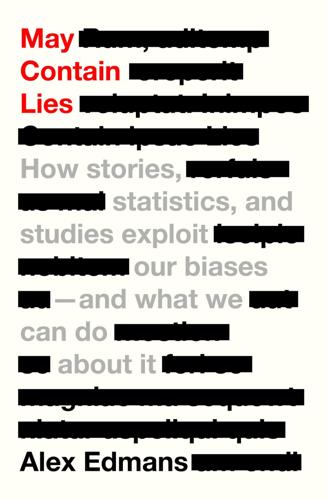
May Contain Lies: How Stories, Statistics, and Studies Exploit Our Biases—And What We Can Do About It
by
Alex Edmans
Published 13 May 2024
, BBC Good Food, 24 September 2013. 4 Trumbo, Paula et al. (2002): ‘Dietary reference intakes for energy, carbohydrate, fiber, fat, fatty acids, cholesterol, protein and amino acid’, Journal of the American Dietetic Association 102, 1621–30. 5 Seidelmann, Sara B. et al. (2018): ‘Dietary carbohydrate intake and mortality: a prospective cohort study and meta-analysis’, Lancet Public Health 3, E419–E428. 6 St. Jeor, Sachiko T. et al. (2001): ‘Dietary protein and weight reduction: a statement for healthcare professionals from the Nutrition Committee of the Council on Nutrition, Physical Activity, and Metabolism of the American Heart Association’, Circulation 104, 1869–74. 7 DeLosh, Edward L., Jerome R.
…
Waller (2014): ‘The biology of lubricin: near frictionless joint motion’, Matrix Biology 39, 17–24. The first article gives synovial fluid’s friction coefficient as 0.001; the second article gives Teflon’s as 0.04. 4 Der, Geoff G., David Batty and Ian J. Deary (2006): ‘Effect of breast feeding on intelligence in children: prospective study, sibling pairs analysis, and meta-analysis’, British Medical Journal 333, 945. 5 EY (2022): ‘Press release: prioritizing emotions is the key to success for business transformation’, 28 June 2022. 6 Saïd Business School (2022): ‘Prioritising emotions is the key to success for business transformation, groundbreaking research finds’, 28 June 2022. 7 Travaglio, Marco et al. (2020): ‘Link between air pollution and Covid-19 in England’, Environmental Pollution 268, 115859. 8 Carrington, Damian (2020): ‘“Compelling” evidence air pollution worsens coronavirus – study’, Guardian, 13 July 2020. 9 Barton, Dominic, James Manyika and Sarah Keohane Williamson (2017): ‘Finally, evidence that managing for the long term pays off’, Harvard Business Review, 7 February 2017. 10 Edmans, Alex (2012): ‘The link between job satisfaction and firm value, with implications for corporate social responsibility’, Academy of Management Perspectives 26, 1–19. 11 Rambotti, Simone (2015): ‘Recalibrating the spirit level: an analysis of the interaction of income inequality and poverty and its effect on health’, Social Science & Medicine 139, 123–31. 12 Wei, Yuan et al. (2021): ‘Smoking cessation in late life is associated with increased risk of all-cause mortality amongst oldest old people: a community-based prospective cohort study’, Age and Ageing 50, 1298–1305. 7.
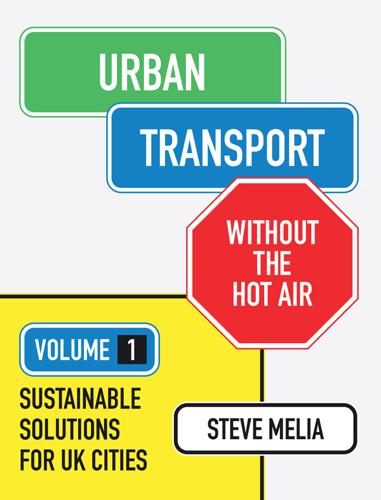
Urban Transport Without the Hot Air, Volume 1
by
Steve Melia
Journal of Transport Geography. 16 (2), pp. 81-9. 265 Hickman, R. and Banister, D. (2007) ‘Transport and reduced energy consumption: the role of urban planning’. Working Paper 1026. Oxford University Transport Studies Unit. 266 Ewing, R. and Cervero, R. (2010) ‘Travel and the built environment: A meta-analysis’. Journal of the American Planning Association. 76 (3), pp. 265-94. 10 Summary: myths, values and challenges 267 See for example the government’s definition of ‘sustainable development’ within (2012) ‘National planning policy framework’. On: www.gov.uk. 268 Goodall, Chris (2013) Sustainability – all that matters.
…
Oxford: Oxford University Press. 276 DEFRA (1999) ‘A better quality of life – strategy for sustainable development for the United Kingdom, London’. Available on the National Archives website. 277 Eurostat (2011) ‘Modal split of passenger transport’. On: epp.eurostat.ec.europa.eu 278 See for example: Highways Agency (2013) ‘Post opening project evaluation (POPE) of major schemes meta-analysis 2013. Executive summary’. On: www.highways.gov.uk 12 European cities: inspiration and similarities 279 The section which follows draws on a mixture of my own notes, made on my visit to Freiburg in 2006, numerous sources provided by Freiburg city council, then and more recently, and on the following three sources, which also draw heavily on data from the city council: Beim, M. and Haag, M. (2010) ‘Freiburg’s way to sustainability: the role of integrated urban and transport planning’.
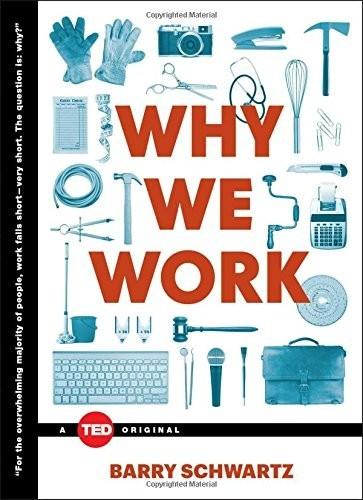
Why We Work
by
Barry Schwartz
Published 31 Aug 2015
New York Times Magazine, February 23, 1986: 44–47, 58. Hirsch, F. Social Limits to Growth. Cambridge, MA: Harvard Press, 1976.* Hodson, R. Dignity at Work. New York: Cambridge University Press, 2001.* Judge, T. A., R. F. Piccolo, N. P. Podsakoff, J. C. Shaw, and B. L. Rich. “The Relationship Between Pay and Job Satisfaction: A Meta-Analysis of the Literature.” Journal of Vocational Behavior, 77 (2010): 157–67. Jussim, L. “Self-fulfilling Prophecies: A Theoretical and Integrative Review.” Psychological Review, 93 (1986): 429–45. ——. “Teacher Expectations: Self-Fulfilling Prophecies, Perceptual Biases, and Accuracy.” Journal of Personality and Social Psychology, 57 (1989): 469–80.
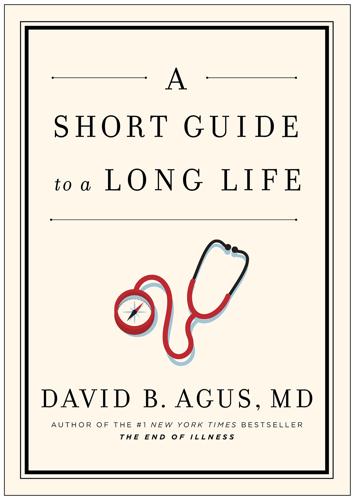
A Short Guide to a Long Life
by
David B. Agus
Published 7 Jan 2014
While it’s true that you can find single, unrepeated studies that contradict my ideas, that’s not how science works. When scientists weigh in on a topic, they can’t just rely on single studies that support their view. Instead, they have to consider all the studies on a topic and examine the results of each. That is exactly what a meta-analysis does. Hence, all of my prescriptions are rooted in studies that meet this gold standard. They always will be. And if the day comes when science uproots an established “truth” or does a complete 180 on a universally accepted fact, then I will welcome that new viewpoint with excitement and resolve (and a new rule).

Everything Is Obvious: *Once You Know the Answer
by
Duncan J. Watts
Published 28 Mar 2011
New York Times Magazine, February 13. Lewis, Randall, and David Reiley. 2009. “Retail Advertising Works! Measuring the Effects of Advertising on Sales via a Controlled Experiment on Yahoo.” Working paper, Yahoo. Lodish, Leonard M., Magid Abraham, Stuart Kalmenson, et al. 1995a. “How TV Advertising Works: A Meta-analysis of 389 Real World Split Cable TV Advertising Experiments.” Journal of Marketing Research 32: 125–39. Lodish, Leonard M., Magid Abraham, Jeanne Livelsberger, et al. 1995b. “A Summary of Fifty-five In-Market Experimental Estimates of the Long-term Effect of TV Advertising.” Marketing Science 14 (3):133–40.
…
“In Louvre, New Room with View of ‘Mona Lisa.’ ” New York Times, April 6. Rigney, Daniel. 2010. The Matthew Effect: How Advantage Begets Further Advantage. New York: Columbia University Press. Robbins, Jordan M., and Joachim I. Krueger. 2005. “Social Projection to Ingroups and Outgroups: A Review and Meta-analysis.” Personality and Social Psychology Review 9:32–47. Rogers, Everett M. 1995. Diffusion of Innovations, 4th ed. New York: Free Press. Roese, Neal J., and James M. Olson. 1996. “Counterfactuals, Causal Attributions, and the Hindsight Bias: A Conceptual Integration.” Journal of Experimental Social Psychology 32 (3):197–227.
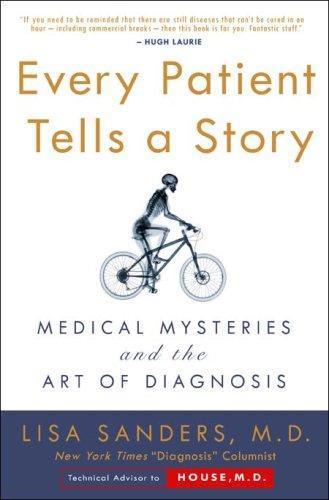
Every Patient Tells a Story
by
Lisa Sanders
Published 15 Jan 2009
Med Ed. 2007;41:1133–39, Charlin B, et al. Scripts and clinical reasoning. Med Ed. 2007;41:1178–84. 29 One of the ways doctors are taught to think about disease: Mangruikar RS, et al. What is the role of the clinical “pearl.” Am J Med. 2002; 113(7):617–24. Ioannidis JPA, Lau J. Uncontrolled pearls, controlled evidence, meta-analysis and the individual patient. J Clin Epidemiolo. 1998;51(8):709–11. 31 Dr. André Lemierre, a physician in Paris, first described this disease in 1936: Lemierre A. On certain septicemias due to anaerobic organisms. Lancet. 1936;1:701–3. Centor RM. Should Lemierre’s syndrome re-emergence change pharyngitis guidelines?
…
N Engl J Med. 1990;323:219–223. 178 They recruited one hundred residents: Shadick NA, Phillips CB, Logigian EL, Steere AC, Kaplan RF, Berardi VP, et al. The long-term clinical outcomes of Lyme disease. A population-based retrospective cohort study. Ann Int Med. 1994;121:560–567. 178 Other studies too have found: Cairn V, Godwin J. Post-Lyme borreliosis syndrome: a meta-analysis of reported symptoms. Int J Epi. 2005;34:1340–1345. 179 Researchers at Tufts Medical Center: Klempner MS, et al. Two controlled trials of antibiotic treatment in patients with persistent symptoms and a history of Lyme disease. N Engl J Med. 2001;345:85–92. 179 Two other rigorous trials: Krupps LB, et al.
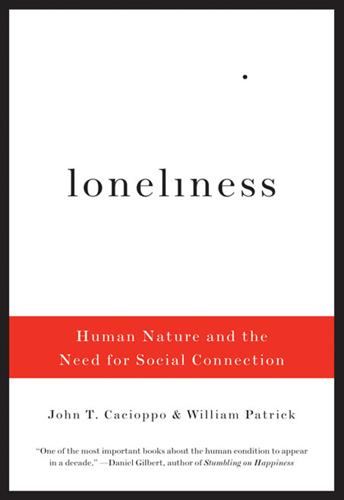
Loneliness: Human Nature and the Need for Social Connection
by
John T. Cacioppo
Published 9 Aug 2009
People with few social ties were at increased risk of dying from ischemic heart disease, cerebrovascular and circulatory disease, cancer, and a broader category that included respiratory, gastrointestinal, and all other causes of death.3 In 1988 an article in Science reviewed subsequent research, and that meta-analysis indicated that social isolation is on a par with high blood pressure, obesity, lack of exercise, or smoking as a risk factor for illness and early death.4 For some time the most common explanation for this sizeable effect has been the “social control hypothesis.” This theory holds that, in the absence of a spouse or close friends who might provide material help or a more positive influence, individuals may have a greater tendency to gain weight, to drink too much, or to skip exercise.
…
Gatherings As an obligatorily gregarious species, we humans have a need not just to belong in an abstract sense but to actually get together. Congregating physically may actually play a role in an association found between religious observance and decreased morbidity and mortality. The sociologists Lynda H. Powell, Leila Shahabi, and Carl E. Thoresen conducted a meta-analysis of the extensive literature on religion and health, exploring nine different hypotheses that might account for the purportedly positive effects. Do religious people live longer and healthier lives because of the more conservative and healthful lifestyle that religion promotes? Is it the power of prayer?

Bold: How to Go Big, Create Wealth and Impact the World
by
Peter H. Diamandis
and
Steven Kotler
Published 3 Feb 2015
To gather the advice in the how-to sections in part three, my team did exhaustive research, interviewing over a hundred top platform providers, the very people behind all of these crowd-powered companies, and speaking with top users, those exponential entrepreneurs who have already succeeded in leveraging crowd tools to tackle the bold. We also conducted a meta-analysis of all the various how-to articles online and in major reports, distilling key lessons and insights. Finally, during the same time this work was going on, I had the opportunity to implement much of this advice, putting it to the test in my own companies. Taken together, my hope is that these how-to sections serve as a comprehensive playbook, literally a user’s guide for going big, creating wealth, and impacting the world.
…
The final example is the ARKYD Space Telescope, a campaign run by my company Planetary Resources, which helped us start and forge an enormously passionate community of space enthusiasts—generating the kind of support that is absolutely required by this kind of future-forward project.15 One quick clarification: these examples have been kept intentionally short because they’ll again be followed by a lengthy how-to section—the real meat of this chapter. It’s here we’ll break down everything you need to know to get started, providing information drawn from four sources: a meta-analysis of all the major crowdfunding guides that have appeared in the past few years (twenty-six in total); lengthy interviews with the founders and CEOs of major crowdfunding companies such as Indiegogo, RocketHub, and Crowdfunder; lengthy interviews with entrepreneurs who have run incredibly successful campaigns (for example, Eric Migicovsky, creator of the Pebble Watch campaign); and finally, my own personal experience raising $1.5 million via crowdfunding, which at the time was the twenty-fifth most successful Kickstarter campaign ever.
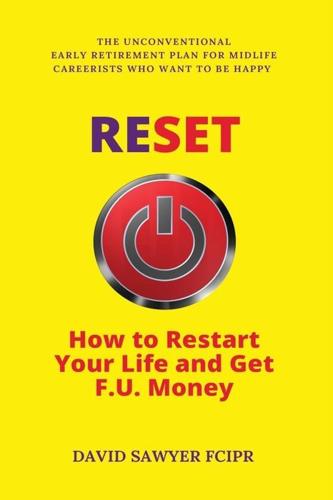
Reset: How to Restart Your Life and Get F.U. Money: The Unconventional Early Retirement Plan for Midlife Careerists Who Want to Be Happy
by
David Sawyer
Published 17 Aug 2018
You can only have one priority. 11. The importance of chit-chat The strongest predictor of how long you’ll live is your daily interactions with strangers. Not the quality of your close relationships (albeit that’s a close second), not whether you smoke, booze, exercise or are fat or thin. In a meta-analysis of 300,000-plus people[493], researchers at Brigham Young University found that the key to living a long life is social integration. Those chats with your neighbours, people at the school gate, the bloke serving you coffee at Starbucks, the guard on the train; it’s those daily interactions on which we place no emphasis that make a long life.
…
[490] 1 Second Everyday app: “1SE.” toreset.me/490. [491] “ghosts haunting the lost landscapes of our childhood”: “THE WRITING LIFE: TALES OUT OF SCHOOL – The Washington Post.” 18 Mar. 1997, toreset.me/491. [492] The Pomodoro [productivity] Technique: “Pomodoro Technique – Wikipedia.” toreset.me/492. [493] In a meta-analysis of 300,000-plus people: “Social Ties Boost Survival by 50 Per Cent – Scientific American.” 28 Jul. 2010, toreset.me/493. [494] Watch Susan Pinker’s TED talk: “The secret to living longer may be your social life – TED.com.” 18 Aug. 2017, toreset.me/494. [495] businesses fail within the first 18 months, according to Bloomberg: “Five Reasons 8 Out Of 10 Businesses Fail – Forbes.” 12 Sep. 2013, toreset.me/495
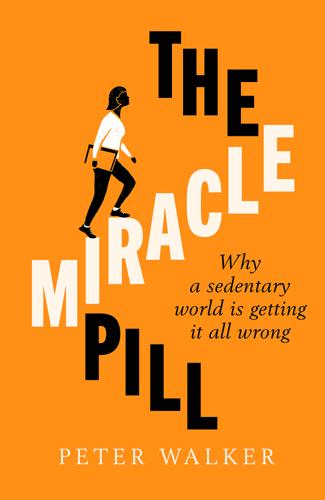
The Miracle Pill
by
Peter Walker
Published 21 Jan 2021
Walking cadence (steps/min) as a practical estimate of intensity in adults: a narrative review’, British Journal of Sports Medicine, Vol. 52, No. 12 (2018): 776–88. 24 Terence Dwyer et al., ‘Objectively Measured Daily Steps and Subsequent Long Term All-Cause Mortality: The Tasped Prospective Cohort Study’, PLOS One, Vol. 10, No. 11 (2015). 25 I-Min Lee et al., ‘Association of Step Volume and Intensity with All-Cause Mortality in Older Women’, JAMA Internal Medicine, Vol. 179, No. 8 (2019): 1105–12. 26 Interview with the author. 27 2018 Physical Activity Guidelines Advisory Committee Scientific Report. 28 Hmwe H. Kyu et al., ‘Physical activity and risk of breast cancer, colon cancer, diabetes, ischemic heart disease, and ischemic stroke events: systematic review and dose-response meta-analysis for the Global Burden of Disease Study 2013’, British Medical Journal, Vol. 354:i3857 (2016). 29 I-Min Lee, Howard D. Sesso, Yuko Oguma, Ralph S. Paffenbarger, Jr, ‘The “Weekend Warrior” and Risk of Mortality’, American Journal of Epidemiology, Vol. 160, No. 7 (2004): 636–41. 30 Gary O’Donovan, I-Min Lee et al., ‘Association of “Weekend Warrior” and Other Leisure Time Physical Activity Patterns With Risks for All-Cause, Cardiovascular Disease, and Cancer Mortality’, JAMA Internal Medicine, Vol. 177, No. 3 (2017): 335–42.
…
Healy et al., ‘A Cluster Randomized Controlled Trial to Reduce Office Workers’ Sitting Time: Effect on Activity Outcomes’, Medicine and Science in Sports and Exercise, Vol. 48, No. 9 (2016): 1787–97. 35 Interview with the author. 36 Interview with the author. 37 Ulf Ekelund et al., ‘Does physical activity attenuate, or even eliminate, the detrimental association of sitting time with mortality? A harmonised meta-analysis of data from more than 1 million men and women’, The Lancet, Vol. 388, No. 10051 (2016): 1302–10. 38 Email correspondence with the author. Chapter 8 1 Interview with the author. 2 Statistics supplied by Daily Mile. 3 NHS Health Survey for England 2016: Physical Activity in Adults. 4 NHS Health Survey for England 2015: Physical Activity in Children. 5 Hallal et al., ‘Global physical activity levels: surveillance progress, pitfalls, and prospects’. 6 Gavin R.
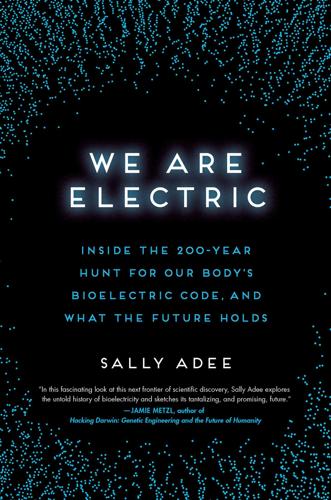
We Are Electric: Inside the 200-Year Hunt for Our Body's Bioelectric Code, and What the Future Holds
by
Sally Adee
Published 27 Feb 2023
Soon a wave of studies began to debunk the previous glut of hopeful findings: to prove that the currents involved in tDCS could have no possible effects on neurons, one group electrically stimulated a cadaver and concluded that it was pseudoscientific bullshit; another looked at all the effects across hundreds of tDCS studies—a meta-analysis—and concluded that if you averaged out all the effects, you’d end up with nothing. They had history on their side. The skeptics pointed to 200 years of electro-foolery, in which quacks claimed that their various electrical belts, rings, baths, and other contraptions could cure everything from perennial ailments like constipation and cancer to complaints of a more distinctly Victorian flavor, like the loss of “male vigor” and excessive masturbation.
…
Proceedings of the National Academy of Sciences, vol. 116, no. 11 (2019), pp. 4764–6 56 Müller, Eli J., and Peter A. Robinson. “Quantitative Theory of Deep Brain Stimulation of the Subthalamic Nucleus for the Suppression of Pathological Rhythms in Parkinson’s Disease,” ed. by Saad Jbabdi, PLOS Computational Biology, vol. 14, no. 5 (2018), e1006217. See also Kisely, Steve, et al. “A Systematic Review and Meta-Analysis of Deep Brain Stimulation for Depression.” Depression and Anxiety, vol. 35, no. 5 (2018), pp. 468–80 57 Crick, Francis. The Astonishing Hypothesis: The Scientific Search for the Soul. New York: Scribner; London: Maxwell Macmillan International, 1994, p. 10, see also pp. 182-4 58 Crick, The Astonishing Hypothesis, p. 3.
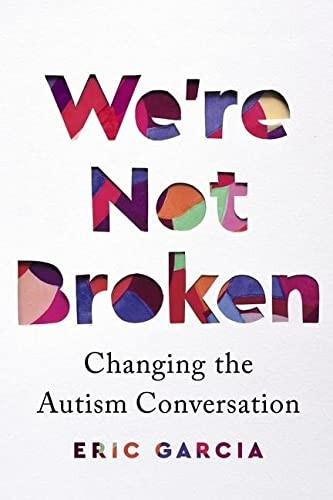
We're Not Broken: Changing the Autism Conversation
by
Eric Garcia
Published 2 Aug 2021
“Our CBPR process allowed us to adapt instruments to be accessible to this sample of autistic adults, primarily by increasing the clarity and precision of the language used in the instruments,” the study said. But physical health is only part of the equation for autistic people, and it is possible that autistic people’s mental-health needs might be more acute than neurotypical people’s needs. One 2018 meta-analysis of sixty-six studies in the Journal of Abnormal Child Psychology found that people with autism spectrum disorder “are 4-times more likely to experience depression in their lifetime.” Suicidal ideation is something I am all too familiar with. I’ve lived with depression as long as I can remember and have been on numerous antidepressants over the years.
…
“the clarity and precision of the language”: Christina Nicolaidis et al., “Comparison of Healthcare Experiences in Autistic and Non-Autistic Adults: A Cross-Sectional Online Survey Facilitated by an Academic-Community Partnership,” Journal of General Internal Medicine 28, no. 6 (June 6, 2013), https://www.ncbi.nlm.nih.gov/pmc/articles/PMC3663938/. “more likely to experience depression”: Chloe C. Hudson, Layla Hall, and Kate L. Harkness, “Prevalence of Depressive Disorders in Individuals with Autism Spectrum Disorder: A Meta-Analysis,” Journal of Abnormal Child Psychology 47, no. 1 (March 1, 2018), https://link.springer.com/article/10.1007%2Fs10802-018-0402-1. Cal Montgomery noted: Cal Montgomery, interview with the author, 2019. 6. “Ain’t Talkin’ ’Bout Love” some autistic kids didn’t speak: Chris Williams, interview with the author, 2020.
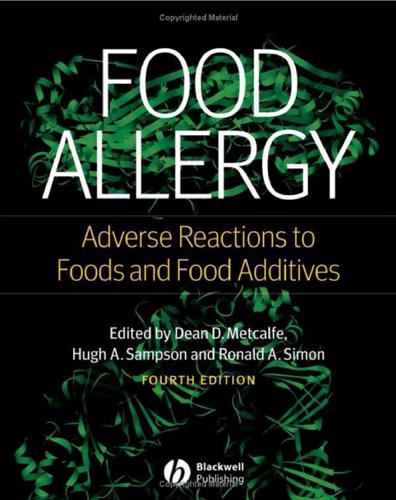
Food Allergy: Adverse Reactions to Foods and Food Additives
by
Dean D. Metcalfe
Published 15 Dec 2008
Maternal and/or infant elimination diets Studies attempting to prevent CM and egg allergies by maternal CM and egg avoidance during late pregnancy have failed to show a reduction in food allergy, any other atopic disorder, or sensitization from birth through age 5 years. Additionally, maternal weight gain during pregnancy was negatively affected by these dietary restrictions. A recent Cochrane meta-analysis [51] confirmed the above findings, and the authors concluded that the prescription of an antigen avoidance diet to a high-risk woman during pregnancy is unlikely to substantially reduce the child’s risk of atopic diseases, and such a diet may adversely affect maternal or fetal nutrition, or both.
…
Breast-feeding For quite some time, it has been suggested that the presence of food antigens in breast milk might sensitize an infant if the mother does not avoid these foods in her diet during lactation. However, results of studies during the 1980s and 1990s examining this hypothesis have been contradictory. These contradictory studies, along with consideration of many others, led both a Cochrane analysis [51] and a recent meta-analysis [52] to conclude that while the prescription of an antigen avoidance diet to high-risk women during lactation may reduce the child’s risk of developing AD, there is insufficient conclusive evidence to show a preventative effect of maternal diet during lactation on atopic disease in childhood. Furthermore, one cannot state for certain whether food antigens in breast milk will induce allergy or be immunoprotective in any given recipient [53].
…
Of the many studies regarding the association between breast-feeding and AD, some have shown a protective effect [54,55], whereas others have shown a lack 114 Chapter 9 of association [56], and some have even shown a positive association [57]. To assist in sorting out the discrepancies in the above studies, Gdalevich et al. [58] performed a systematic review and meta-analysis of prospective studies in developed countries that compared breast-feeding with CM formula feeding on the development of AD. Statistical analysis revealed a significant overall protective effect of breastfeeding for 3 months on AD, with an OR of 0.68 (95% CI, 0.52–0.88) in the cohort as a whole.
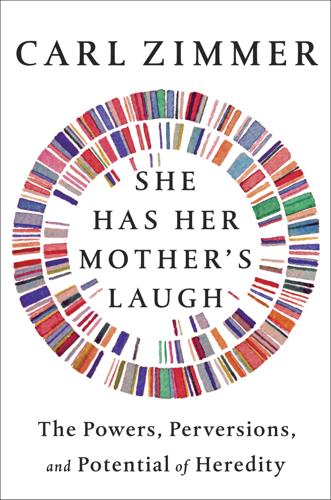
She Has Her Mother's Laugh
by
Carl Zimmer
Published 29 May 2018
“Aberrant Melanoblast Migration Associated with Trisomy 18 Mosaicism.” Journal of Medical Genetics 20:135–37. Chen, Brian H., Riccardo E. Marioni, Elena Colicino, Marjolein J. Peters, Cavin K. Ward-Caviness, Pei-Chien Tsai, Nicholas S. Roetker, Allan C. Just, Ellen W. Demerath, and Weihua Guan. 2016. “DNA Methylation-Based Measures of Biological Age: Meta-Analysis Predicting Time to Death.” DNA 8:9. Chen, Qi, Wei Yan, and Enkui Duan. 2016. “Epigenetic Inheritance of Acquired Traits Through Sperm RNAs and Sperm RNA Modifications.” Nature Reviews Genetics 17:733–43. Chen, Serena H., Claudia Pascale, Maria Jackson, Mary Ann Szvetecz, and Jacques Cohen. 2016.
…
Walker, and others. 2015. “Optimizing Cancer Genome Sequencing and Analysis.” Cell Systems 1:210–23. Grognet, Pierre, Hervé Lalucque, Fabienne Malagnac, and Philippe Silar. 2014. “Genes That Bias Mendelian Segregation.” PLOS Genetics 10:e1004387. Grudnik, Jennifer L., and John H. Kranzler. 2001. “Meta-Analysis of the Relationship Between Intelligence and Inspection Time.” Intelligence 29:523–35. Grüneberg, Hans. 1967. “Sex-linked Genes in Man and the Lyon Hypothesis.” Annals of Human Genetics 30:239–57. Guevara-Aguirre, Jaime, Priya Balasubramanian, Marco Guevara-Aguirre, Min Wei, Federica Madia, Chia-Wei Cheng, David Hwang, and others. 2011.
…
Lehtinen, L. Benjamin Hills, and others. 2012. “Somatic Activation of AKT3 Causes Hemispheric Developmental Brain Malformations.” Neuron 74:41–48. Polderman, Tinca J. C., Beben Benyamin, Christiaan A. de Leeuw, Patrick F. Sullivan, Arjen van Bochoven, Peter M. Visscher, and Danielle Posthuma. 2015. “Meta-Analysis of the Heritability of Human Traits Based on Fifty Years of Twin Studies.” Nature Genetics 47:702–09. Poliakov, Léon. 1974. The Aryan Myth: A History of Racist and Nationalist Ideas in Europe. New York: Basic Books. Politi, Yoav, Liron Gal, Yossi Kalifa, Liat Ravid, Zvulun Elazar, and Eli Arama. 2014.

The Better Angels of Our Nature: Why Violence Has Declined
by
Steven Pinker
Published 24 Sep 2012
Aggression in separated twins: Bouchard & McGue, 2003, table 6. 142. Aggression in adoptees: van den Oord et al., 1994; see also Rhee & Waldman, 2007. 143. Aggression in twins: Cloninger & Gottesman, 1987; Eley et al., 1999; Ligthart et al., 2005; Rhee & Waldman, 2007; Slutske et al., 1997; van Beijsterveldt et al., 2003. 144. Meta-analysis of behavioral genetics of aggression: Rhee & Waldman, 2007. 145. Violent crime in twins: Cloninger & Gottesman, 1987. 146. Pedomorphy and self-domestication: Wrangham, 2009b; Wrangham & Pilbeam, 2001. 147. Heritability of gray matter distribution: Thompson et al., 2001. 148. Heritability of white matter connectivity: Chiang et al., 2009. 149.
…
Psychological Review, 100, 204–32. Bussman, M., & Schneider, G. 2007. When globalization discontent turns violent: Foreign economic liberalization and internal war. International Studies Quarterly, 51, 79–97. Byrnes, J. P., Miller, D. C., & Schafer, W. D. 1999. Gender differences in risk-taking: A meta-analysis. Psychological Bulletin, 125, 367–83. C-SPAN. 2010. C-SPAN 2009 Historians presidential leadership survey. http://legacy.c-span.org/PresidentialSurvey/presidential-leadership-survey.aspx. Cairns, R. B., Gariépy, J.-L., & Hood, K. E. 1990. Development, microevolution, and social behavior. Psychological Review, 97, 49–65.
…
Evidence for positive selection and population structure at the human MAO-A gene. Proceedings of the National Academy of Sciences, 99, 862–67. Gilbert, S. J., Spengler, S., Simons, J. S., Steele, J. D., Lawrie, S. M., Frith, C. D., & Burgess, P. W. 2006. Functional specialization within rostral prefrontal cortex (Area 10): A meta-analysis. Journal of Cognitive Neuroscience, 18, 932–48. Gilligan, C. 1982. In a different voice: Psychological theory and women’s development. Cambridge, Mass.: Harvard University Press. Ginges, J., & Atran, S. 2008. Humiliation and the inertia effect: Implications for understanding violence and compromise in intractable intergroup conflicts.

Is the Internet Changing the Way You Think?: The Net's Impact on Our Minds and Future
by
John Brockman
Published 18 Jan 2011
The tools for research and communication about this research developed, along with new thinking about mind-machine interaction, the future of education, the impact of the Internet on texts and writing, and the issues of filtering, relevance, learning, and memory. And then somehow the creature became autonomous, an ordinary part of our universe. We are no longer surprised, no longer engaged in so much meta-analysis. We are dependent. Some of us are addicted to this marvelous tool, this multifaceted medium that is—as predicted even ten years ago—concentrating all of communication, knowledge, entertainment, business. I, like many of us, spend so many hours before a computer screen, typing away, even when surrounded by countless books, that it is hard to say exactly how the Internet has affected me.
…
As ratings accumulate, margins of error shrink, confidence intervals get tighter, and estimates improve. Ordinary consumers have access to better product rating data than market researchers could hope to collect. Online peer ratings empower us to be evidence-based about almost all our decisions. For most goods and services—and, indeed, most domains of life—they offer a kind of informal meta-analysis, an aggregation of data across all the analyses already performed by like-minded consumers. Judgment becomes socially distributed and statistical rather than individual and anecdotal. Rational-choice economists might argue that sales figures are a better indication than online ratings of real consumer preferences, insofar as people vote with their dollars to reveal their preferences.

Priceless: The Myth of Fair Value (And How to Take Advantage of It)
by
William Poundstone
Published 1 Jan 2010
“Experts, Amateurs, and Real Estate: An Anchoring-and-Adjustment Perspective on Property Pricing Decisions.” Organizational Behavior and Human Decision Processes 84, 87–93. Oosterbeek, Hessel, Randolph Sloof, and Gijs van de Kuilen (2004). “Cultural Differences in Ultimatum Game Experiments: Evidence from a Meta-analysis.” Experimental Economics 7, 171–88. Orr, Dan, and Chris Guthrie (2006). “Anchoring, Information, Expertise, and Negotiation: New Insights from Meta-Analysis.” Ohio State Journal on Dispute Resolution 21, 597–628. Available at ssrn.com/abstract=900152. Phillips, Lawrence D., and Detlof von Winterfeldt (2006). “Reflections on the Contributions of Ward Edwards to Decision Analysis and Behavioral Research.”
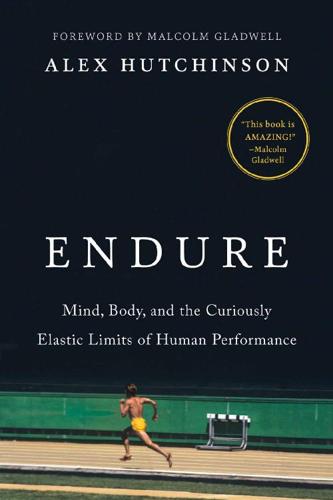
Endure: Mind, Body, and the Curiously Elastic Limits of Human Performance
by
Alex Hutchinson
Published 6 Feb 2018
But there was no further improvement when they drank more than they had chosen to in the first trial. Avoiding thirst, rather than avoiding dehydration, seems to be the most important key to performance. This controversial claim was mostly dismissed when it was first published, but the debate has gradually shifted in the years since then. A 2013 meta-analysis in the British Journal of Sports Medicine concluded than any losses of less than 4 percent are “very unlikely to impair [endurance performance] under real-world exercise conditions,” and concluded that athletes should be encouraged to drink according to thirst.31 Still, as compelling as these lines of evidence are, focusing on the details of plasma osmolality and total body water misses a larger point that has recurred throughout this book: the importance of any underlying physiological signal depends in part on how your brain receives and interprets it.
…
Shona Halson and David Martin: Shona Halson and David Martin, “Lying to Win—Placebos and Sport Science,” International Journal of Sports Physiology and Performance 8 (2013): 597–99. 5. purported benefits of a post-workout ice bath: J. Leeder, “Cold Water Immersion and Recovery from Strenuous Exercise: A Meta-Analysis,” British Journal of Sports Medicine 46, no. 4 (2012). 6. a “placebo-controlled” ice bath: J. R. Broatch et al., “Postexercise Cold Water Immersion Benefits Are Not Greater than the Placebo Effect,” Medicine & Science in Sports & Exercise 46, no. 11 (2014). 7. paradigm-altering demonstration: J.

The Targeter: My Life in the CIA, Hunting Terrorists and Challenging the White House
by
Nada Bakos
Published 3 Jun 2019
In the DI, thankfully, people were mostly judged by the substantive knowledge they brought to their work and their ability to do their jobs. Looking back at my time in the CIA, I think the simplest difference in approaches comes from the way women tend to balance risk and reward. I know this veers toward armchair theorizing, but there’s a scientific underpinning for it. In a 1999 meta-analysis of 150 studies comparing risk-taking tendencies of males and females, entitled “Gender Differences in Risk Taking,” researchers James Byrnes, David Miller, and William Schafer concluded that “clearly… male participants are more likely to take risks than female participants.” Other studies built upon those findings, including the 2006 “Gender, Financial Risk, and Probability Weights,” by Swiss researchers Helga Fehr-Duda, Manuele de Gennaro, and Renate Schubert, which found that females weigh probabilities differently from males and that women are more pessimistic about potential significant gains.
…
. $940,000 in back pay and granting twenty-five retroactive promotions: Ibid. 12. “a fantasy of a different sort”: Slatkin, “Executive Director Speech.” 13. “male participants are more likely to take risks”: James Byrnes, David Miller, and William Schafer, “Gender Differences in Risk Taking: A Meta-Analysis,” Psychological Bulletin 125, no. 3 (May 1999): 377. 14. “may indeed lead to higher risk aversion”: Helga Fehr-Duda, Manuele de Gennaro, and Renate Schubert, “Gender, Financial Risk, and Probability Weights,” Theory and Decision 60, no. 2 (May 2006). 15. “Armed and Dangerous”: United States Department of State Bureau of Intelligence and Research, “The Wandering Mujahidin: Armed and Dangerous,” August 21–22, 1993, http://blogs.law.harvard.edu/mesh/files/2008/03/wandering_mujahidin.pdf. 16.

Reset
by
Ronald J. Deibert
Published 14 Aug 2020
Instead, they are archived and recycled and used repeatedly to shame and belittle, leading to increased depression and other mental health risks.142 With respect to adolescent boys, on the other hand, social media — especially online first-person shooter games — tap into their craving for adrenaline rushes and their attraction to pack behaviour with an artificial and sedentary alternative to the real thing. (A 2018 meta-analysis of twenty-eight separate studies confirmed that there’s a higher prevalence of internet addiction among adolescent males — possibly related to their greater susceptibility to developing addictions altogether — than there is among the population overall.)143 It’s become familiar to hear about boys who go to school (where they sit most of the day) and then return home to sit in front of a screen to which they are hopelessly attached.
…
Retrieved from https://www.cnn.com/2019/01/03/health/social-media-depression-girls-study/index.html Higher prevalence of internet addiction among adolescent males: Fumero, A., Marrero, R. J., Voltes, D., & Peñate, W. (2018). Personal and social factors involved in internet addiction among adolescents: A meta-analysis. https://doi.org/10.1016/j.chb.2018.05.005 The World Health Organization and the American Psychiatric Association added “internet gaming disorder”: Jabr. Can you really be addicted to video games? Higher levels of screen time … may be linked with increased symptoms of depression: Boers, E., Afzali, M.
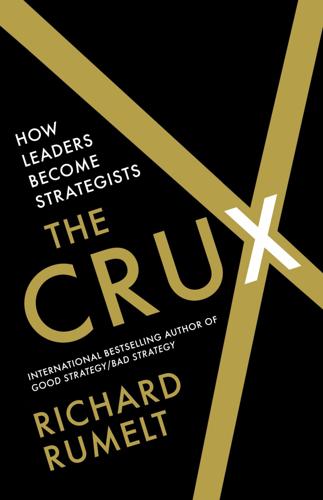
The Crux
by
Richard Rumelt
Published 27 Apr 2022
This, in fact, may be one reason for some of the statistically negative results from large deals. It seems reasonable that the greatest benefits, the largest synergy, would come from an acquisition that is closely related to the business of the acquirer. Unfortunately, this does not seem to be the case. In a thorough meta-analysis of sixty-seven studies of acquisitions and relatedness researchers concluded, “The overall effect of relatedness on [stock-price] performance is negligible. It is also possible that synergies exist but that their effect is too small to pay-off a (high) acquisition premium.”5 The largest premium is due to hubris—overconfidence.
…
David Trainer, “Perverse Incentives Produce Deals That Shred Shareholder Value,” Forbes, May 2, 2016, www.forbes.com/sites/greatspeculations/2016/05/02/perverse-incentives-produce-deals-that-shred-shareholder-value. 5. F. Homberg, K. Rost, and M. Osterloh, “Do Synergies Exist in Related Acquisitions? A Meta-analysis of Acquisition Studies,” Review of Managerial Science 3, no. 2 (2009): 100. 6. Colin Camerer and Dan Lovallo, “Overconfidence and Excess Entry: An Experimental Approach,” American Economic Review 89, no. 1 (1999): 306–318. 7. D. Fisher, “Accounting Tricks Catch Up with GE,” Forbes, November 22, 2019. 8.
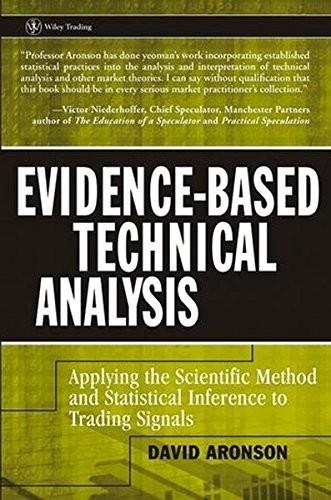
Evidence-Based Technical Analysis: Applying the Scientific Method and Statistical Inference to Trading Signals
by
David Aronson
Published 1 Nov 2006
It was a review of prior studies, known as a meta-analysis, which examined 20 studies that had compared the subjective diagnoses of psychologists and psychiatrists with those produced by linear statistical models. The studies covered the prediction of academic success, the likelihood of criminal recidivism, and predicting the outcomes of electrical shock therapy. In each case, the experts rendered a judgment by evaluating a multitude of variables in a subjective manner. “In all studies, the statistical model provided more accurate predictions or the two methods tied.”34 A subsequent study by Sawyer35 was a meta analysis of 45 studies.
…
The studies include prediction of academic performance, life-expectancy of cancer patients, changes in stock prices, psychological diagnosis, bankruptcy, student ratings of teacher effectiveness, sales performance, and IQ based on Rorschach test. The average correlation between prediction and outcome for expert judgment was 0.33 on a scale of 0 to 1.0. The average correlation for the objective model was 0.64. In a meta-analysis of over 100 peer-reviewed studies comparing expert judgment with statistical rules, statistical rules were more accurate in 96 percent of the cases. See J.A. Swets, R.M. Dawes, and J. Monahan, “Psychological Science Can Improve Diagnostic Decisions,” Psychological Science in the Public Interest 1 (2000). 482 NOTES 27.

Spiralizer Cookbook
by
Rockridge Press
Published 29 Apr 2015
“The New Way to Make a Homemade (Healthy!) Pasta Dinner.” Good Housekeeping. (Accessed Sep. 30, 2014). http://www.goodhousekeeping.com/product-reviews/test-kitchen-blog/spiralizer-spiraled-vegetables. Santos, F. L., S. S. Esteves, A. da Costa Pereira, W. S. Yancy Jr., and J. P. L. Nunes. “Systematic Review and Meta-Analysis of Clinical Trials of the Effects of Low Carbohydrate Diets on Cardiovascular Risk Factors.” Obesity Reviews (July 2012), doi/10.1111/j.1467-789X.2012.01021.x/ “Spiral Slicers (Spiralizers).” Cook’s Illustrated. Accessed March 12, 2015. http://www.cooksillustrated.com/equipment_reviews/1540-spiral-slicers-spiralizers.
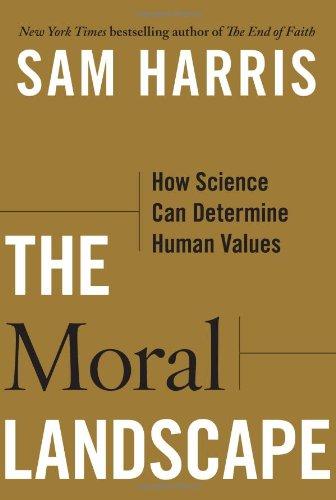
The Moral Landscape: How Science Can Determine Human Values
by
Sam Harris
Published 5 Oct 2010
Northoff, G., Heinzel, A., Bermpohl, F., Niese, R., Pfennig, A., Pascual-Leone, A., et al. (2004). Reciprocal modulation and attenuation in the prefrontal cortex: An fMRI study on emotional-cognitive interaction. Hum Brain Mapp, 21 (3), 202–212. Northoff, G., Heinzel, A., de Greck, M., Bermpohl, F., Dobrowolny, H., & Panksepp, J. (2006). Self-referential processing in our brain—a meta-analysis of imaging studies on the self. Neuroimage, 31 (1), 440–457. Nowak, M. A., & Sigmund, K. (2005). Evolution of indirect reciprocity. Nature, 437 (7063), 1291–1298. Nozick, R. (1974). Anarchy, state, and utopia. New York: Basic Books. Nunez, J. M., Casey, B. J., Egner, T., Hare, T., & Hirsch, J. (2005).
…
Individual differences in reasoning: Implications for the rationality debate? Behavioral and Brain Sciences, 23, 645–726. Stark, R. (2001). One true God: Historical consequences of monotheism. Princeton, NJ: Princeton University Press. Steele, J. D., & Lawrie, S. M. (2004). Segregation of cognitive and emotional function in the prefrontal cortex: A stereotactic meta-analysis. Neuroimage, 21 (3), 868–875. Stenger, V. A. (2009). The new atheism: Taking a stand for science and reason. New York: Prometheus Books. Stewart, P. (2008, May 29). Vatican says it will excommunicate women priests. Reuters. Stoller, S. E., & Wolpe, P. R. (2007). Emerging neurotechnologies for lie detection and the Fifth Amendment.
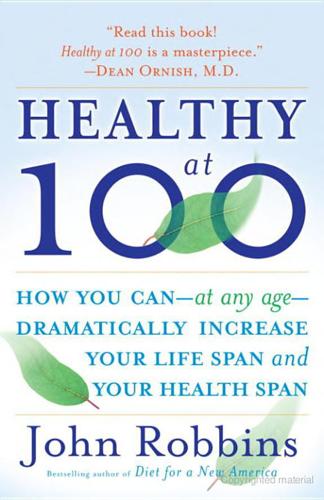
Healthy at 100: The Scientifically Proven Secrets of the World's Healthiest and Longest-Lived Peoples
by
John Robbins
Published 1 Sep 2006
Of the twenty-five nutrients that are removed when whole wheat flour is milled into white flour, only five nutrients are chemically replaced when the white flour is enriched. The importance of whole grains in cancer prevention was vividly illustrated in a 2001 report published in the Journal of the American Dietetic Association.3 The authors conducted a “meta-analysis,” reviewing the entire body of available scientific literature on whole grains and cancer risk. Here’s what they found: Of forty-five studies on whole grains and cancer, forty-three showed whole-grain intake to provide significant protection from several cancers. Specifically, a protective association was seen in 9 of 10 mentions of studies on colorectal cancers and polyps, 7 of 7 mentions of gastric cancer, 6 of 6 mentions of other digestive tract cancers, 7 of 7 mentions of hormone-related cancers (breast, prostate, ovarian, and uterine cancer), 4 of 4 mentions of pancreatic cancer, and 10 of 11 mentions of other cancers.
…
Craig Willcox, and Makoto Suzuki, The Okinawa Program: Learn the Secrets to Health and Longevity (Three Rivers Press, 2001), pp. 43, 71. 2. Ibid. p. 69. 3. Joanne Slavin et al., “The Role of Whole Grains in Disease Prevention,” Journal of the American Dietetic Association 2001, 101:780–85. See also D. R. Jacobs et al., “Whole-grain intake and cancer: An expanded review and meta-analysis,” Nutrition and Cancer 1998, 30:85–96. 4. D. R. Jacobs et al., “Is whole-grain intake associated with reduced total and cause-specific death rates in older women? The Iowa Women’s Health Study,” American Journal of Public Health 1999, 89(3):322–29. See also S. Liu, “Intake of refined carbohydrates and whole grain foods in relation to risk of type 2 diabetes mellitus and coronary heart disease,” Journal of the American College of Nutrition 2002, 21(4):298–306; D.

The Evolution of Everything: How New Ideas Emerge
by
Matt Ridley
Behavioral Genetics (6th edition). Worth Publishers. On intelligence heritability increasing with age, Briley, D.A. and Tucker-Drob, E.M. 2013. Explaining the increasing heritability of cognitive ability over development: A meta-analysis of longitudinal twin and adoption studies. Psychological Science 24:1704–1713; and Briley, D.A. and Tucker-Drob, E.M. 2014. Genetic and environmental continuity in personality development: A meta-analysis. Psychological Bulletin 140:1303–1331. On regression to the mean, Clark, Gregory 2014. The Son Also Rises. Princeton University Press. On monkeys and toys, Hines, M. and Alexander, G.M. 2008.
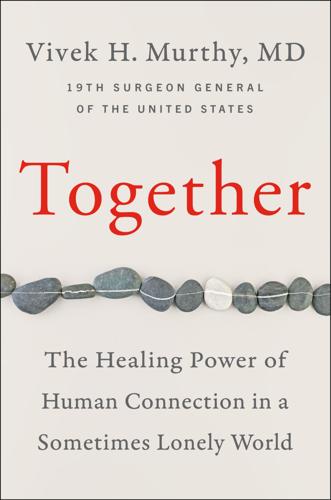
Together
by
Vivek H. Murthy, M.D.
Published 5 Mar 2020
David, “My life has become a major distraction from my cell phone: Partner phubbing and relationship satisfaction among romantic partners,” Computers in Human Behavior 54 (2016): 134–41, https://doi.org/10.1016/j.chb.2015.07.058. 17Sara H. Konrath, Edward H. Obrien, and Courtney Hsing, “Changes in Dispositional Empathy in American College Students Over Time: A Meta-Analysis,” Personality and Social Psychology Review 15, no. 2 (August 2010): 180–98, https://doi.org/10.1177/1088868310377395. 18Victoria J. Rideout, Ulla G. Foehr, and Donald F. Roberts, “Generation M2: Media in the Lives of 8- to 18-Year-Olds,” The Henry J. Kaiser Family Foundation, January 2010, https://www.kff.org/wp-content/uploads/2013/01/8010.pdf. 19Yalda T.
…
Robinson Kurpius, “The Relationship of Loneliness and Social Support with College Freshmen’s Academic Performance and Persistence,” Journal of College Student Retention: Research, Theory & Practice 8, no. 3 (2006): 345–58, https://doi.org/10.2190/a465-356m-7652-783r. 6Catharine Beyes, Angela Davis-Unger, Nana Lowell, Debbie McGhee, and Jon Peterson, “UW Undergraduate Retention and Graduation Study,” University of Washington Office of Educational Assessment, June 2014, accessed August 31, 2019, http://depts.washington.edu/assessmt/pdfs/reports/OEAReport1401.pdf. 7Genevieve Glatsky, “A college junior wants you to have a deep conversation with 20 strangers in Center City,” Daily Pennsylvanian, October 26, 2016, https://www.thedp.com/article/2016/10/space-conversation-with-strangers-serena-bian. 8Thomas Merton, The Wisdom of the Desert: Sayings from the Desert Fathers of the Fourth Century (New York: New Directions Publishing Corp, 1970). 9Susan Cain, Quiet: The Power of Introverts in a World That Can’t Stop Talking (New York: Broadway Books, 2012). 10Julieta Galante, Ignacio Galante, Marie-Jet Bekkers, and John Gallacher, “Effect of kindness-based meditation on health and well-being: A systematic review and meta-analysis,” Journal of Consulting and Clinical Psychology 82, no. 6 (December 2014): 1101–1104, http://dx.doi.org/10.1037/a0037249. 11Xianglong Zeng, Cleo P. K. Chiu, Rong Wang, Tian P. S. Oei, and Freedom Y. K. Leung, “The effect of loving-kindness meditation on positive emotions: a meta-analytic review,” Frontiers in Psychology 6 (November 3, 2015): 1693, https://doi.org/10.3389/fpsyg.2015.01693. 12Christopher R.

The Future Is Faster Than You Think: How Converging Technologies Are Transforming Business, Industries, and Our Lives
by
Peter H. Diamandis
and
Steven Kotler
Published 28 Jan 2020
By decade’s end, as Mark Levine explained in Outside magazine: “The weather [had] come to assume the shape of our collective anxieties, our fantasies about technology, nature, retribution, inevitability.… We have overstepped, we whisper, we have changed the weather. Now the weather is going to change us.” How much will it change us? In a 2015 meta-analysis of all available data, Climate Central, an independent group of leading scientists and journalists, reported that even if we manage to halt warming at two degrees, extreme weather will still displace 130 million people. If we don’t? Climate Central’s prognosis isn’t good: “Carbon emissions causing 4 degrees C of warming—what business-as-usual points toward today—could lock in enough sea level rise to submerge land currently home to 470 to 760 million people.”
…
Oxford scientist Norman Myers: Norman Myers, “Environmental Refugees: A Growing Phenomenon of the 21st Century,” Philosophical Transactions of the Royal Society B Biological Sciences, May 2002, DOI: 10.1098/rstb.2001.0953. as Mark Levine explained in Outside magazine: Mark Levine, “A Storm at the Bone: A Personal Exploration into Deep Weather,” Outside, November 1, 1998. See: https://www.outsideonline.com/1907231/storm-bone-personal-exploration-deep-weather. a 2015 meta-analysis of all available data: “New Report and Maps: Rising Seas Threaten Land Home to Half a Billion,” Climate Central, November 8, 2015. See: http://sealevel.climatecentral.org/news/global-mapping-choices. made a series of maps: Ibid. everything south of Wall Street: Benjamin Strauss, “American Icons Threatened by Sea Level Rise: In Pictures” Climate Central, October 16, 2015.

New Laws of Robotics: Defending Human Expertise in the Age of AI
by
Frank Pasquale
Published 14 May 2020
Kim Saverno, “Ability of Pharmacy Clinical Decision-Support Software to Alert Users about Clinically Important Drug-Drug Interactions,” Journal of American Medical Informatics Association 18, no. 1 (2011): 32–37. 13. Lorenzo Moja, “Effectiveness of Computerized Decision Support Systems Linked to Electronic Health Records: A Systematic Review and Meta-Analysis,” American Journal of Public Health 104 (2014): e12–e22; Mariusz Tybinski, Pavlo Lyovkin, Veronika Sniegirova, and Daniel Kopec, “Medical Errors and Their Prevention,” Health 4 (2012): 165–172. 14. Committee on Patient Safety and Health Information Technology Board on Health Care Services, Health IT and Patient Safety: Building Safer Systems for Better Care (Washington, DC: The National Academies Press, 2012), 39. 15.
…
Committee on Patient Safety and Health Information Technology Board on Health Care Services, Health IT and Patient Safety: Building Safer Systems for Better Care (Washington, DC: The National Academies Press, 2012), 39. 15. Lorenzo Moja, Koren Hyogene Kwag, Theodore Lytras, Lorenzo Bertizzolo, Linn Brandt, Valentina Pecoraro et al., “Effectiveness of Computerized Decision Support Systems Linked to Electronic Health Records: A Systematic Review and Meta-Analysis,” American Journal of Public Health 104 (2014): e12–e22. See also Elizabeth Murphy, “Clinical Decision Support: Effectiveness in Improving Quality Processes and Clinical Outcomes and Factors that May Influence Success,” Yale Journal of Biology and Medicine 87 (2014): 187–197, which showed that there was reduced risk in certain situations like deep vein thrombosis and pulmonary embolisms by 41 percent. 16.

The Plague Year: America in the Time of Covid
by
Lawrence Wright
Published 7 Jun 2021
Asian countries where mask-wearing was common reported sharply lower rates of transmission. As of March 17, when U.S. officials were still weighing in strongly against masks, Hong Kong, Singapore, and Taiwan had fewer than a thousand cases of Covid-19 altogether. The WHO changed its stance after commissioning a meta-analysis of 172 observational studies across sixteen countries of the effectiveness of social distancing and face masks, finding they made a significant difference. An enlightening natural experiment occurred in Kansas, when the governor issued an executive order in July to wear masks in public but allowed counties to opt out.
…
fewer than a thousand: Shan Soe-Lin and Robert Hecht, “Guidance against wearing masks for the coronavirus is wrong—you should cover your face,” Boston Globe, March 19, 2020. 172 observational studies: Derek K. Chu, et al., “Physical distancing, face masks, and eye protection to prevent person-to-person transmission of SARS-CoV-2 COVID-19: a systematic review and meta-analysis,” The Lancet, June 1, 2020. mask-wearing counties: Miriam E. Van Dyke, et al. “Trends in County-Level COVID-19 Incidence in Counties With and Without a Mask Mandate—Kansas, June 1-August 23, 2020.” Morbidity and Mortality Weekly Report, Nov. 27, 2020. Wu Lien-teh: “From the Black Death to Covid-19: The evolution of medical masks as disease control,” Agence France-Presse, May 18, 2020.
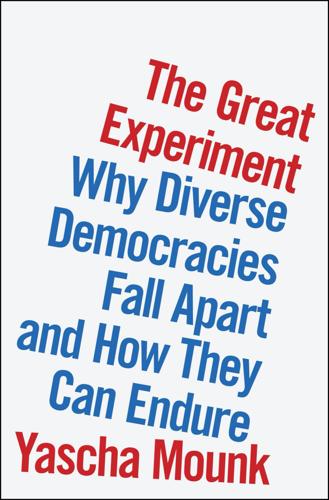
The Great Experiment: Why Diverse Democracies Fall Apart and How They Can Endure
by
Yascha Mounk
Published 19 Apr 2022
GO TO NOTE REFERENCE IN TEXT But among whites who had exclusively: Allport, The Nature of Prejudice, 274. GO TO NOTE REFERENCE IN TEXT Allport formulated four broad conditions: As Thomas F. Pettigrew, a professor at the University of California at Santa Cruz, wrote in an influential meta-analysis of hundreds of studies in 1998, Allport’s conditions “continue to receive support across a great variety of situations, groups, and societies.” Pettigrew, “Intergroup Contact Theory,” 68. The summary of the conditions on intergroup contact in the following paragraphs is based on the formulation by Pettigrew.
…
On the Netherlands, see Iris Andriessen, Eline Nievers, and Jaco Dagevos, “Ethnic Discrimination in the Dutch Labor Market: Its Relationship with Job Characteristics and Multiple Group Membership,” Work and Occupations 39, no. 3 (August 2012): 237–69, https://journals.sagepub.com/doi/10.1177/0730888412444783. On the United States, see Lincoln Quillian, Devah Pager, Ole Hexel, and Arnfinn H. Midtbøen, “Meta-Analysis of Field Experiments Shows No Change in Racial Discrimination in Hiring over Time,” Proceedings of the National Academy of Sciences 114, no. 41 (September 2017): 10870–875, http://dx.doi.org/10.1073/pnas.1706255114. GO TO NOTE REFERENCE IN TEXT account is nevertheless rejected: See Coulter, Adios America; Zemmour, Le Suicide Francais; and the books of Ko Bunyu.

The Coming Wave: Technology, Power, and the Twenty-First Century's Greatest Dilemma
by
Mustafa Suleyman
Published 4 Sep 2023
Yet over the last decade a growing consensus suggests these technologies did something else as well: creating the conditions to feed and amplify this underlying political polarization and institutional fragility. It’s hardly news that social media platforms can trigger gut emotional responses, the jolts of adrenaline so effectively delivered by perceived threats. Social media thrives on heightened emotions and, quite often, outrage. A meta-analysis published in the journal Nature reviewed the results of nearly five hundred studies, concluding there is a clear correlation between growing use of digital media and rising distrust in politics, populist movements, hate, and polarization. Correlation may not be causation, but this systematic review throws up “clear evidence of serious threats to democracy” coming from new technologies.
…
GO TO NOTE REFERENCE IN TEXT It would take a brave The demise of the nation-state is hardly a novel idea; see, for example, Rana Dasgupta, “The Demise of the Nation State,” Guardian, April 5, 2018, www.theguardian.com/news/2018/apr/05/demise-of-the-nation-state-rana-dasgupta. GO TO NOTE REFERENCE IN TEXT A meta-analysis published Philipp Lorenz-Spreen et al., “A Systematic Review of Worldwide Causal and Correlational Evidence on Digital Media and Democracy,” Nature Human Behaviour, Nov. 7, 2022, www.nature.com/articles/s41562-022-01460-1. GO TO NOTE REFERENCE IN TEXT As the historian of technology Langdon Winner, Autonomous Technology: Technics-Out-of-Control as a Theme in Political Thought (Cambridge, Mass.: MIT Press, 1977), 6.

The Fourth Industrial Revolution
by
Klaus Schwab
Published 11 Jan 2016
http://www.independent.co.uk/news/science/stephen-hawking-transcendence-looks-at-the-implications-of-artificial-intelligence-but-are-we-taking-9313474.html 61 Greg Brockman, Ilya Sutskever & the OpenAI team, “Introducing OpenAI”, 11 December 2015 https://openai.com/blog/introducing-openai/ 62 Steven Levy, “How Elon Musk and Y Combinator Plan to Stop Computers From Taking Over”, 11 December 2015 https://medium.com/backchannel/how-elon-musk-and-y-combinator-plan-to-stop-computers-from-taking-over-17e0e27dd02a#.qjj55npcj 63 Sara Konrath, Edward O’Brien, and Courtney Hsing. “Changes in dispositional empathy in American college students over time: A meta-analysis.” Personality and Social Psychology Review (2010). 64 Quoted in: Simon Kuper, “Log out, switch off, join in”, FT Magazine, 2 October 2015. http://www.ft.com/intl/cms/s/0/fc76fce2-67b3-11e5-97d0-1456a776a4f5.html 65 Sherry Turkle, Reclaiming Conversation: The Power of Talk in a Digital Age, Penguin, 2015. 66 Nicholas Carr, The Shallows: How the Internet is changing the way we think, read and remember, Atlantic Books, 2010. 67 Pico Iyer, The Art of Stillness: Adventures in Going Nowhere, Simon and Schuster, 2014. 68 Quoted in: Elizabeth Segran, “The Ethical Quandaries You Should Think About the Next Time You Look at Your Phone”, Fast Company, 5 October 2015.
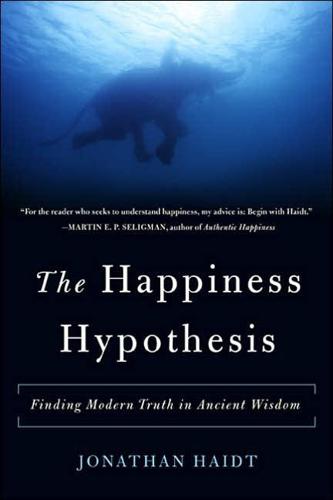
The Happiness Hypothesis: Finding Modern Truth in Ancient Wisdom
by
Jonathan Haidt
Published 26 Dec 2005
J., Hollon, S. D., Amsterdam, J. D., Shelton, R. C., Young, P R., Sa-lomon, R. M., et al. (2005). Cognitive therapy vs medications in the treatment of moderate to severe depression. Archives of General Psychiatry, 62, 409-^4 16. DeWolff, M., 8c van Ijzendoorn, M. (1997). Sensitivity and attachment: A meta-analysis on parental antecedents of infant attachment. Child Development, 68, 571-591. I )harmakirti. (2002). Mahayana tantra. New Delhi, India: Penguin. Diener, E., 8c Diener, C. (1996). Most people are happy. Psychological Science, 7, 181-185. Diener, E., 8c Oishi, S. ( 2 0 0 0 ) . Money and happiness: Income and subjective well-being across nations.
…
Physical attractiveness and subjective w e l l - b e i n g .Journal of Personality and Social Psychology, 6 9 , 120—129. I >ijksterhuis, A., 8c van Rnippenberg, A. (1998). The relation between perception and behavior, or how to win a game of Trivial Pursuit. Journal of Personality and Social Psychology, 7 4 , 8 6 5 — 8 7 7 . I )obson, K. S. (1989). A meta-analysis of the efficacy of cognitive therapy for de-p r e s s i o n . Journal of Consulting and Clinical Psychology, 5 7 , 4 1 4 — 4 1 9 . Doniger, W., 8c Smith, B. (Eds. 8c Trans.). (1991). The ,laws of Manu. London: Penguin. D o n n e , J. ( 1 9 7 5 / 1 6 2 3 ) . Devotions upon emergent occasions: A critical edition with introduction and commentary.
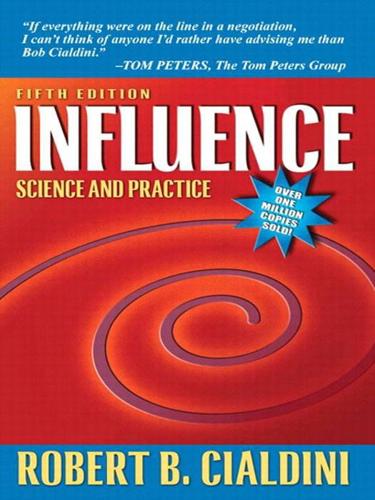
Influence: Science and Practice
by
Robert B. Cialdini
Published 1 Jan 1984
Politics and basking-in-reflected-glory. Basic and Applied Social Psychology, 24, 205–214. Bollen, K. A., & Phillips, D. P (1982). Imitative suicides: A national study of the effects of television news stories. American Sociological Review, 47, 802–809. Bond, M. H., & Smith, P. B. (1996). Culture and conformity: A meta-analysis of studies using Asch’s (1952b, 1956) line judgment task. Psychological Bulletin, 119, 111–137. Bornstein, R. F., Leone, D. R., & Galley, D. J. (1987). The generalizability of subliminal mere exposure effects. Journal of Personality and Social Psychology, 53, 1070–1079. Brehm, J. W. (1966).
…
Mahwah, NJ: Lawrence Erlbaum. Stangor, C., Sechrist, G. B., & Jost, J. T. (2001). Changing racial beliefs by providing consensus information. Personality and Social Psychology Bulletin, 27, 486–496. Stanne, M. B., Johnson, D. W., & Johnson, R. T. (1999). Does competition enhance or inhibit motor performance: A meta-analysis. Psychological Bulletin, 125, 133–154. Stelfox, H. T., Chua, G., O’Rourke, K., & Detsky, A. S. (1998). Conflict of interest in the debate over calcium-channel antagonists. New England Journal of Medicine, 333, 101–106. Stephan, W. G. (1978). School desegregation: An evaluation of predictions made in Brown vs.

The Theory That Would Not Die: How Bayes' Rule Cracked the Enigma Code, Hunted Down Russian Submarines, and Emerged Triumphant From Two Centuries of Controversy
by
Sharon Bertsch McGrayne
Published 16 May 2011
As part of the government’s post-Sputnik push to teach students at every level about probability, Mosteller wrote two textbooks about frequentism and Bayes’ rule for high school students. In 1961 he taught probability and statistics on NBC’s early-morning Continental Classroom series; his lectures were viewed by more than a million people and taken for credit by 75,000. In medical research Mosteller pioneered meta-analysis and strongly advocated randomized clinical trials, fair tests of medical treatments, and data-based medicine. He was one of the first to conduct large-scale studies of placebo effects, evaluations of many medical centers, collaborations between physicians and statisticians, and the use of large, mainframe computers.
…
See also Markov chains Monte Carlo simulation McNamara, Robert, 194 means, 130–32 medical devices, 228–29 medicine: cancer, x, 108–9, 110–14, 215–16, 227–28, 235, 255–57 diagnosis in, 135, 226–29, 255–57 heart attacks, x, 114–16 strokes, 226–27, 244 treatment in, 116, 235 X-rays, 53 Mercer, Robert L., 237–38, 245–47 Meshenberg, M. P., 101 meta-analysis, 215–16 metric system, 29 Metropolis, Nicholas, 222–23, 224 Michie, Donald, 81, 82 Microsoft, 242–43 military: asteroids and, 209 in Cold War, generally, 164–65, 173–75, 215 equal probabilities and, 38, 73 of France, 29, 38–40 image analysis and, 240, 241 inverse probability and, 38 mathematics and, 97 nuclear weapons and, 119–28, 182–95 robotics and, 240 of Russia, 72–73 satellites and, 209 statistics and, 97 submarines and, 194–203, 206–8 translation and, 247 weapons systems and, 241.

Who Owns the Future?
by
Jaron Lanier
Published 6 May 2013
To what degree must replication require the gathering of different, but similar big data, and not just the reuse of the same data with different algorithms? • What is publication? Is it just a description of the code used? The code itself? The code in some standardized form or framework that makes it reusable and tweakable? • Must analysis be performed in a way that anticipates standard practices of meta-analysis? • What documentation of the chain of custody of data must be standardized? • Must there be new practices established, analogous to double-blind tests or placebos, that help prevent big data scientists from fooling themselves? Should there be multiple groups developing code to analyze big data that remain completely insulated from each other in order to arrive at independent results?
…
M., 129–30, 261, 328 “Forum,” 214 Foucault, Michel, 308n 4chan, 335 4′33″ (Cage), 212 fractional reserve system, 33 Franco, Francisco, 159–60 freedom, 13–15, 32–33, 90–92, 277–78, 336 freelancing, 253–54 Free Print Shop, 228 “free rise,” 182–89, 355 free speech, 223, 225 free will, 166–68 “friction,” 179, 225, 230, 235, 354 Friendster, 180, 181 Fukuyama, Francis, 165, 189 fundamentalism, 131, 193–94 future: chaos in, 165–66, 273n, 331 economic analysis of, 1–3, 15, 22, 37, 38, 40–41, 42, 67, 122, 143, 148–52, 153, 155–56, 204, 208, 209, 236, 259, 274, 288, 298–99, 311, 362n, 363 humanistic economy for, 194, 209, 233–351 361–367 “humors” of, 124–40, 230 modern conception of, 123–40, 193–94, 255 natural basis of, 125, 127, 128–29 optimism about, 32–35, 45, 130, 138–40, 218, 230n, 295 politics of, 13–18, 22–25, 85, 122, 124–26, 128, 134–37, 199–234, 295–96, 342 technological trends in, 7–18, 21, 53–54, 60–61, 66–67, 85–86, 87, 97–98, 129–38, 157–58, 182, 188–90, 193–96, 217 utopian conception of, 13–18, 21, 30, 31, 37–38, 45–46, 96, 128, 130, 167, 205, 207, 265, 267, 270, 283, 290, 291, 308–9, 316 future-oriented money, 32–34, 35 Gadget, 186 Gallant, Jack, 111–12 games, 362, 363 Gates, Bill, 93 Gattaca, 130 Gawker, 118n Gelernter, David, 313 “general” machines, 158 General Motors, 56–57 general relativity theory, 167n Generation X, 346 genetic engineering, 130 genetics, 109–10, 130, 131, 146–47, 329, 366 genomics, 109–10, 146–47, 366 Germany, 45 Ghostery, 109 ghost suburbs, 296 Gibson, William, 137, 309 Gizmodo, 117–18 Global Business Network (GBN), 214–15 global climate change, 17, 32, 53, 132, 133, 134, 203, 266, 295, 296–97, 301–2, 331 global economy, 33n, 153–56, 173, 201, 214–15, 280 global village, 201 God, 29, 30–31, 139 Golden Goblet, 121, 121, 175, 328 golden rule, 335–36 gold standard, 34 Google, 14, 15, 19, 69, 74, 75–76, 90, 94, 106, 110, 120, 128, 153, 154, 170, 171, 174, 176, 180, 181–82, 188, 191, 192, 193, 199–200, 201, 209, 210, 217, 225, 227, 246, 249, 265, 267, 272, 278, 280, 286, 305n, 307, 309–10, 322, 325, 330, 344, 348, 352 Google Goggles, 309–10 Googleplex, 199–200 goops, 85–89, 99 Gore, Al, 80n Graeber, David, 30n granularity, 277 graph-shaped networks, 241, 242–43 Great Britain, 200 Great Depression, 69–70, 75, 135, 299 Great Recession, 31, 54, 60, 76–77, 204, 311, 336–37 Greece, 22–25, 45, 125 Grigorov, Mario, 267 guitars, 154 guns, 310–11 Gurdjieff, George, 215, 216 gurus, 211–13 hackers, 14, 82, 265, 306–7, 345–46 Hardin, Garrett, 66n Hartmann, Thom, 33n Hayek, Friedrich, 204 health care, 66–67, 95, 98–99, 100, 132–33, 153–54, 249, 253, 258, 337, 346 health insurance, 66–67, 95, 98–99, 100, 153–54 Hearts and Minds, 353n heart surgery, 11–13, 17, 18, 157–58 heat, 56 hedge funds, 69, 106, 137 Hephaestus, 22, 23 high-dimensional problems, 145 high-frequency trading, 56, 76–78, 154 highways, 79–80, 345 Hinduism, 214 Hippocrates, 124n Hiroshima bombing (1945), 127 Hollywood, 204, 206, 242 holographic radiation, 11 Homebrew Club, 228 homelessness, 151 homeopathy, 131–32 Homer, 23, 55 Honan, Mat, 82 housing market, 33, 46, 49–52, 61, 78, 95–96, 99, 193, 224, 227, 239, 245, 255, 274n, 289n, 296, 298, 300, 301 HTML, 227, 230 Huffington Post, 176, 180, 189 human agency, 8–21, 50–52, 85, 88, 91, 124–40, 144, 165–66, 175–78, 191–92, 193, 217, 253–64, 274–75, 283–85, 305–6, 328, 341–51, 358–60, 361, 362, 365–67 humanistic information economy, 194, 209, 233–351 361–367 human reproduction, 131 humors (tropes), 124–40, 157, 170, 230 hunter-gatherer societies, 131, 261–62 hyperefficient markets, 39, 42–43 hypermedia, 224–30, 245 hyper-unemployment, 7–8 hypotheses, 113, 128, 151 IBM, 191 identity, 14–15, 82, 124, 173–74, 175, 248–51, 283–90, 305, 306, 307, 315–16, 319–21 identity theft, 82, 315–16 illusions, 55, 110n, 120–21, 135, 154–56, 195, 257 immigration, 91, 97, 346 immortality, 193, 218, 253, 263–64, 325–31, 367 imports, 70 income levels, 10, 46–47, 50–54, 152, 178, 270–71, 287–88, 291–94, 338–39, 365 incrementalism, 239–40 indentured servitude, 33n, 158 India, 54, 211–13 industrialization, 49, 83, 85–89, 123, 132, 154, 343 infant mortality rates, 17, 134 infinity, 55–56 inflation, 32, 33–34 information: age of, 15–17, 42, 166, 241 ambiguity of, 41, 53–54, 155–56 asymmetry of, 54–55, 61–66, 118, 188, 203, 246–48, 285–88, 291–92, 310 behavior influenced by, 32, 121, 131, 173–74, 286–87 collection of, 61–62, 108–9 context of, 143–44, 178, 188–89, 223–24, 225, 245–46, 247, 248–51, 338, 356–57, 360 correlations in, 75–76, 114–15, 192, 274–75 for decision-making, 63–64, 184, 266, 269–75, 284n digital networks for, see digital networks duplication of, 50–52, 61, 74, 78, 88, 223–30, 239–40, 253–64, 277, 317–24, 335, 349 economic impact of, 1–3, 8–9, 15–17, 18, 19–20, 21, 35, 60–61, 92–97, 118, 185, 188, 201, 207, 209, 241–43, 245–46, 246–48, 256–58, 263, 283–87, 291–303, 331, 361–67 in education, 92–97 encrypted, 14–15, 175, 239–40, 305–8, 345 false, 119–21, 186, 275n, 287–88, 299–300 filters for, 119–20, 200, 225, 356–57 free, 7–9, 15–16, 50–52, 61, 74, 78, 88, 214, 223–30, 239–40, 246, 253–64, 277, 317–24, 335, 349 history of, 29–31 human agency in, 22–25, 69–70, 120–21, 122, 190–91 interpretation of, 29n, 114–15, 116, 120–21, 129–32, 154, 158, 178, 183, 184, 188–89 investment, 59–60, 179–85 life cycle of, 175–76 patterns in, 178, 183, 184, 188–89 privacy of, see privacy provenance of, 245–46, 247, 338 sampling of, 71–72, 191, 221, 224–26, 259 shared, 50–52, 61, 74, 78, 88, 100, 223–30, 239–40, 253–64, 277, 317–24, 335, 349 signals in, 76–78, 148, 293–94 storage of, 29, 167n, 184–85; see also cloud processors and storage; servers superior, 61–66, 114, 128, 143, 171, 246–48 technology of, 7, 32–35, 49, 66n, 71–72, 109, 110, 116, 120, 125n, 126, 135, 136, 254, 312–16, 317 transparency of, 63–66, 74–78, 118, 190–91, 306–7 two-way links in, 1–2, 227, 245, 289 value of, 1–3, 15–16, 20, 210, 235–43, 257–58, 259, 261–63, 271–75, 321–24, 358–60 see also big data; data infrastructure, 79–80, 87, 179, 201, 290, 345 initial public offerings (IPOs), 103 ink, 87, 331 Inner Directeds, 215 Instagram, 2, 53 instant prices, 272, 275, 288, 320 insurance industry, 44, 56, 60, 66–67, 95, 98–99, 100, 153–54, 203, 306 intellectual property, 44, 47, 49, 60, 61, 96, 102, 183, 204, 205–10, 223, 224–26, 236, 239–40, 246, 253–64 intelligence agencies, 56, 61, 199–200, 291, 346 intelligence tests, 39, 40 interest rates, 81 Internet: advertising on, 14, 20, 24, 42, 66, 81, 107, 109, 114, 129, 154, 169–74, 177, 182, 207, 227, 242, 266–67, 275, 286, 291, 322–24, 347–48, 354, 355 anonymity of, 172, 248–51, 283–90 culture of, 13–15, 25 development of, 69, 74, 79–80, 89, 129–30, 159, 162, 190–96, 223, 228 economic impact of, 1–2, 18, 19–20, 24, 31, 43, 60–66, 79–82, 117, 136–37, 169–74, 181, 186 employment and, 2, 7–8, 56–57, 60, 71–74, 79, 117, 123, 135, 149, 178, 201, 257–58 file sharing on, 50–52, 61, 74, 78, 88, 100, 223–30, 239–40, 253–64, 277, 317–24, 335, 349 free products and services of, 7n, 10, 60–61, 73, 81, 82, 90, 94–96, 97, 128, 154, 176, 183, 187, 201, 205–10, 234, 246–48, 253–64, 283–88, 289, 308–9, 317–24, 337–38, 348–50, 366 human contributions to, 19–21, 128, 129–30, 191–92, 253–64 identity in, 14–15, 82, 173–74, 175, 283–90, 315–16 investment in, 117–20, 181 legal issues in, 63, 79–82, 204, 206, 318–19 licensing agreements for, 79–82 as network, 2–3, 9, 11, 12, 14, 15, 16, 17, 19–21, 31, 49, 50–51, 53, 54–55, 56, 57, 75, 92, 129–30, 143–48, 228–29, 259, 286–87, 308–9 political aspect of, 13–15, 205–10 search engines for, 51, 60, 70, 81, 120, 191, 267, 289, 293; see also Google security of, 14–15, 175, 239–40, 305–8, 345 surveillance of, 1–2, 11, 14, 50–51, 64, 71–72, 99, 108–9, 114–15, 120–21, 152, 177n, 199–200, 201, 206–7, 234–35, 246, 272, 291, 305, 309–11, 315, 316, 317, 319–24 transparency of, 63–66, 176, 205–6, 278, 291, 308–9, 316, 336 websites on, 80, 170, 200, 201, 343 Internet2, 69 Internet service providers (ISPs), 171–72 Interstate Highway System, 79–80, 345 “In-valid,” 130 inventors, 117–20 investment, financial, 45, 50, 59–67, 74–80, 115, 116–20, 155, 179–85, 208, 218, 257, 258, 277–78, 298, 301, 348, 350 Invisible Hand humor, 126, 128 IP addresses, 248 iPads, 267 Iran, 199, 200 irony, 130 Islam, 184 Italy, 133 Jacquard programmable looms, 23n “jailbreaking,” 103–4 Japan, 85, 97, 98, 133 Jeopardy, 191 Jeremijenko, Natalie, 302 jingles, 267 jobs, see employment Jobs, Steve, 93, 166n, 192, 358 JOBS Act (2012), 117n journalism, 92, 94 Kapital, Das (Marx), 136 Keynesianism, 38, 151–52, 204, 209, 274, 288 Khan Academy, 94 Kickstarter, 117–20, 186–87, 343 Kindle, 352 Kinect, 89n, 265 “Kirk’s Wager,” 139 Klout, 365 Kodak, 2, 53 Kottke, Dan, 211 KPFA, 136 Kurzweil, Ray, 127, 325, 327 Kushner, Tony, 165, 189 LaBerge, Stephen, 162 labor, human, 85, 86, 87, 88, 99–100, 257–58, 292 labor unions, 44, 47–48, 49, 96, 239, 240 Laffer curve, 149–51, 150, 152 Las Vegas, Nev., 296, 298 lawyers, 98–99, 100, 136, 184, 318–19 leadership, 341–51 legacy prices, 272–75, 288 legal issues, 49, 63, 74–82, 98–99, 100, 104–5, 108, 136, 184, 204, 206, 318–19 Lehman Brothers, 188 lemonade stands, 79–82 “lemons,” 118–19 Lennon, John, 211, 213 levees, economic, 43–45, 46, 47, 48, 49–50, 52, 92, 94, 96, 98, 108, 171, 176n, 224–25, 239–43, 253–54, 263, 345 leveraged mortgages, 49–50, 61, 227, 245, 289n, 296 liberal arts, 97 liberalism, 135–36, 148, 152, 202, 204, 208, 235, 236, 251, 253, 256, 265, 293, 350 libertarianism, 14, 34, 80, 202, 208, 210, 262, 321 liberty, 13–15, 32–33, 90–92, 277–78, 336 licensing agreements, 79–82 “Lifestreams” (Gelernter), 313 Lights in the Tunnel, The (Ford), 56n Linux, 206, 253, 291, 344 litigation, 98–99, 100, 104–5, 108, 184 loans, 32–33, 42, 43, 74, 151–52, 306 local advantages, 64, 94–95, 143–44, 153–56, 173, 203, 280 Local/Global Flip, 153–56, 173, 280 locked-in software, 172–73, 182, 273–74 logical copies, 223 Long-Term Capital Management, 49, 74–75 looms, 22, 23n, 24 loopholes, tax, 77 lotteries, 338–39 lucid dreaming, 162 Luddites, 135, 136 lyres, 22, 23n, 24 machines, 19–20, 86, 92, 123, 129–30, 158, 261, 309–11, 328 see also computers “Machine Stops, The” (Forster), 129–30, 261, 328 machine translations, 19–20 machine vision, 309–11 McMillen, Keith, 117 magic, 110, 115, 151, 178, 216, 338 Malthus, Thomas, 132, 134 Malthusian humor, 125, 127, 132–33 management, 49 manufacturing sector, 49, 85–89, 99, 123, 154, 343 market economies, see economies, market marketing, 211–13, 266–67, 306, 346 “Markets for Lemons” problem, 118–19 Markoff, John, 213 marriage, 167–68, 274–75, 286 Marxism, 15, 22, 37–38, 48, 136–37, 262 as humor, 126 mash-ups, 191, 221, 224–26, 259 Maslow, Abraham, 260, 315 Massachusetts Institute of Technology (MIT), 75, 93, 94, 96–97, 157–58, 184 mass media, 7, 66, 86, 109, 120, 135, 136, 185–86, 191, 216, 267 material extinction, 125 materialism, 125n, 195 mathematics, 11, 20, 40–41, 70, 71–72, 75–78, 116, 148, 155, 161, 189n, 273n see also statistics Matrix, The, 130, 137, 155 Maxwell, James Clerk, 55 Maxwell’s Demon, 55–56 mechanicals, 49, 51n Mechanical Turk, 177–78, 185, 187, 349 Medicaid, 99 medicine, 11–13, 17, 18, 54, 66–67, 97–106, 131, 132–33, 134, 150, 157–58, 325, 346, 363, 366–67 Meetings with Remarkable Men (Gurdjieff), 215 mega-dossiers, 60 memes, 124 Memex, 221n memories, 131, 312–13, 314 meta-analysis, 112 metaphysics, 12, 127, 139, 193–95 Metcalf’s Law, 169n, 350 Mexico City, 159–62 microfilm, 221n microorganisms, 162 micropayments, 20, 226, 274–75, 286–87, 317, 337–38, 365 Microsoft, 19, 89, 265 Middle Ages, 190 middle class, 2, 3, 9, 11, 16–17, 37–38, 40, 42–45, 47, 48, 49, 50, 51, 60, 74, 79, 91, 92, 95, 98, 171, 205, 208, 210, 224–25, 239–43, 246, 253–54, 259, 262, 263, 280, 291–94, 331, 341n, 344, 345, 347, 354 milling machines, 86 mind reading, 111 Minority Report, 130, 310 Minsky, Marvin, 94, 157–58, 217, 326, 330–31 mission statements, 154–55 Mixed (Augmented) Reality, 312–13, 314, 315 mobile phones, 34n, 39, 85, 87, 162, 172, 182n, 192, 229, 269n, 273, 314, 315, 331 models, economic, 40–41, 148–52, 153, 155–56 modernity, 123–40, 193–94, 255 molds, 86 monetization, 172, 176n, 185, 186, 207, 210, 241–43, 255–56, 258, 260–61, 263, 298, 331, 338, 344–45 money, 3, 21, 29–35, 86, 108, 124, 148, 152, 154, 155, 158, 172, 185, 241–43, 278–79, 284–85, 289, 364 monocultures, 94 monopolies, 60, 65–66, 169–74, 181–82, 187–88, 190, 202, 326, 350 Moondust, 362n Moore’s Law, 9–18, 20, 153, 274–75, 288 morality, 29–34, 35, 42, 50–52, 54, 71–74, 188, 194–95, 252–64, 335–36 Morlocks, 137 morning-after pill, 104 morphing, 162 mortality, 193, 218, 253, 263–64, 325–31, 367 mortgages, 33, 46, 49–52, 61, 78, 95–96, 99, 224, 227, 239, 245, 255, 274n, 289n, 296, 300 motivation, 7–18, 85–86, 97–98, 216 motivational speakers, 216 movies, 111–12, 130, 137, 165, 192, 193, 204, 206, 256, 261–62, 277–78, 310 Mozart, Wolfgang Amadeus, 23n MRI, 111n music industry, 11, 18, 22, 23–24, 42, 47–51, 54, 61, 66, 74, 78, 86, 88, 89, 92, 94, 95–96, 97, 129, 132, 134–35, 154, 157, 159–62, 186–87, 192, 206–7, 224, 227, 239, 253, 266–67, 281, 318, 347, 353, 354, 355, 357 Myspace, 180 Nancarrow, Conlon, 159–62 Nancarrow, Yoko, 161 nanopayments, 20, 226, 274–75, 286–87, 317, 337–38, 365 nanorobots, 11, 12, 17 nanotechnology, 11, 12, 17, 87, 162 Napster, 92 narcissism, 153–56, 188, 201 narratives, 165–66, 199 National Security Agency (NSA), 199–200 natural medicine, 131 Nelson, Ted, 128, 221, 228, 245, 349–50 Nelsonian systems, 221–30, 335 Nelson’s humor, 128 Netflix, 192, 223 “net neutrality,” 172 networked cameras, 309–11, 319 networks, see digital networks neutrinos, 110n New Age, 211–17 Newmark, Craig, 177n New Mexico, 159, 203 newspapers, 109, 135, 177n, 225, 284, 285n New York, N.Y., 75, 91, 266–67 New York Times, 109 Nobel Prize, 40, 118, 143n nodes, network, 156, 227, 230, 241–43, 350 “no free lunch” principle, 55–56, 59–60 nondeterministic music, 23n nonlinear solutions, 149–50 nonprofit share sites, 59n, 94–95 nostalgia, 129–32 NRO, 199–200 nuclear power, 133 nuclear weapons, 127, 296 nursing, 97–100, 123, 296n nursing homes, 97–100, 269 Obama, Barack, 79, 100 “Obamacare,” 100n obsolescence, 89, 95 oil resources, 43, 133 online stores, 171 Ono, Yoko, 212 ontologies, 124n, 196 open-source applications, 206, 207, 272, 310–11 optical illusions, 121 optimism, 32–35, 45, 130, 138–40, 218, 230n, 295 optimization, 144–47, 148, 153, 154–55, 167, 202, 203 Oracle, 265 Orbitz, 63, 64, 65 organ donors, 190, 191 ouroboros, 154 outcomes, economic, 40–41, 144–45 outsourcing, 177–78, 185 Owens, Buck, 256 packet switching, 228–29 Palmer, Amanda, 186–87 Pandora, 192 panopticons, 308 papacy, 190 paper money, 34n parallel computers, 147–48, 149, 151 paranoia, 309 Parrish, Maxfield, 214 particle interactions, 196 party machines, 202 Pascal, Blaise, 132, 139 Pascal’s Wager, 139 passwords, 307, 309 “past-oriented money,” 29–31, 35, 284–85 patterns, information, 178, 183, 184, 188–89 Paul, Ron, 33n Pauli exclusion principle, 181, 202 PayPal, 60, 93, 326 peasants, 565 pensions, 95, 99 Perestroika (Kushner), 165 “perfect investments,” 59–67, 77–78 performances, musical, 47–48, 51, 186–87, 253 perpetual motion, 55 Persian Gulf, 86 personal computers (PCs), 158, 182n, 214, 223, 229 personal information systems, 110, 312–16, 317 Pfizer, 265 pharmaceuticals industry, 66–67, 100–106, 123, 136, 203 philanthropy, 117 photography, 53, 89n, 92, 94, 309–11, 318, 319, 321 photo-sharing services, 53 physical trades, 292 physicians, 66–67 physics, 88, 153n, 167n Picasso, Pablo, 108 Pinterest, 180–81, 183 Pirate Party, 49, 199, 206, 226, 253, 284, 318 placebos, 112 placement fees, 184 player pianos, 160–61 plutocracy, 48, 291–94, 355 police, 246, 310, 311, 319–21, 335 politics, 13–18, 21, 22–25, 47–48, 85, 122, 124–26, 128, 134–37, 149–51, 155, 167, 199–234, 295–96, 342 see also conservatism; liberalism; libertarianism Ponzi schemes, 48 Popper, Karl, 189n popular culture, 111–12, 130, 137–38, 139, 159 “populating the stack,” 273 population, 17, 34n, 86, 97–100, 123, 125, 132, 133, 269, 296n, 325–26, 346 poverty, 37–38, 42, 44, 53–54, 93–94, 137, 148, 167, 190, 194, 253, 256, 263, 290, 291–92 power, personal, 13–15, 53, 60, 62–63, 86, 114, 116, 120, 122, 158, 166, 172–73, 175, 190, 199, 204, 207, 208, 278–79, 290, 291, 302–3, 308–9, 314, 319, 326, 344, 360 Presley, Elvis, 211 Priceline, 65 pricing strategies, 1–2, 43, 60–66, 72–74, 145, 147–48, 158, 169–74, 226, 261, 272–75, 289, 317–24, 331, 337–38 printers, 90, 99, 154, 162, 212, 269, 310–11, 316, 331, 347, 348, 349 privacy, 1–2, 11, 13–15, 25, 50–51, 64, 99, 108–9, 114–15, 120–21, 152, 177n, 199–200, 201, 204, 206–7, 234–35, 246, 272, 291, 305, 309–13, 314, 315–16, 317, 319–24 privacy rights, 13–15, 25, 204, 305, 312–13, 314, 315–16, 321–22 product design and development, 85–89, 117–20, 128, 136–37, 145, 154, 236 productivity, 7, 56–57, 134–35 profit margins, 59n, 71–72, 76–78, 94–95, 116, 177n, 178, 179, 207, 258, 274–75, 321–22 progress, 9–18, 20, 21, 37, 43, 48, 57, 88, 98, 123, 124–40, 130–37, 256–57, 267, 325–31, 341–42 promotions, 62 property values, 52 proprietary hardware, 172 provenance, 245–46, 247, 338 pseudo-asceticism, 211–12 public libraries, 293 public roads, 79–80 publishers, 62n, 92, 182, 277–78, 281, 347, 352–60 punishing vs. rewarding network effects, 169–74, 182, 183 quants, 75–76 quantum field theory, 167n, 195 QuNeo, 117, 118, 119 Rabois, Keith, 185 “race to the bottom,” 178 radiant risk, 61–63, 118–19, 120, 156, 183–84 Ragnarok, 30 railroads, 43, 172 Rand, Ayn, 167, 204 randomness, 143 rationality, 144 Reagan, Ronald, 149 real estate, 33, 46, 49–52, 61, 78, 95–96, 99, 193, 224, 227, 239, 245, 255, 274n, 289n, 296, 298, 300, 301 reality, 55–56, 59–60, 124n, 127–28, 154–56, 161, 165–68, 194–95, 203–4, 216–17, 295–303, 364–65 see also Virtual Reality (VR) reason, 195–96 recessions, economic, 31, 54, 60, 76–77, 79, 151–52, 167, 204, 311, 336–37 record labels, 347 recycling, 88, 89 Reddit, 118n, 186, 254 reductionism, 184 regulation, economic, 37–38, 44, 45–46, 49–50, 54, 56, 69–70, 77–78, 266n, 274, 299–300, 311, 321–22, 350–51 relativity theory, 167n religion, 124–25, 126, 131, 139, 190, 193–95, 211–17, 293, 300n, 326 remote computers, 11–12 rents, 144 Republican Party, 79, 202 research and development, 40–45, 85–89, 117–20, 128, 136–37, 145, 154, 215, 229–30, 236 retail sector, 69, 70–74, 95–96, 169–74, 272, 349–51, 355–56 retirement, 49, 150 revenue growth plans, 173n revenues, 149, 149, 150, 151, 173n, 225, 234–35, 242, 347–48 reversible computers, 143n revolutions, 199, 291, 331 rhythm, 159–62 Rich Dad, Poor Dad (Kiyosaki), 46 risk, 54, 55, 57, 59–63, 71–72, 85, 117, 118–19, 120, 156, 170–71, 179, 183–84, 188, 242, 277–81, 284, 337, 350 externalization of, 59n, 117, 277–81 risk aversion, 188 risk pools, 277–81, 284 risk radiation, 61–63, 118–19, 120, 156, 183–84 robo call centers, 177n robotic cars, 90–92 robotics, robots, 11, 12, 17, 23, 42, 55, 85–86, 90–92, 97–100, 111, 129, 135–36, 155, 157, 162, 260, 261, 269, 296n, 342, 359–60 Roman Empire, 24–25 root nodes, 241 Rousseau, Jean-Jacques, 129 Rousseau humor, 126, 129, 130–31 routers, 171–72 royalties, 47, 240, 254, 263–64, 323, 338 Rubin, Edgar, 121 rupture, 66–67 salaries, 10, 46–47, 50–54, 152, 178, 270–71, 287–88, 291–94, 338–39, 365 sampling, 71–72, 191, 221, 224–26, 259 San Francisco, University of, 190 satellites, 110 savings, 49, 72–74 scalable solutions, 47 scams, 119–21, 186, 275n, 287–88, 299–300 scanned books, 192, 193 SceneTap, 108n Schmidt, Eric, 305n, 352 Schwartz, Peter, 214 science fiction, 18, 126–27, 136, 137–38, 139, 193, 230n, 309, 356n search engines, 51, 60, 70, 81, 120, 191, 267, 289, 293 Second Life, 270, 343 Secret, The (Byrne), 216 securitization, 76–78, 99, 289n security, 14–15, 175, 239–40, 305–8, 345 self-actualization, 211–17 self-driving vehicles, 90–92, 98, 311, 343, 367 servants, 22 servers, 12n, 15, 31, 53–57, 71–72, 95–96, 143–44, 171, 180, 183, 206, 245, 358 see also Siren Servers “Sexy Sadie,” 213 Shakur, Tupac, 329 Shelley, Mary, 327 Short History of Progress, A (Wright), 132 “shrinking markets,” 66–67 shuttles, 22, 23n, 24 signal-processing algorithms, 76–78, 148 silicon chips, 10, 86–87 Silicon Valley, 12, 13, 14, 21, 34n, 56, 59, 60, 66–67, 70, 71, 75–76, 80, 93, 96–97, 100, 102, 108n, 125n, 132, 136, 154, 157, 162, 170, 179–89, 192, 193, 200, 207, 210, 211–18, 228, 230, 233, 258, 275n, 294, 299–300, 325–31, 345, 349, 352, 354–58 singularity, 22–25, 125, 215, 217, 327–28, 366, 367 Singularity University, 193, 325, 327–28 Sirenic Age, 66n, 354 Siren Servers, 53–57, 59, 61–64, 65, 66n, 69–78, 82, 91–99, 114–19, 143–48, 154–56, 166–89, 191, 200, 201, 203, 210n, 216, 235, 246–50, 258, 259, 269, 271, 272, 280, 285, 289, 293–94, 298, 301, 302–3, 307–10, 314–23, 326, 336–51, 354, 365, 366 Siri, 95 skilled labor, 99–100 Skout, 280n Skype, 95, 129 slavery, 22, 23, 33n Sleeper, 130 small businesses, 173 smartphones, 34n, 39, 162, 172, 192, 269n, 273 Smith, Adam, 121, 126 Smolin, Lee, 148n social contract, 20, 49, 247, 284, 288, 335, 336 social engineering, 112–13, 190–91 socialism, 14, 128, 254, 257, 341n social mobility, 66, 97, 292–94 social networks, 18, 51, 56, 60, 70, 81, 89, 107–9, 113, 114, 129, 167–68, 172–73, 179, 180, 190, 199, 200–201, 202, 204, 227, 241, 242–43, 259, 267, 269n, 274–75, 280n, 286, 307–8, 317, 336, 337, 343, 349, 358, 365–66 see also Facebook social safety nets, 10, 44, 54, 202, 251, 293 Social Security, 251, 345 software, 7, 9, 11, 14, 17, 68, 86, 99, 100–101, 128, 129, 147, 154, 155, 165, 172–73, 177–78, 182, 192, 234, 236, 241–42, 258, 262, 273–74, 283, 331, 347, 357 software-mediated technology, 7, 11, 14, 86, 100–101, 165, 234, 236, 258, 347 South Korea, 133 Soviet Union, 70 “space elevator pitch,” 233, 342, 361 space travel, 233, 266 Spain, 159–60 spam, 178, 275n spending levels, 287–88 spirituality, 126, 211–17, 325–31, 364 spreadsheet programs, 230 “spy data tax,” 234–35 Square, 185 Stalin, Joseph, 125n Stanford Research Institute (SRI), 215 Stanford University, 60, 75, 90, 95, 97, 101, 102, 103, 162, 325 Starr, Ringo, 256 Star Trek, 138, 139, 230n startup companies, 39, 60, 69, 93–94, 108n, 124n, 136, 179–89, 265, 274n, 279–80, 309–10, 326, 341, 343–45, 348, 352, 355 starvation, 123 Star Wars, 137 star (winner-take-all) system, 38–43, 50, 54–55, 204, 243, 256–57, 263, 329–30 statistics, 11, 20, 71–72, 75–78, 90–91, 93, 110n, 114–15, 186, 192 “stickiness,” 170, 171 stimulus, economic, 151–52 stoplights, 90 Strangelove humor, 127 student debt, 92, 95 “Study 27,” 160 “Study 36,” 160 Sumer, 29 supergoop, 85–89 supernatural phenomena, 55, 124–25, 127, 132, 192, 194–95, 300 supply chain, 70–72, 174, 187 Supreme Court, U.S., 104–5 surgery, 11–13, 17, 18, 98, 157–58, 363 surveillance, 1–2, 11, 14, 50–51, 64, 71–72, 99, 108–9, 114–15, 120–21, 152, 177n, 199–200, 201, 206–7, 234–35, 246, 272, 291, 305, 309–11, 315, 316, 317, 319–24 Surviving Progress, 132 sustainable economies, 235–37, 285–87 Sutherland, Ivan, 221 swarms, 99, 109 synthesizers, 160 synthetic biology, 162 tablets, 85, 86, 87, 88, 113, 162, 229 Tahrir Square, 95 Tamagotchis, 98 target ads, 170 taxation, 44, 45, 49, 52, 60, 74–75, 77, 82, 149, 149, 150, 151, 202, 210, 234–35, 263, 273, 289–90 taxis, 44, 91–92, 239, 240, 266–67, 269, 273, 311 Teamsters, 91 TechCrunch, 189 tech fixes, 295–96 technical schools, 96–97 technologists (“techies”), 9–10, 15–16, 45, 47–48, 66–67, 88, 122, 124, 131–32, 134, 139–40, 157–62, 165–66, 178, 193–94, 295–98, 307, 309, 325–31, 341, 342, 356n technology: author’s experience in, 47–48, 62n, 69–72, 93–94, 114, 130, 131–32, 153, 158–62, 178, 206–7, 228, 265, 266–67, 309–10, 325, 328, 343, 352–53, 362n, 364, 365n, 366 bio-, 11–13, 17, 18, 109–10, 162, 330–31 chaos and, 165–66, 273n, 331 collusion in, 65–66, 72, 169–74, 255, 350–51 complexity of, 53–54 costs of, 8, 18, 72–74, 87n, 136–37, 170–71, 176–77, 184–85 creepiness of, 305–24 cultural impact of, 8–9, 21, 23–25, 53, 130, 135–40 development and emergence of, 7–18, 21, 53–54, 60–61, 66–67, 85–86, 87, 97–98, 129–38, 157–58, 182, 188–90, 193–96, 217 digital, 2–3, 7–8, 15–16, 18, 31, 40, 43, 50–51, 132, 208 economic impact of, 1–3, 15–18, 29–30, 37, 40, 53–54, 60–66, 71–74, 79–110, 124, 134–37, 161, 162, 169–77, 181–82, 183, 184–85, 218, 254, 277–78, 298, 335–39, 341–51, 357–58 educational, 92–97 efficiency of, 90, 118, 191 employment in, 56–57, 60, 71–74, 79, 123, 135, 178 engineering for, 113–14, 123–24, 192, 194, 217, 218, 326 essential vs. worthless, 11–12 failure of, 188–89 fear of (technophobia), 129–32, 134–38 freedom as issue in, 32–33, 90–92, 277–78, 336 government influence in, 158, 199, 205–6, 234–35, 240, 246, 248–51, 307, 317, 341, 345–46, 350–51 human agency and, 8–21, 50–52, 85, 88, 91, 124–40, 144, 165–66, 175–78, 191–92, 193, 217, 253–64, 274–75, 283–85, 305–6, 328, 341–51, 358–60, 361, 362, 365–67 ideas for, 123, 124, 158, 188–89, 225, 245–46, 286–87, 299, 358–60 industrial, 49, 83, 85–89, 123, 132, 154, 343 information, 7, 32–35, 49, 66n, 71–72, 109, 110, 116, 120, 125n, 126, 135, 136, 254, 312–16, 317 investment in, 66, 181, 183, 184, 218, 277–78, 298, 348 limitations of, 157–62, 196, 222 monopolies for, 60, 65–66, 169–74, 181–82, 187–88, 190, 202, 326, 350 morality and, 50–51, 72, 73–74, 188, 194–95, 262, 335–36 motivation and, 7–18, 85–86, 97–98, 216 nano-, 11, 12, 17, 162 new vs. old, 20–21 obsolescence of, 89, 97 political impact of, 13–18, 22–25, 85, 122, 124–26, 128, 134–37, 199–234, 295–96, 342 progress in, 9–18, 20, 21, 37, 43, 48, 57, 88, 98, 123, 124–40, 130–37, 256–57, 267, 325–31, 341–42 resources for, 55–56, 157–58 rupture as concept in, 66–67 scams in, 119–21, 186, 275n, 287–88, 299–300 singularity of, 22–25, 125, 215, 217, 327–28, 366, 367 social impact of, 9–21, 124–40, 167n, 187, 280–81, 310–11 software-mediated, 7, 11, 14, 86, 100–101, 165, 234, 236, 258, 347 startup companies in, 39, 60, 69, 93–94, 108n, 124n, 136, 179–89, 265, 274n, 279–80, 309–10, 326, 341, 343–45, 348, 352, 355 utopian, 13–18, 21, 31, 37–38, 45–46, 96, 128, 130, 167, 205, 207, 265, 267, 270, 283, 290, 291, 308–9, 316 see also specific technologies technophobia, 129–32, 134–38 television, 86, 185–86, 191, 216, 267 temperature, 56, 145 Ten Commandments, 300n Terminator, The, 137 terrorism, 133, 200 Tesla, Nikola, 327 Texas, 203 text, 162, 352–60 textile industry, 22, 23n, 24, 135 theocracy, 194–95 Theocracy humor, 124–25 thermodynamics, 88, 143n Thiel, Peter, 60, 93, 326 thought experiments, 55, 139 thought schemas, 13 3D printers, 7, 85–89, 90, 99, 154, 162, 212, 269, 310–11, 316, 331, 347, 348, 349 Thrun, Sebastian, 94 Tibet, 214 Time Machine, The (Wells), 127, 137, 261, 331 topology, network, 241–43, 246 touchscreens, 86 tourism, 79 Toyota Prius, 302 tracking services, 109, 120–21, 122 trade, 29 traffic, 90–92, 314 “tragedy of the commons,” 66n Transformers, 98 translation services, 19–20, 182, 191, 195, 261, 262, 284, 338 transparency, 63–66, 74–78, 118, 176, 190–91, 205–6, 278, 291, 306–9, 316, 336 transportation, 79–80, 87, 90–92, 123, 258 travel agents, 64 Travelocity, 65 travel sites, 63, 64, 65, 181, 279–80 tree-shaped networks, 241–42, 243, 246 tribal dramas, 126 trickle-down effect, 148–49, 204 triumphalism, 128, 157–62 tropes (humors), 124–40, 157, 170, 230 trust, 32–34, 35, 42, 51–52 Turing, Alan, 127–28, 134 Turing’s humor, 127–28, 191–94 Turing Test, 330 Twitter, 128, 173n, 180, 182, 188, 199, 200n, 201, 204, 245, 258, 259, 349, 365n 2001: A Space Odyssey, 137 two-way links, 1–2, 227, 245, 289 underemployment, 257–58 unemployment, 7–8, 22, 79, 85–106, 117, 151–52, 234, 257–58, 321–22, 331, 343 “unintentional manipulation,” 144 United States, 25, 45, 54, 79–80, 86, 138, 199–204 universities, 92–97 upper class, 45, 48 used car market, 118–19 user interface, 362–63, 364 utopianism, 13–18, 21, 30, 31, 37–38, 45–46, 96, 128, 130, 167, 205, 207, 265, 267, 270, 283, 290, 291, 308–9, 316 value, economic, 21, 33–35, 52, 61, 64–67, 73n, 108, 283–90, 299–300, 321–22, 364 value, information, 1–3, 15–16, 20, 210, 235–43, 257–58, 259, 261–63, 271–75, 321–24, 358–60 Values, Attitudes, and Lifestyles (VALS), 215 variables, 149–50 vendors, 71–74 venture capital, 66, 181, 218, 277–78, 298, 348 videos, 60, 100, 162, 185–86, 204, 223, 225, 226, 239, 240, 242, 245, 277, 287, 329, 335–36, 349, 354, 356 Vietnam War, 353n vinyl records, 89 viral videos, 185–86 Virtual Reality (VR), 12, 47–48, 127, 129, 132, 158, 162, 214, 283–85, 312–13, 314, 315, 325, 343, 356, 362n viruses, 132–33 visibility, 184, 185–86, 234, 355 visual cognition, 111–12 VitaBop, 100–106, 284n vitamins, 100–106 Voice, The, 185–86 “voodoo economics,” 149 voting, 122, 202–4, 249 Wachowski, Lana, 165 Wall Street, 49, 70, 76–77, 181, 184, 234, 317, 331, 350 Wal-Mart, 69, 70–74, 89, 174, 187, 201 Warhol, Andy, 108 War of the Worlds, The (Wells), 137 water supplies, 17, 18 Watts, Alan, 211–12 Wave, 189 wealth: aggregate or concentration of, 9, 42–43, 53, 60, 61, 74–75, 96, 97, 108, 115, 148, 157–58, 166, 175, 201, 202, 208, 234, 278–79, 298, 305, 335, 355, 360 creation of, 32, 33–34, 46–47, 50–51, 57, 62–63, 79, 92, 96, 120, 148–49, 210, 241–43, 270–75, 291–94, 338–39, 349 inequalities and redistribution of, 20, 37–45, 65–66, 92, 97, 144, 254, 256–57, 274–75, 286–87, 290–94, 298, 299–300 see also income levels weather forecasting, 110, 120, 150 weaving, 22, 23n, 24 webcams, 99, 245 websites, 80, 170, 200, 201, 343 Wells, H.

The Man From the Future: The Visionary Life of John Von Neumann
by
Ananyo Bhattacharya
Published 6 Oct 2021
See, for example, Harry Henderson, 2007, Mathematics: Powerful Patterns into Nature and Society, Chelsea House, New York, p. 30. 8. Despite decades of research, whether chess ability is correlated with general intelligence or mathematical ability is still a fiercely contested question. A recent meta-analysis of past studies (Alexander P. Burgoyne et al., ‘The Relationship between Cognitive Ability and Chess Skill: A Comprehensive Meta-analysis’, Intelligence, 59 (2016), pp. 72–83) suggests some correlation exists and is strongest for numerical ability, and among younger players rather than highly skilled older masters of the game. One of the earliest studies in the area found no differences in intelligence between eight grandmasters and non-chess players (I.
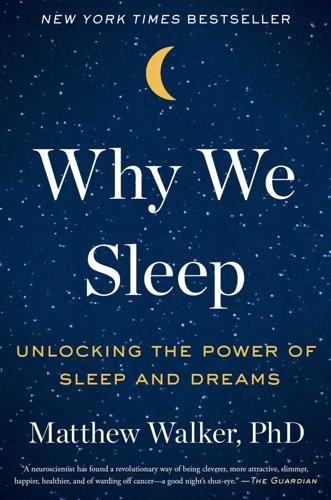
Why We Sleep: Unlocking the Power of Sleep and Dreams
by
Matthew Walker
Published 2 Oct 2017
Dijk, “Randomised clinical trial of the effects of prolonged release melatonin, temazepam and zolpidem on slow-wave activity during sleep in healthy people,” Journal of Psychopharmacology 29, no. 7 (2015): 764–76. II. T. B. Huedo-Medina, I. Kirsch, J. Middlemass, et al., “Effectiveness of non-benzodiazepine hypnotics in treatment of adult insomnia: meta-analysis of data submitted to the Food and Drug Administration,” BMJ 345 (2012): e8343. III. A related concern is that of sleeping pill use in pregnant women. A recent scientific review of Ambien from a team of leading world experts stated: “[the] use of zolpidem [Ambien] should be avoided during pregnancy.
…
Kline, “Hypnotics’ association with mortality or cancer: a matched cohort study,” BMJ Open 2, no. 1 (2012): e000850. VI. Source: Dr. Daniel F. Kripke, “The Dark Side of Sleeping Pills: Mortality and Cancer Risks, Which Pills to Avoid & Better Alternatives,” March 2013, accessed at http://www.darksideofsleepingpills.com. VII. M. T. Smith, M. L. Perlis, A. Park, et al., “Comparative meta-analysis of pharmacotherapy and behavior therapy for persistent insomnia,” American Journal of Psychiatry 159, no. 1 (2002): 5–11. VIII. Such committees will also assign a weighted grade to their clinical recommendation, from mild to moderate to strong. This grade helps guide and inform GPs across the nation regarding how judiciously they should apply the ruling.
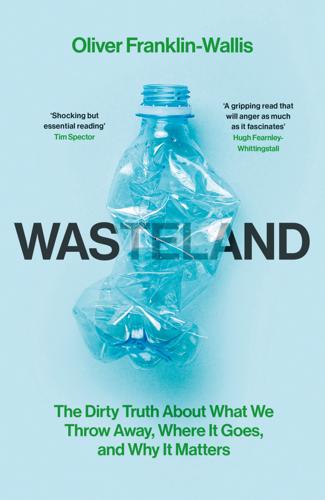
Wasteland: The Dirty Truth About What We Throw Away, Where It Goes, and Why It Matters
by
Oliver Franklin-Wallis
Published 21 Jun 2023
Accessed via wellcomecollection.org. 16 One upside of the miasma theory is that Victorians were obsessed with ventilation, which may have helped fight the spread of airborne viruses – and gained a renewed appreciation during the Covid-19 pandemic. 17 Melosi, Garbage in the Cities, p. 48. 18 Heather Rogers, Gone Tomorrow: The Hidden Life of Garbage (New York: The New Press), 2005, p. 54. 19 Stefano Capuzzi and Giulio Timelli, ‘Preparation and Melting of Scrap in Aluminium Recycling: A Review’, Metals (2018): DOI: 10.3390/met8040249 20 Benefits of Recycling, Stanford University, https://lbre.stanford.edu/pssistanford-recycling/frequently-asked-questions/frequently-asked-questions-benefits-recycling 21 US Environmental Protection Agency, ‘Environmental factoids’, 30/03/2016: https://archive.epa.gov/epawaste/conserve/smm/wastewise/web/html/factoid.html 22 Kirsten Linninkoper, ‘Multi-billion growth ahead for international scrap recycling market’, Recycling International, 18/02/2019: https://recyclinginternational.com/research/multi-billion-growth-ahead-for-international-scrap-recycling-market/18639/ 23 According to a meta-analysis conducted by GAIA; previous studies have estimated smaller differences in job creation, but still put recycling at least 10 times higher (see Samantha MacBride, Recycling Reconsidered (Cambridge, MA: MIT Press), 2013). J. Ribeiro-Broomhead, and N. Tangri, ‘Zero Waste and Economic Recovery: The Job Creation Potential of Zero Waste Solutions’, Global Alliance for Incinerator Alternatives, 2021: DOI: 10.46556/GFWE6885 24 Bureau of International Recycling, ‘World Steel Recycling in Figures: 2015–2019’, 2020, p. 2. 25 Zachary Skidmore, ‘The fragmentation of the copper supply chain’, Mine (2022): https://mine.nridigital.com/mine_may22/fragmentation_copper_supply_chain 26 Susan Freinkel, Plastic: A Toxic Love Story (New York: Houghton Mifflin Harcourt), 2011, p. 60. 27 Ibid, p. 25 28 Rogers, Gone Tomorrow, p. 114. 29 In truth, bottle manufacturers had attempted to patent ways to stop reuse for decades.
…
When I was there, it broke 145.1μg/m3 according to the website IQ Air. 43 François Jarrige and Thomas Le Roux, The Contamination of the Earth: A History of Pollutions in the Industrial Age (Cambridge: MIT Press), 2020, pp. 824–38 (Kindle iOS edition). 44 Katarzyna Chojnacka, Dawid Skrzypczak et al., ‘Progress in sustainable technologies of leather wastes valorization as solutions for the circular economy’, Journal of Cleaner Production, Vol. 313 (2021): DOI: 10.1016/j.jclepro.2021.127902 45 Kazi Madina Maraz, ‘Benefits and problems of chrome tanning in leather processing: Approach a greener technology in leather industry’, Materials Engineering Research 3(1), 2001, pp. 156–64: DOI: 10.25082/MER.2021.01.004 46 Yujiao Deng et al., ‘The Effect of Hexavalent Chromium on the Incidence and Mortality of Human Cancers: A Meta-Analysis Based on Published Epidemiological Cohort Studies’, Frontiers in Oncology, 04/02/2019: DOI: 10.3389/fonc.2019.00024 47 Ajoy Ashirwad Mahaprashasta, ‘As Kanpur Tanneries Face Extinction, Adityanath’s (Mis)Rule Dominates Poll Talk’, The Wire, 19/02/2022: https://thewire.in/labour/as-kanpur-tanneries-face-extinction-adityanaths-misrule-dominates-poll-talk 48 Malavika Vyawahare, ‘This Kanpur village drinks neon green water & lives near a toxic waste dump as big as CP’, The Print, 15/03/2019: https://theprint.in/india/this-kanpur-village-drinks-neon-green-water-lives-near-a-toxic-waste-dump-as-big-as-cp/205769/ 49 Dipak Paul, ‘Research on heavy metal pollution of river Ganga: A review’, Annals of Agrarian Science 15(2), 2017, pp. 278–86: DOI: 10.1016/j.aasci.2017.04.001 50 Iqbal Ahmad and Sadhana Chaurasia, ‘Study on Heavy Metal Pollution in Ganga River at Kanpur (UP)’, Journal of Emerging Technologies and Innovative Research, 6 (2019), pp. 391–8. 51 Tanuj Shukla, Indra Sen et al., ‘A Time-Series Record during Covid-19 Lockdown Shows the High Resilience of Dissolved Heavy Metals in the Ganga River’, Environmental Science & Technology Letters 8(4), 2021, pp. 301–6: DOI: 10.1021/acs.estlett.0c00982 52 The other ‘Big Pollution Diseases’ were Minamata disease (methylmercury poisoning), Niigata Minamata disease (also methylmercury poisoning) and Yokkaichi asthma (sulphur dioxide poisoning).

The Emperor of All Maladies: A Biography of Cancer
by
Siddhartha Mukherjee
Published 16 Nov 2010
Each member of the committee brought insight to a unique dimension of the puzzle. The precise and meticulous Cochran devised a new mathematical insight to judge the trials. Rather than privilege any particular study, he reasoned, perhaps one could use a method to estimate the relative risk as a composite number through all trials in the aggregate. (This method, termed meta-analysis, would deeply influence academic epidemiology in the future.) The organic chemist in Fieser was similarly roused: his discussion of chemicals in smoke remains one of the most authoritative texts on the subject. Evidence was culled from animal experiments, from autopsy series, from thirty-six clinical studies, and, crucially, from seven independent prospective trials.
…
S., 191 “Ella” (VAMP protocol survivor), 148–50 Ellie: A Child’s Fight Against Leukemia (Tucker), 21 embryonic stem cells, 458 Enders, John, 22, 94 Endicott, Kenneth, 162, 171, 177, 260 environmentalists, 456 enzymes, viral, 352–53, 354 epidemiology, 238, 243, 245 case-control studies in, 245, 246–47, 276, 280 causality and, 253–56, 276, 290, 350 Framingham longitudinal data and, 444–45 meta-analysis and, 261 molecular, 457 preventive medicine and, 290, 457 recall bias in, 446 tobacco-cancer link and, 241–42, 247, 248–49, 250, 261 Epstein-Barr virus (EBV), 175 Erikson, Ray, 358, 361, 368, 375 Erk protein, 387, 454 Erwin, Bob, 429 esophageal cancer, 274, 305 estrogen, 211, 213, 456 breast cancer and, 215, 221, 222–23, 456, 464 receptor in, 215, 216, 217, 464 etoposide, 206 Evans, Audrey, 123 evolution, 39, 247–48 Ewing, James, 30n extended field radiation, 159–61, 163 extirpations, 23 Faget, Max, 178 fairness doctrine, 265–66, 267 “Fall, The” (Milosz), 116 false positives, false negatives, 291–92 Farber, Emmanuel, 259, 261 Farber, Norma, 30 Farber, Sidney, 129, 162, 286, 395 as advocate for cancer research, 100, 171–72, 189 background of, 18–19 cancer research hospital project of, see Jimmy’s Clinic cancer research of, 122–23, 126–27 chemotherapy regimens devised by, 103 chemotherapy seen as universal cure by, 93, 155, 403 colostomy of, 118 death of, 189–90, 193, 461 as fund-raiser, 102 isolation of, 27, 35, 101–2 at Jimmy’s Clinic, 125–26, 153, 189–90 leukemia research of, 19–20, 21, 27, 29–30, 31, 33–36, 92, 100, 101, 114, 121, 122–23, 130, 132, 136, 158, 309, 338, 433, 439 M.
…
H., 364 Leakey, Louis, 43 Leder, Philip, 382–83, 384 Lederle Labs, 31, 33 Lee, Philip, 186 Lee, Rose, 75–76 LeMaistre, Charles, 260 Leopold Cassella Company, 85 Lerner, Max, 398 Let Me Down Easy (Smith), 305 leukemia, 3, 260, 337, 375, 439, 451 acute myeloid (AML), 16–17 acute promyelocytic (APL), 407–10 in adults, 17, 306 antifolates and, 29, 31, 33, 35, 87, 91, 92, 95, 96, 100, 101, 103, 114, 121, 136, 162 bone marrow transplants for, 309 brain as “sanctuary” for, 127, 146–47, 442 “cancer stem cells” and, 458–59 chemotherapy for, 19–20, 21, 27, 29–30, 31, 33–36, 92, 100, 101, 103–4, 122, 132–34, 135, 140–42, 167–70, 308, 339, 401, 443; see also specific regimens in children, 7, 12, 17, 19, 32–36, 92, 96, 101, 103–4, 123, 133, 139, 163, 166, 170, 179, 231, 232, 401 chronic myeloid (myelogenous), see chronic myeloid (myelogenous) leukemia chronic vs. acute, 16 discovery of, 12–14 Farber’s research on, 19–20, 21, 27, 29–30, 31, 33–36, 95, 100, 101, 114, 121, 122–23, 130, 132, 136, 158, 309, 338, 433, 439 folic acid and, 29 L-1210, 140–41 Marie Curie’s death from, 78, 347 as measurable, 19 multiplicity of symptoms in, 13 naming of, 14 as outcome of chemotherapy for other cancers, 165, 306, 312 radiation therapy for, 168–70 relapses of, 35, 91, 132, 133, 147, 165, 166, 170, 442 remissions of, 34, 35, 101, 127, 133, 145–46, 179, 190 research consortium for, 130–31, 133, 144 vincristine and, 139–40 see also acute lymphoblastic leukemia Levi, Primo, 394 Levinson, Art, 358n, 418, 427 Levittown, 22–23 Li, Min Chiu, 135–36, 139, 168, 219 Life, 24, 175 life expectancy, in U.S., 22, 45 Li-Fraumeni syndrome, 381 Liggett, 269–71 Lindskog, Gustaf, 90 linear accelerators, 158–59 Lister, Joseph, 57–58, 62 Little, Clarence Cook, 111, 112, 113, 253–54, 255, 263 liver cancer, 280, 290, 340 Lives of a Cell, The (Thomas), 430 Lockhart-Mummery, John, 286 London, Jack, 218 London School of Tropical Medicine, 245 Longoria, Ethel, 136 Lord and Thomas, 109 Lorde, Audre, 227 Lorillard Tobacco Company, 269–71, 273 Los Angeles Times, 73 Love Story, 181 lumpectomies, 194–95, 464 lung cancer, 45, 158, 388–90, 450, 451 chemotherapy for, 162, 308–9, 389, 403–4, 443 increased rate of, 231 mesothelioma, 276–77 metastasis of, 208, 256, 267, 269, 307, 389–90, 403 morbidity rates of, 243, 331 mortality rates of, 331, 401 premalignant stage of, 385 radiation therapy for, 158, 403 smoking and, see tobacco-cancer link surgical removal of, 59, 72, 256 in women, 331 lung disease, 259 Lydon, Nick, 432–33, 434, 435 lymph nodes, 157 surgical removal of, 58, 65, 194 lymphoid cells, 17 lymphomas, 151–52, 228, 316 chemotherapy for, 90–91, 96–97, 122, 132–34, 135, 162, 401, 443 cure rate of, 233 Hodgkin’s, see Hodgkin’s lymphoma radiation therapy for, 77, 158 relapses of, 91 Lynch, Henry, 381 Lynch, Thomas, 307–8, 403–4 Lynch syndrome, 381 McGregor, Marilyn, 429 Madagascar periwinkle, 139 magic bullets, 86–88, 222, 304 Magic Mountain, The (Mann), 38 Magnuson, Warren, 25 Magrath, Ian, 207 malaria, 245 Malmö, Sweden, 298, 300–301 Malmö Mammography Study, 300–301 malnourishment, anemia and, 28–29 mammography, 44, 228, 290–91 benefits of, as age-dependent, 300–302 Canadian trial (CNBSS) of, 298–300, 302 Edinburgh trial of, 298 HIP trial of, 294–96, 297 metastasis and, 302–3 mortality rates and, 296, 297, 300–301, 331–32, 402 NCI project (BCDDP) for, 296–98, 302 Swedish trials of, 298, 300–301 Manhattan Project, 119, 120, 186 Mann, Thomas, 38 March of Dimes, 94 marijuana, as antiemetic, 205 Marine Hospital, U.S., 26 Marlboro Man, 251 Marmite, 28 Marshall, Barry, 276, 281, 282–84, 456 Martin, Steve, 358 Masi, Phil, 97–98 Massachusetts, 325 Massachusetts General Hospital, 3, 56, 223, 320, 390, 398, 403, 437, 451 mastectomies, 49, 419 of Atossa, 5, 41–42, 463 disfigurement from, 65–66, 294 prophylactic, 457–58, 464 radical, 23, 64–72, 73, 109–10, 173, 193–95, 196, 197, 198–201, 202, 218, 219, 225, 294, 463 simple (local), 67, 197, 201, 464 success rate of, 66–69 Master Settlement Agreement (MSA), 273 Matter, Alex, 432–33 mauve, 81–82 Mayer, Robert, 130–31, 311, 326, 328 Mayfield, Jerry, 441, 442–43 MD Anderson Cancer Center, 147, 366, 438 measurement: of leukemia, 19 of negative claims, 167–68 of radiation, 74 in War on Cancer, 227, 231, 232–33 Medical and Chirurgical Society, 157 Medical Journal of Australia, 283 Medical Research Council (British), 131, 243–44 Medical World News, 349 medicine: synthetic chemistry and, 83–84 as technological art, 462 Mek protein, 387, 454 melanoma, 451 Memorial Sloan-Kettering, 92, 135, 138, 167n, 184, 234, 424 Mendel, Gregor, 343–44, 346, 364, 366, 369 meningiomas, 71 menopausal symptoms, 456 Mercer, Robert, 34 Merck, 21 Meselson, Matthew, 345 meta-analysis, 261 metastasis, metastases, 16, 38, 39, 55, 58, 123, 135, 136, 154, 161, 196–97, 204, 223, 391, 442, 465, 467 of breast cancer, 67, 76, 161, 217, 218, 302–3, 314, 322, 325, 329, 419, 422, 424, 463, 465 of Hodgkin’s lymphoma, 163 as inevitable, 79 of lung cancer, 208, 256, 267, 268, 307, 389–90, 403 methotrexate, 127, 132–33, 137, 138, 140, 162, 164, 219, 220, 338 Mexico, cigarette regulation in, 274 Meyer, Willy, 65, 78–79, 80, 219 mice, transgenic, 382–83, 384 microtubules, 140 Middle Ages, medical knowledge in, 49–50, 51–53 Million Women Study, 456 Milosz, Czeslaw, 116 Milstein, Cesar, 417, 419 Ministry of Health, British, 243 Ministry of Health, Mexican, 274 Minot, George, 27–28, 29 Mississippi, antitobacco lawsuit of, 272–73 mitosis, 451 mitosis, pathological, 348, 351, 355, 359, 387, 391 see also hyperplasia, pathological Mizutani, Satoshi, 353 molecular biology, “central dogma” of, 346, 352, 354, 357 molecular pumps, 442 molecules: decoy, 31, 87 structural view of, 432 as switches, 28 see also receptors Moloney, William, 143 Monod, Jacques, 20, 345, 346 mononucleosis, 175 Montagnier, Luc, 318 Moore, Charles, 64 Moore, Michael, 272–73 MOPP, 164–66, 208 Morbid Anatomy of Some of the Most Important Parts of the Human Body, The (Baillie), 53 Morgan, Thomas Hunt, 344, 346, 347–48, 364 Morison, Robert, 116 morphine, 63, 149, 225 mortality rates, of cancer, xi, 25, 105, 228–30, 293, 401 age-adjusted, 230–31, 232–33, 330 of breast cancer, 296, 297, 300–301, 401–2 dynamic equilibrium in, 330–31 mortality rates, of tuberculosis, 229 Morton, William, 56 motility, of cancer cells, 386, 387, 388 see also metastasis, metastases MRIs, 457, 464 Mukherjee, Leela, 398 Mukherjee, Siddhartha: Berne and, 467–70 and daughter’s birth, 398–99 as oncology fellow, 2–5, 168, 190, 305–6, 307–8, 337, 390, 398–99, 437–38, 467 Orman and, 152–53, 399–400 palliative care suggested by, 223–24 Reed and, 2–3, 7, 17–18, 127, 168–69, 190, 337, 338–39, 400, 448–49 Sorenson and, 153–55 tobacco-cancer link in patients of, 274–75 Muller, Hermann Joseph, 347–48 multidose regimens, see chemotherapy, high-dose multidrug regimens in multiple myeloma, 309, 443–44 mummies, cancer in, 43, 45 Murayama, Hashime, 288 Murphy, Mary Lois, 92 mustard gas, see nitrogen mustard mutagens, mutagenesis, 278, 303, 347, 348, 362, 364, 406, 456 mutation, genetic, 377 in bacteria, 277–78 Cancer Genome Atlas and, 450–54 causes of, see mutagens, mutagenesis driver (active), 453 frequency of, 451–52 in fruit flies, 347 functional vs. structural view of, 455 as governing all aspects of cancer, 387–88, 462 as mechanism of carcinogenesis, 6, 39, 176, 278, 357, 362, 370, 380–83, 384–88, 390–92, 403, 406, 449–50, 462, 464–65 passenger (passive), 452–53 see also oncogenes myc (c-myc) gene, 382–83, 384, 391, 410, 412, 453–54, 458 mycobacteria, 84, 131 myelodysplasia, 306, 309, 312 myeloid cells, 16–17 Myriad Genetics, 381 Nathan, David, 140 National Alliance of Breast Cancer Organizations (NABCO), 327 National Breast Cancer Coalition (NBCC), 426, 429 National Cancer Act (1971), 188, 189 National Cancer Institute (NCI), 15, 114, 130, 158, 159, 166, 177, 188, 228, 231, 318, 325, 330, 339, 374, 393, 443 chemotherapy protocols of, 132–42, 143–50, 164–66, 206–8, 219–20, 232, 310, 317 Clinical Center of, 128–29, 139, 145, 162, 165, 260 creation of, 25–26 Institutional Board of, 137 mammography project (BCDDP) of, 296–98, 302 Pap smear trial of, 289–90 preventative strategies neglected by, 233–34 Special Virus Cancer Program of, 175–76, 280–81, 356, 357 National Cancer Institute Act (1937), 25 National Health Service, British, 294 National Institutes of Health (NIH), 25n, 121, 187, 188, 202–3, 260, 319 National Library of Medicine, 261 National Program for the Conquest of Cancer, 184 National Science Foundation (NSF), 121 National Surgical Adjuvant Breast and Bowel Project (NSABP), 200–201 National Tuberculosis Association, 259 natural selection, 248 Nature, 354, 379 Nature Medicine, 435 nausea, from chemotherapy, 165, 205–6, 209, 226, 305 Nazis, 290 Neely, Matthew, 25, 173 negative statistical claims, 197–98 Nelson, Marti, 424–25, 429 “funeral procession” for, 425–26 neoplasia, 16, 42, 385 neu, 410–11, 412, 413, 420 neuroblastomas, 410, 413 New England Journal of Medicine, 35–36, 161, 229, 330, 385 Newton, Isaac, 370 New York, HIP in, 294–96, 297 New York, N.Y., AIDS in, 316, 318 New York Amsterdam News, 286 New York Times, 24, 26–27, 105, 117, 119–20, 180–81, 183, 319, 327, 455 Neyman, Jerzy, 197–98 nicotine: addictive properties of, 270–71 see also cigarettes; smoking; tobacco; tobacco industry Nisbet, Robert, 193 nitrogen mustard, 207, 220, 257 bone marrow affected by, 88, 90 DNA damaged by, 163, 406 hyperplasia as halted by, 163, 406 as mustard gas, 87–88, 89–90, 162–63 nitrosoguanidine derivatives, 278 Nixon, Richard M., 180–81, 183, 184, 187–88 Nobel Prize, 28, 87, 91, 176, 348, 363 Norris Center, 323 Norton, Larry, 327, 426 Novartis, 436, 439 Nowell, Peter, 365 NSABP-04 trial, 200–201, 203, 220 Nuland, Sherwin, 38 Ochsner, Alton, 256–57 Oedipus the King (Sophocles), 321 Office of Scientific Research and Development (OSRD), 90, 119 Oliver Twist (Dickens), 239 oncogenes, 363, 366, 370–71, 380, 384, 402, 409–11, 412, 415, 431, 439, 443, 450, 453, 454, 462, 466 amplification of, 416 pathological hyperplasia induced by, 357–59, 372, 431 proto-, see proto-oncogenes see also specific genes oncology, oncologists, 304, 433 AIDS and, 316–17 death and, 4, 306–8, 337–38 fellowships in, 2–5, 168 origin of term, 47 overconfidence of, 223, 226, 231–32, 234, 308, 310 palliative care and, 224–26, 307 patients’ relationships with, 199, 202, 209, 306–8, 449 radiation, see radiation therapy OncoMouse, 382–83, 384 onkos, 47 etymology of, 466–67 “On Some Morbid Appearances of the Absorbent Glands and Spleen” (Hodgkin), 157 opiates, 226 Oregon Health and Science University (OHSU), 434 Orman, Ben, 151–53, 155, 399–400 Osler, William, 45 osteosarcomas (bone tumors), 43 ovarian cancer, 59, 162, 346, 381, 450, 451, 457 ovaries, removal of, 214, 215 Pacific yew tree, 206 Pack, George, 70–71 Padhy, Lakshmi Charon, 410–11 Page, Irvine, 187 paleopathology, 42 palliative care, 223–26, 231, 307 drug trials for, 226 pancreas, 154, 414 pancreatic cancer, 154, 158, 450, 451, 465 Panel of Consultants, 184, 188 Panzer, Fred, 270 Papanicolaou, George, 286–90, 291, 384–85, 386, 401 Papanicolaou, Maria, 287 papillomavirus, 174, 349n, 381n Pap smears, 228, 286, 287–90, 296, 303, 331, 381, 385, 401 Paré, Ambroise, 49 Paris, University of, 51 Park, Roswell, 24, 45 Parliament cigarettes, 269 Pasteur, Louis, 57 pathology, pathologists, 11–12, 14 Hodgkin’s approach to, 156–57 Patterson, James, 183 PCP (Pneumocystis carinii), 165, 315–16 Pearson, Egon, 197–98 pectoralis major, 64–65 pectoralis minor, 64 pellagra, 110 penicillin, 21–22, 122, 129, 465–66 Penicillium, 122 Pepper, Claude, 26n peptic ulcers, 281–84 Perkin, William, 81–82, 83 pernicious anemia, 27–28, 31 Peru, 42–43 pesticides, 456–57 Peters, Vera, 159–60 Peters, William, 311–15, 319–20, 321, 325, 326, 329 Peto, Richard, 241, 249, 273–74, 462 pharmaceutical industry, 426 see also specific companies Philadelphia chromosome, 365, 430–31 Philip Morris, 251, 269–71, 273 phlegm, 48 phosphorylation, 358–59, 361, 380, 418, 431–32 Piccolo, Brian, 181 Pim, Isabella, 58 Pinkel, Donald, 123, 167–68, 170, 178 pitchblende, 74 pituitary cells, 414 placebos, in randomized trials, 131–32, 319 placenta, 135, 219 platelets, 18 Plato, 370 Pneumocystis carinii (PCP), 165, 315–16 pneumonectomy, 242 pneumonia, 45 PCP, 165, 315–16 Poet Physicians, 60 polio, 22, 229, 342, 466 national campaign against, 93–94, 175 Popper, Karl, 370 population, U.S., aging of, 230 Postmortem Examination, The (Farber), 19 Pott, Percivall, 173, 237–39, 241, 276, 447 precancer, 286, 306, 455 Auerbach’s research on, 258–59, 284, 289 prednisone, 127, 140, 143, 149 see also VAMP regimen Premarin, 213 preventive medicine, 281 epidemiology and, 290 see also cancer prevention procarbazine, 162, 164 product-liability lawsuits, 269–73, 401 progesterone, 456 “Progress Against Cancer?”
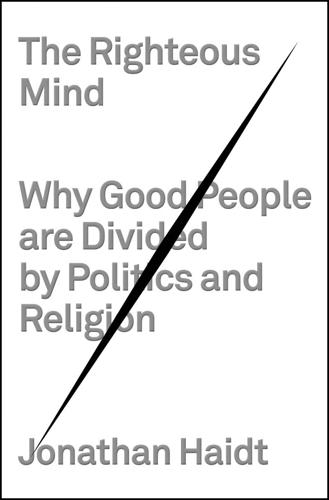
The Righteous Mind: Why Good People Are Divided by Politics and Religion
by
Jonathan Haidt
Published 13 Mar 2012
They found the same N400 effect, as well as a bigger and slower LPP (late positive potential) effect, linked to emotional responding in general, indicating that partisans began to feel different things within the first half-second of reading key words. 16. Dion, Berscheid, and Walster 1972. 17. For an experiment with mock jurors, see Efran 1974; for a field study showing that attractive defendants get off more lightly, see Stewart 1980. For a meta-analysis, see Mazzella and Feingold 1994. Being attractive is an advantage for defendants for most crimes, but not for those where attractiveness helped the criminal pull off the crime, such as swindling (Sigall and Ostrove 1975). 18. Todorov et al. 2005. He discarded the few cases in which participants could identify either candidate. 19.
…
Proceedings of the National Academy of Sciences, early edition, doi: 10.1073/pnas.1105604108. Maynard Smith, J., and E. Szathmary. 1997. The Major Transitions in Evolution. Oxford: Oxford University Press. Mazzella, R., and A. Feingold. 1994. “The Effects of Physical Attractiveness, Race, Socioeconomic Status, and Gender of Defendants and Victims on Judgments of Mock Jurors: A Meta-analysis.” Journal of Applied Social Psychology 24:1315–44. McAdams, D. P. 2006. The Redemptive Self: Stories Americans Live By. New York: Oxford University Press. McAdams, D. P., M. Albaugh, E. Farber, J. Daniels, R. L. Logan, and B. Olson. 2008. “Family Metaphors and Moral Intuitions: How Conservatives and Liberals Narrate Their Lives.”
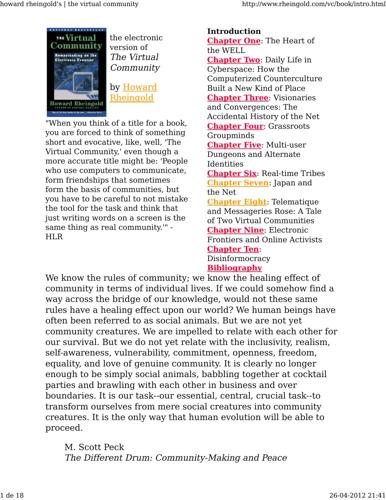
Howard Rheingold
by
The Virtual Community Homesteading on the Electronic Frontier-Perseus Books (1993)
Published 26 Apr 2012
Communication Research 21, no. 4 (1994): 427-459. Streck, John M. "Pulling the Plug on Electronic Town Meetings: Participatory Democracy and the Reality of the Usenet." New Political Science 41-42 (1997): 17-46. Stuhlmacher, A.F., and A.E. Walters. "Gender Differences in Negotiation Outcome: A Meta-Analysis." Personnel Psychology 52, no. 3 (1999): 653-677. Suler, J.R., and W. Phillips. "The Bad Boys of Cyberspace: Deviant Behavior in Multimedia Chat Communities." CyberPsychology and Behavior 1 (1998): 275-294. Suler, J.R. "To Get What You Need: Healthy and Pathological Internet Use." CyberPsychology and Behavior 2 (1999): 385-394.
…
Western Journal of Communication 57 (1993): 381-399. Walther, Joseph B. "Anticipated Ongoing Interaction Versus Channel Effects on Relational Communication in Computer-Mediated Interaction." Human Communication Research 20, no. 4 (1994): 473-501. Walther, Joseph B. "Interpersonal Effects in Computer-Mediated Interaction: A Meta-Analysis of Social and Antisocial Communication." Human Communication Research 21, no. 4 (1994): 460-487. Walther, Joseph B. "Relational Aspects of Computer-Mediated Communication: Experimental Observations Over Time." Organization Science 6, no. 2 (1995): 186-203. Walther, Joseph B., et al. "Interpersonal Deception: Effects of Suspicion on Perceived Communication and Nonverbal Behavior Dynamics."

Competition Overdose: How Free Market Mythology Transformed Us From Citizen Kings to Market Servants
by
Maurice E. Stucke
and
Ariel Ezrachi
Published 14 May 2020
But being offered more than twenty-two choices resulted in choice overload, with more customers making no choice.22 However, the study of the effects of choice overload is not by any means an exact science. For example, several attempts to replicate Iyengar and Lepper’s jam study did not find evidence of choice overload.23 One meta-analysis of fifty experiments found mixed results.24 Another meta-analysis identified four factors that can influence choice overload: first, the complexity of the choices; second, the difficulty in deciding (such as decisions under time pressure versus choices with no time constraints); third, whether we have clear preferences (such as organic food); and fourth, our ultimate goal (are we browsing or seeking to find the best choice).25 Because choice overload can depend on so many situational and individual factors, there is no magic number of options that will prove to be the trigger.
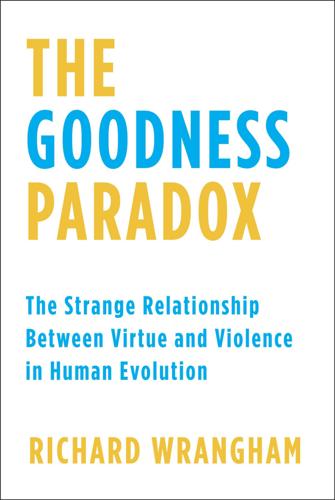
The Goodness Paradox: The Strange Relationship Between Virtue and Violence in Human Evolution
by
Richard Wrangham
Published 29 Jan 2019
Pobiner, James S. Oliver, Laura C. Bishop, David R. Braun, Peter W. Ditchfield, et al. 2013. “Earliest archaeological evidence of persistent hominin carnivory.” PLoS ONE 8(4): e62174. Ficks, Courtney A., and Irwin D. Waldman. 2014. “Candidate genes for aggression and antisocial behavior: a meta-analysis of association studies of the 5HTTLPR and MAOA-uVNT.” Behavior Genetics 44: 427–44. Fischer, David Hackett. 1992. Albion’s Seed: Four British Folkways in America. New York: Oxford University Press. Fiske, Alan Page, and Tage Shakti Rai. 2015. Virtuous Violence: Hurting and Killing to Create, Sustain, End and Honor Social Relationships.
…
Harvati, Katerina. 2007. “100 years of Homo heidelbergensis—life and times of a controversial taxon.” Mitteilungen der Gesellschaft für Urgeschichte 16: 85–94. Haselhuhn, Michael P., Margaret E. Ormiston, and Elaine M. Wong. 2015. “Men’s facial width-to-height ratio predicts aggression: a meta-analysis.” PLoS ONE 10 (4): e0122637. Hathaway, Oona A., and Scott J. Shapiro. 2017. “Outlawing war? It actually worked.” New York Times September 2. Hauser, Marc D. 2006. Moral Minds: How Nature Designed Our Universal Sense of Right and Wrong. New York: HarperCollins. ———, and Jeffrey Watumull. 2017.

Nine Pints: A Journey Through the Money, Medicine, and Mysteries of Blood
by
Rose George
Published 22 Oct 2018
Connolly, “The ‘Blessed Turf’: Cholera and Popular Panic in Ireland, June 1832,” Irish Historical Studies 23, no. 91 (1983): 214–32. 25. John Donnelly, “Activists Wonder if Life Imitates Television in U.S. Policy on AIDS,” Boston Globe, June 18, 2001. 26. In their meta-analysis, researchers found that 55 percent of Americans and 77 percent of sub-Saharan Africans adhered properly to their treatment regime. E. J. Mills, J. B. Nachega, I. Buchanan, et al., “Adherence to Antiretroviral Therapy in Sub-Saharan Africa and North America: A Meta-analysis,” JAMA 296, no. 6 (2006): 679–90. 27. Treatment Action Campaign, Fighting for Our Lives: The History of the Treatment Action Campaign 1998–2010 (Cape Town, South Africa: Treatment Action Campaign, 2010). 28.

The Hype Machine: How Social Media Disrupts Our Elections, Our Economy, and Our Health--And How We Must Adapt
by
Sinan Aral
Published 14 Sep 2020
While there are only two large-scale studies of the effect of social media on voting, the substantial research on the effects of persuasive messaging on voter turnout and vote choice can help us to calibrate the likely effects of Russian interference on the 2016 election.*2 With regard to vote choice, some meta-analytic reviews suggest the effects of impersonal contact (mailings, TV, and digital advertising) on vote choice in general elections are very small. Kalla and Broockman conclude, from a meta-analysis of forty-nine field experiments, that “the best estimate of the size of persuasive effects [i.e., effects of advertising on vote choice] in general elections…is zero.” But their data do not consider social media. And there is substantial uncertainty in their estimates, such as the effect of impersonal contact within two months of Election Day, which was when Russia’s attack was in full swing.
…
For example, a randomized experiment by Katherine Haenschen and Jay Jennings showed that targeted digital advertising significantly increased voter turnout among millennial voters in competitive districts. Research by Andrew Guess, Dominique Lockett, Benjamin Lyons, Jacob Montgomery, Brendan Nyhan, and Jason Reifler showed that randomized exposure to just a single misleading article increased belief in the article’s claims and increased self-reported intentions to vote. The meta-analysis by Green et al. estimated that direct mailings, combined with social pressure, generate an average increase in voter turnout of 2.9 percent, while canvassing generates an average increase of 2.5 percent, and volunteer phone banks generate an average increase of 2 percent. Dale and Strauss estimated the effect of text messages on voter turnout to be 4.1 percent, and there is evidence that personalized emails have a similar impact.
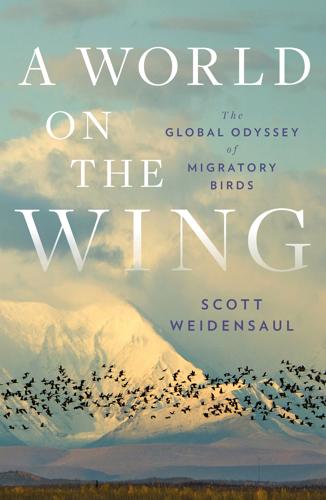
A World on the Wing: The Global Odyssey of Migratory Birds
by
Scott Weidensaul
Published 29 Mar 2021
A large analysis combining the results of almost 90 studies and more than 1,000 datasets from across the Southern Hemisphere found that there, too, austral spring was advancing far more rapidly than were bird movements. In Australia (where changes in seasonal rainfall, rather than temperature, seemed to be the driving force), plants had advanced the time of flowering and fruiting by almost 10 days per decade, while bird migration had changed by only two and a half days. Conversely, a meta-analysis of multiple long-term datasets in China showed a strong spring advance for trees and shrubs, but actually found a slight delay in springtime bird arrivals—though the study’s own authors cautioned that the number of bird species involved, and avian datasets in general from China, were too limited to draw firm conclusions.
…
Abram, Jacqueline Austermann, Victor Brovkin, Emilie Capron, et al. “Palaeoclimate Constraints on the Impact of 2 C Anthropogenic Warming and Beyond.” Nature Geoscience 11, no. 7 (2018): 474. Ge, Quansheng, Huanjiong Wang, This Rutishauser, and Junhu Dai. “Phenological Response to Climate Change in China: A Meta-analysis.” Global Change Biology 21, no. 1 (2015): 265–274. Helm, Barbara, Benjamin M. Van Doren, Dieter Hoffmann, and Ute Hoffmann. “Evolutionary Response to Climate Change in Migratory Pied Flycatchers.” Current Biology (2019). https://doi.org/10.1016/j.cub.2019.08.072. Hiemer, Dieter, Volker Salewski, Wolfgang Fiedler, Steffen Hahn, and Simeon Lisovski.

Nothing Personal: My Secret Life in the Dating App Inferno
by
Nancy Jo Sales
Published 17 May 2021
They assume that any criticism of porn comes from prudishness. They accuse critics of porn of advocating censorship (even when they’re not), as if this is the biggest concern in this debate. The problem is they’re ignoring nearly forty years of research showing a connection between porn and sexual violence. A 2015 meta-analysis of twenty-two studies from seven different countries done between 1978 and 2014 concluded that porn consumption contributes significantly to “aggressive behaviors and attitudes” and is “associated with sexual aggression.” A 2011 study of American college men found that 83 percent of them watched porn, and those who did were more likely to say that they would commit rape or sexual assault if they knew they wouldn’t be caught.
…
New York: Farrar, Straus and Giroux, 2000. Wong, Brittany. “The Subtle Way Dating Apps Reinforce Our Racial Biases.” HuffPost, November 21, 2018. www.huffpost.com/entry/dating-apps-may-reinforce-sexual-racism-study_n_5bf3056ae4b0376c9e67abe1. Wright, Paul J., Robert S. Tokunaga, and Ashley Kraus. “A Meta-Analysis of Pornography Consumption and Actual Acts of Sexual Aggression in General Population Studies.” Journal of Communication 66, no. 1 (February 2016). Zagorsky, Jay L. “Why Are Fewer People Getting Married?” The Conversation, June 1, 2016. https://theconversation.com/why-are-fewer-people-getting-married-60301.
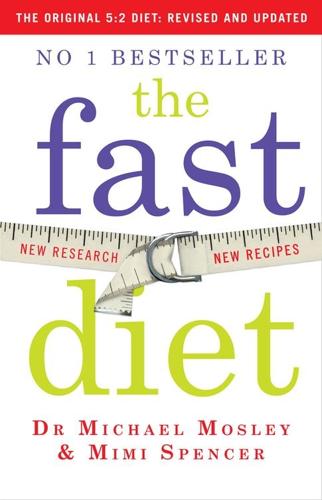
The Fast Diet: Revised and Updated: Lose Weight, Stay Healthy, Live Longer
by
Mimi Spencer
Published 18 Dec 2014
‘The effect of coffee on blood pressure and cardiovascular disease in hypertensive individuals’. American Journal of Clinical Nutrition, 2011 & Larsson, S and Orsini, N, National Institute of Environmental Medicine, Karolinska Institutet, Stockholm, Sweden. ‘Coffee consumption and risk of stroke: a dose-response meta-analysis of prospective studies’. American Journal of Epidemiology, September 2011 & Floegel, A, Pischon, T, Bergmann, MM, Teucher, B, Kaaks, R and Boeing, H, European Prospective Investigation into Cancer and Nutrition (EPIC), Germany. ‘Coffee consumption and risk of chronic disease’. American Society for Nutrition, April 2012 55.

The People vs Tech: How the Internet Is Killing Democracy (And How We Save It)
by
Jamie Bartlett
Published 4 Apr 2018
Trump says Clinton would let 650 million people into the U.S., in one week’, 31 October 2016, www.politifact.com. Polling data was taken from www.realclearpolitics.com poll tracker. 15 B. Nyhan and J. Reifler (2010), ‘When corrections fail: The persistence of political misperceptions’, Political Behavior, 32 (2), 303–330. 16 Dolores Albarracin et al. (2017), ‘Debunking: A Meta-Analysis of the Psychological Efficacy of Messages Countering Misinformation, Psychological Science, 28 (11), 1531–1546. 17 Paul Lewis, ‘“Fiction is outperforming reality”: how YouTube’s algorithm distorts truth’, Guardian, 2 February 2018. 18 Nicholas Confessore, ‘For Whites Sensing Decline, Donald Trump Unleashes Words of Resistance’, New York Times, 13 July 2016. 19 Southern Poverty Law Centre, ‘Richard Bertrand Spencer’, https://www.splcenter.org.
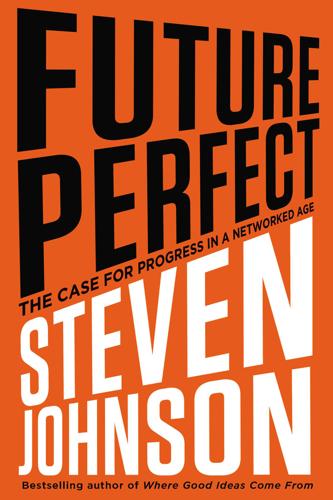
Future Perfect: The Case for Progress in a Networked Age
by
Steven Johnson
Published 14 Jul 2012
Daily Kos provided in-depth surveys and field reports on state races that the Times would never have had the ink to cover. Individual bloggers such as Andrew Sullivan responded to each twist in the news cycle; The Huffington Post culled the most provocative opinion pieces from the rest of the blogosphere. The statistician Nate Silver at the website Five Thirty Eight did meta-analysis of polling that exceeded anything Bill Schneider dreamed of doing on CNN in 1992. When the banking crisis erupted in September 2008, I followed economist bloggers such as Brad DeLong to get their expert take on the candidates’ responses to the crisis. I watched the debates with a thousand virtual friends live-tweeting alongside me on the couch.
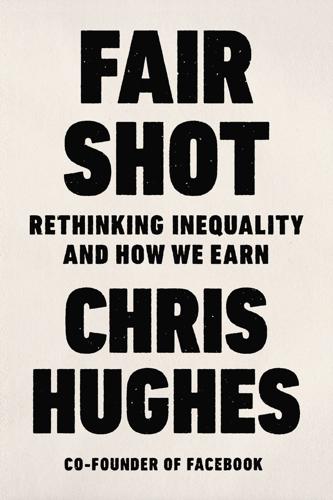
Fair Shot: Rethinking Inequality and How We Earn
by
Chris Hughes
Published 20 Feb 2018
Campbell, Harry. “RSG 2017 Survey Results: Driver Earnings, Satisfaction and Demographics.” The Rideshare Guy (blog), January 17, 2017. http://therideshareguy.com/rsg-2017-survey-results-driver-earnings-satisfaction-and-demographics/. Card, David, Jochen Kluve and Andrea Weber. “What Works? A Meta Analysis of Recent Active Labor Market Program Evaluations.” RUHR Economic Papers, July 2015. Carroll, Christopher, Jiri Slacalek, Kiichi Tokuoka, and Matthew N. White. “The Distribution of Wealth and the Marginal Propensity to Consume.” Quantitative Economics, June 3, 2017. http://www.econ2.jhu.edu/people/ccarroll/papers/cstwMPC.pdf.

The Zero Marginal Cost Society: The Internet of Things, the Collaborative Commons, and the Eclipse of Capitalism
by
Jeremy Rifkin
Published 31 Mar 2014
A massive study of 14,000 college students conducted between 1979 and 2009 by the Institute for Social Research at the University of Michigan concluded that “college kids today are about 40 percent lower in empathy than their counterparts of 20 or 30 years ago, as measured by standard tests of this personality trait.”20 Sarah Konrath, a University of Michigan researcher who conducted the meta-analysis study, which combined the results of 72 studies of American college students over the 30-year period, says that today’s college students are less likely to agree with statements such as, “I sometimes tried to understand my friends better by imagining how things look from their perspective” and “I often have tender, concerned feelings for people less fortunate than me.”21 Other studies on the Millennial Generation, however, appear to show the opposite trend.
…
Diane Swanbrow, “Empathy: College Students Don’t Have as Much as They Used To,” University of Michigan News Service, May 27, 2010, http://ns.umich.edu/new/releases/7724 (accessed April 2, 2013). 21. Swanbrow, “Empathy”; Sara H. Konrath, Edward H. O’Brien, and Courtney Hsing, “Changes in Dispositional Empathy in American College Students over Time: A Meta-Analysis,” Personality and Social Psychology Review 5(2) (2011): 180–81, http://www.sitemaker.umich.edu/eob/files /konrathetal2011.pdf (accessed April 2, 2013). 22. Morley Winograd and Michael D. Hais, Millenial Makeover: MySpace, YouTube, and the Future of American Politics (Piscataway, NJ: Rutgers University Press, 2008), 5. 23.
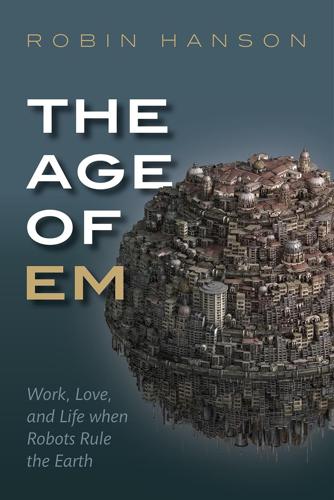
The Age of Em: Work, Love and Life When Robots Rule the Earth
by
Robin Hanson
Published 31 Mar 2016
“Creative Destruction Whips through Corporate America: An Innosight Executive Briefing on Corporate Strategy.” Strategy & Innovation 10(1). Fox, J.G., and E.D. Embrey. 1972. “Music—an aid to productivity.” Applied Ergonomics 3(4): 202–205. Frattaroli, J. 2006. “Experimental Disclosure and its Moderators: A Meta-analysis.” Psychological Bulletin 132(6): 823–865. Freitas, Robert. 1999. Nanomedicine, Volume I: Basic Capabilities. Landes Bioscience. Freitas, Robert, and Ralph Merkle. 2004. Kinematic Self-Replicating Machines. Landes Bioscience. October 30. Fridley, Jason, and Dov Sax. 2014. “The Imbalance of Nature: Revisiting a Darwinian Framework for Invasion Biology.”
…
Ramscar, Michael, Peter Hendrix, Cyrus Shaoul, Petar Milin, and Harald Baayen. 2014. “The Myth of Cognitive Decline: Non-Linear Dynamics of Lifelong Learning.” Topics in Cognitive Science 6(1): 5–42. Randall, Jason, Frederick Oswald, and Margaret Beier. 2014. “Mind-Wandering, Cognition, and Performance: A Theory-Driven Meta-Analysis of Attention Regulation.” Psychological Bulletin 140(6): 1411–1431. Rao, Venkatesh. 2012. “Welcome to the Future Nauseous.” Ribbon Farm blog, May 9, http://www.ribbonfarm.com/2012/05/09/welcome-to-the-future-nauseous/. Rayneau-Kirkhope, Daniel, Yong Mao, and Robert Farr. 2012. “Ultralight Fractal Structures from Hollow Tubes.”

The Precipice: Existential Risk and the Future of Humanity
by
Toby Ord
Published 24 Mar 2020
“Accelerated Modern Human-Induced Species Losses: Entering the Sixth Mass Extinction.” Science Advances, 1(5), e1400253. Cederman, L.-E. (2003). “Modeling the Size of Wars: From Billiard Balls to Sandpiles.” The American Political Science Review, 97(1), 135–50. Challinor, A. J., et al. (2014). “A Meta-Analysis of Crop Yield under Climate Change and Adaptation.” Nature Climate Change, 4(4), 287–91. Chan, S. (September 18, 2017). “Stanislav Petrov, Soviet Officer Who Helped Avert Nuclear War, Is Dead at 77.” The New York Times. Chapman, C. R. (2004). “The Hazard of Near-Earth Asteroid Impacts on Earth.”
…
For example, Tokarska et al., 2006, p. 853. 83 In July 1979—the very month I was born (Charney et al., 1979). 84 Rogelj et al. (2016). 85 Tai, Martin & Heald (2014) find that under the IPCC’s most pessimistic scenario, global food production would decrease by 16% by 2050 relative to 2000. But this takes into account neither adaptation nor the impact of carbon dioxide on crop yields, both of which are expected to have significant, albeit uncertain, offsetting effects. A recent meta-analysis found that crop-level adaptations alone could increase yields by 7–15% (Challinor et al., 2014). Such a reduction in food supply would have disastrous consequences for millions of people, but would pose little risk to civilization. 86 IPCC (2014), pp. 14–15. 87 We don’t see such biodiversity loss in the 12°C warmer climate of the early Eocene, nor the rapid global change of the PETM, nor in rapid regional changes of climate.
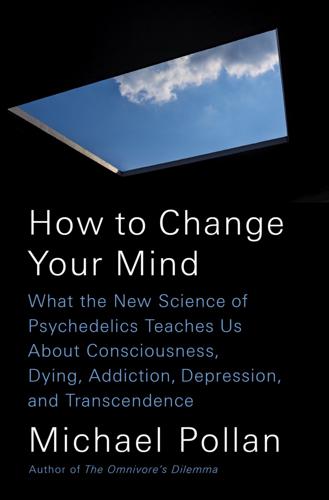
How to Change Your Mind: What the New Science of Psychedelics Teaches Us About Consciousness, Dying, Addiction, Depression, and Transcendence
by
Michael Pollan
Published 30 Apr 2018
Results were notably impressive when the studies were performed by sympathetic therapists (and especially by therapists who themselves had taken LSD) and notably dismal when conducted by inexperienced investigators who gave mammoth doses to patients with no attention to set or setting. The record was a complete muddle until 2012, when a meta-analysis that combined data from the six best randomized controlled studies done in the 1960s and 1970s (involving more than five hundred patients in all) found that indeed there had been a statistically robust and clinically “significant beneficial effect on alcohol misuse” from a single dose of LSD, an effect that lasted up to six months.
…
Kleber, Herbert D. “Commentary On: Psilocybin Can Occasion Mystical-Type Experiences Having Substantial and Sustained Personal Meaning and Spiritual Significance.” Psychopharmacology 187 (2006): 291–92. Krebs, Teri S., and Pål-Ørjan Johansen. “Lysergic Acid Diethylamide (LSD) for Alcoholism: Meta-analysis of Randomized Controlled Trials.” Journal of Psychopharmacology 26, no. 7 (2012): 994–1002. doi:10.1177/0269881112439253. Kupferschmidt, Kai. “High Hopes.” Science 345, no. 6192 (2014). Langlitz, Nicolas. Neuropsychedelia: The Revival of Hallucinogen Research Since the Decade of the Brain.

Model Thinker: What You Need to Know to Make Data Work for You
by
Scott E. Page
Published 27 Nov 2018
If we make a person’s depth (thickness front to back) and width proportional to height using parameters d and w, then BMI can be written as follows: The BMIs of many NBA stars and other athletes place them in the overweight category (BMI > 25), along with many of the world’s top male decathletes.10 Given that even moderately tall, physically fit people will likely have high BMIs, we should not be surprised that a meta-analysis of nearly a hundred studies with a combined sample size in the millions found that slightly overweight people live longest.11 Metabolic rates: We now apply our model to predict an inverse relationship between an animal’s size and its metabolic rate. Every living entity has a metabolism, a repeated sequence of chemical reactions that breaks down organic matter and transforms it into energy.
…
“Why Your Friends Have More Friends than You Do.” American Journal of Sociology 96, no. 6: 1464–1477. Flegal, Katherine M., Brian K. Kit, Heather Orpana, and Barry I. Graubard. 2012. “Association of All-Cause Mortality with Overweight and Obesity Using Standard Body Mass Index Categories: A Systematic Review and Meta-analysis.” Journal of the American Medical Association 309, no. 1: 71–82. Flores, Thomas, and Irfan Nooruddin. 2016. Elections in Hard Times: Building Stronger Democracies in the 21st Century. Cambridge: Cambridge University Press. Florida, Richard. 2005. Cities and the Creative Class. New York: Routledge.

Your Computer Is on Fire
by
Thomas S. Mullaney
,
Benjamin Peters
,
Mar Hicks
and
Kavita Philip
Published 9 Mar 2021
Bradac and Randall Wisegarver, “Ascribed Status, Lexical Diversity, and Accent: Determinants of Perceived Status, Solidarity, and Control of Speech Style,” Journal of Language and Social Psychology 3, no. 4 (1984): 239–255; Jairo N. Fuertes, William H. Gottdiener, Helena Martin, Tracey C. Gilbert, and Howard Giles, “A Meta-Analysis of the Effects of Speakers’ Accents on Interpersonal Evaluations,” European Journal of Social Psychology 42, no. 1 (2012): 120–133; Stephanie Lindemann, “Koreans, Chinese or Indians? Attitudes and Ideologies About Non-Native English Speakers in the United States,” Journal of Sociolinguistics 7, no. 3 (2003): 348–364; Stephanie Lindemann, “Who Speaks “Broken English”?
…
The analysis of metaphors is useful not simply to assign blame; it is critically important for finding solutions. Informatics scholars Lilly Irani and M. Six Silberman, reporting on Turkopticon, a worker-centered web portal and services site they designed and maintained, published software design papers as well as reflective “meta-analysis” papers about it.5 Both were presented at CHI, the premier computer-human interaction conference. The scholarly association that studies computer-human interaction issues had recognized, in other words, that things (like software) and words (with which both technical and nontechnical people represented, used, and critiqued that software) were both relevant to its work.
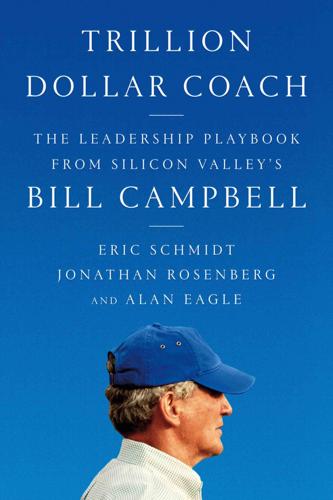
Trillion Dollar Coach: The Leadership Playbook of Silicon Valley's Bill Campbell
by
Eric Schmidt
,
Jonathan Rosenberg
and
Alan Eagle
Published 15 Apr 2019
Grant, “From GROW to GROUP: Theoretical Issues and a Practical Model for Group Coaching in Organisations,” Coaching: An International Journal of Theory, Research and Practice 3, no. 1 (2010): 30–45. 15.Steven Graham, John Wedman, and Barbara Garvin-Kester, “Manager Coaching Skills: What Makes a Good Coach,” Performance Improvement Quarterly 7, no. 2 (1994): 81–94. 16.Richard K. Ladyshewsky, “The Manager as Coach as a Driver of Organizational Development,” Leadership & Organization Development Journal 31, no. 4 (2010): 292–306. Chapter 2: Your Title Makes You a Manager. Your People Make You a Leader. 1.Fariborz Damanpour, “Organizational Innovation: A Meta-Analysis of Effects of Determinants and Moderators,” Academy of Management Journal 34, no. 3 (September 1991): 555–90; Brian Uzzi and Jarrett Spiro, “Collaboration and Creativity: The Small World Problem,” American Journal of Sociology 111, no. 2 (September 2005): 447–504. 2.Nicholas Bloom, Erik Brynjolfsson, Lucia Foster, Ron S.

Alive
by
Gabriel Weston
Published 15 Aug 2025
Amazing as it seems, between the ancients and Harvey’s arrival, academic wisdom about the heart was dominated by the work of one man. Amalgamating scholarship from the Greeks, the Alexandrian physicians of the third and fourth centuries as well as Middle Eastern pioneers such as Ibn-al-Nafis, Galen’s 9,000-page compendium of philosophy, medicine and physiology survived well beyond his own lifetime, a sort of meta-analysis of everything that had come before. Such was Galen’s authority though, that no one thought to question his original contributions which, in the case of the heart, were retrograde. Disavowing Aristotle, Galen argued that the liver was the most important organ in the circulation and that blood was formed within it from the products of digestion, before overflowing into the right side of the heart.
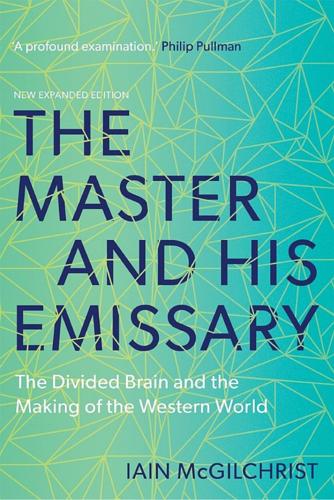
The Master and His Emissary: The Divided Brain and the Making of the Western World
by
Iain McGilchrist
Published 8 Oct 2012
The earliest pierced shells, suggesting symbolic body ornamentation, arose at around the same time in the same region, along with evidence of trade in valued materials and the mining of flints (McBrearty & Brooks, 2003). See also Mithen, 1998a, 1998b; Noble & Davidson, 1996; Milo & Quiatt, 1993. 29. Overall the correlation between brain size and intelligence remains robust across species and within human populations. See the most comprehensive meta-analysis of investigations of the relation of brain size to IQ to date: McDaniel, 2005. 30. See, e.g., Suthers & Zollinger, 2004. 31. These long, long musical ‘sentences’ of Wagner’s are, however, paralleled in language by the extraordinarily long sentences of his admirer, Thomas Mann, in which one has to keep subjects and subordinate clauses in mind for minutes at a time, while one waits for the verb, or for the principal clause to conclude. 32.
…
D., ‘Spiritual asymmetry in portraiture’, British Journal of Aesthetics, 1965, 5, pp. 6–13 Marx, K., Die Differenz der demokritischen und epikureischen Naturphilosophie [1841], in Marx-Engels-Werke, Dietz Verlag, Berlin, 1968, vol. 40 Marzi, C. A., Bisiacchi, P. & Nicoletti, R., ‘Is interhemispheric transfer of visuomotor information asymmetric? Evidence from a meta-analysis’, Neuropsychologia, 1991, 29(12), pp. 1163–77 Marzi, C. A., Perani, D., Tassinari, G. et al., ‘Pathways of interhemispheric transfer in normals and in a split-brain subject: a positron emission tomography study’, Experimental Brain Research, 1999, 126(4), pp. 451–8 Mashal, N. & Faust, M., ‘Right hemisphere sensitivity to novel metaphoric relations: application of the signal detection theory’, Brain and Language, 2008, 104(2), pp. 103–12 Mashal, N., Faust, M. & Hendler, T., ‘The role of the right hemisphere in processing nonsalient metaphorical meanings: application of principal components analysis to fMRI data’, Neuropsychologia, 2005, 43(14), pp. 2084–100 Mashal, N., Faust, M., Hendler, T. et al., ‘An fMRI investigation of the neural correlates underlying the processing of novel metaphoric expressions’, Brain and Language, 2007, 100(2), pp. 115–26 ——, ‘Hemispheric differences in processing the literal interpretation of idioms: converging evidence from behavioral and fMRI studies’, Cortex, 2008, 44(7), pp. 848–60 ——, ‘An fMRI study of processing novel metaphoric sentences’, Laterality, 2009, 14(1), pp. 30–54 Masuda, T. & Nisbett, R.
…
S., ‘The revolution that wasn’t: a new interpretation of the origin of modern human behavior’, Journal of Human Evolution, 2003, 39(5), pp. 453–563 McCabe, K., Houser, D., Ryan, L. et al., ‘A functional imaging study of cooperation in two-person reciprocal exchange’, Proceedings of the National Academy of Sciences of the USA, 2001, 98(20), pp. 11832–5 McCarthy, R. A. & Warrington, E. K., Cognitive Neuropsychology, Academic Press, London, 1990 McDaniel, M. A., ‘Big-brained people are smarter: a meta-analysis of the relationship between in vivo brain volume and intelligence’, Intelligence, 2005, 33, pp. 337–46 McEvoy, J. P., Hartman, M., Gottlieb, D. et al., ‘Common sense, insight, and neuropsychological test performance in schizophrenia patients’, Schizophrenia Bulletin, 1996, 22(4), pp. 635–41 McFarland, R.
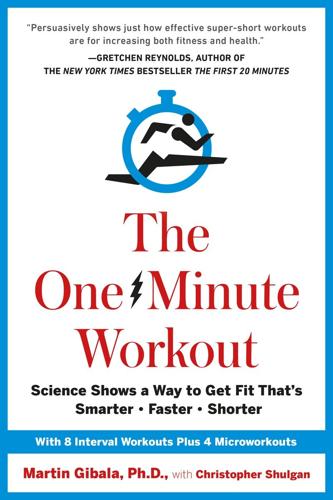
The One-Minute Workout
by
Martin Gibala
Published 5 Jan 2017
But the HERITAGE study was an enormous undertaking: an intervention on 742 people spread out over four clinical centers and followed over the course of five months. A comparable HIIT study would cost many millions of dollars today. In the absence of a HERITAGE-like interval training study, the Mayo Clinic’s Michael Joyner and a few colleagues led by Andrew Bacon did the next best thing. In 2013 they published something called a meta-analysis—they did a study on other scientific studies by effectively combining the results. They identified thirty-seven different studies dating from 1965 to 2012 and encompassing 334 subjects. They discovered what you, having read to this point, might have expected. Despite shorter workouts and much shorter time spent conducting hard exercise, the people who performed intense interval training tended to improve their cardiorespiratory fitness more than people who conducted vastly larger durations of endurance exercise.
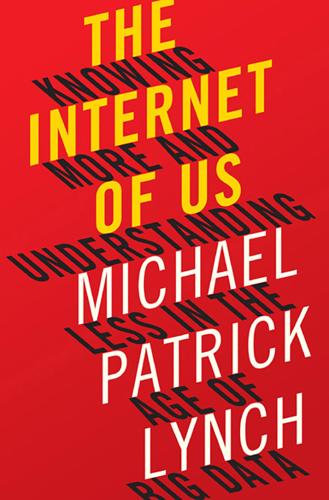
The Internet of Us: Knowing More and Understanding Less in the Age of Big Data
by
Michael P. Lynch
Published 21 Mar 2016
The latter were (and still are) controversial on privacy grounds; moreover, more than one person argued that the scanner violated their dignity. But while scans like this can make you uncomfortable, this sort of directed, publicly known invasion of one’s privacy is not equivalent to the systematic program of incidental collection and meta-analysis of phone call data practiced by the NSA. That’s because full body scans are given to commercial airplane passengers for a very specific reason: to detect whether they have a concealed weapon or explosives. This reason is well understood—or should be—by those given the scans. It is, in fact, a classic case of trading privacy for more security.
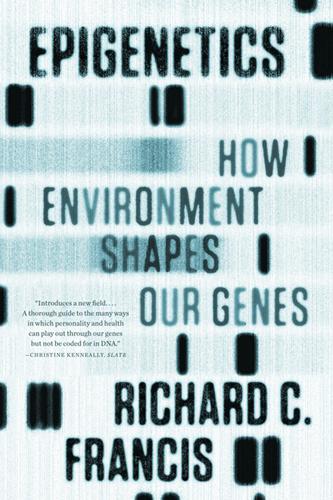
Epigenetics: How Environment Shapes Our Genes
by
Richard C. Francis
Published 14 May 2012
“Cytoplasmic and nuclear determinants of the maternal-to-embryonic transition.” Reprod Fertil Dev 20(1): 45–53. Beurton, P. J., R. Falk, et al. (2000). The concept of the gene in development and evolution: Historical and epistemological perspectives. Cambridge, UK: Cambridge University Press. Bevilacqua, E., R. Brunelli, et al. (2010). “Review and meta-analysis: Benefits and risks of multiple courses of antenatal corticosteroids.” J Matern Fetal Neonatal Med 23(4): 244–260. Bharadwaj, R., and H. Yu (2004). “The spindle checkpoint, aneuploidy, and cancer.” Oncogene 23(11): 2016–2027. Bianco, S. D., and U. B. Kaiser (2009). “The genetic and molecular basis of idiopathic hypogonadotropic hypogonadism.”
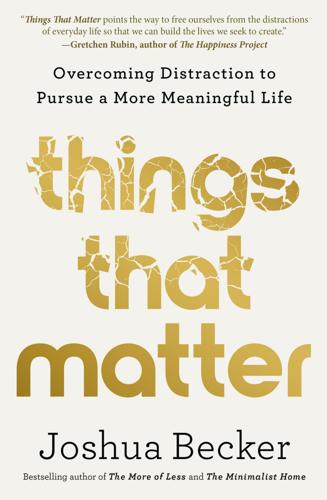
Things That Matter: Overcoming Distraction to Pursue a More Meaningful Life
by
Joshua Becker
Published 19 Apr 2022
See also Juliane Horvath et al., “Structural and Functional Correlates of Smartphone Addiction,” Addictive Behaviors 105 (June 2020), https://doi.org/10.1016/j.addbeh.2020.106334. BACK TO NOTE REFERENCE 4 Thorpe, “This Is What Too Much Screen Time Does to You.” See also Xiao Wang, Yuexuan Li, and Haoliang Fan, “The Associations Between Screen Time–Based Sedentary Behavior and Depression: A Systematic Review and Meta-analysis,” BMC Public Health 19, art. no. 1524 (2019), https://doi.org/10.1186/s12889-019-7904-9. BACK TO NOTE REFERENCE 5 Moran Bodas et al., “Anxiety-Inducing Media: The Effect of Constant News Broadcasting on the Well-Being of Israeli Television Viewers,” Psychiatry 78, no. 3 (2015): 265–76, https://doi.org/10.1080/00332747.2015.1069658.
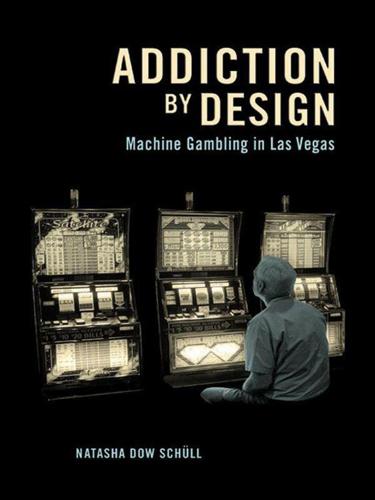
Addiction by Design: Machine Gambling in Las Vegas
by
Natasha Dow Schüll
Published 15 Jan 2012
The adaptation hypothesis allows that there will be spikes in the development of gambling problems when individuals in a given area are newly exposed to gambling, but argues that “after the novelty of initial exposure, people gradually adapt to the risks and hazards associated with potential objects of addiction” (Shaffer 2005, 1228). The majority of research, however, continues to find that problem gambling prevalence is directly related to the availability and accessibility of gambling. In a recent meta-analysis by three researchers, one of whom is a former proponent of the adaptation hypothesis, “strong statistically meaningful relationships were found for an increase in prevalence with increasing per capita density of [gambling machines], consistent with the access hypothesis” (Storer, Abbott, and Stubbs 2009, 225).
…
“Demystifying Slot Machines and Their Impact in the United States.” American Gaming Association White Paper, http.americangaming.org/industry-resources/research/white-papers, accessed May 2011. Stewart, Kathleen. 2007. Ordinary Affects. Durham, NC: Duke University Press. Storer, John, M. W. Abbott, and J. Stubbs. 2009. “Access or Adaptation? A Meta-Analysis of Surveys of Problem Gambling Prevalence in Australia and New Zealand with Respect to Concentration of Electronic Gaming Machines.” International Gambling Studies 9 (3): 225–44. Strickland, Eliza. 2008. “Gambling with Science: Determined to Defeat Lawsuits over Addiction, the Casino Industry Is Funding Research at a Harvard-Affiliated Lab.”

The Climate Book: The Facts and the Solutions
by
Greta Thunberg
Published 14 Feb 2023
It’s important to note that these findings are not just correlations. They are from carefully designed studies whose entire purpose is to carefully isolate the role of climatic variables from the myriad other factors that might cause conflict. There are enough of these high-quality studies that we can do a ‘meta-analysis’ – a study of studies – to summarize overall findings across dozens of published works. In doing so we again find consistent evidence that warming temperatures in particular can amplify the risk of various types of conflict, with the risk of damaging group-level conflicts going up by as much as 10–20 per cent for every degree Celsius increase in temperature.
…
R. 13–14 meat consumption, 107, 112, 236, 248, 249–50, 249, 250, 253, 254, 282, 285, 288, 302, 356, 434 media, 122, 203, 210, 279, 282, 286, 287, 302, 325, 332, 339, 355–9, 377, 399, 427, 432; changing the media narrative, 369–71; producers, 435 Mediterranean, 75, 86, 97, 138, 145, 180, 351, 352–3 megafaunal extinctions, 9, 107–8, 349 Merkel, Angela, 27, 330 meta-analysis, 189 methane, 24, 34, 53–6, 55, 59, 96, 118–19, 121, 140–41, 217, 227, 235, 236, 238–9, 247, 248, 252, 255, 290–91, 297, 346, 416, 434 Mexico, 89, 110, 166, 189, 258, 299, 300, 389, 417 microplastics, 86–7, 297 middle class, global, 282–3 migration: climate refugees, 133, 165–8, 169–70, 180, 186, 187, 191, 192, 399; crisis (2015), 187; species, 14, 102–3, 110–11, 113–15, 171, 174, 417 military: conflicts, dependency on fossil fuels and, 181; greenhouse gas emissions and, 156, 389, 429, 434; military industrial complex, 312; power and global agreement on rapid decarbonization, 315, 317 mining, 24, 27, 103, 222, 237, 369, 388, 394, 413 mitigation, climate change.
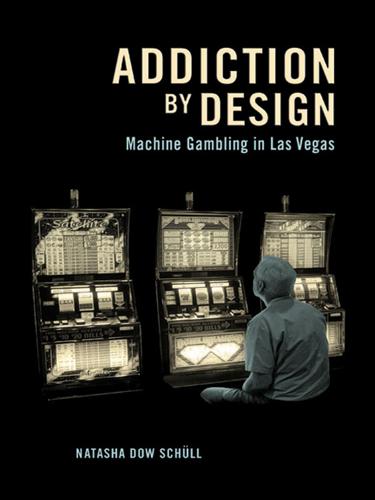
Addiction by Design: Machine Gambling in Las Vegas
by
Natasha Dow Schüll
Published 19 Aug 2012
The adaptation hypothesis allows that there will be spikes in the development of gambling problems when individuals in a given area are newly exposed to gambling, but argues that “after the novelty of initial exposure, people gradually adapt to the risks and hazards associated with potential objects of addiction” (Shaffer 2005, 1228). The majority of research, however, continues to find that problem gambling prevalence is directly related to the availability and accessibility of gambling. In a recent meta-analysis by three researchers, one of whom is a former proponent of the adaptation hypothesis, “strong statistically meaningful relationships were found for an increase in prevalence with increasing per capita density of [gambling machines], consistent with the access hypothesis” (Storer, Abbott, and Stubbs 2009, 225).
…
“Demystifying Slot Machines and Their Impact in the United States.” American Gaming Association White Paper, http.americangaming.org/industry-resources/research/white-papers, accessed May 2011. Stewart, Kathleen. 2007. Ordinary Affects. Durham, NC: Duke University Press. Storer, John, M. W. Abbott, and J. Stubbs. 2009. “Access or Adaptation? A Meta-Analysis of Surveys of Problem Gambling Prevalence in Australia and New Zealand with Respect to Concentration of Electronic Gaming Machines.” International Gambling Studies 9 (3): 225–44. Strickland, Eliza. 2008. “Gambling with Science: Determined to Defeat Lawsuits over Addiction, the Casino Industry Is Funding Research at a Harvard-Affiliated Lab.”
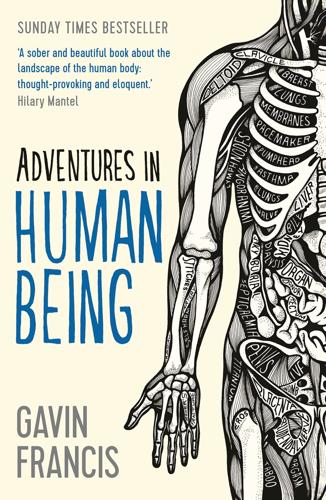
Adventures in Human Being (Wellcome)
by
Gavin Francis
Published 28 Apr 2015
Grisso et al., ‘Risk Factors for falls as a cause of hip fracture in women’, The New England Journal of Medicine (9 May 1991), 1,326–31. p. 202 ‘Around 40 percent …’ Figures from Atul Gawande, Being Mortal: Medicine and What Matters in the End (London: Profile, 2014). p. 202 ‘Between five and eight …’ P. Haentjens et al., ‘Meta-analysis: Excess Mortality After Hip Fracture Among Older Women and Men’, Annals of Internal Medicine 152 (2010), 380–90. p. 203 ‘His name Yaakov …’ My reading of Jacob’s story has been informed by Geoffrey H. Hartman, ‘The Struggle for the Text’, from Geoffrey H. Hartman and Sanford Budick (eds), Midrash and Literature (London: Yale University Press, 1986), pp. 3–18.
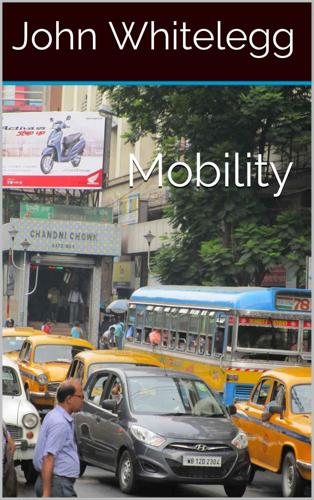
Mobility: A New Urban Design and Transport Planning Philosophy for a Sustainable Future
by
John Whitelegg
Published 1 Sep 2015
Urban freight platforms. Boege, S (1995) The well-travelled yoghurt pot: lessons for new freight transport policies and regional production, World Transport Policy and Practice, Volume 1, Number 1, 7-11. Brons, M, Pels, E, Nijkamp, P and Rietveld, P (2002) Price elasticities of demand for passenger air travel: a meta-analysis. Journal of Air Transport Management 8, 165-175. Brown, L (2009) Plan B 4.0. Mobilizing to save civilization, Earth Policy Institute, W W Norton and Company. Burke, M and Dodson, J (2014) Suburban density: disrupting the density debate in Gleeson, B and Beza, B (2014) The Public City. Essays in honour of Paul Mees, Melbourne University Press, 132-148.
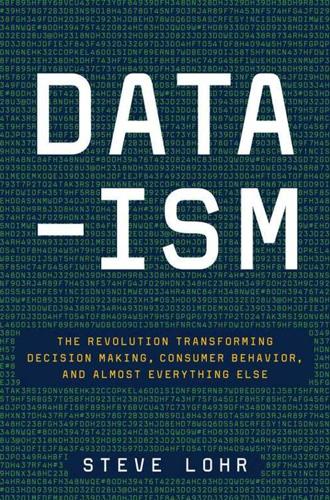
Data-Ism: The Revolution Transforming Decision Making, Consumer Behavior, and Almost Everything Else
by
Steve Lohr
Published 10 Mar 2015
hospital infections are a huge problem: The death estimate comes from a Centers for Disease Control and Prevention study by Monina Klevens et al., “Estimating Health Care-Associated Infections and Deaths in the U.S. Hospitals, 2002,” Public Health Reports 122, no. 2 (March–April 2007): 160–66. The cost estimate comes from a 2013 article by Eyal Zimlichman et al., “Health Care-Associated Infections: A Meta-analysis of Costs and Financial Impact on the US Health Care System,” JAMA Internal Medicine 173, no. 22 (Dec. 9–23, 2013): 2039–46. Alex Rubinsteyn had just completed his PhD: His descriptions and quotes come from an interview on Dec. 19, 2013. Tim O’Donnell was doing broadly similar research: His descriptions and quotes come from an interview on Dec. 24, 2013. 10: The Prying Eyes of Big Data the Kodak-wielding “camera fiend”: Information on the Kodak section comes largely from the online essays, written by David Lindsay, that accompanied the PBS American Experience series, The Wizard of Photography, which aired in 2000. http://www.pbs.org/wgbh/amex/eastman/peopleevents/index.html.
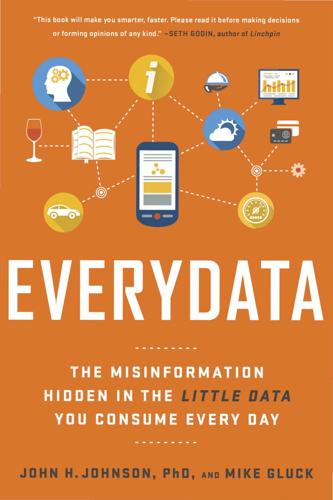
Everydata: The Misinformation Hidden in the Little Data You Consume Every Day
by
John H. Johnson
Published 27 Apr 2016
Allison Aubrey, “Even if You’re Lean, 1 Soda Per Day Ups Your Risk of Type 2 Diabetes,” NPR website, July 23, 2015, http://www.npr.org/sections/thesalt/2015/07/23/425635400/even-if-youre-lean-1-soda-per-day-ups-your-risk-of-diabetes. 25. Fumiaki Imamura, Laura O’Connor, Zheng Ye, Jaako Mursu, Yasuaki Hayashino, Shilpa N. Bhupathiraju, and Nita G. Forouhi, “Consumption of Sugar Sweetened Beverages, Artifically Sweetened Beverages, and Fruit Juice and Incidence of Type 2 Diabetes: Systematic Review, Meta-Analysis, and Estimation of Population Attributable Fraction,” BMJ 351(2015), doi: http://dx.doi.org/10.1136/bmj.h3576. 26. On February 12, 2002, Rumsfeld (former U.S. secretary of defense) appeared at a U.S. Department of Defense briefing and said: “There are known knowns; there are things we know we know.
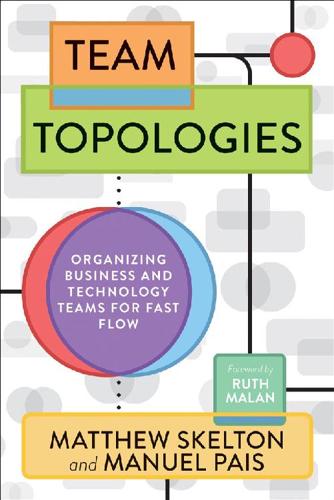
Team Topologies: Organizing Business and Technology Teams for Fast Flow
by
Matthew Skelton
and
Manuel Pais
Published 16 Sep 2019
MichaelNygard.com (blog), April 29, 2015. http://michaelnygard.com/blog/2015/04/the-perils-of-semantic-coupling/. Nygard, Michael T. Release It! Design and Deploy Production-Ready Software, 2nd edition. Raleigh, North Carolina: O’Reilly, 2018. O’Connor, Debra L., and Tristan E. Johnson. “Understanding Team Cognition in Performance Improvement Teams: A Meta-Analysis of Change in Shared Mental Models.” Proceedings of the Second International Conference on Concept Mapping (2006). https://pdfs.semanticscholar.org/4106/3eb1567e630a35b4f33f281a6bb9d193ddf5.pdf. O’Dell, Chris. “You Build It, You Run It (Why Developers Should Also Be on Call).” SkeltonThatcher.com (blog), October 18, 2017. https://skeltonthatcher.com/blog/build-run-developers-also-call/.
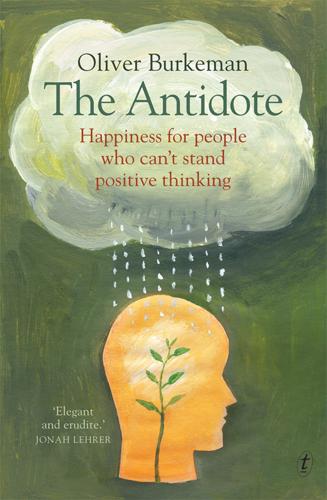
The Antidote: Happiness for People Who Can't Stand Positive Thinking
by
Oliver Burkeman
Published 1 Jul 2012
And perhaps more to the point, it certainly seems to be the case that if you set out to achieve material goals, you’ll be less happy than those with other priorities: see Carol Nickerson et al., ‘Zeroing in on the Dark Side of the American Dream’, Psychological Science 14 (2003): 531-6. Nor does better education: See for example Robert Witter et al., ‘Education and Subjective Wellbeing: A Meta-analysis’, Educational Evaluation and Policy Analysis 6 (1984): 165-73. Nor does an increased choice of consumer products: The canonical resource on this is Barry Schwartz, The Paradox of Choice (New York: Ecco, 2003). Nor do bigger and fancier homes: Robert H. Frank, ‘How Not To Buy Happiness’, Daedalus 133 (2004): 69-79.
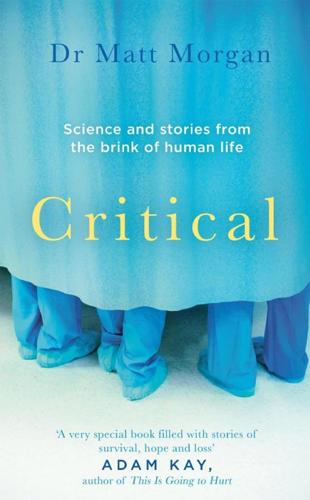
Critical: Science and Stories From the Brink of Human Life
by
Matt Morgan
Published 29 May 2019
Always Hungry? (Hachette UK, 2016). ‘. . . due to replacement of fat content . . .’ Bazzano, L. A. et al. Effects of low-carbohydrate and low-fat diets: a randomized trial. Ann. Intern. Med. 161, 309–318 (2014). ‘. . . with refined sugars.’ Siri-Tarino, P. W., Sun, Q., Hu, F. B. & Krauss, R. M. Meta-analysis of prospective cohort studies evaluating the association of saturated fat with cardiovascular disease. Am. J. Clin. Nutr. 91, 535–546 (2010). ‘Named after New York physician Dr Burrill Crohn in 1932 . . .’ Geller, S. A. in Encyclopedia of Pathology (ed. van Krieken, J. H. J. M.) 1–4 (Springer International Publishing, 2016)

Independent Diplomat: Dispatches From an Unaccountable Elite
by
Carne Ross
Published 25 Apr 2007
And the Americans, well, that’s a story better told by others.1 It is human nature that when you are on weak ground you seek to undermine your attacker, rather than examine the ground on which you are standing. Once a position has been taken on an issue — for example that the wars in Yugoslavia were a “civil war” — all analysis becomes suborned to that meta-analysis. Groupthink, in this case as in others, not only ruled but was encouraged. If we believed in a nice, tidy, ordered world of states, as British officials most emphatically did, then the break-up of a state was a Bad Thing and must be “contained”. British policy seemed logical, and the facts could, if we chose, be made to fit our views (telegrams from our posts in the region, particularly Belgrade,2 did just that).
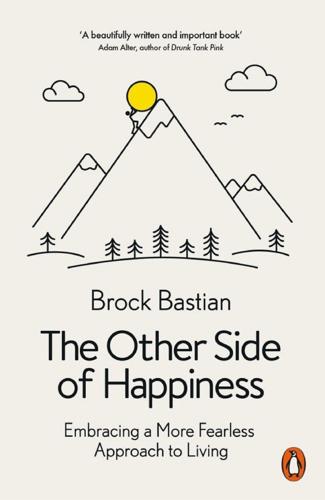
The Other Side of Happiness: Embracing a More Fearless Approach to Living
by
Brock Bastian
Published 25 Jan 2018
T. and Greenfield, P. M. (2012). The value of fame: Preadolescent perceptions of popular media and their relationship to future aspirations. Developmental Psychology, 48 (2), 315–26. 9 Twenge, J. M., Konrath, S., Foster, J. D., Campbell, W. K. and Bushman, B. J. (2008). Egos inflating over time: A cross-temporal meta-analysis of the narcissistic personality inventory. Journal of Personality, 76 (4), 875–902. 10 Sayer, L. C., Bianchi, S. M. and Robinson, J. P. (2004). Are parents investing less in children? Trends in mothers’ and fathers’ time with children. American Journal of Sociology, 110, 1–43. 11 The National Center for Safe Routes to School (2011).
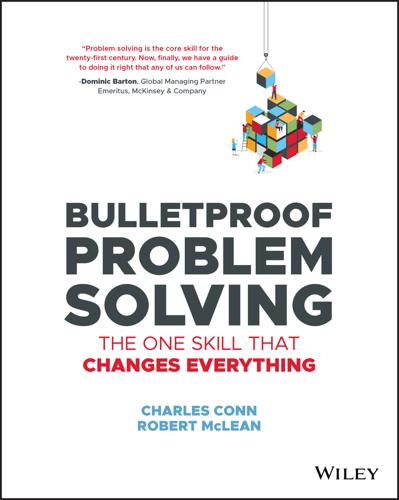
Bulletproof Problem Solving
by
Charles Conn
and
Robert McLean
Published 6 Mar 2019
August, 2017. 5 Nicholas A. Christakis and James H. Fowler, “The Spread of Obesity in a Large Social Network over 32 Years,” New England Journal of Medicine 2007, no. 357 (2007): 370–379. 6 H. T. Tie, et al., “Risk of Childhood Overweight or Obesity Associated with Excessive Weight Gain During Pregnancy: A Meta‐Analysis,” Archives of Gynecology and Obstetrics 289, no. 2 (2014): 247–257. 7 US data source provided by Professor Desiree Silva, the ORIGINS project at Joondalup Health Campus, Western Australia. 8 Submission 10 to Senate Select Enquiry into the Obesity Epidemic in Australia, July 2018. 9 Walk Economy, The Place Report (2016), 7. 10 Garrett Hardin, “The Tragedy of the Commons,” Science (December 13, 1968). 11 Elinor Ostrom, Governing the Commons (Cambridge University Press, 1990). 12 Oral communications, Chuck Cook and Charles Conn, August–October, 2017. 13 Mark Tercek and Jonathan Adams, Nature's Fortune (Island Press, 2015). 14 Morro Bay Commercial Fisheries. 2015 Economic Impact Report Working Waterfront Edition. 15 Morro Bay Commercial Fisheries. 2015 Economic Impact Report Working Waterfront Edition.

Never Enough: The Neuroscience and Experience of Addiction
by
Judith Grisel
Published 15 Feb 2019
Samuel Bogoch (New York: Plenum Press, 1969). 2. Lewis Carroll, Alice’s Adventures in Wonderland (London: Macmillan, 1865). 3. Human Rights Watch, World Report, 2017. 4. Richard Karban, Louie H. Yang, and Kyle F. Edwards, “Volatile Communication Between Plants That Affects Herbivory: A Meta-analysis,” Ecology Letters 17, no. 1 (2013); and see Kat McGowan, “The Secret Language of Plants,” Quanta Magazine, Dec. 16, 2013, www.quantamagazine.org. 5. Center for Action and Contemplation, Albuquerque, N.M., cac.org. ABOUT THE AUTHOR Judith Grisel, Ph.D., is an internationally recognized behavioral neuroscientist and a professor of psychology at Bucknell University.

Survival of the Friendliest: Understanding Our Origins and Rediscovering Our Common Humanity
by
Brian Hare
and
Vanessa Woods
Published 13 Jul 2020
Notes Introduction 1. Elliot Aronson, Shelley Patnoe, Cooperation in the Classroom: The Jigsaw Method (London: Pinter & Martin, 2011). 2. D. W. Johnson, G. Maruyama, R. Johnson, D. Nelson, L. Skon, “Effects of Cooperative, Competitive, and Individualistic Goal Structures on Achievement: A Meta-Analysis,” Psychological Bulletin 89, 47 (1981). 3. D. W. Johnson, R. T. Johnson, “An Educational Psychology Success Story: Social Interdependence Theory and Cooperative Learning,” Educational Researcher 38, 365–79 (2009). 4. M. J. Van Ryzin, C. J. Roseth, “Effects of Cooperative Learning on Peer Relations, Empathy, and Bullying in Middle School,” Aggressive Behavior (2019). 5.

The Wondering Jew: Israel and the Search for Jewish Identity
by
Micah Goodman
Published 10 Nov 2020
See also Marilyn Baetz and John Toews, “Clinical Implications of Research on Religion, Spirituality, and Mental Health,” Revue Canadienne de Psychiatrie 54, no. 5 (May 2009). See also Yoram Kirsh, Roads to Happiness: The Philosophy, Psychology, and Mathematics of Happiness (Tel Aviv: Am Oved, 2011), 58–60 [Hebrew]. For a more critical and detailed examination of the different studies, see Charles H. Hackney and Glenn S. Sanders, “Religiosity and Mental Health: A Meta-Analysis of Recent Studies,” Journal for the Scientific Study of Religion 42, no. 1 (2003): 43–55. 5. For a clear and readable overview of the findings of studies on this question, see Pamela Paul, “The Power to Uplift,” Time (9 January 2005), accessible at: http://content.time.com/time/magazine/article/0,9171,1015870,00.html. 6.
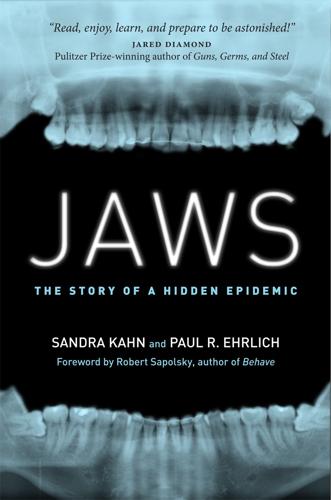
Jaws
by
Sandra Kahn,Paul R. Ehrlich
Published 15 Jan 2018
Sleep and neurobehavioral characteristics of 5–to 7–year-old children with parentally reported symptoms of attention-deficit/hyperactivity disorder. Pediatrics 111: 554–563; and K. Sedky, D. S. Bennett, and K. S. Carvalho. 2014. Attention deficit hyperactivity disorder and sleep disordered breathing in pediatric populations: A meta-analysis. Sleep Medicine Reviews 18: 349e356. 54. D. J. Timms. 1990. Rapid maxillary expansion in the treatment of nocturnal enuresis. The Angle Orthodontist 60: 229–233. 55. U. Schültz-Fransson and J. Kurol. 2008. Rapid maxillary expansion effects on nocturnal enuresis in children: A follow-up study.
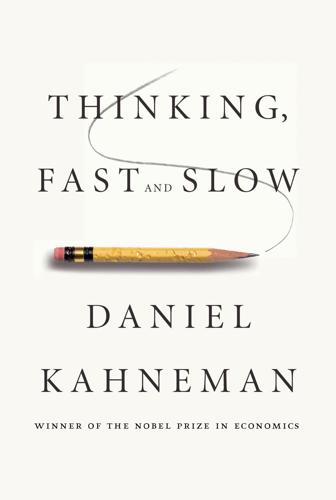
Thinking, Fast and Slow
by
Daniel Kahneman
Published 24 Oct 2011
Bodenhausen, “Social Cognition: Thinking Categorically about Others,” Annual Review of Psychology 51 (2000): 93–120. po {"><21; : Sian L. Beilock and Thomas H. Carr, “When High-Powered People Fail: Working Memory and Choking Under Pressure in Math,” Psychological Science 16 (2005): 101–105. exertion of self-control: Martin S. Hagger et al., “Ego Depletion and the Strength Model of Self-Control: A Meta-Analysis,” Psychological Bulletin 136 (2010): 495–525. resist the effects of ego depletion: Mark Muraven and Elisaveta Slessareva, “Mechanisms of Self-Control Failure: Motivation and Limited Resources,” Personality and Social Psychology Bulletin 29 (2003): 894–906. Mark Muraven, Dianne M. Tice, and Roy F.
…
DeVaul et al., “Medical-School Performance of Initially Rejected Students,” JAMA 257 (1987): 47–51. Jason Dana and Robyn M. Dawes, “Belief in the Unstructured Interview: The Persistence of an Illusion,” working paper, Department of Psychology, University of Pennsylvania, 2011. William M. Grove et al., “Clinical Versus Mechanical Prediction: A Meta-Analysis,” Psychological Assessment 12 (2000): 19–30. Dawes’s famous article: Robyn M. Dawes, “The Robust Beauty of Improper Linear Models in Decision Making,” American Psychologist 34 (1979): 571–82. not affected by accidents of sampling: Jason Dana and Robyn M. Dawes, “The Superiority of Simple Alternatives to Regression for Social Science Predictions,” Journal of Educational and Behavioral Statistics 29 (2004): 317–31.
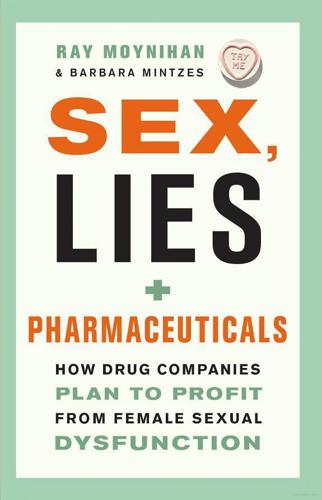
Sex, Lies, and Pharmaceuticals: How Drug Companies Plan to Profit From Female Sexual Dysfunction
by
Ray Moynihan
and
Barbara Mintzes
Published 1 Oct 2010
Jones et. al., ‘Interventions for sexual dysfunction following treatments for cancer’, Cochrane Database of Systematic Reviews, vol. 4, 2007, CD005540. DOI: 10.1002/14651858.CD00540.pub.2. 31 A. Tsertsvadze, F. Yazdi & H.A. Fink et. al., ‘Oral sildenafil citrate (Viagra) for erectile dysfunction: A systematic review and meta-analysis of harms’, Urology, vol. 74, 2009, pp. 831–6. 32 US Food and Drug Administration, Sildenafil Citrate (marketed as Viagra) Information, November 2007, www.fda.gov/Drugs/DrugsSafety/PostmarketDrugSafetyInformationforPatientsandProviders/ucm162833.htm. 33 T. Melnik, B. Soares & A. Nasello, ‘Psychosocial interventions for erectile dysfunction’, Cochrane Database of Systematic Reviews, vol. 3, 2007, CD004825.
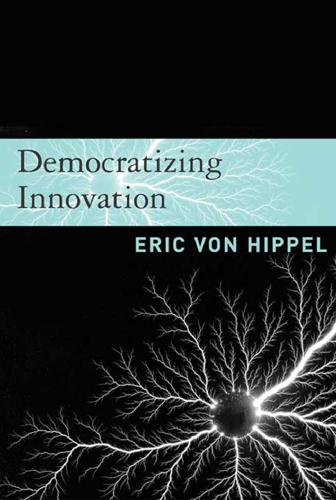
Democratizing innovation
by
Eric von Hippel
Published 1 Apr 2005
Why Many Users Want Custom Products (Chapter 3) Why do so many users develop or modify products for their own use? Users may innovate if and as they want something that is not available on the market and are able and willing to pay for its development. It is likely that many users do not find what they want on the market. Meta-analysis of market-segmentation studies suggests that users’ needs for products are highly heterogeneous in many fields (Franke and Reisinger 2003). Mass manufacturers tend to follow a strategy of developing products that are designed to meet the needs of a large market segment well enough to induce purchase from and capture significant profits from a large number of customers.

Potatoes not Prozac
by
Kathleen DesMaisons, Ph. D.
Daily bingeing on sugar repeatedly releases dopamine in the accumbens shell. Neuroscience, 2005. 134(3): 737–44. Rakatansky, H. Chocolate: pleasure or pain? RI Med, 1995. 78(7): 179. Reid, L. D., et al. Opioids and intake of alcoholic beverages. NIDA Res Monogr, 1986. 75: 359–62. Ripsin, C. M., et al. Oat products and lipid lowering. A meta-analysis. JAMA, 1992. 267(24): 3317–25. Roach, M. K., and R. J. Williams. Impaired and inadequate glucose metabolism in the brain as an underlying cause of alcoholism—an hypothesis. Proc Natl Acad Sci USA, 1966. 56(2): 566–71. Ruegg, H., W. Z. Yu, and R. J. Bodnar. Opioid-receptor subtype agonist-induced enhancements of sucrose intake are dependent upon sucrose concentration.

A Manual for Creating Atheists
by
Peter Boghossian
Published 1 Nov 2013
Assessments of Anticriminal Plans and the Prediction of Criminal Futures. Criminal Justice and Behavior, 14(1), 33–37. Andrews, D. A., Zinger, I., Hoge, R. D., Bonta, J., Gendreau, P., & Cullen, F. T. (1990). Does correctional treatment work? A clinicallyrelevant and psychologically-informed meta-analysis. Criminology, 28(3), 369–404. Andrews, S. (2013). Deconverted: A journey from religion to reason. Denver, Colorado: Outskirts Press. Argyle, M. (2000). Psychology and religion: An introduction. London, England: Routledge. Baltag, A., Rodenhäuser, B., & Smets, S. (2011). Doxastic attitudes as belief-revision policies.

The Microbiome Solution
by
Robynne Chutkan M.D.
Published 5 Aug 2015
Being treated with antibiotics in your first year of life is associated with a threefold increase in risk for IBD compared to children who haven’t received antibiotics, and the risk seems to increase the more antibiotics you receive. In countries like Canada and Finland where antibiotics are widely available, the incidence of IBD in children has steadily increased about 5 percent to 8 percent annually. Studies from the United States, including a meta-analysis of more than seven thousand patients by researchers at Mount Sinai Hospital, confirm that the risk of IBD from antibiotics is highest in children, but also show an increase in new-onset Crohn’s in adults who’ve taken antibiotics in the months before diagnosis. All antibiotics except penicillin have been implicated, but, ironically, the ones most commonly used to treat Crohn’s—metronidazole and fluoroquinolones like Ciprofloxacin—confer the highest risk.
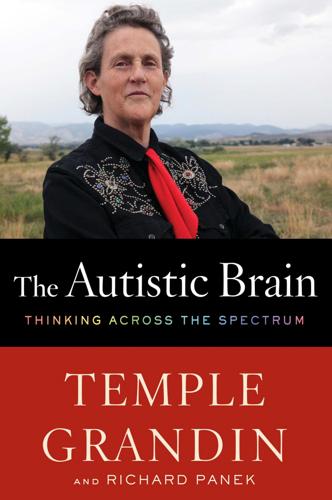
The Autistic Brain: Thinking Across the Spectrum
by
Temple Grandin
and
Richard Panek
Published 15 Feb 2013
. [>] The title of another paper: Maria Kozhevnikov et al., “Spatial versus Object Visualizers: A New Characterization of Visual Cognitive Style,” Memory and Cognition 33, no. 4 (2005): 710–26. [>] Kozhevnikov said: Maria Kozhevnikov interview. [>] researchers at a neuroimaging center: Angélique Mazard et al., “A PET Meta-Analysis of Object and Spatial Mental Imagery,” European Journal of Cognitive Psychology 16, no. 5 (2004): 673–95. [>] her original paper: Mary Hegarty and Maria Kozhevnikov, “Types of Visual-Spatial Representations and Mathematical Problem Solving,” Journal of Educational Psychology 91, no. 4 (1999): 684–89. [>] she published a paper: Kozhevnikov et al., “Spatial versus Object Visualizers.” [>] a self-report questionnaire: O.
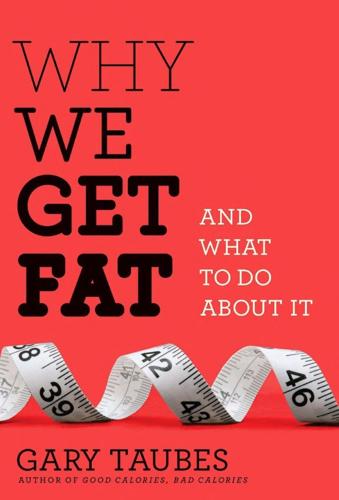
Why We Get Fat and What to Do About It
by
Gary Taubes
Published 28 Dec 2010
American Heart Journal. Nov;68(5):581–85. West, K. M. 1981. “North American Indians.” In Western Diseases, ed. H. C. Trowell and D. P. Burkitt, pp. 129–37. London: Edward Arnold. Chapter 2: The Elusive Benefits of Undereating Dansinger, M. L., A. Tatsioni, W. B. Wong, M. Chung, and E. M. Balk. 2007. “Meta-Analysis: The Effect of Dietary Counseling for Weight Loss.” The Archives of Internal Medicine. Jul 3;147(1):41–50. Howard, B. V., J. E. Manson, M. L. Stefanick, et al. 2006. “Low-Fat Dietary Pattern and Weight Change over 7 Years: The Women’s Health Initiative Dietary Modification Trial.” Journal of the American Medical Association.

Reinventing Capitalism in the Age of Big Data
by
Viktor Mayer-Schönberger
and
Thomas Ramge
Published 27 Feb 2018
Klein, “When Dating Algorithms Can Watch You Blush,” Nautilus, April 14, 2016, http://nautil.us/issue/35/boundaries/when-dating-algorithms-can-watch-you-blush. it used the wrong data: See, e.g., Paul W. Eastwick, Laura B. Luchies, Eli F. Finkel, and Lucy L. Hunt, “The Predictive Validity of Ideal Partner Preferences: A Review and Meta-Analysis,” Psychological Bulletin 140 (20014), 623–665. CHAPTER 5: COMPANIES AND CONTROL annual revenues of more than $100 billion: Jim Milliot, “Amazon Sales Top $100 Billion,” Publishers Weekly, January 28, 2016, http://www.publishersweekly.com/pw/by-topic/industry-news/financial-reporting/article/69269-amazon-sales-top-100-billion.html.
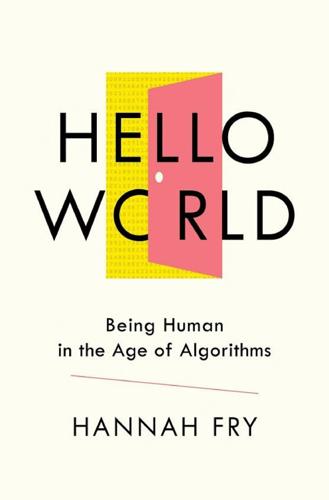
Hello World: Being Human in the Age of Algorithms
by
Hannah Fry
Published 17 Sep 2018
Meehl, Clinical versus Statistical Prediction: A Theoretical Analysis and a Review of the Evidence (Minneapolis: University of Minnesota, 1996; first publ. 1954), http://citeseerx.ist.psu.edu/viewdoc/download?doi=10.1.1.693.6031&rep=rep1&type=pdf. 39. William M. Grove, David H. Zald, Boyd S. Lebow, Beth E. Snitz and Chad Nelson, ‘Clinical versus mechanical prediction: a meta-analysis’, Psychological Assessment, vol. 12, no. 1, 2000, p. 19. 40. Berkeley J. Dietvorst, Joseph P. Simmons and Cade Massey. ‘Algorithmic aversion: people erroneously avoid algorithms after seeing them err’, Journal of Experimental Psychology, Sept. 2014, http://opim.wharton.upenn.edu/risk/library/WPAF201410-AlgorithmAversion-Dietvorst-Simmons-Massey.pdf.
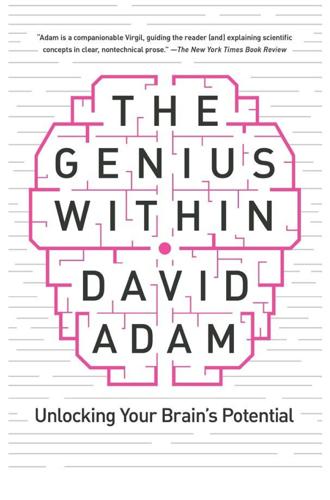
The Genius Within: Unlocking Your Brain's Potential
by
David Adam
Published 6 Feb 2018
‘expert chess players’, Franke A. et al. (2017), ‘Methylphenidate, modafinil, and caffeine for cognitive enhancement in chess: A double-blind, randomised controlled trial’, European Neuropsychopharmacology 27 (3), pp. 248–260. ‘Mozart effect’, Pietschnig J. et al. (2010), ‘Mozart effect – Shmozart effect: a meta-analysis’, Intelligence 38, pp. 314–323. ‘wasting their time’, Underwood E. (2014), ‘Neuroscientists speak out against brain game hype’, Science, 22 October. ‘asked viewers’, Owen A. et al. (2010), ‘Putting brain training to the test’, Nature 465, pp. 775–778. ‘silver-haired’, Corbett A. (2015), ‘The effect of an online cognitive training package in healthy older adults: an online randomized controlled trial’, JAMDA 16, pp. 990–997.
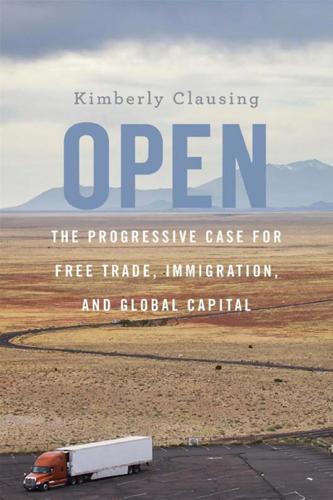
Open: The Progressive Case for Free Trade, Immigration, and Global Capital
by
Kimberly Clausing
Published 4 Mar 2019
These disputes are often protectionist moves in disguise, as dumping rulings typically have little to do with whether the foreign firm engaged in predatory pricing practices. See Douglas A. Irwin, Free Trade under Fire: Fourth Edition. (Princeton: Princeton University Press, 2015), 164–194. 3. See, as one example, the meta-analysis by Ross Levine and David Renelt. “A Sensitivity Analysis of Cross-Country Growth Regressions,” American Economic Review 82:4 (1992): 942–963. 4. See “China and Currency Manipulation,” Economist. March 2, 2017; and Eduardo Porter, “Trump Isn’t Wrong on China Currency Manipulation, Just Late,” New York Times, April 11, 2017. 5. 529 plans are so called because they are authorized by Section 529 of the Internal Revenue Code; likewise, 401K plans are named for the subsection that describes them. 6.
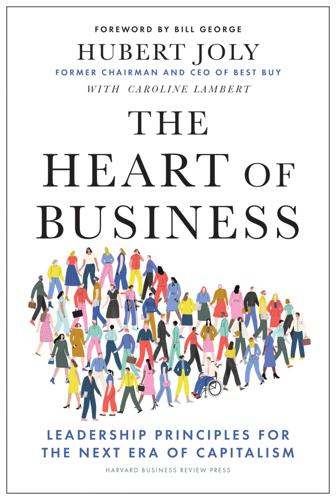
The Heart of Business: Leadership Principles for the Next Era of Capitalism
by
Hubert Joly
Published 14 Jun 2021
Jeff Bezos, “Annual Letter to Shareholders,” April 6, 2016, US Securities and Exchange Commission, https://www.sec.gov/Archives/edgar/data/1018724/000119312516530910/d168744dex991.htm. 6. Carol Dweck, Mindset: The New Psychology of Success (New York, NY: Random House, Kindle Edition, 2007), 20. 7. Thomas Curran and Andrew P. Hill, “Perfectionism Is Increasing over Time: A Meta-Analysis of Birth Cohort Differences from 1989 to 2016,” Psychological Bulletin 145, no. 4 (2019): 410–429, https://www.apa.org/pubs/journals/releases/bul-bul0000138.pdf. Chapter Four 1. A recent Edelman survey highlighted that a majority of respondents around the world believe that capitalism in its current form is now doing more harm than good, and according to the Pew Research Center, a third of Americans hold a negative view of capitalism.

Buy Then Build: How Acquisition Entrepreneurs Outsmart the Startup Game
by
Walker Deibel
Published 19 Oct 2018
. $216,000 in SDE divided by twelve months. 32 It’s an unfair comparison because real estate has a cash flow component as well as equity build up, but the point illustrated here is that the value that can be built in your own privately owned business is not limited like other asset classes. 33 Carol Dweck, What Having a ”Growth Mindset” Actually Means, Harvard Business Review, January, 2016. 34 Chad H. Van Iddekinge, Herman Aguinis, Jeremy D. Mackey, Philip S. DeOrtentiis, “A Meta-Analysis of the Interactive, Additive, and Relative Effects of Cognitive Ability and Motivation on Performance” Journal of Management, January, 2018. 293 35 36 37 David Dunning, Chip Heath, and Jerry M. Suls, “Flawed SelfAssessment, Implications for Health, Education, and the Workplace,” American Psychological Society, 2004.
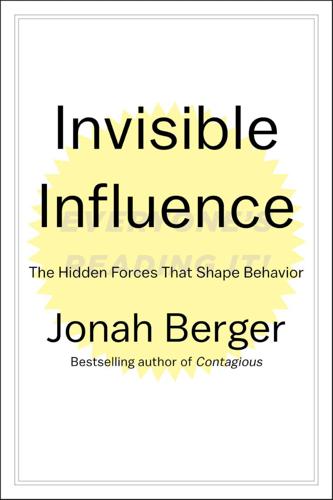
Invisible Influence: The Hidden Forces that Shape Behavior
by
Jonah Berger
Published 13 Jun 2016
Other times people completed the questions for someone else’s purchase and then rated their own. 4. Match.com and Chadwick Martin Bailey Behavioral Studies (2010), “Match.com and Chadwick Martin Bailey 2009–2010 Studies: Recent Trends: Online Dating,” 1–5. 5. For a review of mere exposure research, see Bornstein, Robert (1989), “Exposure and Affect: Overview and Meta-Analysis of Research,” Psychological Bulletin 106, 263–89. 1. Monkey See, Monkey Do 1. Sherif, Muzafer (1935), “A Study of Some Social Factors in Perception: Chapter 2,” Archives of Psychology 187, 17–22. 2. For a summary of some of Asch’s studies, see Asch, Solomon (1956), “Studies of Independence and Conformity: A Minority of One Against a Unanimous Majority,” Psychological Monographs 70, 1–70. 3.
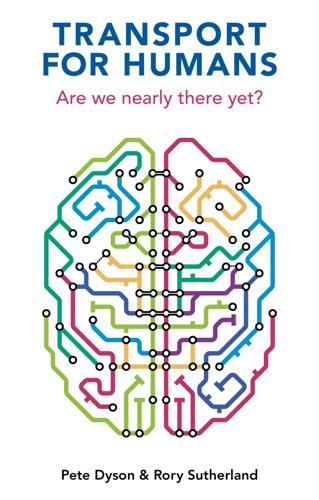
Transport for Humans: Are We Nearly There Yet?
by
Pete Dyson
and
Rory Sutherland
Published 15 Jan 2021
The World Economic Forum found that 86% of people across twenty-eight countries wanted significant change to make the world a fairer and more sustainable place.17 Until recently, the behavioural economics literature looked quite underpowered, as it typically concentrated on the behaviour of individuals, examining social norms only to the extent they affect individuals rather than how those norms are formed and evolved in the first place.18 The evidence has grown into a consensus that large-scale changes in habits require shifting circumstances, not just personal willpower. Sebastian Bamberg, a transport researcher based in Germany, led a meta-analysis of individual voluntary travel behaviour change in 2017.19 He found that habits are weakly formed when people embark on personal travel planning (shifting car usage by an average of 5%). By using norms and emphasizing cooperation, insights from psychology, anthropology and sociology can signpost more powerful forces for change.20 Our knowledge of the power of societal norms is partly based on the work of Jean Piaget and Lawrence Kohlberg, both developmental psychologists, on how we develop a moral sense of right and wrong.21 Social norms that persist have peer-to-peer enforcement: in a pandemic, for example, a government temporarily mandates remote working and physical distancing – by law in some cases – but top-down policies become norms only once people feel that their friends or colleagues will not judge them negatively if they follow the new practices.

The Broken Ladder
by
Keith Payne
Published 8 May 2017
Solt examined the level of religious belief: F. Solt, P. Habel, and J. T. Grant, “Economic Inequality, Relative Power, and Religiosity,” Social Science Quarterly 92 (2011): 447–65. Individuals who are religious tend to be happier: C. H. Hackney and G. S. Sanders, “Religiosity and Mental Health: A Meta-Analysis of Recent Studies,” Journal for the Scientific Study of Religion 42 (2003): 43–55. Chapter 7: Inequality in Black and White since the first slave ship reached North America: I. Berlin, Many Thousands Gone: The First Two Centuries of Slavery in North America (Cambridge, MA: Harvard University Press, 2009).
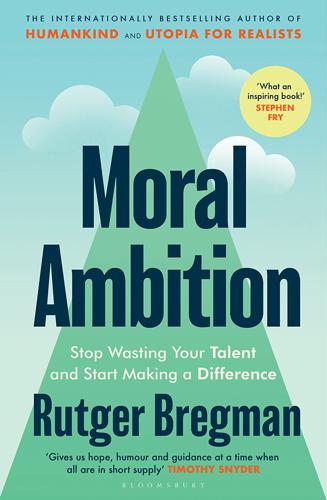
Moral Ambition: Stop Wasting Your Talent and Start Making a Difference
by
Bregman, Rutger
Published 9 Mar 2025
See also: Hannah Ritchie, Fiona Spooner, and Max Roser, ‘Causes of Death’, Our World in Data (December 2019). 57 See: Cambeiro and Potter, ‘Indoor Air Quality Is the Next Great Public Health Challenge’. 58 Current EU standards stipulate no more than ten micrograms of lead per litre of drinking water. See: ‘Directive (eu) 2020/2184 of the European Parliament and of the Council of 16 December 2020 on the quality of water intended for human consumption (recast) (Text with eea relevance)’, eur-Lex (23 December 2020); Anthony Higney, Nick Hanley, and Mirko Moro, ‘The Lead-crime Hypothesis: A Meta-analysis’, Regional Science and Urban Economics, Vol. 97, Issue 1 (November 2022). 59 Ewan Eadie et al., ‘Far-uvc (222 nm) Efficiently Inactivates an Airborne Pathogen in a Room-sized Chamber’, Scientific Reports, Vol. 12, Issue 4373 (2022). Some scientists have pointed out there could also be too little exposure to germs, especially in early childhood, due to increased hygiene, which could mean a weaker immune system.
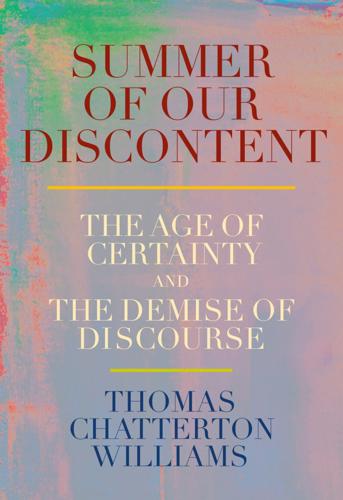
Summer of Our Discontent: The Age of Certainty and the Demise of Discourse
by
Thomas Chatterton Williams
Published 4 Aug 2025
.[*9] “Operating in a context of deep partisan and ideological polarization, inflamed racial tensions, and widespread civil unrest, voters’ perceptions of the president’s efforts to combat the pandemic were highly negative and electorally consequential,” writes Harold Clarke of the University of Texas at Dallas. According to his meta-analysis of voter reactions, Going into the 2020 election Trump was relying heavily on a traditional political recipe of “peace and prosperity” to make his case for re-election. The economy was the lynchpin of this strategy. During Trump’s term in office, corporate taxes had been reduced, the stock market had soared to record highs, and unemployment had continued the downward trend established in the Obama years.
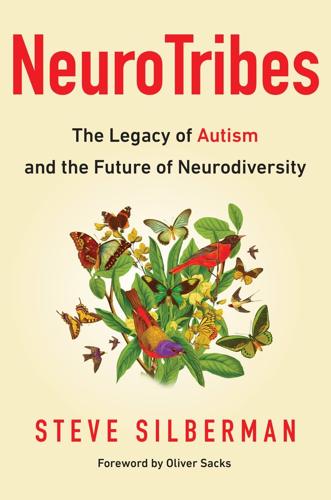
NeuroTribes: The Legacy of Autism and the Future of Neurodiversity
by
Steve Silberman
Published 24 Aug 2015
Wakefield was stripped of his medical license in England by the General Medical Council in 2010, and the editors of the British Medical Journal denounced his study as “an elaborate fraud” in 2011. Multiple attempts by independent researchers to confirm a link between autism and the MMR vaccine have failed. In 2003, researchers writing for the Archives of Pediatrics and Adolescent Medicine performed a systematic meta-analysis of a dozen epidemiological studies and concluded, “The current literature does not suggest an association between ASD and the MMR vaccine. While the risk of autism from MMR remains theoretical, the consequences of not vaccinating are real.” — FROM THEIR OFFICE AT the Lorna Wing Centre for Autism a few miles outside London, Lorna and Judith regarded the vaccine controversy with a sense of tragic inevitability.
…
“If my son really is Patient 11”: “Exposed: Andrew Wakefield and the MMR-Autism Fraud,” Brian Deer. http://briandeer.com/mmr/lancet-summary.htm ten of the study’s co-authors took their names off the paper: “Controversial MMR and Autism Study Retracted,” Maggie McKee. New Scientist, March 4, 2004. Wakefield was stripped of his medical license: “Retracted Autism Study an ‘Elaborate Fraud,’ British Journal Finds,” CNN Wire Staff. http://www.cnn.com/2011/HEALTH/01/05/autism.vaccines/ a systematic meta-analysis of a dozen epidemiological studies: “Association of Autistic Spectrum Disorder and the Measles, Mumps, and Rubella Vaccine: A Systematic Review of Current Epidemiological Evidence,” Kumanan Wilson et al. Archives of Pediatric and Adolescent Medicine, Vol. 157, No. 7, July 2003, pp. 628–63. “It’s a question of diagnosis”: Lorna Wing and Judith Gould, interview with the author, 2011.
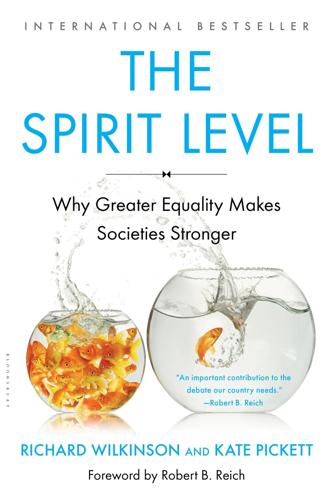
The Spirit Level: Why Greater Equality Makes Societies Stronger
by
Richard Wilkinson
and
Kate Pickett
Published 1 Jan 2009
Buss, The Evolution of Desire: Strategies of human mating. New York: Basic Books, 1994. 210. P. Fajnzylber, D. Lederman and N. Loayza, ‘Inequality and violent crime’, Journal of Law and Economics (2002) 45: 1–40. 211. C.-C. Hsieh and M. D. Pugh, ‘Poverty, income inequality, and violent crime: A meta-analysis of recent aggregate data studies’, Criminal Justice Review (1993) 18: 182–202. 212. United Nations Crime and Justice Information Network, Survey on Crime Trends and the Operations of Criminal Justice Systems (Fifth, Sixth, Seventh, Eighth). New York: United Nations, 2000. 213. Federal Bureau of Investigation, Crime in the United States.
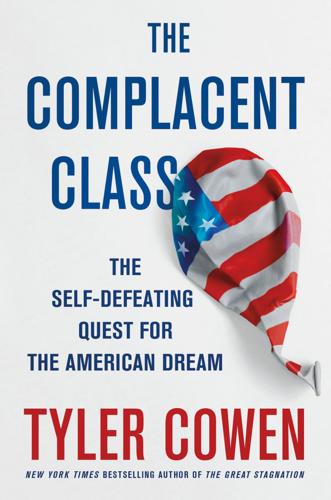
The Complacent Class: The Self-Defeating Quest for the American Dream
by
Tyler Cowen
Published 27 Feb 2017
“Sex Differences in Mate Preferences Revisited: Do People Know What They Initially Desire in a Romantic Partner?” Journal of Personality and Social Psychology 94, no. 2 (2008): 245–264. Eastwick, Paul W., Laura B. Luchies, Eli J. Finkel, and Lucy L. Hunt. “The Predictive Validity of Ideal Partner Preferences: A Review and Meta-Analysis.” Psychological Bulletin 140, no. 3 (May 2013): 623–665. Economic Report of the President. Washington, DC: presented to Congress February 2015. Edlund, Lena, Cecilia Machado, and Michaela Sviatchi. “Bright Minds, Big Rent: Gentrification and the Rising Returns to Skill.” National Bureau of Economic Research Working Paper 21729, November 2015.
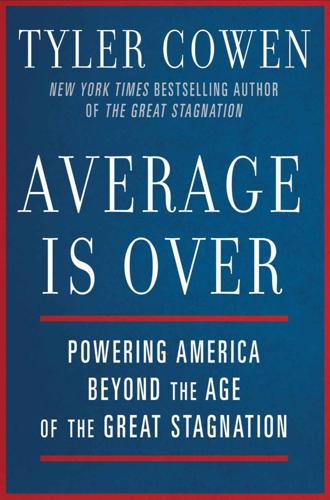
Average Is Over: Powering America Beyond the Age of the Great Stagnation
by
Tyler Cowen
Published 11 Sep 2013
A Large-Scale Natural Field Experiment on Gender Differences in Job-Entry Decisions,” National Bureau of Economic Research, Working Paper 16546, November 2010. On the importance of conscientiousness in the workplace and for earnings, see for instance Murray R. Barrick and Michael K. Mount, “The Big Five Personality Dimensions and Job Performance: A Meta-Analysis,” Personnel Psychology, 1991, 44(1): 1–26; Ellen K. Nyhus and Empar Pons, “The Effects of Personality on Earnings,” Journal of Economic Psychology, 2005, 26(3): 363–84; and Daniel Spurk and Andrea E. Abele, “Who Earns More and Why? A Multiple Mediation Model from Personality to Salary,” Journal of Business and Psychology, 2011, 26(1): 87–103.
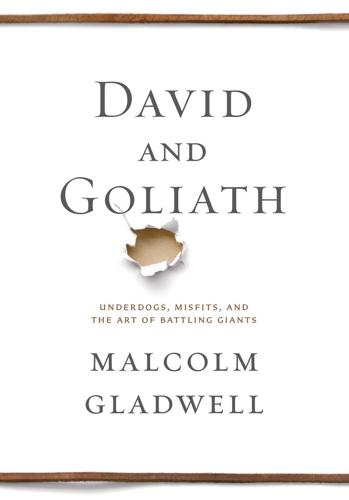
David and Goliath: Underdogs, Misfits, and the Art of Battling Giants
by
Malcolm Gladwell
Published 30 Sep 2013
So the results presented here may be showing evidence of a marginal return for reductions in class size over a range of sizes that are not characteristic of most American schools.” For a discussion of the relationship between drinking and health as an inverted-U curve, see Augusto Di Castelnuovo et al., “Alcohol Dosing and Total Mortality in Men and Women: An Updated Meta-analysis of 34 Prospective Studies,” Archives of Internal Medicine 166, no. 22 (2006): 2437–45. Jesse Levin’s research on class size and achievement is “For Whom the Reductions Count: A Quantile Regression Analysis of Class Size and Peer Effects on Scholastic Achievement,” Empirical Economics 26 (2001): 221.

Twilight of the Elites: America After Meritocracy
by
Chris Hayes
Published 11 Jun 2012
Esquire, January 18, 2011. 41 “And I—I mean—you know, my dad”: See “Republican Presidential Candidates Participate in a CNN-Sponsored Debate,” Political Transcript Wire, January 20, 2012. 42 “It was always a business where you had to have an edge”: Steve Fishman, “The Madoff Tapes,” New York, February 27, 2011. 43 “I am an important person”: Jean M. Twenge et al., “Egos Inflating Over Time: A Cross-Temporal Meta-Analysis of the Narcissistic Personality Disorder,” Journal of Personality 76, no. 4 (2008): 878. 44 “People with insecure high self-esteem”: Kate Pickett and Richard Wilkinson, The Spirit Level: Why Greater Equality Makes Societies Stronger (New York: Bloomsbury), p. 37. 45 “not that smart and kind of a bully”: See Jeffrey Rosen, “The Case Against Sotomayor,” New Republic, May 4, 2009. 46 “meritocratic feedback loop”: Ho, Liquidated, p. 57. 47 “There’s 100 percent no question”: Author interview. 48 “the outstretched arms of J.P.

The Buddha and the Badass: The Secret Spiritual Art of Succeeding at Work
by
Vishen Lakhiani
Published 14 Sep 2020
The Power of PQ Positive optimism can equate to what Shirzad Chamine, author of the book Positive Intelligence: Why Only 20% of Teams and Individuals Achieve Their True Potential, would call a high Positive Intelligence Quotient (PQ). A person with a high PQ means they have a higher ratio of positive feelings to overall feelings. In a simple sense: a person who is feeling a little stressed or insecure or down 10 percent of the time would have a PQ of 90. The book is a meta-analysis of hundreds of studies on happiness and work, concluding that “higher PQ leads to higher salary and greater success in the arenas of work, marriage, health, sociability, friendship, and creativity.” Chamine writes: “Your mind is your best friend, but it is also your worst enemy. Positive intelligence is the relative strength of these two modes of your mind.
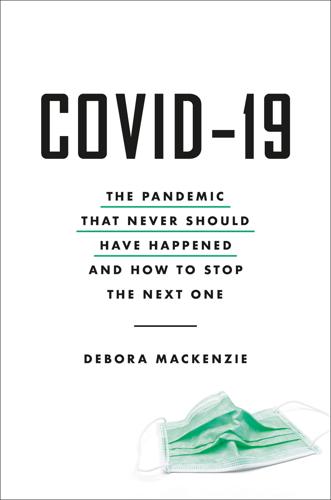
Covid-19: The Pandemic That Never Should Have Happened and How to Stop the Next One
by
Debora MacKenzie
Published 13 Jul 2020
One critic… stiff whiskey: Debora MacKenzie, “Evidence that Tamiflu reduces deaths in pandemic flu,” New Scientist, June 24, 2013, www.newscientist.com/article/dn23744-evidence-that-tamiflu-reduces-deaths-in-pandemic-flu. 30. Jonathan Van… effect: S.G. Muthuri, et al., “Impact of neuraminidase inhibitor treatment on outcomes of public health importance during the 2009-2010 influenza A (H1N1) pandemic: a systematic review and meta-analysis in hospitalized patients,” The Journal of Infectious Diseases 207, no. 4 (November 2012): 553–63, doi.org/10.1093/infdis/jis726. 31. In an investigation… infect bacteria: Debora MacKenzie, “The war against antibiotic resistance is finally turning in our favour,” New Scientist, January 16, 2019, www.newscientist.com/article/2190957-the-war-against-antibiotic-resistance-is-finally-turning-in-our-favour. 32.
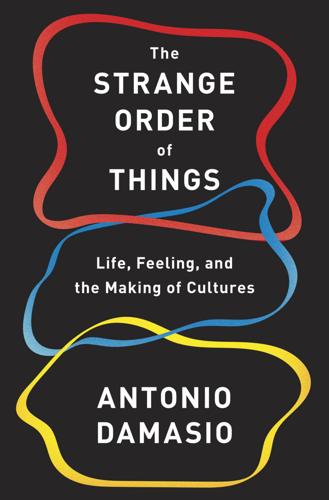
The Strange Order of Things: The Biological Roots of Culture
by
Antonio Damasio
Published 6 Feb 2018
Pride, and Brian C. Trainor, “Effects of Kappa Opioid Receptors on Conditioned Place Aversion and Social Interaction in Males and Females,” Behavioural Brain Research 262 (2014): 84–93; M. T. Bardo, J. K. Rowlett, and M. J. Harris, “Conditioned Place Preference Using Opiate and Stimulant Drugs: A Meta-analysis,” Neuroscience and Biobehavioral Reviews 19, no. 1 (1995): 39–51. 7. While activation of the innate immune system induces a generalized protective response to any form of tissue damage or infection, the adaptive immune system—which evolved later, in jawed vertebrates about 450 million years ago—mounts a direct assault targeting a specific pathogen.

The Twittering Machine
by
Richard Seymour
Published 20 Aug 2019
The industry is riddled with . . . Ben Goldacre, ‘Foreword’, Bad Pharma: How Medicine is Broken, and How We Can Fix it Fourth Estate: London, 2013. 54. When a peer-reviewed survey of scientists . . . Daniele Fanelli, ‘How Many Scientists Fabricate and Falsify Research? A Systematic Review and Meta-Analysis of Survey Data’, PLOS One, 29 May 2009. 55. Data was hailed as . . . ‘The world’s most valuable resource is no longer oil, but data’, the Economist, 6 May 2017; Andrew McAfee and Erik Brynjolfsson, ‘Big Data: The Management Revolution’, Harvard Business Review, October 2012. 56. In an excitable piece for Wired . . .
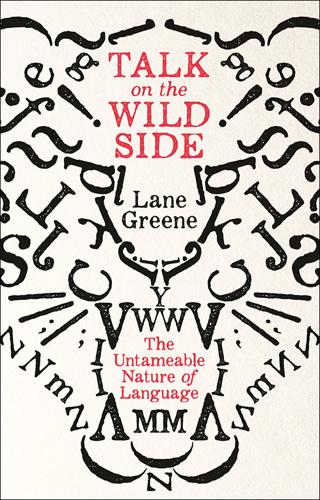
Talk on the Wild Side
by
Lane Greene
Published 15 Dec 2018
But it turns out to have no research whatsoever behind it. Though it seems like common sense, one study has even found that this was the worst of several approaches that were carefully compared to see which got students writing the best prose. In 2007 Steve Graham and Dolores Perin, two academics, compared dozens of teaching strategies in a meta-analysis, a study of studies considered a kind of gold standard in academia. (Any one study may have flaws, but looking at a large batch of them and combining their findings means that those flaws should wash out.) Graham and Perin found 11 strategies that were proven to work – things like practising summarisation, pre-writing and collaborative writing assignments.

New Dark Age: Technology and the End of the Future
by
James Bridle
Published 18 Jun 2018
Casadevall, ‘Retracted Science and the Retraction Index’, Infection and Immunity 79 (2011), 3855–9. 9.F. C. Fang, R. G. Steen, and A. Casadevall, ‘Misconduct accounts for the majority of retracted scientific publications’, FAS, October 16, 2012, pnas.org. 10.Daniele Fanelli, ‘How Many Scientists Fabricate and Falsify Research? A Systematic Review and Meta-Analysis of Survey Data’, PLOS ONE, May 29, 2009, PLOS ONE, journals.pl. 11.F. C. Fang, R. G. Steen, and A. Casadevall, ‘Why Has the Number of Scientific Retractions Increased?’, PLOS ONE, July 8, 2013, journals.plosone.org. 12.‘People Who Mattered 2014’, Time, December 2014, time.com. 13.Yudhijit Bhattacharjee, ‘The Mind of a Con Man’, New York Times, April 26, 2013, nytimes.com. 14.Monya Baker, ‘1,500 scientists lift the lid on reproducibility’, Nature, May 25, 2016, nature.com. 15.For more on the math of this experiment, see Jean-Francois Puget, ‘Green dice are loaded (welcome to p-hacking)’, IBM developer-Works blog entry, March 22, 2016, ibm.com. 16.M.
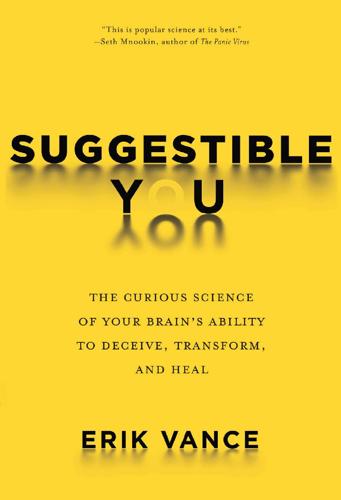
Suggestible You: The Curious Science of Your Brain's Ability to Deceive, Transform, and Heal
by
Erik Vance
Published 14 Sep 2016
“When Words Are Painful: Unraveling the Mechanisms of the Nocebo Effect.” Neuroscience 147, no. 2 (June 29, 2007): 260–71. doi:10.1016/j.neuroscience.2007.02.020. Bicket, Mark C., Anita Gupta, Charlie H. Brown, and Steven P. Cohen. “Epidural Injections for Spinal Pain: A Systematic Review and Meta-Analysis Evaluating the ‘Control’ Injections in Randomized Controlled Trials.” Anesthesiology 119, no. 4 (October 2013): 907–31. doi:10.1097/ALN.0b013e31829c2ddd. Brodwin, Paul. Medicine and Morality in Haiti: The Contest for Healing Power. Cambridge University Press, 1996. Cannon, Walter B. “ ‘Voodoo’ Death.”
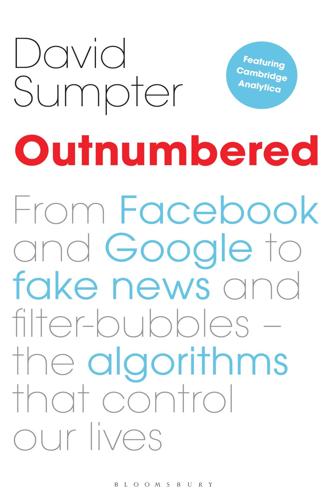
Outnumbered: From Facebook and Google to Fake News and Filter-Bubbles – the Algorithms That Control Our Lives
by
David Sumpter
Published 18 Jun 2018
In VS@ HLT-NAACL, pp. 123–8. 10 Bolukbasi, T., Chang, K-W, Zou, J. Y., Saligrama, V. and Kalai, A. T. 2016. ‘Man is to computer programmer as woman is to homemaker? Debiasing word embeddings.’ In Advances in Neural Information Processing Systems, pp. 4349–57. 11 For a review see Hofmann, W., Gawronski, B., Gschwendner, T., Le, H. and Schmitt, M. 2005. ‘A meta-analysis on the correlation between the implicit association test and explicit self-report measures.’ Personality and Social Psychology Bulletin 31, no. 10: 1369–85. Chapter 15 : The Only Thought Between the Decimal 1 A similar gate can be found in quantum computing and is known as the Hadamard gate. 2 To implement this model I used the neural network demo program at https://lecture-demo.ira.uka.de.
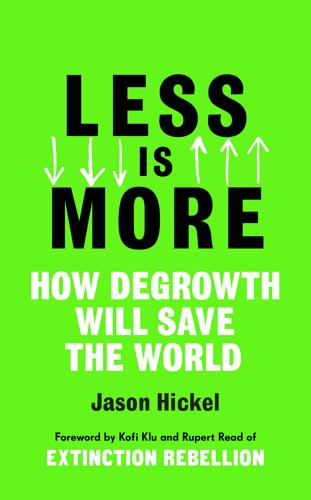
Less Is More: How Degrowth Will Save the World
by
Jason Hickel
Published 12 Aug 2020
Politics & Society 34(4), 2006, pp. 503–542. 26 This research is reported in Peter Barck-Holst et al., ‘Reduced working hours and stress in the Swedish social services: A longitudinal study,’ International Social Work 60(4), 2017, pp. 897–913. 27 Boris Baltes, et al., ‘Flexible and compressed workweek schedules: A meta-analysis of their effects on work-related criteria,’ Journal of Applied Psychology 84(4), 1999. 28 Anna Coote et al., ‘21 hours: why a shorter working week can help us all flourish in the 21st century,’ New Economics Foundation, 2009. 29 François-Xavier Devetter and Sandrine Rousseau, ‘Working hours and sustainable development,’ Review of Social Economy 69(3), 2011, pp. 333–355. 30 See for example what happened in France when it shifted to a thirty-five-hour week: Samy Sanches, ‘Sustainable consumption à la française?
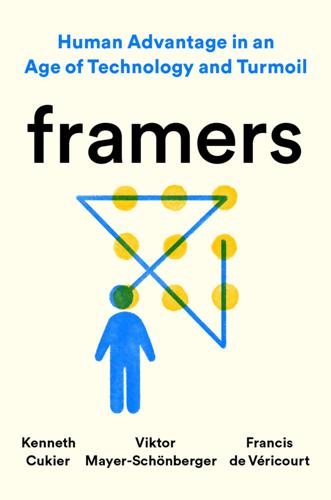
Framers: Human Advantage in an Age of Technology and Turmoil
by
Kenneth Cukier
,
Viktor Mayer-Schönberger
and
Francis de Véricourt
Published 10 May 2021
,” BBC News, October 2017, https://www.bbc.com/news/41365364. More rigorous analyses have found a positive correlation (but not a causal link) between firm performances and female representation in top management in some instances. Cf. Corinne Post and Kris Byron, “Women on Boards and Firm Financial Performance: A Meta-Analysis,” Academy of Management Journal 58, no. 2, November 7, 2014, https://journals.aom.org/doi/abs/10.5465/amj.2013.0319. Diversity ending up with uniformity: An illustration is Greg Lukianoff and Jonathan Haidt’s argument that American universities’ approach to diversity has undermined the free exchange of ideas.
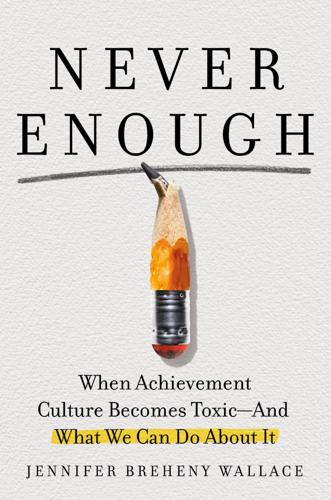
Never Enough: When Achievement Culture Becomes Toxic-And What We Can Do About It
by
Jennifer Breheny Wallace
Published 21 Aug 2023
CHAPTER 3: THE POWER OF MATTERING teens have always wondered: Jennifer Breheny Wallace, “The Teenage Social-Media Trap,” Wall Street Journal, May 4, 2018, https://www.wsj.com/articles/the-teenage-social-media-trap-1525444767. GO TO NOTE REFERENCE IN TEXT a striking 33 percent increase: Thomas Curran and Andrew P. Hill, “Perfectionism Is Increasing Over Time: A Meta-Analysis of Birth Cohort Differences From 1989 to 2016,” Psychological Bulletin 145, no. 4 (2019): 410–29, https://doi.org/10.1037/bul0000138. GO TO NOTE REFERENCE IN TEXT parents’ love and affection: Konrad Piotrowski, Agnieszka Bojanowska, Aleksandra Nowicka, and Bartosz Janasek, “Perfectionism and Community-Identity Integration: The Mediating Role of Shame, Guilt and Self-Esteem,” Current Psychology (2021), https://doi.org/10.1007/s12144-021-01499-9.
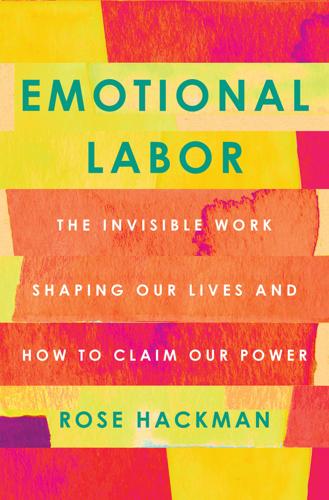
Emotional Labor: The Invisible Work Shaping Our Lives and How to Claim Our Power
by
Rose Hackman
Published 27 Mar 2023
Trends in Income and Wealth Inequality, Pew Research Center, January 9, 2020, https://www.pewresearch.org/social-trends/2020/01/09/trends-in-income-and-wealth-inequality/. 19. Tomas Chamorro-Premuzic, Why Do So Many Incompetent Men Become Leaders? (and How to Fix It) (Boston: Harvard Business Review Press, 2019). 20. Dimitri van der Linden et al., “Overlap Between the General Factor of Personality and Emotional Intelligence: A Meta-Analysis,” Psychological Bulletin 143, no. 1 (2017): 36–52, https://doi.org/10.1037/bul0000078. 21. Peter K. Jonason and Jeremy Tost, “I Just Cannot Control Myself: The Dark Triad and Self-Control,” Personality and Individual Differences 49, no. 6 (October 2010): 611–15, accessed May 12, 2021, https://www.sciencedirect.com/science/article/abs/pii/S0191886910002783. 22.
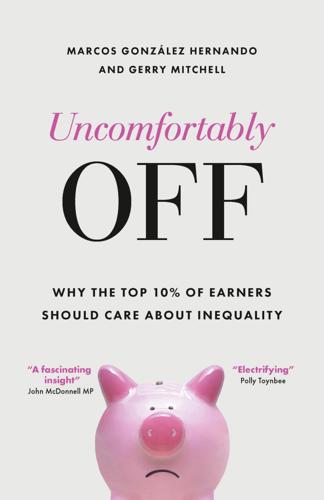
Uncomfortably Off: Why the Top 10% of Earners Should Care About Inequality
by
Marcos González Hernando
and
Gerry Mitchell
Published 23 May 2023
Paris: OECD Publishing. 207 Uncomfortably Off Clery, E., Curtice, J., Frankenburg, S., Morgan, H. and Reid, S. (eds) (2021) British Social Attitudes: The 38th report. London: NatCen Social Research. Coenen, P., Huysmans, M.A. and Holtermann, A. (2018) Do highly physically active workers die early? A systematic review with meta-analysis of data from 193 696 participants. British Journal of Sports Medicine 2018; 52:1320–6. https://bjsm.bmj. com/content/52/20/1320 Coglianese, C. (2020) Solving climate risk requires normative change. Blog. UPenn Risk Management and Decision Processes Center. https://riskcenter.wharton.upenn.edu/climate-risksolutions-2/solving-climate-change-requires-normativechange-2 Committee on Climate Change (2019) UK housing: Fit for the future?
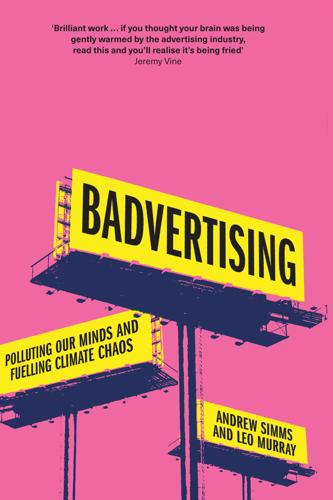
Badvertising
by
Andrew Simms
Twenge, Jean and Tim Kasser (2013) Generational changes in materialism and work centrality, 1976–2007: associations with temporal changes in societal insecurity and materialistic role modelling. Psychology Bulletin, 39(7), 883–97. https://doi.org/10.1177/0146167213484586. Capella, M.L., C.R. Taylor and C. Webster (2008) The effect of cigarette advertising bans on consumption: a meta-analysis. Journal of Advertising, 37(2), 10. See also: www.who.int/tobacco/control/measures_art_13/en/ and www.who.int/tobacco/mpower/en/ 4. Twenge and Kasser, Generational changes in materialism and work centrality. 5. Opree, S.J., M. Buijzen, E.A. van Reijmersdal and P.M. Valkenburg (2014) Children’s advertising exposure, advertised product desire, and materialism: a longitudinal study.
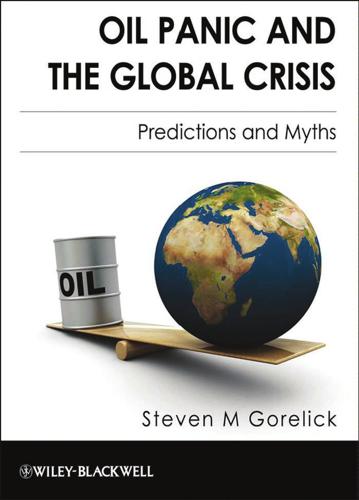
Oil Panic and the Global Crisis: Predictions and Myths
by
Steven M. Gorelick
Published 9 Dec 2009
B. (2003). “Price elasticity of demand for crude oil: estimates for 23 countries,” OPEC Review, 27: 1–8. US Federal Trade Commission (2005). “Gasoline price changes: The dynamics of supply, demand, and competition,” page 135, citing Epsey, M. (1998). “Gasoline Demand Revisited: An International Meta-Analysis of Elasticities,” Energy Economics, 20: 273–95, for long-term elasticity value and their own analysis for the short-term value. Cooper, J. C. B. (2003). Price elasticity of demand for crude oil: estimates for 23 countries, OPEC Review, 27: 1–8. www.energy.ca.gov/gasoline/gasoline_q-and-a.html Ye, M., J.

Fluent Forever: How to Learn Any Language Fast and Never Forget It
by
Gabriel Wyner
Published 4 Aug 2014
The first provides a nice overview of the research in general, and the second delves a bit deeper into the mnemonic advantages of Personal Connection (also known as the Self-Reference Effect): Robert S. Lockhart and Fergus I. M. Craik, “Levels of Processing: A Retrospective Commentary on a Framework for Memory Research,” Canadian Journal of Psychology 44, no. 1 (1990): 87–112; Cynthia S. Symons and Blair T. Johnson, “The Self-Reference Effect in Memory: A Meta-Analysis,” CHIP Documents (1997): Paper 9. 2 This effect even applies to totally unrelated images: Note that a related image works better, so if you need to learn the word apple, you might as well grab a picture of an apple. Also note that if the image is the opposite of what you’re learning (if you’re learning hot with a picture of an ice cube), you’re going to have a harder time remembering that combination.
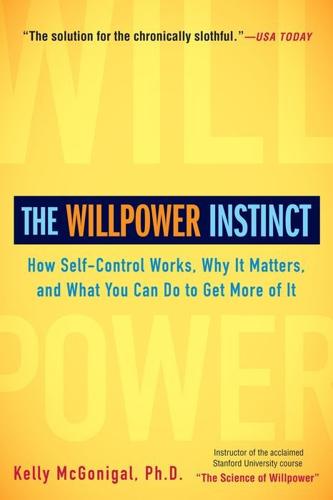
The Willpower Instinct: How Self-Control Works, Why It Matters, and What You Can Doto Get More of It
by
Kelly McGonigal
Published 1 Dec 2011
“Giving In to Feel Good: The Place of Emotion Regulation in the Context of General Self-Control.” Psychological Inquiry: An International Journal for the Advancement of Psychological Theory 11 (2000): 149–59. Page 139—Terror management theory: Burke, B. L., A. Martens, and E. H. Faucher. “Two Decades of Terror Management Theory: A Meta-Analysis of Mortality Salience Research.” Personality and Social Psychology Review 14 (2010): 155–95. Page 140—Death and comfort eating: Mandel, N., and D. Smeesters. “The Sweet Escape: Effects of Mortality Salience on Consumption Quantities for High- and Low-Self-Esteem Consumers.” Journal of Consumer Research 35 (2008): 309–23.
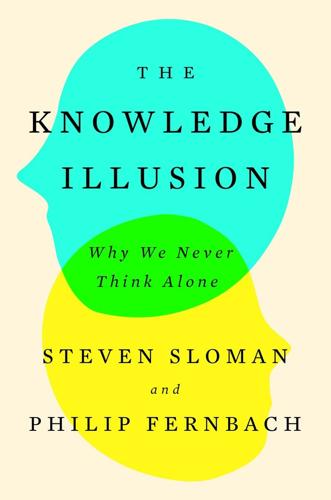
The Knowledge Illusion
by
Steven Sloman
Published 10 Feb 2017
Polarization from discussion: An early paper showing this effect is D. Pruitt (1971). “Choice Shifts in Group Discussion: An Introductory Review.” Journal of Personality and Social Psychology 20(3): 339–360. A review of the literature can be found in D. J. Isenberg (1986). “Group Polarization: A Critical Review and Meta-Analysis.” Journal of Personality and Social Psychology 50(6): 1141–1151. illusion of explanatory depth with political issues: P. M. Fernbach, T. Rogers, C. Fox, and S. A. Sloman (2013). “Political Extremism Is Supported by an Illusion of Understanding.” Psychological Science 24(6): 939–946. Thinking increases extremism: A.
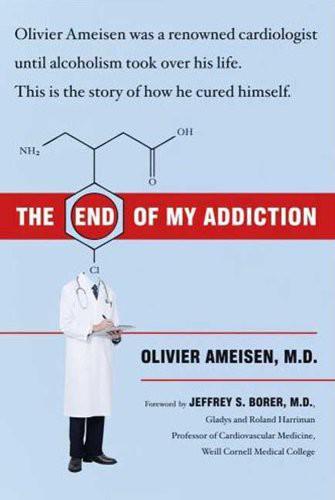
The End of My Addiction
by
Olivier Ameisen
Published 23 Dec 2008
A double-blind trial of baclofen against placebo in the treatment of schizophrenia. Acta Psychiatr Scand. 1976; 54:287–293. 9. Bigelow LB, Nasrallah H, Carman J, et al. Baclofen treatment in chronic schizophrenia: a clinical trial. Am J Psychiatry. 1977; 134:318–320. 10. Soares KV, McGrath JJ. The treatment of tardive dyskinesia—a systematic review and meta-analysis. Schizophr Res. 1999; 39:1–16. 11. Glazer WM, Moore DC, Bowers MB. The treatment of tardive dyskinesia with baclofen. Psychopharmacology (Berlin). 1985; 87:480–483. 12. Itil TM, Herkert E, Schneider SJ, et al. Baclofen in the treatment of tardive dyskinesia: open label study. Acta Ther. 1980; 6:315–323. 13.
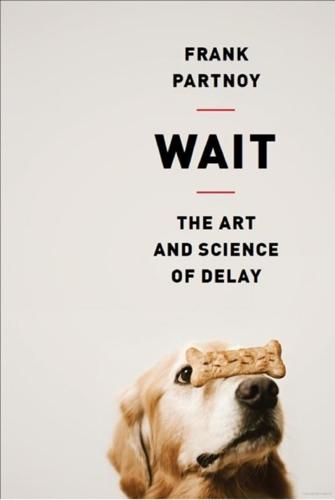
Wait: The Art and Science of Delay
by
Frank Partnoy
Published 15 Jan 2012
Green et al., “Implicit Bias Among Physicians,” p. 7. 4. Dana R. Carney and Greg Willard, “Racial Prejudice Is Contagious,” working paper, available at: http://www.columbia.edu/~dc2534/Contagion.pdf. 5. Nalini Ambady and Robert Rosenthal, “Thin Slices of Expressive Behavior as Predictors of Interpersonal Consequences: A Meta-Analysis,” Psychological Bulletin 111(1992): 256–274. 6. Nalini Ambady and Robert Rosenthal, “Predicting Teacher Evaluations from Thin Slices of Nonverbal Behavior and Physical Attractiveness,” Journal of Personality and Social Psychology 64(3, 1993): 431–441. 7. Gordon W. Allport, Personality: A Psychological Interpretation (Holt, 1937). 8.

Animal: The Autobiography of a Female Body
by
Sara Pascoe
Published 18 Apr 2016
We continue a culture where women who don’t depend on men wanting sex with them for income behave as if they do. Want to know a disturbing statistic? You know I said that all women who have boob jobs are unwittingly part of an ongoing study; well, lots of studies are conducted using their data – health complications afterwards, further cosmetic procedures, etc. And a meta-analysis of all these studies found that women who’ve had breast enlargements are two to three times more likely to commit suicide than women who haven’t. We need to think about that. About why this is happening, about the vulnerabilities of the women who choose cosmetic surgery and the normalisation of such choices.
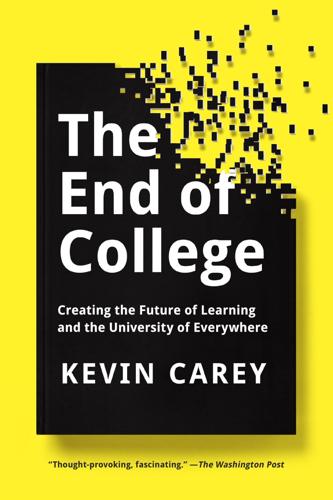
The End of College: Creating the Future of Learning and the University of Everywhere
by
Kevin Carey
Published 3 Mar 2015
Meyer, e-Learning and the Science of Instruction, San Francisco: Pfeiffer, 2008, p. 12. The U.S. Department of Education has examined scores of online learning studies: Barbara Means, Yukie Toyama, Robert Murphy, Marianne Bakia, Karla Jones, and the Center for Technology in Learning, Evaluation of Evidence-Based Practices in Online Learning: A Meta-Analysis and Review of Online Learning Studies, U.S. Department of Education, Office of Planning, Evaluation, and Policy Development, Policy and Program Studies Service, revised 2010, http://www2.ed.gov/rschstat/eval/tech/evidence-based-practices/finalreport.pdf. Suppes showed up on the first day of class: Michael Allen, “Addressing Diversity in (e-)Learning,” in Michael Allen’s e-Learning Annual, 2008, San Francisco: Pfeiffer, 2008.

No Such Thing as a Free Gift: The Gates Foundation and the Price of Philanthropy
by
Linsey McGoey
Published 14 Apr 2015
At the lower end of the spectrum, where consumers have little purchasing power, flexibility ebbs and choices grow scarcer. Studies to date indicate that most charters perform either no better, or worse, than traditional public schools. Approximately four out of five – or over 80 per cent – of charter schools achieve no better test results than traditional public schools, and some are considerably worse. A meta-analysis (a study that pools existent data in order to compare multiple studies) conducted at the Center on Reinventing Public Education in Seattle found that charters were better at teaching reading and mathematics at the primary level, while high school charters fared worse in maths and reading outcomes than traditional schools.
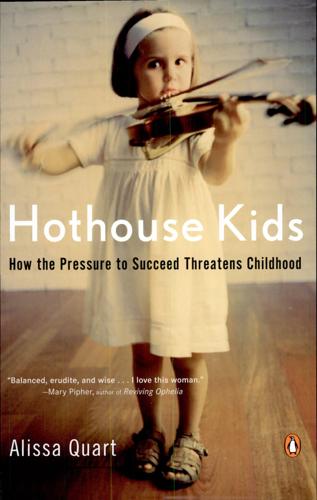
Hothouse Kids: The Dilemma of the Gifted Child
by
Alissa Quart
Published 16 Aug 2006
And because it costs little, it is far less explosive politically than, say, demanding ample federal funds for gifted education. But does it damage children to remove them from their peer group? The answer is not entirely clear. Advocates of acceleration point not only to Colangelo’s book but also to a 1992 meta-analysis by University of Michigan researchers, who crunched twenty-six studies conducted internationally of accelerated students, and found that such students not only do better academically than their peers but also have nearly the same social abilities as those peers. But another study conducted with data gathered from children who attended the Center for Talented Youth at Johns Hopkins confirmed the ambiguities of acceleration: it found that while 95 percent of the 175 youths in the study regarded their acceleration positively, 50 percent reported some negative effects.
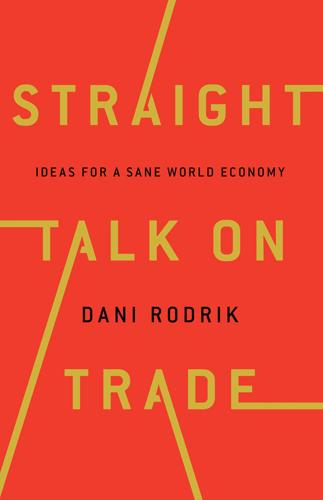
Straight Talk on Trade: Ideas for a Sane World Economy
by
Dani Rodrik
Published 8 Oct 2017
The typical distance elasticity is around –1.0, meaning that trade falls by 10 percent for every 10 percent increase in distance. This is a fairly large effect. Presumably, what lies behind it is not just transportation and communication costs but the lack of familiarity and cultural differences. (Linguistic differences are often controlled for separately.) Disdier and Head undertook a meta-analysis, collecting 1,467 distance effects from 103 papers covering trade flows at different points in time, and stumbled on a surprising result: distance matters more now than it did in the late nineteenth century. The distance effect seems to have increased from the 1960s, remaining persistently high since then (see Figure 2.4).

Duped: Double Lives, False Identities, and the Con Man I Almost Married
by
Abby Ellin
Published 15 Jan 2019
Our talent for detecting deception, with anyone—friend, foe, lover, family member, or stranger—is no better than a roll of the dice. In fact, the closer you are to someone, the more likely you are to believe them, because your blinders are in place and securely fastened. What’s more, there’s no slowly growing protuberance that screams “LIAR!” Pinocchio isn’t real. In a meta-analysis of over two hundred studies, psychologist Charles F. Bond and lying researcher Bella DePaulo concluded that people could only finger a liar 47 percent of the time.16 Experienced job interviewers didn’t fare any better (52 percent) when trying to distinguish between candidates who lied about their career histories and those who didn’t.17 “So much of lie detection is based on the verbal as well as the non-verbals that one would have to have expertise in psychology, anthropology, sociology, criminology, jurisprudence, sociobiology, neurobiology, psychiatry, anatomy, physiology, communications, zoology, ethnography, primatology, linguistics, language, and grammar, to name a few, to truly understand the depth of what is behind deception and how to detect it,” wrote former FBI agent Joe Navarro.18 People are more honest online than they are in person, which surprised me.
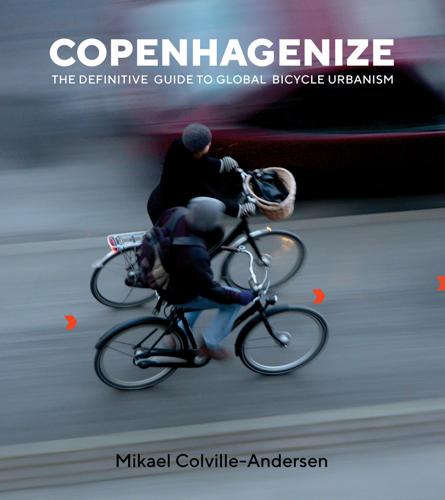
Copenhagenize: The Definitive Guide to Global Bicycle Urbanism
by
Mikael Colville-Andersen
Published 28 Mar 2018
Traces of car-centric planning are everywhere, like scars on our cities’ skin. Individuals, organizations, and policymakers in every country subconsciously do the bidding of Big Auto, even though they may feel their intentions are good. Traffic safety organizations abound. Local, national, international. My company did a meta-analysis of the communication techniques used by a selection of them. From the Danish Road Safety Council to FIA—the international automobile association. It was easy to find their common denominators. Their techniques are firmly rooted in the Culture of Fear, so aptly described in the book of the same name by British sociologist Frank Furedi.

Sex Power Money
by
Sara Pascoe
Published 26 Aug 2019
They found that men had a more pronounced reaction to the sexual scenario, women to the emotional scenario. I imagine it wasn’t a pleasant morning for anyone, covered in electrodes, picturing their partner cheating. These studies inspired a genre and since 1992 over a hundred experiments have investigated sex differences in jealousy. Meta-analysis has proved the ‘men more bothered by sexual infidelity’ hypothesis to be robust. But it’s important to remember that this doesn’t dictate anything about you and me, as individuals. Women and men do not fall into separate, distinct categories. Our sex alone does not dictate how and why we get jealous.

Daughter Detox: Recovering From an Unloving Mother and Reclaiming Your Life
by
Peg Streep
Published 14 May 2017
Lench, Heather C., and Linda J. Levin. Goals and Responses to Failure: Knowing When to Hold Them and When to Fold Them. Motivation and Emotion , 2008, vol. 32(2), pp. 127-140. Mesman, Judi, Marinus H. van IJzendoorn, and Marian J. Bakermans-Kranenburg. The Many Faces of the Still-Face Paradigm: A Review and Meta-Analysis. Developmental Review , 2009, vol. 29(2), pp. 120-162. Nishitani, S., et al. The Calming Effect of a Maternal Breast Milk Odor on the Human Newborn Infant. Neuroscience Research , 2009, vol. 63(1), pp. 66-71. Ochsner, Kevin N., and James J. Gross. The Cognitive Control of Emotion. Trends in Cognitive Science , 2005, vol. 9(5), pp. 242-249.
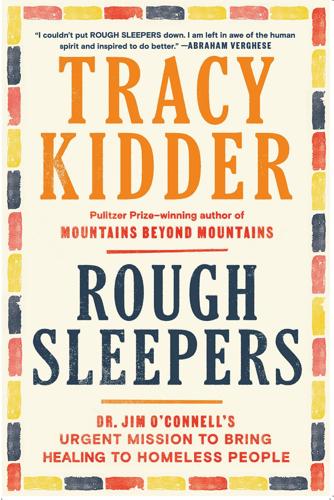
Rough Sleepers: Dr. Jim O'Connell's Urgent Mission to Bring Healing to Homeless People
by
Tracy Kidder
Published 17 Jan 2023
On costs of ACT teams generally: “Assertive Community Treatment.” Harvard Mental Health Letter 23, no. 5 (2006): 4–5. On the nature of ACT teams: Menzies Munthe-Kaas, H., R. C. Berg, and N. Blaasvaer. “Effectiveness of Interventions to Reduce Homelessness: A Systematic Review and Meta-Analysis.” Campbell Systematic Reviews 14 (February 28, 2018): 1–281. Jill Roncarati’s study: Roncarati, J. S., H. Tiemeier, R. Tachick, T. J. VandeerWeele, and J. J. O’Connell. “Housing Boston’s Chronically Homeless Unsheltered Population: 14 Years Later.” Medical Care 59, no. 4, suppl. 2. (April 2021). pubmed.ncbi.nlm.nih.gov/33710091/.
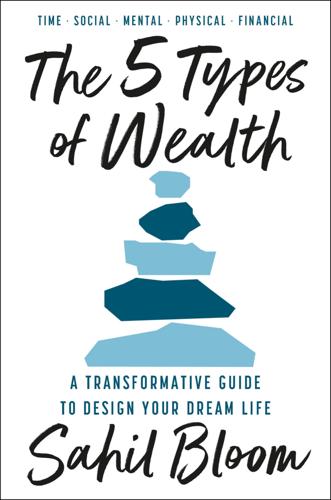
The 5 Types of Wealth: A Transformative Guide to Design Your Dream Life
by
Sahil Bloom
Published 4 Feb 2025
Veazie, “US Trends in Social Isolation, Social Engagement, and Companionship—Nationally and by Age, Sex, Race/Ethnicity, Family Income, and Work Hours, 2003–2020,” SSM Population Health 21 (March 2023): 101331, https://doi.org/10.1016/j.ssmph.2022.101331. BACK TO NOTE REFERENCE 4 Susanne Buecker et al., “Is Loneliness in Emerging Adults Increasing over Time? A Preregistered Cross-Temporal Meta-Analysis and Systematic Review,” Psychological Bulletin 147, no. 8 (August 2021): 787–805, https://doi.org/10.1037/bul0000332. BACK TO NOTE REFERENCE 5 Kannan and Veazie, “US Trends in Social Isolation.” BACK TO NOTE REFERENCE 6 Daniel A. Cox, “Men’s Social Circles Are Shrinking,” Survey Center on American Life, June 29, 2021, https://www.americansurveycenter.org/why-mens-social-circles-are-shrinking/.
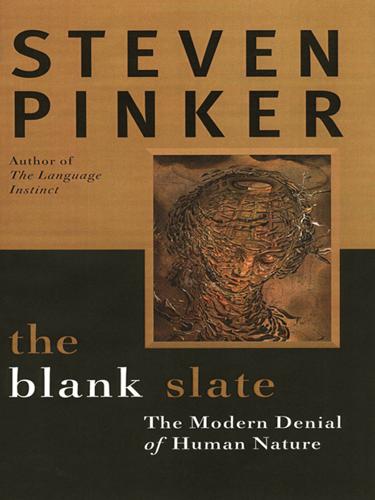
The Blank Slate: The Modern Denial of Human Nature
by
Steven Pinker
Published 1 Jan 2002
Laterborns, in contrast, should be more conciliatory and open to new ideas and experiences. Though family therapists and laypeople have had these impressions for a long time, Sulloway tried to explain them in terms of Trivers’s theory of parent-offspring conflict and its corollary, sibling rivalry. He found some support for these ideas in a meta-analysis (a quantitative literature review) of studies of birth order and personality.47 Sulloway’s theory, however, also requires that children use the same strategies outside the home—with their peers and colleagues—as the ones that served them well inside the home. That does not follow from Trivers’s theory; indeed, it contradicts the larger theory from evolutionary psychology that relationships with blood relatives should be very different from relationships with nonrelatives.
…
Emergenesis: Genetic traits that may not run in families. American Psychologist, 47, 1565–1577. Lytton, H. 1990. Child effects—Still unwelcome? Response to Dogge and Wahler. Developmental Psychology, 26, 705–709. Lytton, H., & Romney, D. M. 1991. Parents’ differential socialization of boys and girls: A meta-analysis. Psychological Bulletin, 109, 267–296. Maccoby, E. E., & Jacklin, C. N. 1987. The psychology of sex differences. Stanford, Calif.: Stanford University Press. Maccoby, E. E., & Martin, J. A. 1983. Socialization in the context of the family: Parent-child interaction. In P. H. Mussen & E. M. Hetherington (Eds.), Handbook of child psychology: Socialization, personality, and social development (4 ed., Vol. 4).

Fooled by Randomness: The Hidden Role of Chance in Life and in the Markets
by
Nassim Nicholas Taleb
Published 1 Jan 2001
Value of the seat: Even then, by some attribution bias, traders tend to believe that their income is due to their skills, not the “seat,” or the “franchise” (i.e., the value of the order flow).The seat has a value as the New York Stock Exchange specialist “book” is worth quite large sums: See Hilton (2003). See also Taleb (1997) for a discussion of the time and place advantage. Data mining: Sullivan, Timmermann and White (1999). Dogs not barking: I thank my correspondent Francesco Corielli from Bocconi for his remark on meta-analysis. CHAPTER 10 Networks: Arthur (1994). See Barabasi (2002), Watts (2003). Nonlinear dynamics: For an introduction to nonlinear dynamics in finance, see Brock and De Lima (1995), and Brock, Hsieh and LeBaron (1991). See also the recent, and certainly the most complete, Sornette (2003). Sornette goes beyond just characterizing the process as fat-tailed and saying that the probability distribution is different from the one we learned in Finance 101.
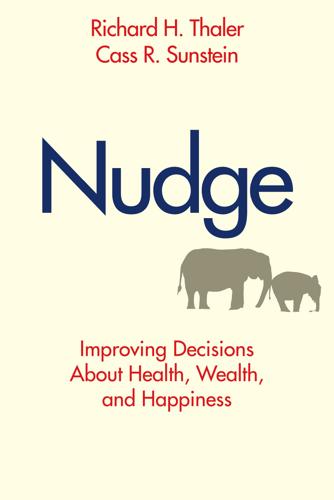
Nudge: Improving Decisions About Health, Wealth, and Happiness
by
Richard H. Thaler
and
Cass R. Sunstein
Published 7 Apr 2008
Research in progress (b). Bikhchandani, Sushil, David Hirshleifer, and Ivo Welch. “Learning from the Behavior of Others.” Journal of Economic Perspectives 12, no. 3 (1998): 151–70. Boaz, David. Libertarianism: A Primer. New York: Free Press, 1997. Bond, Rod, and Peter Smith. “Culture and Conformity: A Meta-Analysis of Studies Using Asch’s Line Judgment Task.” Psychological Bulletin 119 (1996): 111–37. Boston Research Group. “Enron Has Little Effect on 401(k) Participants’ View of Company Stock.” 2002. Breman, Anna. “Give More Tomorrow: A Field Experiment on Intertemporal Choice in Charitable Giving.”
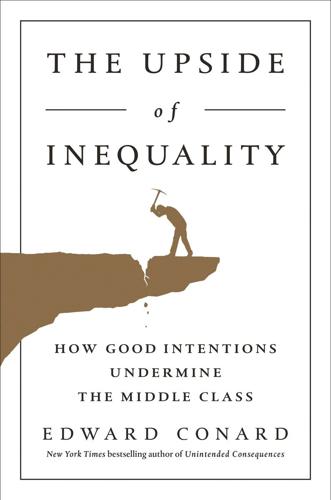
The Upside of Inequality
by
Edward Conard
Published 1 Sep 2016
Lawrence Summers, “The Future of Work in the Age of the Machine: A Hamilton Project Policy Forum,” National Press Club, February 19, 2015, http://www.hamilton project.org/events/the_future_of_work_in_the_age_of_the_machine. 44. Schulzke, “Bill Gates Says Education Reform Is Tougher Than Eradicating Polio, Malaria or Tuberculosis.” 45. Tinca J. C. Polderman, Beben Benyamin, Christiaan A. de Leeuw, Patrick Sullivan, et al., “Meta-Analysis of the Heritability of Human Traits Based on Fifty Years of Twin Studies,” Nature Genetics 47 (2015): 702–9, http://www.nature.com/ng/journal/v47/n7/full/ng.3285.html. Kaili Rimfeld, Yulia Kovas, Philip S. Dale, and Robert Plomin, “Pleiotropy Across Academic Subjects at the End of Compulsory Education,” Scientific Reports, 2015, http://www.nature.com/articles/srep11713. 46.

Heart of the Machine: Our Future in a World of Artificial Emotional Intelligence
by
Richard Yonck
Published 7 Mar 2017
The advantage deception potentially affords those who successfully engage in it contributes to the belief that such behavior is worth the risk. In some cases this may actually be true. The means and methods of deception vary widely but are all linked by one thing: the intention to undermine the balance of relational power to the perpetrator’s advantage. A large-scale meta-analysis of research results from 206 documents and 24,483 judges’ records revealed that all of us, even police and judges, fare little better than chance when assessing whether or not someone is lying. On average people made correct truth-lie judgments only 54 percent of the time.7 Interestingly, while most people operate with a truth bias, law enforcement officials skew in the other direction, operating with a slight lie bias.
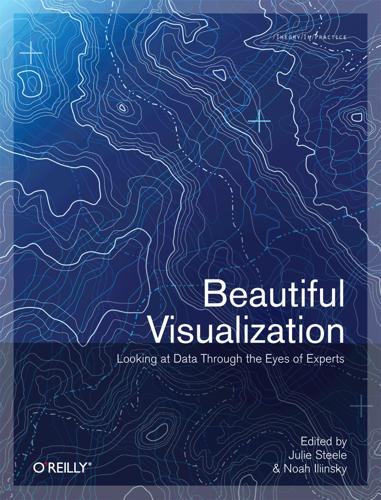
Beautiful Visualization
by
Julie Steele
Published 20 Apr 2010
Deep South: An Anthropological Study of Caste and Class. Chicago: University of Chicago Press. Freeman, Linton C. 1979. “Centrality in social networks: I. Conceptual clarification.” Social Networks 1: 215–239. http://moreno.ss.uci.edu/27.png. Freeman, Linton C. 2003. “Finding social groups: A meta-analysis of the southern women data.” In Dynamic Social Network Modeling and Analysis, eds. Ronald Breiger, Kathleen Carley, and Philippa Pattison. Washington, DC: The National Academies Press. http://moreno.ss.uci.edu/85.png. Freeman, Linton C. 2004. The Development of Social Network Analysis: A Study in the Sociology of Science.

The Education of Millionaires: It's Not What You Think and It's Not Too Late
by
Michael Ellsberg
Published 15 Jan 2011
But there’s a generation of kids coming, who have grown up with Wikipedia, who have grown up with a notion that they’re not just a consumer of media, but a participant. They therefore have a deeper and more ingrained skepticism of the media, and therefore have a better capability to distinguish truth from fiction, authority from charlatan. This capability for meta-analysis of information is essential as they wade through the vast sea of information. For the first time in history they have all the world’s information at their disposal, accessible from anywhere they want. The result is that this emerging generation no longer has reality dictated to them—they are finally empowered to construct their own unique, and possibly idiosyncratic, perspective on the world, if they so choose.

The God Species: Saving the Planet in the Age of Humans
by
Mark Lynas
Published 3 Oct 2011
Wang et al., 2008: “Endocrine Disruptors, Genital Development, and Hypospadias,” Journal of Andrology, 29, 499–505. 18. H. Fisch et al., 2010: “Rising Hypospadias Rates: Disproving a Myth,” Journal of Pediatric Urology, 6, 1, 37–9. 19. M. López-Cervantes et al., 2004: “Dichlorodiphenyldichloroethane Burden and Breast Cancer Risk: A Meta-analysis of the Epidemiologic Evidence,” Environmental Health Perspectives, 112, 2, 207–14. 20. M. Gammon et al., 2002: “Environmental Toxins and Breast Cancer on Long Island. II. Organochlorine Compound Levels in Blood,” Cancer Epidemiology Biomarkers and Prevention, 11, 8, 686–97. 21. S. Safe, 2004: “Endocrine Disruptors and Human Health: Is There a Problem,” Toxicology, 205, 1–2, 3–10. 22.
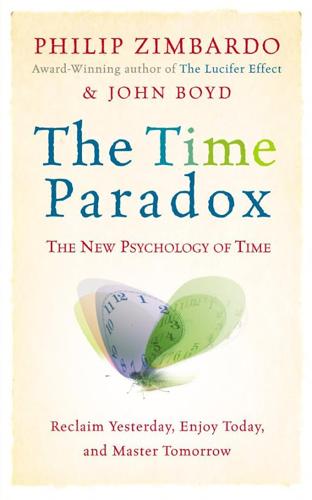
Time Paradox
by
Philip G. Zimbardo
and
John Boyd
Published 1 Jan 2008
Kaltman, “Toward an Integrative Perspective on Bereavement,” Psychological Bulletin 125: 760–76 (1999); and G. A. Bonnano et al., “Resilience to Loss and Chronic Grief: A Prospective Study from Preloss to 18-Months Postloss,” Journal of Personality and Social Psychology 83: 1150–64 (2002). 3. E. J. Ozer et al., “Predictors of Posttraumatic Stress Disorder and Symptoms in Adults: A Meta-analysis,” Psychological Bulletin 129: 52–73 (2003). 4. G. A. Bonanno, C. Rennicke, and S. Dekel, “Self-Enhancement Among High-Exposure Survivors of the September 11th Terrorist Attack: Resilience or Social Maladjustment?” Journal of Personality and Social Psychology 88: 984–98 (2005). 5. R. G. Tedeschi and L.
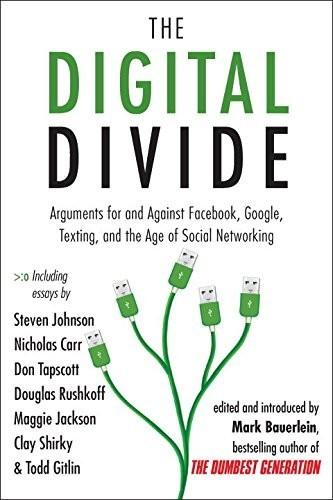
The Digital Divide: Arguments for and Against Facebook, Google, Texting, and the Age of Social Netwo Rking
by
Mark Bauerlein
Published 7 Sep 2011
The trick, though, is to make the learning games compelling enough to actually be used in their place. They must be real games, not just drills with eye candy, combined creatively with real content. The numbers back this up. The Lightspan Partnership, which created PlayStation games for curricular reinforcement, conducted studies in over 400 individual school districts and a “meta-analysis” as well. Their findings were increases in vocabulary and language arts of 24 and 25 percent respectively over the control groups, while the math problem solving and math procedures and algorithms scores were 51 and 30 percent higher.29 Click Health, which makes games to help kids self-manage their health issues, did clinical trials funded by the National Institutes of Health.
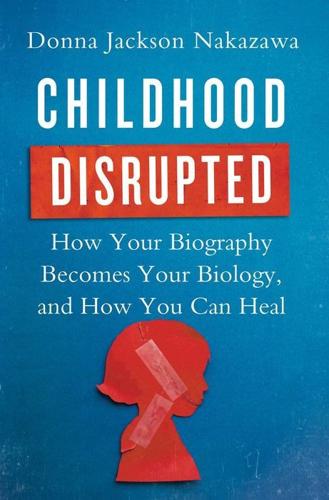
Childhood Disrupted: How Your Biography Becomes Your Biology, and How You Can Heal
by
Donna Jackson Nakazawa
Published 6 Jul 2015
But if there is a mutation in that gene, which causes another allele to be expressed, a red blood cell might be shaped, instead, in the form of a sickle—causing sickle-cell anemia. People with this Sensitivity Gene variant who experience: K. Karg, M. Burmeister, S. Sen, et al., “The Serotonin Transporter Promoter Variant (5-HTTLPR), Stress, and Depression Meta-Analysis Revisited: Evidence of Genetic Moderation,” Archives of General Psychiatry 68, no. 5 (May 2011), 444–54. In the study, Srijan Sen, MD, PhD, assistant professor of psychiatry at the University of Michigan Medical School, and his colleagues examined fifty-four studies done between 2001 and 2010 looking at 41,000 individuals—the largest analysis ever done of the relationship between individuals’ serotonin genetic makeup and how well they were able to bounce back from adversity.
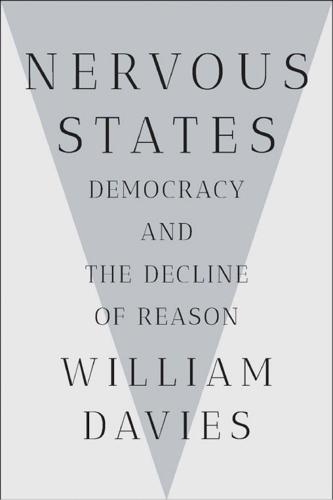
Nervous States: Democracy and the Decline of Reason
by
William Davies
Published 26 Feb 2019
Gray (2017), “Health and social care spending cuts linked to 120,000 excess deaths in England,” BMJ Open, 15 November 2017. 20Stuckler & Basu (2013), p. 103. 21“More and more women are now dying in childbirth, but only in America,” Vox, 8 August 2016. 22“French election results: Macron’s victory in charts,” Financial Times, 9 May 2017. 23A. Fayaz et al. (2016), “Prevalence of chronic pain in the UK: A systematic review and meta-analysis of population studies,” BMJ Open, Vol. 6, Issue 6. 24E. Scarry (1985), The Body in Pain: The Making and Unmaking of the World, Oxford University Press, p. 29. 25Ibid., p. 13. 26See K. Wailoo (2014), Pain: A Political History, JHU Press. 27M. Bair et al. (2003), “Depression and pain comorbidity: A literature review,” Archives of Internal Medicine, Vol. 163, Issue 20. 28D.
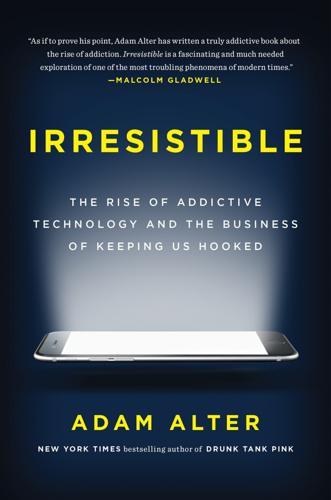
Irresistible: The Rise of Addictive Technology and the Business of Keeping Us Hooked
by
Adam L. Alter
Published 15 Feb 2017
Monti, “Motivational Enhancement and Other Brief Interventions for Adolescent Substance Abuse: Foundations, Applications and Evaluations,” Addiction 99 (December 2004): 63–75; C. Dunn, L. Deroo, and F. P. Rivara, “The Use of Brief Interventions Adapted from Motivational Interviewing Across Behavioral Domains: A Systematic Review,” Addiction 96, no. 12 (December 2001): 1725–42; Craig S. Schwalbe, Hans Y. Oh, and Allen Zweben, “Sustaining Motivational Interviewing: A Meta-Analysis of Training Studies,” Addiction 109, 1287–94; Kate Hall and others, “After 30 Years of Dissemination, Have We Achieved Sustained Practice Change in Motivational Interviewing?,” Addiction (in press; a sample script is available here: careacttarget.org/sites/default/files/file-upload/resources/module5-handout1.pdf).
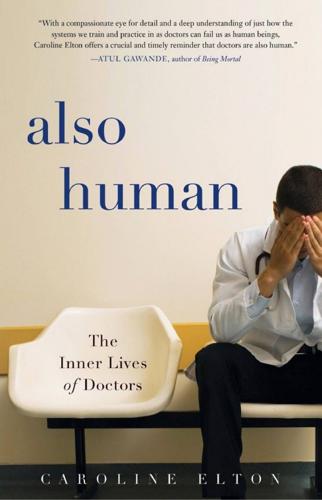
Also Human: The Inner Lives of Doctors
by
Caroline Elton
Published 1 Mar 2018
Afro-Caribbean backgrounds: McManus, I., “Medical School Applicants from Ethnic Minority Groups: Identifying If and When They Are Disadvantaged,” BMJ 310:6978 (1995), pp. 496–500. comprehensive study on ethnic differentials: Woolf, K., et al., “Ethnicity and Academic Performance in UK Trained Doctors and Medical Students: Systematic Review and Meta-Analysis,” BMJ 342 (2011), 10.1136/bmj.d901. an accompanying editorial to the article, Aneez Esmail: Esmail, A., “Ethnicity and Academic Performance in the UK,” BMJ 342 (2011), 10.1136/bmj.d709. Sir Richard Doll in the 1950s: Doll, R., and Hill, A., “The Mortality of Doctors in Relation to Their Smoking Habits,” BMJ 1 (1954), pp. 1451–1455.
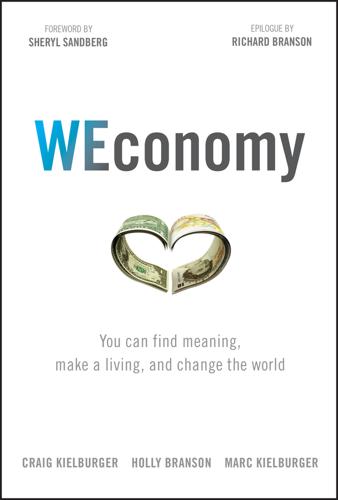
WEconomy: You Can Find Meaning, Make a Living, and Change the World
by
Craig Kielburger
,
Holly Branson
,
Marc Kielburger
,
Sir Richard Branson
and
Sheryl Sandberg
Published 7 Mar 2018
Accessed July 14, 2017. http://sethgodin.typepad.com/seths_blog/2015/10/narcissistic-altruism.html. 4. Edelman, goodpurpose 2012: Executive Summary, p. 2, http://www.scribd.com/doc/90411623/Executive-Summary-2012-Edelman-goodpurpose%C2%AE-Study. 5. Tully, Stephanie M., and Russell S. Winer. “Are People Willing to Pay More for Socially Responsible Products: A Meta-Analysis,” Stern School of Business, New York University, August 2013, p. 17, http://web-docs.stern.nyu.edu/pa/winer_tully.pdf. 6. Ibid., p. 16. 7. Mission Measurement, December 2015. Building the Business Case for Corporate Partnerships. Unpublished internal document. ME TO WE. 8. Edelman, p. 3. 9.
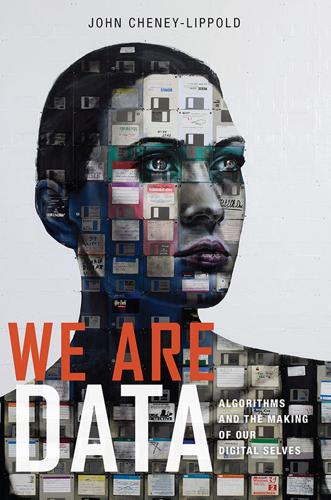
We Are Data: Algorithms and the Making of Our Digital Selves
by
John Cheney-Lippold
Published 1 May 2017
Price, Susan Smith, and John Hollywood, “Predictive Policing: The Role of Crime Forecasting in Law Enforcement Operations,” RAND Corporation, 2013, www.rand.org. 65. Jeremy Gorner, “Chicago Police Use Heat List as Strategy to Prevent Violence,” Chicago Tribune, August 21, 2013, http://articles.chicagotribune.com. 66. Anthony Braga, Andrew Papachristos, and David Hureau, “The Effects of Hot Spots Policing on Crime: An Updated Systematic Review and Meta-analysis,” Justice Quarterly 31, no. 4 (2012): 633–663. 67. Todd R. Clear, Imprisoning Communities: How Mass Incarceration Makes Disadvantaged Neighborhoods Worse (Oxford: Oxford University Press, 2007). 68. Gorner, “Chicago Police Use Heat List.” 69. Max Weber, The Methodology of the Social Sciences (New York: Free Press, 1949), 90. 70.
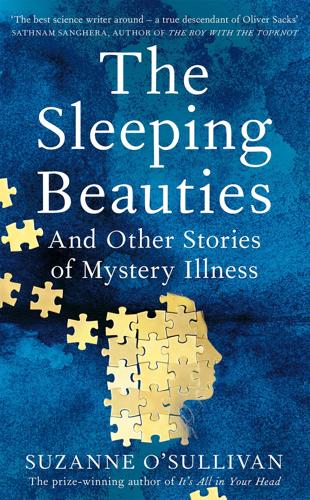
The Sleeping Beauties: And Other Stories of Mystery Illness
by
Suzanne O'Sullivan
Published 31 Mar 2021
A great deal of money is made from the treatment of depression and, for the purpose of insurance companies and doctors’ visits, it helps to have a category into which to fit consultations for low mood. Doctors like to offer a diagnosis and, for patients, it gives meaning to their feelings. However, as Dowrick points out, the utility of the diagnosis is debatable. While antidepressants have been shown to provide benefit to people with severe depression, meta-analysis of clinical trials provide little evidence for their use in mild depression. In trials, their use in mild depression is only as good as a placebo. Dowrick argues, and I agree, that labels make patients passive victims of circumstance. To reconceptualize depression and low mood outside of the frame of these labels doesn’t have to mean that a person cannot turn to a doctor for support.
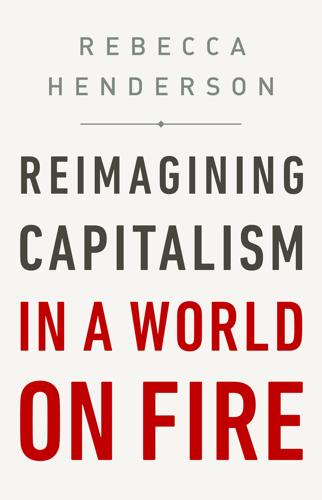
Reimagining Capitalism in a World on Fire
by
Rebecca Henderson
Published 27 Apr 2020
“Global Asset Management 2018: The Digital Metamorphosis,” www.bcg.com; BCG, www.bcg.com/publications/2018/global-asset-management-2018-digital-metamorphosis.aspx. 20. “2018 Global Sustainable Investment Review”; Fages et al., “Global Asset Management 2018.” 21. See, for example, Christophe Revelli and Jean-Laurent Viviani, “Financial Performance of Socially Responsible Investing (SRI): What Have We Learned? A Meta-analysis,” Business Ethics: A European Review 24, no. 2 (April 2015). 22. Mozaffar Khan, George Serafeim, and Aaron Yoon, “Corporate Sustainability: First Evidence on Materiality,” Accounting Review 91, no. 6 (November 2016). 23. “Materiality,” Business Literacy Institute Financial Intelligence, Sept. 23, 2016. 24.
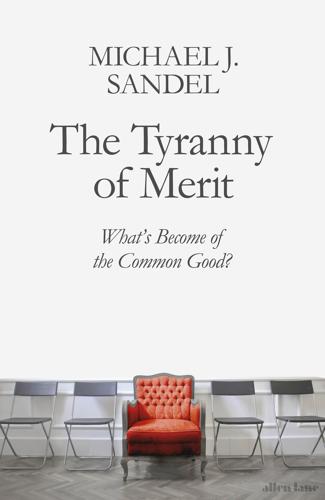
The Tyranny of Merit: What’s Become of the Common Good?
by
Michael J. Sandel
Published 9 Sep 2020
Sally C. Curtin and Melonie Heron, “Death Rates Due to Suicide and Homicide Among Persons Aged 10–24: United States, 2000–2017,” NCHS Data Brief, No. 352, October 2019, cdc.gov/nchs/data/databriefs/db352-h.pdf . 75 . Thomas Curran and Andrew P. Hill, “Perfectionism Is Increasing Over Time: A Meta-Analysis of Birth Cohort Differences from 1989 to 2016,” Psychological Bulletin 145 (2019), pp. 410–29, apa.org/pubs/journals/releases/bul-bul0000138.pdf ; Thomas Curran and Andrew P. Hill, “How Perfectionism Became a Hidden Epidemic Among Young People,” The Conversation , January 3, 2018, theconversation.com/how-perfectionism-became-a-hidden-epidemic-among-young-people-89405 ; Sophie McBain, “The New Cult of Perfectionism,” New Statesman , May 4–10, 2018. 76.
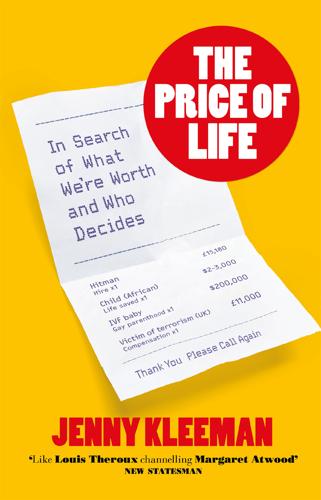
The Price of Life: In Search of What We're Worth and Who Decides
by
Jenny Kleeman
Published 13 Mar 2024
.; and Shapiro M.D., Sander S., ‘Artificial donor insemination: fresh versus frozen semen; the patient as her own control’, Fertility and Sterility, Vol. 41, Issue 2 (February 1984), pp. 277‒280. https://www.sciencedirect.com/science/article/pii/S0015028216476041?via%3Dihub barely studied Robinson, K.; Galloway, K.; Bewley, S.; and Meads, C., ‘Lesbian and bisexual women’s gynaecological conditions: a systematic review and exploratory meta-analysis’, BJOG: An International Journal of Obstetrics and Gynaecology (2017). https://obgyn.onlinelibrary.wiley.com/doi/full/10.1111/1471-0528.14414 the Gaia promotional video Gaia + London Women’s Clinic (12 August 2022). https://www.youtube.com/watch ?v=0iEclgB7hIU across the board Meads, Catherine; Thorogood, Laura-Rose; Lindemann, Katy; and Bewley, Susan, ‘Why Are the Proportions of In-Vitro Fertilisation Interventions for Same Sex Female Couples Increasing?’
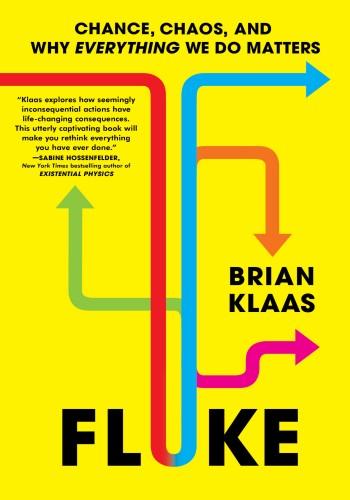
Fluke: Chance, Chaos, and Why Everything We Do Matters
by
Brian Klaas
Published 23 Jan 2024
traditional Bengali story: Rukmini Bhaya Nair, Translation, Text and Theory: The Paradigm of India (Thousand Oaks, CA: Sage Publications, 2008). “hate and live by narrative”: Quoted in F. W. Mayer, Narrative Politics: Stories and Collective Action (Oxford: Oxford University Press, 2014). information is retained: R. A. Mar et al., “Memory and Comprehension of Narrative versus Expository Texts: A Meta-Analysis,” Psychonomic Bulletin & Review 28 (2021): 732–49. “It is addicted to meaning”: Jonathan Gottschall, The Story Paradox: How Our Love of Storytelling Builds Societies and Tears Them Down (New York: Basic Books, 2021). learn to swim before they walk: Carrie Arnold, “Watchers of the Earth,” Aeon, 13 April 2017.
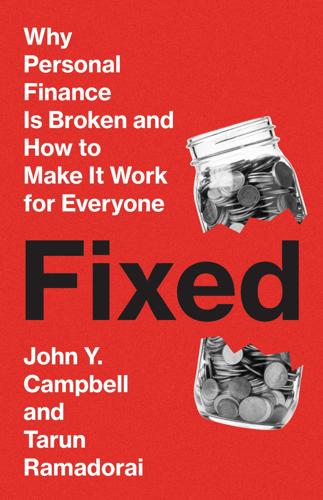
Fixed: Why Personal Finance is Broken and How to Make it Work for Everyone
by
John Y. Campbell
and
Tarun Ramadorai
Published 25 Jul 2025
The United Kingdom began requiring this in 2013, and in 2024 California became the twenty-sixth US state to institute a financial literacy course requirement for high school graduation.8 A large academic literature has sought to measure the effects of financial literacy education. A widely cited 2022 paper summarizes the results by conducting a meta-analysis, combining the findings of many individual studies to achieve greater precision.9 The conclusion is that educational interventions to improve financial literacy have effects on financial knowledge comparable to those of education in other domains, and smaller but still measurable effects on financial decisions.

The Mathematics of Banking and Finance
by
Dennis W. Cox
and
Michael A. A. Cox
Published 30 Apr 2006
Finally there is the option of conducting a literature search, in its broadest sense. The data required might already be available – for example, in the company’s records. Would it be possible to combine the results of a number of independent but related studies using statistical methods to retrieve, select and combine the data – a process referred to as meta-analysis? The case may also occur where a range of independent surveys has already been conducted and their results published. While the results on a survey in the USA may not be directly applicable to the business you are looking at in the United Kingdom, the conclusions are likely to be of interest and the questions employed may also be suitable for your purposes.

Drugs Without the Hot Air
by
David Nutt
Published 30 May 2012
.”• LSD: my problem child, Albert Hofmann, McGraw-Hill Book Company, 1980 4 “I lost all control of time• As above. 5 they recorded that they found themselves taking their schizophrenic patients’ accounts of their illness more seriously• Hofmann’s Potion: The Early Years of LSD, Connie Littlefield, URL-120, 2002 6 The LSD trials at Saskatchewan• As above. 7 outbreak of insanity in the French town of Pont-Saint-Esprit in 1951• A terrible mistake, Hank Albarelli, Trine Day, 2009 8 Leary first tried psilocybin, the active ingredient in magic mushrooms, and he soon began experimenting with LSD as well• Hofmann’s Potion: The Early Years of LSD, Connie Littlefield, URL-120, 2002 9 “hearing voices”• Schizophrenia, National Institute of Mental Health, URL-118. 10 an edition of Spiderman in 1971• The Amazing Spiderman issues #96–98, Stan Lee, Marvel Comics, May–July 1971 11 five other studies that have found LSD helps people overcome alcoholism• Lysergic acid diethylamide (LSD) for alcoholism: a meta-analysis of randomized controlled trials, Teri S. Krebs and Pal-Orjan Johansen, Journal of Psychopharmacology, 2011 12 cluster headaches self-medicate with psychedelics• Will Harvard drop acid again?, Peter Bebergal, URL-121, June 9th 2008 13 use in problem solving• LSD – The Problem Solving Psychedelic, PG Stafford and BH Golightly, Award Books, 1967 14 Francis Crick• Nobel Prize Genius Crick was High on LSD when he discovered the secret of life, Alun Rees, the Mail on Sunday, August 8th 2004 15 Kary Mullis• BBC Horizon – Psychedelic Science – DMT, LSD, Ibogaine – Part 5, BBC, 1997 16 polymerase chain reaction (PCR)• The polymerase chain reaction is used to “amplify” a small amount of DNA, to produce a larger quantity that makes testing possible or easier.
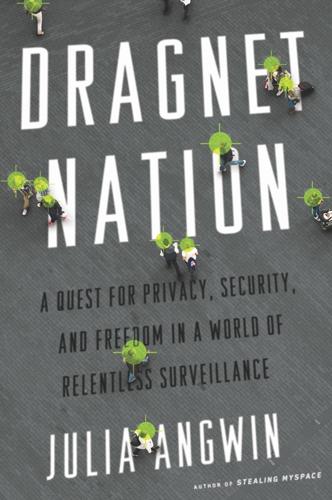
Dragnet Nation: A Quest for Privacy, Security, and Freedom in a World of Relentless Surveillance
by
Julia Angwin
Published 25 Feb 2014
“A public display of connections”: Judith Donath and Danah Boyd, “Public Displays of Connection,” BT Technology Journal 22, no. 4 (October 2004): 73, http://www.danah.org/papers/PublicDisplays.pdf. Scientists have found that people: Nalini Ambady and Robert Rosenthal, “Thin Slices of Expressive Behavior as Predictors of Interpersonal Consequences: A Meta-Analysis,” Psychological Bulletin 111, no. 2 (1992): 256, http://ambadylab.stanford.edu/pubs/1992Ambady.pdf. Online photos are notoriously misleading: Lauren F. Sessions, “‘You Looked Better on MySpace’: Deception and Authenticity on Web 2.0,” First Monday 14, no. 7 (July 6, 2009), http://firstmonday.org/ojs/index.php/fm/article/view/2539/2242#4a.
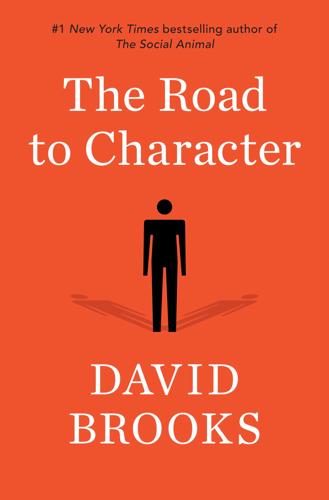
The Road to Character
by
David Brooks
Published 13 Apr 2015
Gretchen Anderson, “Loneliness Among Older Adults: A National Survey of Adults 45+” (AARP Research and Strategic Analysis, 2010). 22. Francis Fukuyama, The Great Disruption: Human Nature and the Reconstitution of Social Order (Profile, 1999), 50. 23. Sara Konrath, “Changes in Dispositional Empathy in American College Students Over Time: A Meta-Analysis” (University of Michigan, 2011). 24. Jean M. Twenge, W. Keith Campbell, and Brittany Gentile, “Increases in Individualistic Words and Phrases in American Books, 1960–2008” (2012), PLoS ONE 7(7): e40181, doi:10.1371/journal.pone.0040181. 25. David Brooks, “What Our Words Tell Us,” New York Times, May 20, 2013. 26.

Choked: Life and Breath in the Age of Air Pollution
by
Beth Gardiner
Published 18 Apr 2019
Brook et al., “Particulate Matter Air Pollution and Cardiovascular Disease: An Update to the Scientific Statement from the American Heart Association,” Circulation 121, no. 21 (2010): 2331–78, https://doi.org/10.1161/CIR.0b013e3181dbece1. 13 Anoop S. V. Shah, Kuan Ken Lee, David A. McAllister, Amanda Hunter, Harish Nair, William Whiteley, Jeremy P. Langrish, David E. Newby, and Nicholas L. Mills, “Short Term Exposure to Air Pollution and Stroke: Systematic Review and Meta-analysis,” BMJ 350, no. H1295 (March 24, 2015), https://doi.org/10.1136/bmj.h1295. 14 Kristin A. Miller, David S. Siscovick, Lianne Sheppard, Kristen Shepherd, Jeffrey H. Sullivan, Garnet L. Anderson, and Joel D. Kaufman, “Long-Term Exposure to Air Pollution and Incidence of Cardiovascular Events in Women,” New England Journal of Medicine 356, no. 5 (2007): 447–58, doi:10.1056/NEJMoa054409. 15 R.
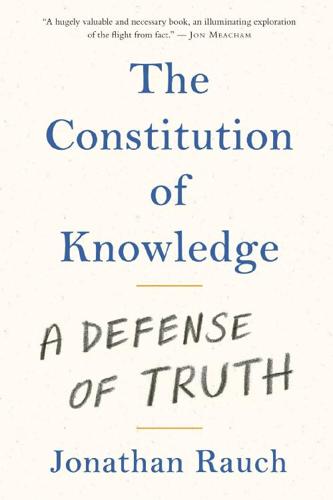
The Constitution of Knowledge: A Defense of Truth
by
Jonathan Rauch
Published 21 Jun 2021
Elisabeth Noelle-Neumann, “The Spiral of Silence: A Theory of Public Opinion,” Journal of Communication 24, no. 2 (Spring 1974). Recent empirical research supporting the “spiral of silence” hypothesis, and finding that it applies to social media, is in Jörg Matthes, Johannes Knoll, and Christian von Sikorski, “The ‘Spiral of Silence’ Revisited: A Meta-Analysis on the Relationship between Perceptions of Opinion Support and Political Opinion Expression,” Communication Research 45, no. 1 (2018). 5. Cailin O’Connor and James Owen Weatherall, The Misinformation Age: How False Beliefs Spread (Yale University Press, 2019), pp. 73, 74, 82, 83, 85, 86. 6.
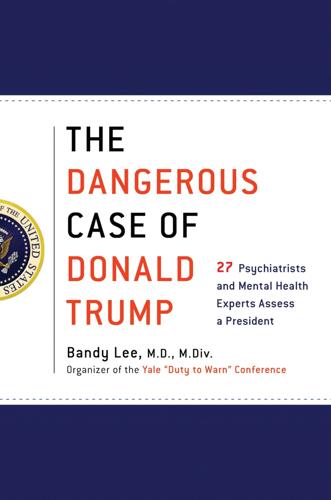
The Dangerous Case of Donald Trump: 27 Psychiatrists and Mental Health Experts Assess a President
by
Bandy X. Lee
Published 2 Oct 2017
Grijalva, E., D. A. Newman, L. Tay, M. B. Donnellan, P. D. Harms, R. W. Robins, and T. Yan. 2014. “Gender Differences in Narcissism: A Meta-Analytic Review.” Psychological Bulletin 141 (2): 261–310. Grijalva, Emily, and Daniel A. Newman. 2014. “Narcissism and Counterproductive Work Behavior (CWB): Meta-Analysis and Consideration of Collectivist Culture, Big Five Personality, and Narcissism’s Facet Structure.” Applied Psychology 64 (1): 93–126. Grijalva, Emily, Peter D. Harms, Daniel A. Newman, Blaine H. Gaddis, and R. Chris Fraley. 2014. “Narcissism and Leadership: A Meta-Analytic Review of Linear and Nonlinear Relationships.”
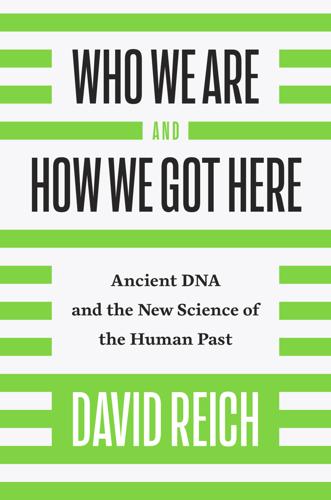
Who We Are and How We Got Here: Ancient DNA and the New Science of the Human Past
by
David Reich
Published 22 Mar 2018
Davies et al., “Genome-Wide Association Study of Cognitive Functions and Educational Attainment in UK Biobank (N=112 151),” Molecular Psychiatry 21 (2016): 758–67; M. T. Lo et al., “Genome-Wide Analyses for Personality Traits Identify Six Genomic Loci and Show Correlations with Psychiatric Disorders,” Nature Genetics 49 (2017): 152–56. 30. S. Sniekers et al., “Genome-Wide Association Meta-Analysis of 78,308 Individuals Identifies New Loci and Genes Influencing Human Intelligence,” Nature Genetics 49 (2017): 1107–12. 31. I. Mathieson et al., “Genome-wide Patterns of Selection in 230 Ancient Eurasians,” Nature 528 (2015): 499–503; Field et al., “Detection of Human Adaptation.” 32. N. A.

Brotopia: Breaking Up the Boys' Club of Silicon Valley
by
Emily Chang
Published 6 Feb 2018
There is little evidence: Gerald E. Evans and Mark G. Simkin, “What Best Predicts Computer Proficiency?,” Communications of the ACM (1989): 1322, https://doi.org/10.1145/68814.68817. Nor is there evidence: Sara M. Lindberg, Janet Shibley Hyde, and Jennifer L. Petersen, “New Trends in Gender and Mathematics Performance: A Meta-analysis,” Psychological Bulletin 136, no. 6 (2010): 1123–35, https://doi.org/10.1037/a0021276. an electronic mailing list: “Systers,” Anita Borg Institute, accessed Sept. 5, 2017, https://anitaborg.org/systers. “industry selected for antisocial”: Ensmenger, Computer Boys Take Over, 78–79. “I was afraid to be”: Padmasree Warrior, “NextEV’s Padmasree Warrior: Studio 1.0 (Full Show 3/27),” interview by author, Bloomberg, March 27, 2016, video, 23:36, https://www.bloomberg.com/news/videos/2016-03-27/nextev-s-padmasree-warrior-studio-1-0-full-show.

Origins: How Earth's History Shaped Human History
by
Lewis Dartnell
Published 13 May 2019
Krivolutskaya, N., B. Gongalsky, A. Dolgal, N. Svirskaya and T. Vekshina (2016). ‘Siberian Traps in the Norilsk Area: A Corrected Scheme of Magmatism Evolution’, IOP Conference Series: Earth and Environmental Science 44: 042008. Kroeker, K. J., R. L. Kordas, R. N. Crim and G. G. Singh (2010). ‘Meta-analysis reveals negative yet variable effects of ocean acidification on marine organisms’, Ecology Letters 13(11): 1419–34. Kukula, M. (2016). The Intimate Universe: How the stars are closer than you think, Quercus. Laitin, D. D., J. Moortgat and A. L. Robinson (2012). ‘Geographic axes and the persistence of cultural diversity’, Proceedings of the National Academy of Sciences of the United States of America 109(26): 10263–8.
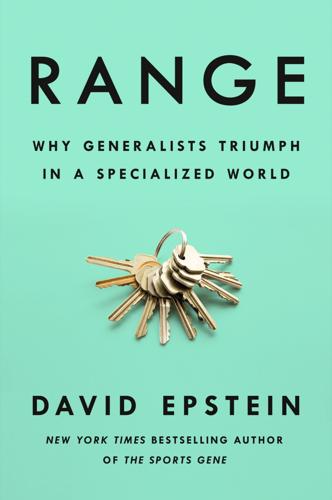
Range: Why Generalists Triumph in a Specialized World
by
David Epstein
Published 1 Mar 2019
“oculostenotic reflex”: Eric Topol is the cardiologist who coined that term. (For a patient who is actually having a heart attack, a stent can be lifesaving.) one in fifty patients: K. Stergiopoulos and D. L. Brown, “Initial Coronary Stent Implantation With Medical Therapy vs Medical Therapy Alone for Stable Coronary Artery Disease: Meta-analysis of Randomized Controlled Trials,” Archives of Internal Medicine 172, no. 4 (2012): 312–19. cannot believe that stenting: G. A. Lin et al., “Cardiologists’ Use of Percutaneous Coronary Interventions for Stable Coronary Artery Disease,” Archives of Internal Medicine 167, no. 15 (2007):1604–09.

Rage Inside the Machine: The Prejudice of Algorithms, and How to Stop the Internet Making Bigots of Us All
by
Robert Elliott Smith
Published 26 Jun 2019
Perhaps the best-known work based on Pioneer Fund supported research was the 1994 book The Bell Curve: Intelligence and Class Structure in American Life, a book that has received renewed endorsement with the rise of the alt-right movement, and in turn revived Spearman’s century-old ideas of the g factor. In the book, psychologist Richard J. Herrnstein and political scientist Charles Murray used meta-analysis (effectively analyses of many other analyses of populations of IQ tests) to assert that these tests categorically measure a real, underlying g factor. Their results purportedly indicate that high IQ is a clear indicator of positive social outcomes (like having a job, avoiding poverty, having legitimate children, staying out of jail, and having a positive, survey-based ‘middle-class values index’) and they, too, controversially conclude that statistically white Americans have substantially higher IQs than African-Americans, and that this difference is better explained by race than by socio-economic status.
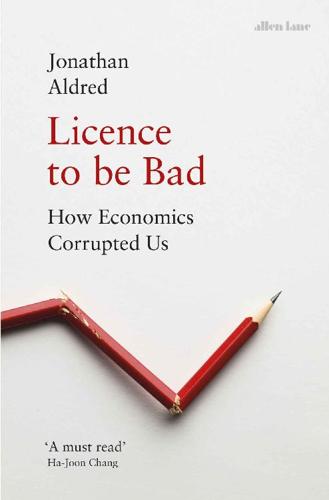
Licence to be Bad
by
Jonathan Aldred
Published 5 Jun 2019
Easterling (1996), ‘The Role of Compensation in Siting Hazardous Facilities’, Journal of Policy Analysis and Management, 15, 601–22. 9 Gneezy, U., and Rustichini, A. (2000), ‘A Fine is a Price’, Journal of Legal Studies, 29, 1–18. 10 A comprehensive survey is Deci, E., Koestner, R., and Ryan, R. (1999), ‘A Meta-analytic Review of Experiments Examining the Effect of Extrinsic Rewards on Intrinsic Motivation’, Psychological Bulletin, 125, 627–68. 11 Bowles, S. (2016), The Moral Economy (New Haven: Yale University Press), 9. 12 Quoted in ibid., 79. 13 Kinnaman, T. (2006), ‘Examining the Justification for Residential Recycling’, Journal of Economic Perspectives, 20 (4), 219–32. 14 Gneezy and Rustichini, 29, 1–18. 15 Gasioroska, A., Zaleskiewicz, T., and Wygrab, S. (2012), ‘Would You Do Something for Me?’ Journal of Economic Psychology, 33 (3), 603–8. 16 A comprehensive recent review of the evidence is Niza, C., Tung, B., and Marteau, T. M. (2013), ‘Incentivizing Blood Donation: Systematic Review and Meta-analysis to Test Titmuss’ Hypotheses’, Health Psychology, 32, 941–9. In response, in a letter to the editors of Health Psychology, economists Lacetera, Macis and Slonim criticize Niza et al.’s research on the basis that ‘basic economics principles predict that increasing the value of incentives will increase effectiveness’.
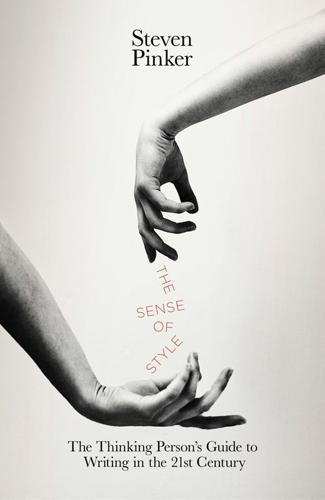
The Sense of Style: The Thinking Person's Guide to Writing in the 21st Century
by
Steven Pinker
Published 1 Jan 2014
My advice will often shock purists and occasionally puzzle readers who have always been under the impression that this word meaning or that grammatical usage is an error. But the advice is thoroughly conventional. It combines data from the ballots given to the Usage Panel of the American Heritage Dictionary, the usage notes of several dictionaries and style guides, the erudite historical analyses in Merriam-Webster’s Dictionary of English Usage, the meta-analysis in Roy Copperud’s American Usage and Style: The Consensus, and the view from modern linguistics represented in The Cambridge Grammar of the English Language and the blog Language Log.6 When the experts disagree, or when the examples are all over the map, I will offer my own best judgment. I divide the hundred usage issues into points of grammar, the expression of quantity and quality, word choice, and punctuation.
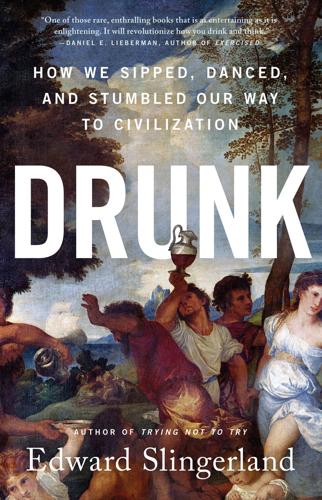
Drunk: How We Sipped, Danced, and Stumbled Our Way to Civilization
by
Edward Slingerland
Published 31 May 2021
“Silent disco: Dancing in synchrony leads to elevated pain thresholds and social closeness.” Evolution and Human Behavior, 37(5), 343–349. Taylor, B., H. M. Irving, F. Kanteres, R. Room, G. Borges, C. Cherpitel,…J. Rehm. (2010). “The more you drink, the harder you fall: A systematic review and meta-analysis of how acute alcohol consumption and injury or collision risk increase together.” Drug and Alcohol Dependence, 110(1-2), 108–116. Taylor, Jenny, Naomi Fulop, and John Green. (1999). “Drink, illicit drugs and unsafe sex in women.” Addiction, 94(8), 1209–1218. ten Brinke, Leanne, Stephen Porter, and Alysha Baker. (2012).
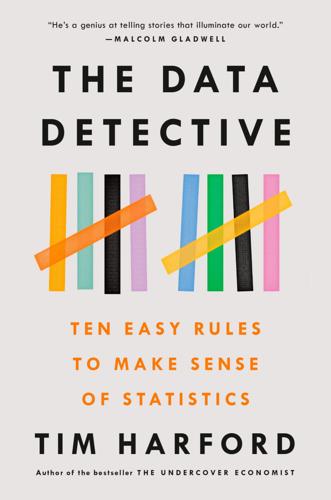
The Data Detective: Ten Easy Rules to Make Sense of Statistics
by
Tim Harford
Published 2 Feb 2021
Huang et al., “A Group-Based Yoga Therapy Intervention for Urinary Incontinence in Women,” Female Pelvic Medicine & Reconstructive Surgery 20, no. 3 (2014), 147–54, DOI: 10.1097/SPV.0000000000000072, https://www.ncbi.nlm.nih.gov/pmc/articles/PMC4310548/. 45. L. S. Wieland et al., “Yoga for Treating Urinary Incontinence in Women,” Cochrane Database of Systematic Reviews 2019 2, art. no. CD012668, DOI: 10.1002/14651858.CD012668.pub2. Rule Six: Ask Who Is Missing 1. Rod Bond and Peter B. Smith, “Culture and Conformity: A Meta-Analysis of Studies Using Asch’s (1952b, 1956) Line Judgment Task,” Psychological Bulletin 119, no. 1 (1996), 111–37, http://dx.doi.org/10.1037/0033-2909.119.1.111. 2. Tim Harford, “The Truth about Our Norm-Core,” Financial Times, June 12, 2015, http://timharford.com/2015/06/the-truth-about-our-norm-core/. 3.
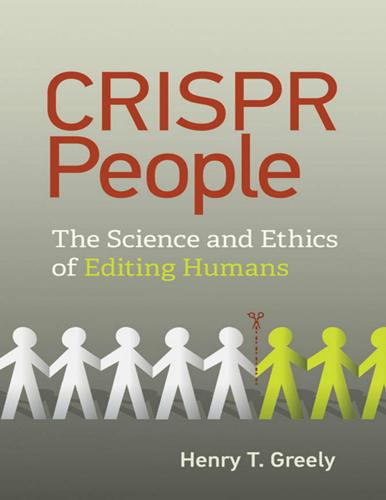
CRISPR People: The Science and Ethics of Editing Humans
by
Henry T. Greely
Published 22 Jan 2021
John Novembre, Alison P Galvani, and Montgomery Slatkin, “The Geographic Spread of the CCR5 Δ32 HIV-Resistance Allele,” PLOS Biology 3, no. 11 (October 18, 2005): e339, https://doi.org/10.1371/journal.pbio.0030339. 22. Maryam Zafer, Hacsi Horvath, Okeoma Mmeje, et al., “Effectiveness of Semen Washing to Prevent HIV Transmission and Assist Pregnancy in HIV-Discordant Couples: A Systematic Review and Meta-Analysis,” Fertility and Sterility 105, no. 3 (2016): 645–655, https://doi.org/10.1016/j.fertnstert.2015.11.028. 23. Cédric Blanpain, Frédérick Libert, Gilbert Vassart, et al., “CCR5 and HIV Infection,” Receptors and Channels 8 (2002): 19–31, https://doi.org/10.1080/10606820212135. 24. “HIV and AIDS in China,” Avert, October 3, 2019, https://www.avert.org/professionals/hiv-around-world/asia-pacific/china; “Country Comparison—HIV/AIDS Prevalence Rate,” The World Factbook, https://www.cia.gov/library/publications/the-world-factbook/rankorder/2155rank.html.

The Heat Will Kill You First: Life and Death on a Scorched Planet
by
Jeff Goodell
Published 10 Jul 2023
“Associations Between Extreme Temperatures and Cardiovascular Cause-Specific Mortality: Results From 27 Countries.” Circulation vol. 147, issue 1 (2023), 35–46. https://www.doi.org/10.1161/CIRCULATIONAHA.122.061832; Woo-Seok Lee et al. “High Temperatures and Kidney Disease Morbidity: A Systematic Review and Meta-analysis.” Journal of Preventative Medicine & Public Health 52, vol. 1 (2019), 1–13. https://doi.org/10.3961%2Fjpmph.18.149 more impulsive: Yoonhee Kim et al. “Suicide and Ambient Temperature: A Multi-Country Multi-City Study.” Environmental Health Perspectives 127, vol. 11 (2019). https://doi.org/10.1289/EHP4898 prone to conflict: Andreas Miles-Novelo and Craig A.

Empire of the Sum: The Rise and Reign of the Pocket Calculator
by
Keith Houston
Published 22 Aug 2023
65 Texas Instruments, 2011 Annual Report (Dallas, TX: Texas Instruments, 2011), 47, https://investor.ti.com/static-files/2b690577-f4c8-4e19-80c6-5d8cba 365c80; Texas Instruments, 2020 Annual Report (Dallas, TX: Texas Instruments, 2020), 18, https://investor.ti.com/static-files/05b7598d-4a01-4f45-a63d-058c69a165ad. 66 Aimee J. Ellington, “A Meta-Analysis of the Effects of Calculators on Students’ Achievement and Attitude Levels in Precollege Mathematics Classes,” Journal for Research in Mathematics Education 34, no. 5 (2003): 456, https://doi.org/10.2307/30034795. 67 Jeremy Hodgen et al., “Improving Mathematics in Key Stages Two and Three: Evidence Review,” Education Endowment Foundation, 2018. 15. software arts visicalc 1 William J.

You've Been Played: How Corporations, Governments, and Schools Use Games to Control Us All
by
Adrian Hon
Published 14 Sep 2022
Noah Smith, “Virtual Reality Is Starting to See Actual Gains in Gaming,” Washington Post, February 4, 2021, www.washingtonpost.com/video-games/2021/02/04/virtual-reality-future-games; “Introducing Oculus Quest 2, the Next Generation of All-in-One VR,” Oculus Blog, Meta Quest, Facebook Technologies, September 16, 2020, www.oculus.com/blog/introducing-oculus-quest-2-the-next-generation-of-all-in-one-vr-gaming; Will Greenwald, “Oculus Quest 2 Review,” PCMag, updated August 12, 2021, www.pcmag.com/reviews/oculus-quest-2. 30. Liliana Laranjo et al., “Do Smartphone Activities and Activity Trackers Increase Physical Activity in Adults? Systematic Review, Meta-Analysis and Metaregression,” British Journal of Sports Medicine 55, no. 8 (2021): 422–432, https://doi.org/10.1136/bjsports-2020-102892. 31. “First Quarter FY 2022 Highlights,” Peloton, November 4, 2021, https://investor.onepeloton.com/static-files/4e16bcc7-dd3b-40ec-acb6-840e691b40ee. 32. Ed Zitron, “My Gamer Brain Is Addicted to the Peloton Exercise Bike,” VICE, November 5, 2018, www.vice.com/en/article/vba4dx/my-gamer-brain-is-addicted-to-the-peloton-exercise-bike. 33. u/plymouthvan, “Apple watch should have a ‘Sick’ mode,” r/apple, Reddit, February 29, 2020, www.reddit.com/r/apple/comments/fbffqy/apple_watch_should_have_a_sick_mode. 34.
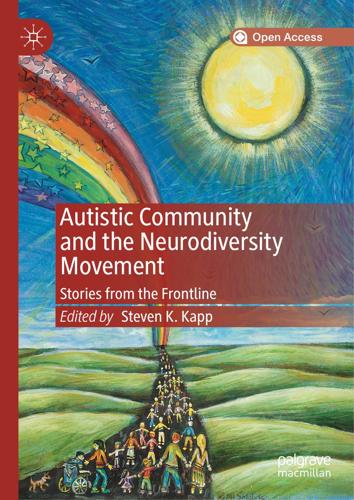
Autistic Community and the Neurodiversity Movement: Stories From the Frontline
by
Steven K. Kapp
Published 19 Nov 2019
Carson, D. (2017). Walking with Joaquin. TEDx Talks (Video file). Retrieved from https://www.youtube.com/watch?v=ruXB3lbiD3U. 30. Russell, G., Mandy, W., Elliott, D., White, R., Pittwood, T., & Ford, T. (2019). Selection bias on intellectual ability in autism research: A crosssectional review and meta-analysis. Molecular Autism, 10 (1), 9. 31. Stedman, A., Taylor, B., Erard, M., Peura, C., & Siegel, M. (2018). Are children severely affected by autism spectrum disorder underrepresented in 22 Conclusion 32. 33. 34. 35. 36. 37. 38. 39. 40. 41. 317 treatment studies? An analysis of the literature.

Break Through: Why We Can't Leave Saving the Planet to Environmentalists
by
Michael Shellenberger
and
Ted Nordhaus
Published 10 Mar 2009
In a major review of social science research since the 1950s, a group of social scientists found that fear of death, change, ambiguity, complexity, and system collapse were some of the most powerful predictors of conservatism. This confirmed other research showing that people hold particular political views to meet psychological needs. In situations where people fear events such as system collapse, they tend to become more right-wing and authoritarian. The meta-analysis was of 88 studies in 12 countries with a total of 22,818 cases studied. John T. Jost et al., “Political Conservatism as Motivated Social Cognition,” Psychological Bulletin 129, no. 3 (2003): 339–75. The authors concluded, “Conservative ideologies, like virtually all other belief systems, are adopted in part because they satisfy various psychological needs.
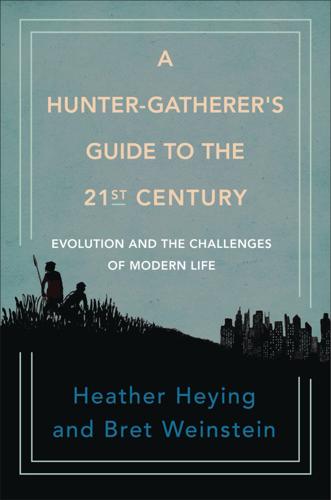
A Hunter-Gatherer's Guide to the 21st Century: Evolution and the Challenges of Modern Life
by
Heather Heying
and
Bret Weinstein
Published 14 Sep 2021
Frontiers in Neuroendocrinology, 35(3): 320–330; McLean, C. P., et al., 2011. Gender differences in anxiety disorders: Prevalence, course of illness, comorbidity and burden of illness. Journal of Psychiatric Research, 45(8): 1027–1035. 18. Su, R., Rounds, J., and Armstrong, P. I., 2009. Men and things, women and people: A meta-analysis of sex differences in interests. Psychological Bulletin, 135(6): 859–884. 19. Brown, D., 1991. Human Universals. New York: McGraw Hill, 133. 20. Reviewed in Neaves, W. B., and Baumann, P., 2011. Unisexual reproduction among vertebrates. Trends in Genetics, 27(3): 81–88. 21. Watts, P.

The Measure of Progress: Counting What Really Matters
by
Diane Coyle
Published 15 Apr 2025
J. (2013). Power-by-the-hour: The role of technology in reshaping business strategy at Rolls-Royce. Technology Analysis & Strategic Management, 25(8), 987–1007. https://doi .org/10.1080/0 9537325.2013.823147 Sokolova, A., and Sorensen, T. (2021). Monopsony in labor markets: A meta-analysis. ILR Review, 74(1), 27–55. https://doi.org/10.1177/0019793920965562 Solow, R. M. (1957). Technical change and the aggregate production function. Review of Economics and Statistics, 39(3), 312–320. Solow, R. M. (2000). Sustainability: An economist’s perspective. In R. N. Stavins (Ed.), Economics of the Environment (4th ed., pp. 505–513).
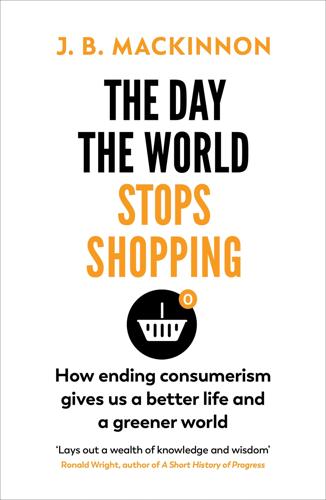
The Day the World Stops Shopping
by
J. B. MacKinnon
Published 14 May 2021
Anthropocene Review 4, no. 1 (2017): 9–22. CHAPTER 1: What we give up and what we hang on to Additional sources include Levi Strauss & Co., US BEA and the National Bureau of Economic Research. Dittmar, Helga, Rod Bond, Megan Hurst, and Tim Kasser. “The Relationship between Materialism and Personal Well-being: A Meta-analysis.” Journal of Personality and Social Psychology 107, no. 5 (2014): 879-924. Jacobs, Meg. “America’s Never-Ending Oil Consumption.” The Atlantic, May 15, 2016. Jacobs, Meg. Panic at the Pump: The Energy Crisis and the Transformation of American Politics in the 1970s. New York: Hill and Wang, 2016.

Markets, State, and People: Economics for Public Policy
by
Diane Coyle
Published 14 Jan 2020
(Diamond and Hausman), 324 Italy, 20, 85, 107, 114, 115 Japan, 116, 198, 203; behavioral policy unit in, 173, 185; economic planning and industrial policy in, 21, 131–32; irrigation management in, 148; nuclear energy disaster in, 86; postwar reconstruction of, 99; value of a statistical life in, 326 job market, 163 John Deere, 150–51 Kahneman, Daniel, 173, 179, 195 Kaldor, Nicholas, 14, 181 Kaldor-Hicks compensation, 14–15 Kay, John, 120, 124 Kazakhstan, 116 Keillor, Garrison, 182 Kenya, 238, 330 Keynes, John Maynard, 21, 99, 333 Kindle (e-reader), 150 Klinenberg, Eric, 156–57 Kuznets, Simon, 21 labor unions, 22, 35, 110, 118, 121, 220, 223 Laffer, Arthur, 230 Laffer curve, 230 Lake Wobegon effect, 182 Lamont, Norman, 165 Lancaster, Kelvin, 13 land reform, 166 law and economics movement, 33 Lawrence of Arabia (film), 62 Lawson, Nigel, 110 legitimacy, 145 Lewis, Michael, 303 libraries, 243 licensing, 2, 3, 31, 61, 67, 168, 241, 262; for fishing, 149; occupational, 70, 71, 263; of utilities, 103 life insurance, 203 lighthouses, 28, 142 light water reactor, 130 limited-profit corporations, 113 Lipsey, Richard, 13 Littlechild, Stephen, 122 lobbying, 49, 56, 62, 68, 80, 241–42, 256, 263–71 logging, 138, 270, 322 The Logic of Collective Action (Olson), 267 London Underground, 278, 308 Lorenz curve, 215 loss aversion, 173, 181, 199 luxury goods, 163, 165, 248 Lyft, 78–80, 263 Macmillan, Harold, 119 macroeconomic policy, 6, 21 malaria, 329 Manchester, England, 157 Mankiw, Greg, 231 marginal costs, 104 marginal effective tax rate, 234, 235, 236–37, 239 marginal rate of substitution (MRS), 39 marginal rate of technical substitution (MRTS), 37, 40 market definition, 57–58 market design, 81 market distribution, 239, 251 market failure, 1, 8, 13; conditions conducive to, 146; efficiency and, 44; in electric industry, 85; externalities as, 25; in health care, 245; industrial policy justified by, 128; government failure and, 16–18, 293–94, 302–3; Pigouvian response to, 31, 211; price of exit and, 160–61; regulation justified by, 72, 98–99 “market for lemons,” 73–74, 209 market research, 189 Marshall, Alfred, 157, 304 Marshall Plan, 21, 100 Massachusetts, 151 Matthew effect, 318 Mazzucato, Mariana, 132 McCloskey, Deirdre, 301 means testing, 206, 233–34, 235, 237, 252 Medicaid, 210, 249–50 Medicare, 210, 249, 250 mergers, 52, 55, 58, 59–60, 121 merit goods, 29 meta-analysis, 332 Metcalfe’s law, 92 Mexico, 198 micromort, 326–27 microlife, 326–27 Microsoft, 91, 93, 94, 124 Milanovic, Branko, 218 minimum wages, 206, 220, 236, 239–40 Ministry of International Trade and Industry (MITI, Japan), 131 missing markets, 101, 128, 209 Mitterrand, François, 102, 107 monetary policy, 56 monitoring, 65, 94, 113, 145; of agents by principals, 284–85; asymmetric information and, 35, 146, 285; in cartels, 57; in competition policy, 55; cost of, 303; of free riding, 155; in markets, 32, 35, 291 monopoly, 13, 47–49, 51, 57–58, 174.
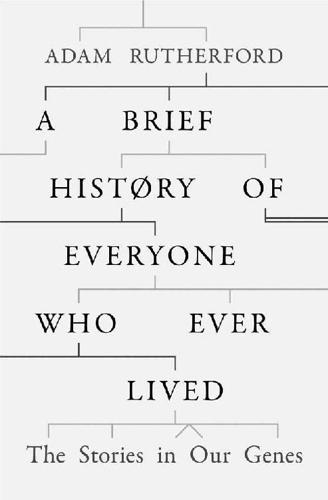
A Brief History of Everyone Who Ever Lived
by
Adam Rutherford
Published 7 Sep 2016
Do the Chinese have a reputation as being genetic warriors? A chunky paper in 2003 suggested that violence associated with the defective variant was significantly worsened if the perpetrator had been sexually abused as a child, whereas abused children with a normal MAOA were less likely to be criminals. This result was affirmed in 2012 in a meta-analysis – a super-powerful way of aggregating multiple studies to ramp up the analytical depth. And the studies keep coming, with subtly specific conditions, with the law trailing behind them. In 2009, an Algerian living in Italy called Abdelmalek Bayout had his sentence for the murder of a Colombian man reduced by three years, after his defence also identified him as a carrier of the defective MAOA gene.
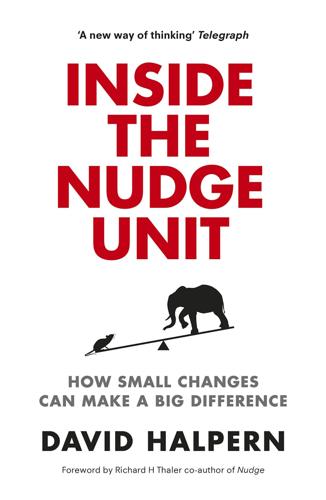
Inside the Nudge Unit: How Small Changes Can Make a Big Difference
by
David Halpern
Published 26 Aug 2015
D. (2011), ‘If money doesn’t make you happy, then you probably aren’t spending it right’, Journal of Consumer Psychology, 21(2): 115–25. Subsequently expanded into the book Happy Money. 13 See Halpern, D., (2005), Social Capital, Polity Press, for a summary of the literature. For a more recent meta-analysis see Holt-Lunstad et al., including 148 independent studies which used data from over 300,000 individuals followed for an average of 7.5 years. This shows that individuals with adequate social support experience a 50 per cent increase in the odds of survival than their counterparts with poorer social connections.
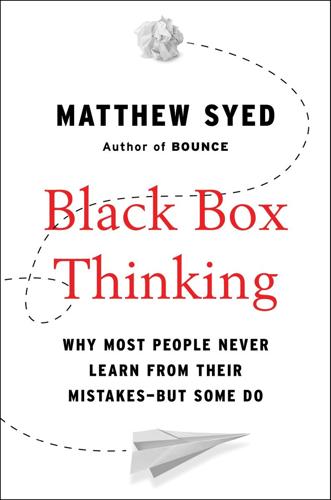
Black Box Thinking: Why Most People Never Learn From Their Mistakes--But Some Do
by
Matthew Syed
Published 3 Nov 2015
This is a global, nonprofit organization devoted to evidence-based policy. They conducted what is called a “systematic review.” This is where the data from all the randomized trials are collated into a single spreadsheet. By pooling the results from all the individual trials (seven were used in the so-called meta-analysis), a systematic review represents the gold standard when it comes to scientific evidence. It is the ultimate failure test.18 Forgive me if you know what’s coming, but the results were emphatic. Scared Straight doesn’t work. It increases crime. Some research indicates that this increase can be as high as 28 percent.19 In exquisitely understated language, the authors effectively damned its entire rationale: “We conclude that programs like Scared Straight are likely to have a harmful effect and increase delinquency . . .
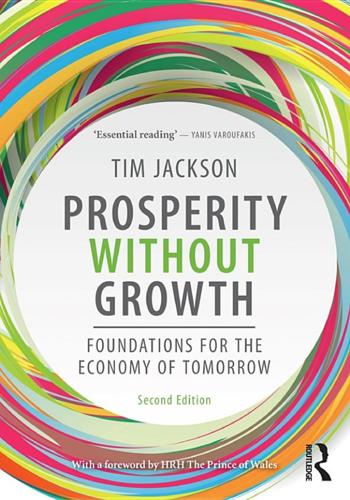
Prosperity Without Growth: Foundations for the Economy of Tomorrow
by
Tim Jackson
Published 8 Dec 2016
Journal of Personality and Social Psychology 101(6): 1278–1290. Dittmar, Helga 1992. The Social Psychology of Material Possessions – To Have Is to Be. New York: St Martin’s Press. Dittmar, Helga, Rod Bond, Megan Hurst and Tim Kasser 2014. ‘The relationship between materialism and personal well-being: a meta-analysis’. Journal of Personal and Social Psychology 107: 879–924. Dittmer, K. 2015. ‘100 per cent reserve banking: a critical review of green perspectives’. Ecological Economics 109: 9–16. Dolan, Paul 2015. Happiness by Design: Finding Pleasure and Purpose in Everyday Life. London: Penguin. Dong, Boamin, Fei Wang and Guo 2006.

System Error: Where Big Tech Went Wrong and How We Can Reboot
by
Rob Reich
,
Mehran Sahami
and
Jeremy M. Weinstein
Published 6 Sep 2021
the work radiologists and other medical professionals do: Hugh Harvey, “Why AI Will Not Replace Radiologists,” Medium, April 7, 2018, https://towardsdatascience.com/why-ai-will-not-replace-radiologists-c7736f2c7d80. “deep learning models to be equivalent”: Xiaoxuan Liu et al., “A Comparison of Deep Learning Performance Against Health-Care Professionals in Detecting Diseases from Medical Imaging: A Systematic Review and Meta-Analysis,” Lancet Digital Health 1, no. 6 (October 1, 2019): e271–97, https://doi.org/10.1016/S2589-7500(19)30123-2. eighty distinct AI ethics documents: Anna Jobin, Marcello Ienca, and Effy Vayena, “The Global Landscape of AI Ethics Guidelines,” Nature Machine Intelligence 1, no. 9 (September 2019): 389–99, https://doi.org/10.1038/s42256-019-0088-2.
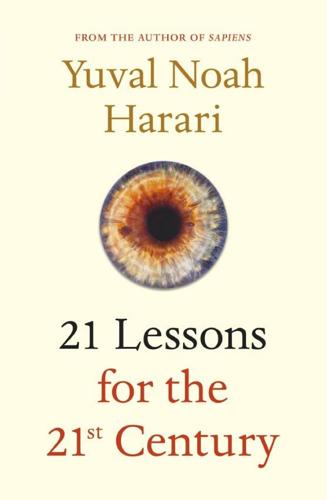
21 Lessons for the 21st Century
by
Yuval Noah Harari
Published 29 Aug 2018
Knutson, ‘Tropical Cyclones and Climate Change’, Nature Geoscience 3 (2010), 157–63; Edward Hanna et al., ‘Ice-Sheet Mass Balance and Climate Change’, Nature 498 (2013), 51–9; Tim Wheeler and Joachim von Braun, ‘Climate Change Impacts on Global Food Security’, Science 341:6145 (2013), 508–13; A. J. Challinor et al., ‘A Meta-Analysis of Crop Yield under Climate Change and Adaptation’, Nature Climate Change 4 (2014), 287–91; Elisabeth Lingren et al., ‘Monitoring EU Emerging Infectious Disease Risk Due to Climate Change’, Science 336:6080 (2012), 418–19; Frank Biermann and Ingrid Boas, ‘Preparing for a Warmer World: Towards a Global Governance System to Protect Climate Change’, Global Environmental Politics 10:1 (2010), 60–88; Jeff Goodell, The Water Will Come: Rising Seas, Sinking Cities and the Remaking of the Civilized World (New York: Little, Brown and Company, 2017); Mark Lynas, Six Degrees: Our Future on a Hotter Planet (Washington: National Geographic, 2008); Naomi Klein, This Changes Everything: Capitalism vs.
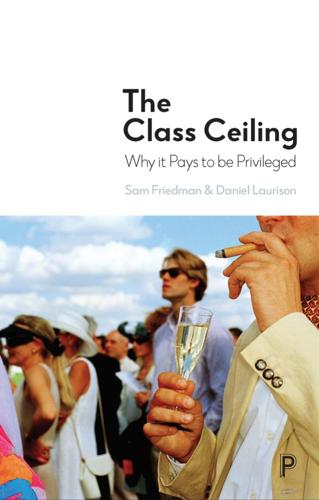
The Class Ceiling: Why It Pays to Be Privileged
by
Sam Friedman
and
Daniel Laurison
Published 28 Jan 2019
Jonsson, J.O., Grusky, D.B., Di Carlo, M., Pollak, R. and Brinton, M.C. (2009) ‘Microclass mobility: Social reproduction in four countries’, American Journal of Sociology, 114(4), 9771036 (https://doi.org/10.1086/592200). Judge, T.A. and Bono, J.E. (2001) ‘Relationship of core selfevaluations traits – self-esteem, generalized self-efficacy, locus of control, and emotional stability – with job satisfaction and job performance: A meta-analysis’, Journal of Applied Psychology, 86(1), 80-92 (https://doi.org/http://dx.doi. org/10.1037/0021-9010.86.1.80). Kant, I. ([1790] 1987) Critique of judgment, UK: Hackett Publishing Co. Kanter, R.M. (1993) Men and women of the corporation (2nd edn), New York: Basic Books. Kehal, P.S. (no date) ‘Racializing meritocracy: Ideas of excellence and exclusion in faculty diversity’, Unpublished PhD disseration, Brown University, RI.
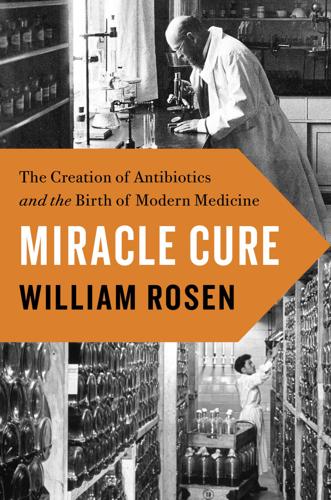
Miracle Cure
by
William Rosen
Published 14 Apr 2017
Rothman, S. M. Living in the Shadow of Death: Tuberculosis and the Social Experience of Illness in American History, 1st ed. Baltimore, MD: Johns Hopkins University Press, 1995. Roy, A., et al. “Effect of BCG Vaccination Against Mycobacterium tuberculosis Infection in Children: Systematic Review and Meta-analysis. British Medical Journal 349, no. g4643 (August 2014): 1–11. Sarrett, L. H. Max Tishler 1906–1989: A Biographical Memoir. Washington, DC: National Academies Press, 1995. Saturday Review. Letters to the Editor. Saturday Review, January 24, 1959, 21–23. Schatz, A. “The True Story of the Discovery of Streptomycin.”

The Next Great Migration: The Beauty and Terror of Life on the Move
by
Sonia Shah
“We see the whole network of animals …” Wikelski interview. ecologists have started to reevaluate their theories Warren, “Perspectives on ‘Alien.’ ” zero extinctions among the locals Mooney and Cleland, “Evolutionary Impact.” arrival of newcomers increases biodiversity Mark Vellend et al., “Global Meta-Analysis Reveals No Net Change in Local-Scale Plant Biodiversity Over Time,” Proceedings of the National Academy of Sciences 110, no. 48 (2013): 19456–59; Thompson, Where Do Camels Belong? 108. compared the impact Mooney and Cleland, “Evolutionary Impact”; Jessica Gurevitch and Dianna K. Padilla, “Are Invasive Species a Major Cause of Extinctions?”

Think Like a Rocket Scientist: Simple Strategies You Can Use to Make Giant Leaps in Work and Life
by
Ozan Varol
Published 13 Apr 2020
“What we observe is not nature itself, but nature exposed to our method of questioning,” said Werner Heisenberg, the brains behind the uncertainty principle in quantum mechanics.13 When we reframe a question—when we change our method of questioning—we have the power to change the answers. Research supports this conclusion. A meta-analysis of fifty-five years of research on problem finding across numerous disciplines found a significant positive relationship between problem framing and creativity.14 In one famous study, Jacob Getzels and Mihaly Csikszentmihalyi found that the most creative art students spend more time in the preparation and discovery stage than do their less creative counterparts.15 Problem finding, according to these researchers, doesn’t end with the preparation stage.
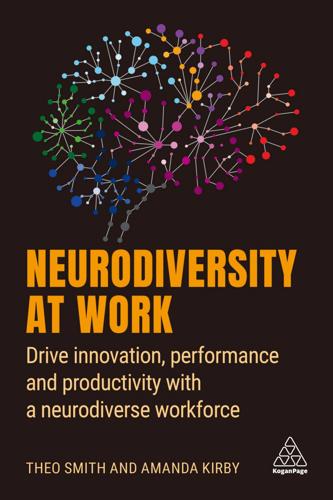
Neurodiversity at Work: Drive Innovation, Performance and Productivity With a Neurodiverse Workforce
by
Amanda Kirby
and
Theo Smith
Published 2 Aug 2021
In H R Mykelbust (ed), Progress in Learning Disabilities, Ulverscroft, New York, USA, pp 235–64 12 Badian, N A (1999) Persistent arithmetic, reading, or arithmetic and reading disability, Annals of Dyslexia, 49, pp 43–70 13 Shalev, R S et al (2000) Developmental dyscalculia: prevalence and prognosis, European Child & Adolescent Psychiatry, 9 (Suppl 2), II58–II64, https://doi.org/10.1007/s007870070009 (archived at https://perma.cc/4TFV-Z6AS) 14 Lingam, R et al (2009) Prevalence of Developmental Coordination Disorder using the DSM-IV at 7 years of age: a UK population-based study, Pediatrics, 123, e693–e700 15 Lindsay, G and Strand, S (2016) Children with language impairment: prevalence, associated difficulties, and ethnic disproportionality in an English population, Frontiers in Education, 1 (2) 16 Scahill, L, Specht, M and Page, C (2014) The prevalence of tic disorders and clinical characteristics in children, Journal of Obsessive-Compulsive and Related Disorders, 3 (4), pp 394–400. https://doi.org/10.1016/j.jocrd.2014.06.002 (archived at https://perma.cc/C77X-L3VA) 17 Knight, T et al (2012) Prevalence of tic disorders: a systematic review and meta-analysis, Pediatric Neurology, 47 (2), pp 77–90 Glossary ABI: This stands for Acquired Brain Injury. Acquired Brain Injury: Any injury to the brain. This includes Traumatic Brain Injury but also stroke, encephalitis, brain cancer, hypoxia, poisoning, substance abuse and other brain injuries. ADD: This stands for Attention Deficit Disorder.
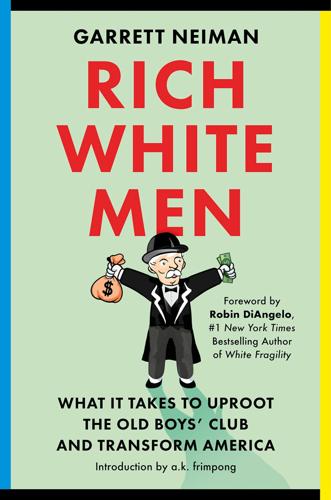
Rich White Men: What It Takes to Uproot the Old Boys' Club and Transform America
by
Garrett Neiman
Published 19 Jun 2023
“What makes a community or individual resilient is not self-mastery or will,” insists Lucién Demaris, a somatic healer and codirector of the Relational Uprising program. “It is the quality, strength, intimacy, and inclusivity of our relational bonds.”14 Research substantiates Demaris’s thesis. In 2010, psychologist Julianne Holt-Lunstad and her colleagues Timothy Smith and J. Bradley Layton conducted a meta-analysis of 148 studies, including more than 308,000 participants, to determine the factors that predict longevity.15 Least predictive were whether a person had access to clean air, was treated for high blood pressure, was overweight, exercised regularly, or was recovering from a heart attack. Drinking habits, smoking habits, and getting a flu vaccine were more predictive but were still not highest on the list.
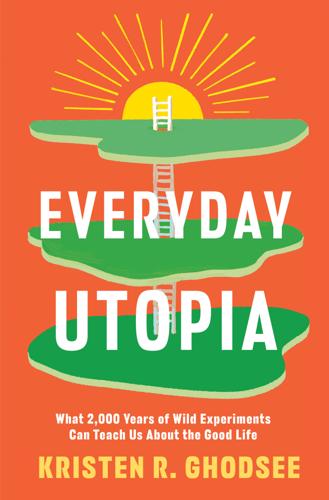
Everyday Utopia: What 2,000 Years of Wild Experiments Can Teach Us About the Good Life
by
Kristen R. Ghodsee
Published 16 May 2023
On top of the rational economic considerations, some research also contradicts the idea that children bring happiness. One 2006 study of German life satisfaction over time showed that while happiness initially increased after the birth of a first child, happiness levels for both men and women fell significantly below their baseline by the time their child reached the age of three or four.4 A 2003 meta-analysis found that parents also report much lower levels of marital satisfaction than nonparents.5 And another study of twenty-two Organisation for Economic Co-operation and Development (OECD) nations found an overall happiness gap between parents and nonparents in most advanced economies, with parents reporting lower levels of happiness.
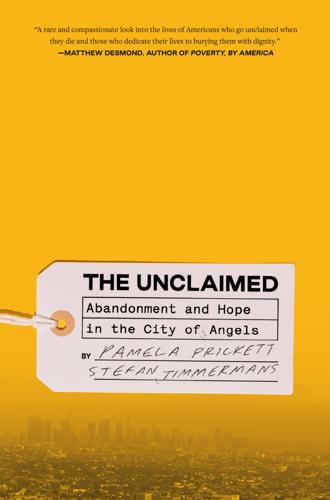
The Unclaimed: Abandonment and Hope in the City of Angels
by
Pamela Prickett
and
Stefan Timmermans
Published 11 Mar 2024
On disenfranchised grief: Kenneth J. Doka, Disenfranchised Grief: Recognizing Hidden Sorrow (Lexington, Mass.: Lexington Books, 1989). GO TO NOTE REFERENCE IN TEXT may fail to recognize Christy Burden et al., “From Grief, Guilt, Pain, and Stigma to Hope and Pride: A Systematic Review and Meta-Analysis of Mixed-Method Research on the Psychosocial Impact of Stillbirth,” BMC Pregnancy and Childbirth 16 (2016): 1–12; Maja Sawicka, “Searching for a Narrative of Loss: Interactional Ordering of Ambiguous Grief,” Symbolic Interaction 40 (2017): 229–46; Bernadette Susan McCreight, “A Grief Ignored: Narratives of Pregnancy Loss from a Male Perspective,” Sociology of Health and Illness 26 (2004): 326–50.

Poverty for Profit
by
Anne Kim
National Institutes of Health, National Institute of Diabetes and Digestive and Kidney Diseases, “Incidence, Prevalence, Patient Characteristics and Treatment Modalities,” in 2022 Annual Data Report; Ruyi Cai, Jinshi Zhang, Yin Zhu, et al., “Mortality in Chronic Kidney Disease Patients with COVID-19: A Systematic Review and Meta-analysis,” International Urology and Nephrology 53 (2021): 1623–29; Stephen Salerno, Joseph Messana, Garrett W. Gremel, et al., “Covid-19 Risk Factors and Mortality Outcomes Among Medicare Patients Receiving Long-term Dialysis,” JAMA Network Open 4, no. 11 (2021): e2135379. 248. National Institutes of Health, National Institute of Diabetes and Digestive and Kidney Diseases, “Incidence, Prevalence, Patient Characteristics and Treatment Modalities,” in 2022 Annual Data Report, Figure 1.10. 249.
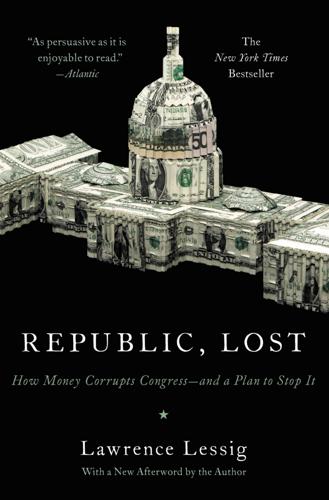
Republic, Lost: How Money Corrupts Congress--And a Plan to Stop It
by
Lawrence Lessig
Published 4 Oct 2011
In either case, what they are not saying is what the anti-reform think tank Center for Competitive Politics reports them as saying—viz., “a substantial majority of academic research on the subject has shown that there is little connection between contributions and legislative votes or actions.”36 “We don’t see it” is not the same as “there is nothing to see.” Ansolabehere and his colleagues’ conclusions, moreover, are not uncontested. Some political scientists do believe that there is a link between money and results that can be demonstrated by the numbers alone.37 Thomas Stratmann, for example, conducted a meta-analysis of the same forty studies that Ansolabehere and his colleagues reviewed. That analysis rejected the conclusion that money does not affect results.38 Sanford Gordon and his colleagues find that an executive’s likelihood of contributing to political candidates is tied to how sensitive his or her salary is to firm profitability: the higher the sensitivity, the higher the likelihood of contributions, reinforcing the suggestion that the contribution is an investment rather than consumption.39 Consistent with this result, in a study of PAC contributions related to the 1984 Deficit Reduction Act, Sanjay Gupta and Charles Swenson found that firms whose managers’ compensation included earnings-based bonuses made larger PAC contributions, and that contributions generally were “positively associated with firm tax benefits.”40 Likewise, Atif Mian and his colleagues found that the voting patterns on the 2008 Emergency Economic Stabilization Act were strongly predicted by the amount of campaign contributions from the financial services industry.41 Not exclusively, but partially, and certainly enough for us to wonder whether the money is queering results more generally.
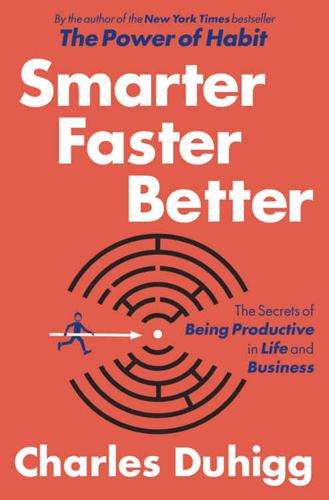
Smarter Faster Better: The Secrets of Being Productive in Life and Business
by
Charles Duhigg
Published 8 Mar 2016
Sullivan and Michael Lewis, “Contextual Determinants of Anger and Other Negative Expressions in Young Infants,” Developmental Psychology 39, no. 4 (2003): 693. freedom to choose Leotti and Delgado, “Inherent Reward of Choice.” Psychological Science in 2011 Ibid. autonomy and self-determination Erika A. Patall, Harris Cooper, and Jorgianne Civey Robinson, “The Effects of Choice on Intrinsic Motivation and Related Outcomes: A Meta-Analysis of Research Findings,” Psychological Bulletin 134, no. 2 (2008): 270; Deborah J. Stipek and John R. Weisz, “Perceived Personal Control and Academic Achievement,” Review of Educational Research 51, no. 1 (1981): 101–37; Steven W. Abrahams, “Goal-Setting and Intrinsic Motivation: The Effects of Choice and Performance Frame-of-Reference” (PhD diss., Columbia University, 1989); Teresa M.

Machine, Platform, Crowd: Harnessing Our Digital Future
by
Andrew McAfee
and
Erik Brynjolfsson
Published 26 Jun 2017
Ruger et al., “The Supreme Court Forecasting Project: Legal and Political Science Approaches to Predicting Supreme Court Decisionmaking,” Columbia Law Review 104 (2004): 1150–1210, http://sites.lsa.umich.edu/admart/wp-content/uploads/sites/127/2014/08/columbia04.pdf. 41 A team led by psychologist William Grove: William M. Grove et al., “Clinical versus Mechanical Prediction: A Meta-analysis,” Psychological Assessment 12, no. 1 (2000): 19–30, http://zaldlab.psy.vanderbilt.edu/resources/wmg00pa.pdf. 41 “the clinicians received more data”: Ibid. 41 “There is no controversy”: Paul E. Meehl, “Causes and Effects of My Disturbing Little Book,” Journal of Personality Assessment 50, no. 3 (1986): 370–75, http://www.tandfonline.com/doi/abs/10.1207/s15327752jpa5003_6. 42 Working with the US Census Bureau: Erik Brynjolfsson and Kristina McElheran, “Data in Action: Data-Driven Decision Making in US Manufacturing,” 2016, https://papers.ssrn.com/sol3/papers2.cfm?

The Big Sort: Why the Clustering of Like-Minded America Is Tearing Us Apart
by
Bill Bishop
and
Robert G. Cushing
Published 6 May 2008
"Modernization, Cultural Change, and the Persistence of Traditional Values." American Sociological Review 65 (February 2000). Inglehart, Ronald, and Christian Welzel. Modernization, Cultural Change, and Democracy: The Human Development Sequence. New York: Cambridge University Press, 2005. Isenberg, Daniel J. "Group Polarization: A Critical Review and Meta-Analysis." Journal of Personality and Social Psychology 50, no. 6 (1986). Jacobs, Jane. Cities and the Wealth of Nations. New York. Vintage Books, 1985. ———. The Death and Life of Great American Cities. New York: Random House, 1961. ———. The Economy of Cities. New York: Vintage Books, 1970. Jacobson, Gary C.

A People's History of Poverty in America
by
Stephen Pimpare
Published 11 Nov 2008
Conference of Mayors, 41 percent of homeless Americans were single men; 40 percent were families with children; two-thirds were single-parent families; over one in five were mentally disabled; 10 percent were veterans (other studies show 25 percent or more); and almost one-third were drug- or alcohol-dependent. Fully half were African American.56 One meta-analysis of sixty surveys conducted during the 1980s found that, on average, between one-fourth and one-third of all homeless people had been in a psychiatric hospital, undergone detox, had a current mental illness or alcohol addiction, or described themselves as having no friends. Over 40 percent had been in jail, prison, or both.

Happy City: Transforming Our Lives Through Urban Design
by
Charles Montgomery
Published 12 Nov 2013
The test consists of ten scales: Hypochondriasis, Depression, Hysteria, Psychopathic Deviate, Masculinity/Femininity, Paranoia, Psychasthenia, Schizophrenia, Hypomania, and Social Introversion. See Twenge, Jean M., “Birth Cohort Increases in Psychopathology Among Young Americans, 1938–2007: A Cross-Temporal Meta-analysis of the MMPI,” Clinical Psychology Review, 2010: 145–54. One in ten Americans: Olfson, Mark, and Steven C. Marcus, “National Patterns in Antidepressant Medication Treatment,” Archives of General Psychiatry, 2009: 848–56. “correlates of subjective well-being”: Wilkinson, Will, “In Pursuit of Happiness Research: Is it Reliable?
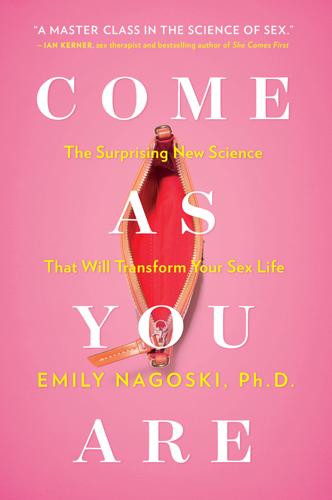
Come as You Are: The Surprising New Science That Will Transform Your Sex Life
by
Emily Nagoski Ph.d.
Published 3 Mar 2015
“An Item-Response Theory Analysis of Self-Report Measures of Adult Attachment.” Journal of Personality and Social Psychology 78, no. 2 (2000): 350–65. doi: 10.1037/0022-3514.78.2.350. Frühauf, Sarah, Heike Gerger, Hannah Maren Schmidt, Thomas Munder, and Jürgen Barth. “Efficacy of Psychological Interventions for Sexual Dysfunction: A Systematic Review and Meta-analysis.” Archives of Sexual Behavior 42, no. 6 (2013): 915–33. Fulu, Emma, Xian Warner, Stephanie Miedema, Rachel Jewkes, Tim Roselli, and James Lang. Why Do Some Men Use Violence Against Women and How Can We Prevent It? Quantitative Findings from the United Nations Multi-Country Study on Men and Violence in Asia and the Pacific.

Wilding: The Return of Nature to a British Farm
by
Isabella Tree
Published 2 May 2018
(August 2013) http://schaechter.asmblog.org/schaechter/2013/08/mycorrhizal-fungi-the-worlds-biggest-drinking-straws-and-largest-unseen-communication-system.html Sutton, M., et al. (eds). The European Nitrogen Assessment – Sources, Effects and Policy Perspectives (Cambridge University Press, 2011) Van Groenigen, J. W., Lubbers I. M., et al. ‘Earthworms increase plant production: a meta-analysis’. Scientific Reports , vol. 4, article no. 6365 (2014) Woods-Segura, James. ‘Rewilding – an investigation of its effects on earthworm abundance, diversity and their provision of soil ecosystem services’. MSc thesis, Centre for Environmental Policy, Faculty of Natural Sciences, Imperial College London.

Extreme Economies: Survival, Failure, Future – Lessons From the World’s Limits
by
Richard Davies
Published 4 Sep 2019
(eds.), Social Capital: A Multifaceted Perspective (Washington, DC: World Bank). Stephen, A. M. M. (2015), Stephen of Linthouse: A Shipbuilding Memoir 1950–1983 (Glasgow: IESIS). Valtorta, N. K., Kanaan, M., Gilbody, S., et al. (2016), ‘Loneliness and Social Isolation as Risk Factors for Coronary Heart Disease and Stroke: Systematic Review and Meta-analysis of Longitudinal Observational Studies’, Heart, 102, 1009–16. Wainwright, O. (2018), ‘Charles Rennie Mackintosh: “He Was Doing Art Deco Before It Existed”’, Guardian, 7 June. Walker, F. (2001), The Song of the Clyde: A History of Clyde Shipbuilding (Edinburgh: John Donald). Walpole, S. (1878), A History of England from the Conclusion of the Great War in 1815.
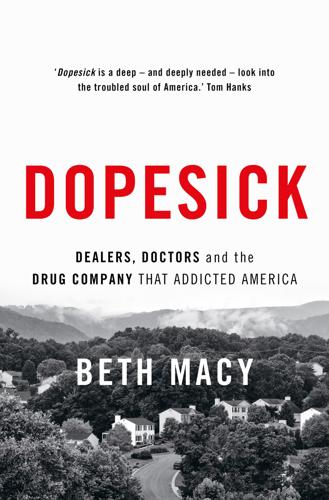
Dopesick: Dealers, Doctors and the Drug Company That Addicted America
by
Beth Macy
Published 4 Mar 2019
Forty to 60 percent of addicted opioid users: George E. Woody, “Advances in the Treatment of Opioid Use Disorders,” National Institutes of Health, Jan. 27, 2017: https://www.ncbi.nlm.nih.gov/pmc/articles/PMC5288680/#ref-1; M. J. Fleury et al., “Remission from Substance Use Disorders: A Systematic Review and Meta-Analysis,” Drug and Alcohol Dependence, Nov. 1, 2016; studies interpreted by Harvard Medical School’s John Kelly, author interview, Aug. 31, 2017. “Among the remedies which it has pleased”: Meier, Pain Killer, 42. makers of the painkiller Talwin: C. Baum, J. P. Hsu, and R. C. Nelson, “The Impact of the Addition of Naloxone on the Use and Abuse of Pentazocine,” Public Health, July-August 1987: 426–29.

Tenants: The People on the Frontline of Britain's Housing Emergency
by
Vicky Spratt
Published 18 May 2022
Available at housingevidence.ac.uk/wp-content/uploads/2018/08/R2018_06_01_Frustrated_Housing_Aspirations_of_Gen_Rent.pdf what renting is actually doing: Amy Clair and Amanda Hughes, ‘Housing and Health: New Evidence Using Biomarker Data’, Journal of Epidemiology and Community Health 73:3 (2019), 256–62. what this protein can tell us: Amanda Hughes et al., ‘Unemployment and Inflammatory Markers in England, Wales and Scotland, 1998–2012: Meta-analysis of Results from 12 Studies’, Brain, Behavior, and Immunity 64 (2017), 91–102. ‘Larger, more spacious homes … people living in detached houses’: Amy Clair, ‘Homes, health, and COVID-19: how poor housing adds to the hardship of the coronavirus crisis’, Social Market Foundation, 2 April 2020, www.smf.co.uk/commentary_podcasts/homes-health-and-covid-19-how-poor-housing-adds-to-the-hardship-of-the-coronavirus-crisis/ ‘The challenges brought on by Covid-19 … particularly affecting women and children’: Ibid.

What Technology Wants
by
Kevin Kelly
Published 14 Jul 2010
Cataloged library with index (at Alexandria), a way to search recorded information 1403 Collaborative encyclopedia, a pooling of knowledge from more than one person 1590 Controlled experiment, used by Francis Bacon, wherein one changes a single variable in a test 1665 Necessary repeatability, Robert Boyle’s idea that results of an experiment must be repeatable to be valid 1752 Peer-review-refereed journal, adding a layer of confirmation and validation over shared knowledge 1885 Blinded, randomized design, a way to reduce human bias; randomness as a new kind of information 1934 Falsifiable testability, Karl Popper’s notion that any valid experiment must have some testable way it can fail 1937 Controlled placebo, a refinement in experiments to remove the effect of biased knowledge of the participant 1946 Computer simulations, a new way of making a theory and generating data 1952 Double-blind experiment, a further refinement to remove the effect of knowledge of the experimenter 1974 Meta-analysis, a second-level analysis of all previous analysis in a given field Together these landmark innovations create the modern practice of science. (I am ignoring various alternative claims of priority because for my purposes the exact dates don’t matter.) A typical scientific discovery today will rely on facts and a falsifiable hypothesis; be tested in repeatable, controlled experiments, perhaps with placebos and double-blind controls; and be reported in a peer-reviewed journal and indexed in a library of related reports.

Flow: The Psychology of Optimal Experience
by
Mihaly Csikszentmihalyi
Published 1 Jul 2008
The first two quotations are from Csikszentmihalyi (1975), p. 129, the next two from ibid., p. 136. The ESM study that looks at how much flow American workers report on their job and in leisure was reported in Csikszentmihalyi & LeFevre (1987, 1989) and LeFevre (1988). Dissatisfaction. The low percentages of dissatisfied workers were computed by a meta-analysis performed in 1980 on 15 national surveys between 1972 and 1978; see Argyle (1987, p. 32). Our studies of American workers. In addition to the ESM studies, here I am drawing on data I have collected over a period of five years (1984–88) on about 400 managers, from different companies and all parts of the country, who have attended the Vail Management Seminars organized by the Office of Continuing Education of the University of Chicago.
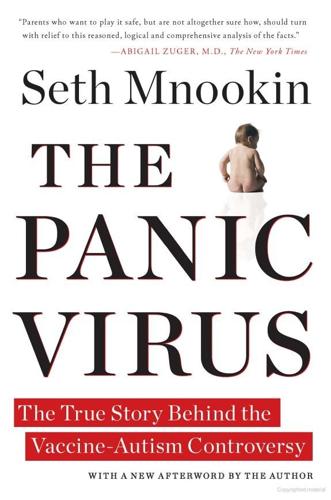
The Panic Virus: The True Story Behind the Vaccine-Autism Controversy
by
Seth Mnookin
Published 3 Jan 2012
American Journal of Public Health 2008;98(2): 244–53. ———. “The Pertussis Vaccine Controversy in Great Britain, 1974–1986.” Vaccine 2003;21(25–26): 4003–10. Bakir, F. “Methylmercury Poisoning in Iraq.” Science 1973;181(4096): 230–41. Balicer, Ran, et al. “Is Childhood Vaccination Associated with Asthma? A Meta-Analysis of Observational Studies.” Pediatrics 2007;120(5): e1269–77. Ball, Philip. “Predicting Human Activity.” Nature 2010;465: 692. Banerjee, Abhijit. “A Simple Model of Herd Behavior.” The Quarterly Journal of Economics 1992;107(3): 797–817. Barquet, Nicolau, and Pere Domingo. “The Triumph over the Most Terrible of the Ministers of Death.”
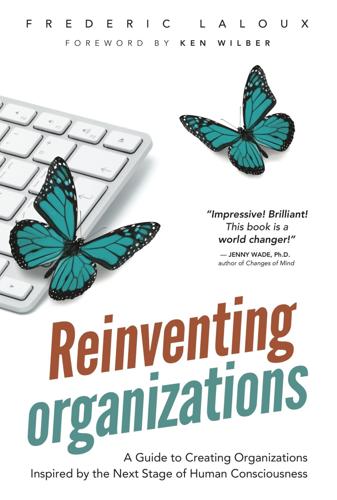
Reinventing Organizations: A Guide to Creating Organizations Inspired by the Next Stage of Human Consciousness
by
Frederic Laloux
and
Ken Wilber
Published 9 Feb 2014
Our knowledge about the stages of human development is now extremely robust. Two thinkers in particular—Ken Wilber and Jenny Wade—have done remarkable work comparing and contrasting all the major stage models, and have discovered strong convergence. … The way I portray the stages borrows mostly from Wade’s and Wilber’s meta-analysis, touching briefly upon different facets of every stage—the worldview, the needs, the cognitive development, the moral development.” Laloux rightly invites us to be extremely careful what we mean by “a stage.” As Howard Gardner made popular, and virtually every developmentalist agrees, there is not just one line of development with its stages or levels, but multiple lines or multiple intelligences, and each of those lines are quite different, with different characteristics and different stage structures.
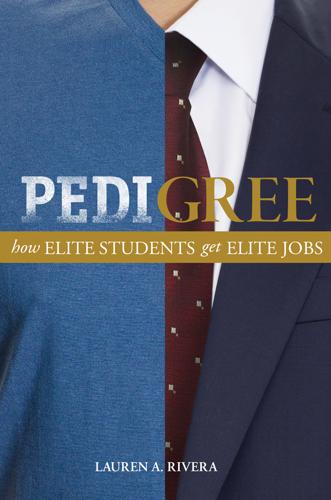
Pedigree: How Elite Students Get Elite Jobs
by
Lauren A. Rivera
Published 3 May 2015
Monroe, Kristen, Saba Ozyurt, Ted Wrigley, and Amy Alexander. 2008. “Gender Equality in Academia: Bad News from the Trenches, and Some Possible Solutions.” Perspectives on Politics 6:215–33. Montoya, Matthew, Robert Horton, and Jeffrey Kirchner. 2008. “Is Actual Similarity Necessary for Attraction? A Meta-Analysis of Actual and Perceived Similarity.” Journal of Social and Personal Relationships 25:899–922. Morgan, Harriet. 1990. “Sponsored and Contest Mobility Revisited: An Examination of Britain and the USA Today.” Oxford Review of Education 16:39–54. Morton, Samuel. 1839. Crania Americana; Or a Comparative View of the Skulls of Various Aboriginal Nations of North and South America.
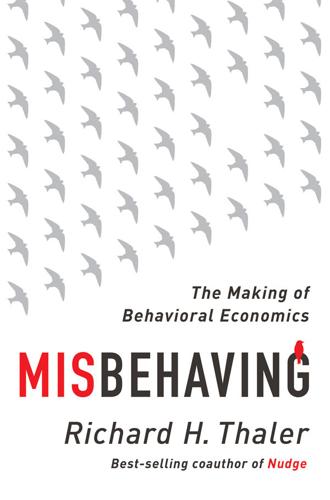
Misbehaving: The Making of Behavioral Economics
by
Richard H. Thaler
Published 10 May 2015
“Capital Market Seasonality: The Case of Stock Returns.” Journal of Financial Economics 3, no. 4: 379–402. Russell, Thomas, and Richard H. Thaler. 1985. “The Relevance of Quasi Rationality in Competitive Markets.” American Economic Review 75, no. 5: 1071–82. Sally, David. 1995. “Conversation and Cooperation in Social Dilemmas: A Meta-Analysis of Experiments from 1958 to 1992.” Rationality and Society 7, no. 1: 58–92. Samuelson, Paul A. 1954. “The Pure Theory of Public Expenditure.” Review of Economics and Statistics 36, no. 4: 387–9. ———. 1963. “Risk and Uncertainty: A Fallacy of Large Numbers.” Scientia 98, no. 612: 108. ———. 1979.
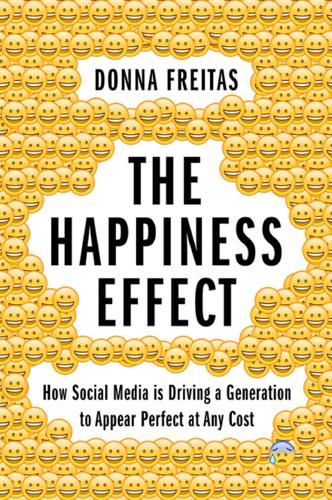
The Happiness Effect: How Social Media Is Driving a Generation to Appear Perfect at Any Cost
by
Donna Freitas
Published 13 Jan 2017
See National Crime Prevention Council and Harris Interactive, “Teens and Cyberbullying: Executive Summary of a Report on Research,” February 28, 2007. 4.For more on this study, see Sarah Konrath, Edward H. O’Brien, and Courtney Hsing, “Changes in Dispositional Empathy in American College Students over Time: A Meta-Analysis,” Personality and Social Psychology Review 15, no. 2 (2011): 180–198. 5.For many teens, there is a fine line between bullying and plain old drama, with cyberbullying occupying another category altogether. To read more on these distinctions and the importance of this terminology (and the ways that adults today tend to lump everything under the heading of “bullying” and “cyberbullying,” see Alice Marwick and danah boyd’s article, “‘It’s just drama’: teen perspectives on conflict and aggression in a networked era,” in Journal of Youth Studies 17, no. 9 (2014): 1187–1204.
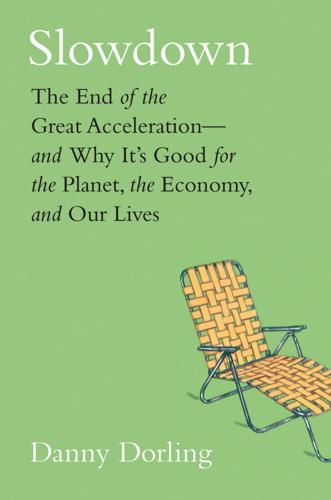
Slowdown: The End of the Great Acceleration―and Why It’s Good for the Planet, the Economy, and Our Lives
by
Danny Dorling
and
Kirsten McClure
Published 18 May 2020
“Activated Sludge—100 Years and Counting,” International Water Association Conference, June 2014, Essen, Germany, http://www.iwa100as.org/history.php. 22. Max Roser, “Human Height,” OurWorldInData.org, 2016, https://ourworldindata.org/human-height/. 23. Lisa Trahan, Karla Stuebing, Merril Hiscock, and Jack Fletcher, “The Flynn Effect: A Meta-analysis,” Psychological Bulletin 140, no. 5 (2014): 1332–60, https://www.ncbi.nlm.nih.gov/pmc/articles/PMC4152423/. 24. Ariane de Gayardon, Claire Callender, KC Deane, and Stephen DesJardins, “Graduate Indebtedness: Its Perceived Effects on Behaviour and Life Choices—A Literature Review” (working paper no. 38, Centre for Global Higher Education, June 2018), https://www.researchcghe.org/publications/working-paper/graduate-indebtedness-its-perceived-effects-on-behaviour-and-life-choices-a-literature-review/. 25.

Overwhelmed: Work, Love, and Play When No One Has the Time
by
Brigid Schulte
Published 11 Mar 2014
Focusing on grit becomes more about them fulfilling their own potential rather than honing showy skills that look spectacular on a college admission application.” That’s because achievement, all that showy résumé building, does not necessarily lead to happiness. Instead, she says, feeling positive and happy in the first place is what fosters achievement. A meta-analysis of 225 studies on achievement, success, and happiness by the psychologist Sonja Lyubomirsky of the University of California, Riverside, found that happy people, those who are comfortable in their own skin, are more likely to have “fulfilling marriages and relationships, high incomes, superior work performance, community involvement, robust health and a long life”—in other words, success.13 And that positive, happy state, she says, arises from grit.

Evil Genes: Why Rome Fell, Hitler Rose, Enron Failed, and My Sister Stole My Mother's Boyfriend
by
Barbara Oakley Phd
Published 20 Oct 2008
Alessandro Bertolino et al., “Common Pattern of Cortical Pathology in Childhood-Onset and Adult-Onset Schizophrenia as Identified by Proton Magnetic Resonance Spectroscopic Imaging,” American Journal of Psychiatry 155, no. 10 (1998): 1376–84. 48. John F. Clarkin and Michael I. Posner, “Defining Mechanisms of Borderline Personality Disorder,” Psychopathology 38 (2005): 56–63; A. C. Ruocco, “The Neuropsychology of Borderline Personality Disorder: A Meta-Analysis and Review,” Psychiatry Research 137, no. 3 (2005): 191–202. 49. Wilkinson-Ryan and Westen, “Identity Disturbance,” citing S. Akhtar, Broken Structures: Severe Personality Disorders and Their Treatment (Northvale, NJ: Jason Aronson, Inc., 1992). 50. Putnam and Silk, “Emotion Dysregulation.” 51.

People, Power, and Profits: Progressive Capitalism for an Age of Discontent
by
Joseph E. Stiglitz
Published 22 Apr 2019
For role of diet in obesity, see https://www.hsph.harvard.edu/obesity-prevention-source/obesity-causes/diet-and-weight/. For an example of an academic study linking sugary drinks and weight, see Lenny R. Vartanian, Marlene B. Schwartz, and Kelly D. Brownell, “Effects of Soft Drink Consumption on Nutrition and Health: A Systematic Review and Meta-Analysis,” American Journal of Public Health 97 [2007]: 667–75.) 38.Perhaps the best website for data on inequality is that of inequality.org. There is some controversy both about the sources of wealth inequality and its future evolution. Thomas Piketty, in his justly praised 2014 book Capital in the 21st Century (Cambridge, MA: The Belknap Press of Harvard University Press) has argued, for instance, that the passing on of inheritances from one generation to the next leads to ever-increasing inequality.

The Future Won't Be Long
by
Jarett Kobek
Published 15 Aug 2017
Suicide rates, always high after the installation of worldwide euthanasia centers in 2731, skyrocket among those who visit the past. The biggest such center, located on the south side of Nueva Washington Square between Wooster Street and South Fifth Avenue, reports a massive spike. The Time Travel Commission takes notice. Many studies are conducted. Following a meta-analysis, it emerges that the only demographic of time travelers with a statistically significant variation away from suicide is the Jews. Theories are floated, several containing an atavistic resurgence of anti-Semitism, but the one with the most currency suggests that the Jews are culturally inculcated to think of history as a horror with no answer but survival.
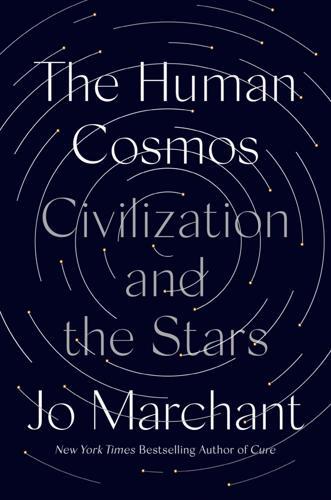
The Human Cosmos: A Secret History of the Stars
by
Jo Marchant
Published 15 Jan 2020
sensitive to lunar light: For example, Maxim Gorbunov and Paul Falkowski, “Photoreceptors in the Cnidarian Hosts Allow Symbiotic Corals to Sense Blue Moonlight,” Limnology and Oceanography 47 (2002): 309–15. Arnold Lieber, who claimed: Arnold Lieber, The Lunar Effect: Biological Tides and Human Emotions (New York: Doubleday, 1978). the term “lunatic”: Raible et al., “Monthly Rhythms and Clocks.” furious backlash: James Rotton and Ivan Kelly, “Much Ado about the Full Moon: A Meta-analysis of Lunar-lunacy Research,” Psychological Bulletin 97 (1985): 286–306; Daniel Myers, “Gravitational Effects of the Period of High Tides and the New Moon on Lunacy,” Journal of Emergency Medicine 13 (1995): 529–32; Foster and Roenneberg, “Human Responses”; Hal Arkowitz and Scott Lilienfeld, “Lunacy and the Full Moon: Does a Full Moon Really Trigger Strange Behavior?

Make Your Own Job: How the Entrepreneurial Work Ethic Exhausted America
by
Erik Baker
Published 13 Jan 2025
In the decades since Clinton left office, a vast social-scientific literature has failed to find rigorous statistical evidence of the effectiveness of microfinance in promoting either economic development or women’s empowerment. “Overall, it is widely acknowledged that no well-known study robustly shows any strong impacts of microfinance,” as one 2011 meta-analysis put it.63 The effects of one more Clinton-era initiative to promote entrepreneurship were more palpable: the War on Crime. While the intensification of policing and incarceration in the 1990s had myriad causes, one objective that its proponents often emphasized was the need to crack down on forms of informal work—especially the drug trade—that allowed the “underclass” to subsist without entering the formal labor market.

Rationality: From AI to Zombies
by
Eliezer Yudkowsky
Published 11 Mar 2015
The last sentence is important—it’s a much weaker claim of disagreement than, “Oh, I see the optical illusion—I understand why you think it’s C, of course, but the real answer is B.” So the conforming subjects in these experiments are not automatically convicted of irrationality, based on what I’ve described so far. But as you might expect, the devil is in the details of the experimental results. According to a meta-analysis of over a hundred replications by Smith and Bond:2 Conformity increases strongly up to 3 confederates, but doesn’t increase further up to 10–15 confederates. If people are conforming rationally, then the opinion of 15 other subjects should be substantially stronger evidence than the opinion of 3 other subjects.
…
Paul Crowley reminds me to note that when subjects can respond in a way that will not be seen by the group, conformity also drops, which also argues against an Aumann interpretation. * 1. Solomon E. Asch, “Studies of Independence and Conformity: A Minority of One Against a Unanimous Majority,” Psychological Monographs 70 (1956). 2. Rod Bond and Peter B. Smith, “Culture and Conformity: A Meta-Analysis of Studies Using Asch’s (1952b, 1956) Line Judgment Task,” Psychological Bulletin 119 (1996): 111–137. 118 On Expressing Your Concerns The scary thing about Asch’s conformity experiments is that you can get many people to say black is white, if you put them in a room full of other people saying the same thing.
…
Benson, Peter L., Stuart A. Karabenick, and Richard M. Lerner. “Pretty Pleases: The Effects of Physical Attractiveness, Race, and Sex on Receiving Help.” Journal of Experimental Social Psychology 12 (5 1976): 409–415. doi:10.1016/0022-1031(76)90073-1. Bond, Rod, and Peter B. Smith. “Culture and Conformity: A Meta-Analysis of Studies Using Asch’s (1952b, 1956) Line Judgment Task.” Psychological Bulletin 119 (1996): 111–137. Bostrom, Nick. “A History of Transhumanist Thought.” Journal of Evolution and Technology 14, no. 1 (2005): 1–25. http://www.nickbostrom.com/papers/history.pdf. ———. “Existential Risks: Analyzing Human Extinction Scenarios and Related Hazards.”
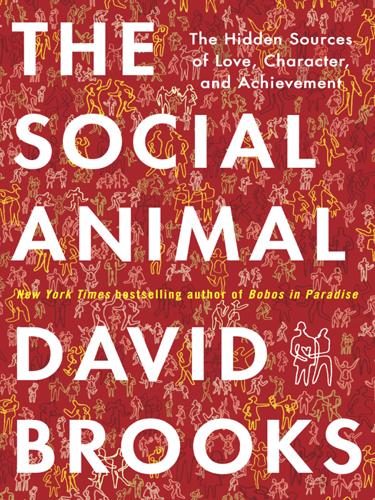
The Social Animal: The Hidden Sources of Love, Character, and Achievement
by
David Brooks
Published 8 Mar 2011
“I don’t think there is any single thing in an impoverished environment that is responsible for the deleterious effects of poverty.” Turkheimer had spent years trying to find which parts of growing up with a poor background produced the most negative results. He could easily show the total results of poverty, but when he tried to measure the impact of specific variables, he found there was nothing there. He conducted a meta-analysis of forty-three studies that scrutinized which specific elements of a child’s background most powerfully shaped cognitive deficiencies. The studies failed to demonstrate the power of any specific variable, even though the total effect of all the variables put together was very clear. That doesn’t mean you do nothing to alleviate the effects of poverty.
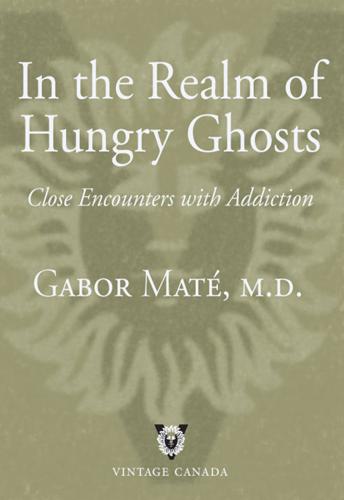
In the Realm of Hungry Ghosts: Close Encounters With Addiction
by
Gabor Mate
and
Peter A. Levine
Published 5 Jan 2010
“Recovering Church: The 2005 Greenfield Lectures,” St John the Baptist Episcopal Church, Portland, Oregon; http://www.st-john-the-baptist.org/Greenfield_lectures.htm. CHAPTER 12 FROM VIETNAM TO “RAT PARK” 1. G.M. Aronoff, “Opioids in Chronic Pain Management: Is There a Significant Risk of Addiction?” Current Review of Pain 4(2) (2000): 112–21. 2. A.D. Furlan, “Opioids for Chronic Noncancer Pain: A Meta-analysis of Effectiveness and Side Effects,” CMAJ 174(11) (23 May 2006): 1589–94. 3. S.R. Ytterberg et al., “Codeine and Oxycodone Use in Patients with Chronic Rheumatic Disease Pain,” Arthritis and Rheumatism 14(9) (September 1998): 1603–12. 4. L. Dodes, The Heart of Addiction (New York: HarperCollins, 2002), 73. 5.
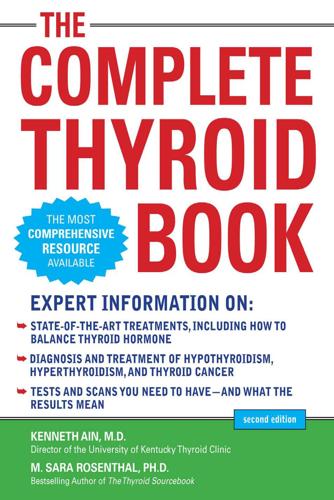
The Complete Thyroid Book
by
Kenneth Ain
and
M. Sara Rosenthal
Published 1 Mar 2005
Gharib, H. “Changing Concepts in the Diagnosis and Management of Thyroid Nodules.” Endocrinology and Metabolism Clinics of North America 26, no. 4 (1997): 777–800. Grozinsky-Glasberg, S., et al. “Thyroxine-Triiodothyronine Combination Therapy Versus Thyroxine Monotherapy for Clinical Hypothyroidism: Meta-Analysis of Randomized Controlled Trials.” Journal of Clinical Endocrinology and Metabolism (2006) 91:2592–99. Gruters, A., H. Biebermann, and H. Krude. “Neonatal Thyroid Disorders.” Hormone Research 59, suppl. 1 (2003): 24–29. Hegedus, L., S. J. Bonnema, and F. N. Bennedbaek. “Management of Simple Nodular Goiter: Current Status and Future Perspectives.”

The Rational Optimist: How Prosperity Evolves
by
Matt Ridley
Published 17 May 2010
ISAAA 2009. The Dawn of a New Era: Biotech Crops in India. ISAAA Brief 39, 2009: http://www.isaaa.org/resources/publications/downloads/The-Dawn-of-a-New-Era.pdf. p. 152 ‘the use of insecticides is down by as much as 80 per cent’. Marvier M., McCreedy, C., Regetz, J. and Kareiva, P. 2007. A meta-analysis of effects of Bt cotton and maize on nontarget invertebrates. Science 316:1475–7; also Wu, K.-M. et al. 2008. Suppression of cotton bollworm in multiple crops in China in areas with Bt Toxin-containing cotton. Science 321:1676–8 (doi: 10.1126/science.1160550). p. 152 ‘the leaders of the organic movement locked themselves out of a new technology’.

Terms of Service: Social Media and the Price of Constant Connection
by
Jacob Silverman
Published 17 Mar 2015
Each exchange requires a complex cost-benefit analysis, one which, for anyone who has experienced this for himself, may seem wildly disproportionate to the conversation at hand. Just as metadata (that is, the number of retweets or likes) can matter more than the message itself, this process of meta-analysis, of deciphering the uncertain power dynamic between two people, can seem more important than the conversation on which it’s based. PHOTOGRAPHY AS A MEANS OF CONSUMPTION Maybe Alford would be more comfortable with photographs, which, in their vivid particularity, seem to demand less of a response.

How to Make a Spaceship: A Band of Renegades, an Epic Race, and the Birth of Private Spaceflight
by
Julian Guthrie
Published 19 Sep 2016
Carmack pored over NASA publications from the early sixties and seventies, impressed by the nuts-and-bolts descriptions of what worked and didn’t work for the Mercury, Gemini, and Apollo programs. The early NASA studies were dazzling in their details, right down to diagrams of welding procedures. NASA publications from more recent times proved the opposite: full of meta-analysis of surveys of simulations. During his embryonic phase of rocket study, Carmack also looked online for tutorials and signed up for all the right mailing lists. When Carmack got to the point where he felt like he could hold an intelligent conversation with industry types, he began attending space conferences.

The Matter of the Heart: A History of the Heart in Eleven Operations
by
Thomas Morris
Published 31 May 2017
David Reekie, ‘Federico Benetti, champion of beating heart surgery’, cited 20 April 2016: http://cxvascular.com/cn-archives/cardiovascular-news-issue-2/federico-benetti-champion-of-beating-heart-surgery 91. Harold L. Lazar, ‘Should off-pump coronary artery bypass grafting be abandoned?’ Circulation 128, no. 4 (2013), 406–13 92. A. C. Deppe et al., ‘Current evidence of coronary artery bypass grafting off-pump versus on-pump: a systematic review with meta-analysis of over 16,900 patients investigated in randomized controlled trials’, European Journal of Cardio-Thoracic Surgery 49, no. 4 (2016), 1031–41 93. ‘Interview with René G. Favaloro’, in Stoney (ed.), op. cit., 367 94. ‘La última carta de Favaloro antes de morir: René Favaloro, Fernando de la Rúa, Cristina Kirchner – Infobae’, cited 10 April 2016: http://infobae.com/2013/10/09/1514794-la-ultima-carta-favaloro-antes-morir 8.
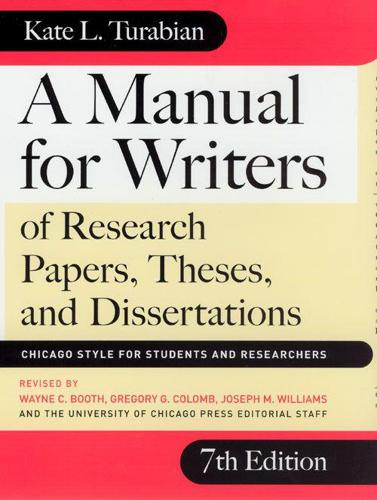
A Manual for Writers of Research Papers, Theses, and Dissertations, Eighth Edition: Chicago Style for Students and Researchers
by
Kate L. Turabian
Published 14 Apr 2007
If the table or figure consists of material that cannot be presented in print form, such as a large data set or a multimedia file, treat it as an appendix, as described in A.2.3. 26.1.3 Source Lines You must acknowledge the sources of any data you use in tables and figures that you did not collect yourself. You must do this even if you present the data in a new form—for example, you create a graph based on data originally published in a table, add fresh data to a table from another source, or combine data from multiple sources by meta-analysis. Treat a source line as a footnote to a table (see 26.2.7) or as part of a caption for a figure (see 26.3.2). Introduce the source line with the word Source(s) (capitalized, in italics, followed by a colon). If the source line runs onto more than one line, the runovers should be flush left, single-spaced.

Fancy Bear Goes Phishing: The Dark History of the Information Age, in Five Extraordinary Hacks
by
Scott J. Shapiro
Nigerian Astronaut: Katharine Trendacosta, “Here’s the Best Nigerian Prince Email Scam in the Galaxy,” Gizmodo, February 12, 2016, https://gizmodo.com/we-found-the-best-nigerian-prince-email-scam-in-the-gal-1758786973. “loss averse”: Amos Tversky and Daniel Kahneman, “Loss Aversion in Riskless Choice: A Reference-Dependent Model,” The Quarterly Journal of Economics, November 1991. Jack and Jill example from Kahneman, Thinking, Fast and Slow, 275. promise gains: Teodor Sommestad and Henrik Karlzén, “A Meta-Analysis of Field Experiments on Phishing Susceptibility” (2019 APWG Symposium on Electronic Crime Research [eCrime]). inherent ridiculousness: Cormac Herley, “Why Do Nigerian Scammers Say They Are from Nigeria?,” Microsoft, www.microsoft.com/en-us/research/wp-content/uploads/2016/02/WhyFromNigeria.pdf.

American Girls: Social Media and the Secret Lives of Teenagers
by
Nancy Jo Sales
Published 23 Feb 2016
“Contribution of Media to the Normalization and Perpetuation of Domestic Violence.” Austin Journal of Psychiatry and Behavioral Science 1, no. 4 (May 16, 2014). Konrath, Sara H., Edward H. O’Brien, and Courtney Hsing. “Changes in Dispositional Empathy in American College Students over Time: A Meta-Analysis.” Personality and Social Psychology Review 15, no. 2 (2011): 180–98. Krischer, Hayley. “Meet the Instamom, a Stage Mother for Social Media.” New York Times, November 14, 2015. Lambert, Molly. “Nicki Minaj Reclaims the Twerk in the ‘Anaconda’ Music Video.” Grantland blog. Entry posted August 20, 2014. http://grantland.com/hollywood-prospectus/nicki-minaj-reclaims-the-twerk-in-the-anaconda-music-video/.

Alone Together
by
Sherry Turkle
Published 11 Jan 2011
Today’s generation scored about 40 percent lower in empathy than their counterparts did twenty or thirty years ago. Sara Konrath, a researcher at the University of Michigan’s Institute for Social Research, conducted, with University of Michigan graduate student Edward O’Brien and undergraduate student Courtney Hsing, a meta-analysis that looked at data on empathy, combining the results of seventy-two different studies of American college students conducted between 1979 and 2009. Compared to college students of the late 1970s, the study found, college students today are less likely to agree with statements such as “I sometimes try to understand my friends better by imagining how things look from their perspective” and “I often have tender, concerned feelings for people less fortunate than me.”

Beautiful Architecture: Leading Thinkers Reveal the Hidden Beauty in Software Design
by
Diomidis Spinellis
and
Georgios Gousios
Published 30 Dec 2008
Principles, Properties, and Structures Late in this book’s review process, one of the reviewers asked us to provide our personal opinion, in the form of commentary, on what a reader could learn from each chapter. The idea was intriguing, but we did not like the fact that we would have to second-guess the chapter authors. Asking the authors themselves to provide a meta-analysis of their writings would lead to a Babel tower of definitions, terms, and architectural constructs guaranteed to confuse readers. What was needed was a common vocabulary of architectural terms; thankfully, we realized we already had that in our hands. In the Foreword, Stephen Mellor discusses seven principles upon which all beautiful architectures are based.
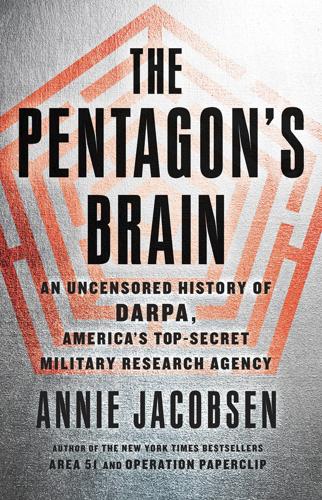
The Pentagon's Brain: An Uncensored History of DARPA, America's Top-Secret Military Research Agency
by
Annie Jacobsen
Published 14 Sep 2015
“Canadian Soldiers Resume Mentoring Afghan National Army after Turbulent Spring.” Military World, October 28, 2010. “Moon Stirs Scare of Missile Attack.” Associated Press, December 7, 1960. Newman, Kevin. “Cancer Experts Puzzled by Monkey Virus.” ABC News, March 12, 1994. Ngo, Anh D., et al. “Association Between Agent Orange and Birth Defects: Systematic Review and Meta-Analysis.” Oxford Journal of Epidemiology, February 13, 2006. “1991 Gulf War Chronology.” USA Today: World, September 3, 1996. Nordland, Rod. “Iraq Swears by a Bomb Detector U.S. Sees as Useless,” New York Times, November 3, 2009. NOVA. “Transforming Warfare.” May 4, 2004. Omohundro, Steve. “Autonomous Technology and the Greater Human Good,” Journal of Experimental & Theoretical Artificial Intelligence, November 21, 2014: 303–15.

Superintelligence: Paths, Dangers, Strategies
by
Nick Bostrom
Published 3 Jun 2014
Science 324 (5932): 1298–1301. Price, Huw. 1991. “Agency and Probabilistic Causality.” British Journal for the Philosophy of Science 42 (2): 157–76. Qian, M., Wang, D., Watkins, W. E., Gebski, V., Yan, Y. Q., Li, M., and Chen, Z. P. 2005. “The Effects of Iodine on Intelligence in Children: A Meta-Analysis of Studies Conducted in China.” Asia Pacific Journal of Clinical Nutrition 14 (1): 32–42. Quine, Willard Van Orman, and Ullian, Joseph Silbert. 1978. The Web of Belief, ed. Richard Malin Ohmann, vol. 2. New York: Random House. Railton, Peter. 1986. “Facts and Values.” Philosophical Topics 14 (2): 5–31.

The Aristocracy of Talent: How Meritocracy Made the Modern World
by
Adrian Wooldridge
Published 2 Jun 2021
Allison Borroughs, the judge in the case, argued, amazingly, that giving less weight to athletics would mean that ‘Harvard would be far less competitive in Ivy League inter-collegiate sports, which would adversely impact Harvard and the student experience.’ 22 John P. Hausknecht et al., ‘Retesting in Selection: A Meta-Analysis of Practice Effects for Tests of Cognitive Ability’, Cornell University Digital Commons, 1 June 2006 23 Brian S. Connelly et al., ‘Balancing Treatment and Control Groups in Quasi-Experiments: An Introduction to Propensity Scoring’, Personnel Psychology 66 (2) (2013), pp. 407–42 24 Thomas Jefferson, ‘Notes on Virginia’, in Adrienne Koch and William Peden (eds.), The Life and Selected Writings of Thomas Jefferson (New York, The Modern Library, 1944), esp. pp. 263, 265 25 Richard J.
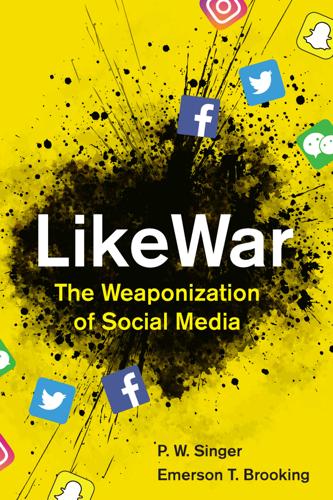
Likewar: The Weaponization of Social Media
by
Peter Warren Singer
and
Emerson T. Brooking
Published 15 Mar 2018
Billion-dollar Wall Street hedge funds are interested in any hints of unrest that might move markets. U.S. intelligence agencies are interested in signs of looming terror attacks or geopolitical shifts. For instance, North Korean missile and nuclear bomb tests have been predicted by analysts studying the correlation between past tests and social media chatter, using meta-analysis of online conversations and website visits. The world of social media is becoming so revelatory that it can even help someone to anticipate what will happen next. TRUE BELIEVER “The exponential explosion of publicly available information is changing the global intelligence system . . . It’s changing how we tool, how we organize, how we institutionalize—everything we do.”
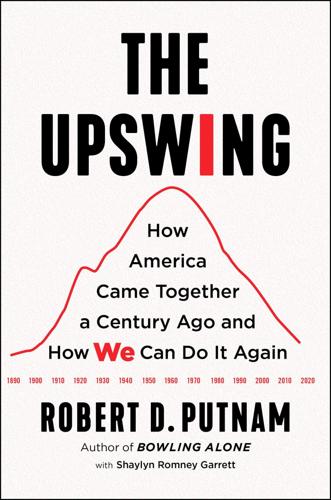
The Upswing: How America Came Together a Century Ago and How We Can Do It Again
by
Robert D. Putnam
Published 12 Oct 2020
,” Behavioral Scientist, July 24, 2018, https://behavioralscientist.org/how-would-people-behave-in-milgrams-experiment-today/. 53 Knud Larsen, “Conformity in the Asch Experiment,” Journal of Social Psychology 94 (1974): 303–4; Steven Perrin and Christopher Spencer, “The Asch Effect—A Child of Its Time?,” Bulletin of the British Psychological Society 33 (1980): 405–6; Rod Bond and Peter B. Smith, “Culture and Conformity: A Meta-Analysis of Studies Using Asch’s (1952b, 1956) Line Judgment Task,” Psychological Bulletin 119, no. 1 (January 1996): 111–37, doi:10.1037/0033-2909.119.1.111. 54 Jennifer Burns, Goddess of the Market: Ayn Rand and the American Right (Oxford: Oxford University Press, 2009); Daniel Stedman Jones, Masters of the Universe: Hayek, Friedman, and the Birth of Neoliberal Politics (Princeton: Princeton University Press, 2013); Angus Burgin, The Great Persuasion: Reinventing Free Markets Since the Depression (Cambridge, MA: Harvard University Press, 2015). 55 Rand’s quote about “brother’s keeper” comes from “The Mike Wallace Interview, Ayn Rand,” March 12, 1959, https://www.youtube.com/watch?
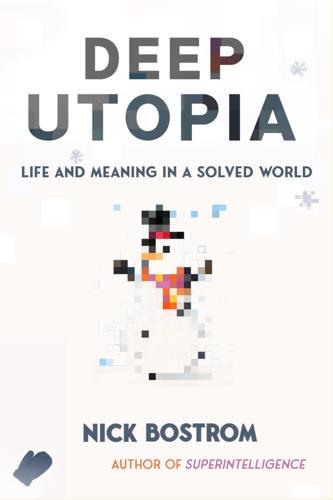
Deep Utopia: Life and Meaning in a Solved World
by
Nick Bostrom
Published 26 Mar 2024
Audi, R. 2005. “Intrinsic Value and Meaningful Life”. Philosophical Papers, 34(3), 331–355. Bacon, F. [1626] 1915. New Atlantis (A. B. Gough, Ed.). Oxford: Clarendon Press. Bartels, M. 2015. “Genetics of Wellbeing and Its Components Satisfaction with Life, Happiness, and Quality of Life: A Review and Meta-analysis of Heritability Studies”. Behavior Genetics, 45(2), 137–156. Bergeaud, A., Cette, G., & Lecat, R. 2016. “Productivity Trends in Advanced Countries between 1890 and 2012”. Review of Income and Wealth, 62(3), 420–444. Bille, T., et al. 2013. “Happiness in the arts—International evidence on artists’ job satisfaction.”

Nexus: A Brief History of Information Networks From the Stone Age to AI
by
Yuval Noah Harari
Published 9 Sep 2024
Paul Kenyon, Children of the Night: The Strange and Epic Story of Modern Romania (London: Apollo, 2021), 353–54. 2. Ibid., 356. 3. Ibid., 373–74. 4. Ibid., 357. 5. Ibid. 6. Ibid. 7. Deletant, “Securitate Legacy in Romania,” 198. 8. Marc Brysbaert, “How Many Words Do We Read per Minute? A Review and Meta-analysis of Reading Rate,” Journal of Memory and Language 109 (Dec. 2019), article 104047, doi.org/10.1016/j.jml.2019.104047. 9. Alex Hughes, “ChatGPT: Everything You Need to Know About OpenAI’s GPT-4 Tool,” BBC Science Focus, Sept. 26, 2023, www.sciencefocus.com/future-technology/gpt-3; Stephen McAleese, “Retrospective on ‘GPT-4 Predictions’ After the Release of GPT-4,” LessWrong, March 18, 2023, www.lesswrong.com/posts/iQx2eeHKLwgBYdWPZ/retrospective-on-gpt-4-predictions-after-the-release-of-gpt; Jonathan Vanian and Kif Leswing, “ChatGPT and Generative AI Are Booming, but the Costs Can Be Extraordinary,” CNBC, March 13, 2023, www.cnbc.com/2023/03/13/chatgpt-and-generative-ai-are-booming-but-at-a-very-expensive-price.html. 10.
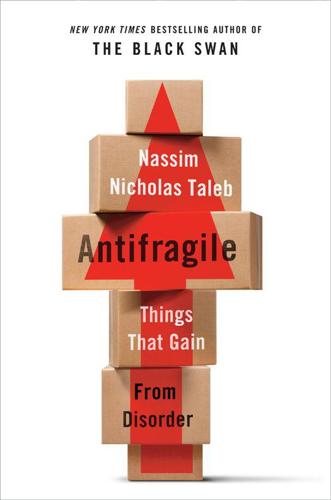
Antifragile: Things That Gain From Disorder
by
Nassim Nicholas Taleb
Published 27 Nov 2012
Specific Medical Topics Note that the concern of this author is not evidence, but rather absence of it and how researchers manage such a problem. The focus is in detecting missed convexities. Effectiveness of low-calorie sweeteners: One gets plenty of information by looking at studies by defenders with vested interests. De la Hunty et al. (2006) shows “advantages” to aspartame, with a meta-analysis, but focusing on the calorie-in calorie-out method, not overall weight gains. But reading it closely uncovers that the core is missing: “Some compensation for the substituted energy occurs but this is only about one-third of the energy replaced and is probably [emphasis mine] less than when using soft drinks sweetened with aspartame.
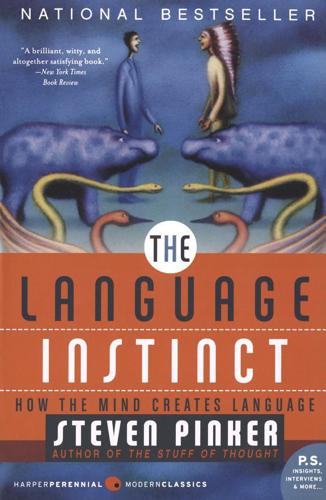
The Language Instinct: How the Mind Creates Language
by
Steven Pinker
Published 1 Jan 1994
Genetics, linguistics, and prehistory: Thinking big and thinking straight. Antiquity 72:505–527. The SLI Consortium. 2002. A genomewide scan identifies two novel loci involved in Specific Language Impairment. American Journal of Human Genetics 70:384–398. Stromswold, K. 2001. The heritability of language: A review and meta-analysis of twin and adoption studies. Language 77:647–723. Tomasello, M. 2003. Constructing a language: A usage-based theory of language acquisition. Cambridge, Mass.: Harvard University Press. van der Lely, H. K. J. 2005. Domain-specific cognitive systems: Insight from Grammatical Specific Language Impairment.
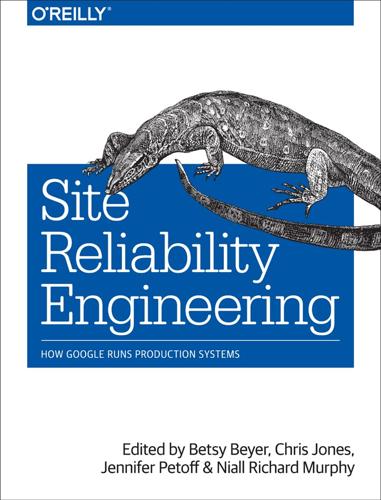
Site Reliability Engineering: How Google Runs Production Systems
by
Betsy Beyer
,
Chris Jones
,
Jennifer Petoff
and
Niall Richard Murphy
Published 15 Apr 2016
See Appendix C for a sample incident document. This living doc can be messy, but must be functional. Using a template makes generating this documentation easier, and keeping the most important information at the top makes it more usable.Retain this documentation for postmortem analysis and, if necessary, meta analysis. Clear, Live Handoff It’s essential that the post of incident commander be clearly handed off at the end of the working day. If you’re handing off command to someone at another location, you can simply and safely update the new incident commander over the phone or a video call. Once the new incident commander is fully apprised, the outgoing commander should be explicit in their handoff, specifically stating, “You’re now the incident commander, okay?”
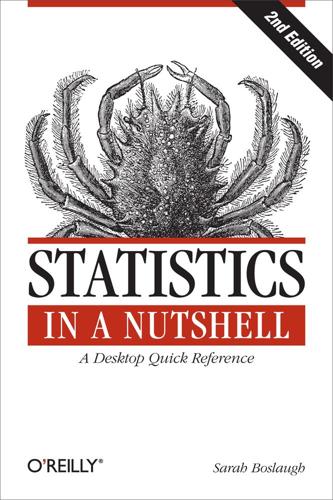
Statistics in a Nutshell
by
Sarah Boslaugh
Published 10 Nov 2012
For instance, if a drug is intended to prevent death from prostate cancer, a surrogate endpoint might be tumor shrinkage or reduction in levels of prostate-specific antigens. The problem with using surrogate endpoints is that although a treatment might be effective in producing improvement in these endpoints, it does not necessarily mean that it will be successful in achieving the clinical outcome of interest. For instance, a meta-analysis by Stefan Michiels and colleagues (listed in Appendix C) found that for locally advanced head and neck squamous-cell carcinoma, the correlation between locoregional control (a surrogate endpoint) and overall survival (the true clinical endpoint) ranged from 0.65 to 0.76 (if results had been identical for both endpoints, the correlation would have been 1.00), whereas the correlation between event-free survival (a surrogate endpoint) and overall survival ranged from 0.82 to 0.90.
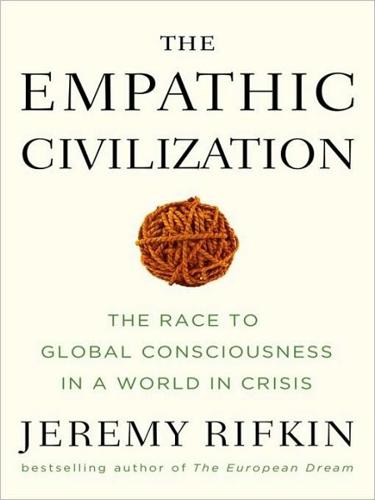
The Empathic Civilization: The Race to Global Consciousness in a World in Crisis
by
Jeremy Rifkin
Published 31 Dec 2009
Journal of Education Research Vol. 89. No. 5. 1996. pp. 289-290. 63 Twenge. Generation Me. p. 55. 64 Ibid. p. 63. 65 CBS News. The Class of 2000. Simon and Schuster eBook, 2001. p. 64. 66 Twenge, Jean M., and W. Keith Campbell. “Age and Birth Cohort Differences in Self-Esteem: A Cross-Temporal Meta-Analysis. Personality and Social Psychology Review. Vol. 5. pp. 321-344. 67 Newsom, C. R., et al. “Changes in Adolescent Response Patterns on the MMPI/MMPI-A Across Four Decades. Journal of Personality Assessment. Vol. 81. 2003. pp. 74-84. 68 Pew Research Center. “A Portrait of Generation Next: How Young People View Their Lives, Futures and Politics.”

The Transhumanist Reader
by
Max More
and
Natasha Vita-More
Published 4 Mar 2013
Heroic rescue workers who endanger their lives on a dangerous mission are admired because we assume that they are putting at risk something that most people would be very reluctant to risk, their own survival. For some three decades, economists have attempted to estimate individuals’ preferences over mortality and morbidity risk in labor and product markets. While the tradeoff estimates vary considerably between studies, one recent meta-analysis puts the median value of the value of a statistical life for prime-aged workers to about $7 million in the United States (Viscusi and Aldy 2003). A study by the EU’s Environment Directorates-General recommends the use of a value in the interval €0.9 to €3.5 million (Johansson 2002). Recent studies by health economists indicate that improvements in the health status of the U.S. population over the twentieth century have made as large a contribution to raising the standards of living as all other forms of consumption growth combined (Murphy and Topel 2003; Nordhaus 2003).

On the Edge: The Art of Risking Everything
by
Nate Silver
Published 12 Aug 2024
GO TO NOTE REFERENCE IN TEXT whose parents were: Sam Roberts, “Sharon Oster, Barrier-Breaking Economist, Dies at 73,” The New York Times, June 14, 2022, sec. Business, nytimes.com/2022/06/14/business/sharon-oster-dead.html. GO TO NOTE REFERENCE IN TEXT their advanced age: Karla Romero Starke et al., “The Age-Related Risk of Severe Outcomes Due to COVID-19 Infection: A Rapid Review, Meta-Analysis, and Meta-Regression,” International Journal of Environmental Research and Public Health 17, no. 16 (August 17, 2020): 5974, doi.org/10.3390/ijerph17165974. GO TO NOTE REFERENCE IN TEXT Oster wrote in May: Emily Oster, “How to Think Through Choices About Grandparents, Day Care, Summer Camp, and More,” Slate, May 20, 2020, slate.com/technology/2020/05/coronavirus-family-choices-grandparents-day-care-summer-camp.html.

Global Catastrophic Risks
by
Nick Bostrom
and
Milan M. Cirkovic
Published 2 Jul 2008
One intriguing direction for current and future human evolution that has received little or no attention is selection for intellectual diversity. The measurement of human intellectual capabilities, and their heritability, is at a primitive stage. The heritability of i Q has received a great deal of attention, but a recent meta-analysis estimates broad heritability of IQ to be 0.5 and narrow heritability (the component of heritability that measures selectable phenotypic variation) to be as low as 0.34 (Devlin et al., 1997). But IQ is only one aspect of human intelligence, and other aspects of intelligence need investigation. Daniel Goleman has proposed that social intelligence, the ability to interact with others, is at least as important as I Q (Goleman, 1995 ), and Howard Gardner has explored multiple intelligences ranging from artistic and musical through political to mechanical (Gardner, 1993).

Artificial Intelligence: A Modern Approach
by
Stuart Russell
and
Peter Norvig
Published 14 Jul 2019
Medicine: AI algorithms now equal or exceed expert doctors at diagnosing many conditions, particularly when the diagnosis is based on images. Examples include Alzheimer’s disease (Ding et al., 2018), metastatic cancer (Liu et al., 2017; Esteva et al., 2017), ophthalmic disease (Gulshan et al., 2016), and skin diseases (Liu et al., 2019c). A systematic review and meta-analysis (Liu et al., 2019a) found that the performance of AI programs, on average, was equivalent to health care professionals. One current emphasis in medical AI is in facilitating human–machine partnerships. For example, the LYNA system achieves 99.6% overall accuracy in diagnosing metastatic breast cancer—better than an unaided human expert—but the combination does better still (Liu et al., 2018; Steiner et al., 2018).
…
J., Bruynseels, A., Mahendiran, T., Moraes, G., Shamdas, M., Kern, C., Ledsam, J. R., Schmid, M., Balaskas, K., Topol, E., Bachmann, L. M., Keane, P A., and Denniston, A. K. (2019a). A comparison of deep learning performance against health-care professionals in detecting diseases from medical imaging: A systematic review and meta-analysis. The Lancet Digital Health. Liu, Y., Ott, M., Goyal, N., Du, J., Joshi, M., Chen, D., Levy, O., Lewis, M., Zettlemoyer, L., and Stoyanov, V. (2019b). RoBERTa: A robustiy optimized BERT pretraining approach. arXiv:1907.11692. Liu, Y., Jain, A., Eng, C., Way, D. H., Lee, K., Bui, P., Kanada, K., de Oliveira Marinho, G., Gallegos, J., Gabriele, S., Gupta, V., Singh, N., Natarajan, V., Hofmann-Wellenhof, R., Corrado, G., Peng, L., Webster, D.